Oman - 7 Days of Authentic Beauty
From Dubai to Muscat and along the coast - an amazing journey of natural beauty, history, architecture, geology and kind people.

In February 2022 I had plans for a trip to India’s Himalayas, with the goal to take photos of the elusive snow leopard. Owing to various Covid restrictions, this idea unfortunately did not materialize, so it was time to look for another destination. One obvious choice was to look no further than a few hundred kilometers towards the Indian Ocean: Oman. Even though I’ve lived in the UAE on / off for 15 years, so far I had only seen the Musandam part of our neighbor country, and had yet to explore its mountain areas, the coastline, and the capital Muscat.
And oh boy did I miss out! The amount of landscapes, history, people, architecture, and activities you can encounter in just a week, all accessible with easy visa regulations (if you’re a GCC resident especially) and within a few hours drive from Dubai, is incredible.
The route took us through the border near Al Ain towards Nizwa, with several stops on the way, before heading up Jebel Akhdar for a couple of nights. From there, onwards to Muscat to explore the city and its surrounding areas, and a day trip southwards along the coast almost until Sur (but not quite) was on the agenda.
Read on to find out about the sights and experiences on the way…

Hajar Colours
The Hajar mountains feature an amazing variety of colours and shades, and their geological significance has been recognised globally - it makes the 6h drive towards Muscat all the more pleasing.
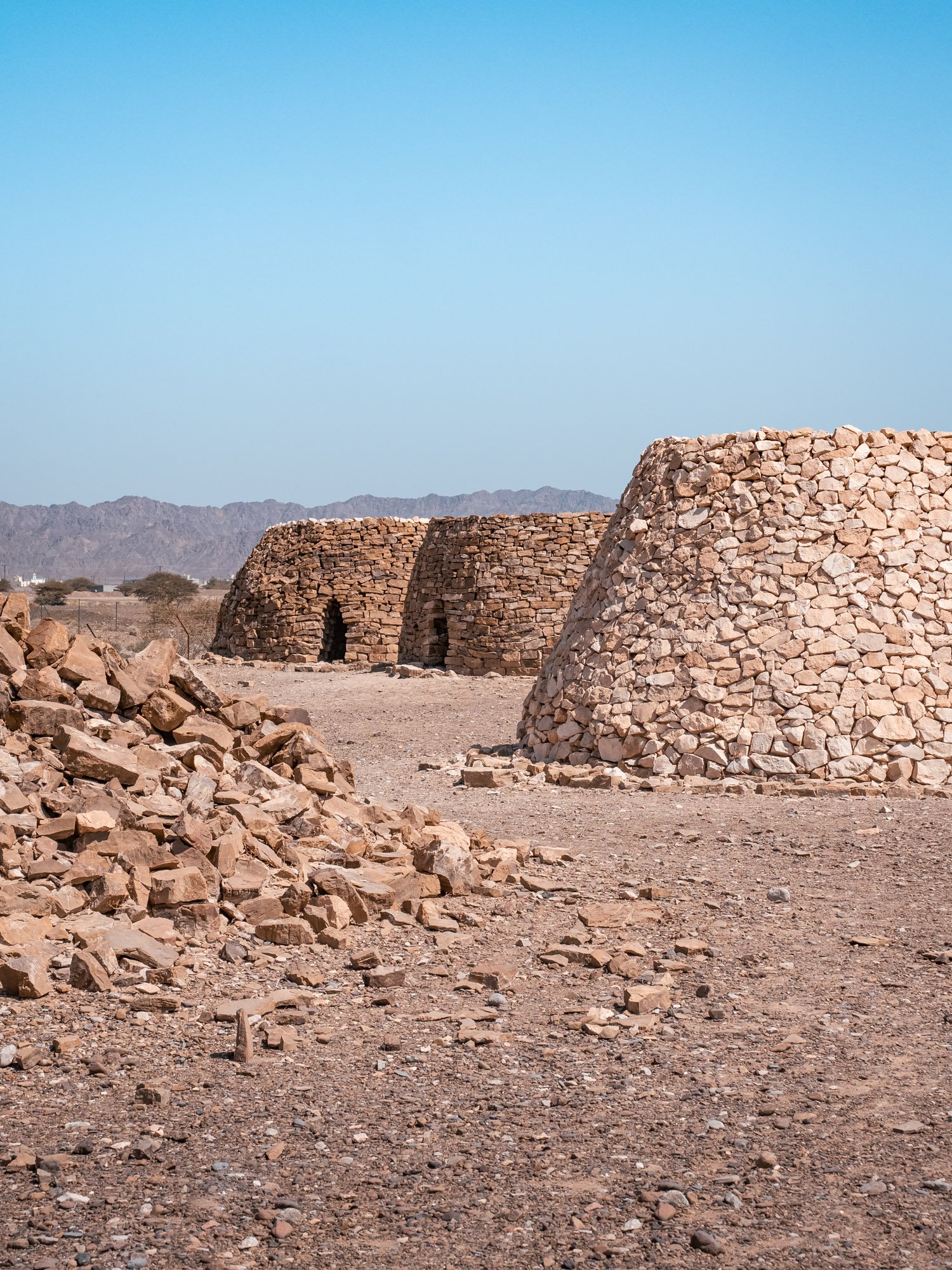
Beehive Tombs of Bat
Our first stop were the Beehive tombs of Bat, which are between 4000-5000 years old.
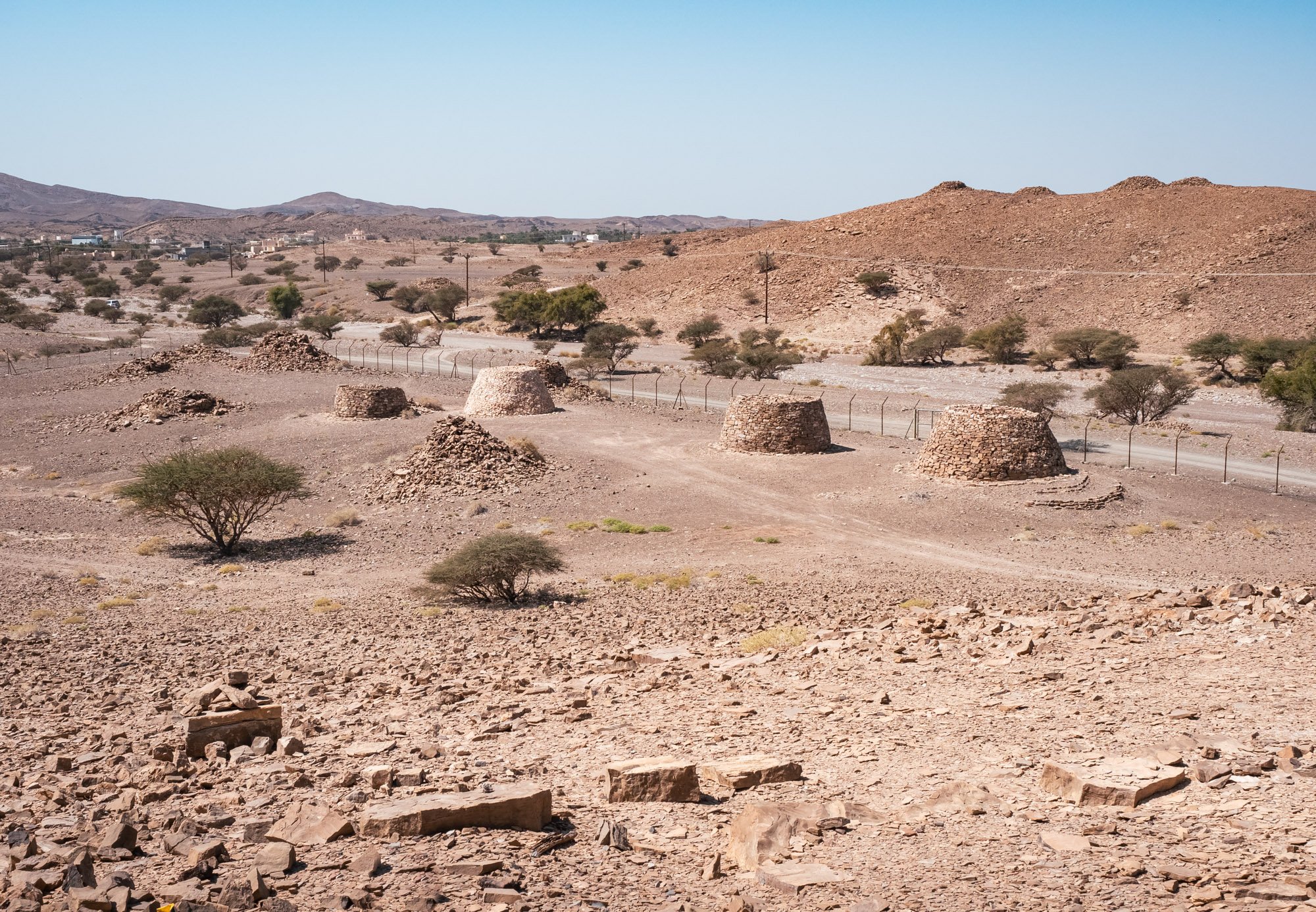
Unesco World Heritage Site
Together with their sister sites in the same region, they form one of the largest protohistoric necropoleis in the world.
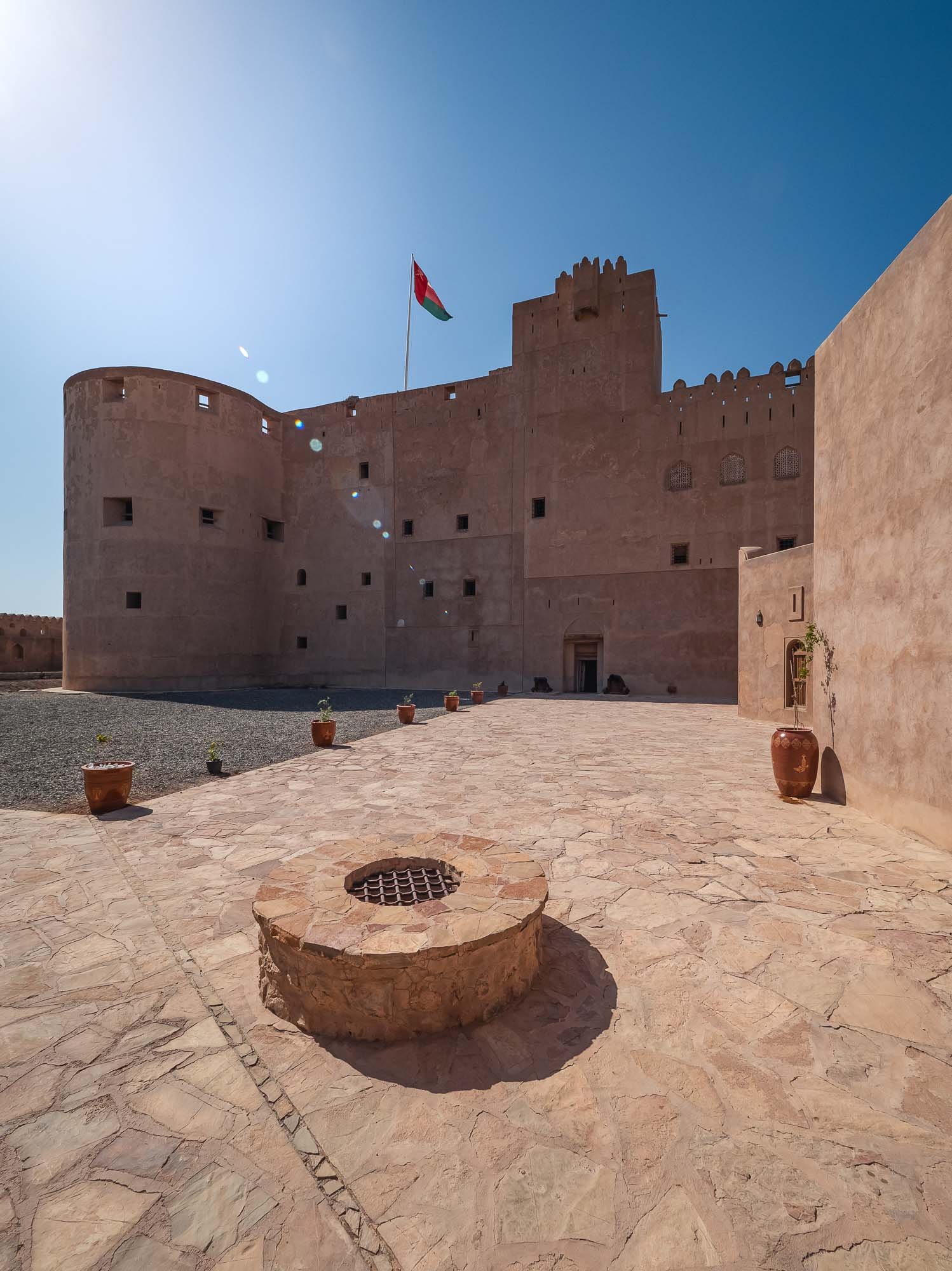
Jabreen Castle
A little further towards Nizwa awaits one of the many castles and forts in the region.
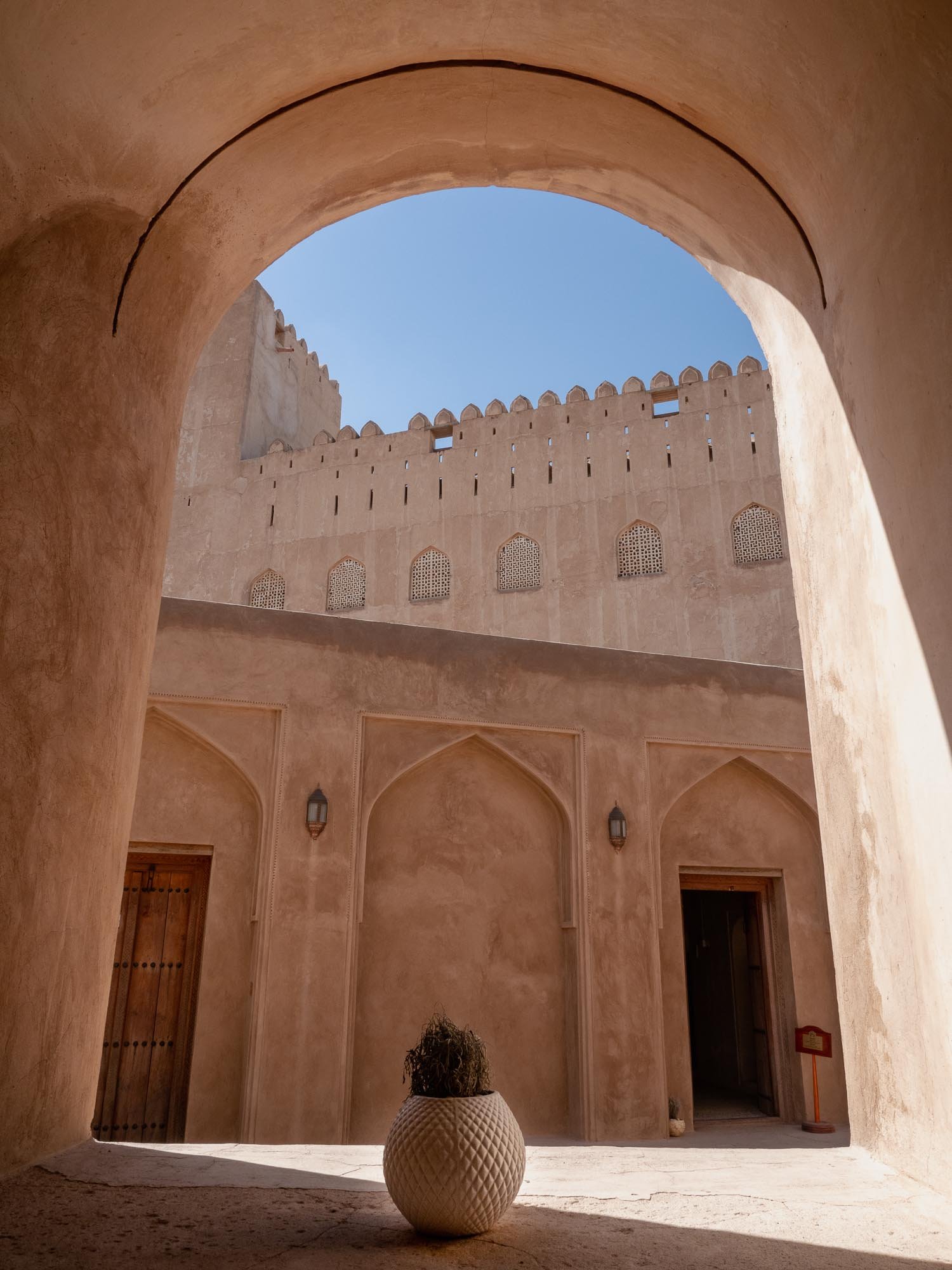
Shapes
This one was arguably my favourite - which says a lot, given the number of forts and castles on this route.
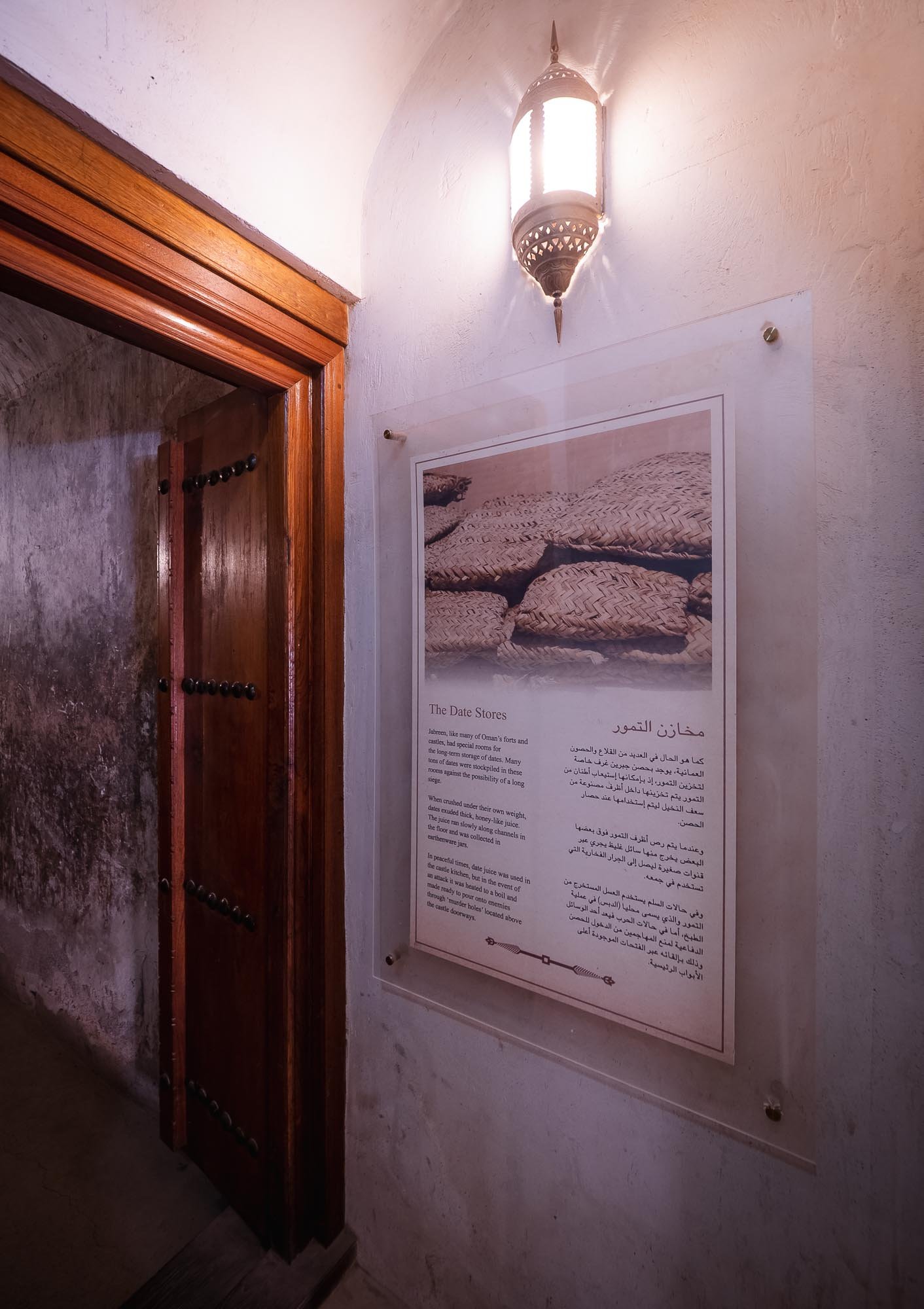
Date Storage
... along with some interesting uses in war times. The castles and forts in Oman feature some clever defense mechanisms you will encounter when exploring them.
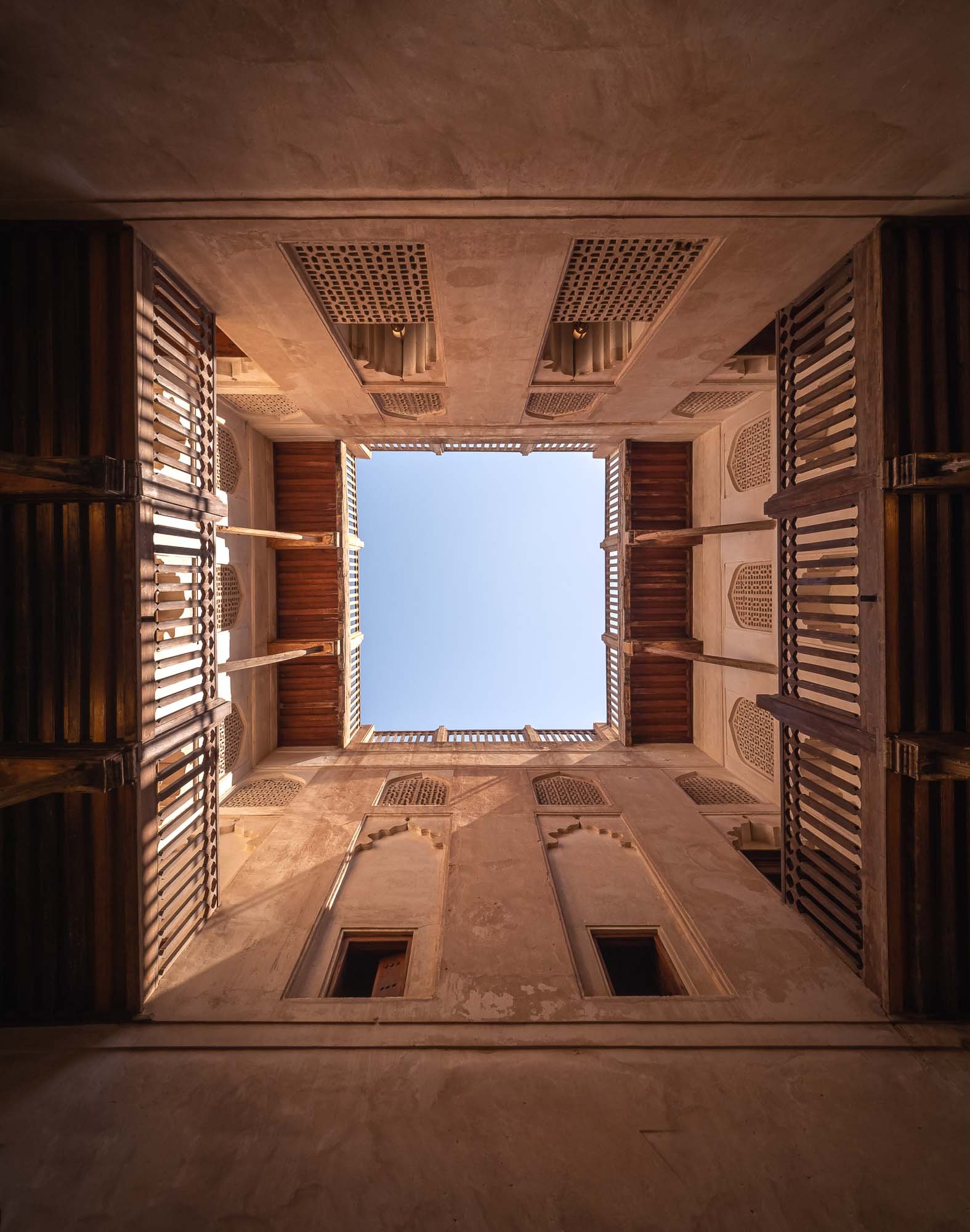
Courtyard
One of the two major courtyards in the castle - this one had its original wooden balconies restored.
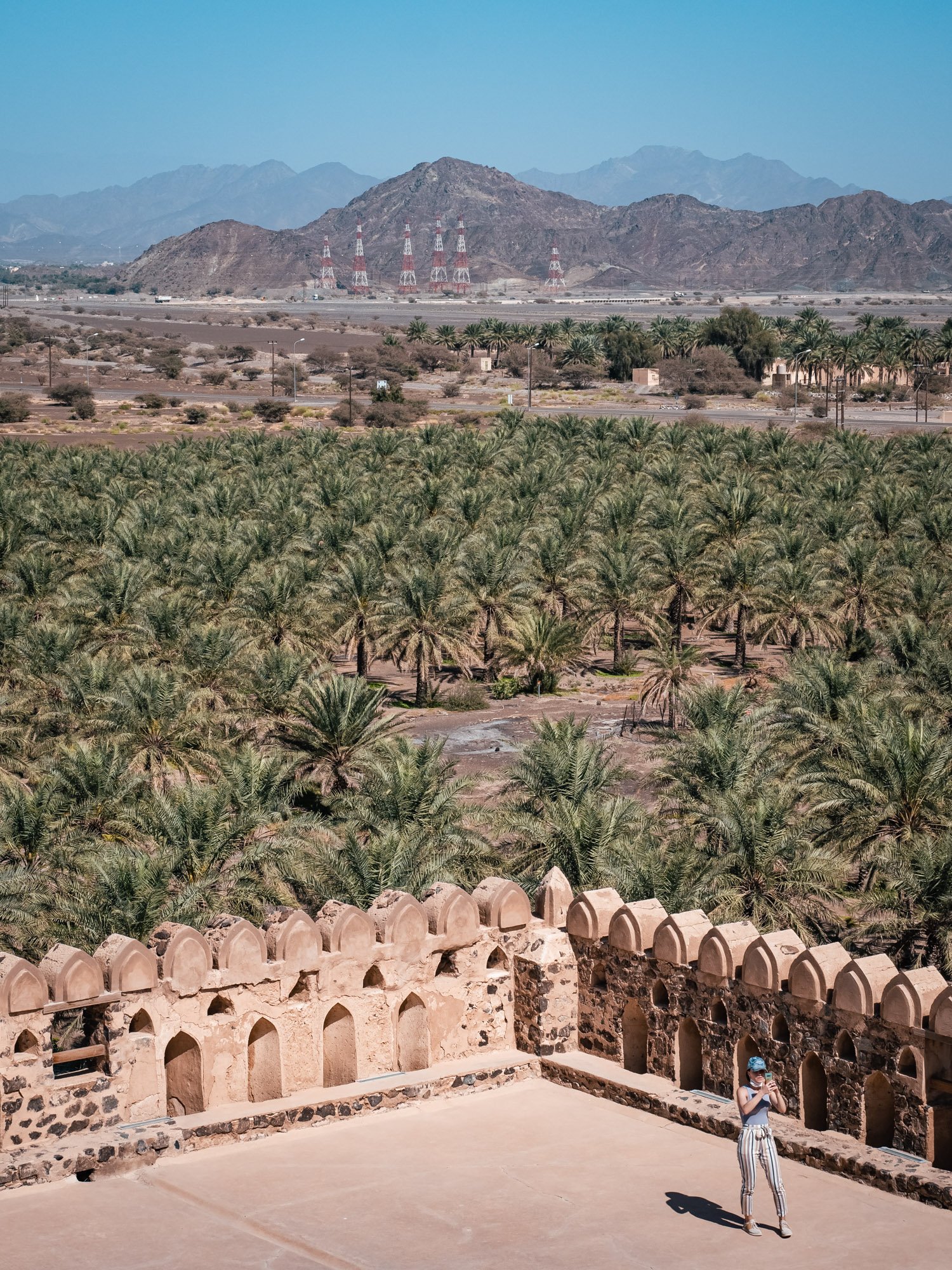
Green surroundings
As with most of the cities in this basin of the Hajar mountains, farms and date palms can be found everywhere.
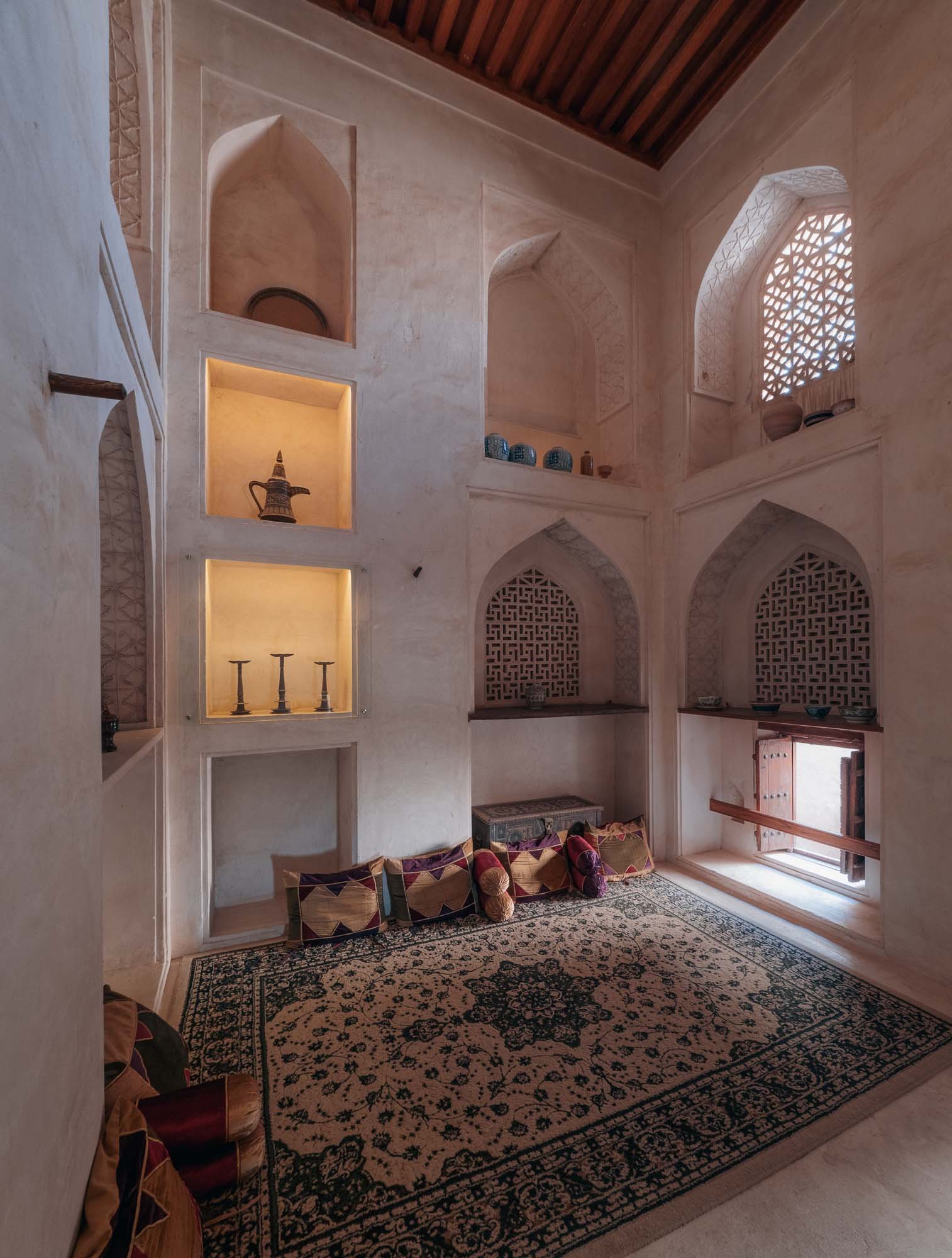
Interior
Some of the rooms have been restored and decorated.
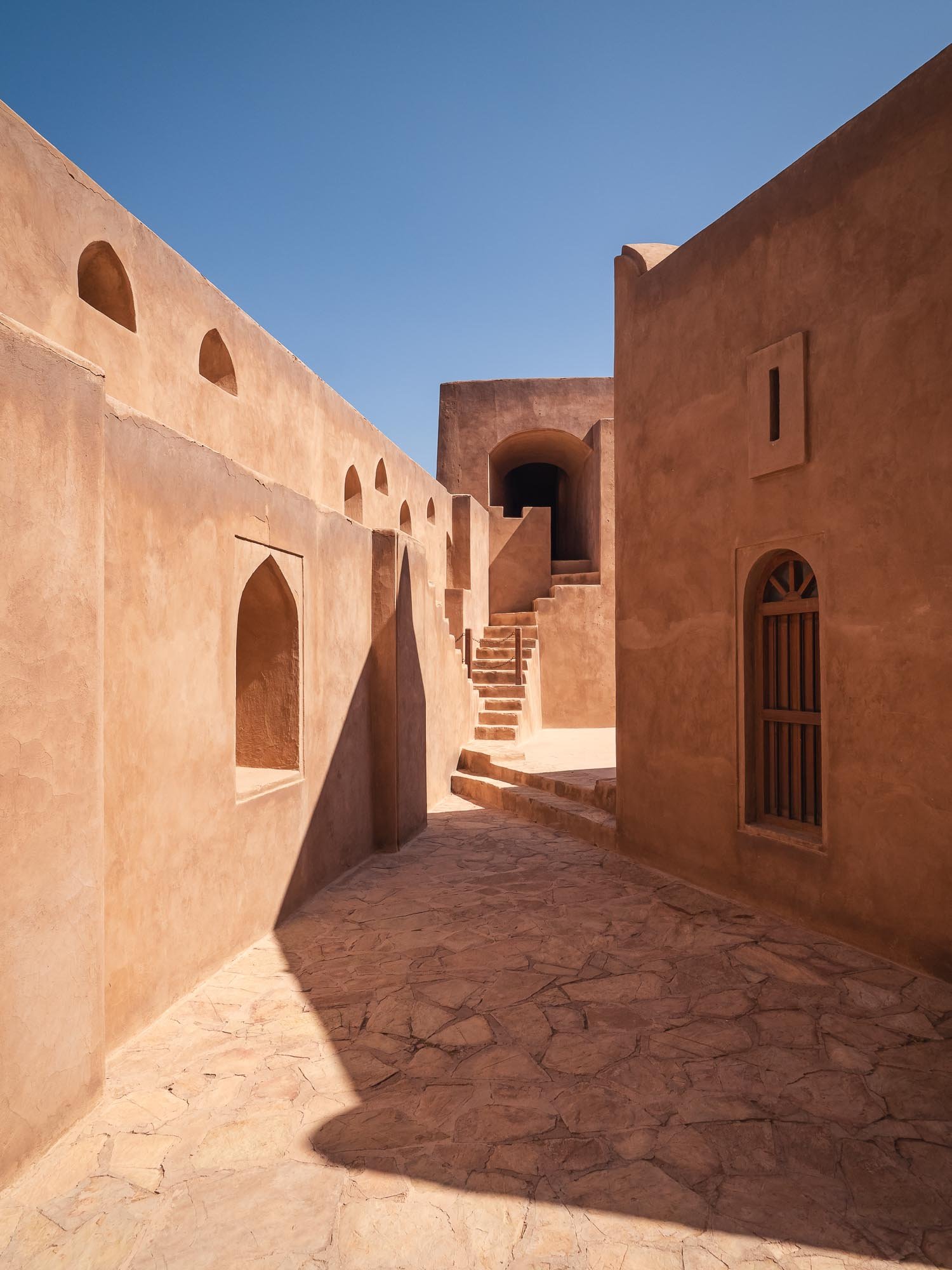
Warm Colours
hiding some of the cruel past of these forts.
Next up, we had planned to visit the ruins of Salut fort, another important archeological site in the area, but were disappointed to find it is currently closed and under development. Check before you go - and avoid getting a flat tire like we did.
Bahla Fort
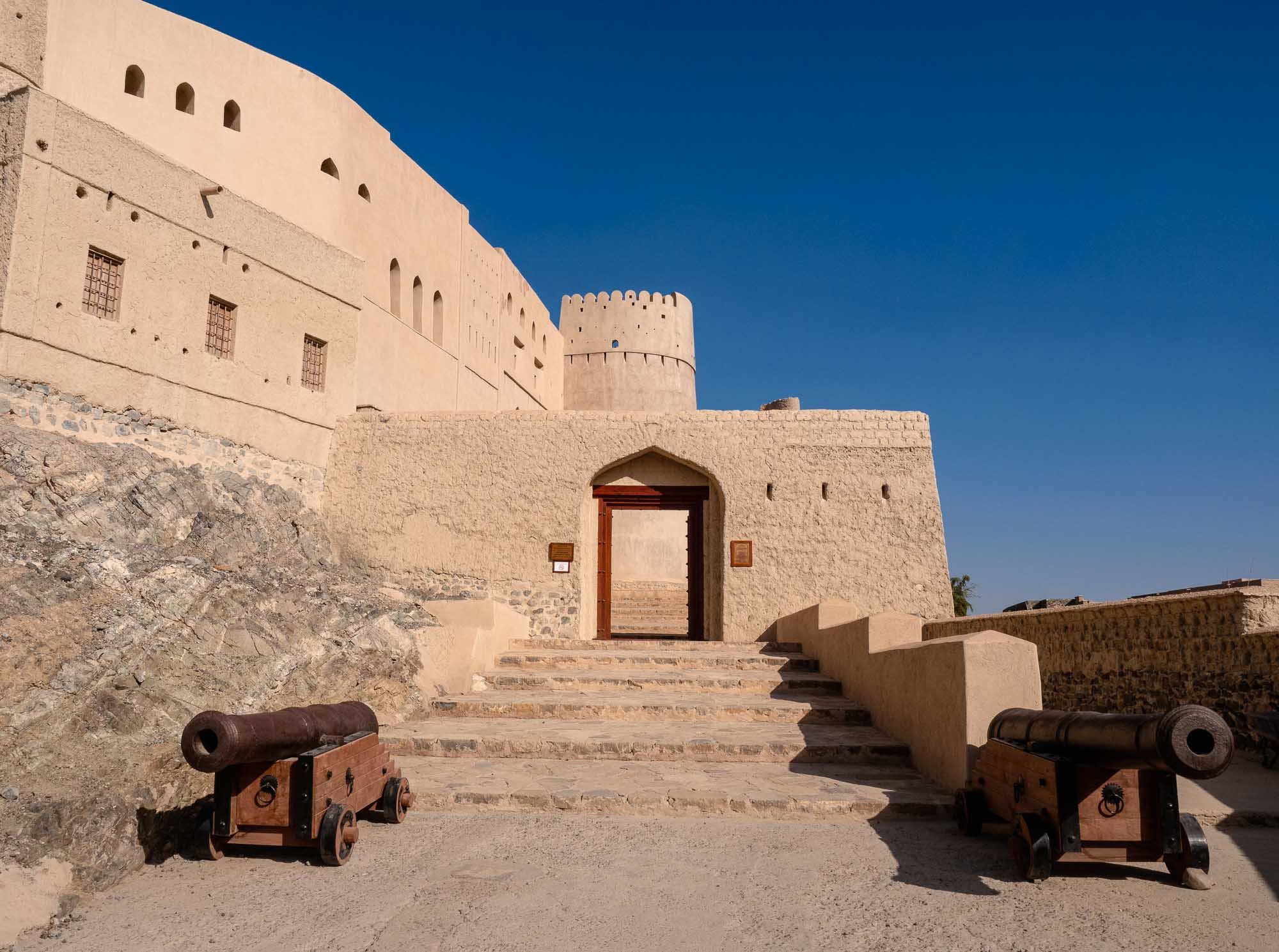
Bahla Fort
We then made it to Bahla Fort, the country's only UNESCO-listed fort, added in 1987.
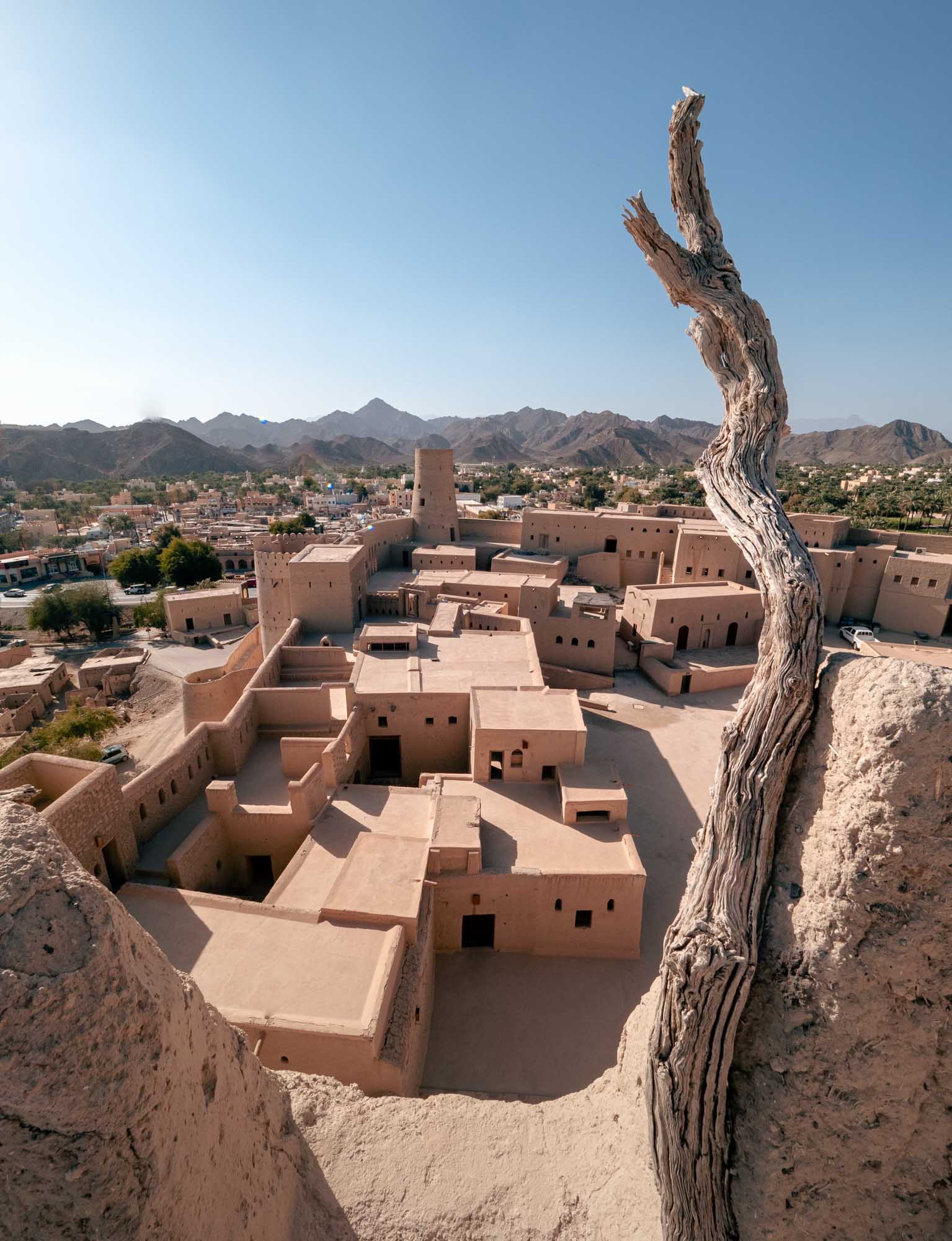
Haunted?
This fort is also the subject of many tales of djinns and black magic.
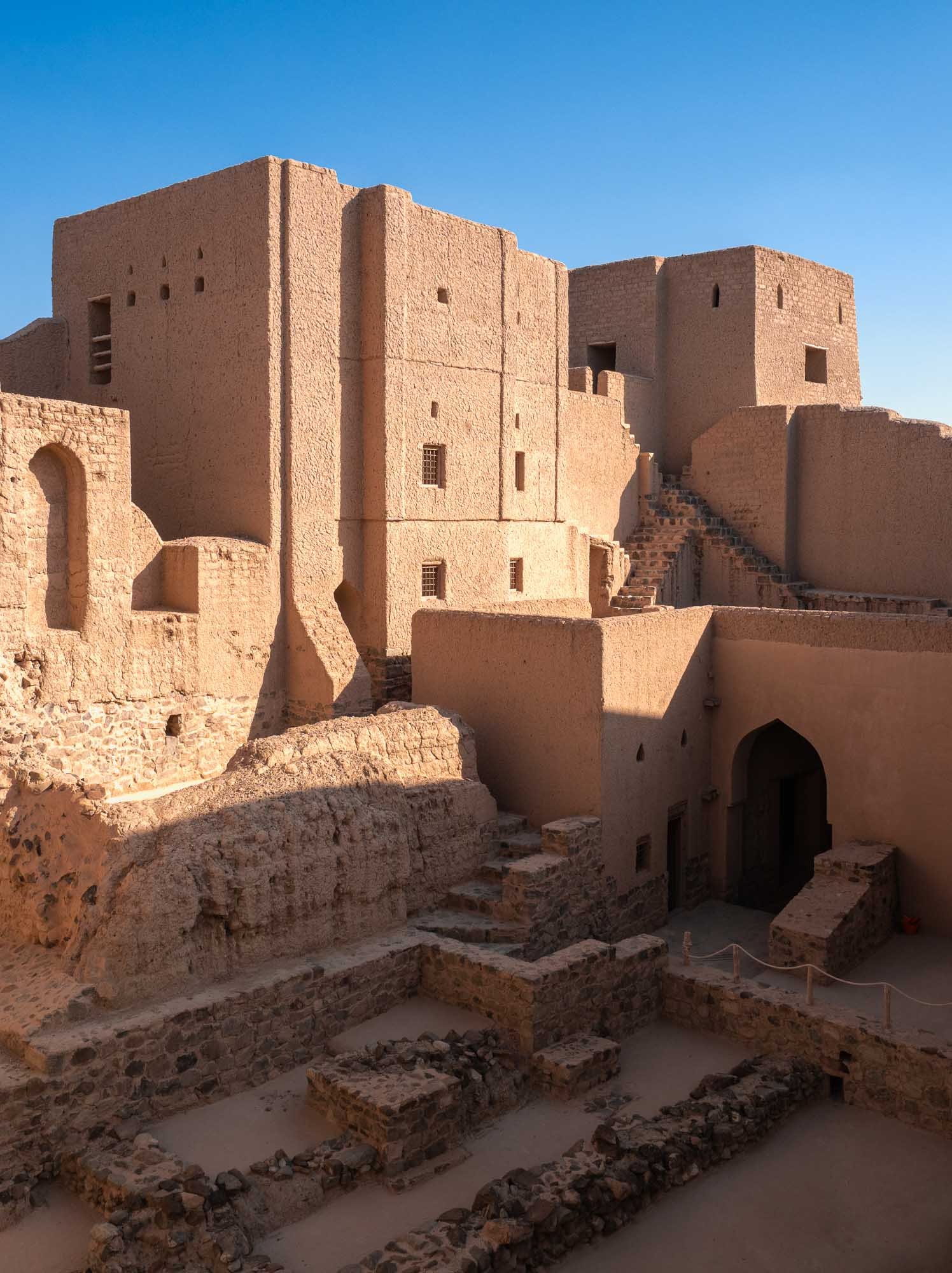
The Real World
We only encountered beautiful architecture and a cat though (not pictured).

Complex
The fort is part of a bigger settlement, including a 13km wall, pieces of which you can still spot in the mountains surrounding it.
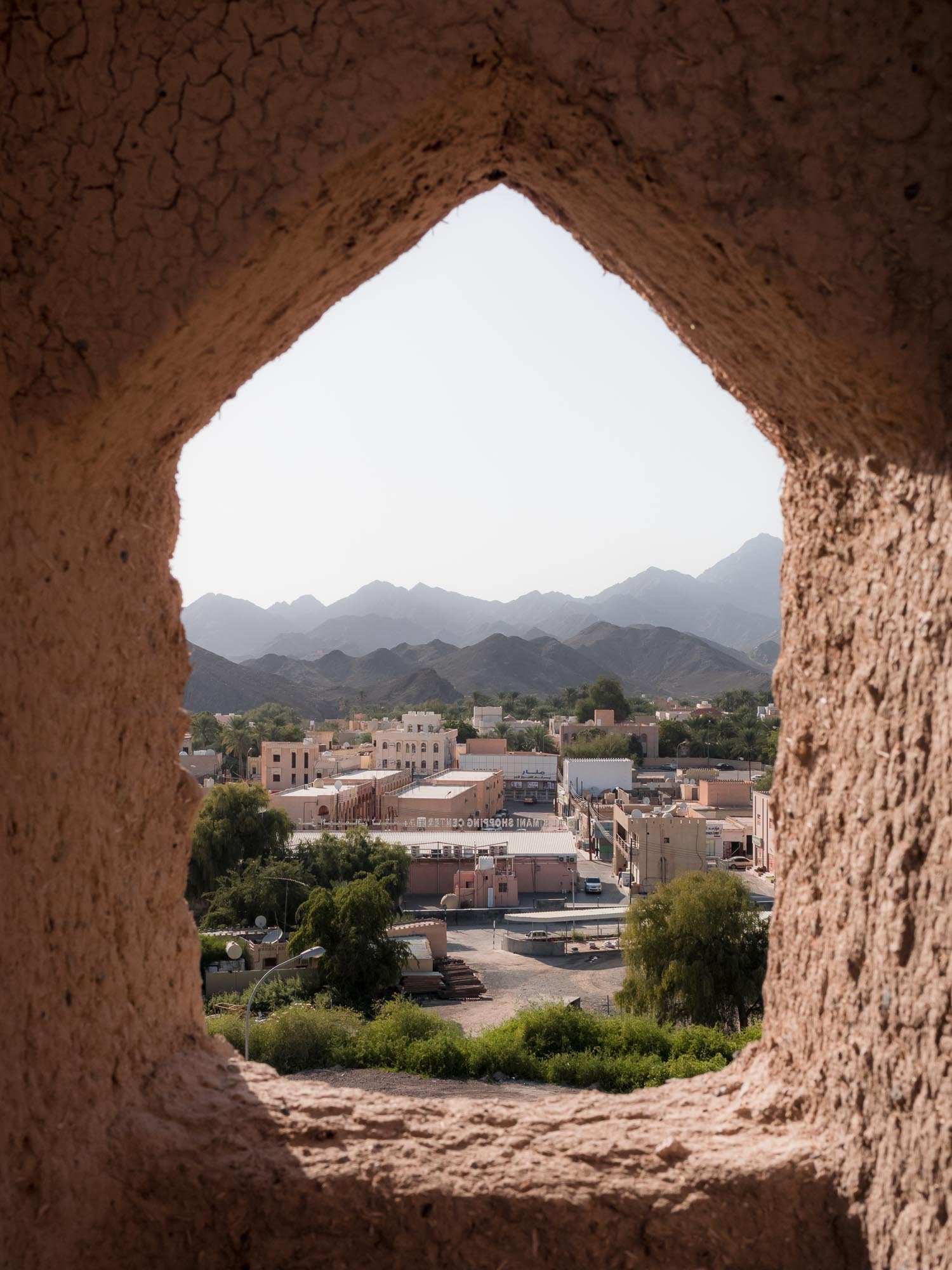
Views
As with all the forts in the area, this one also features beautiful Hajar mountain scenery from its windows.
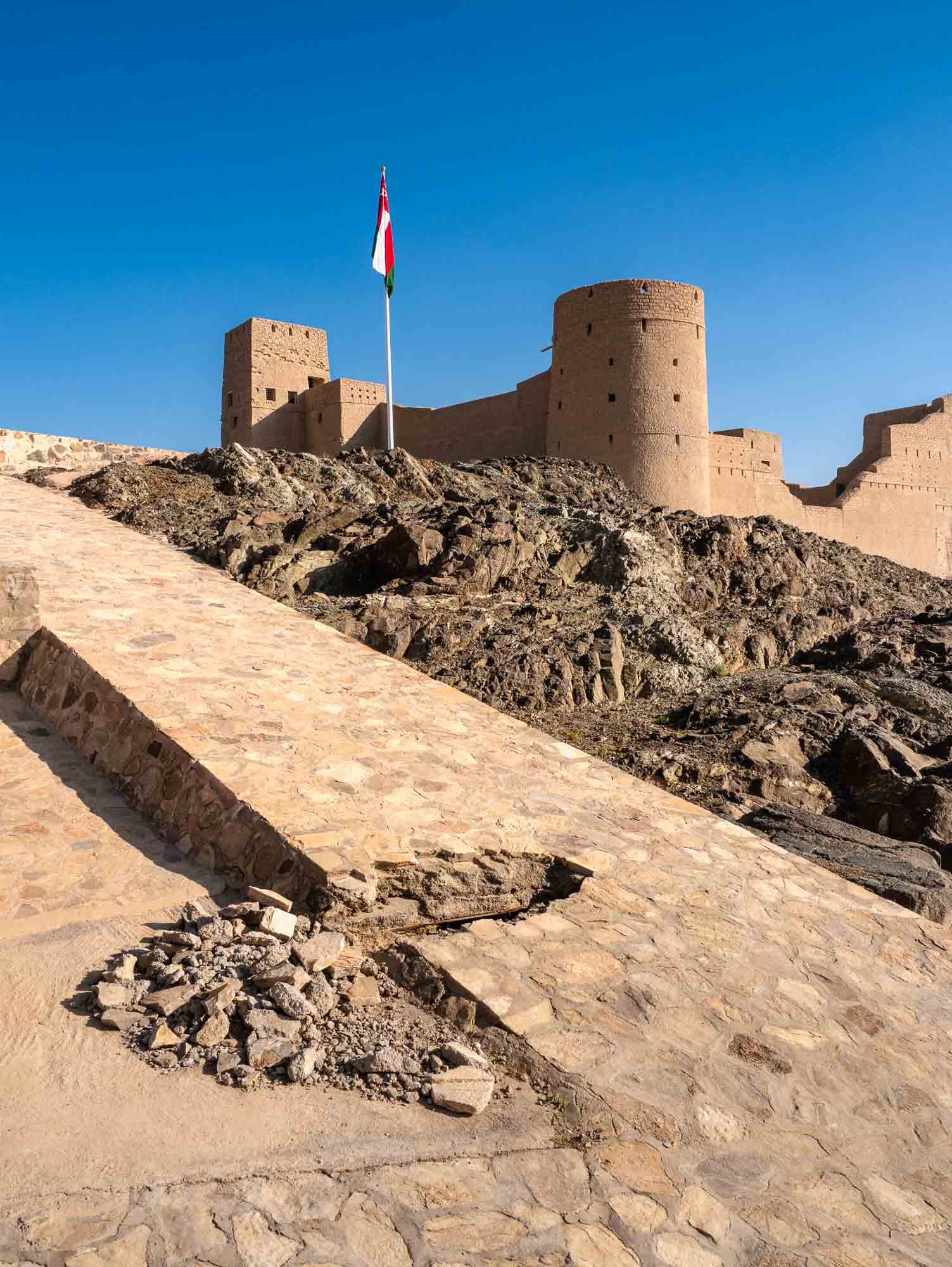
Restoration
The fort was fully restored in 2012, but there is not a lot of visitor information available, unlike in Jabreen or Nizwa.

From Prayer
A group of young local men returning from prayer and walking past the abandoned village area surrounding the fort.
Al Hoota Cave
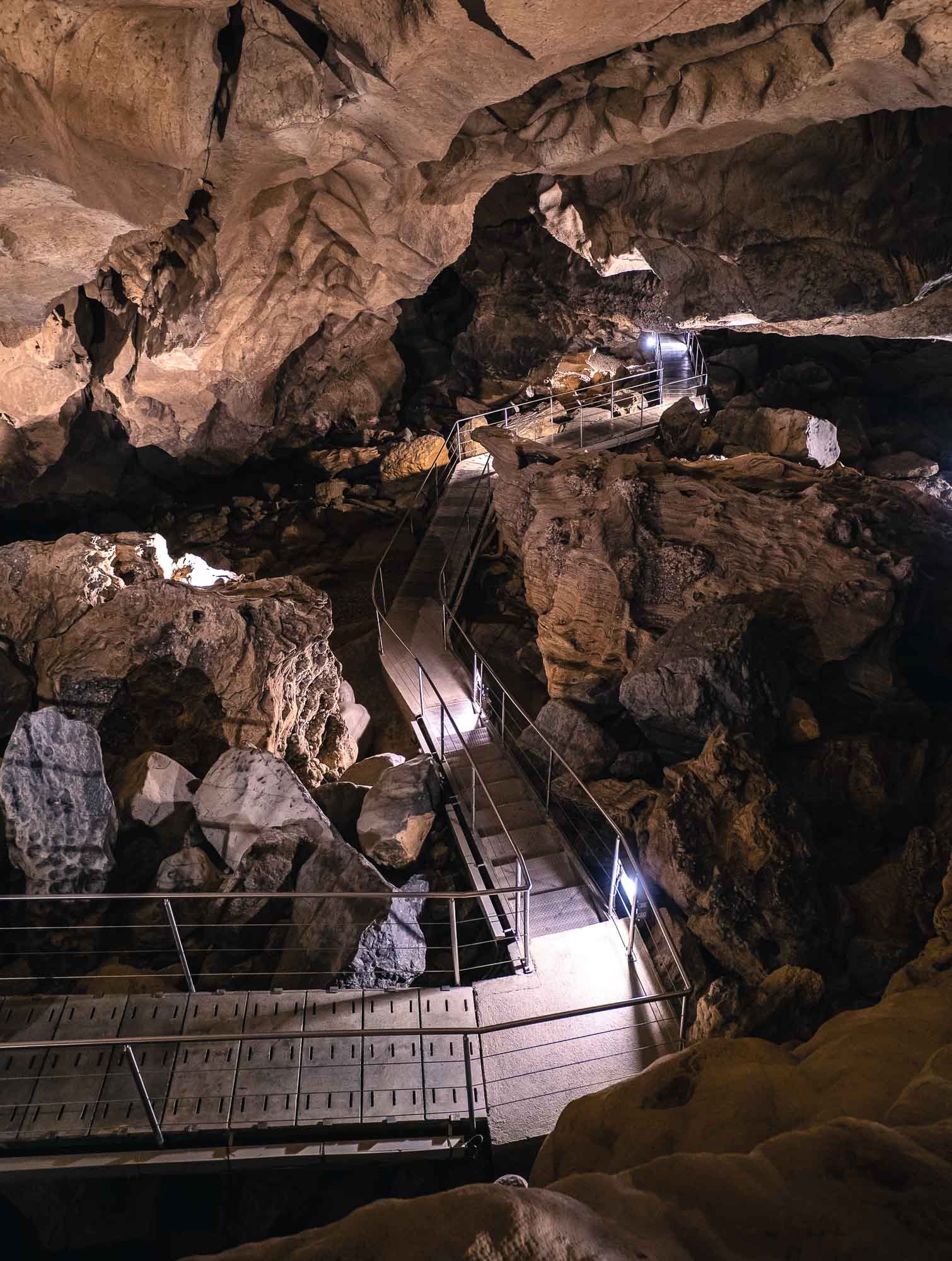
Hoota Cave
Another 30min further and you reach Hoota Cave, probably the most famous (of many) in Oman.
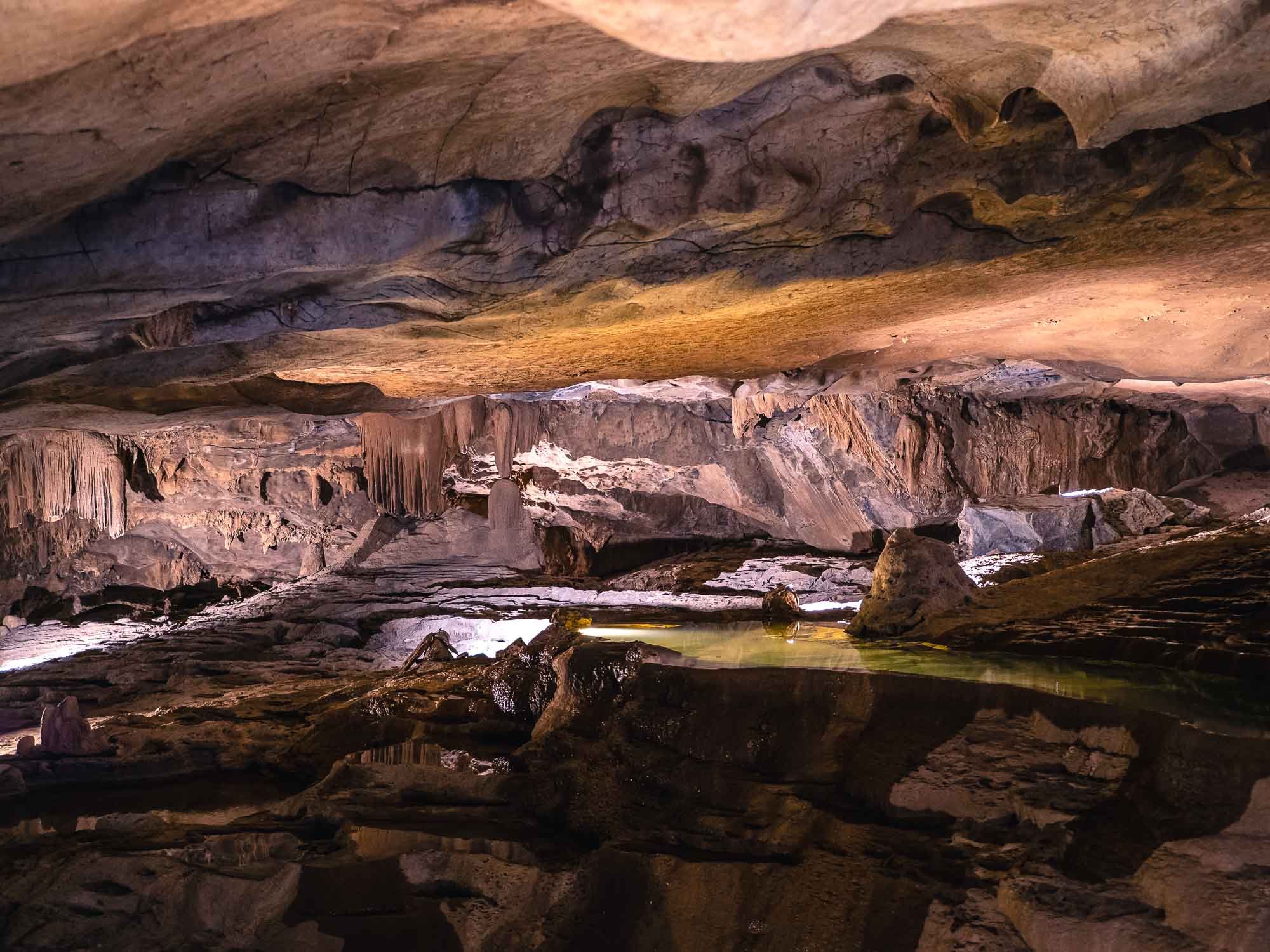
Accessible
It's the only cave in the country that has been developed for tourism, although you can only access 500m of its total 4km length.
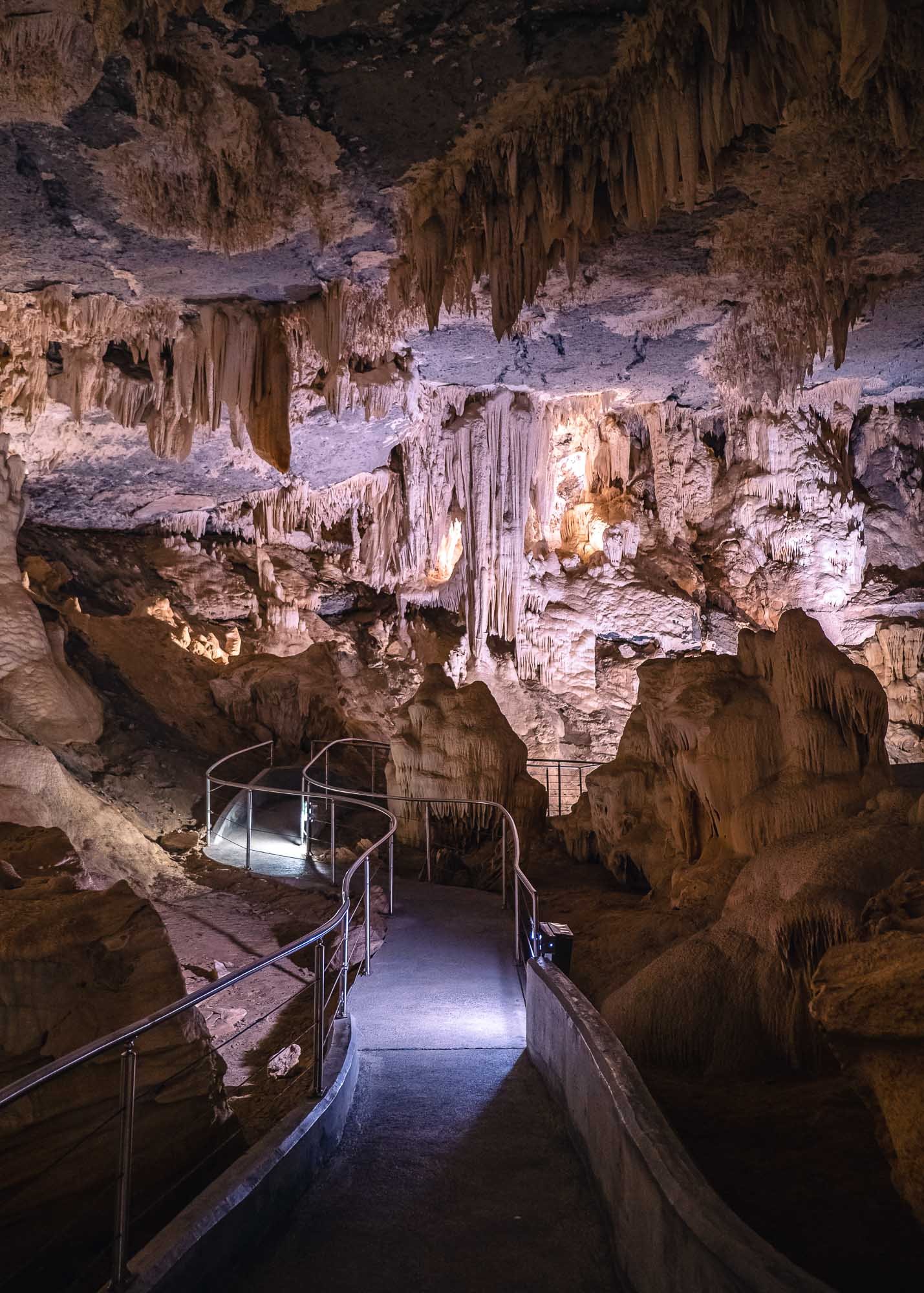
Impressions
The cave is a nice example of a Karst cave with some stalactites and stalagmites.
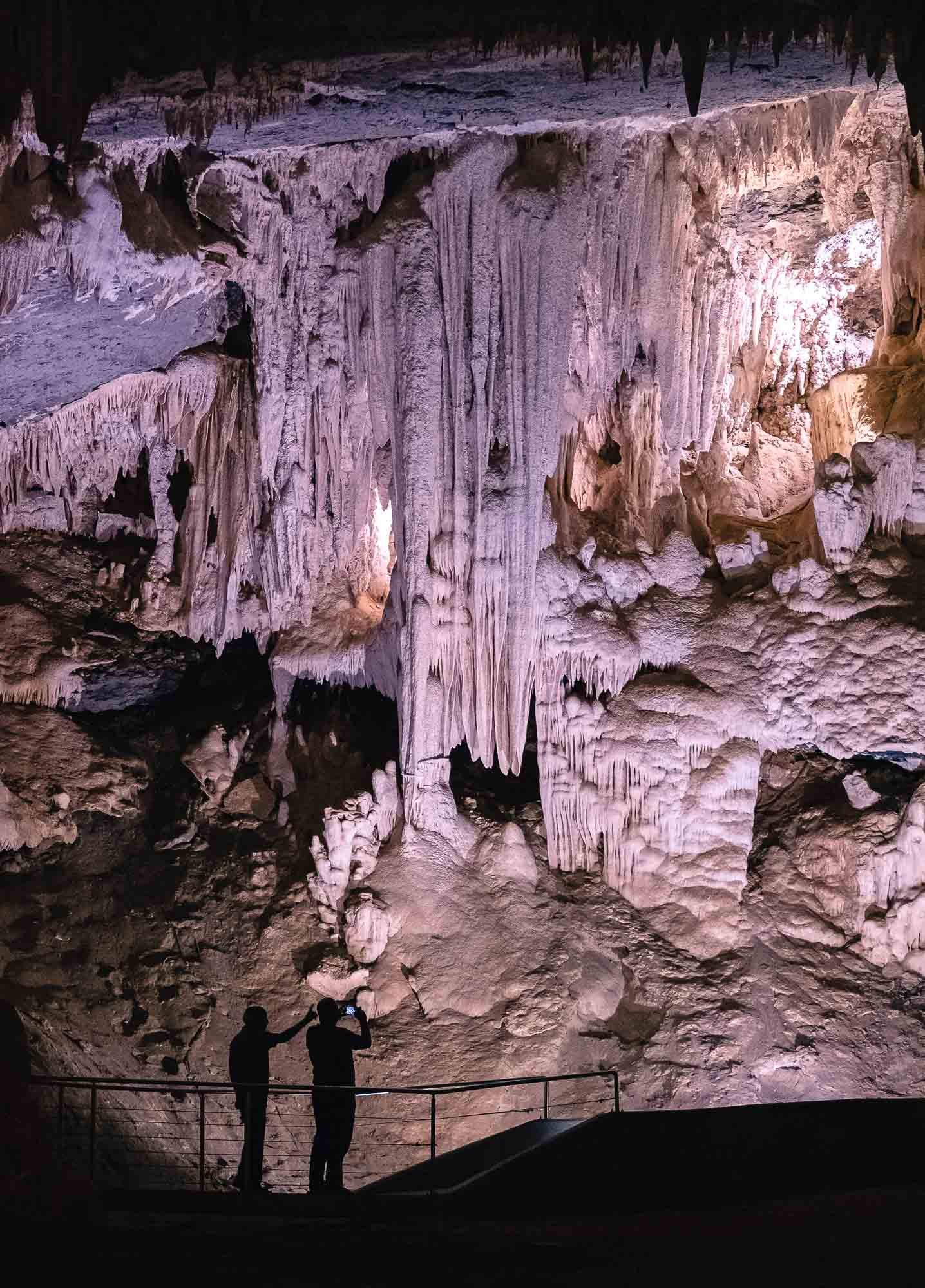
Comparison
Having said that, if you've visited some of the large and famous caves around the world, this one may not completely wow you - it's definitely worth the small detour on this route though.

Blind Fish
The cave features year round water, providing a habitat for tiny blind cave fish living in its 4 lakes, one of which is visible below.
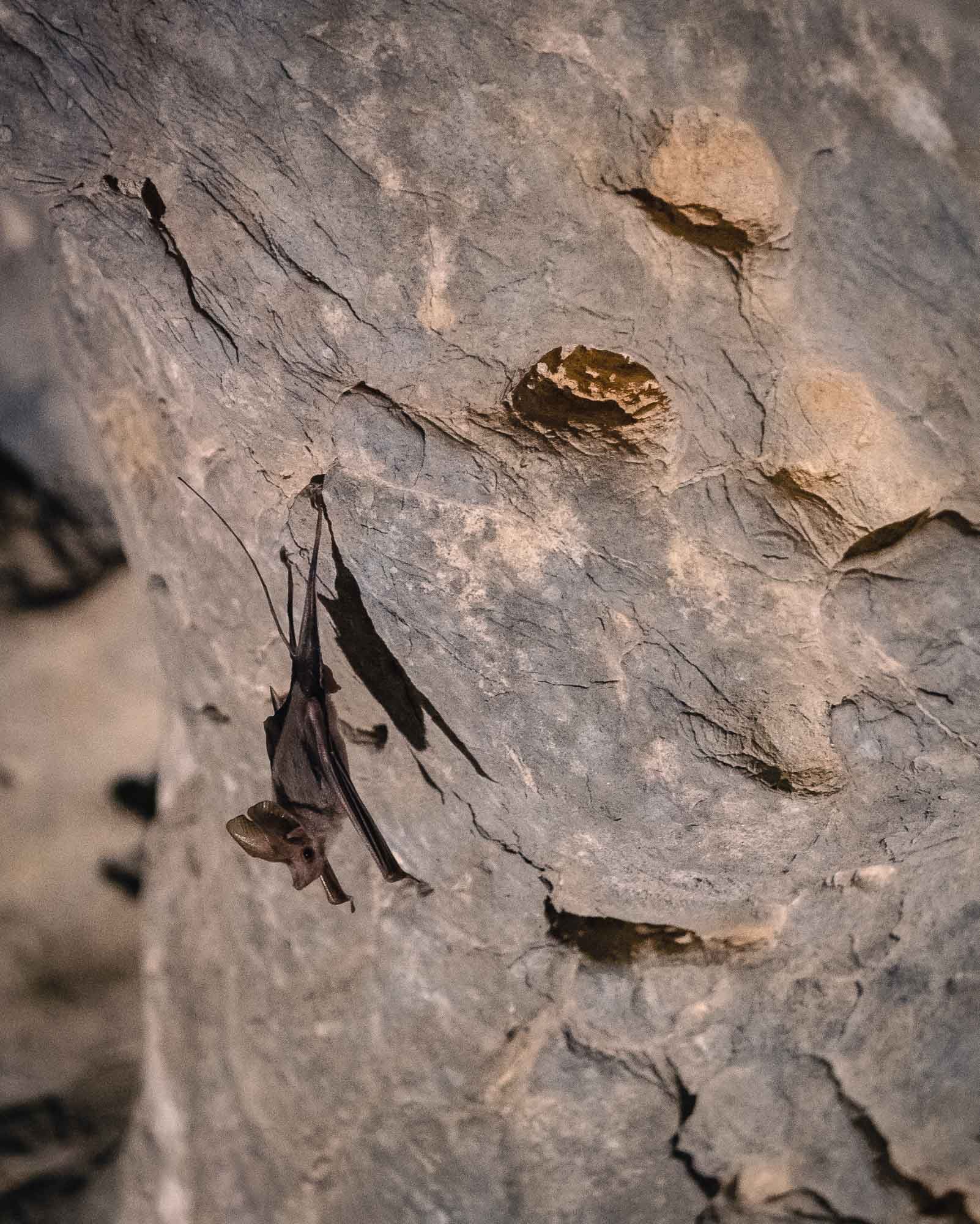
Chilling
...and you get to see some bats hanging from the ceiling.
Nizwa
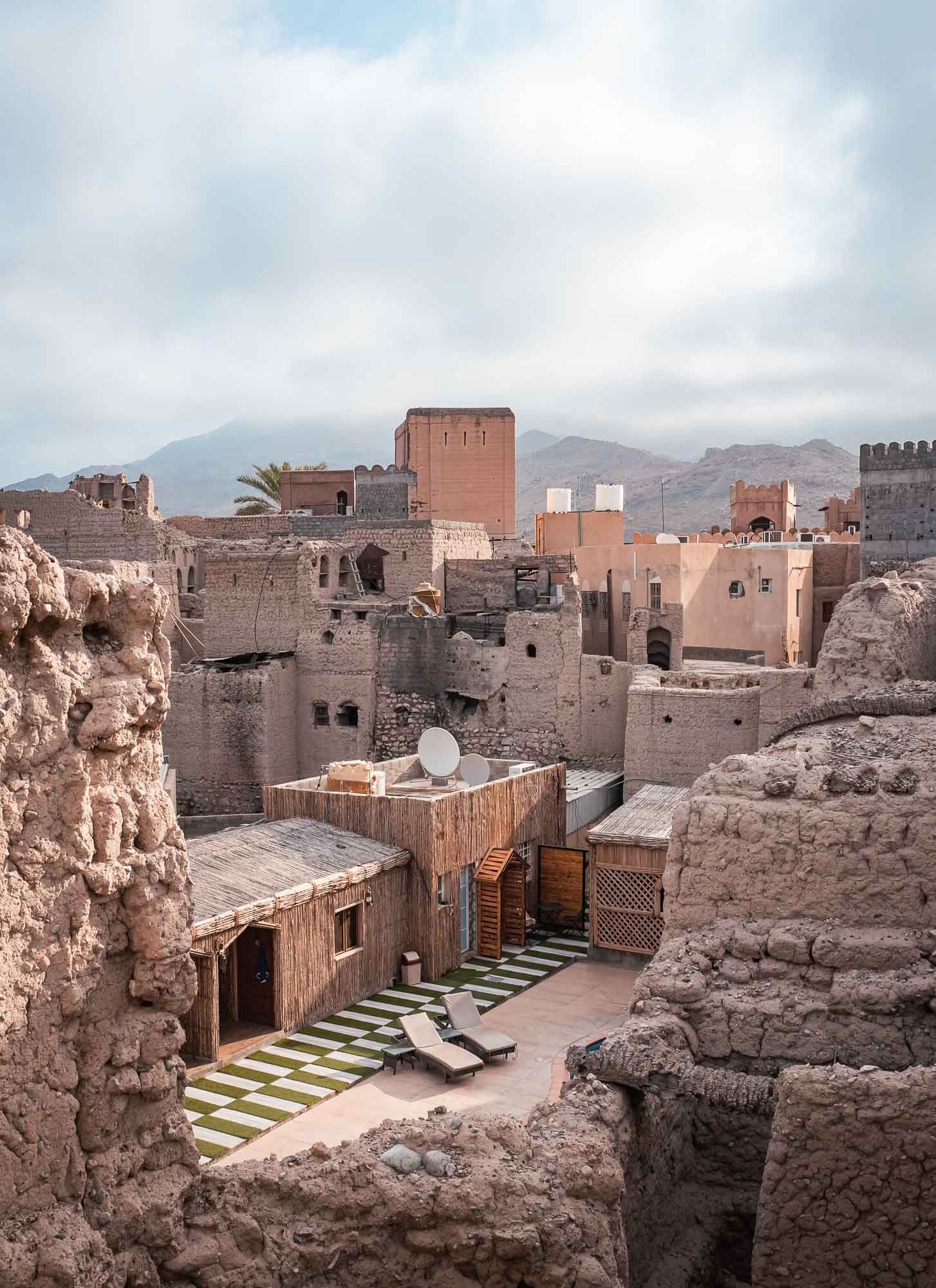
Views of Nizwa
The view from Antique Inn's rooftop in Nizwa, our place for the night.

Former Glory
Nizwa is one of the oldest cities in Oman and was the capital in the 6/7th century.
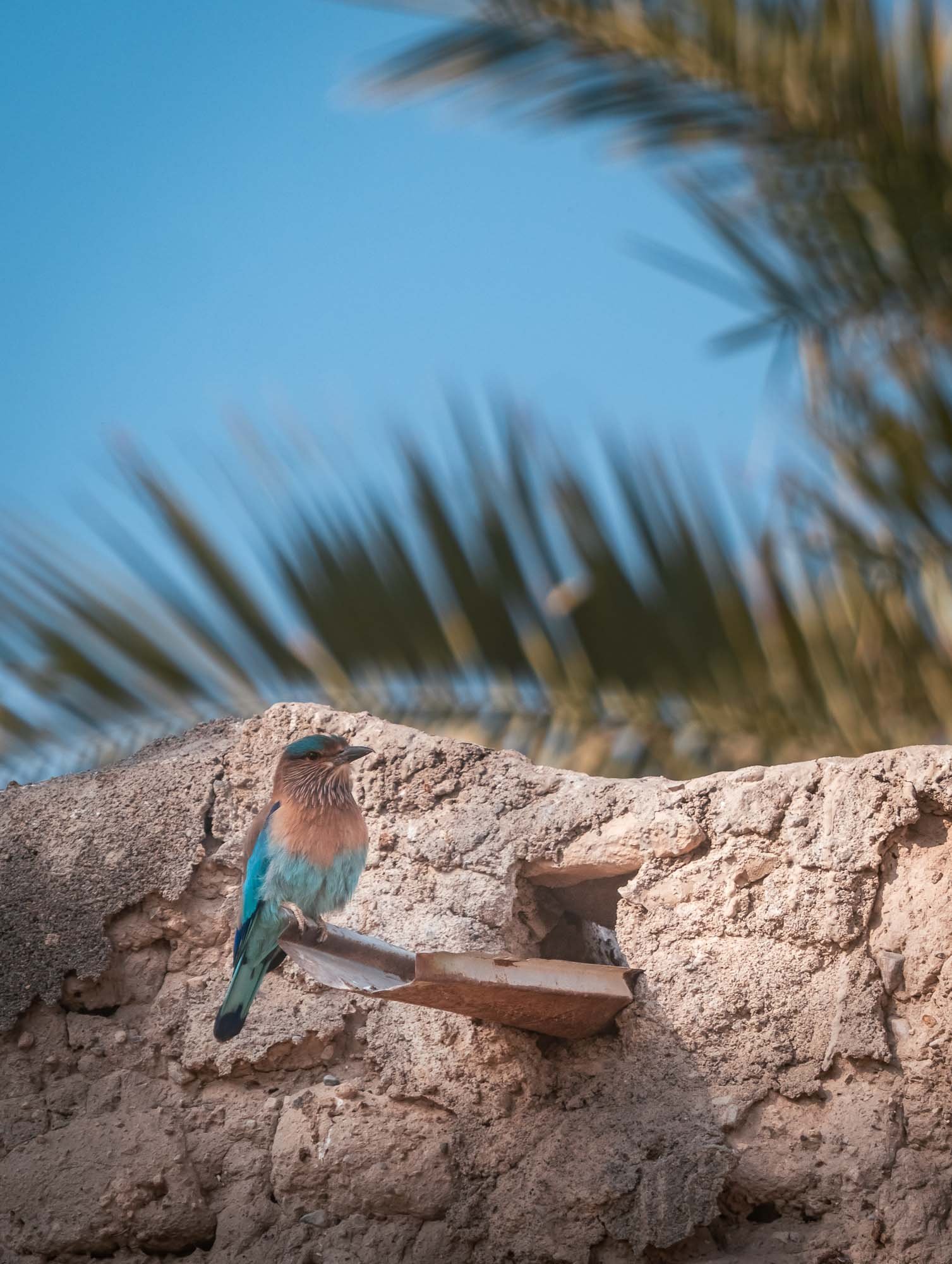
Indian Roller
A very common bird in this area around the farms. Particularly beautiful in flight when it spreads its blue wings.
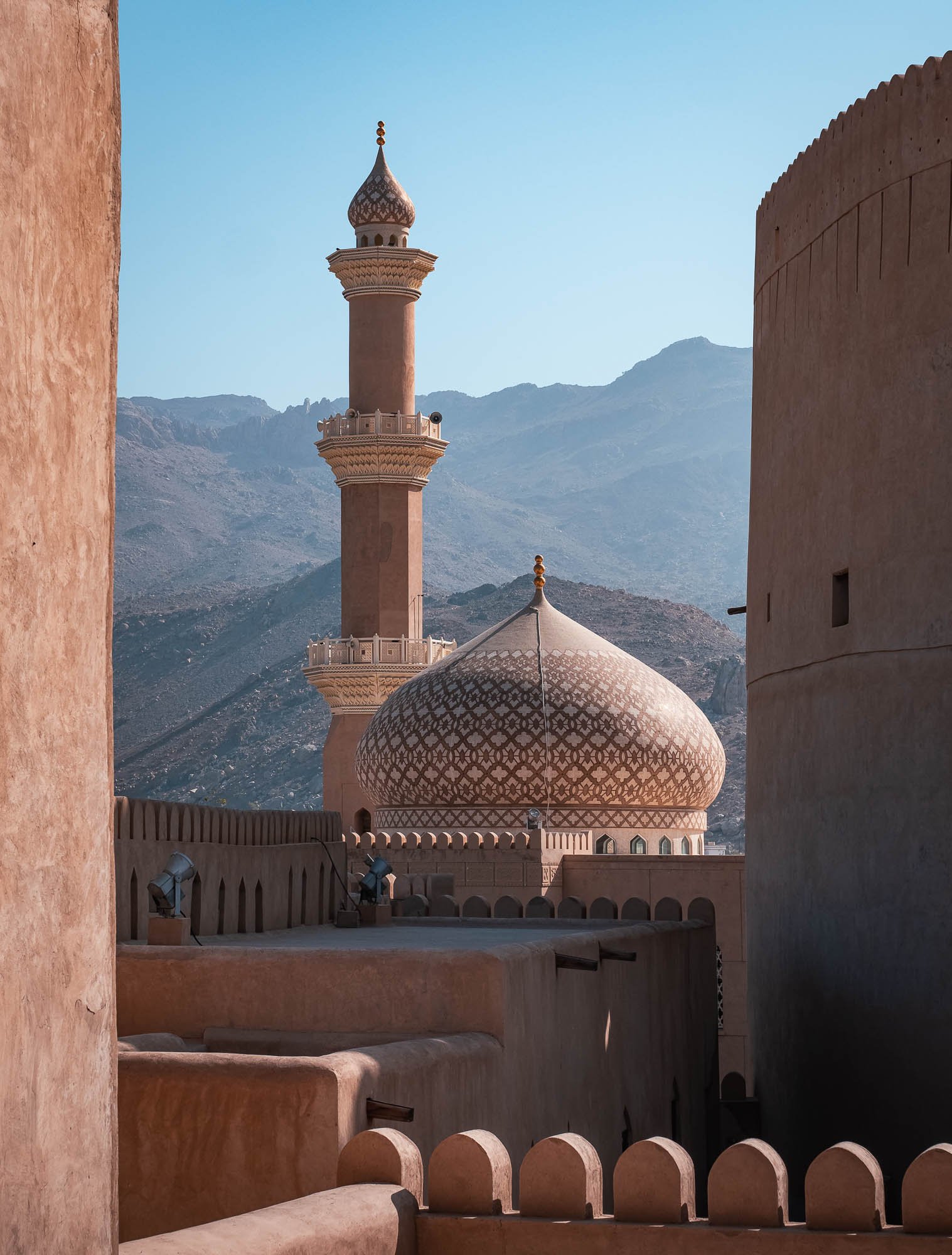
Al Qala'a Mosque
As seen from the fort. Nizwa features some of the oldest mosques in the world.

Fort Views
The fort was built in 1688, and sits above an underground stream.
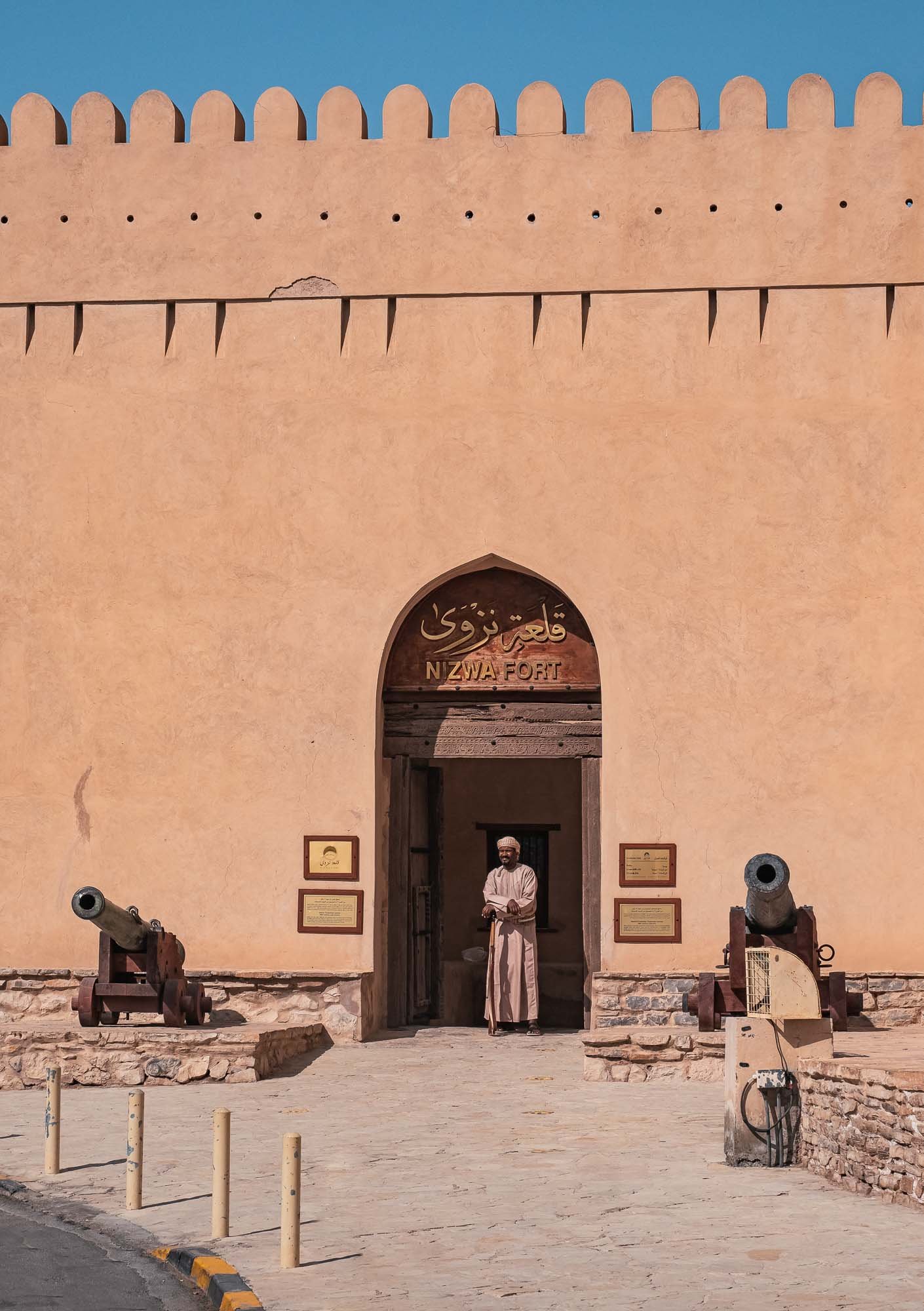
Entrance
The entrance to the fort, coincindentally guarded in this photo for that authentic flair.
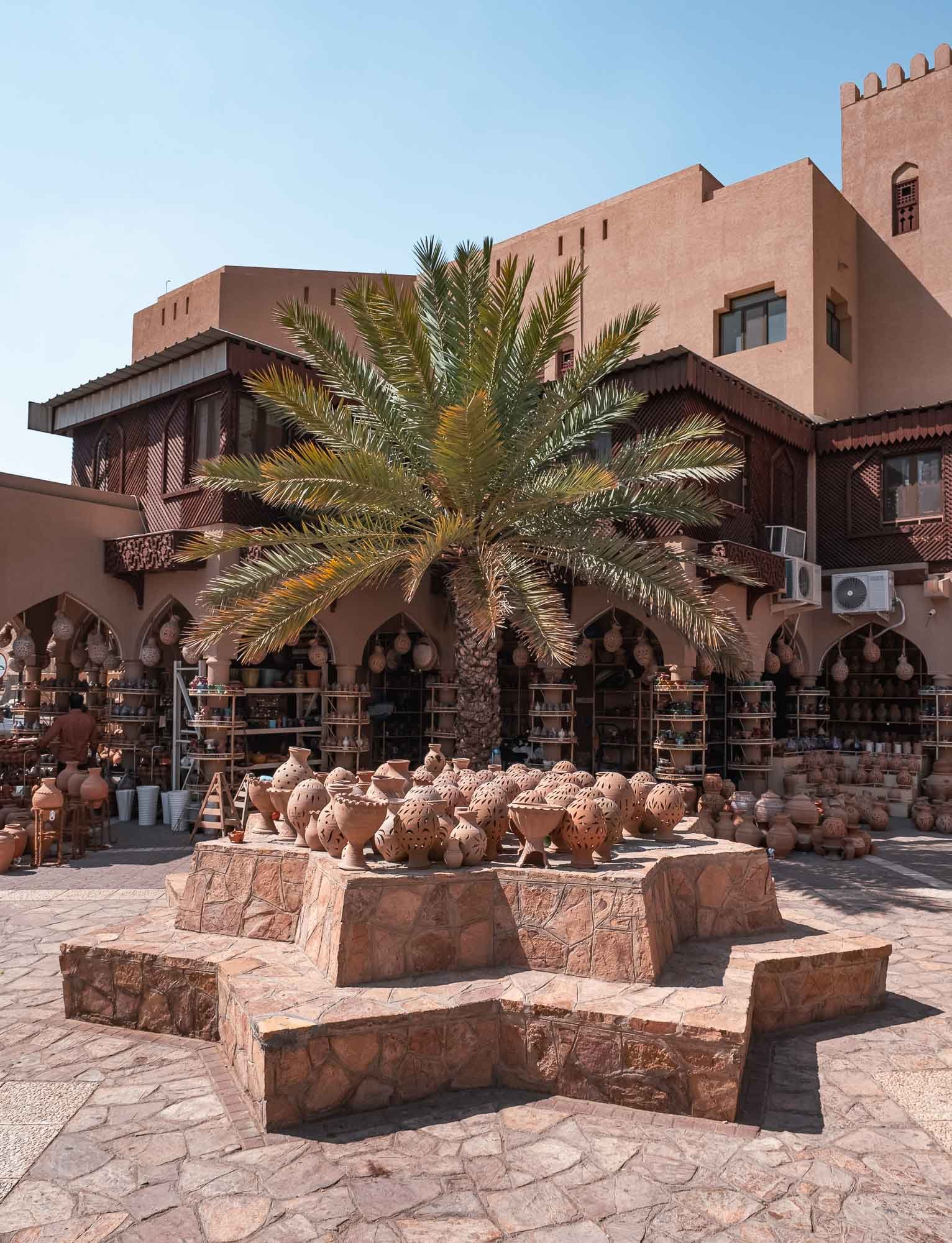
Nizwa Souq
The outside area near the entrance to the souq, selling pottery and other homeware goods.

Alleys
While it doesn't look it in this photo, Nizwa Souq is one of the most important and oldest in the country.
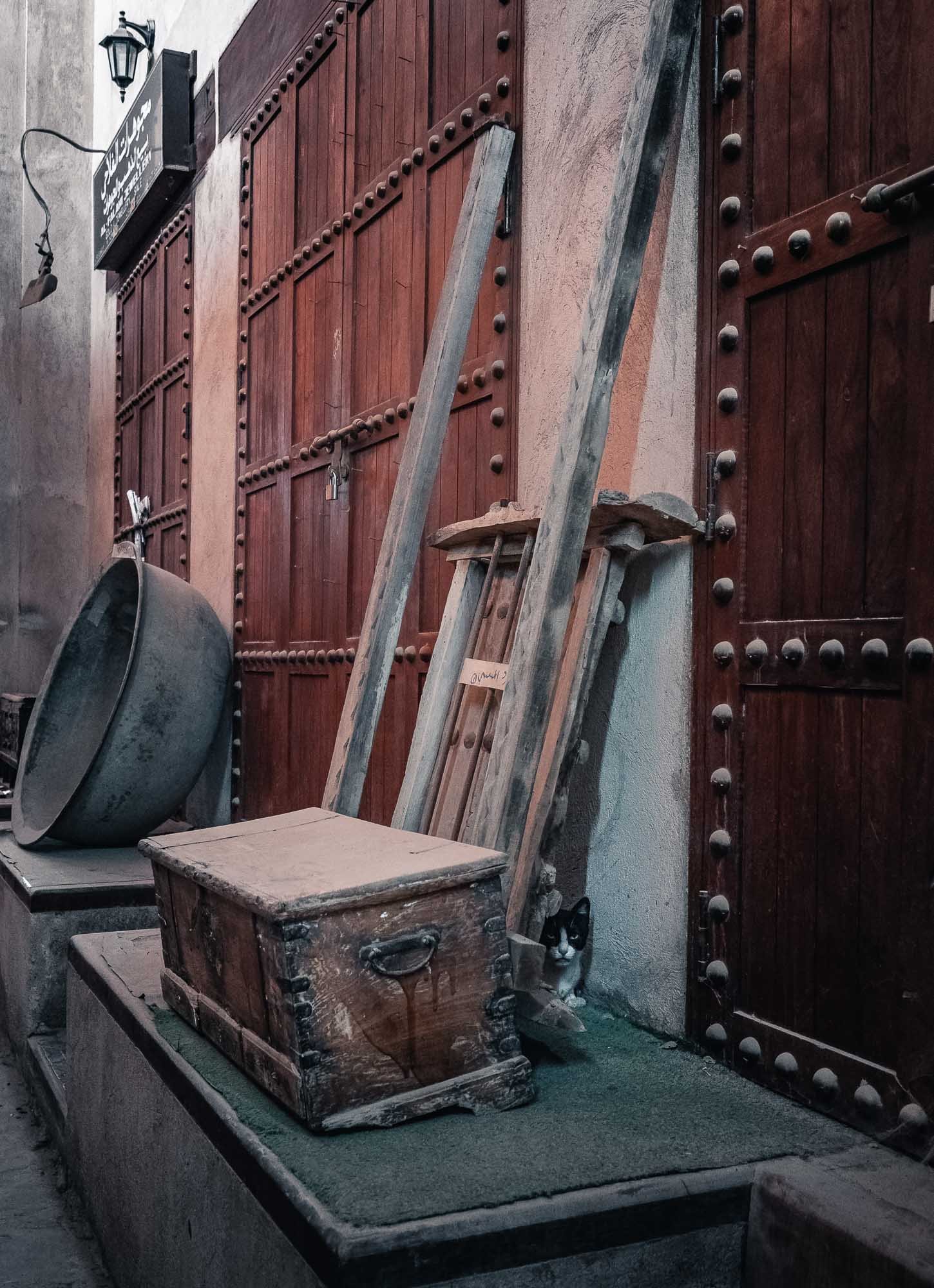
Salesman
During our visit, it was primarily occupied by this fellow.
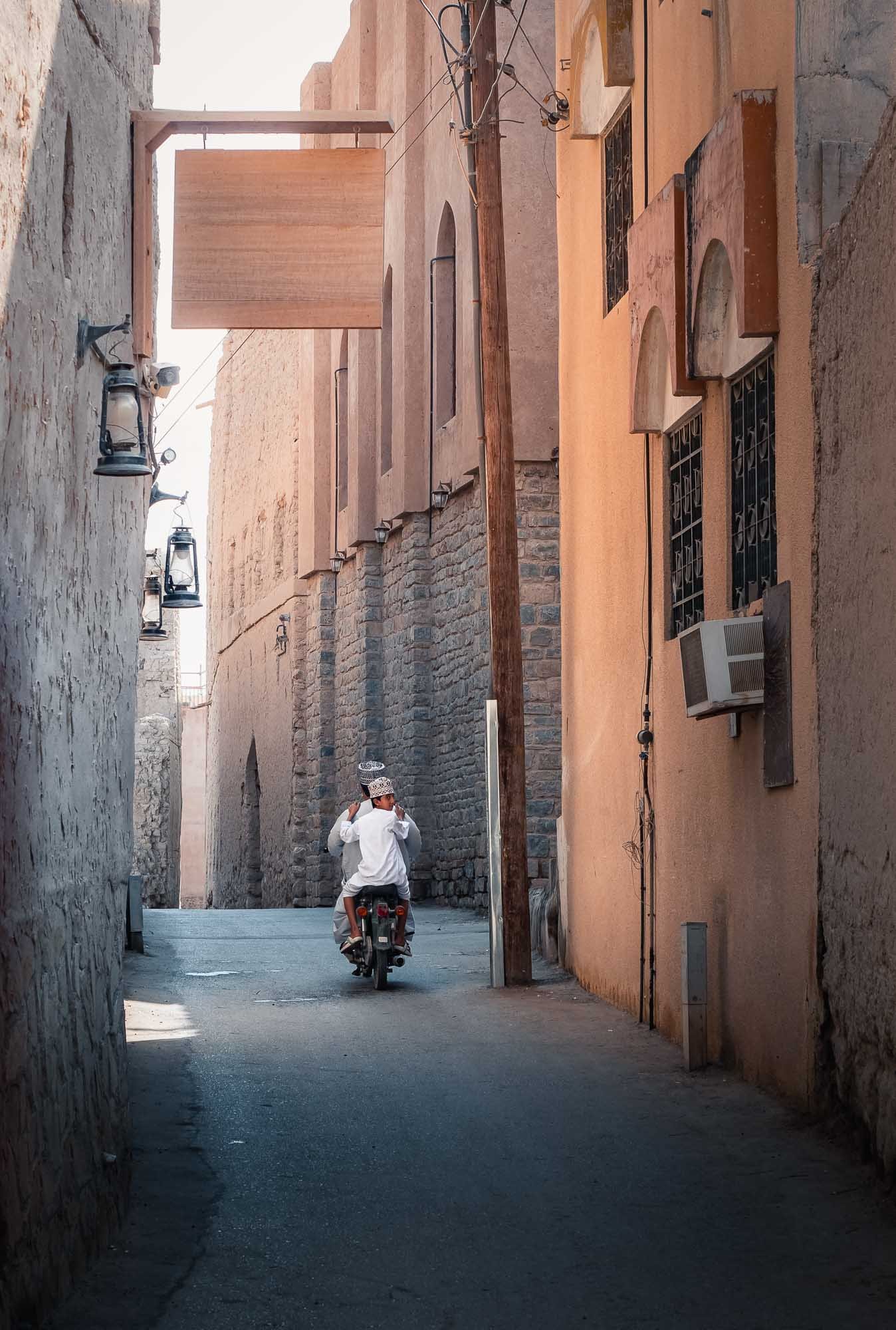
Transport
The small tight roads running through the old town are mainly accessible this way.
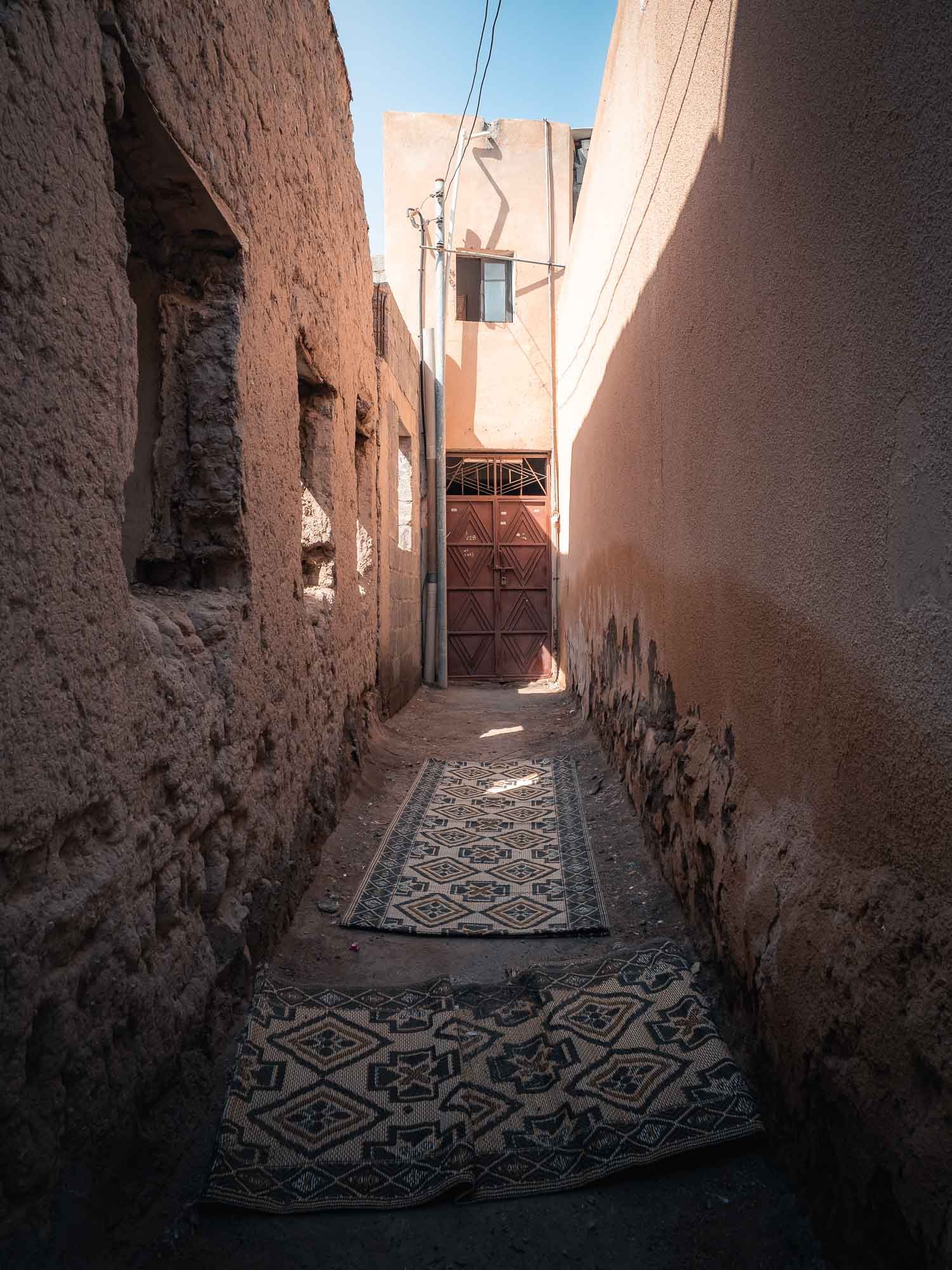
Old Town
While many of the houses are crumbling and abandoned, some are still occupied.
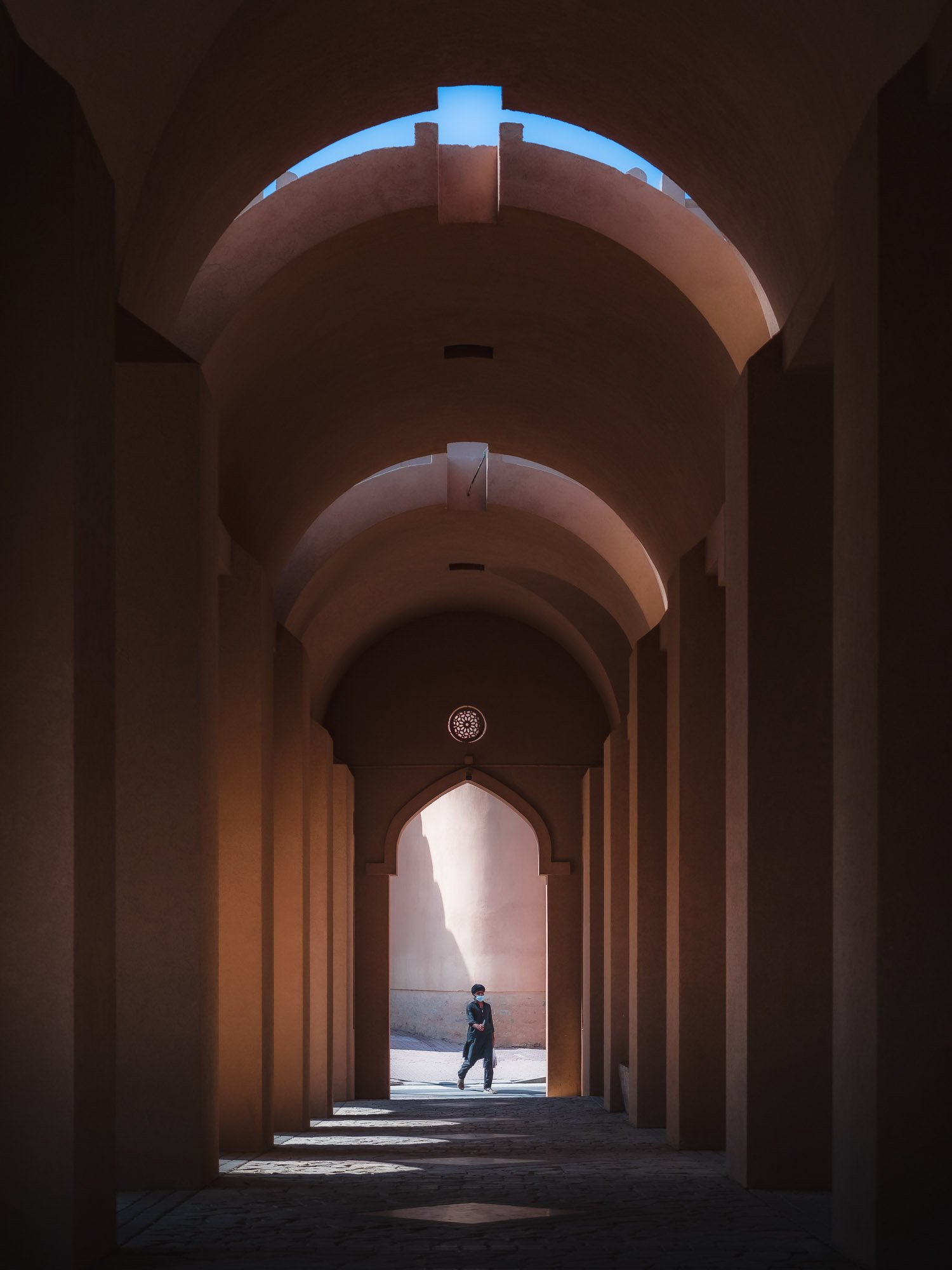
Grocery Duty
An Omani man passing through the shaded walkways of the market courtyard.
Jebel Akhdar
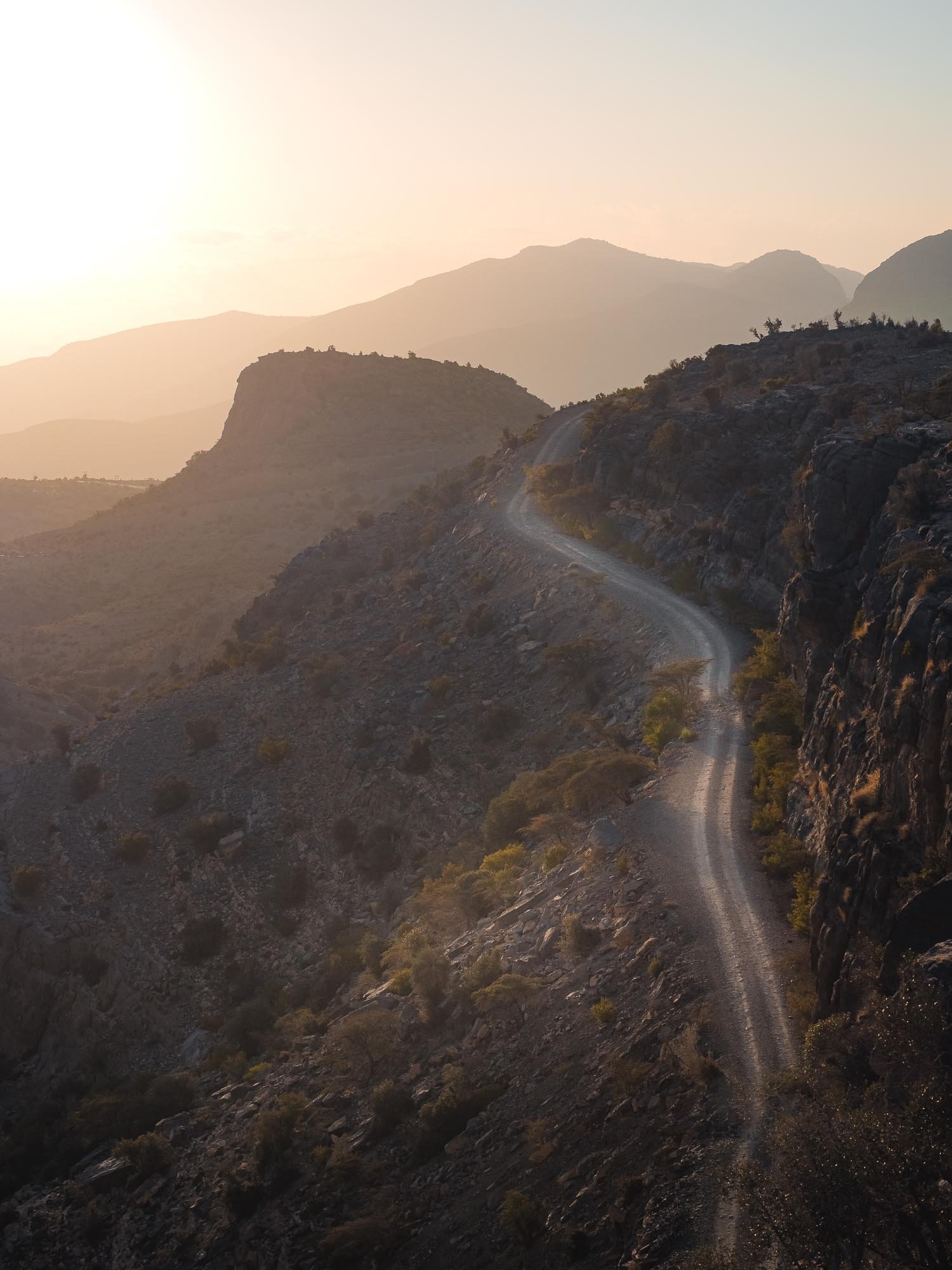
Upwards
Our next destination was Jebel Akhdar. It's an hour drive into the mountains, to an altitude of more than 2000 meteres. Although the roads are ok (better than in this photo), a 4x4 is required, otherwise you cannot pass the police checkpoint.
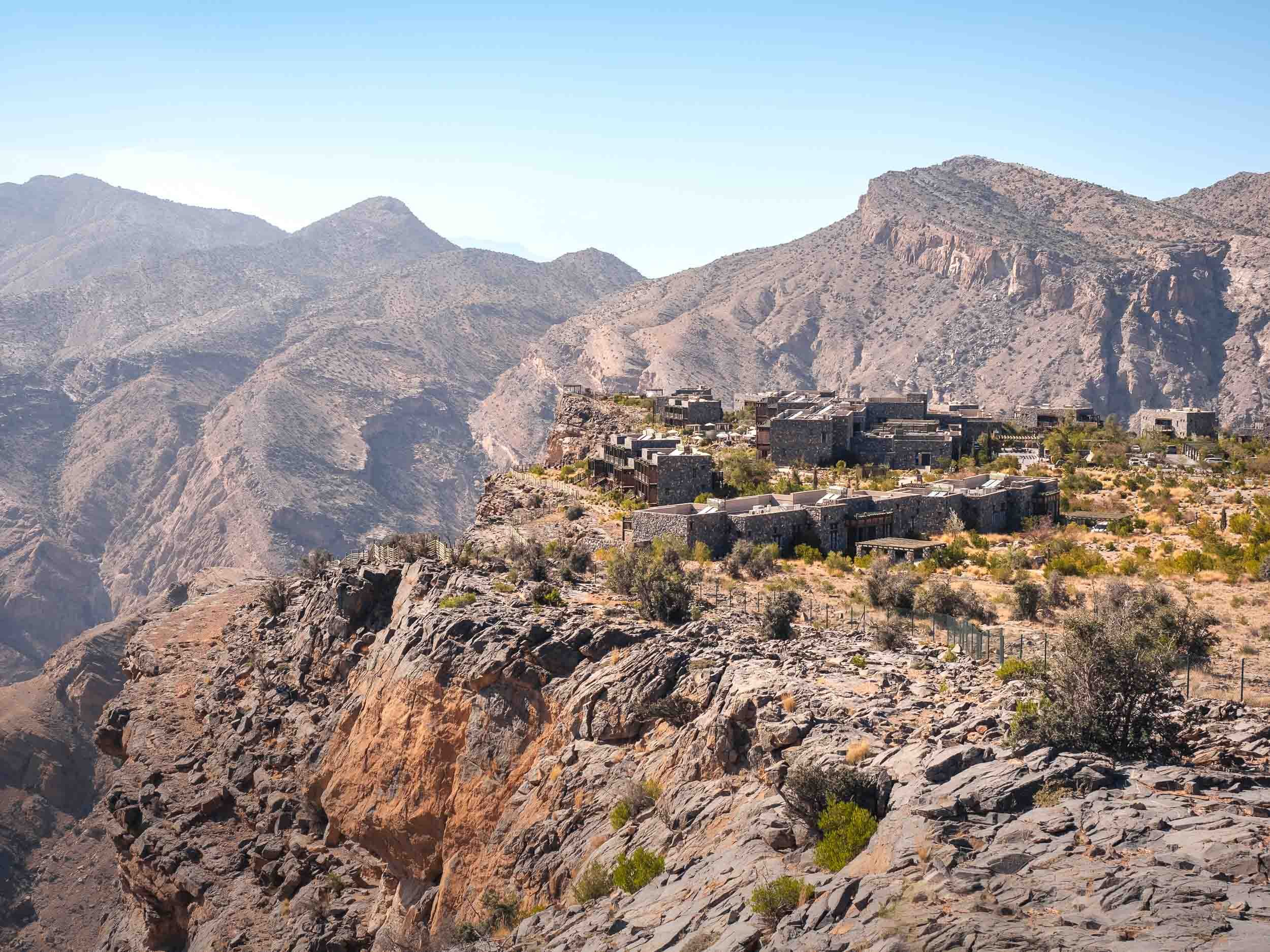
Alila Jabal Akhdar
We spent 2 nights in this amazing property, directly on the cliff of the one of the deepest canyons in the Hajar mountains.
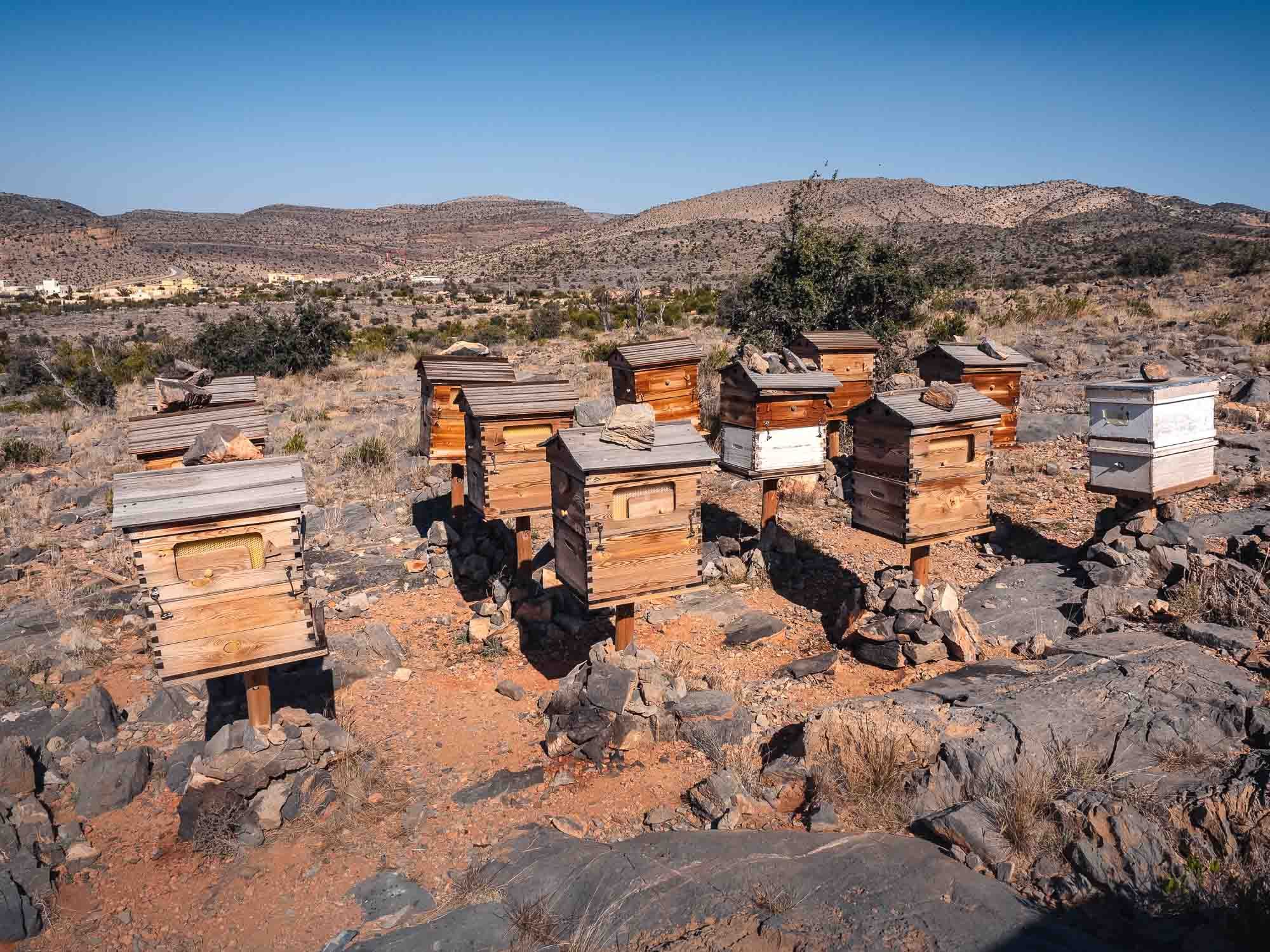
Beehives
The area round the hotel features many hikes, and a small trail directly in the grounds, with several interesting spots such as these beehives.
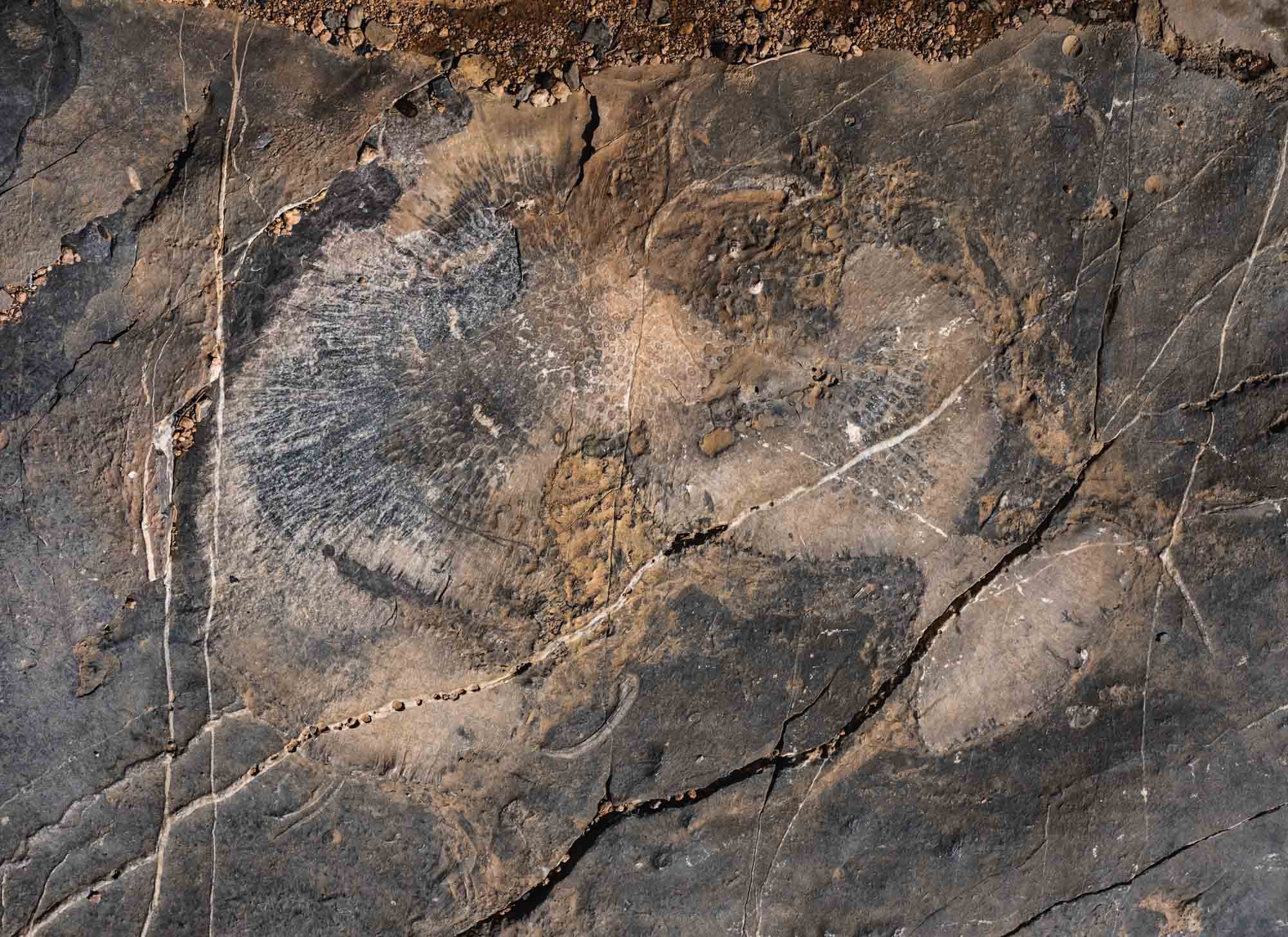
History
You can also find marine fossils everywhere, from millions of years ago when the area was under water.
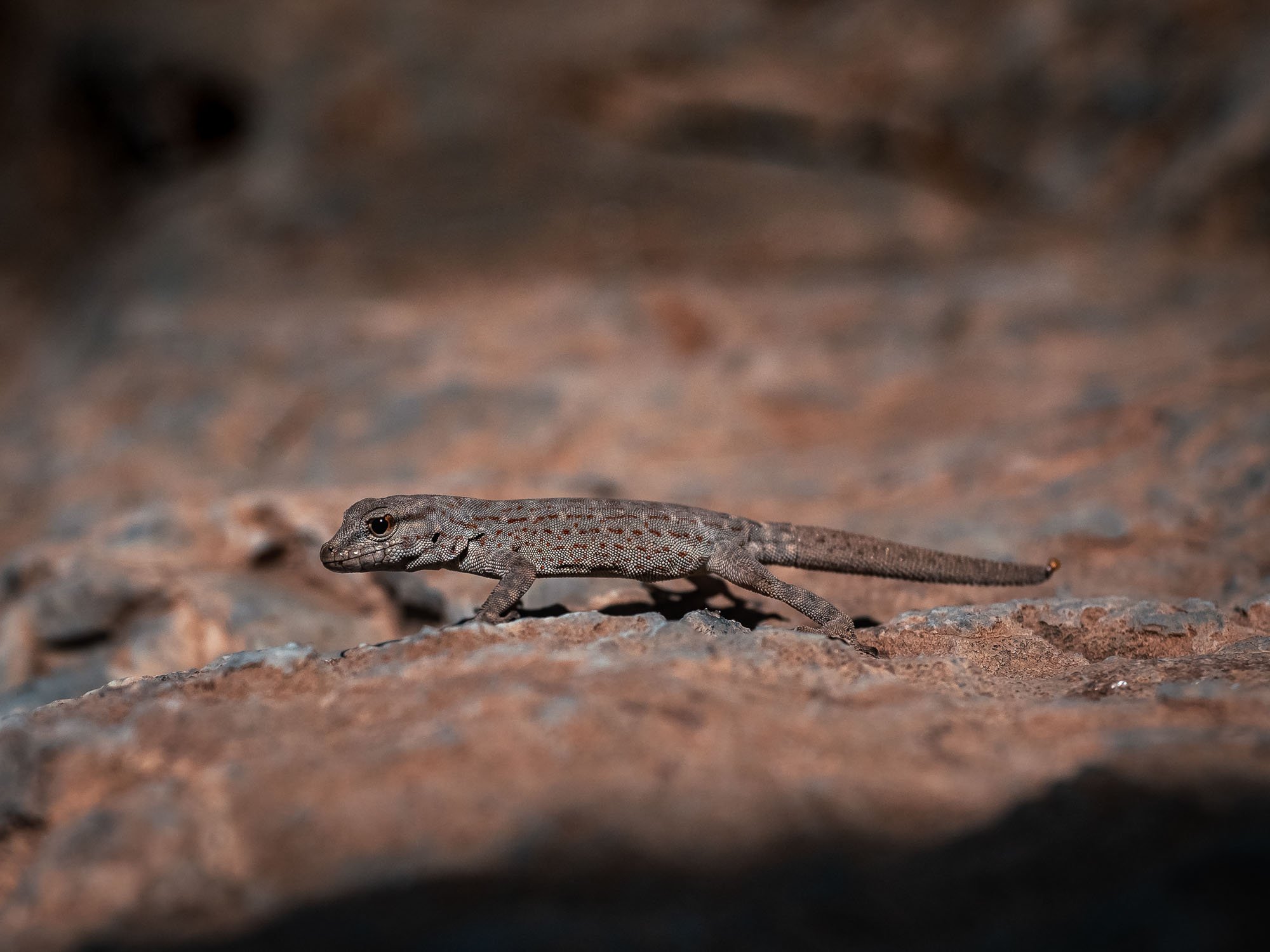
Visitors
Nowadays, the mountain is home to an abudance of Flora & Fauna - Akhdar literally means "green".
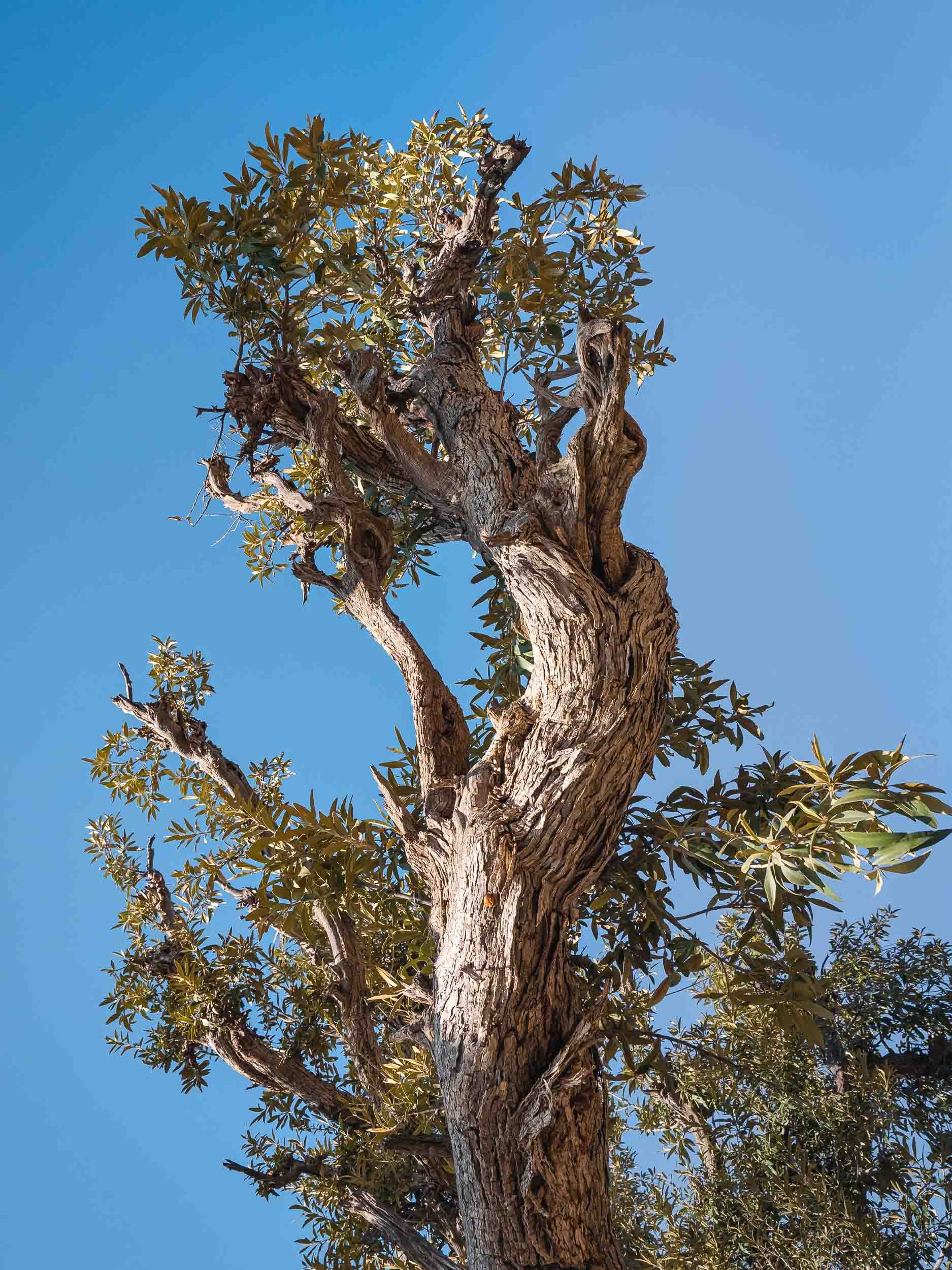
Wadi Walk
We spent the afternoon on a 4h hike through a nearby Wadi. The variety of trees is particularly interesting, including wild olive trees.

Water Source
The end of the trail brought us to this little dam, occupied primarily by frogs.
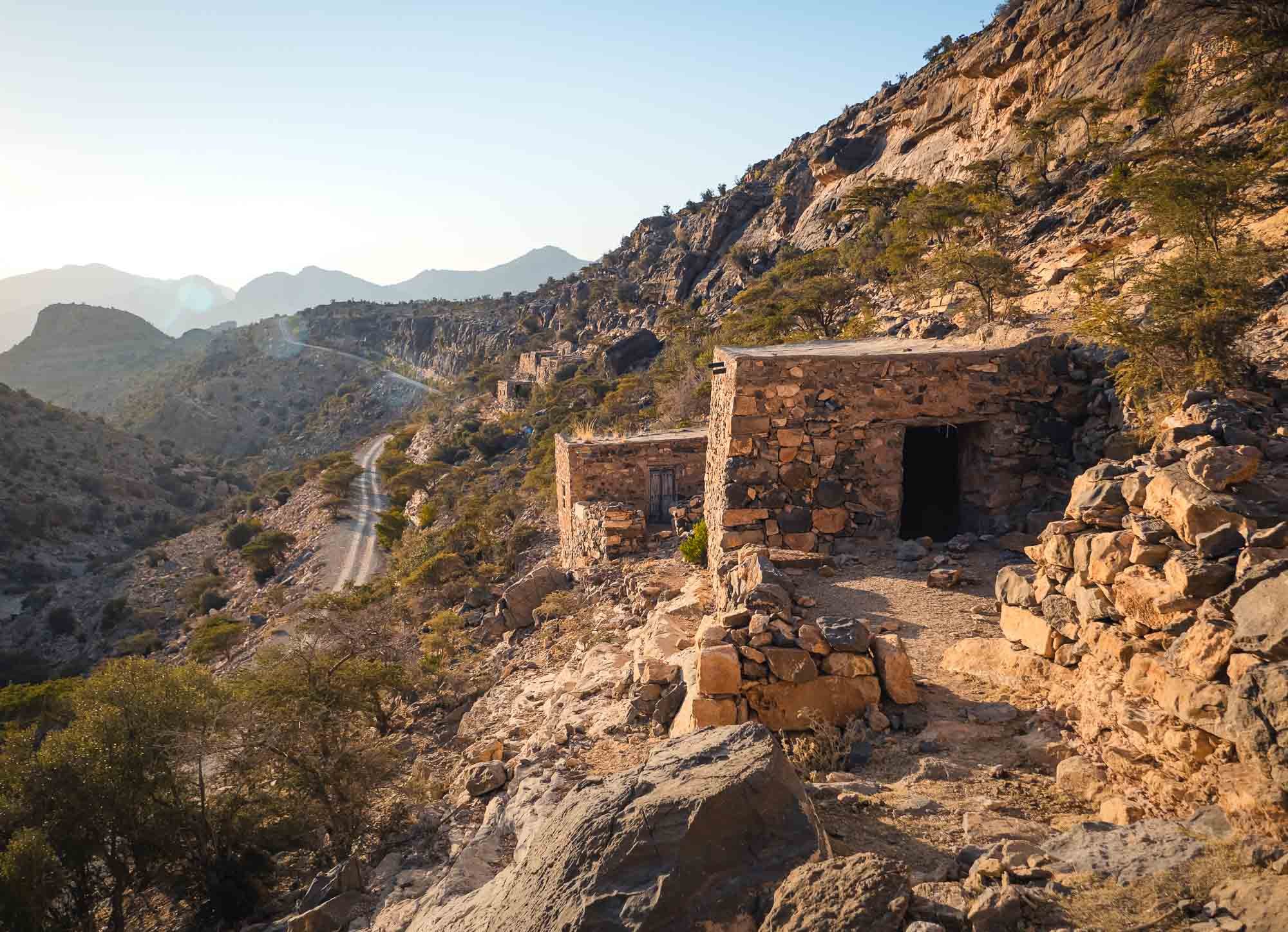
Abandoned
On the way back, we climbed upwards to find the crumbling houses of Sarab, a former village on the slopes of the Wadi.
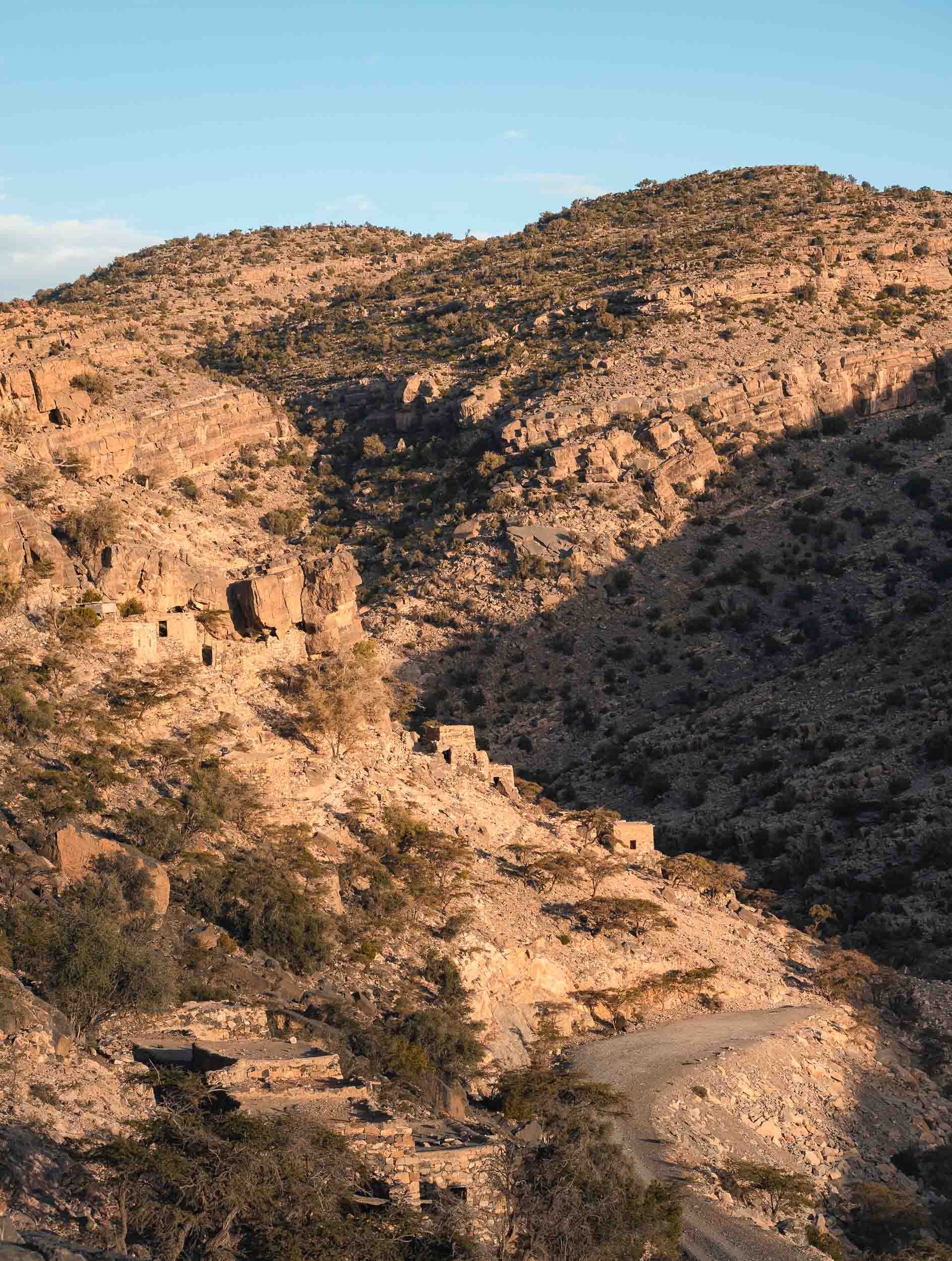
Illuminated
Sunset was the best time for this trail.

Sunset over Alila
Sometimes the scenery speaks for itself.
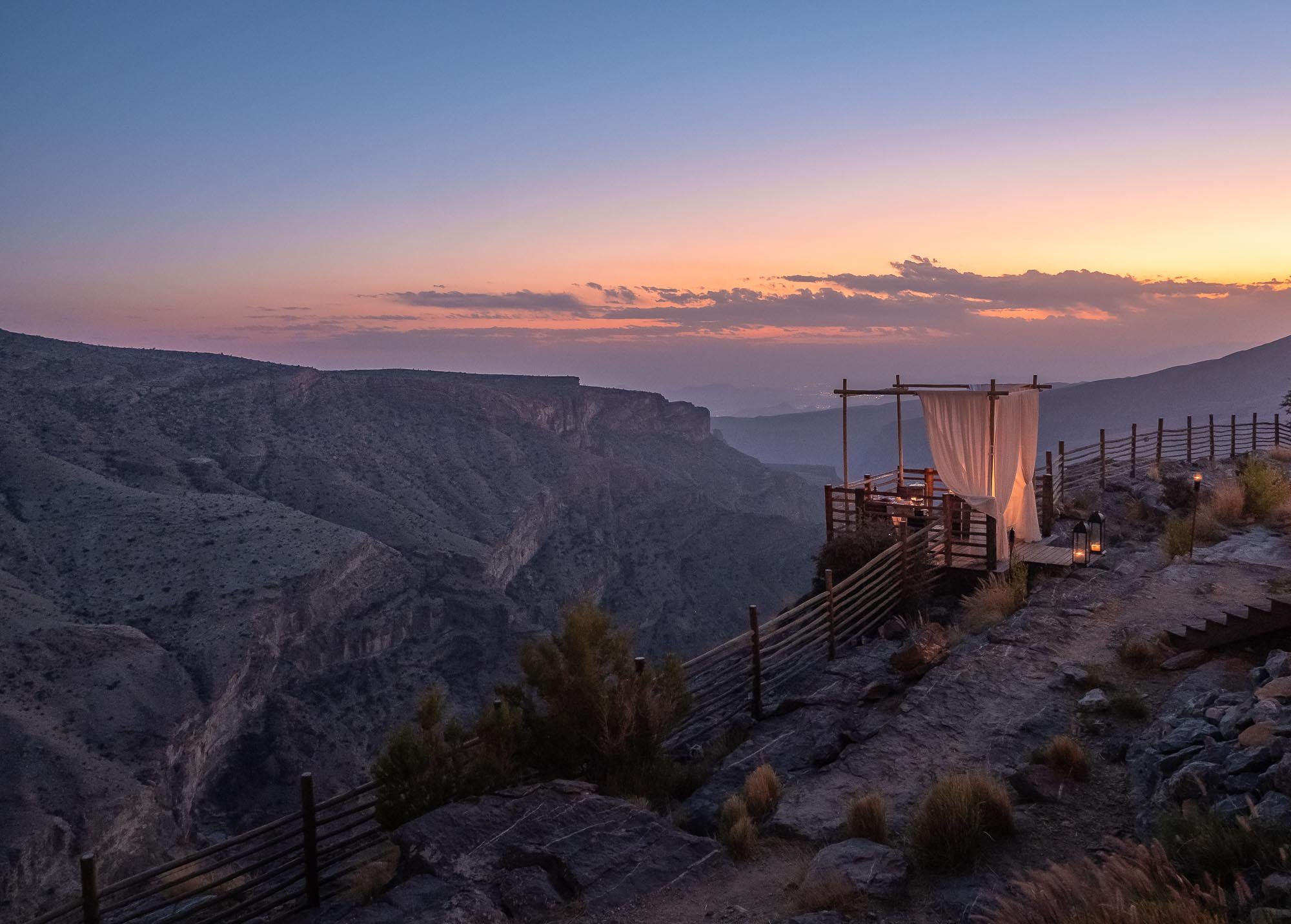
Cliff
Not a bad spot for dinner?
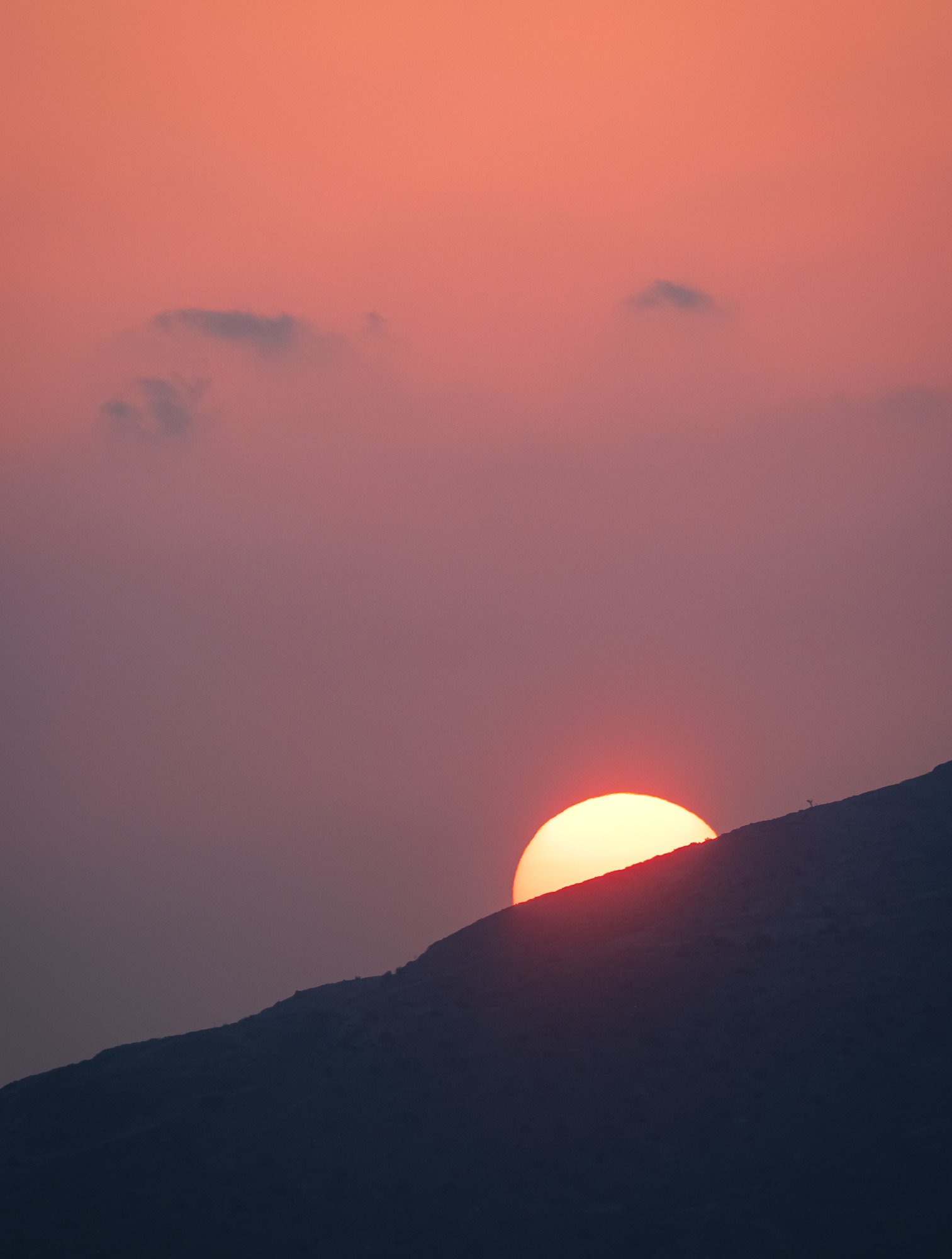
The Day's End
The sun setting behind the Hajar mountains in the distance, next to a little tree.
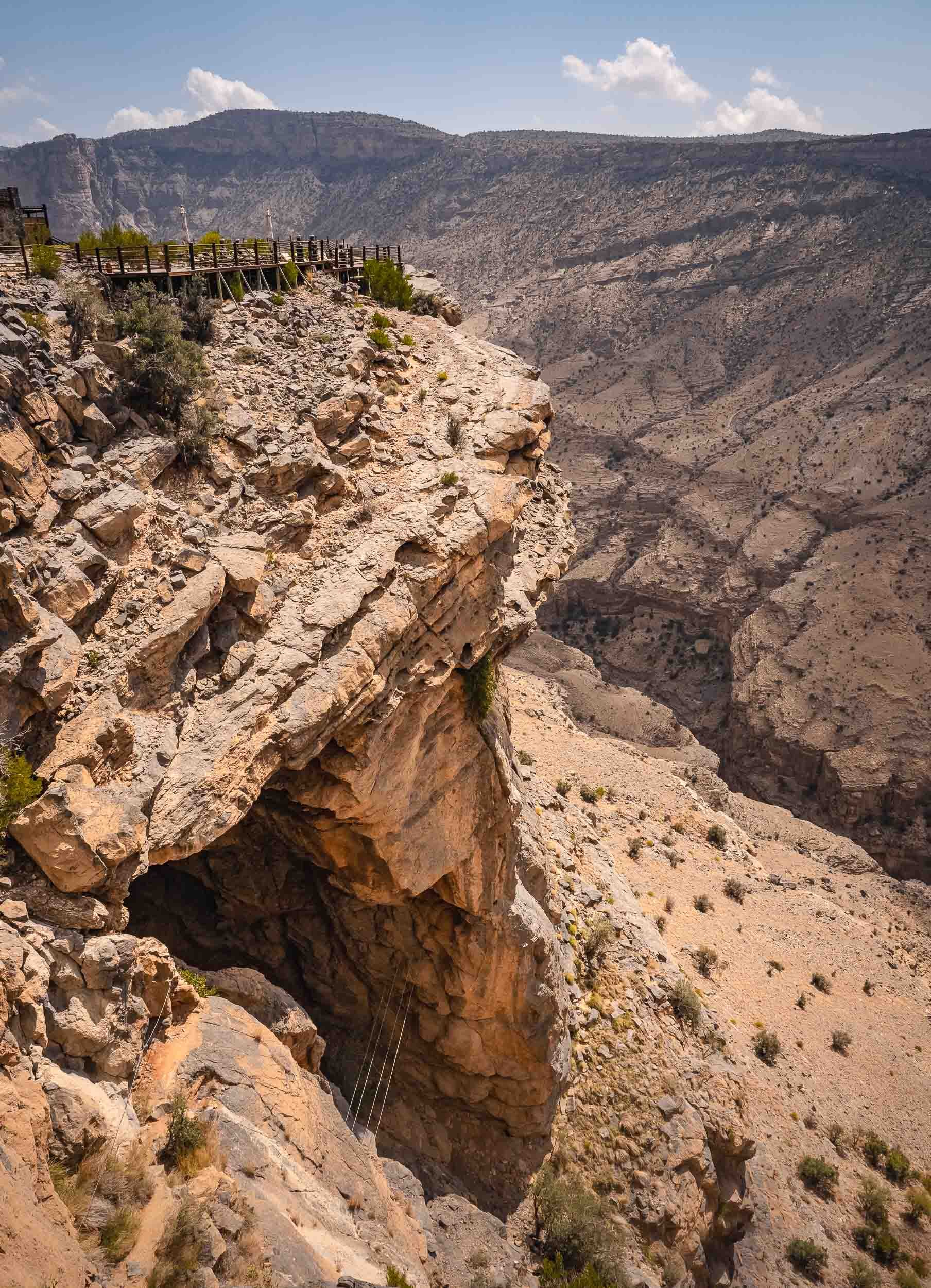
Via Ferrata
The next morning brought some adventure, as we climbed the via Ferrata, which literally starts at the hotel lobby. You can see the iron rope on the bottom left and the rope bridge across the cave in this image.

On the Edge
An incredible experience, and definitely recommended.
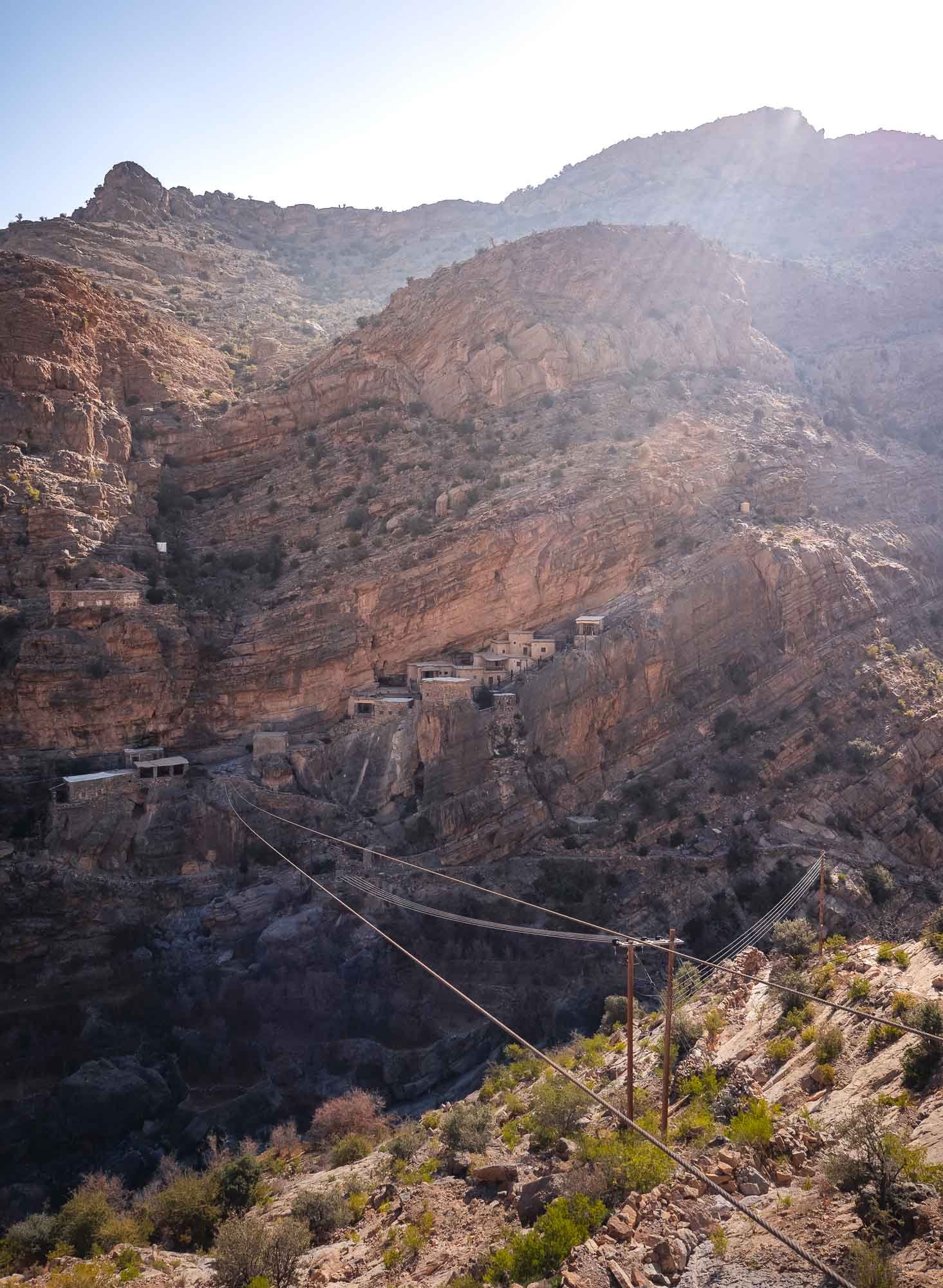
Alsuwjara Village
Our last day at Jabal Akhdar brought us to the cliff guest house, an old village from 500 years ago that is slowly being converted for tourism.
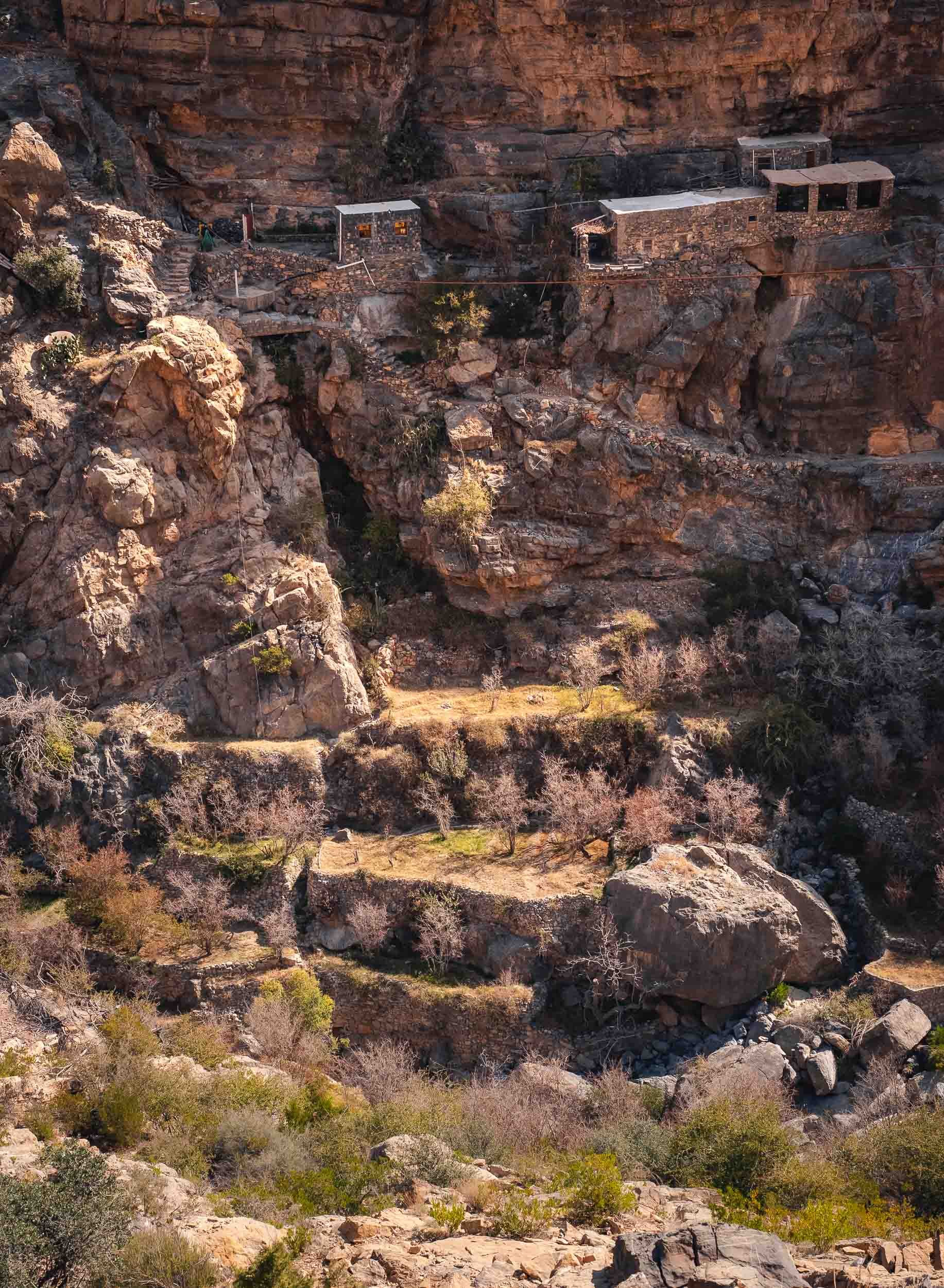
On the Rocks
We were lucky enough to get a tour organised directly by the local Omanis operating the place, who lived in the houses up until a few years ago.

Mountain Villages
We then moved to the towns of Al Aqr, Al Ayn and Ash Shirayjah, famous for their terraced farming, used to grow roses and other crops.
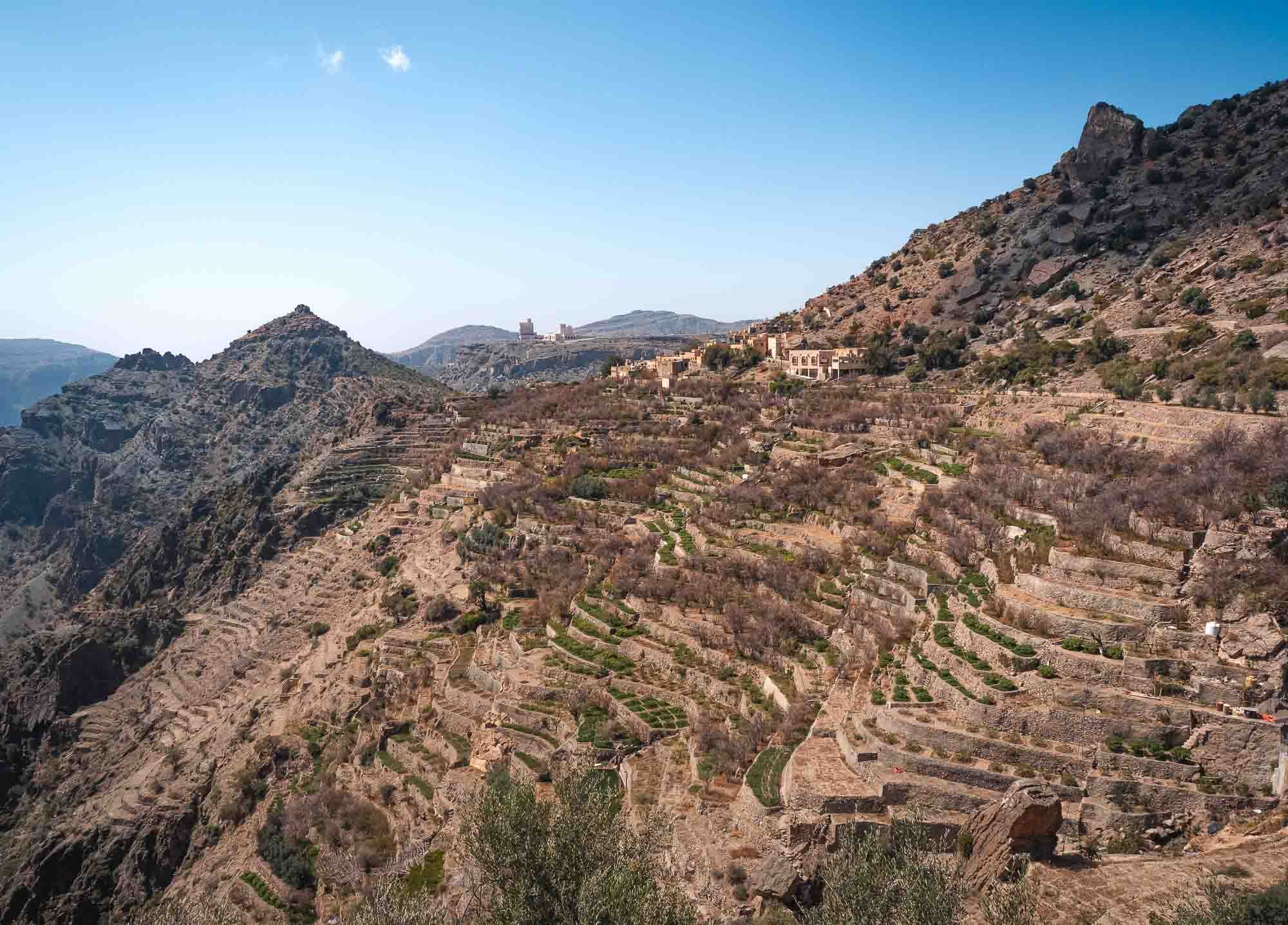
Farming
The terraces used to reach all the way into the wadi, but a lack of water in recent years meant a reduction in usable area. Nevertheless, the entire slope is green during the summer time.
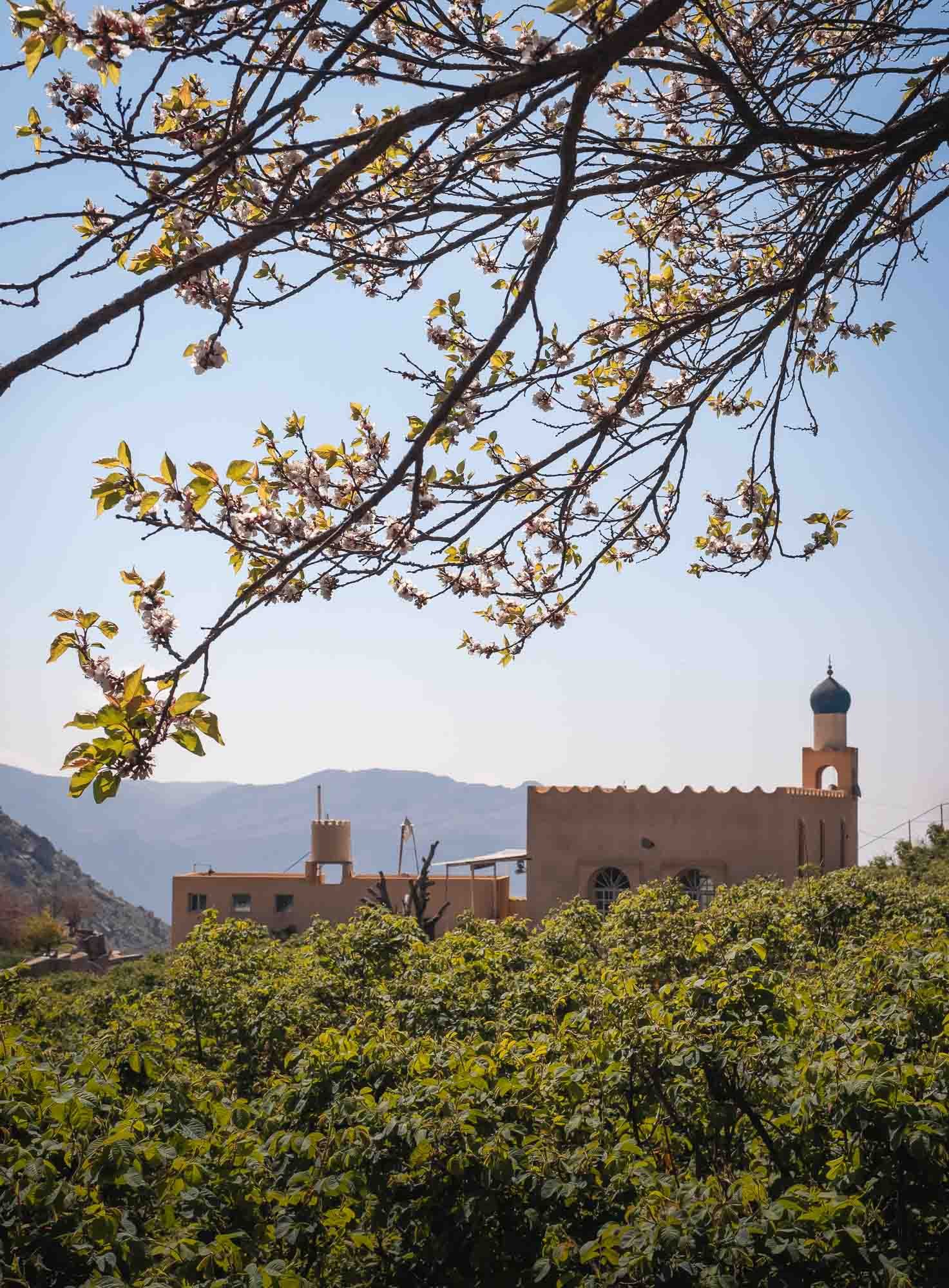
Pomegranate Season
One of the many blooming flowers at the time of our visit. The primary rose season was about to start as well.
Onwards to Muscat
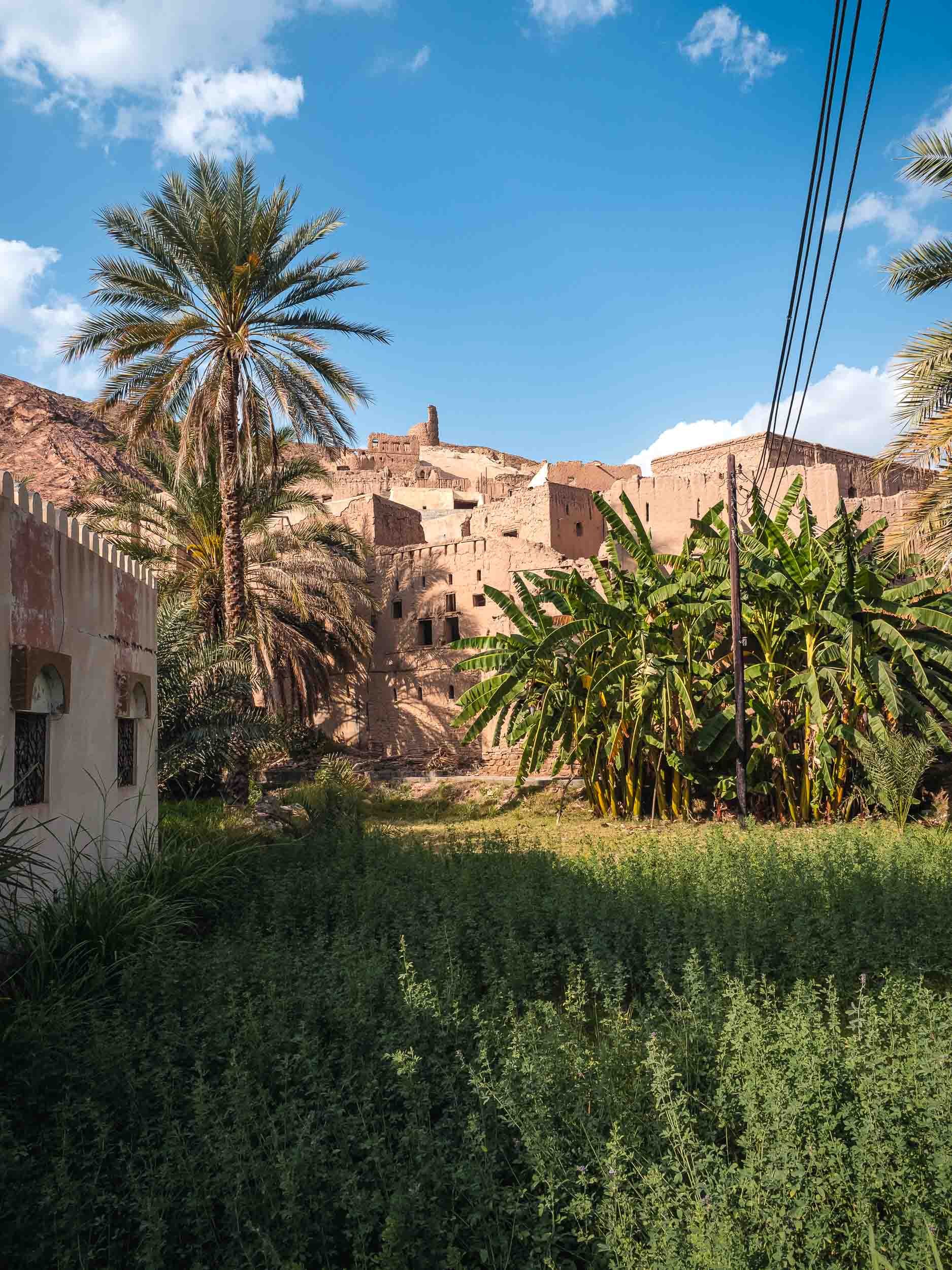
Birkat Al Mouz
This was our next stop on the way from Jebel Akhdar to Muscat.
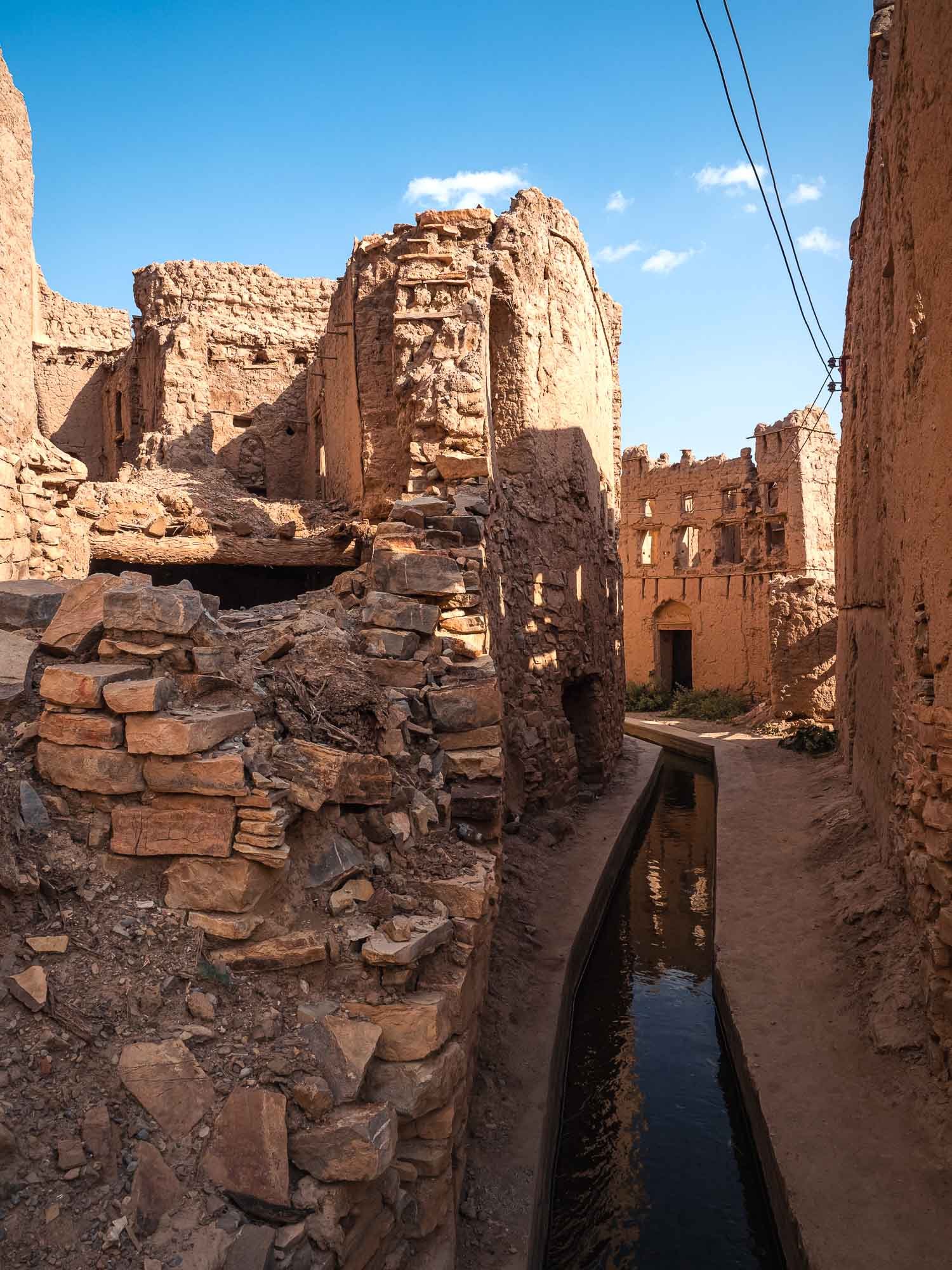
Falaj Al Khatmain
One of the five irrigation systems in Oman listed on the Unesco World Heritage site runs through the abandoned part of town.
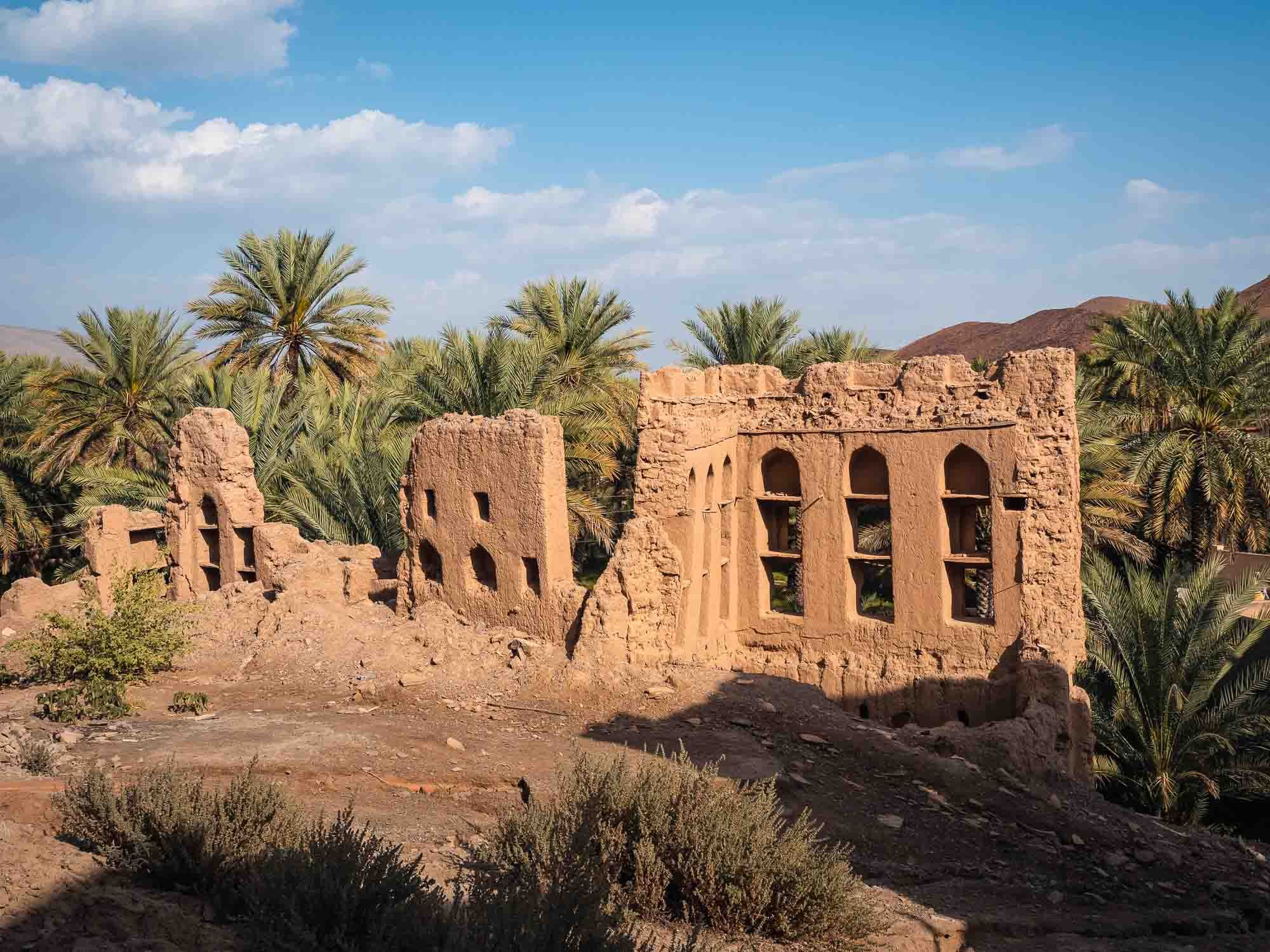
The Last Walls
The village contains two such parts, the larger one called Harat Al Sibani.
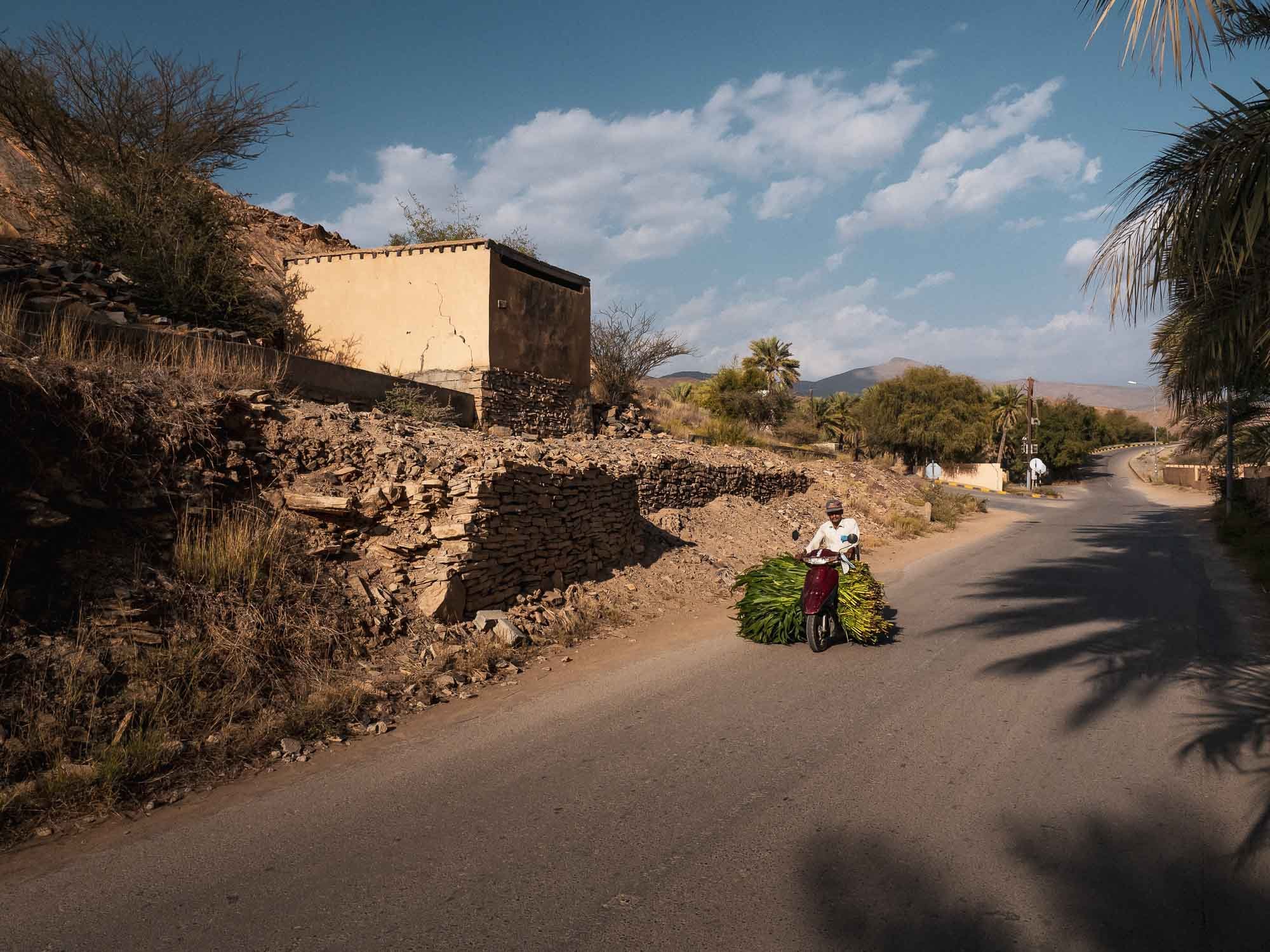
Banana Pool
That's the meaning of the city's name in Arabic - and the farms surrounding it give away why.
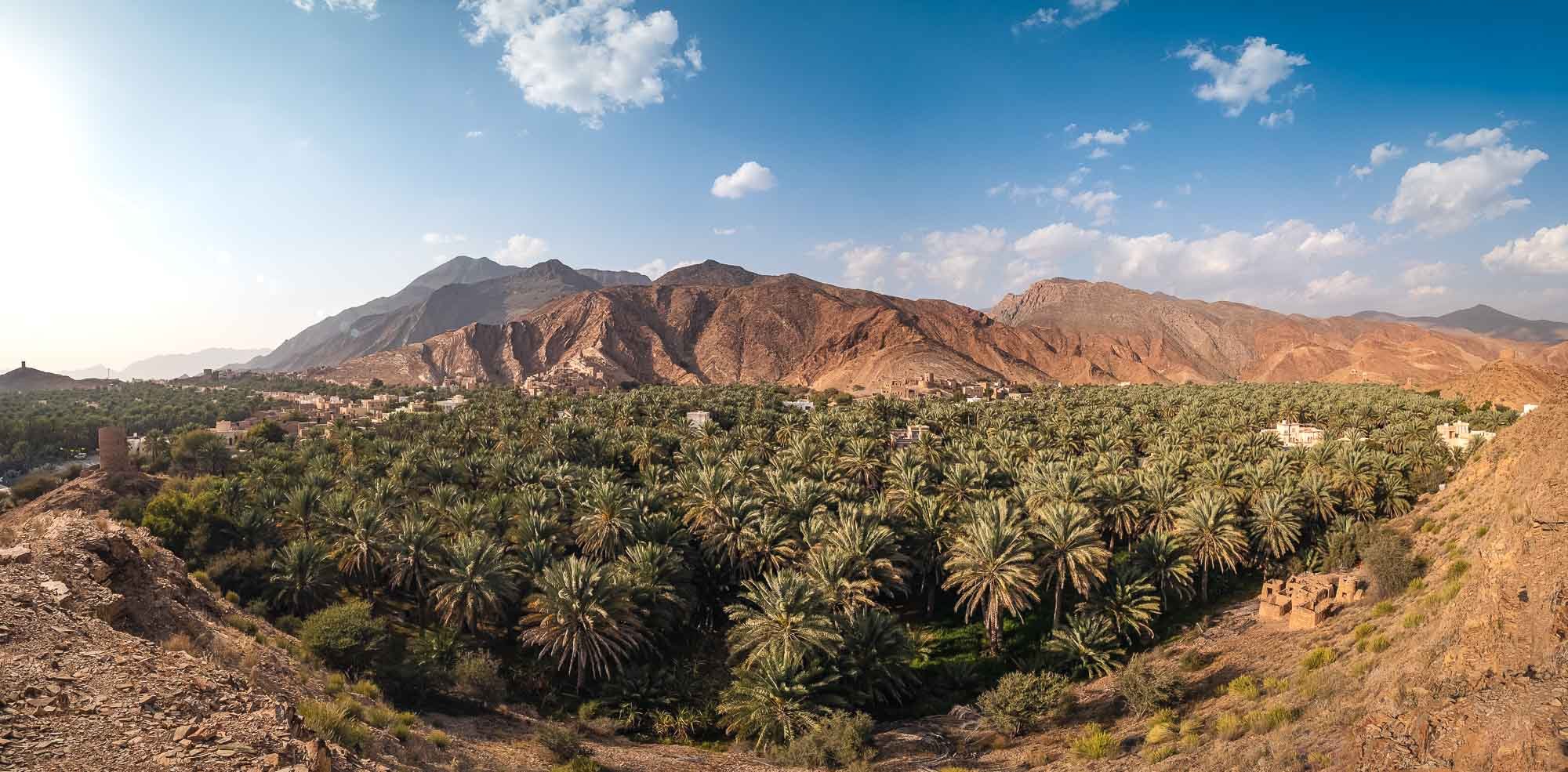
Quintessential Oman
A short climb on the other side of the farms rewards you with this scenery.

Harat Al Sibani
And this stunning view of the abandoned village.
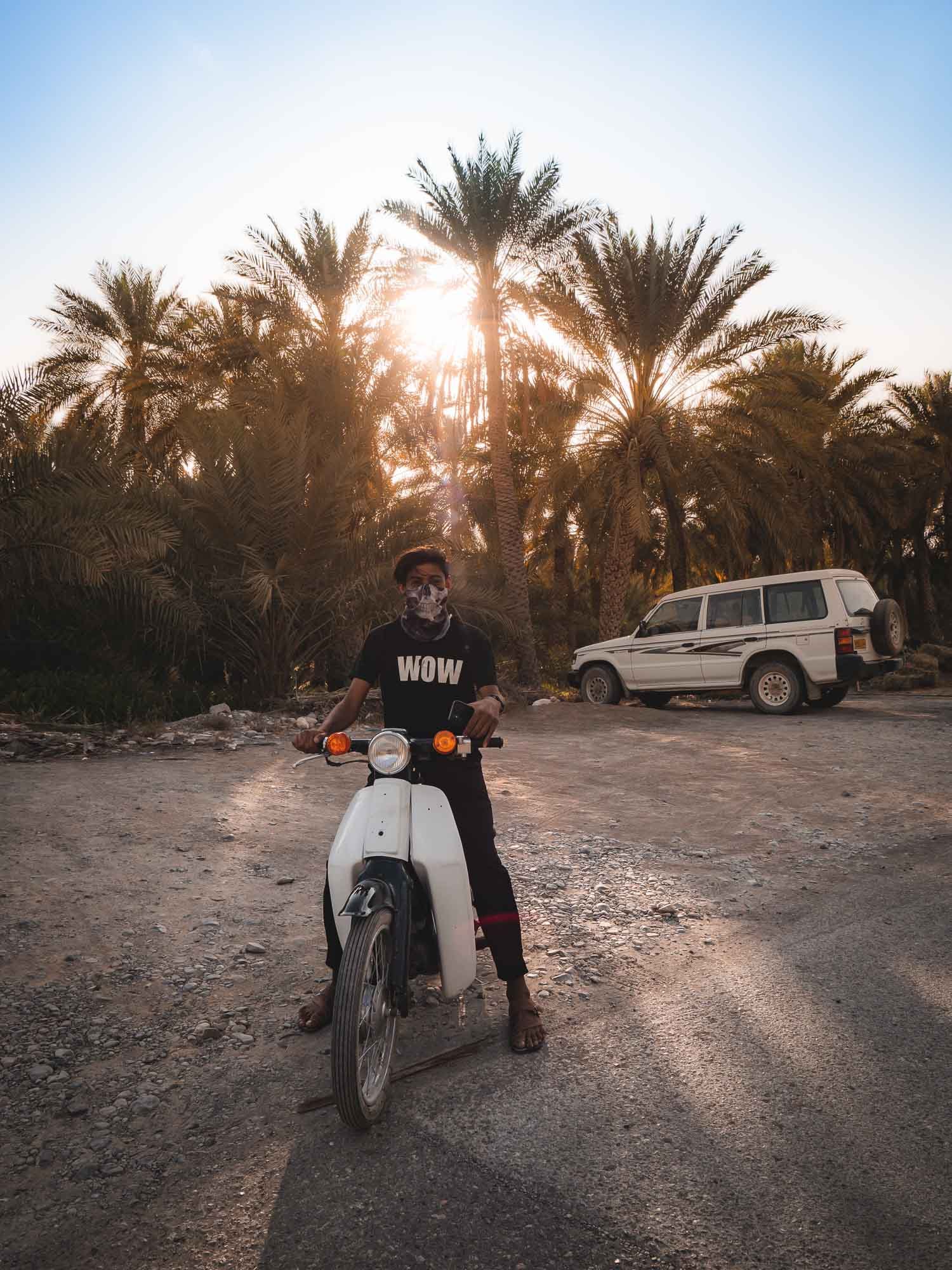
New Friends
Omani people are always curious, polite, and hospitable.
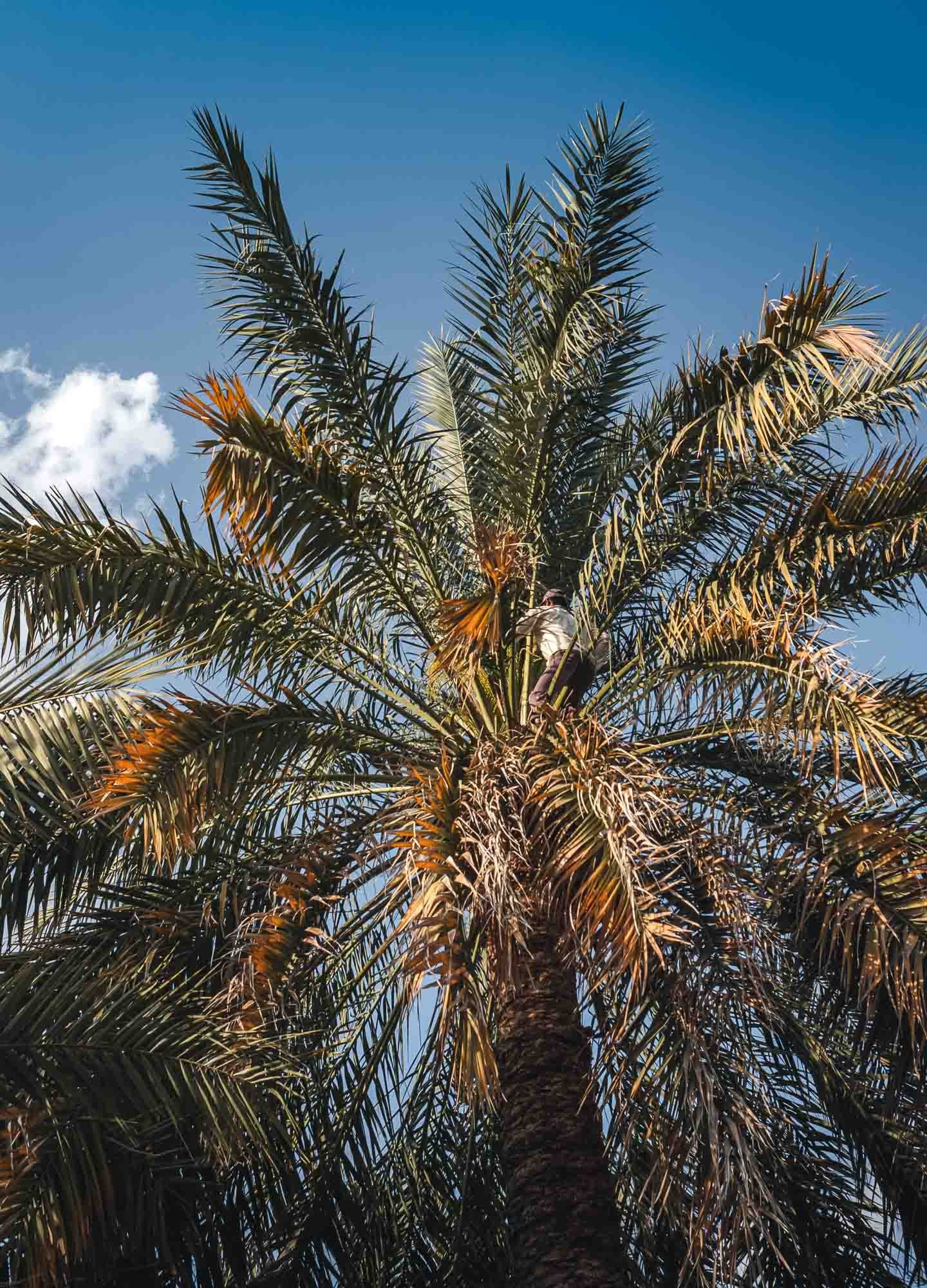
Work In Progress
Farming and plantations still make up a large amount of the economy in this area.
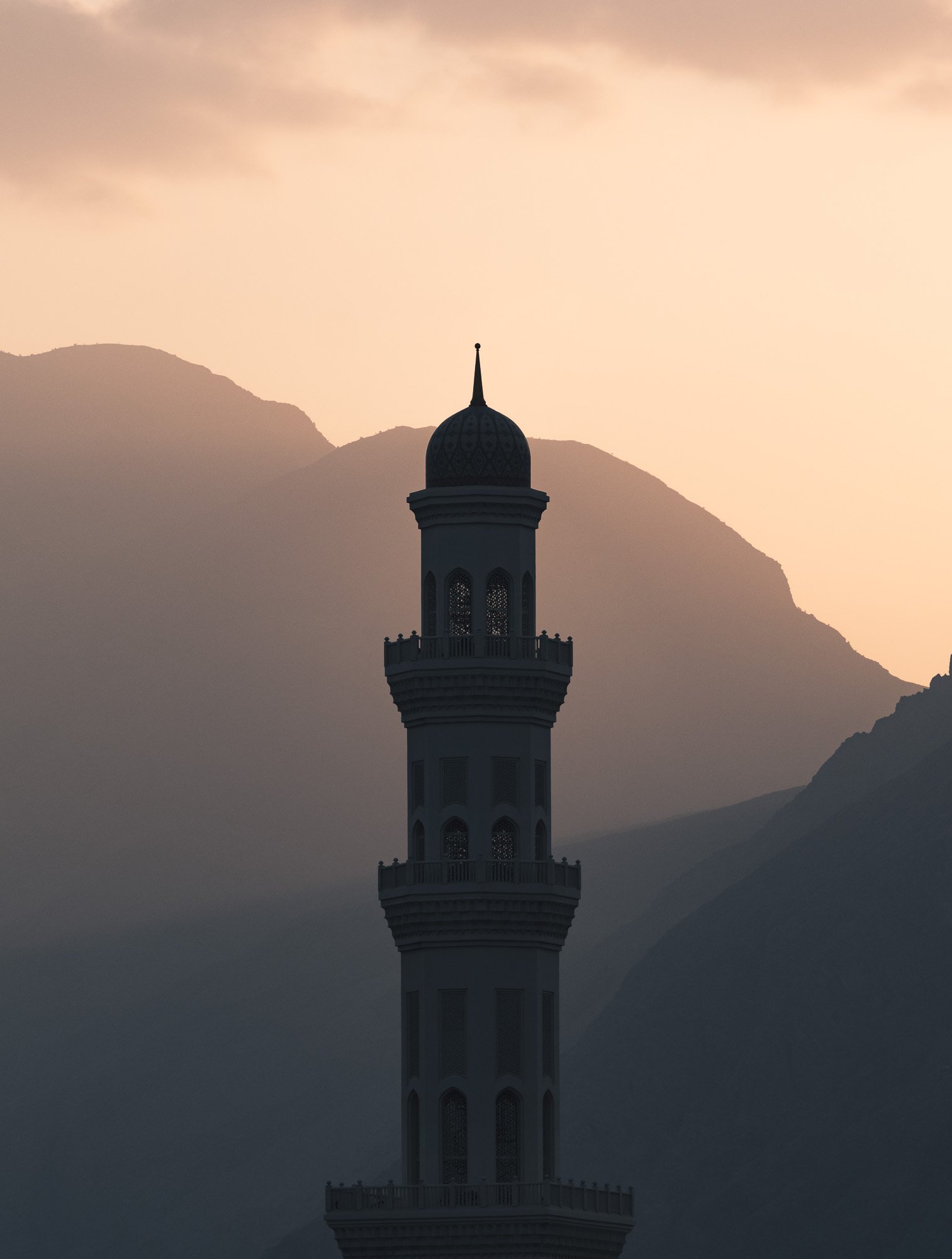
Hajar Layers
One kind of shot I can never get enough of.

Samail
Samail and its fort was our last destination before reaching Muscat - unfortunately we were too late to see it from the inside.
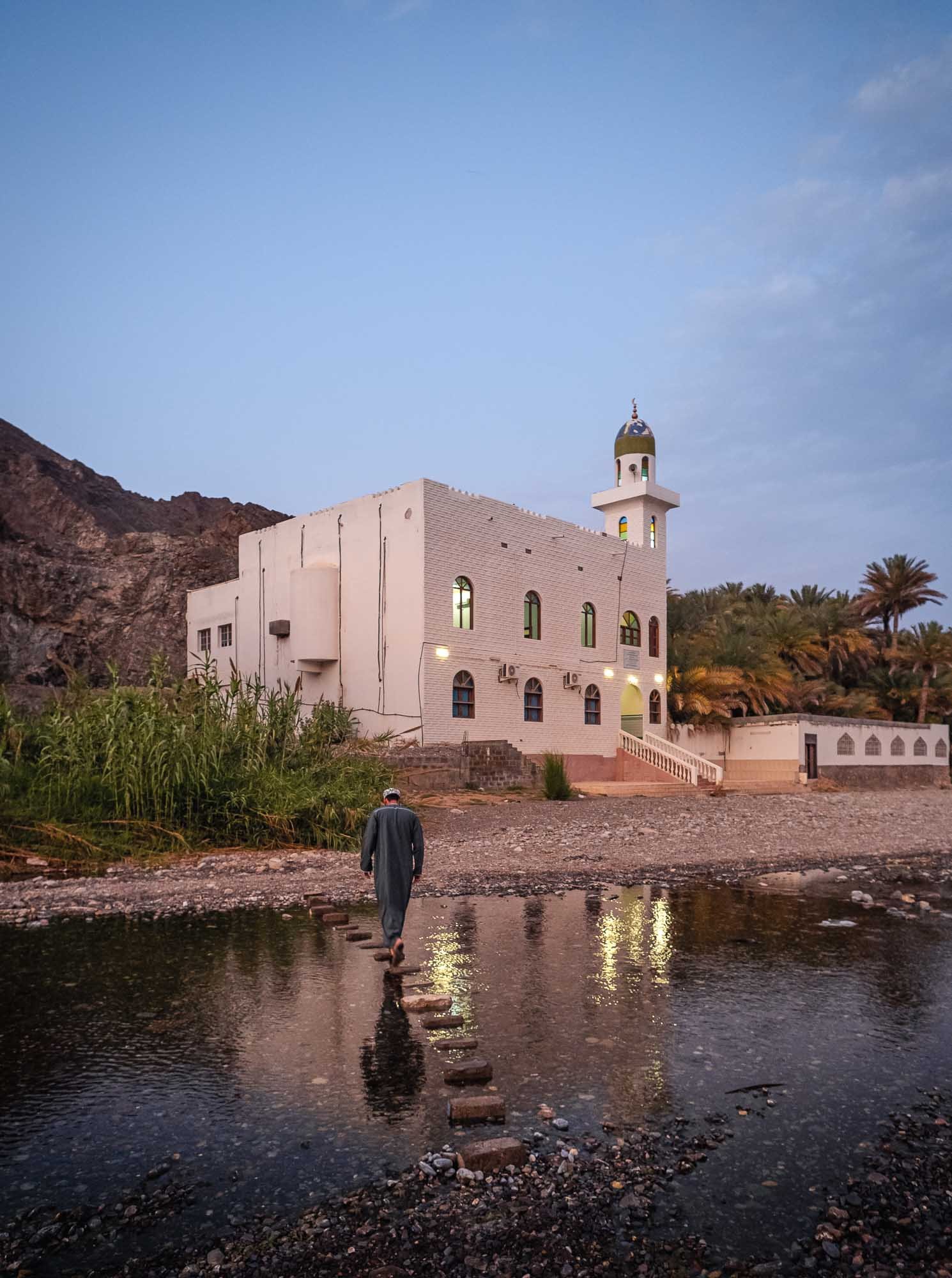
Steps to Prayer
The city is said to feature Oman's oldest mosque from 600 AD - not this one here though, which we found in our search for a good spot to watch the sunset.
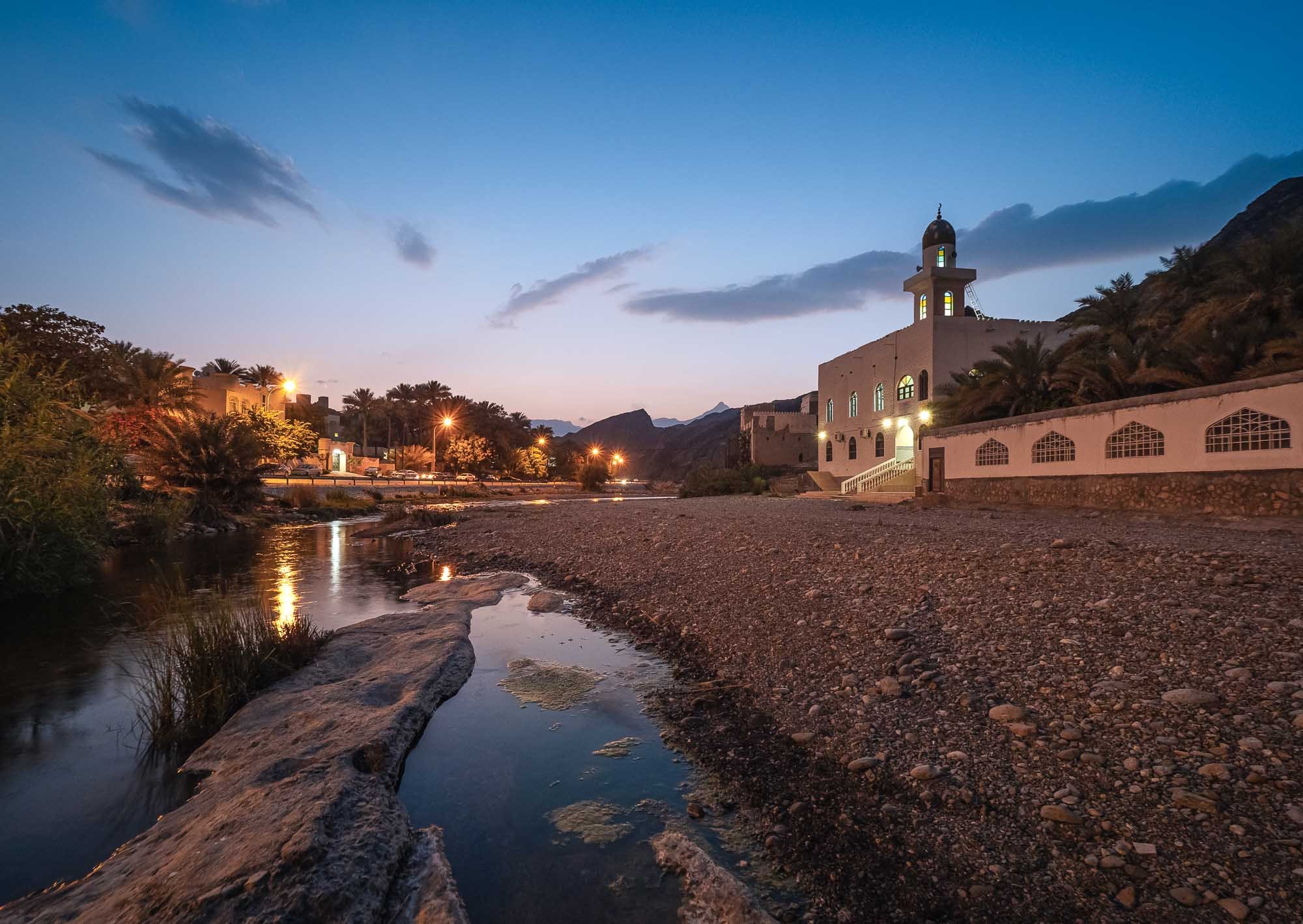
Evening Vibes
The sound of the prayer call and a few lonely frogs accompanied this scenery.
The Capital and its Surroundings
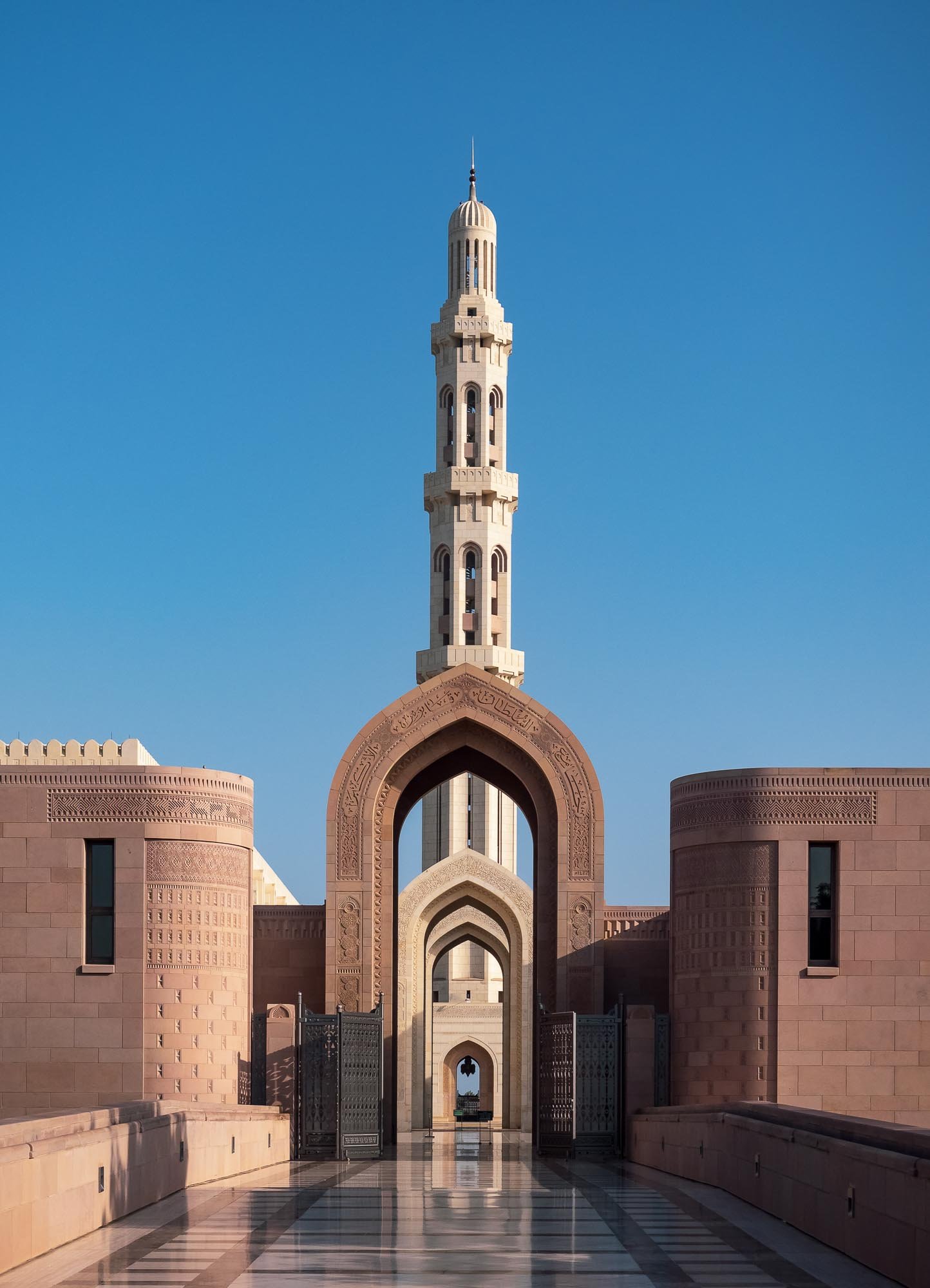
Muscat!
Our first stop in the capital had to be its arguably most famous sight: Sultan Qaboos Grand Mosque.
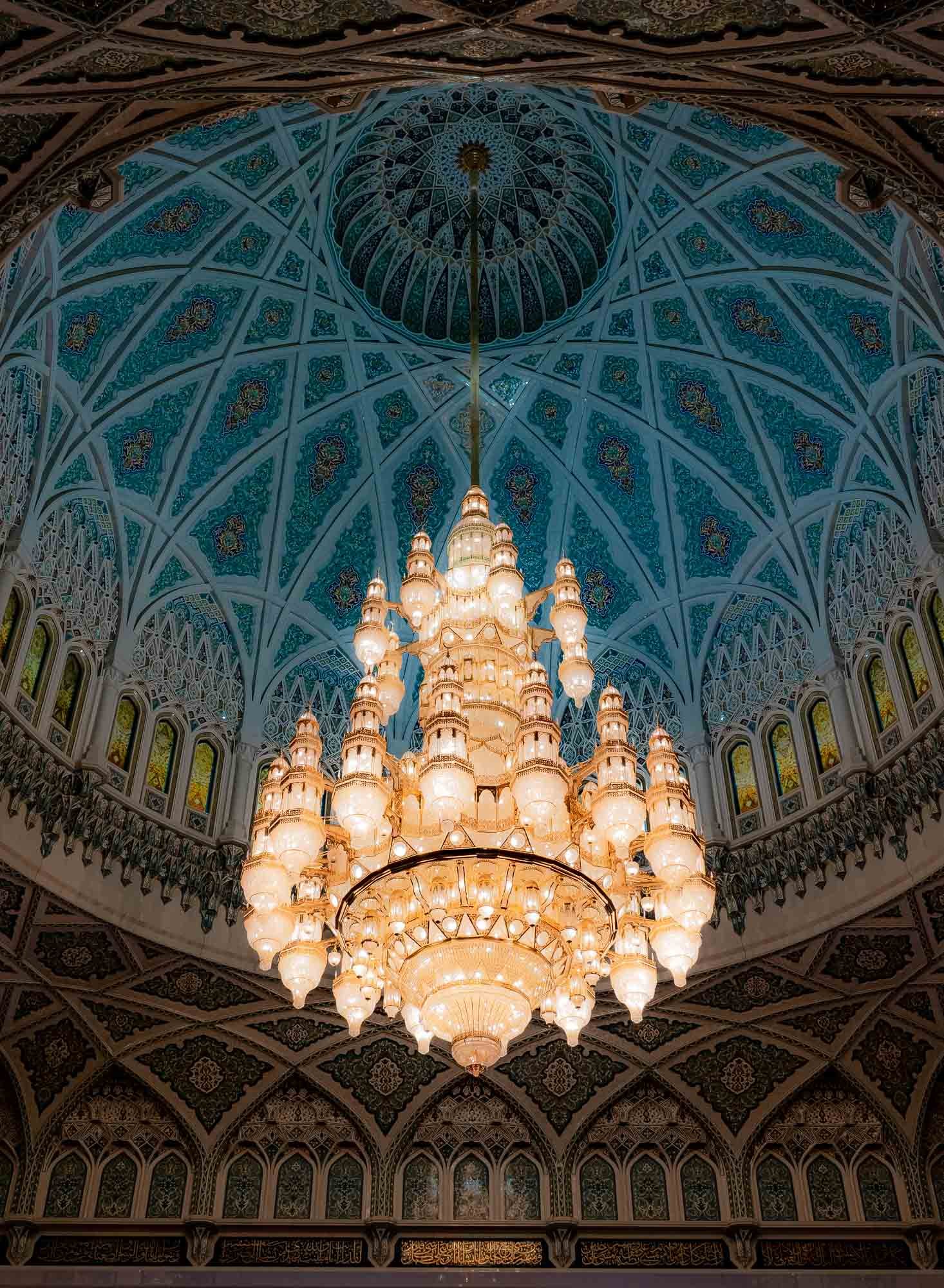
Lighting
The mosque's primary prayer hall can accommodate 6500 people - its chandelier used to be the largest in the world. The same is true for the carpet, with 1,700,000,000 knots over 4300 sqm. Both have been overtaken by Abu Dhabi's Sheikh Zayed Mosque.

Interior Views
In hindsight my OCD is really annoyed that they chandelier doesn't perfectly line up with the window.
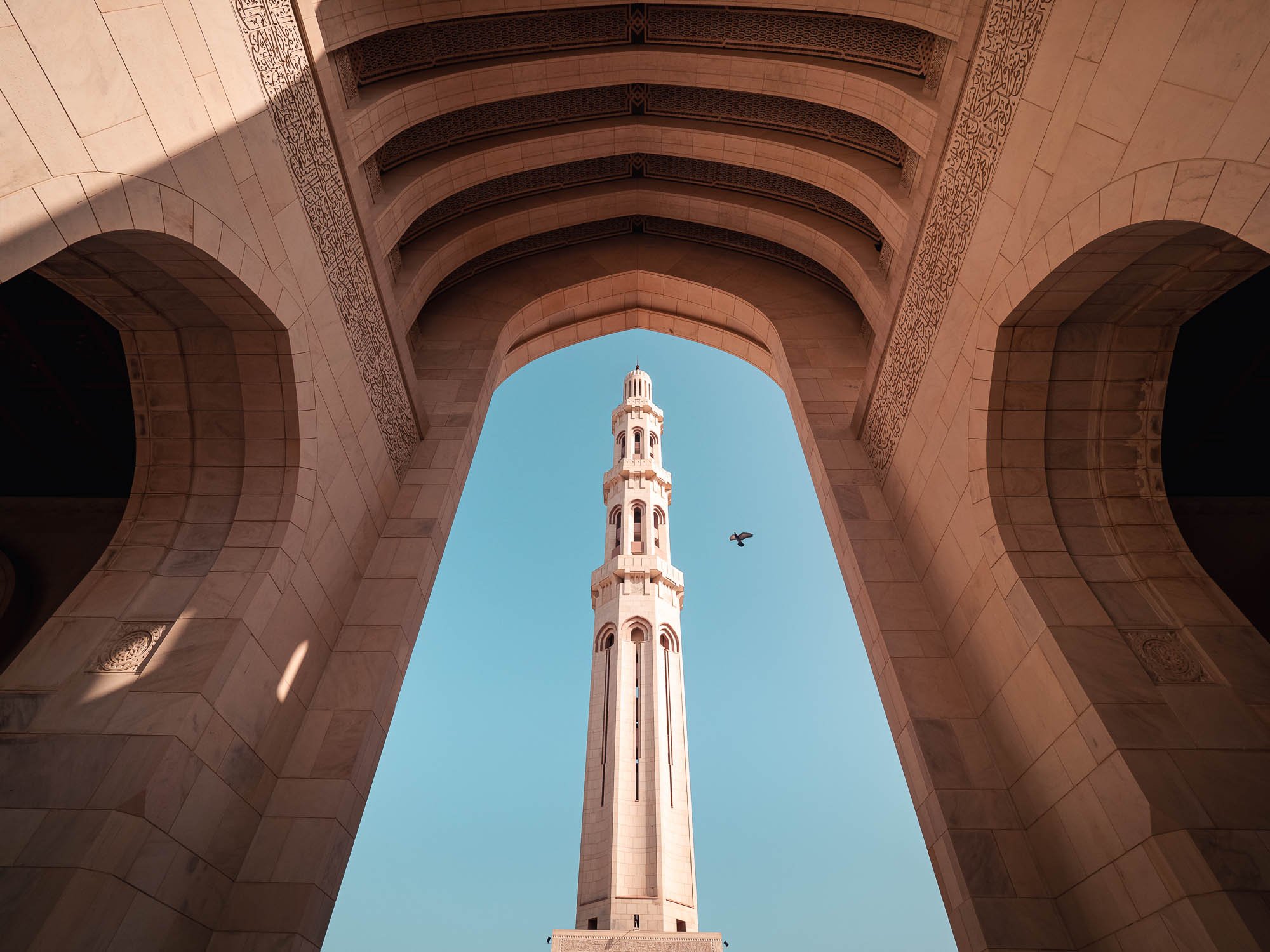
Upwards
The mosque was inaugurated in 2001, after 7 years of construction.
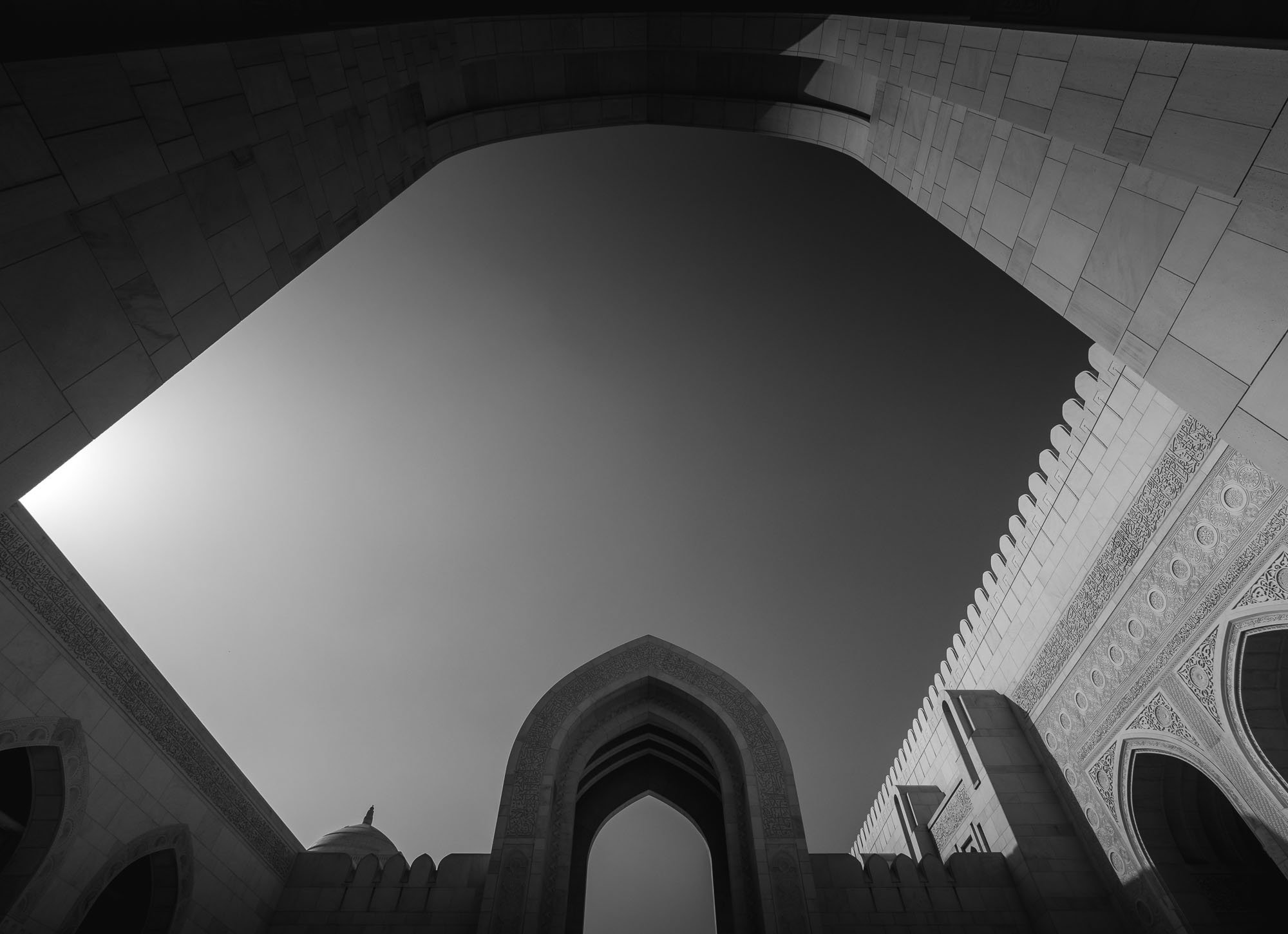
Materials
It was built from 300,000 tonnes of Indian sandstone.
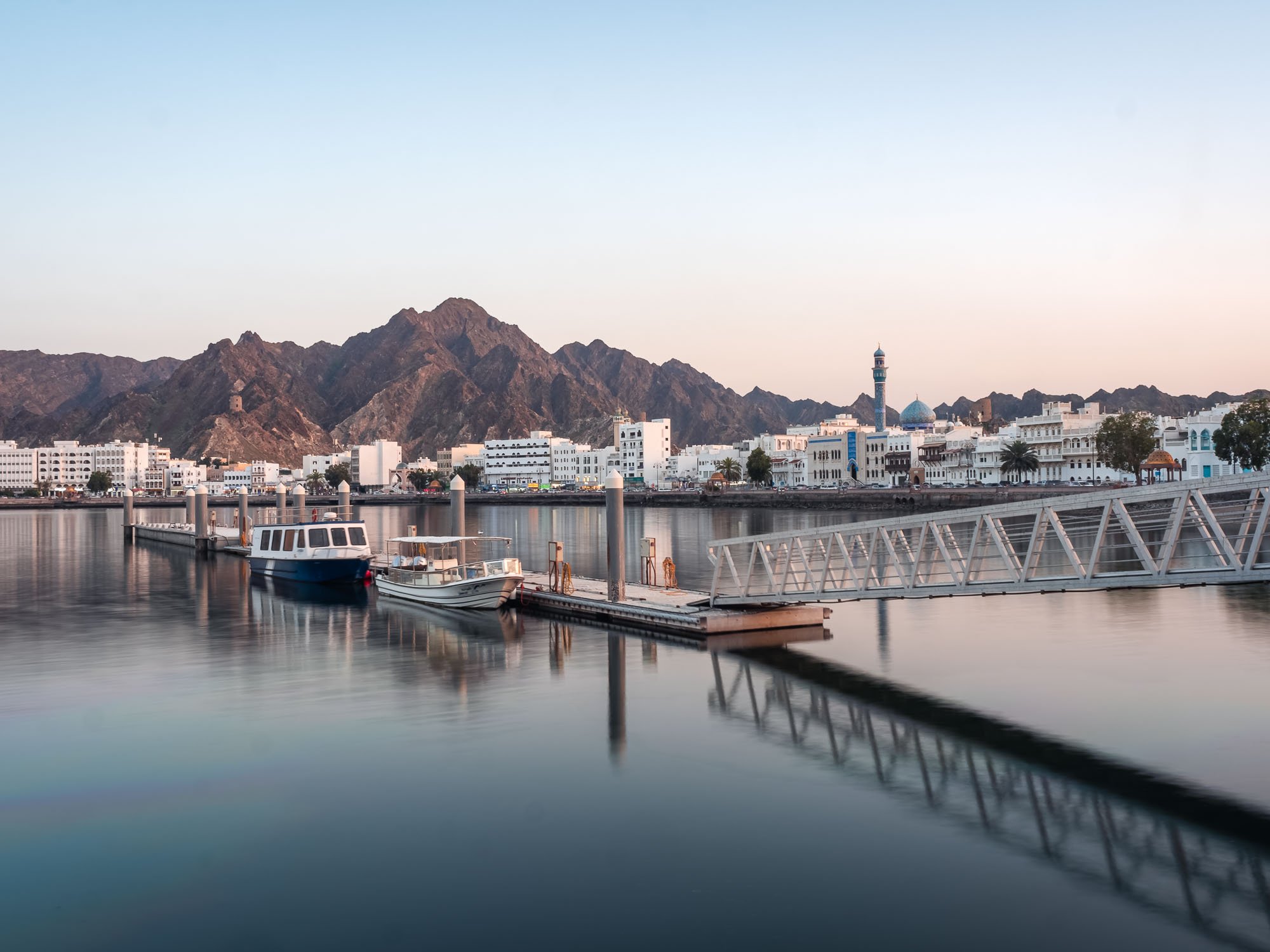
Muttrah Corniche
Our next destination was Muttrah, a trade and seaport city very close to Muscat.
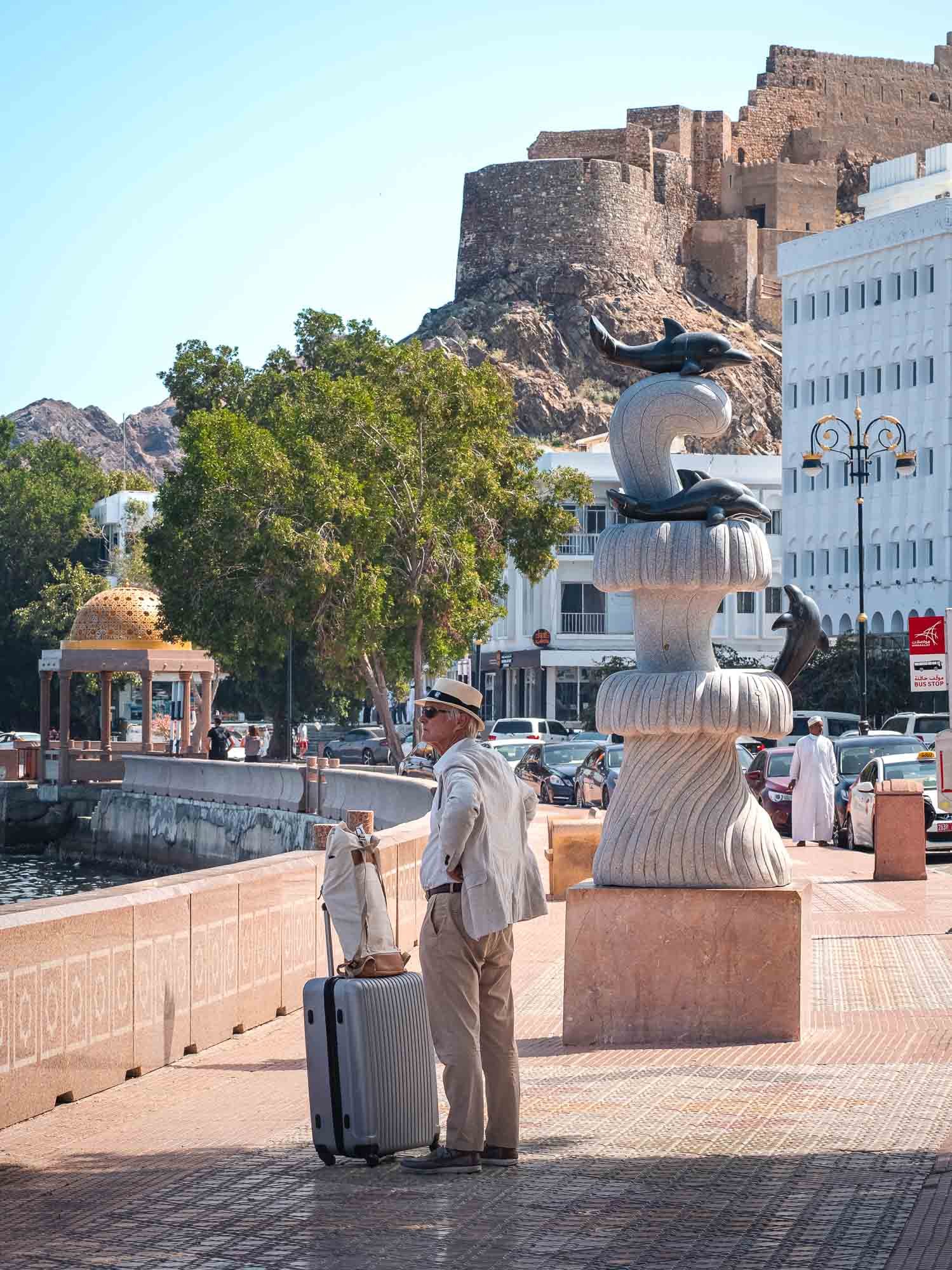
In Style
The presence of large cruise ships sometimes brings more sophisticated travellers than us to the town ;)
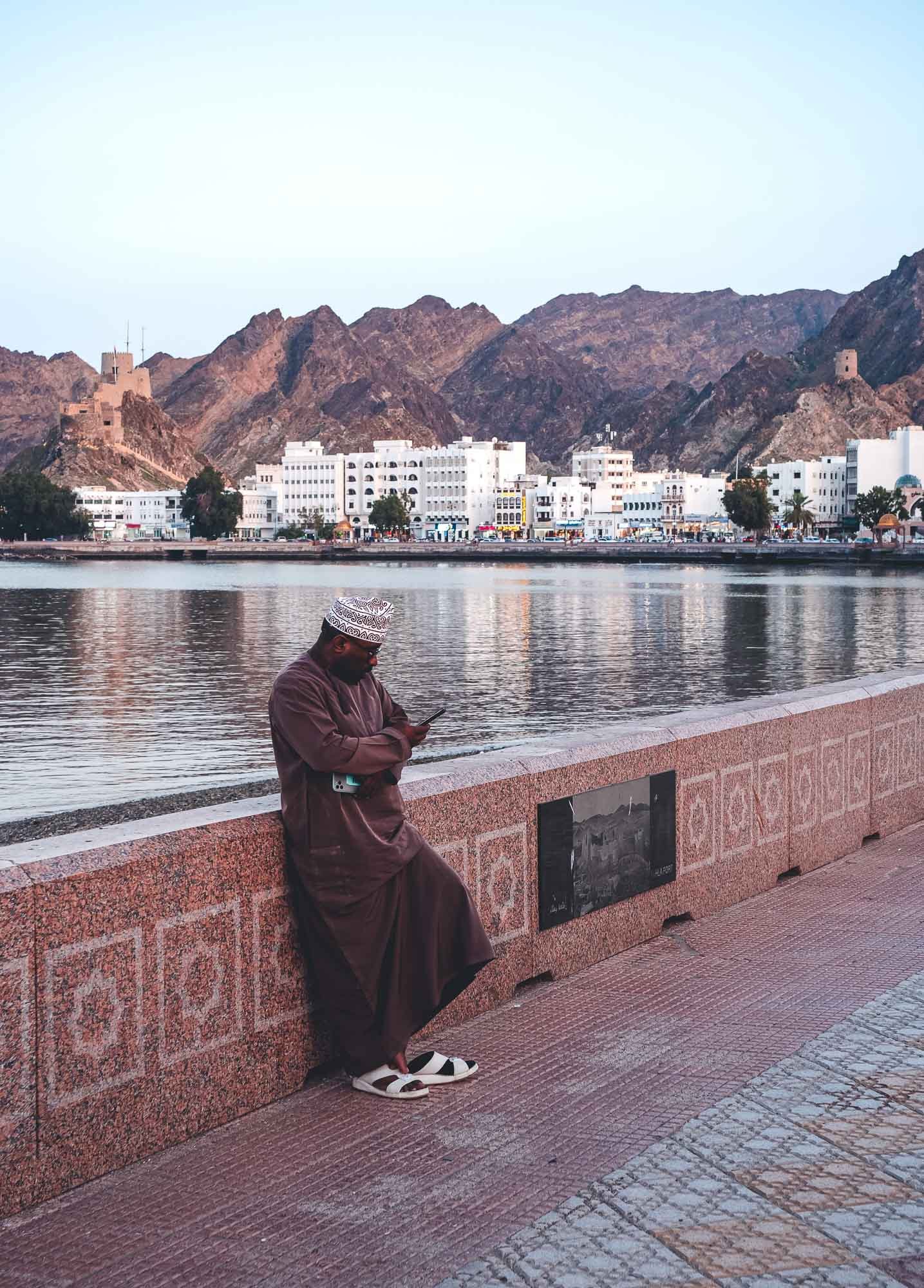
Juxtaposition
It makes for a nice contrast with the traditional Omani style.
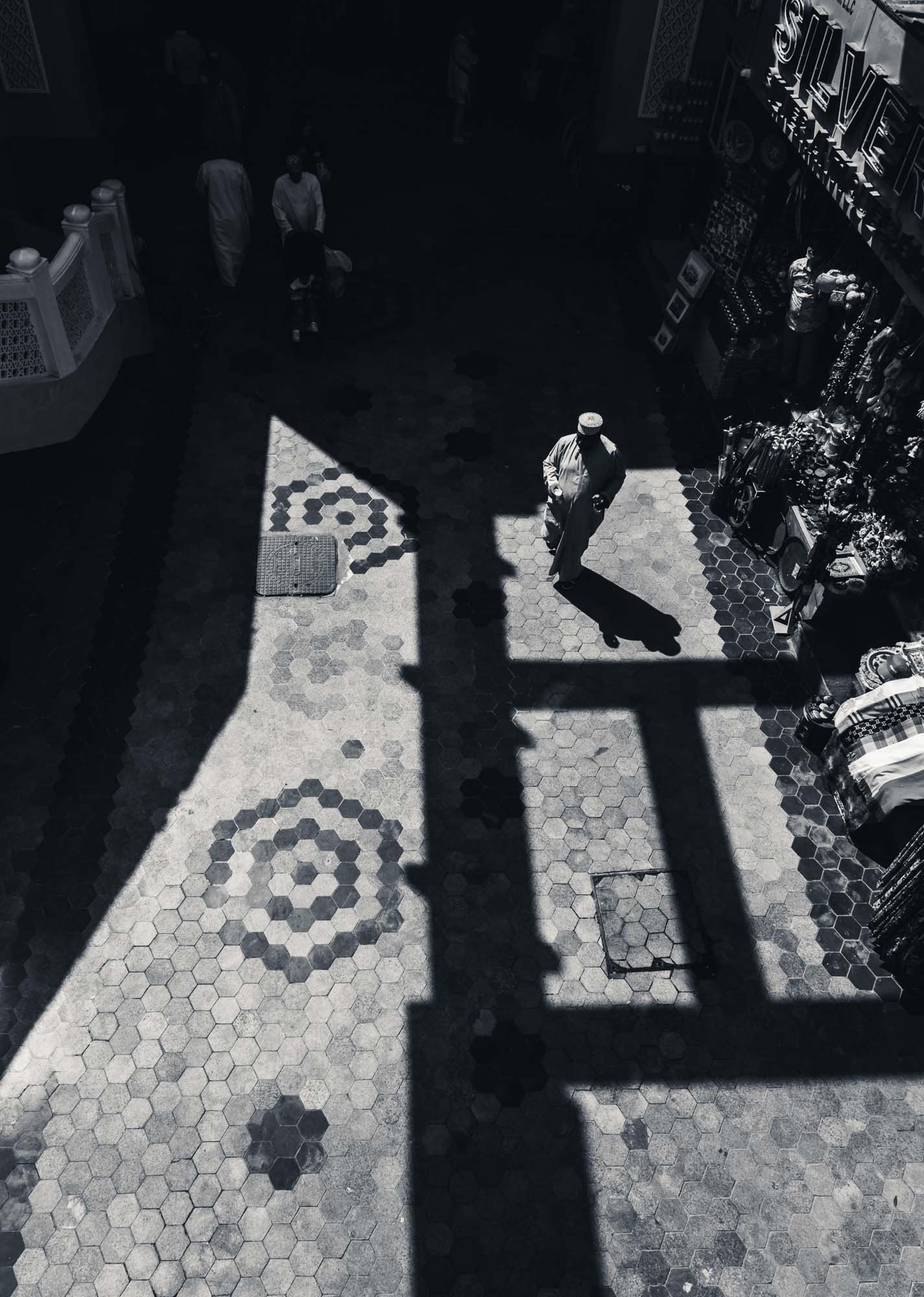
Souq Entrance
The city's souq is one of the most important in Oman, and dates back 200 years.
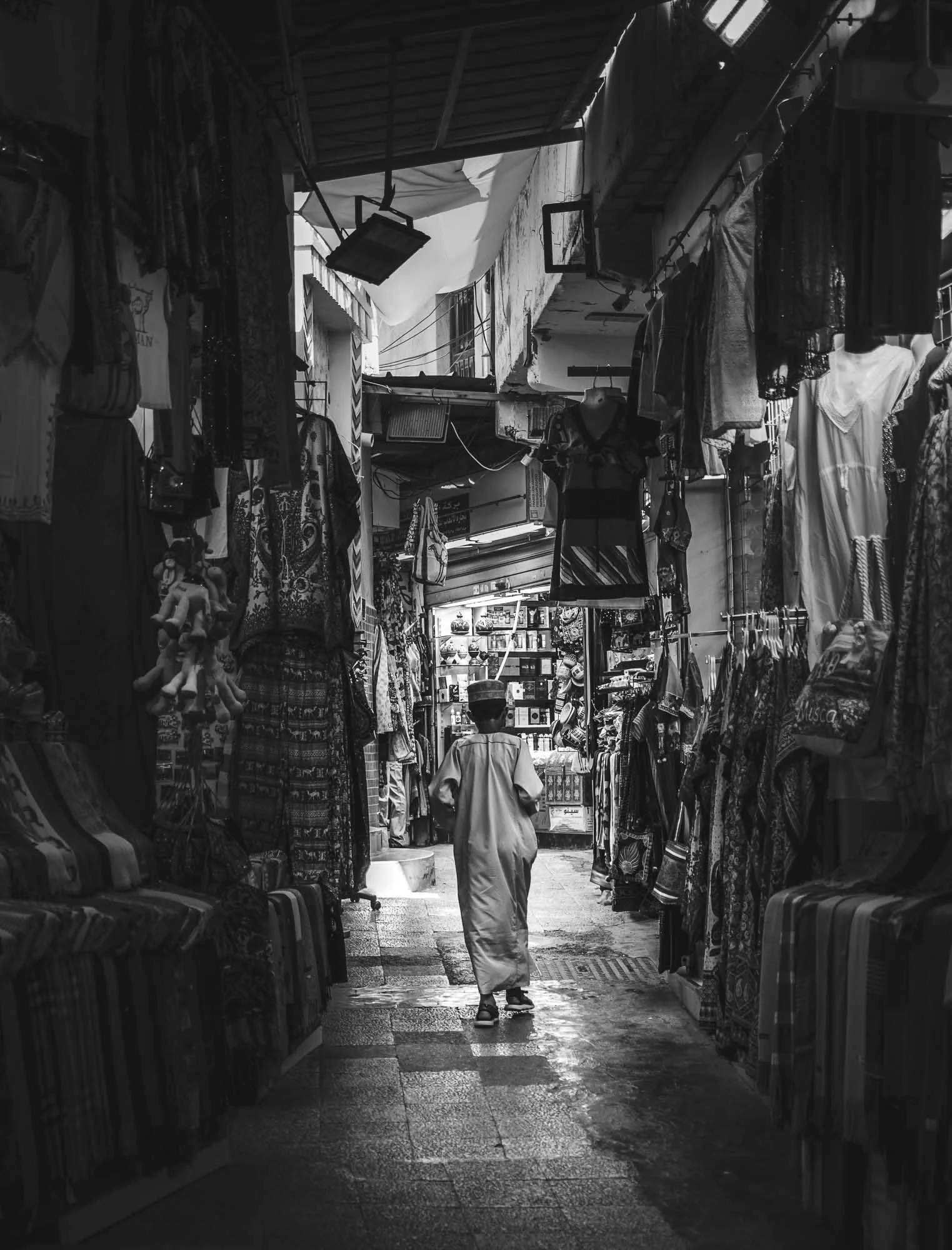
Into the Light
It's nicknamed the "Market of Darkness" due to the roof blocking most of the sunlight even during the day.
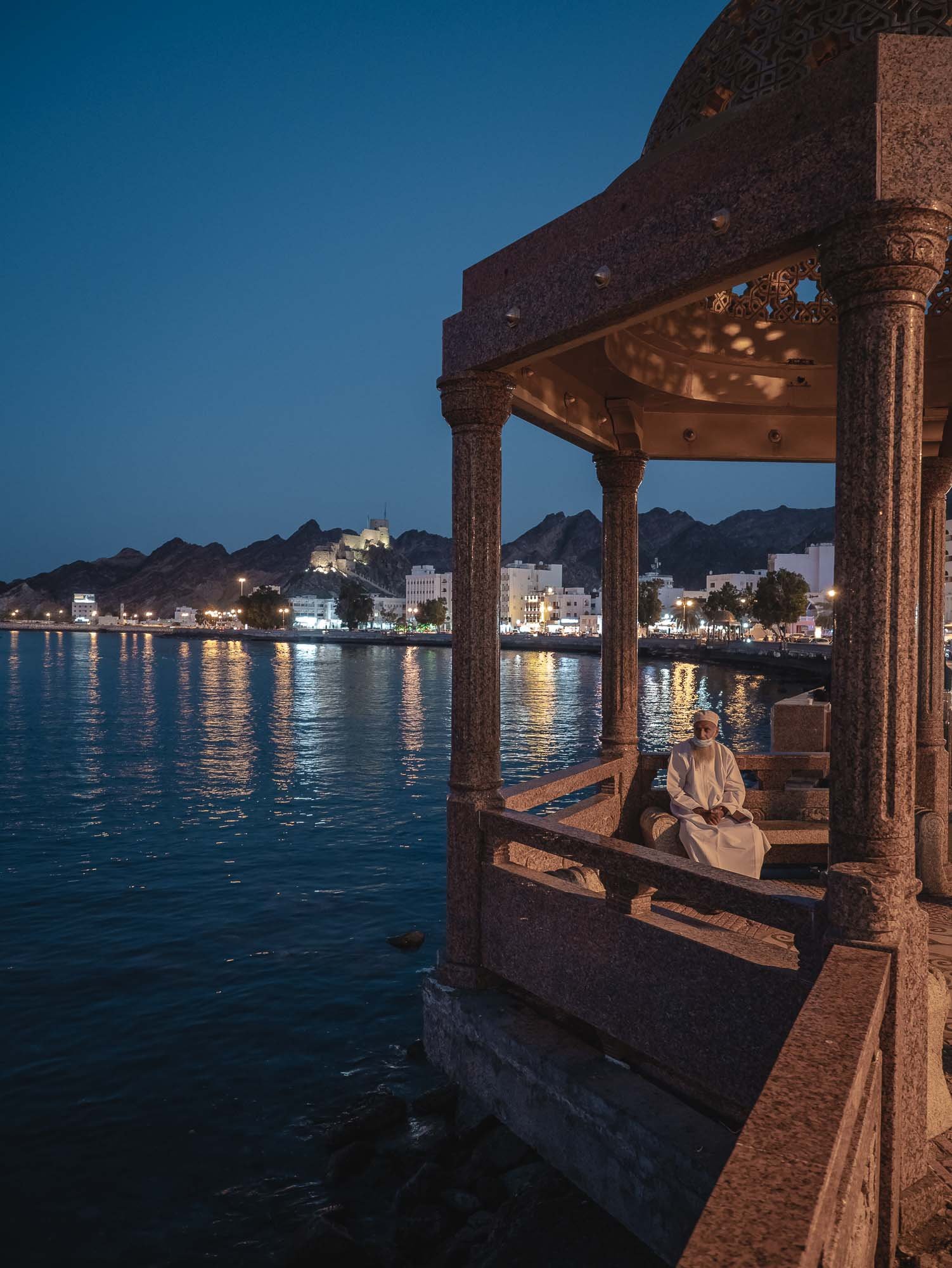
Muttrah
Evening views along the corniche, with the local fort in the distance.
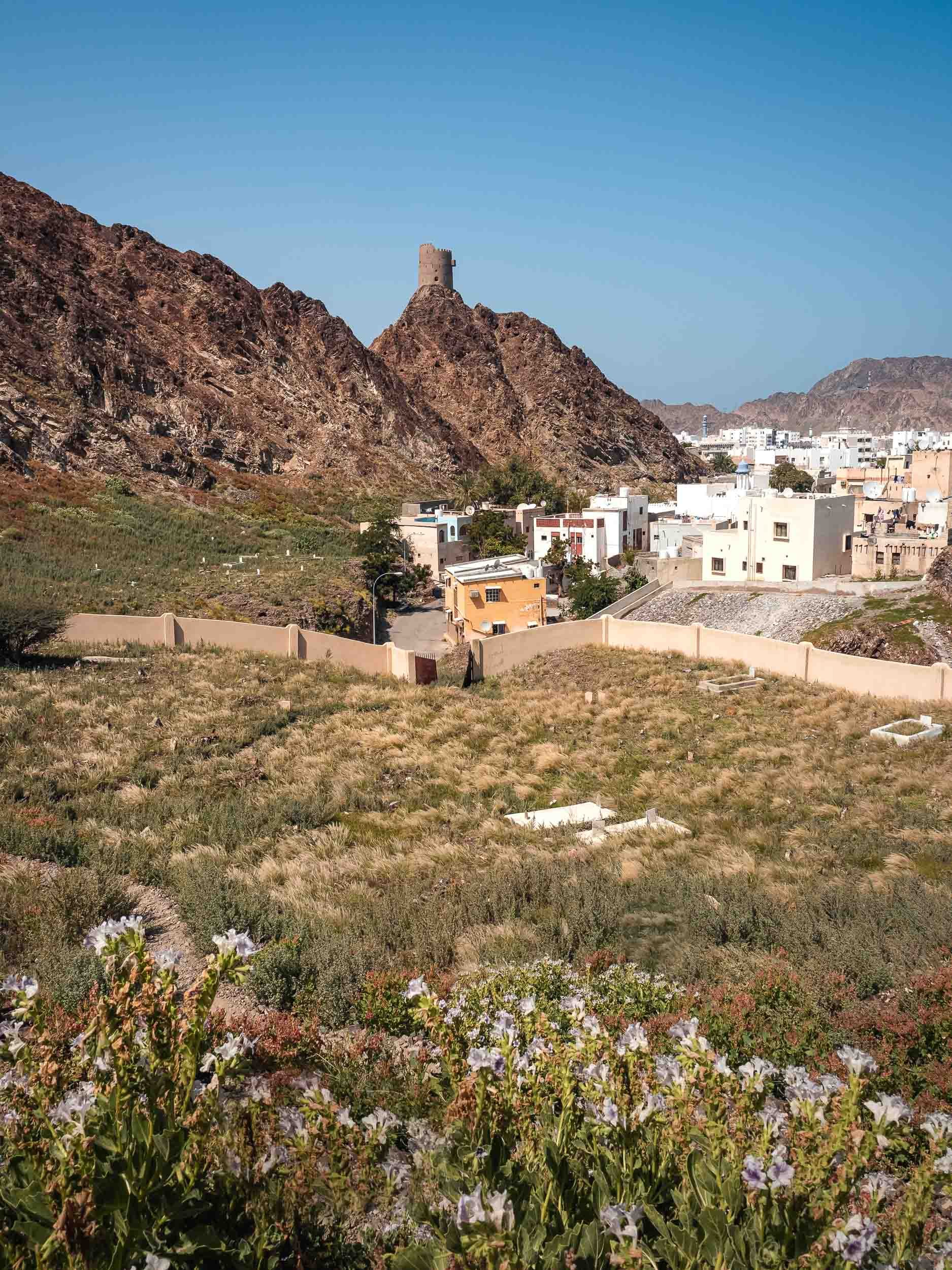
Hiking in the City
There's a 1h hike from Muttrah to Riyam, crossing green flower fields and a beautiful wadi - in our case filled with water - on the way.
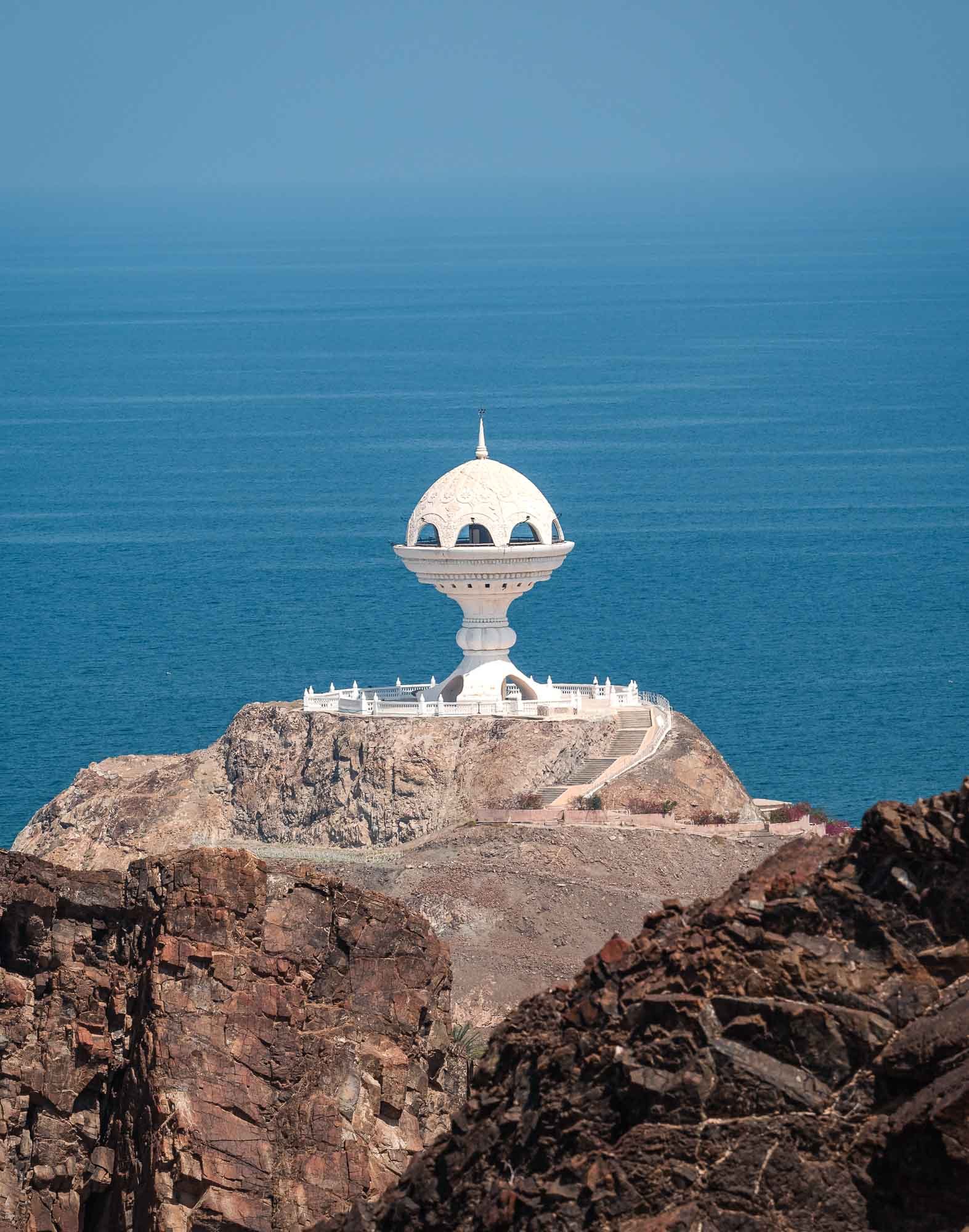
Riyam
At the end of which, you're rewarded with this view of the Riyam Park Monument, often termed as the "giant incense burner" due to its shape.
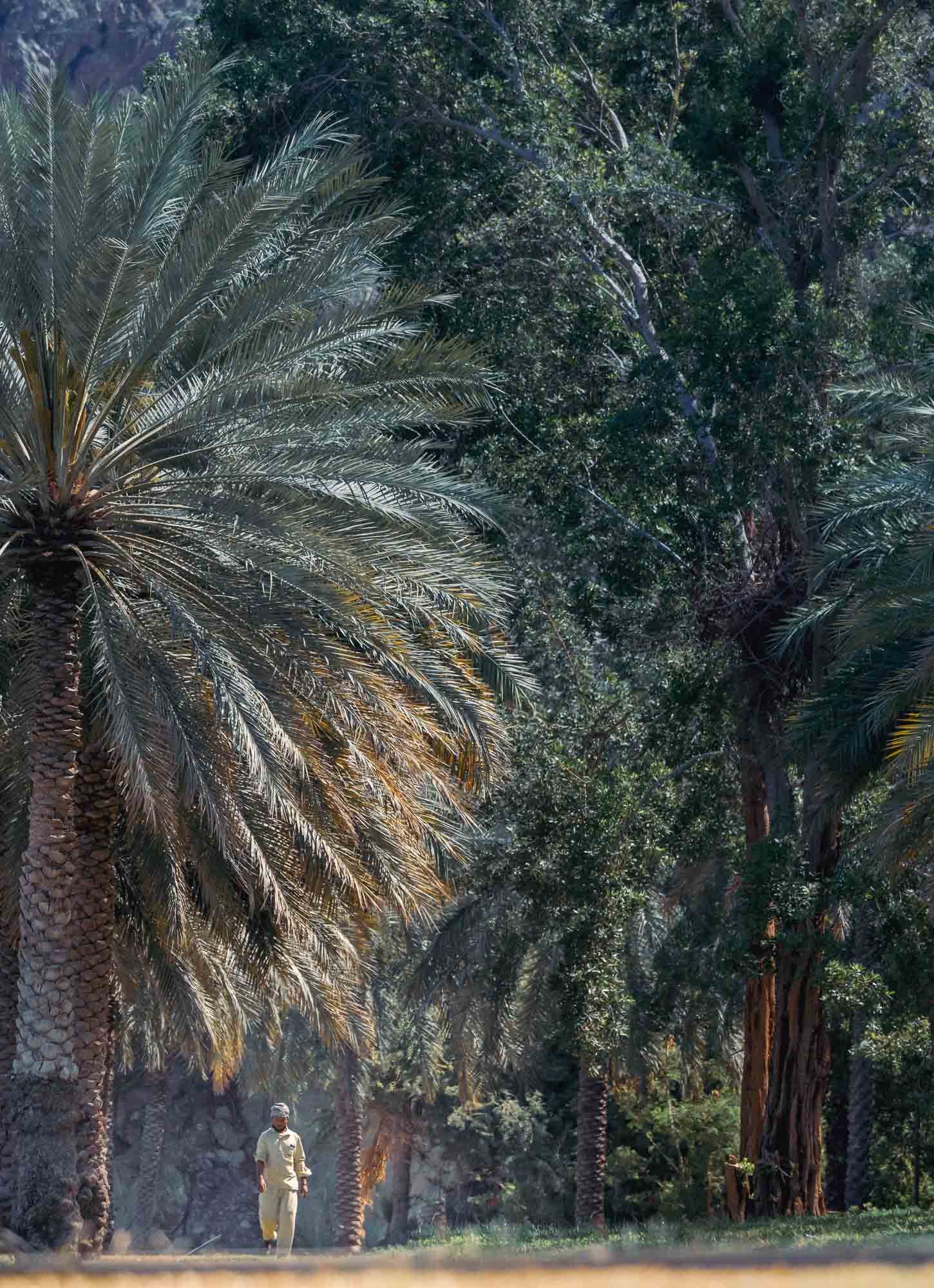
Old Muscat
Our next destination was "Old Muscat", the historic part of the city still housing many government institutions. But not before crossing a few more farms on the way, such as this one.
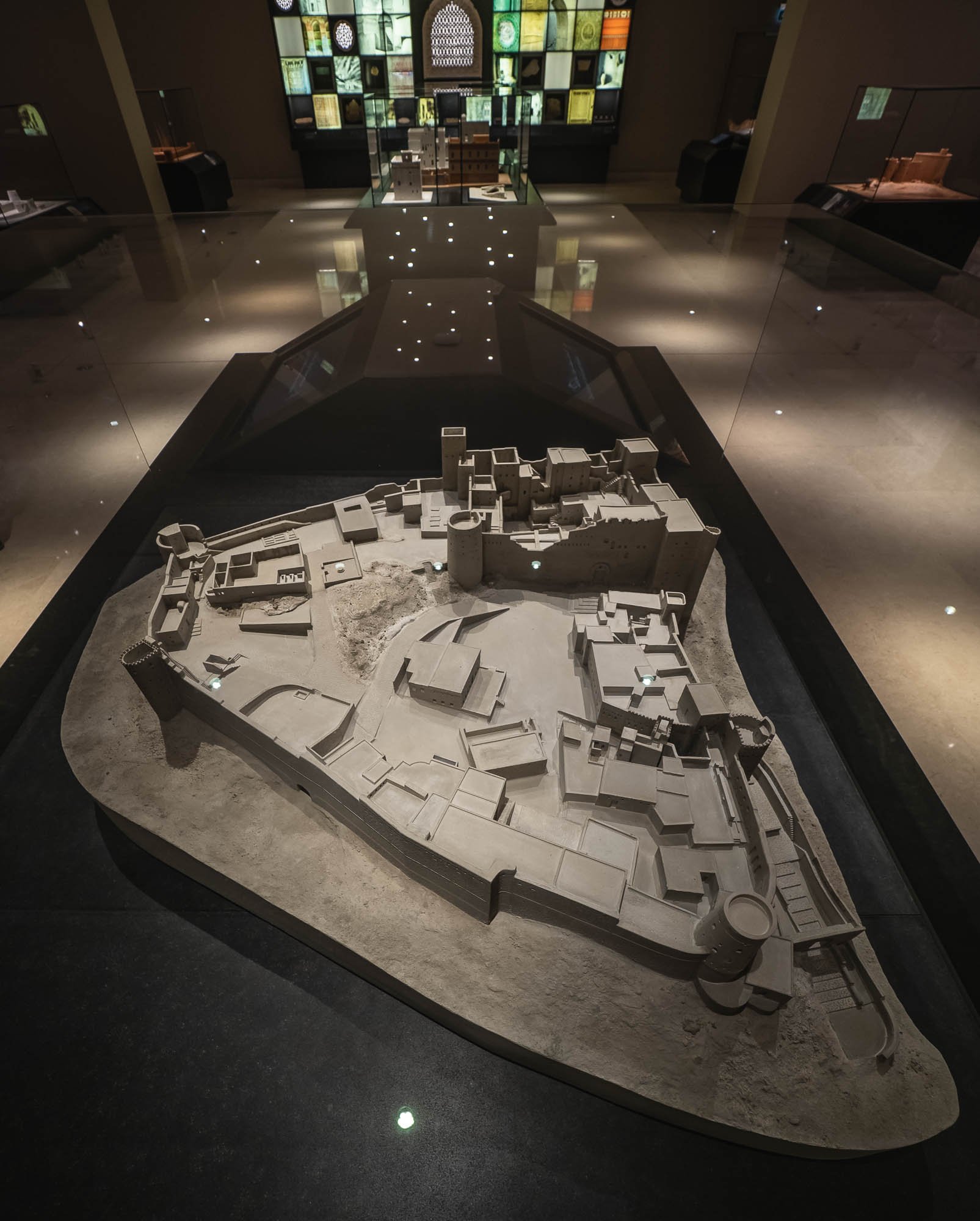
National Musem
The city is also home to the National Museum, with some interesting exhibits. I often find the history of the Middle East to be completely underrated and possibly overshadowed by its recent development. Humans have set foot here some 400,000 years ago, and there is an incredibly rich and accessible past. Reognise this fort model? It's Bahla!
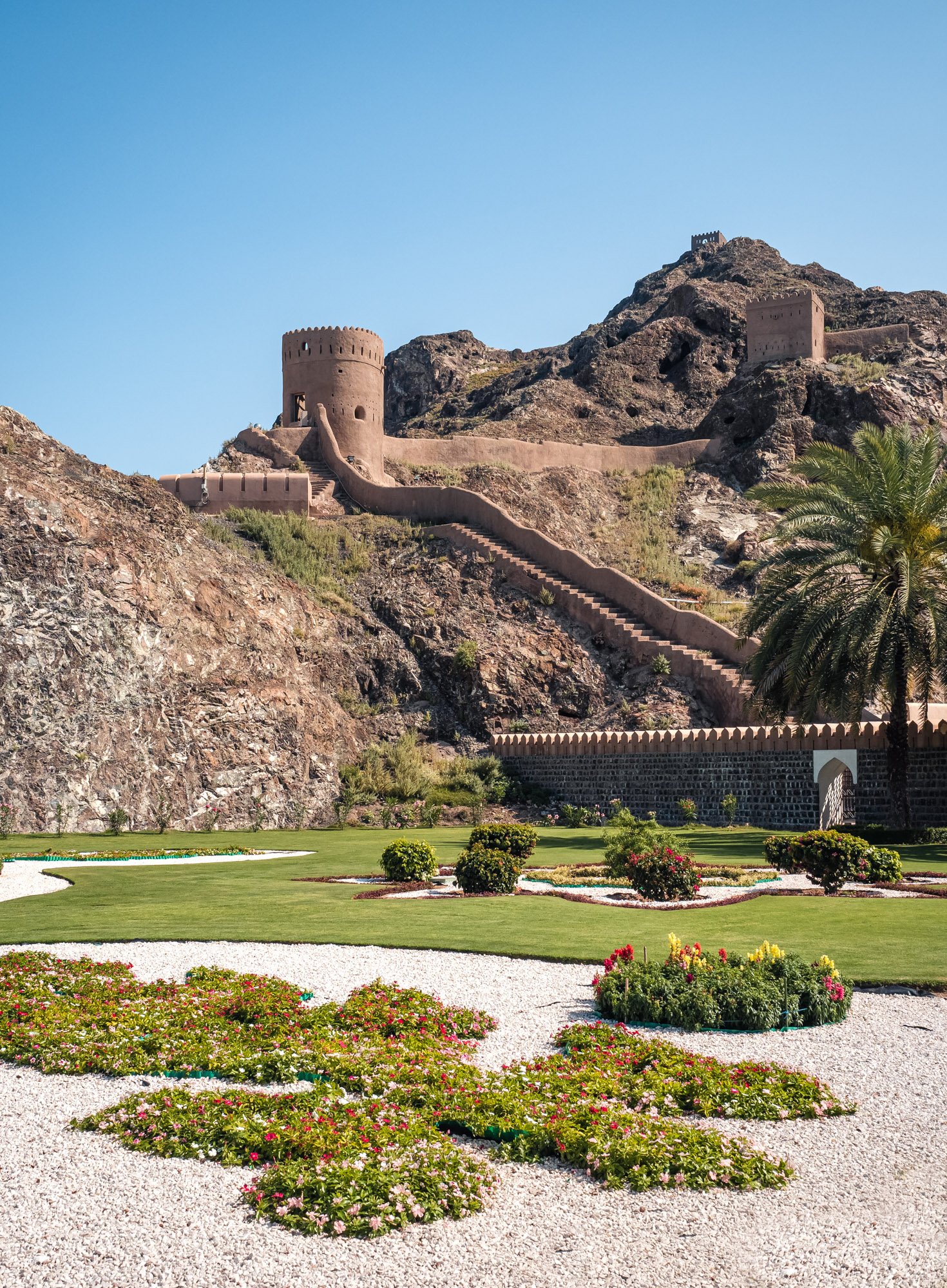
Jalili Fort
Old Muscat is also home to Al Jalili fort, built by the Portuguese in the 1500s and said to have been used as both a jail & refuge for the Omani royals. This one does not seem open to the public.
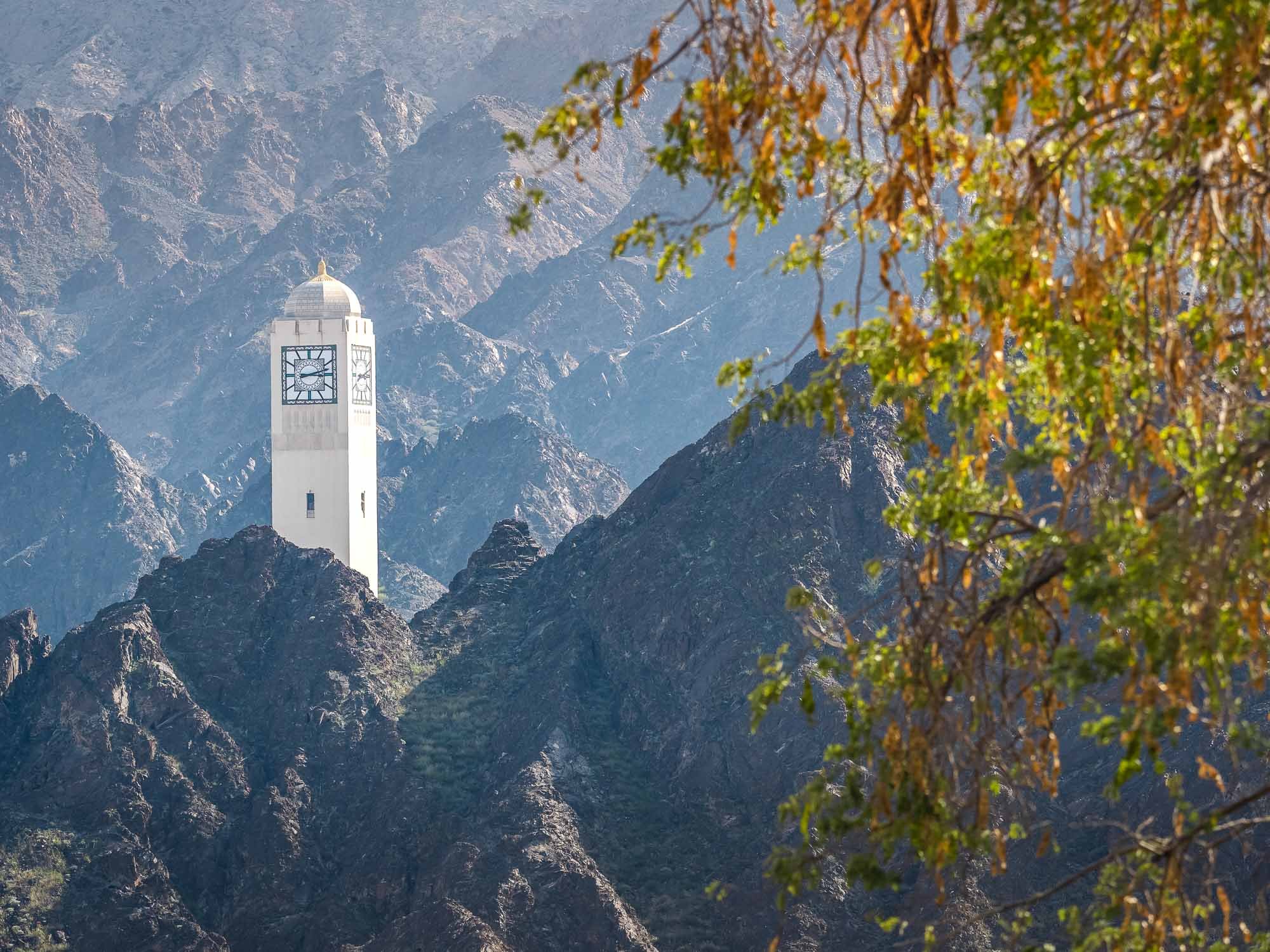
Al Bustan
Driving a bit further along the coast brings you to the Al Bustan, home to the famous hotel (also where my grandmother used to stay in the 80s) and the State Council, which is the building this clock tower belongs to.

Qantab
Another few kilometres and you reach Qantab, home to this beauitful beach and a natural stone arch in the sea, which we will see later...
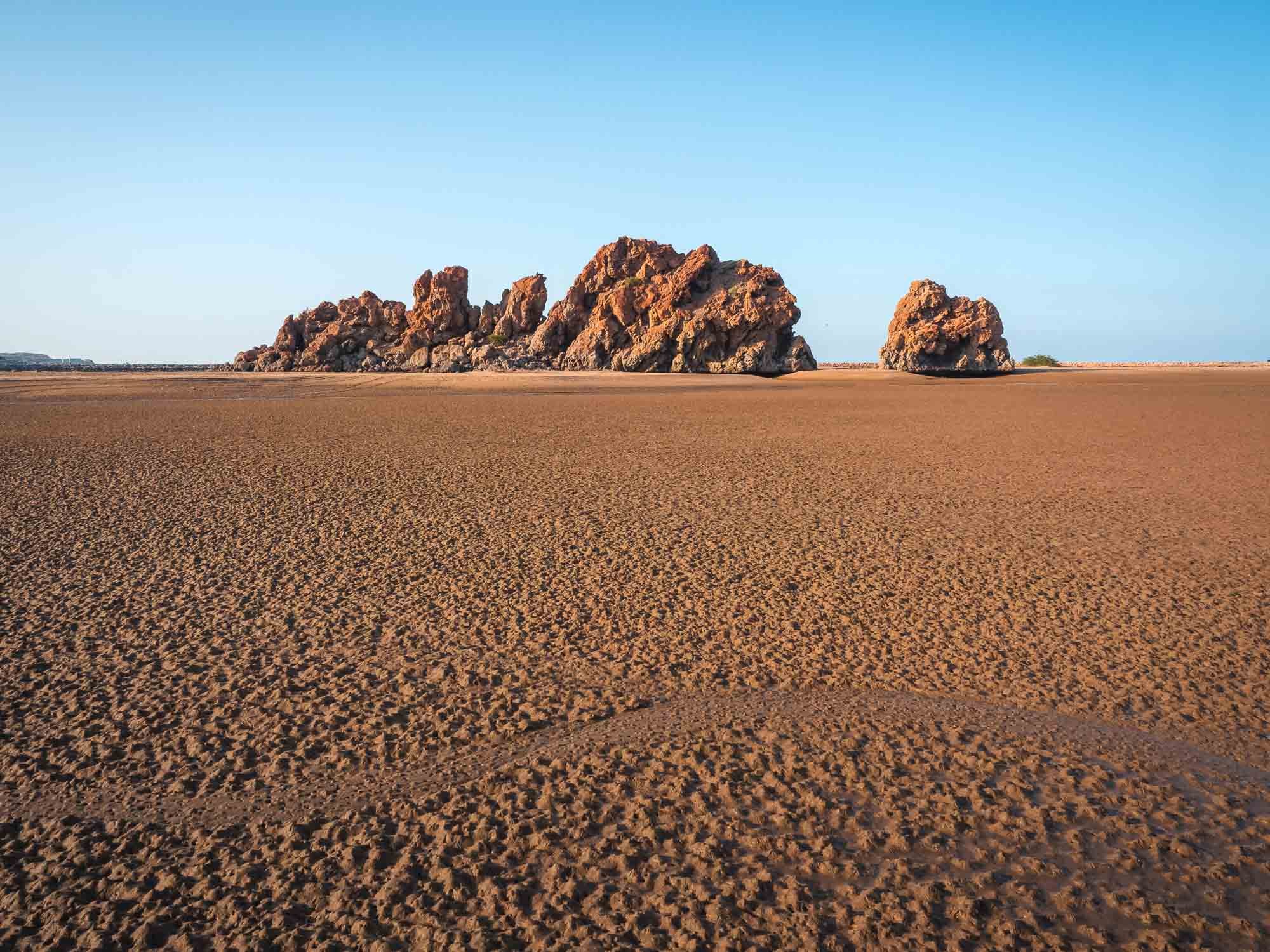
Rock Formation
This formation near Yiti was our last spot for the day, before heading back to Muscat.
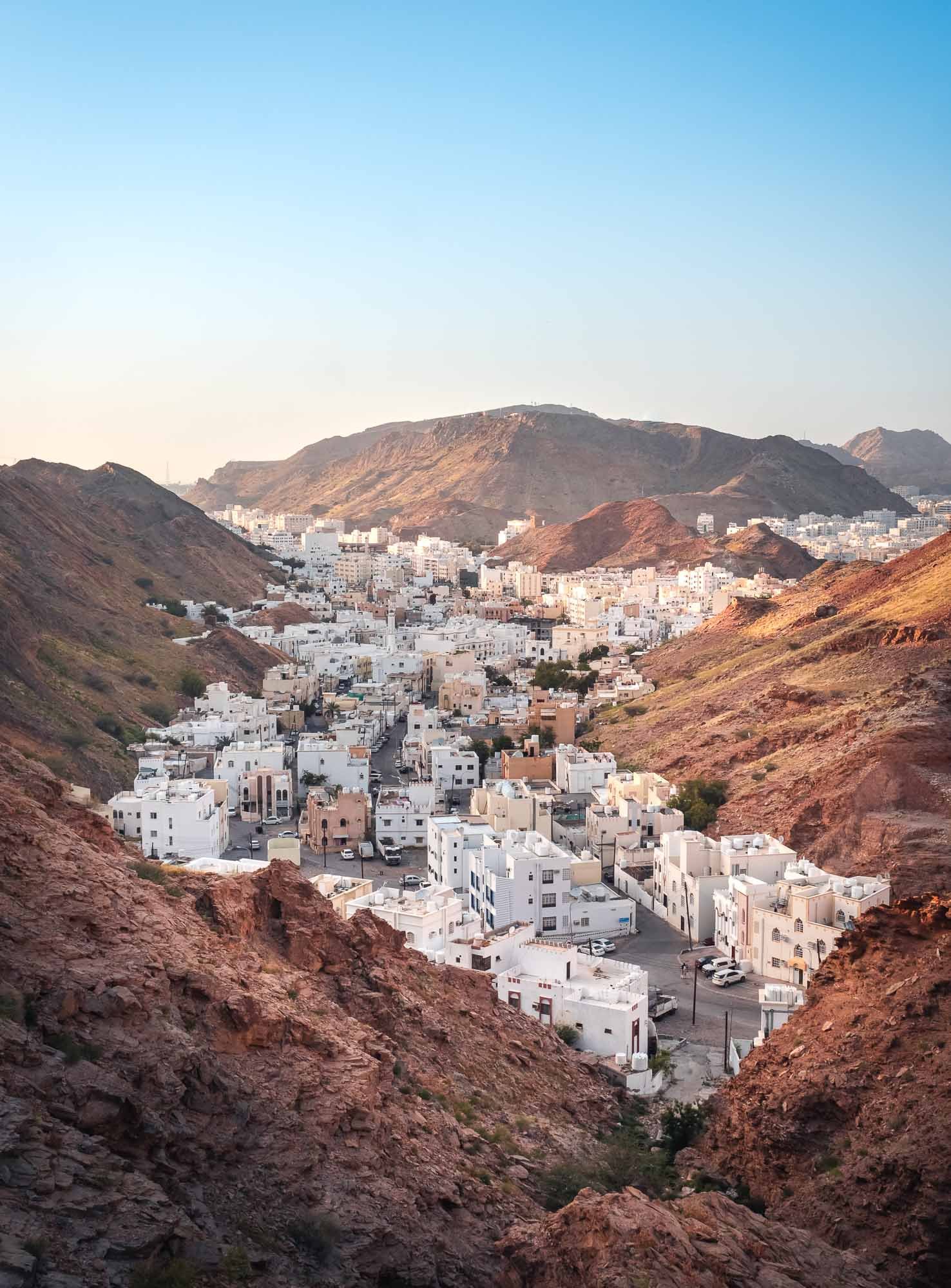
Making it Fit
On the way back we stopped at this viewpoint over Hamriya.
Along the Coast
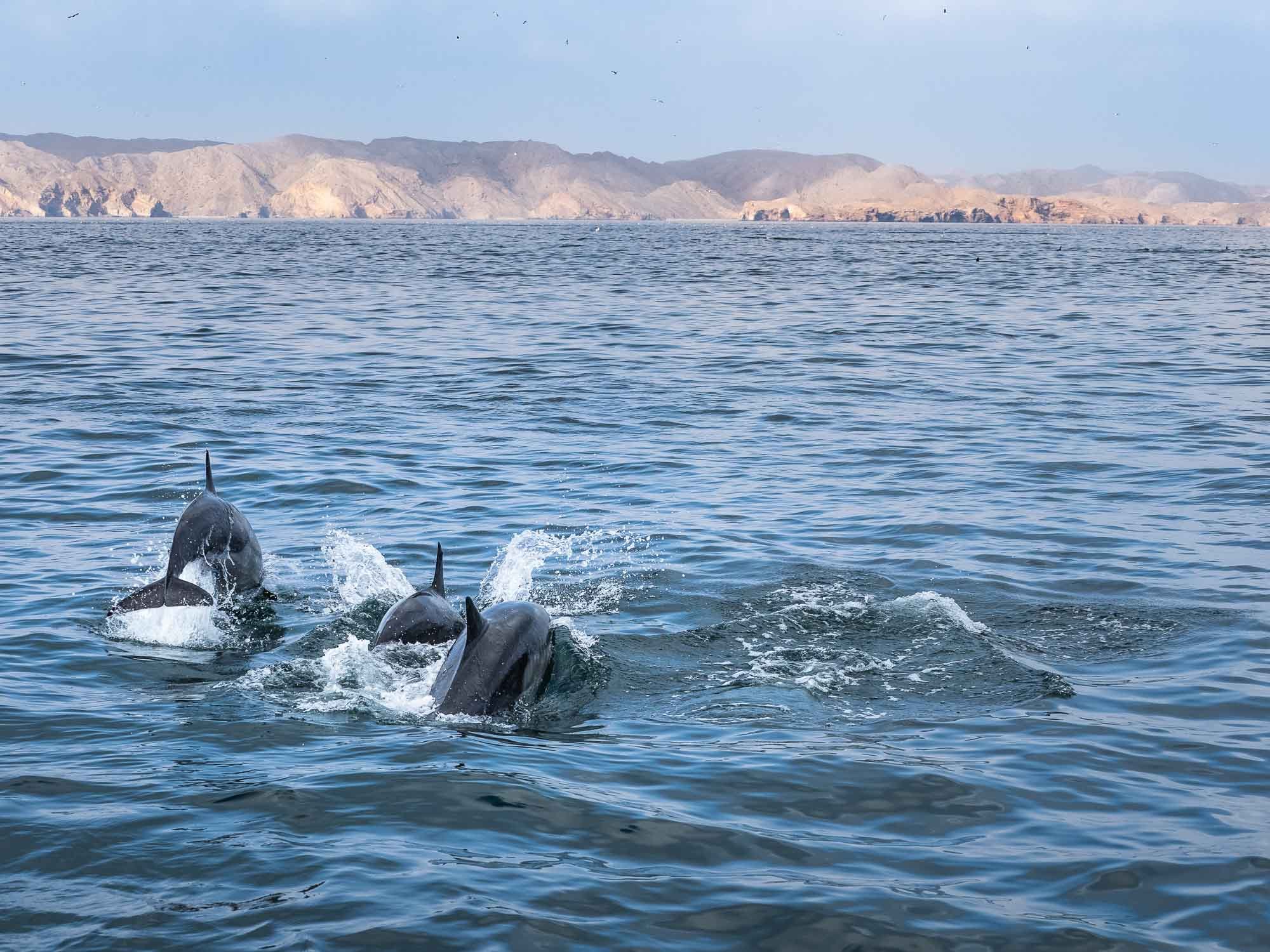
Into the Sea
An early morning boat trip the next day rewarded us with this sight - a large pod of dolphins enjoying themselves with the backdrop of the Hajar mountain coastline.

Bottlenose Dolphins
I would estimate the pod was at least 100-200 individuals in size.
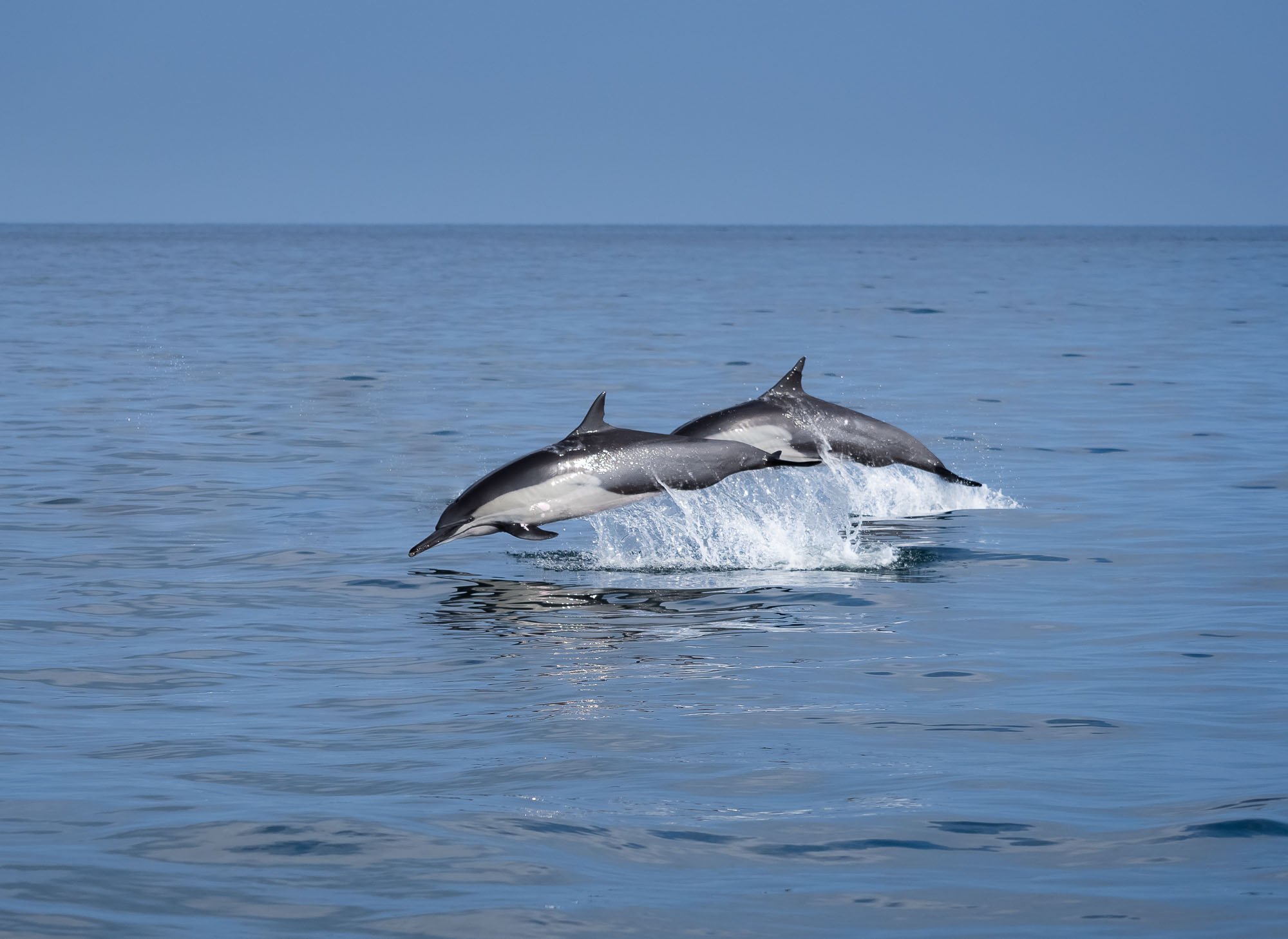
In the Air
They were calm this morning, and so there weren't many opportunities to get a photo like this, but I was able to time one correctly with the help of Olympus' ProCapture feature.
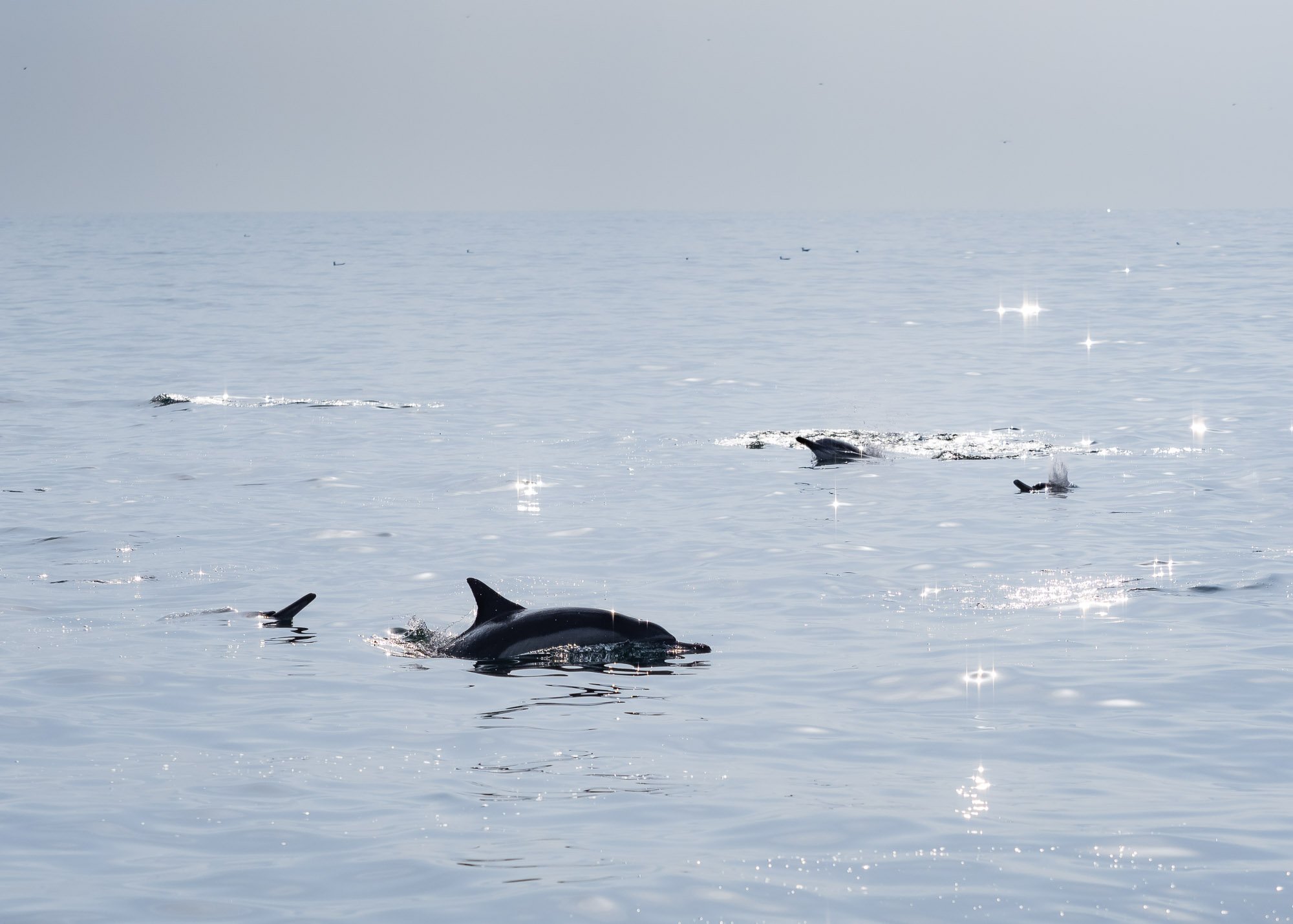
Marine Variety
The Omani Waters are home to turtles, dolphins, and wales at the right time of the year.
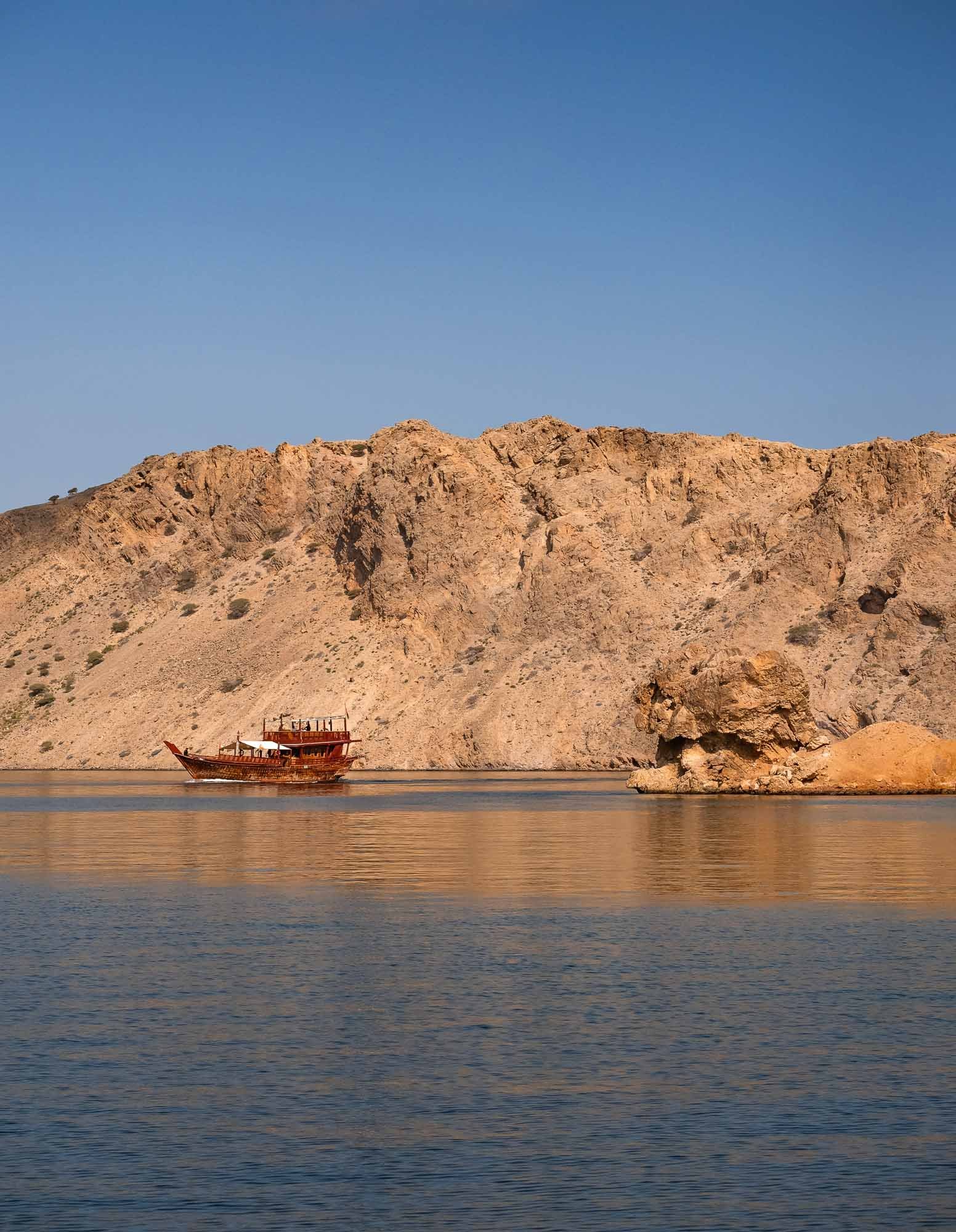
Dhow
A traditional dhow exploring the beautiful coastline.
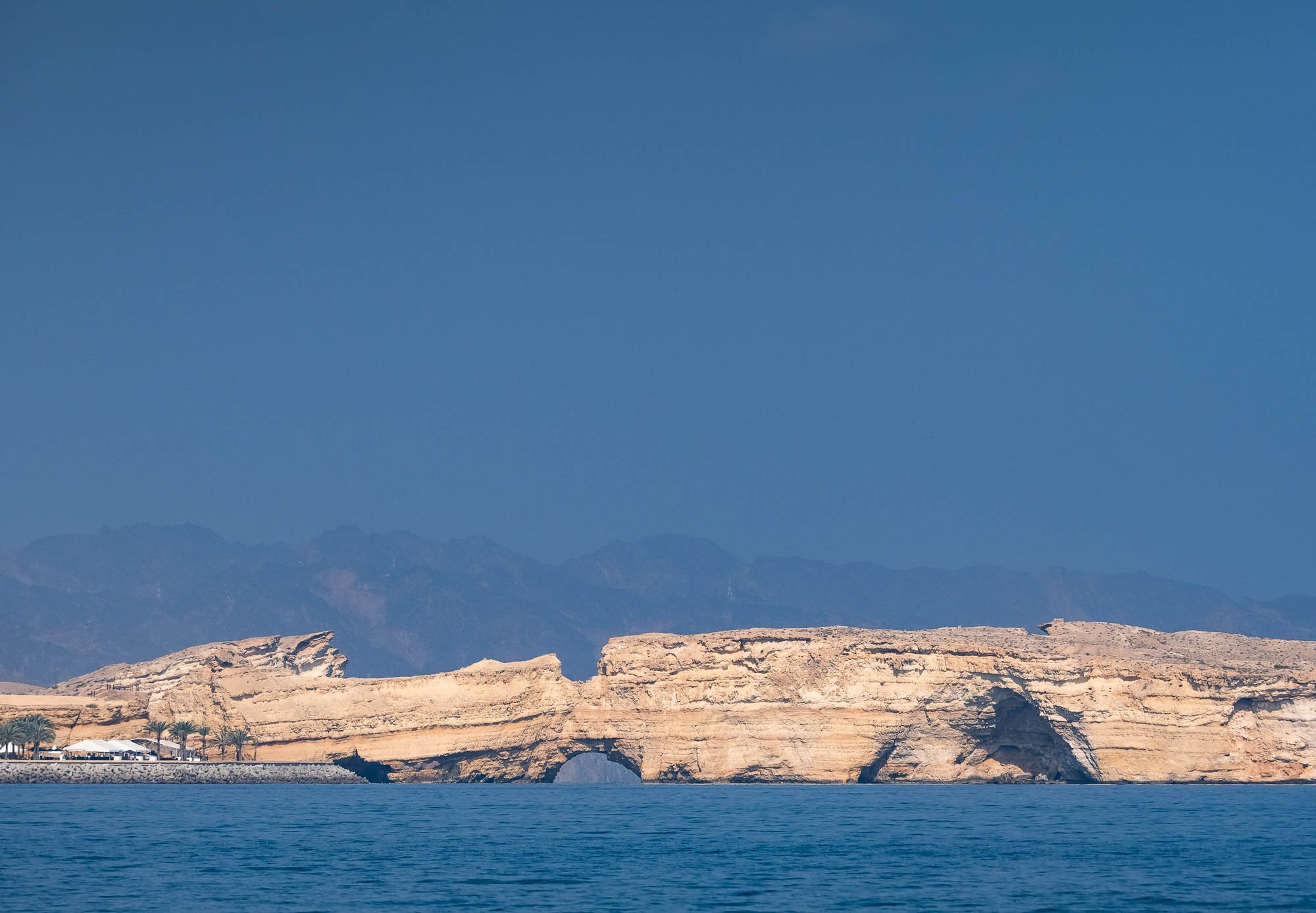
The Natural Arch
We also got to see the aforementioned stone arch near Qantab...
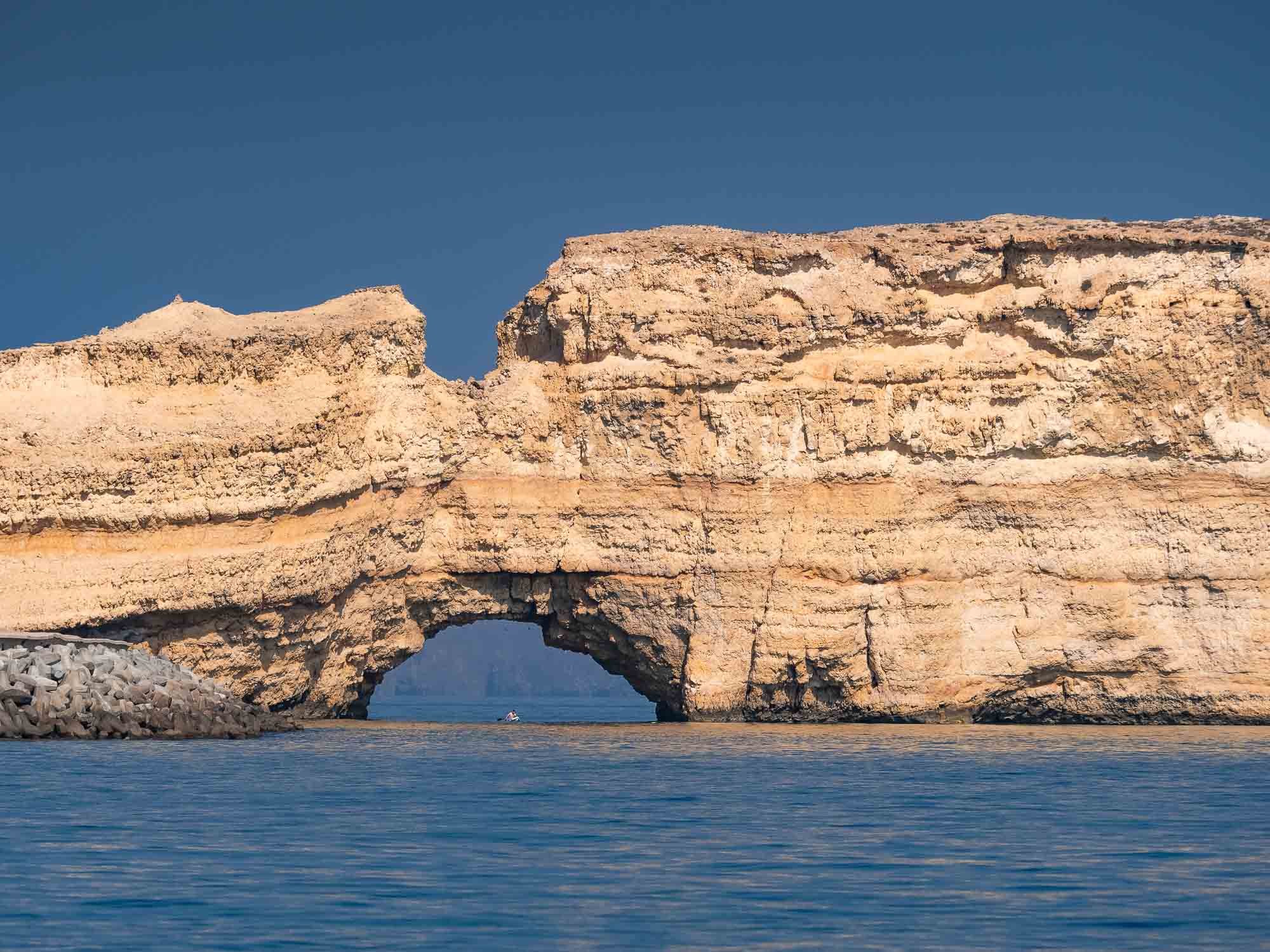
Passage
...with a single explorer on his canoe.

Morning Light
Al Bustan and the State Council buildings from the sea side.
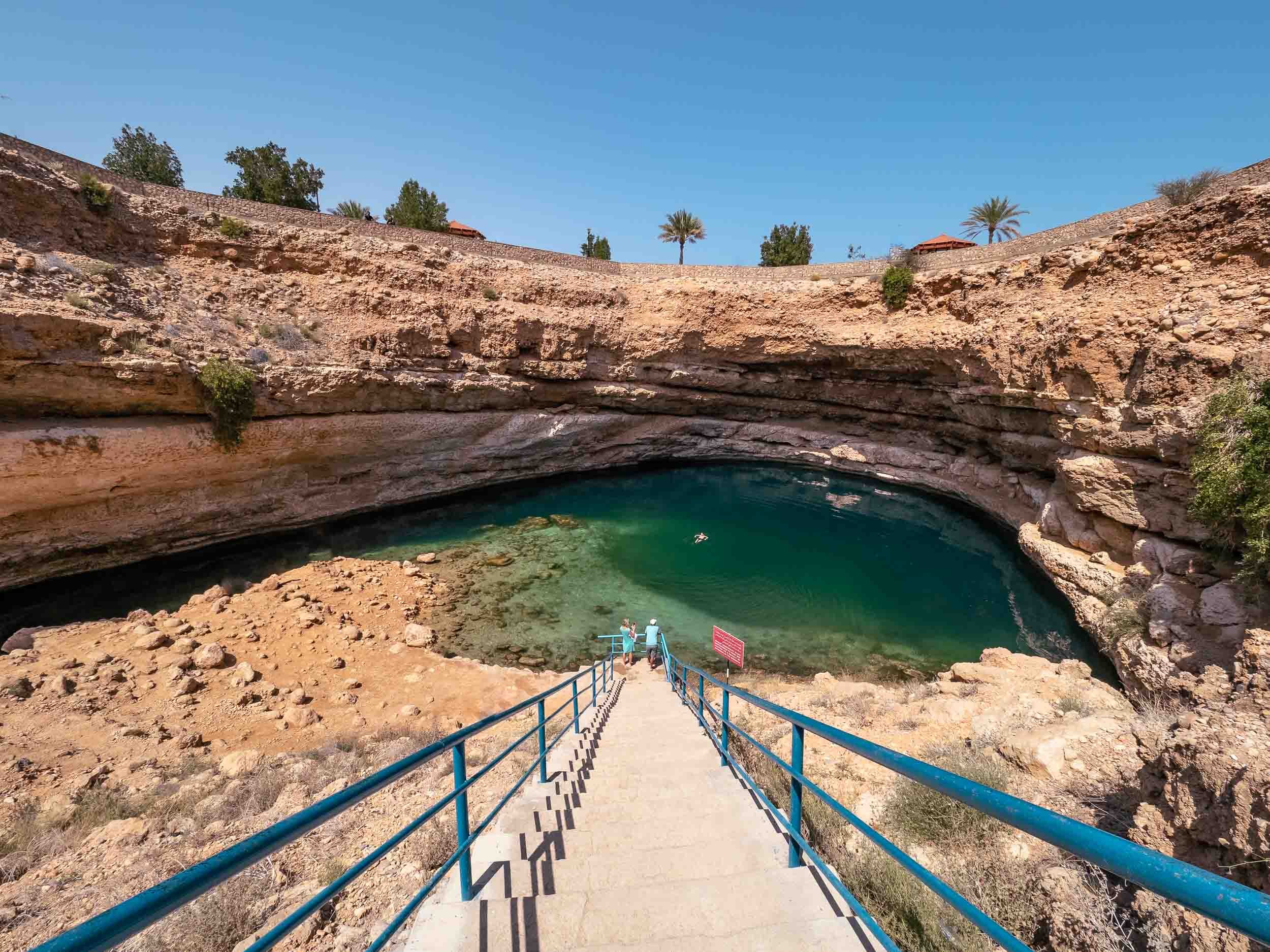
The Way Down
Stairs have been built into it, but I can testify that some people prefer jumping (not me).
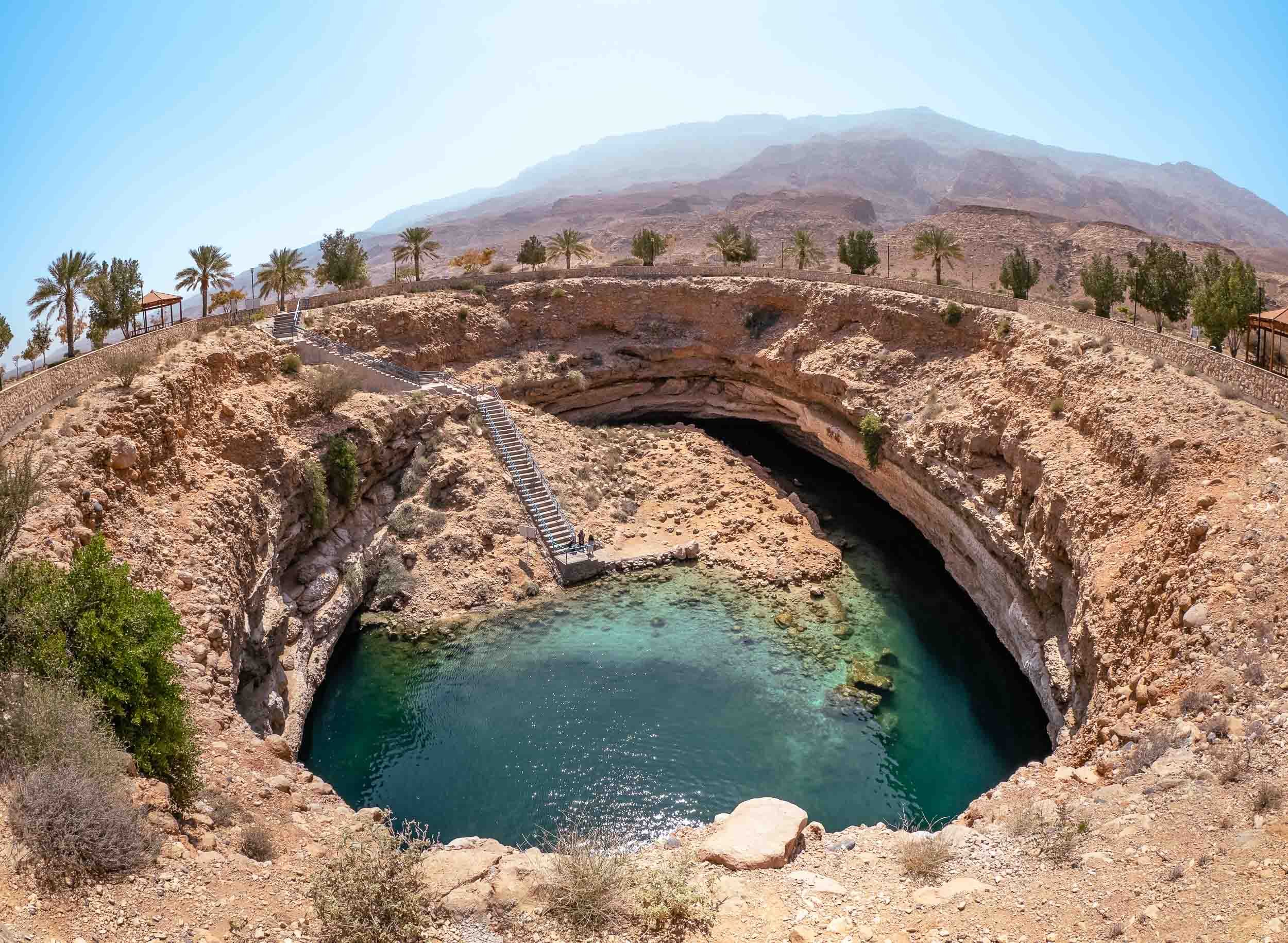
Bimmah Sinkhole
Another incredible spot of natural beauty is this sinkhole near Bimmah, about 100km from Muscat.
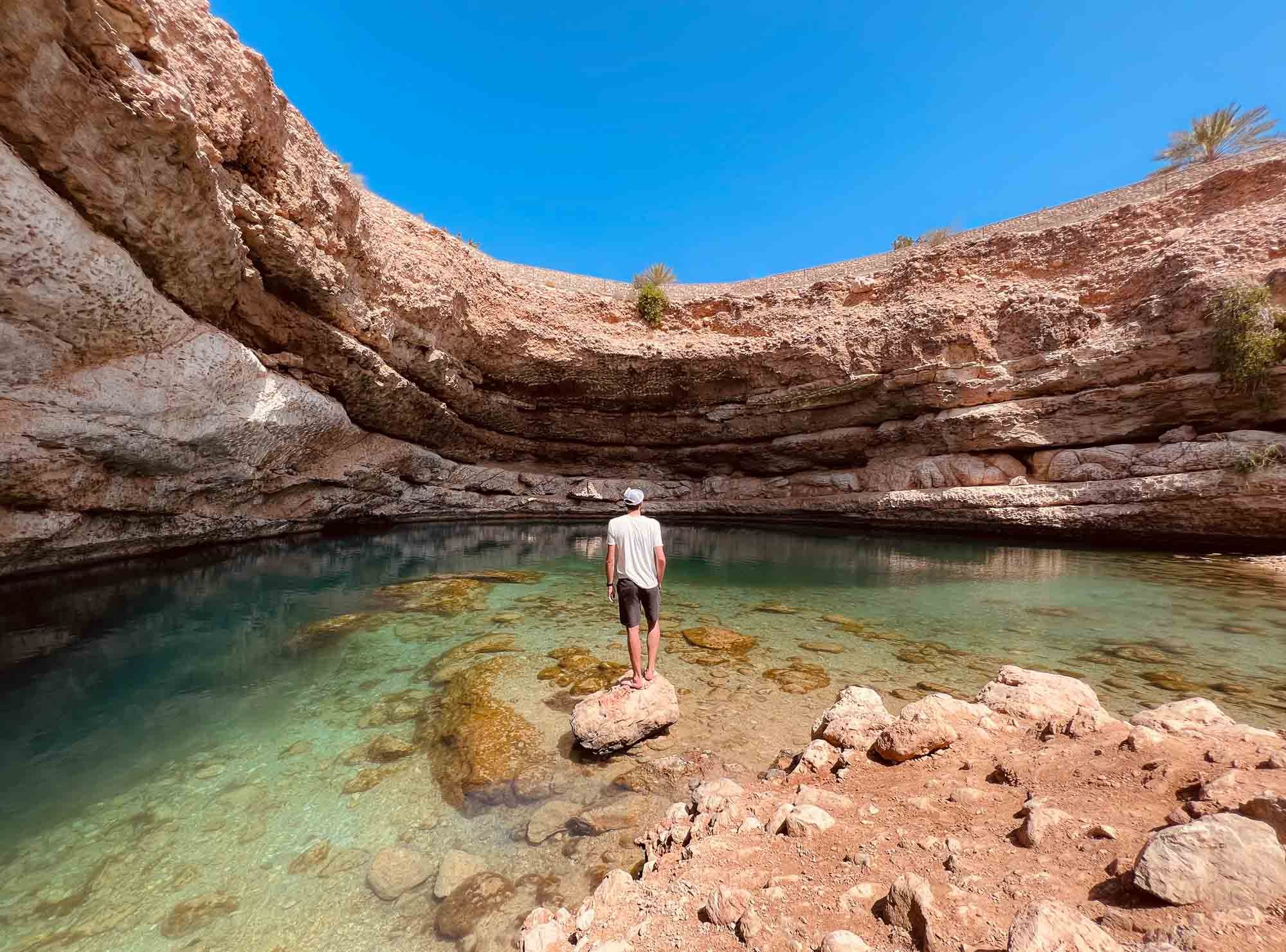
Cyrstal Clear
What a spot for a swim - or just hold your feet into the water and be treated to a fish spa.

Egyptian Vulture
Spotted this guy on the beach.
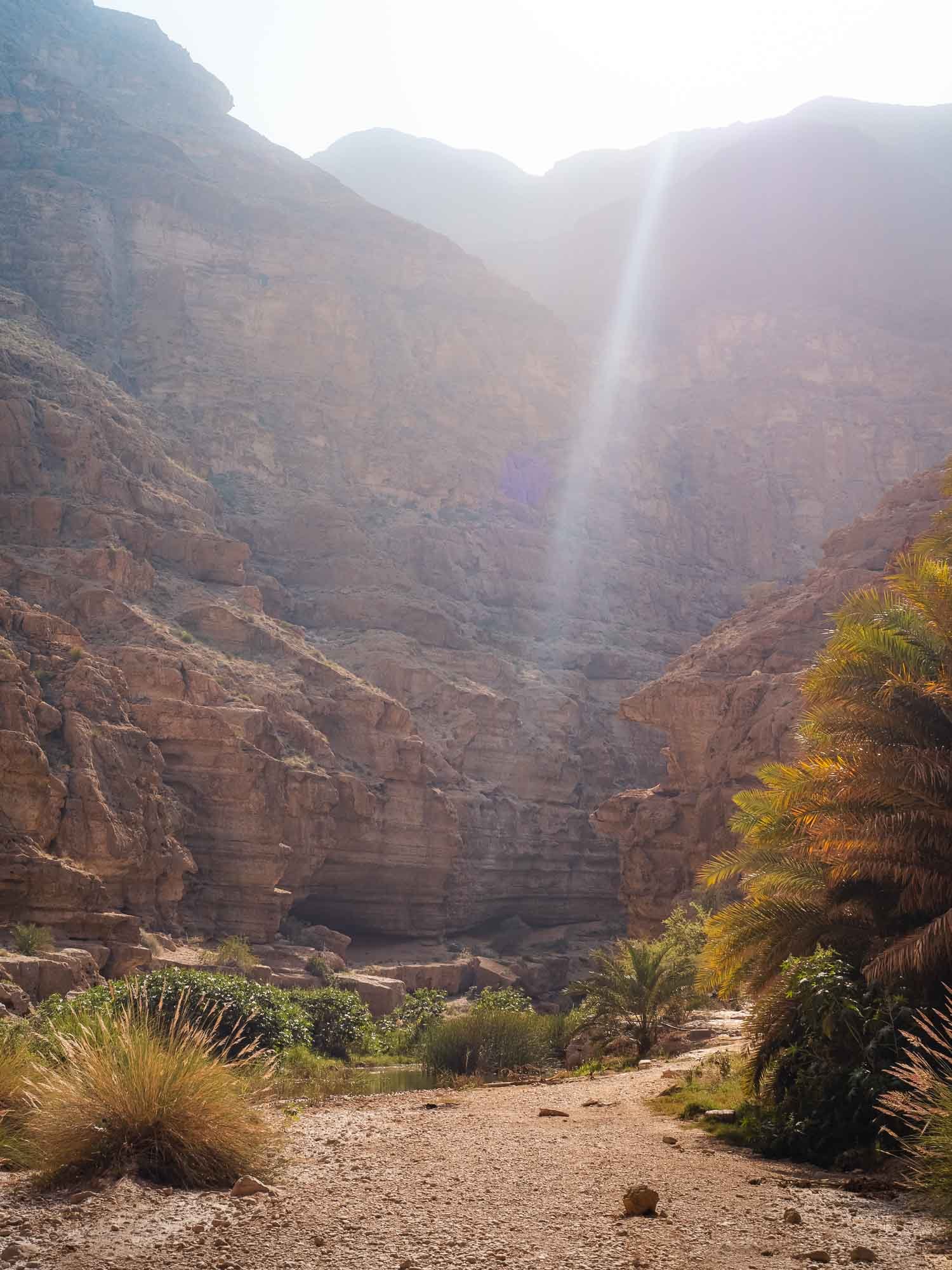
Jurassic Park or Wadi Shab?
Next up, one of the most amazing Wadi's I've seen to date - makes you feel like entering Jurassic Park.

Scale
The size of the canyon and rock formations was amazing.
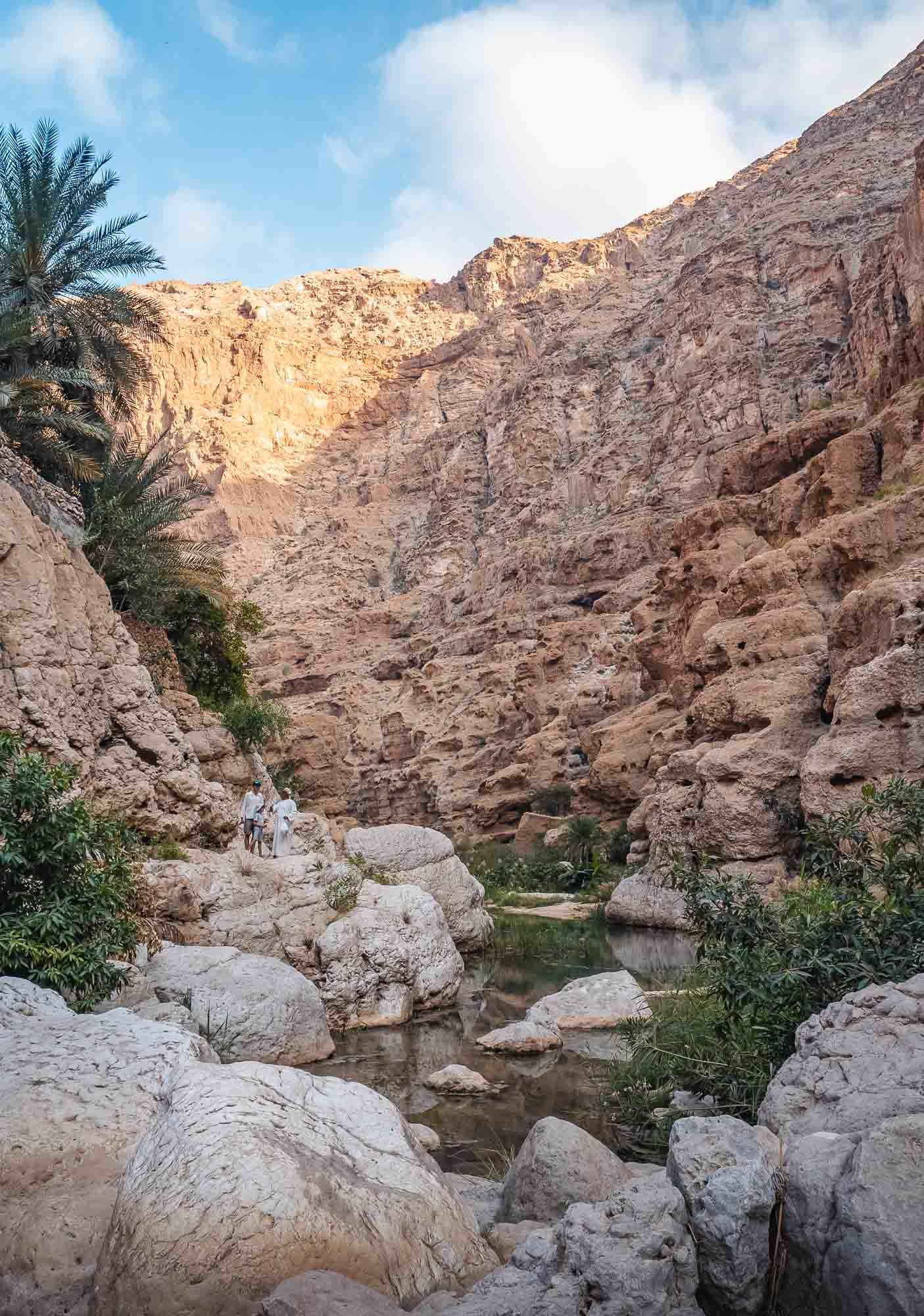
No Photos
After a 10 minute swim into the Wadi you arrive at a small cave, accessible by a narrow opening that barely fits one's head. No photos for that, got to explore yourself!
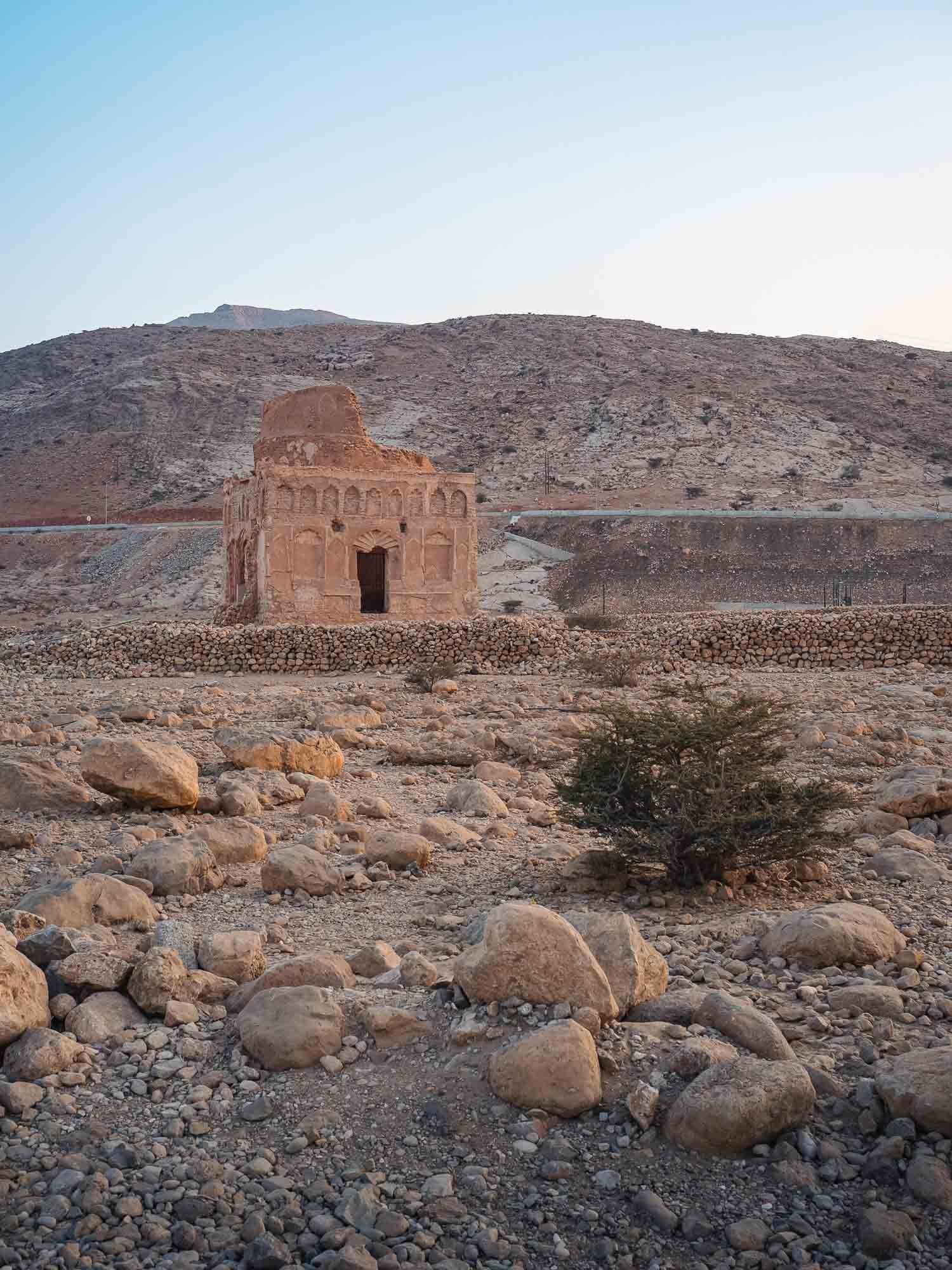
Incredible History
We drove a little further on the coast to see another World Heritage Site: Qalhat. It is unfortunately currently closed, but you can spot its most significant remaining site, the Bibi Maryam mausoleum. This city was visited by Ibn Battuta, Zeng He, and Marco Polo!
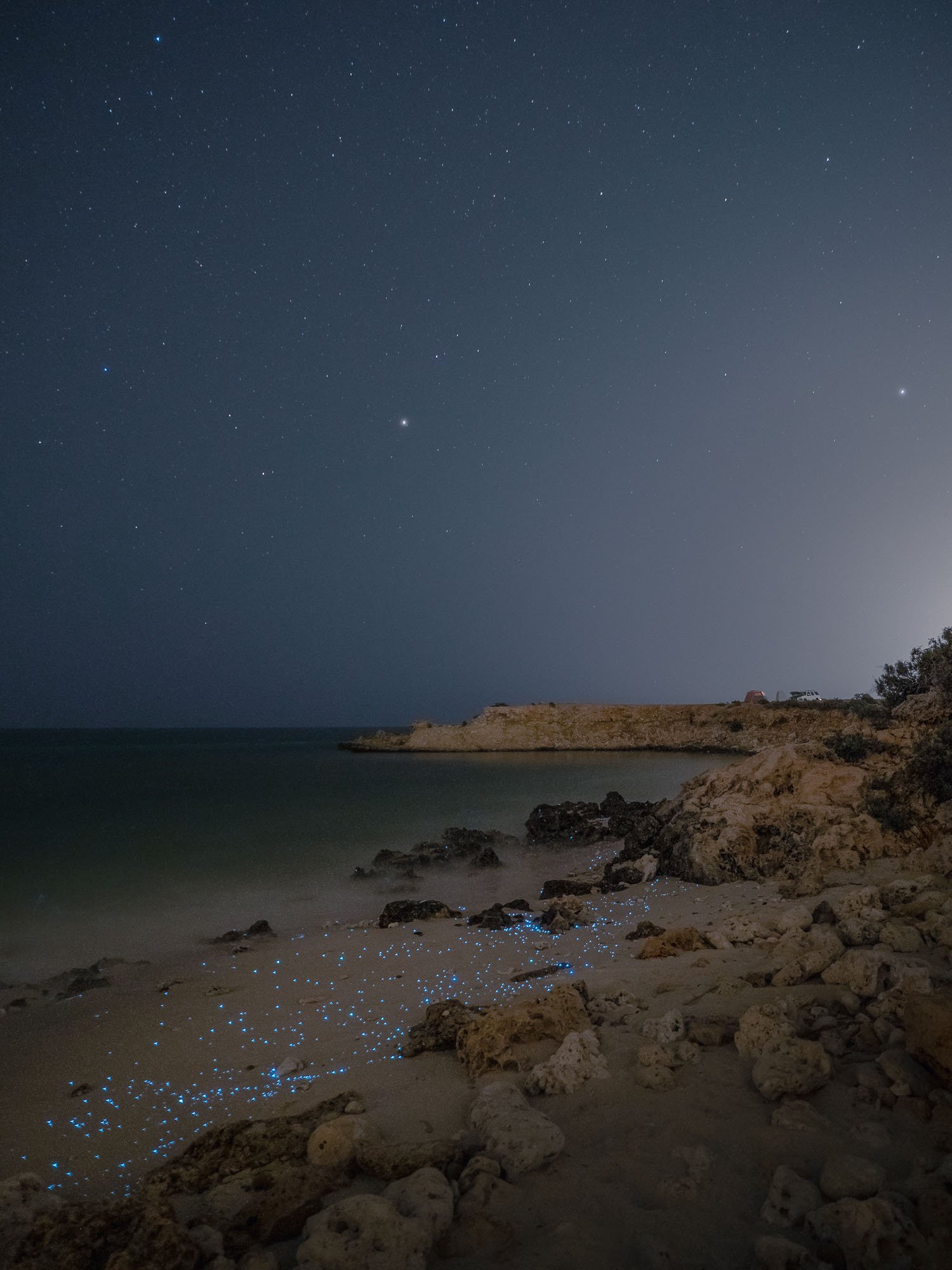
Sometimes You Get Lucky
Our plan was to spend the night on the way back to Muscat somewhere on the coast - we knew chances to see the bioluminescent plankton on the beach were next to nothing, but there was always the Milky Way or some deep sky photography...
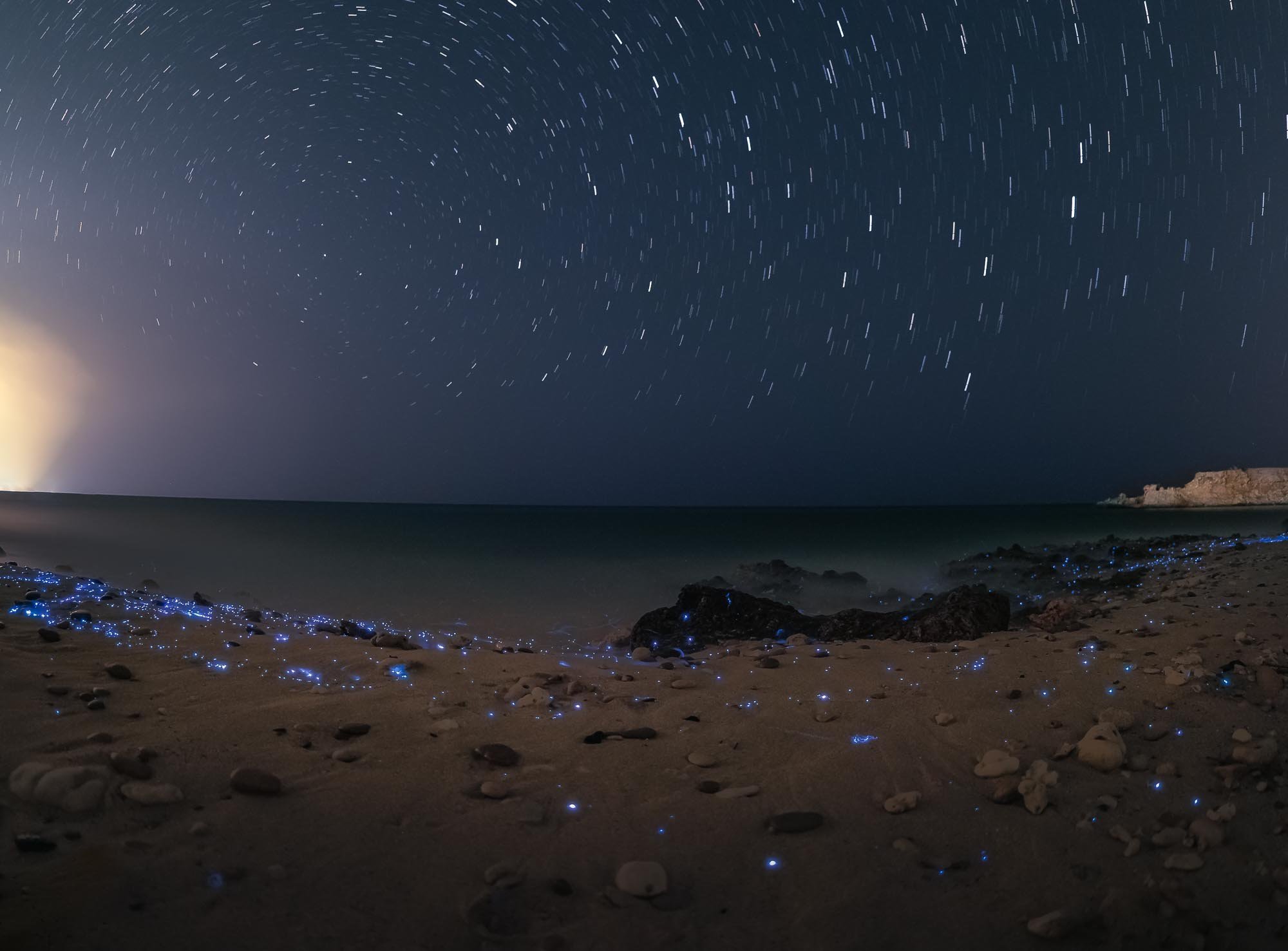
Natural Wonders
When we explored good locations to set up for the night, our second spot proved to be the golden one, and we spotted little blue dots on the beach and rocks as the waves hit.
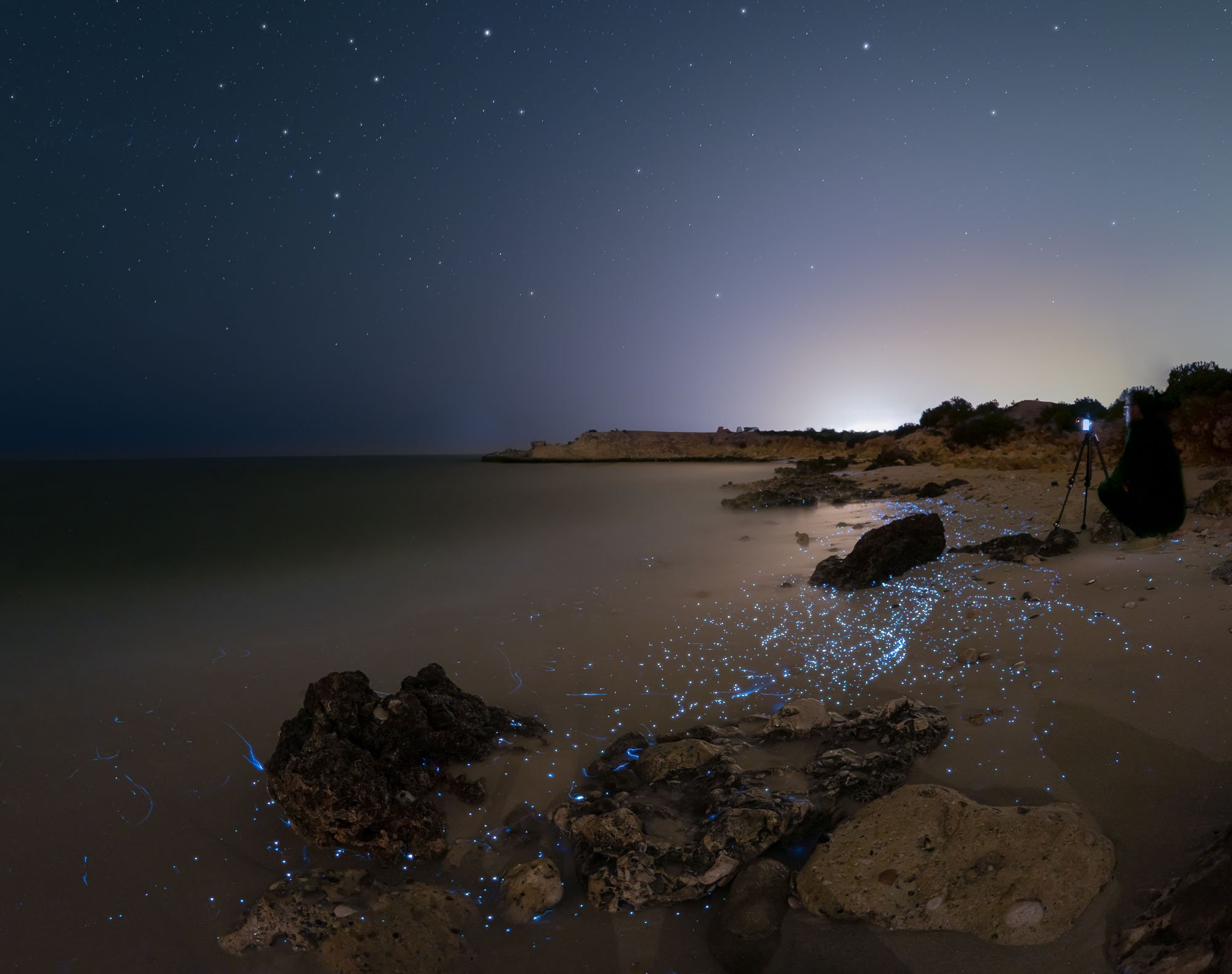
Magical
After turning off the flashlight, we saw it for what it really was - the elusive glowing blue bioluminescent phytoplankton. The blue light is produced by energy released from chemical reactions occurring inside these organisms - what a sight.
The Last Day in Muscat
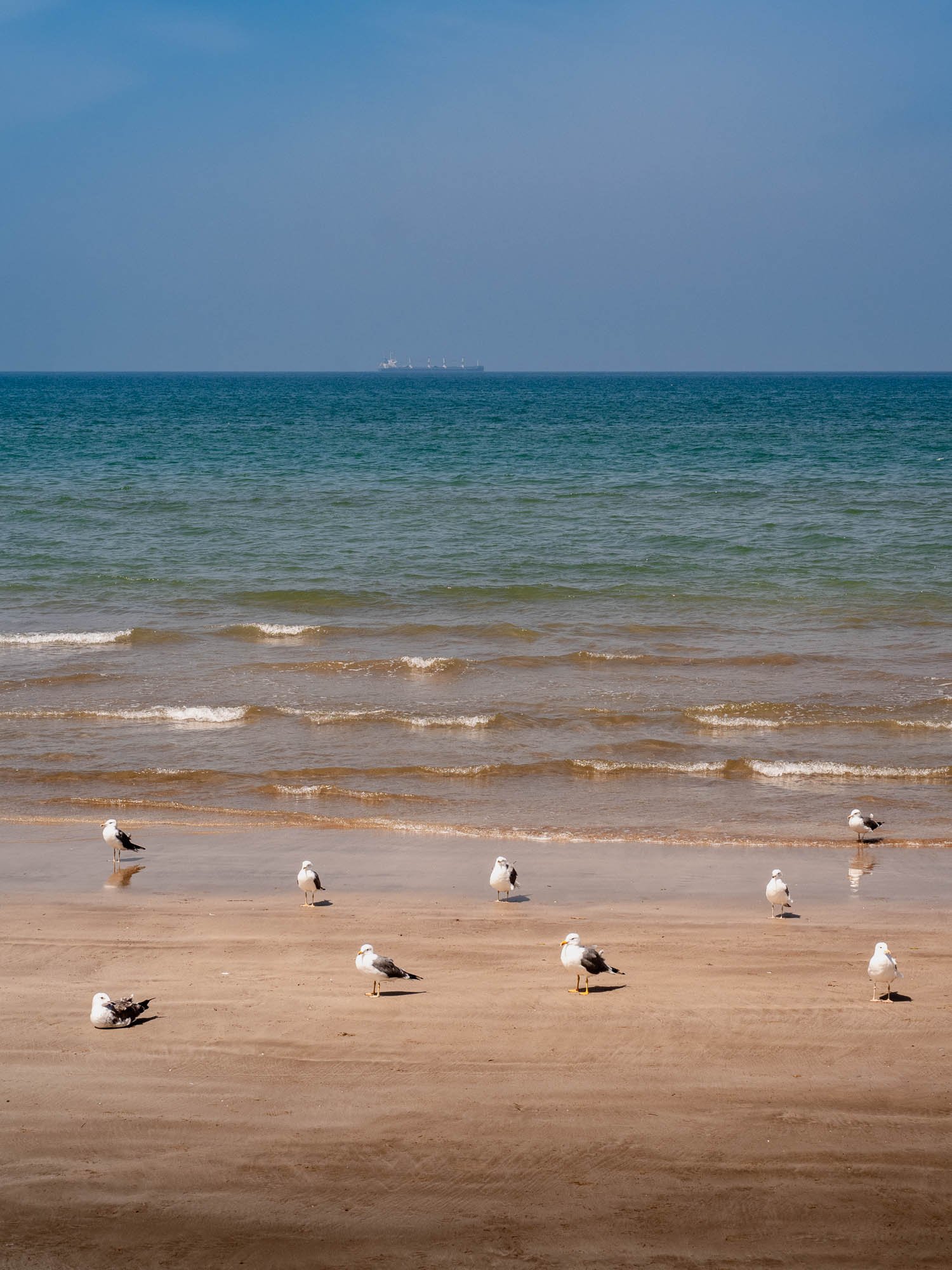
Beach Vibes
The next day was a later and slower start after the night on the coast, walking on the beaches of Muscat.

Friday Vibes
Oman retains the Friday weekend, so the locals were enjoying the day out.
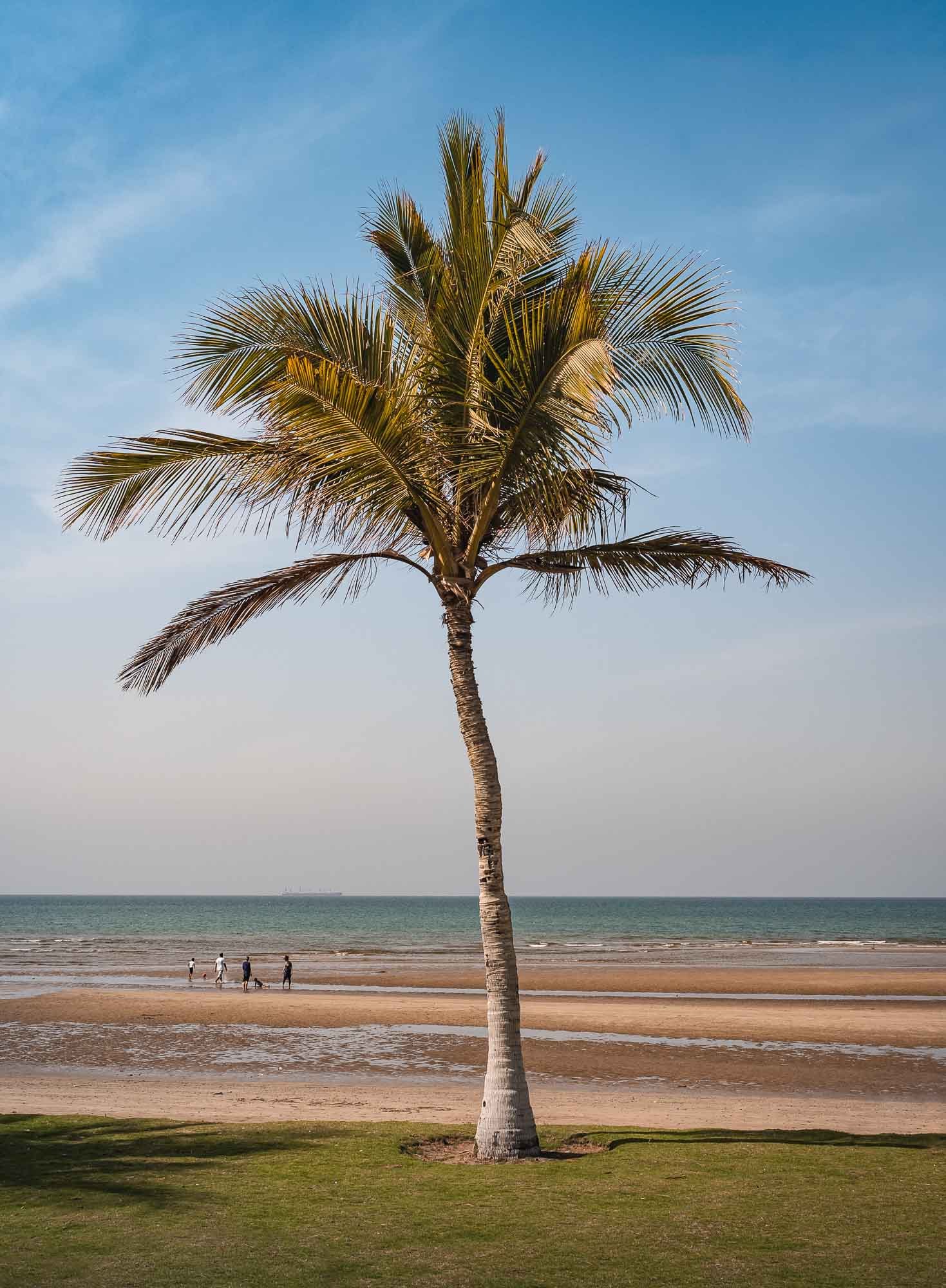
Postcard Views
All around in Oman!
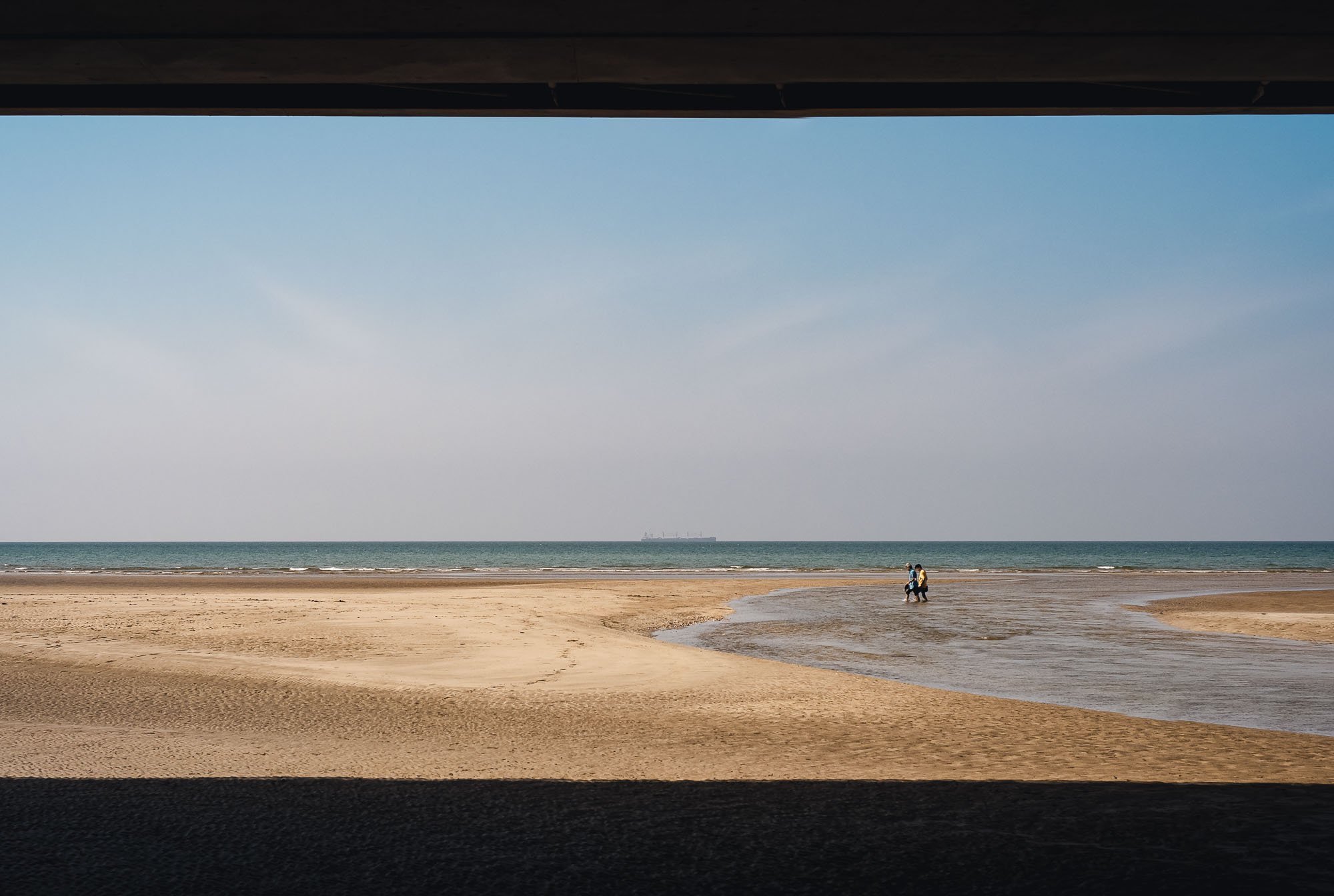
Qurum Beach
This was taken at the beach near the city's national park.
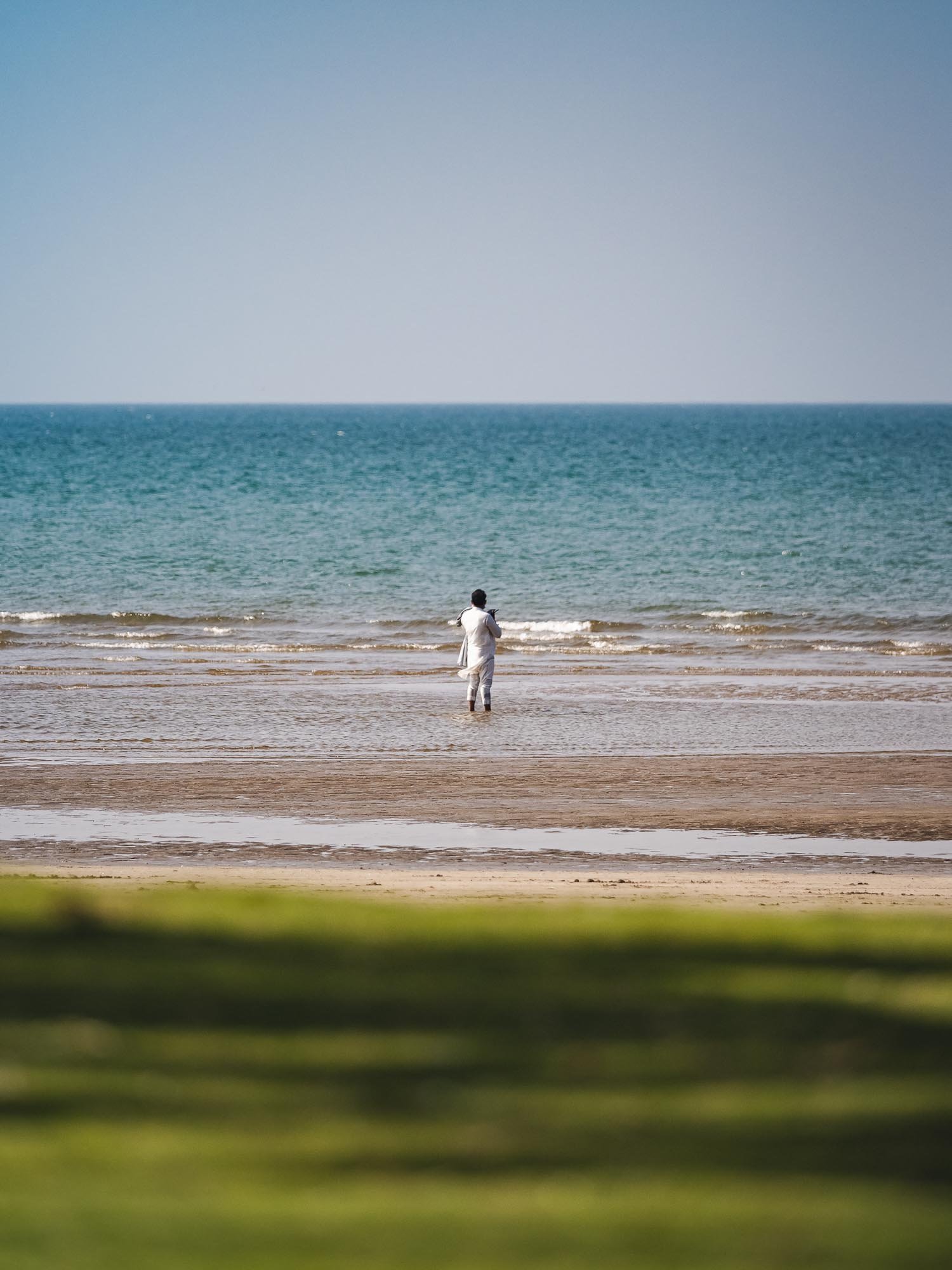
Nice Day
for a walk alone...
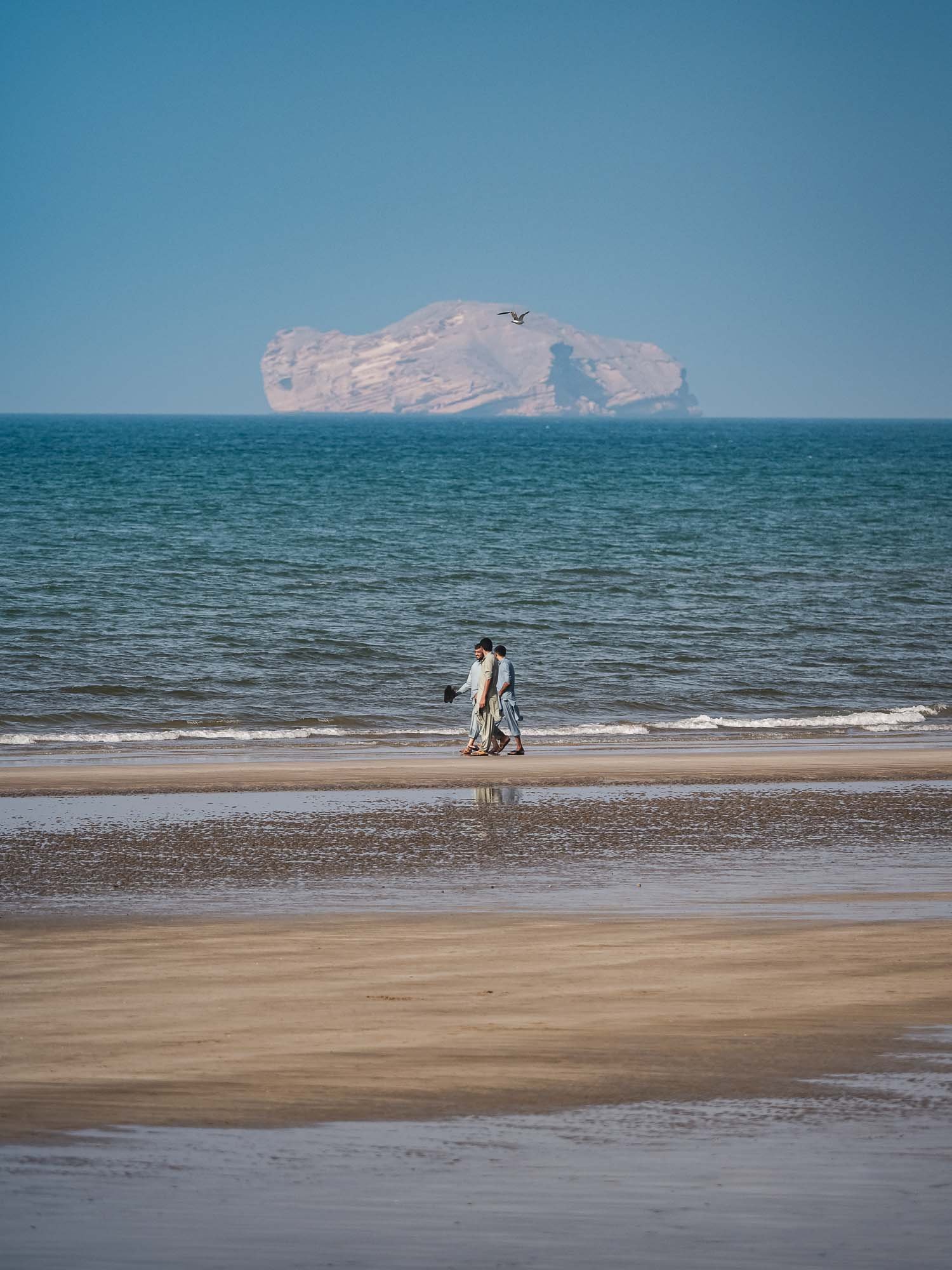
Or
...with friends.
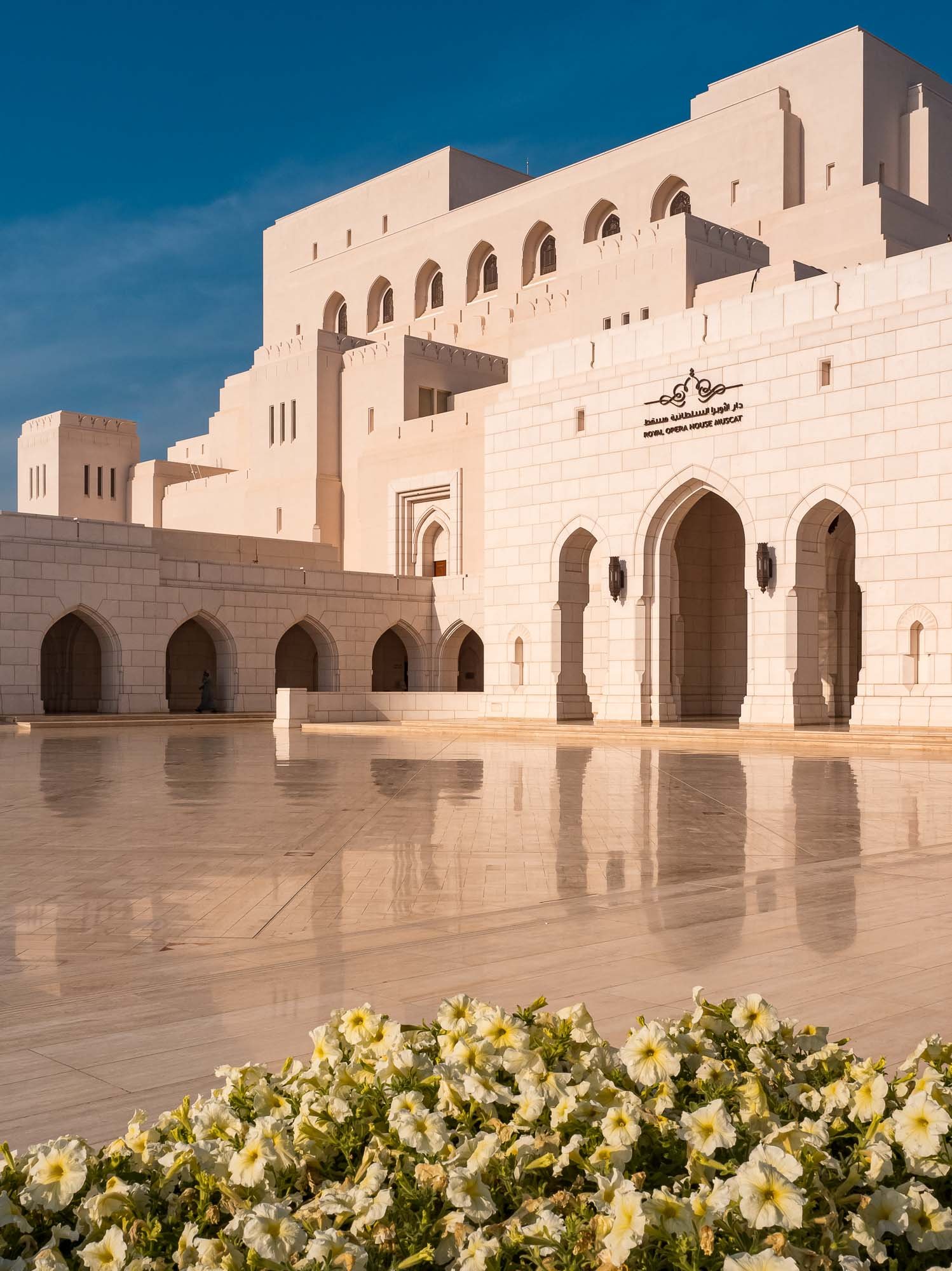
Royal Opera House
We also visited the Royal Opera House, which opened in 2011 and has seen performances by Plácido Domingo and Andrea Bocelli. Unfortunately the interior wasn't open for visits that day.
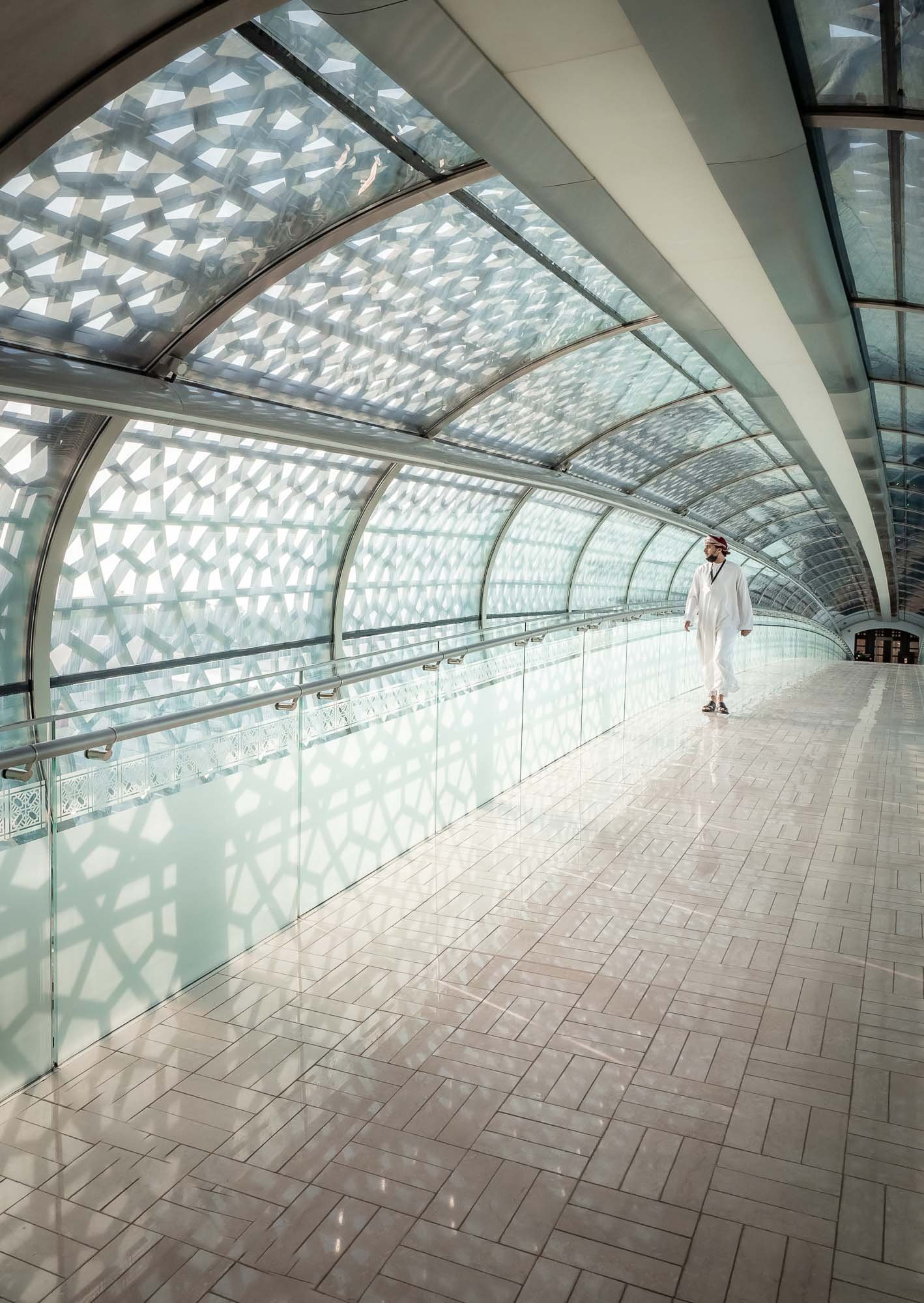
Architecture
It did feature this neat bridge crossing to the House of Musical Arts.

In Flight
Couldn't resist causing a bit of a stir up when we passed Al Bait Mosque.
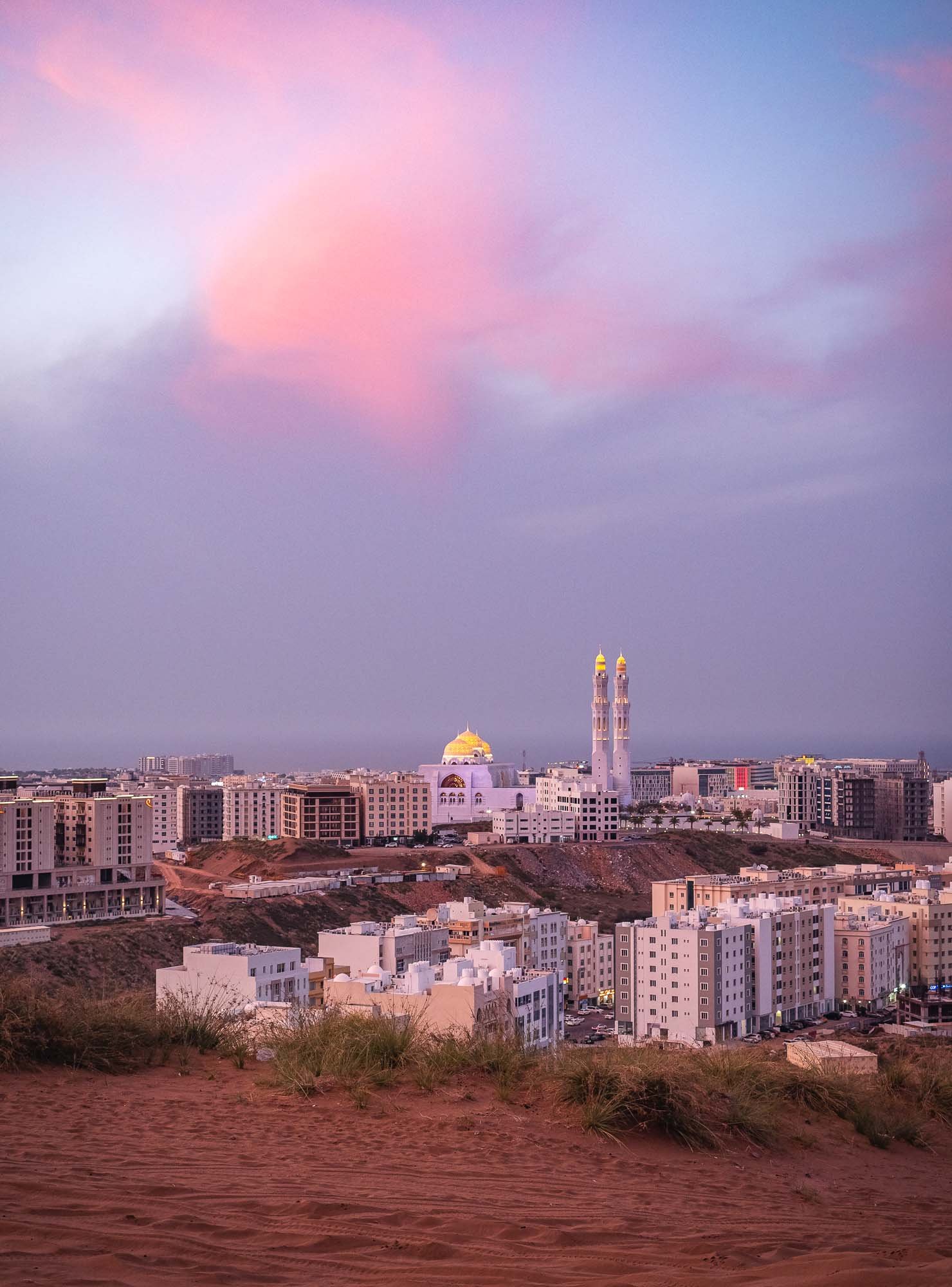
Golden Hour Vibes
We spent the evening hiking up some dunes in the city for sunset.

Fun Times
We weren't the only ones up there, as a group of people on motorbikes, quads and 4x4s made the most of the evening.
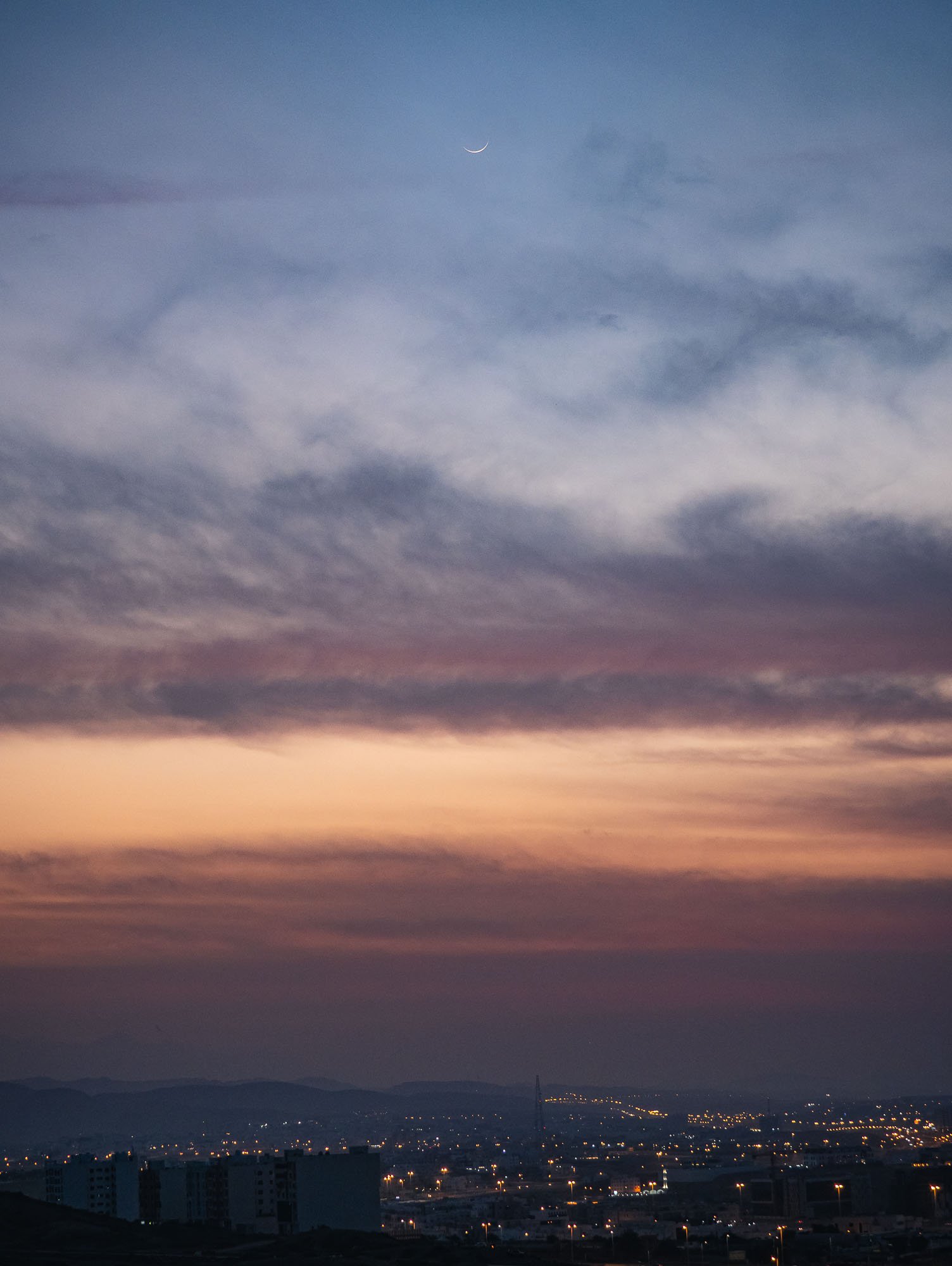
Luna
The moon came out to play as well.
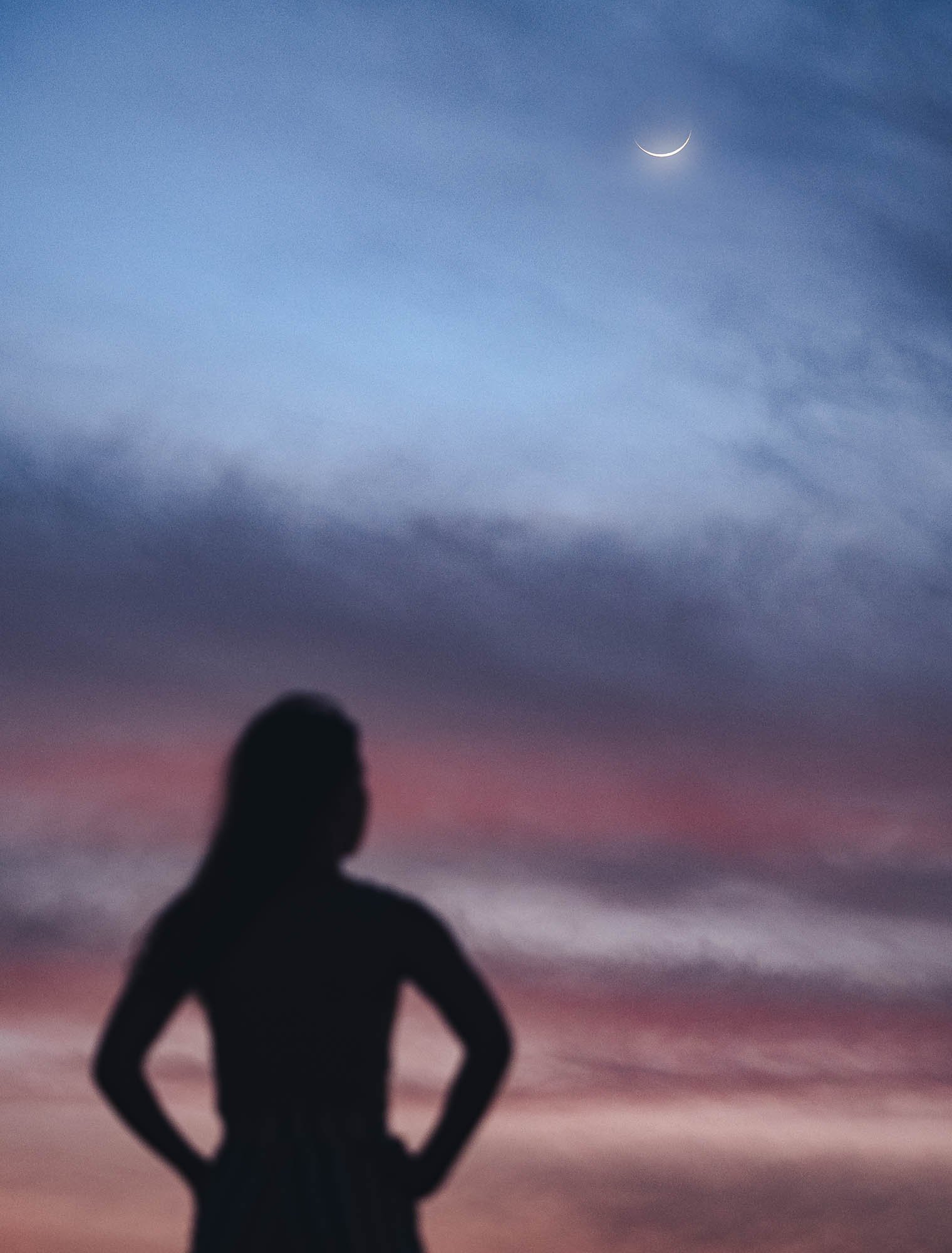
Favourite Subject
Of course I had to play along.
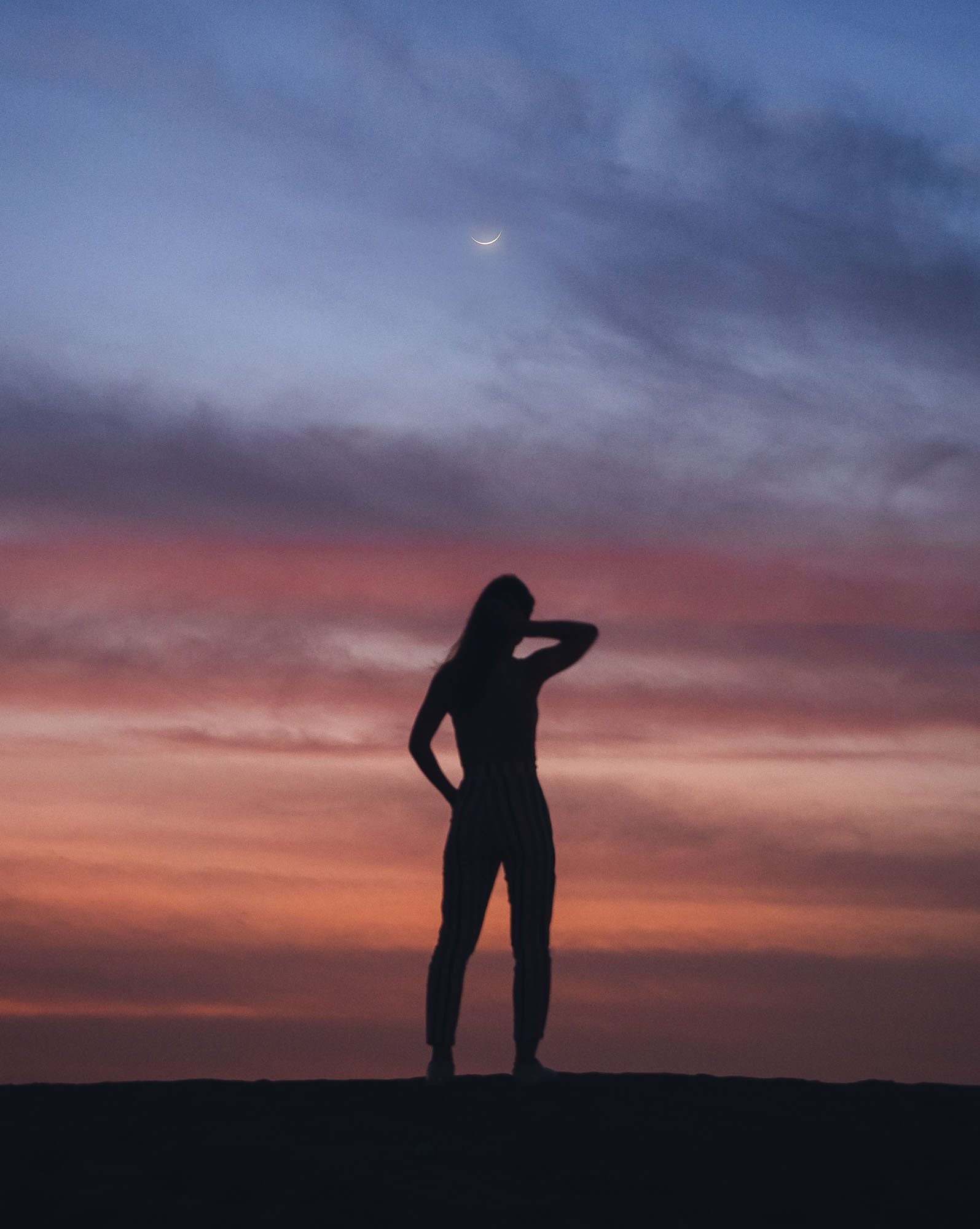
Last Sunset
An appropriate one.
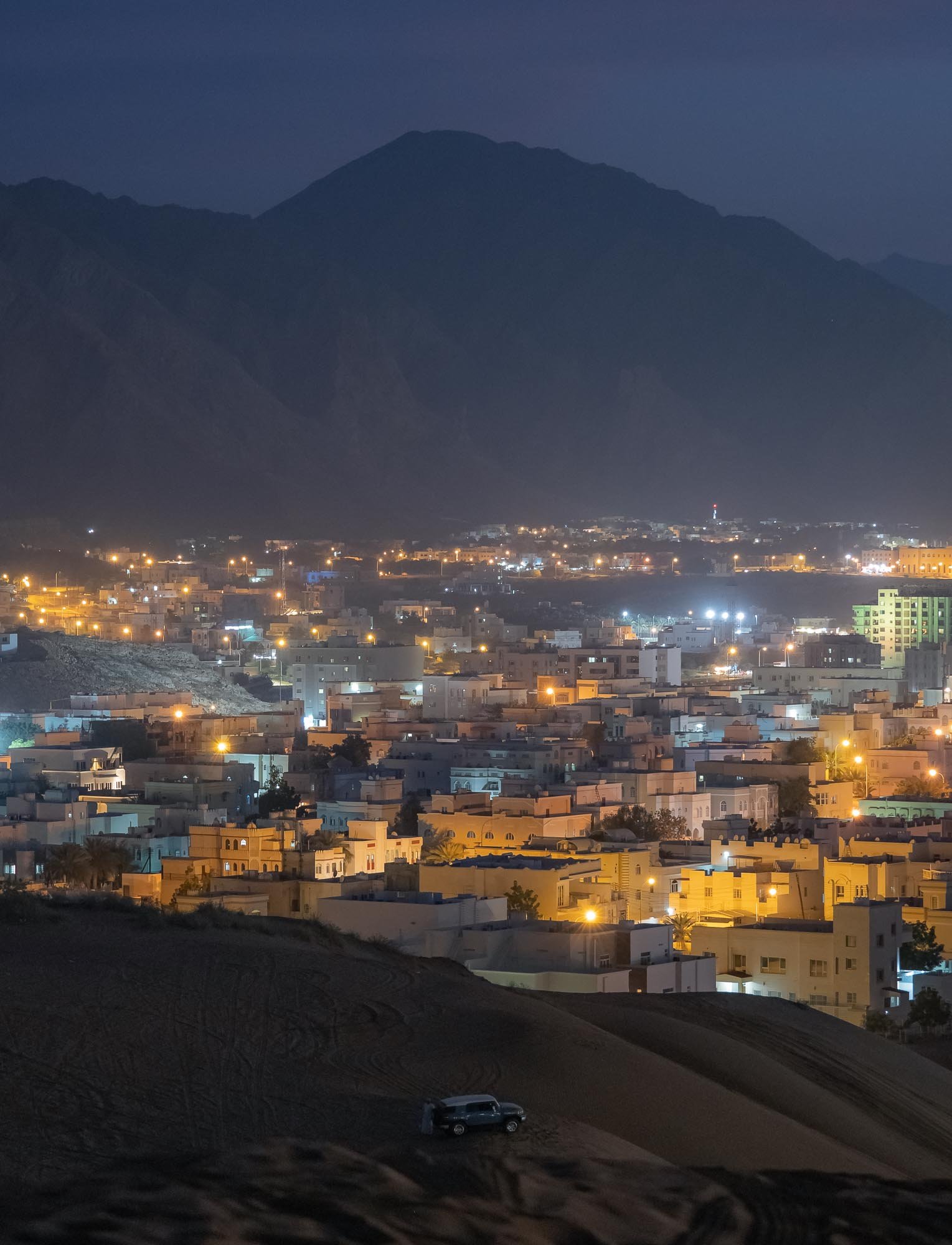
City Lights
The last light of the day disappearing over Muscat.
Back to Dubai
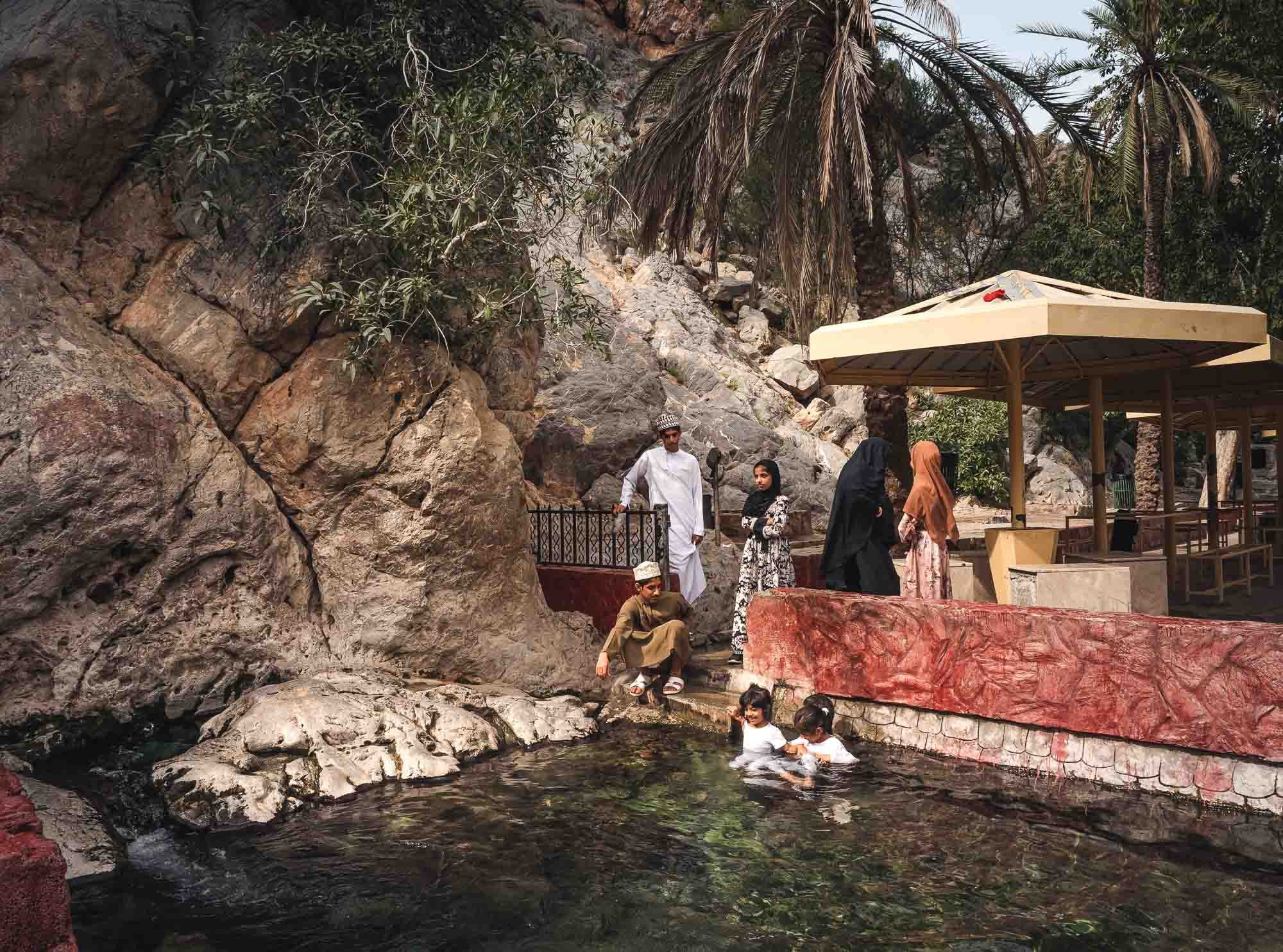
Athawarah Hot Spring
On our way back to Dubai we took a different route, passing by the hot spring of Nakhla. The hot water originating on the bottom left runs directly into the Wadi, keeping it surprisingly warm.
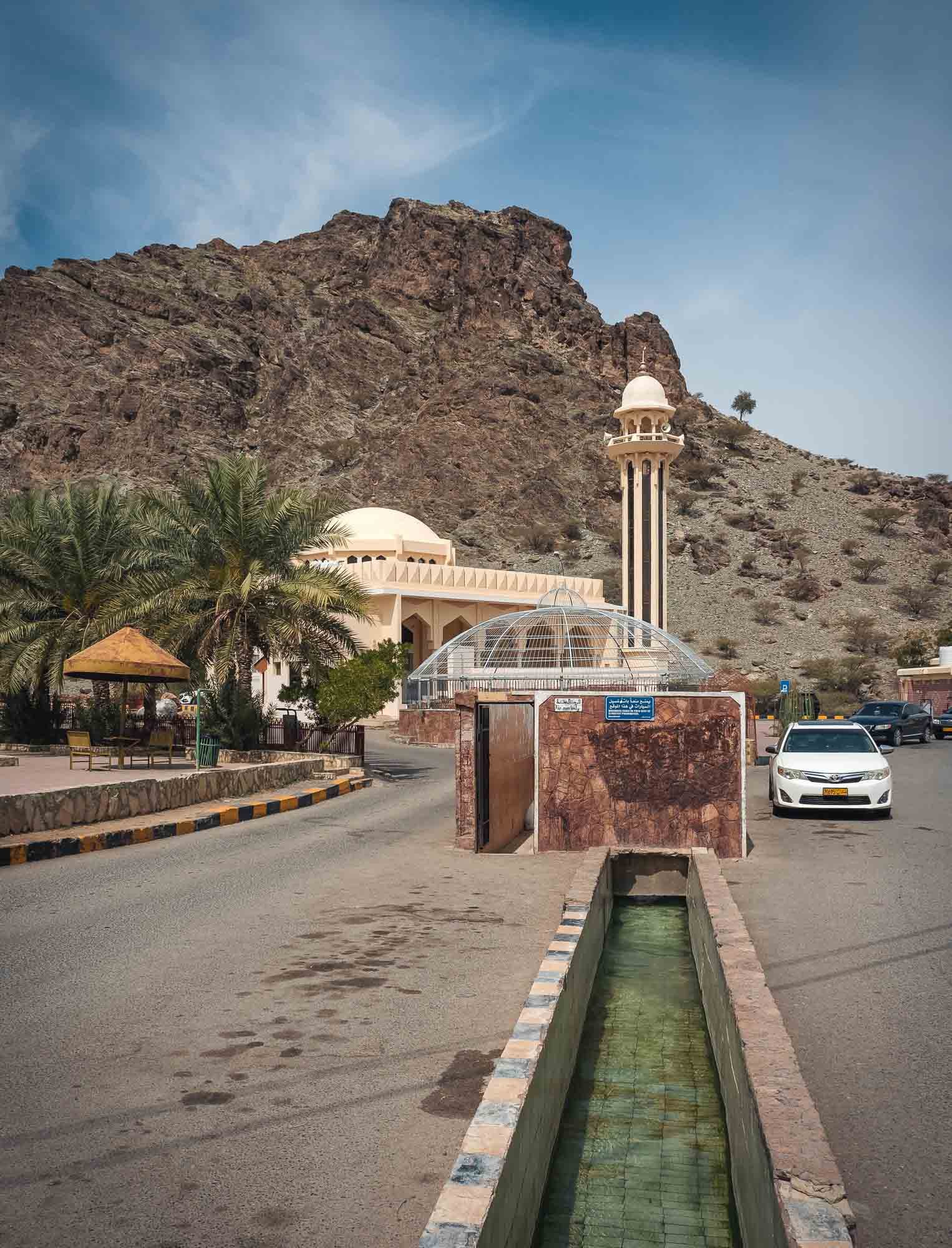
Al Kasfah Hot Spring
We also stopped in Rustaq at another spring - this one is said to have healing powers owing to the sulphur traces in the water. It originates under the caged dome in the background and then runs in a kind of channel through the streets, with stalls for people to take baths in the water visible in the foreground.
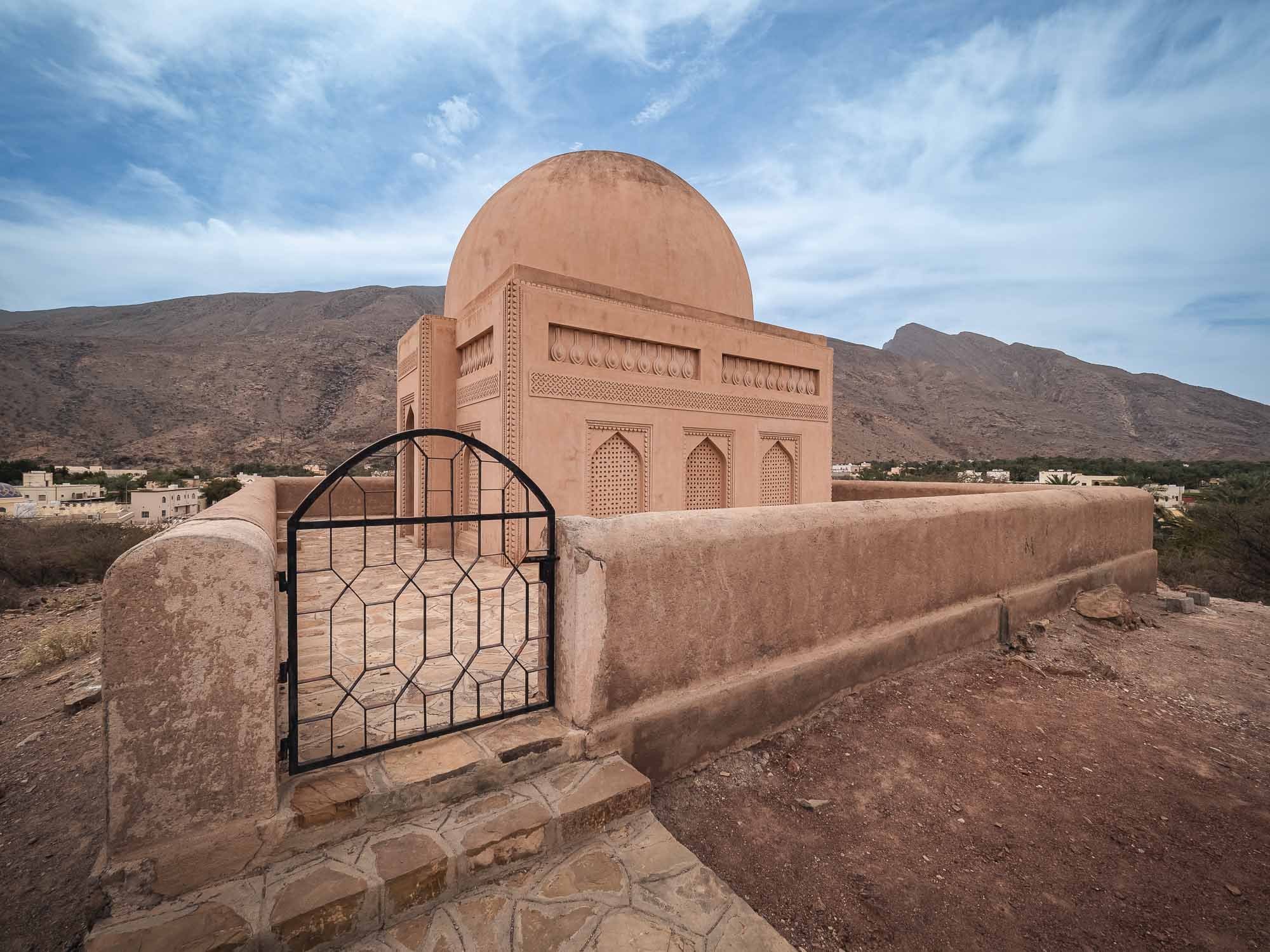
18th Century Tomb
The city is also home to this restored Ibadi tomb of the Imam Ahmad bin Said al-Busaidi, first ruler of Oman of the Al Said dynasty - took me quite a while to find this info, as there are very few signboards around and the Google Maps pin is in Arabic only.
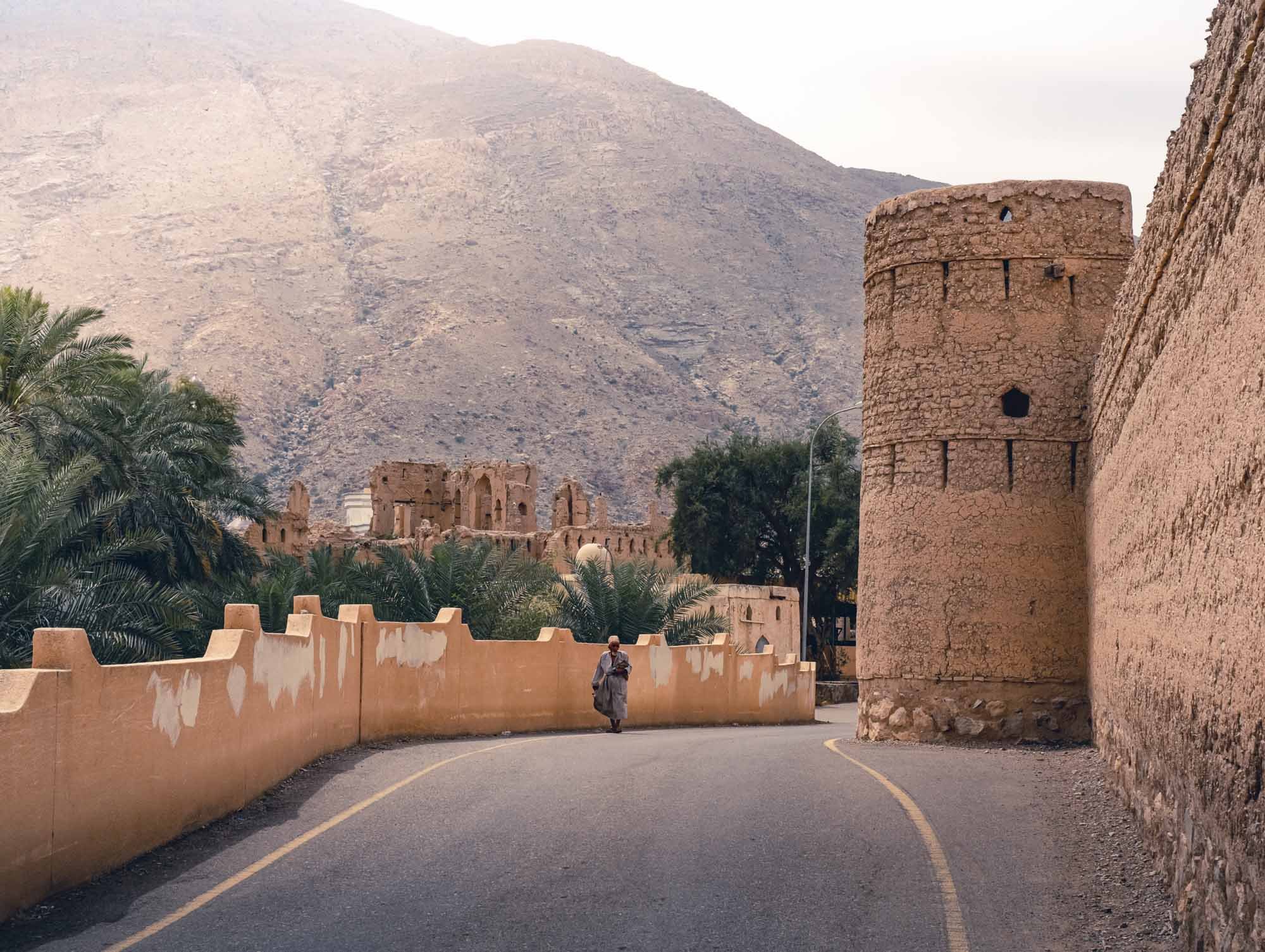
Rustaq Fort
The fort itself is currently closed for maintenance, but its imposing walls are nevertheless impressive.

Transport
We did encounter this fine gentleman who allowed us a quick glimpse into the fort, and then took us to the older parts of the city in this... vehicle, which he imported from China.

Qusra Museum
This was one of the places he showed us, a restored 300 year old family house, now converted and adorned with various artifacts.
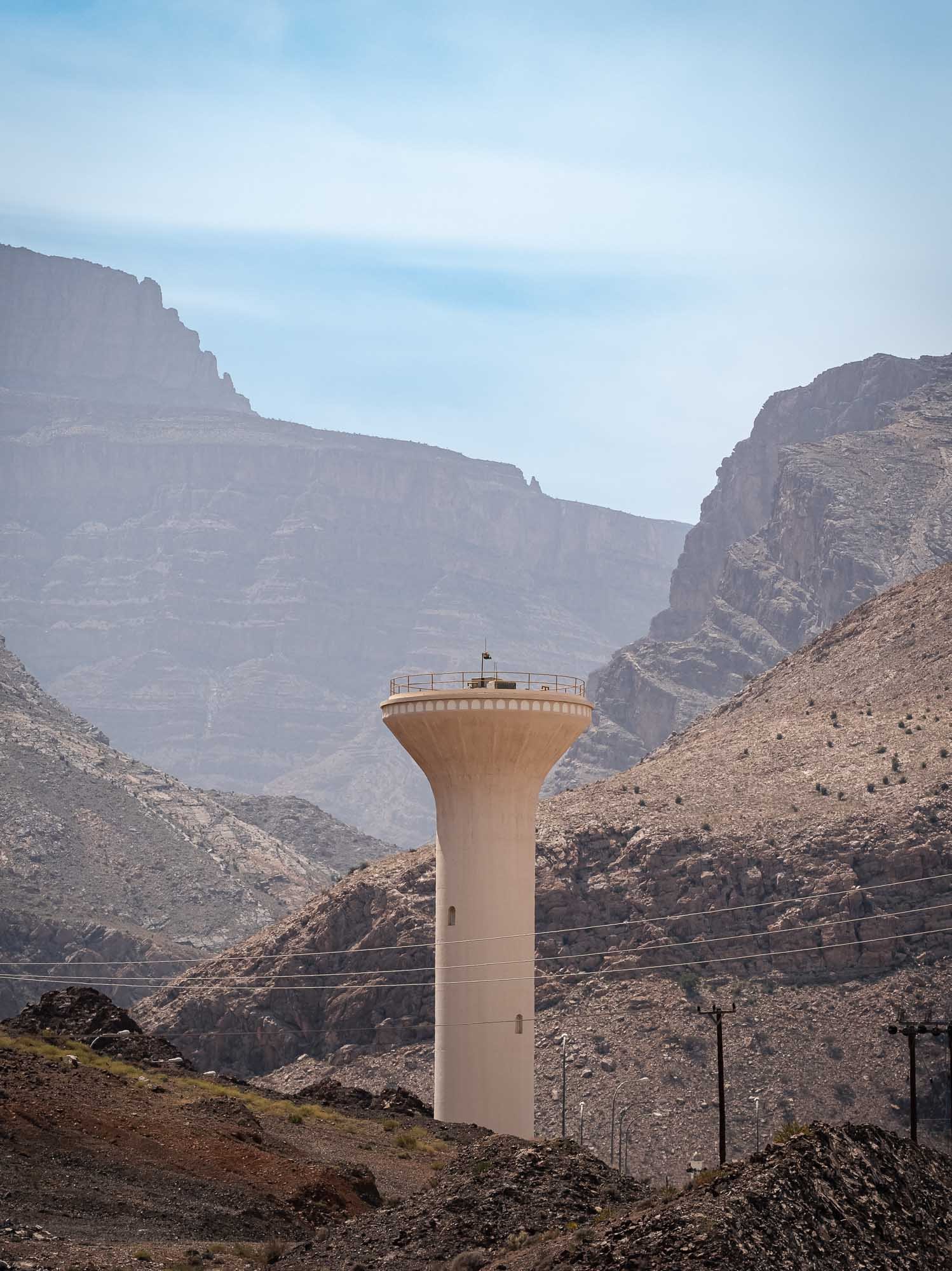
Water Towers
On our way to the final destination. You can find these towers dotted around the landscape, used for storage and to generate pressure.

Framed
Owing to questionable road conditions, we had to take quite a detour, but a few sights on the way made it enjoyable.

Al Ayn Beehive Tombs
When we finally made it, the scenery was worth it. I had initially failed to add this location to the route on the first day, but really didn't want to miss out after seeing the Beehive Tombs of Bat.
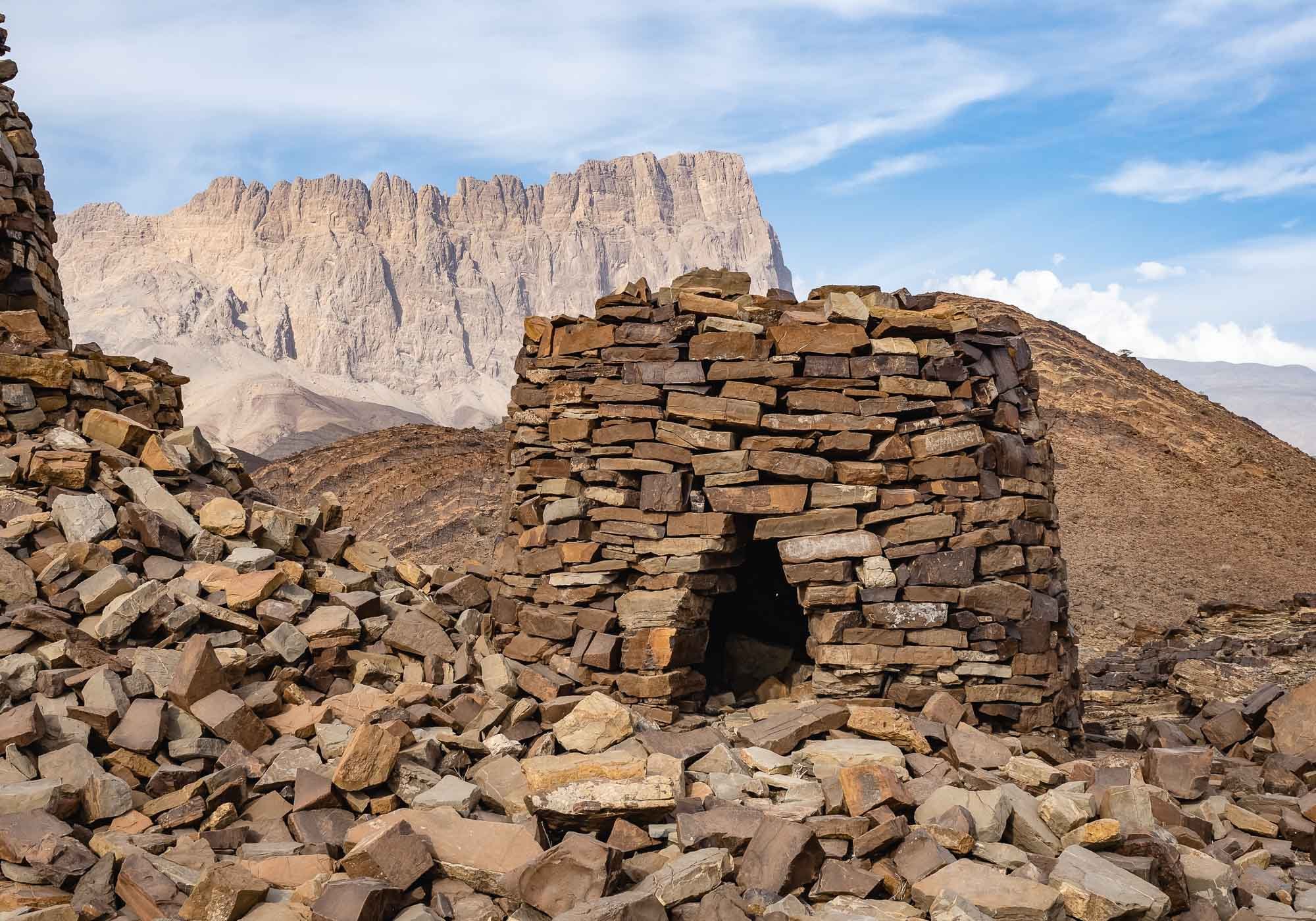
Awe-inspiring
Looking at these 5000 year old tombs with the imposing Jebel Misht in the background was truly amazing.
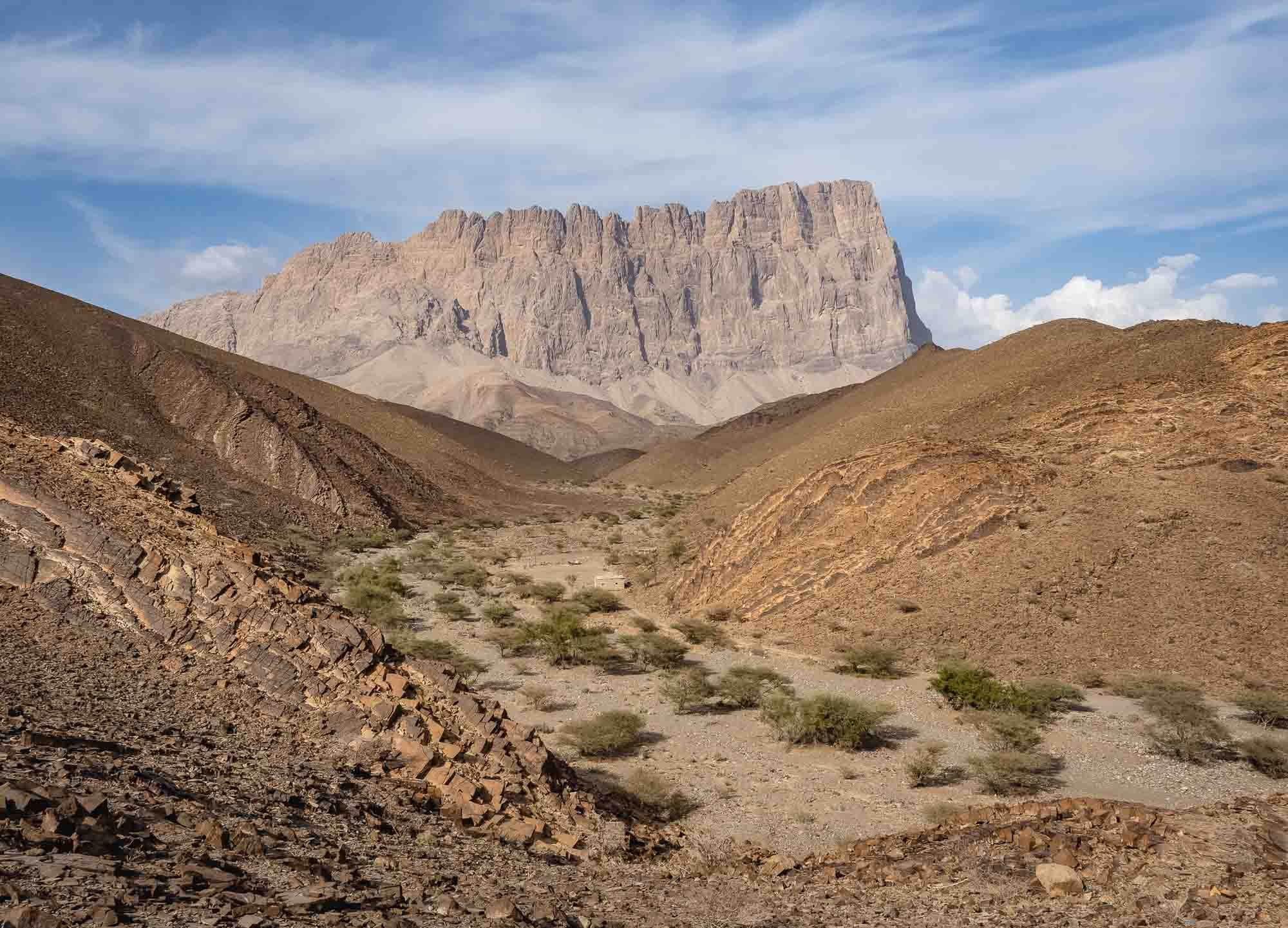
Jebel Misht
The striking landscape from the hill on which the tombs are located.
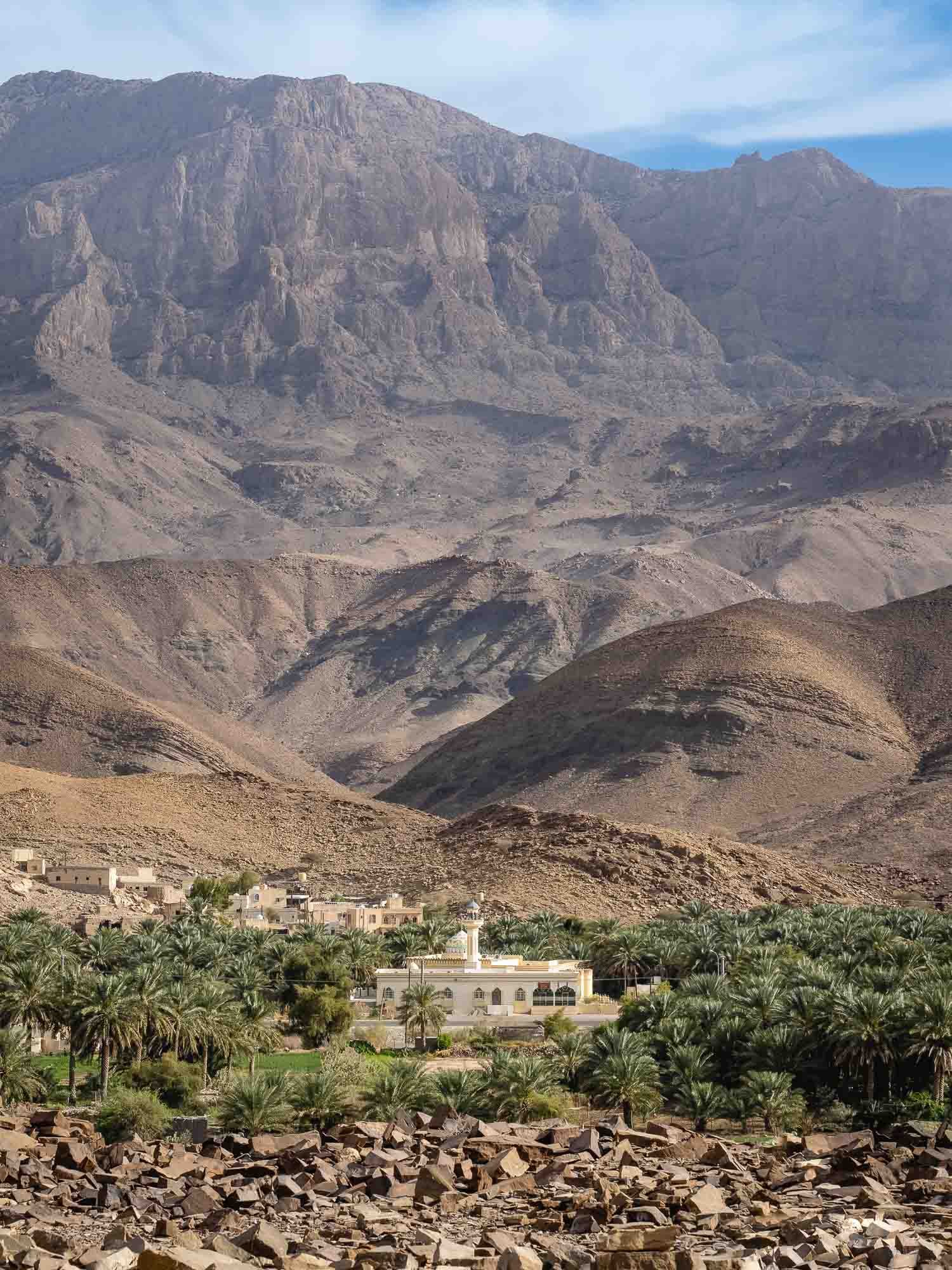
Hajar Views
Looking the other way into the date farm.
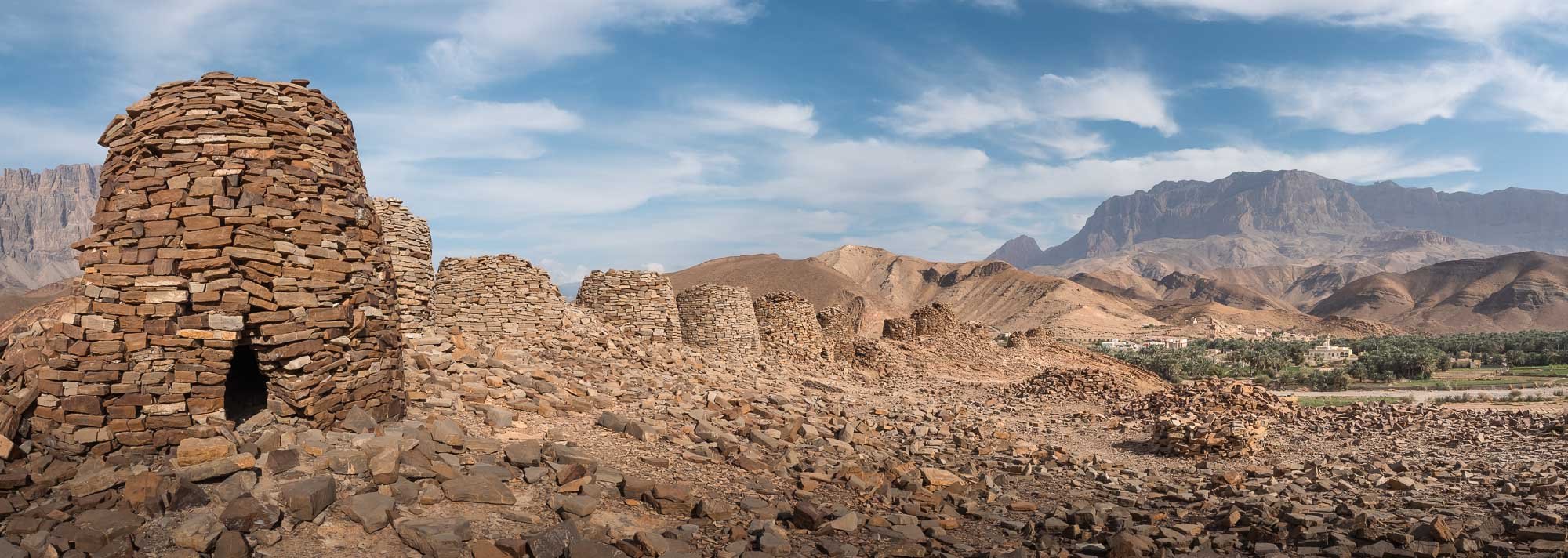
World History
According to Unesco, together with the neighbouring locations, this site forms the most complete collection of settlements and necropolises from the 3rd millennium B.C. in the world. It's almost a bit humbling (and a little concerning for their future) that you can just walk up to these fragile structures with no fences or rails of any kind.

Panoramic View
A full view of the site, which features a total of 19 tombs in almost a straight line. A definite highlight for me.

The End
Obligatory cat photo.
I really hope you enjoyed this small documentary series of my trip to Oman. I’ve known about the beauty, geology, and history of the Hajar mountains from exploring the UAE, but Oman really took this to another level. It is probably a good thing for these sites that the country hasn’t had the same level of attention as some other more famous destinations in the Middle East, but on the other hand Oman and its people really deserve to be recognized alongside them. Will definitely come back.
Luxembourg - Small but Special
In June 2021 I took the opportunity of borders reopening as the Coronavirus situation improved to visit Luxembourg, one of the last countries in Western Europe that I have not yet had the chance to explore

In June 2021 I took the opportunity of borders reopening as the Coronavirus situation improved to visit Luxembourg, one of the last countries in Western Europe that I have not yet had the chance to explore. With less than 1 million people and an area of less than 3000 sq km, it is one of the smallest countries in the world, but at the same time has one of the highest GDP per capita.
Luxembourg features a rich history with many amazing castles dotted around the landscape, and a diverse and multicultural history and presence. Take a look at the photos below to get a glimpse of what I was able to see in 48 hours.

Hohllay Cave
Our first stop was in Berdorf, where you can find a small network of caves created by mining activity.

Man-made
The area was used to create circular millstones until the 19th century, so these are not natural cave structures.
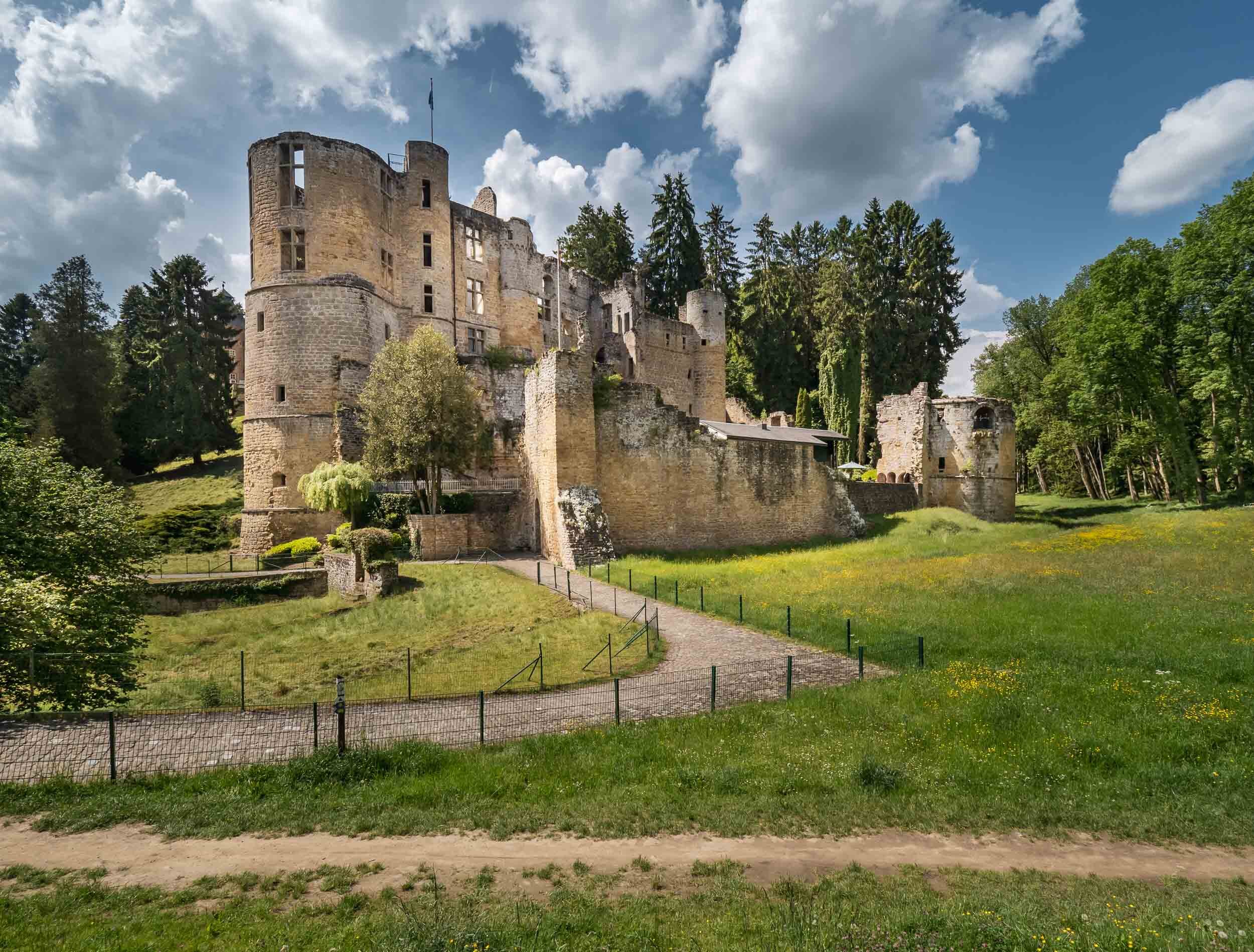
Beaufort Castle
Our second stop was Beaufort Castle, just a short drive away.
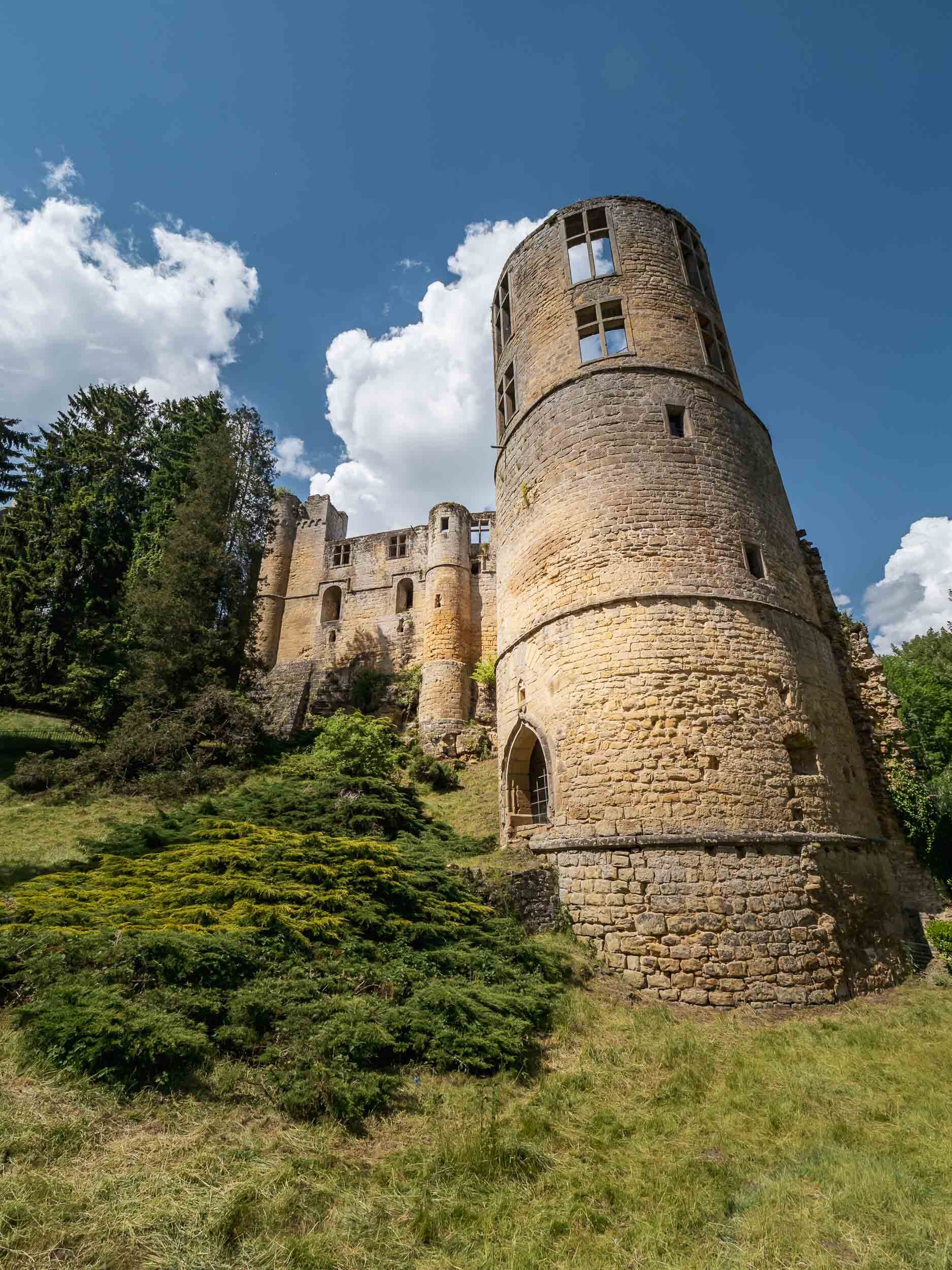
11th Century
First built almost 1000 years ago, since 1988 it has been a Luxembourg national monument.

Trees
It is surrounded by a small river and beautiful forest.

Path
An elevated path leads over the grounds.
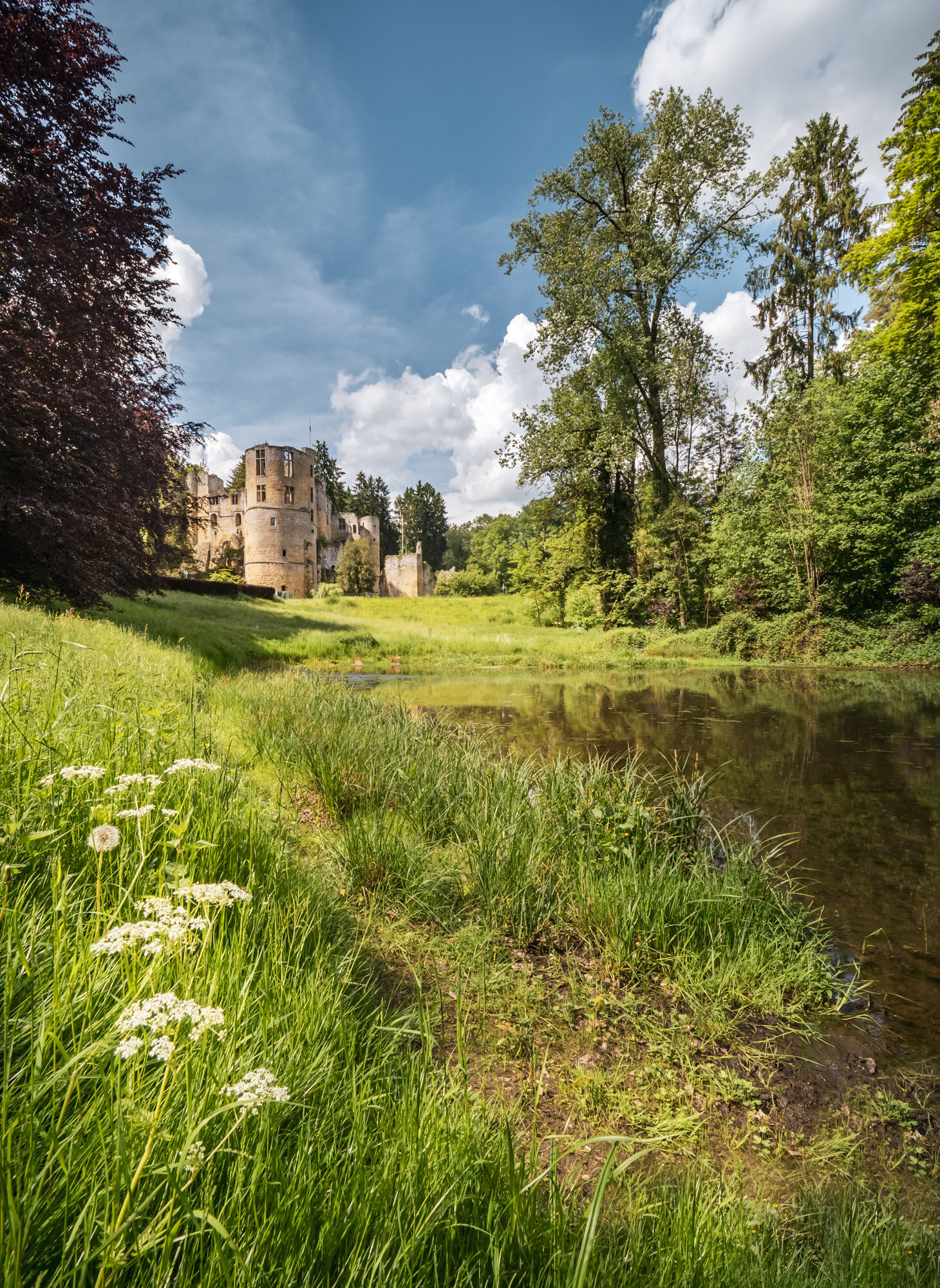
Grounds
A small lake on the southern side makes for beautiful scenery.
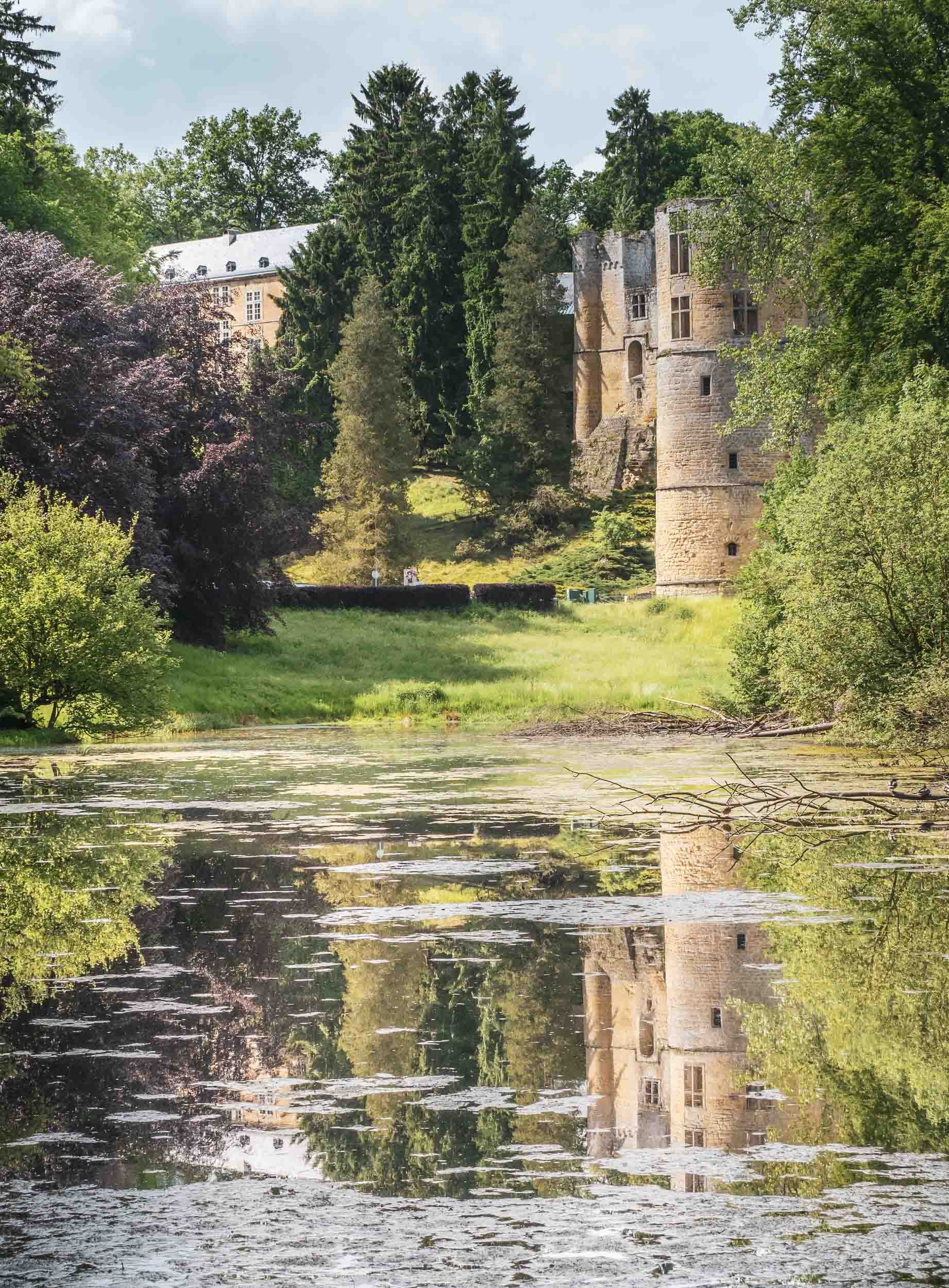
Reflections
Of course, that also means some great reflections.
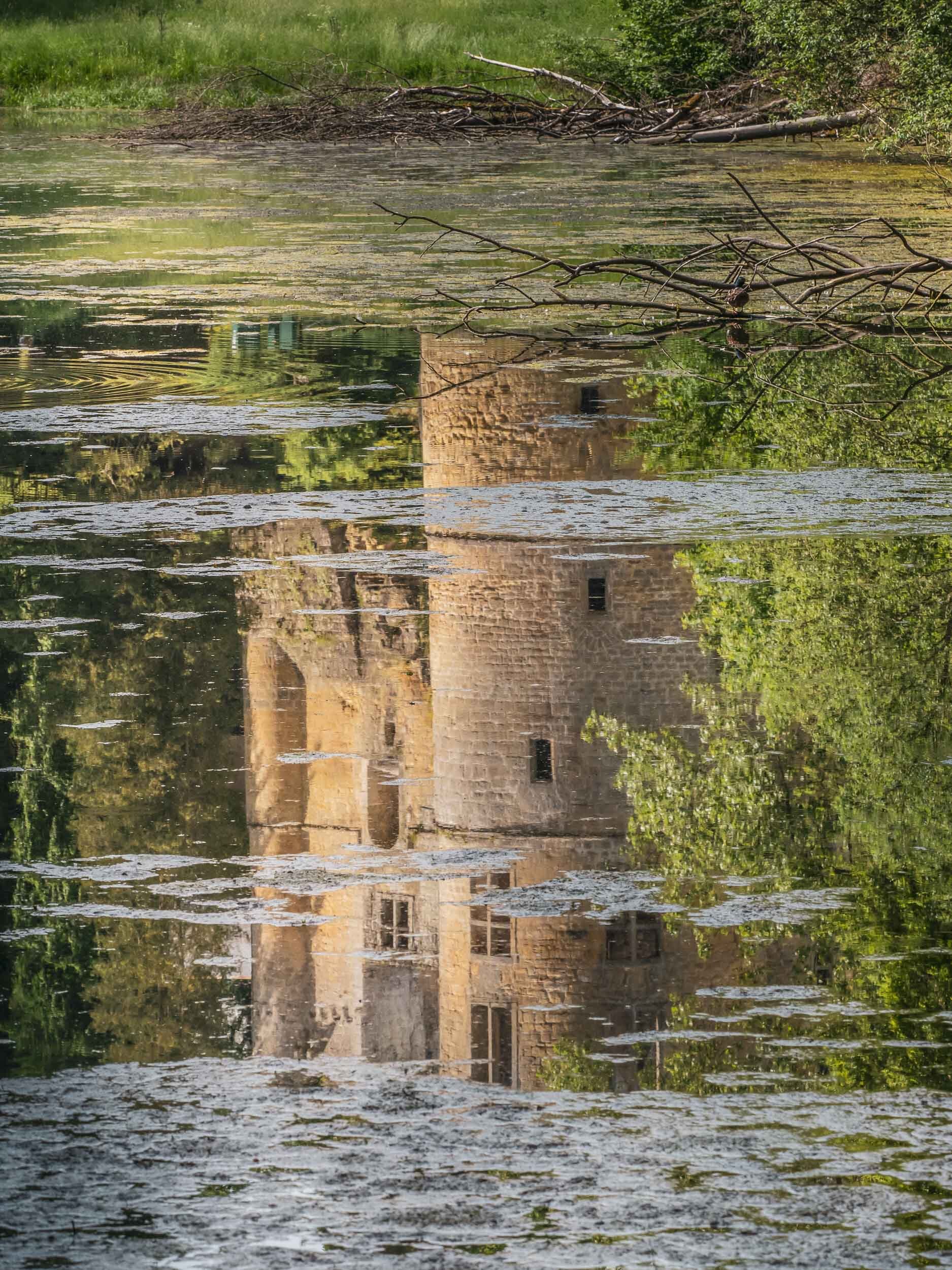
Upside Down
Did I say great reflections?
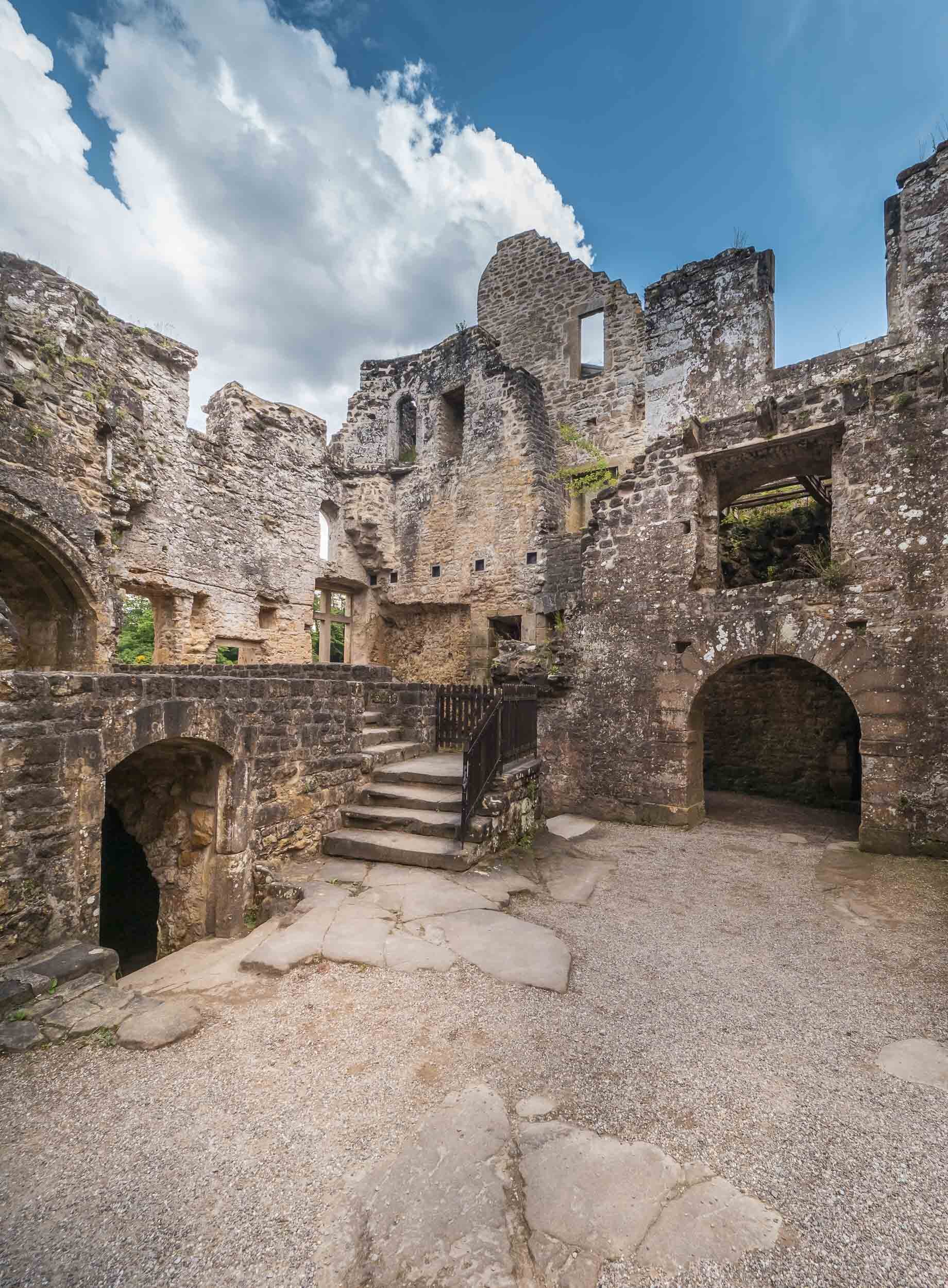
Interior
Most of the castle features medieval architecture, but a few Renaissance style extensions were added in the 1600s.
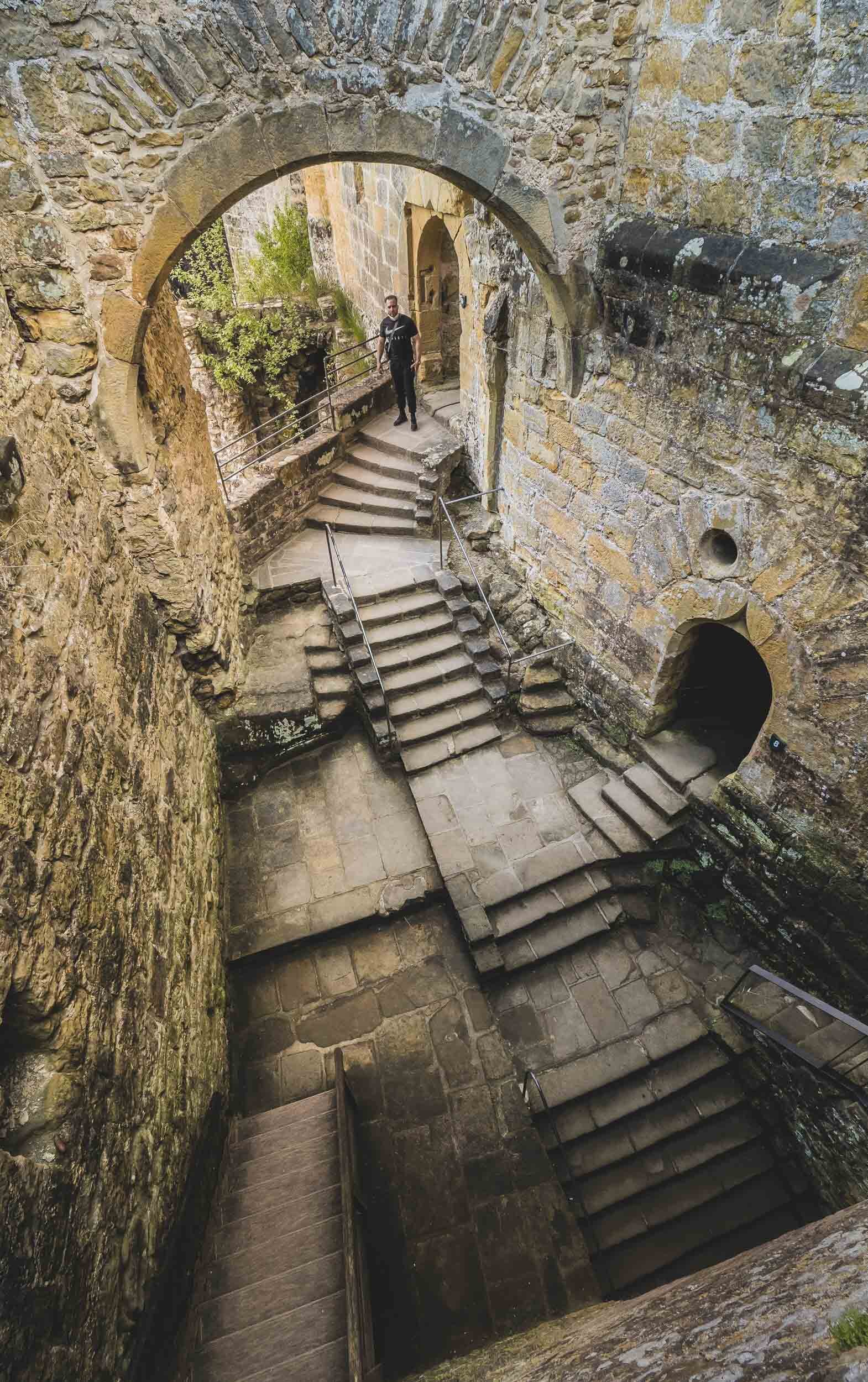
Stairs
The staircases in the central section leading to the different wings.
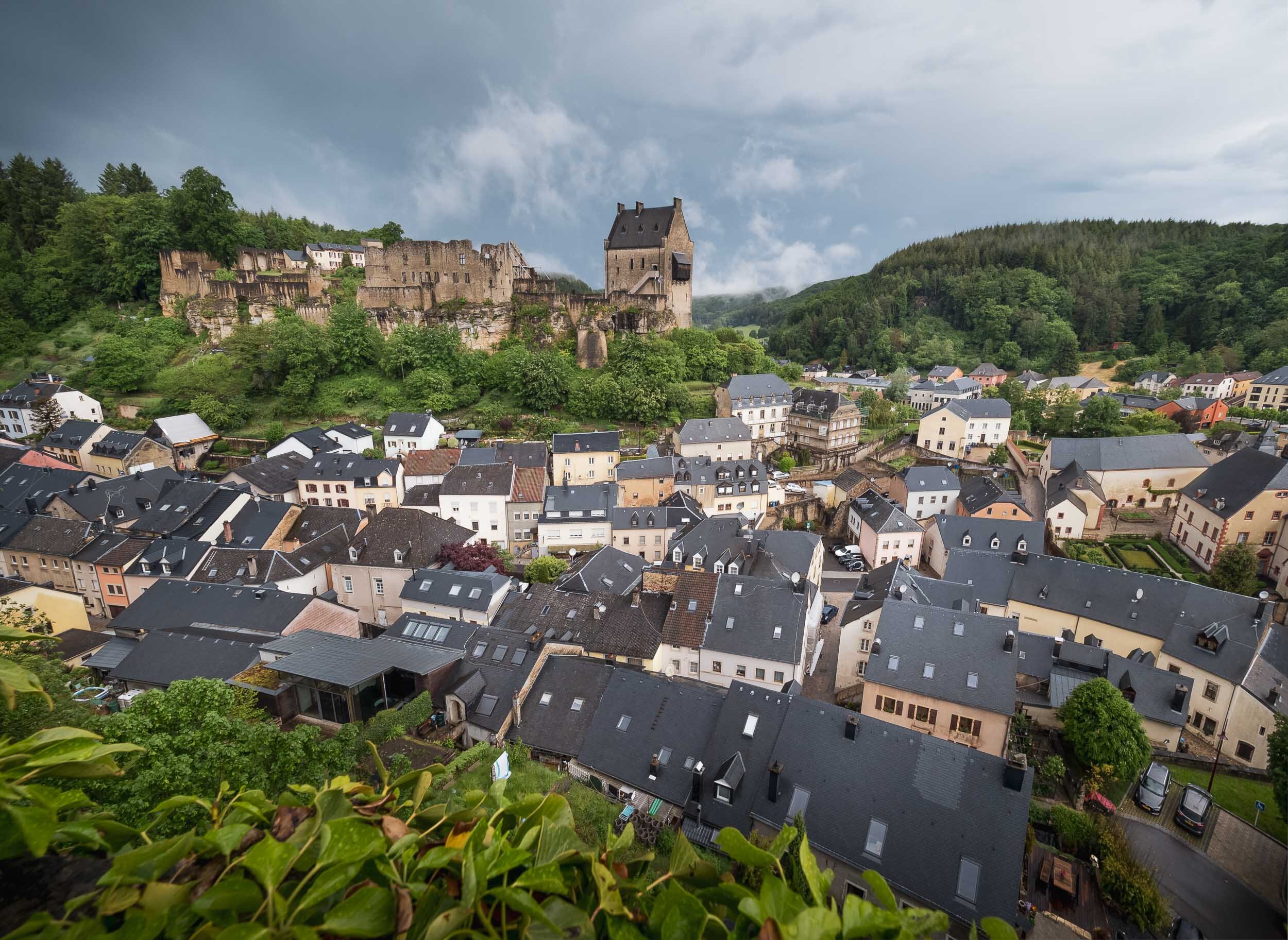
Larochette
The third stop brought us to Larochette, with another beautiful castle perched above the village. Dating from the 11th century, it was destroyed by fire at the end of the 16th century and has been restored and renovated in the 1970s.
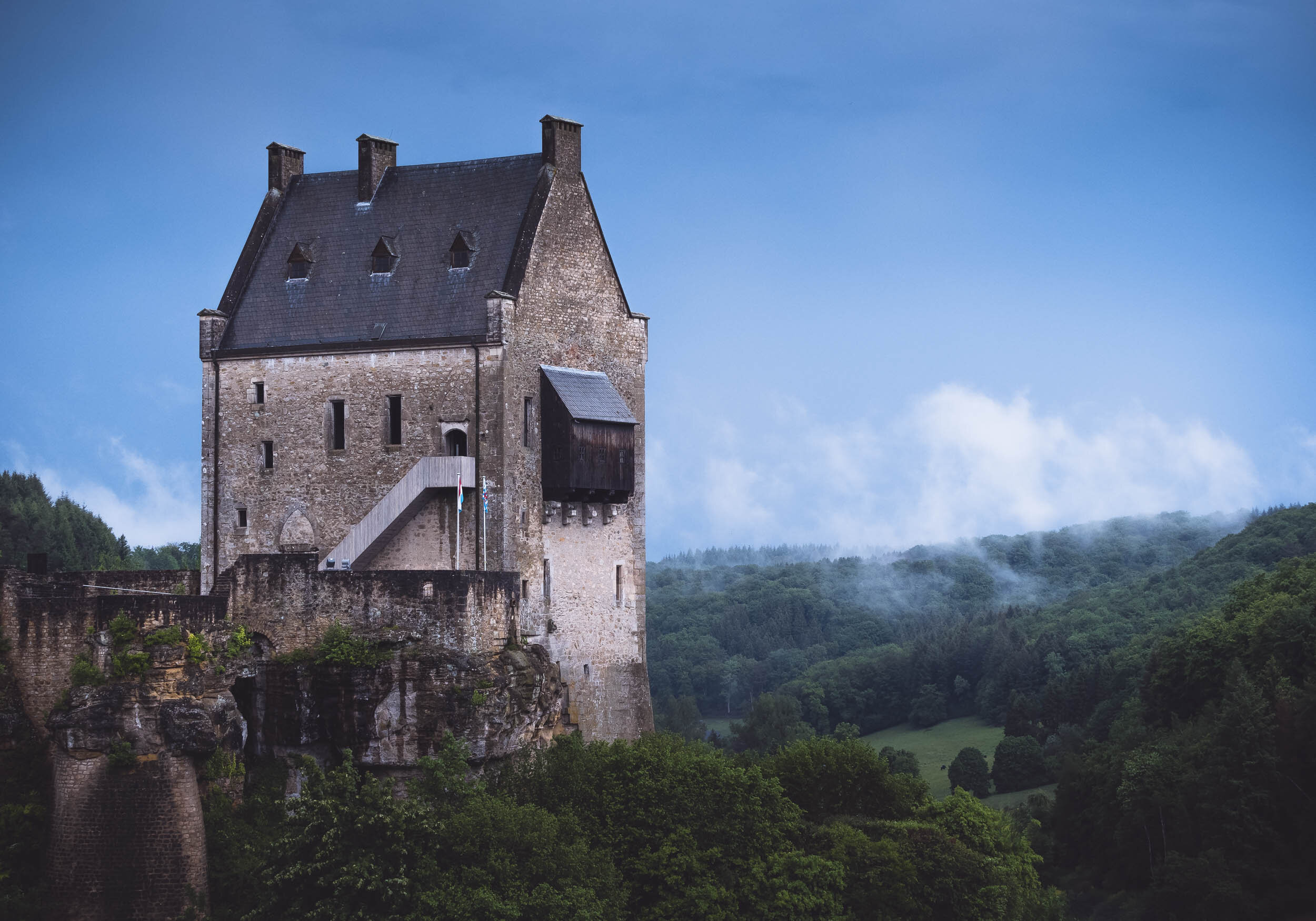
Clouds
After two hours of heavy (and I mean heavy) rain, a few clouds lingered around in the nearby forests as we made our way up to the viewpoint.
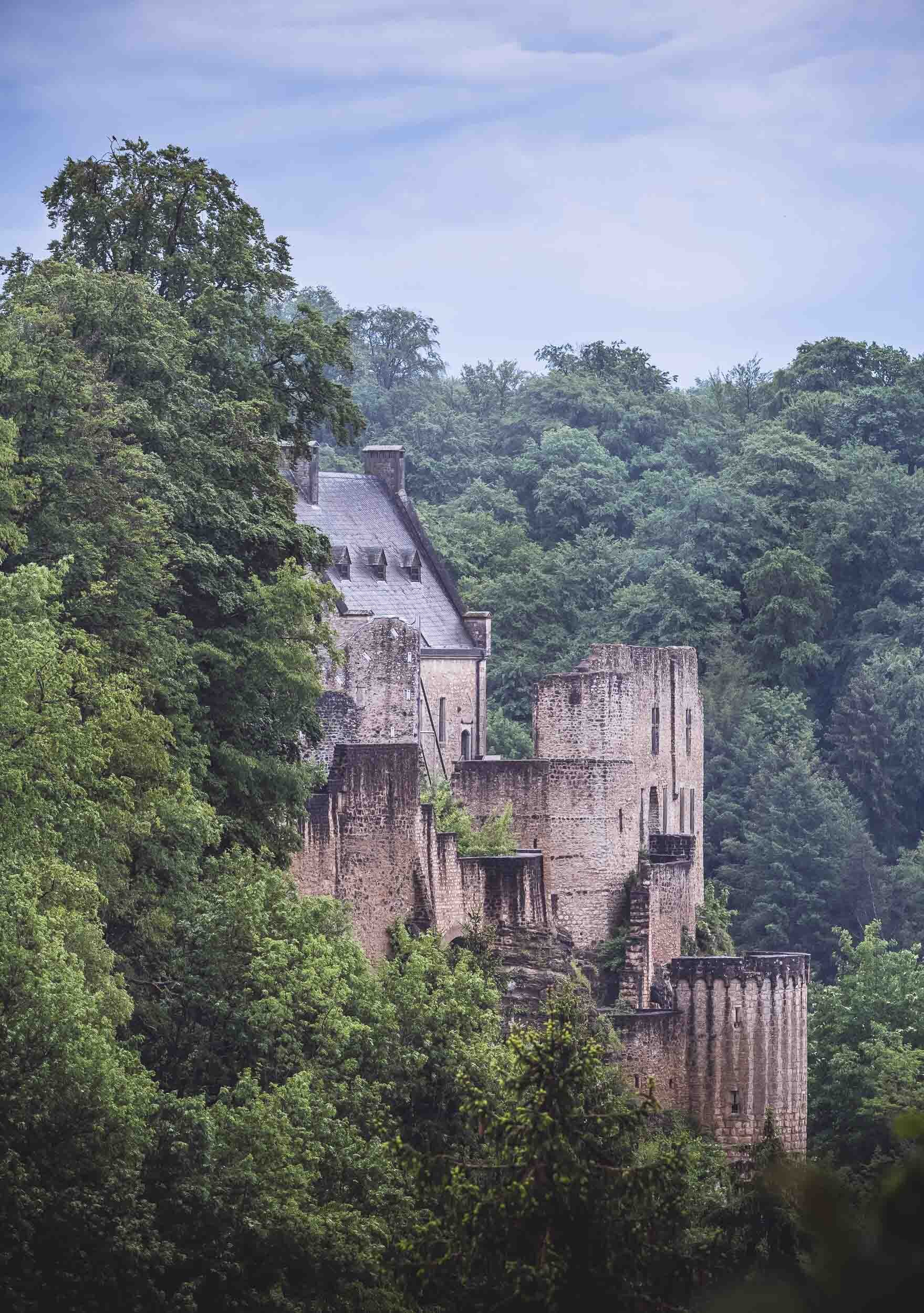
Glimpses
The surrounding hills offer a few glimpses towards the castle structure from different angles.
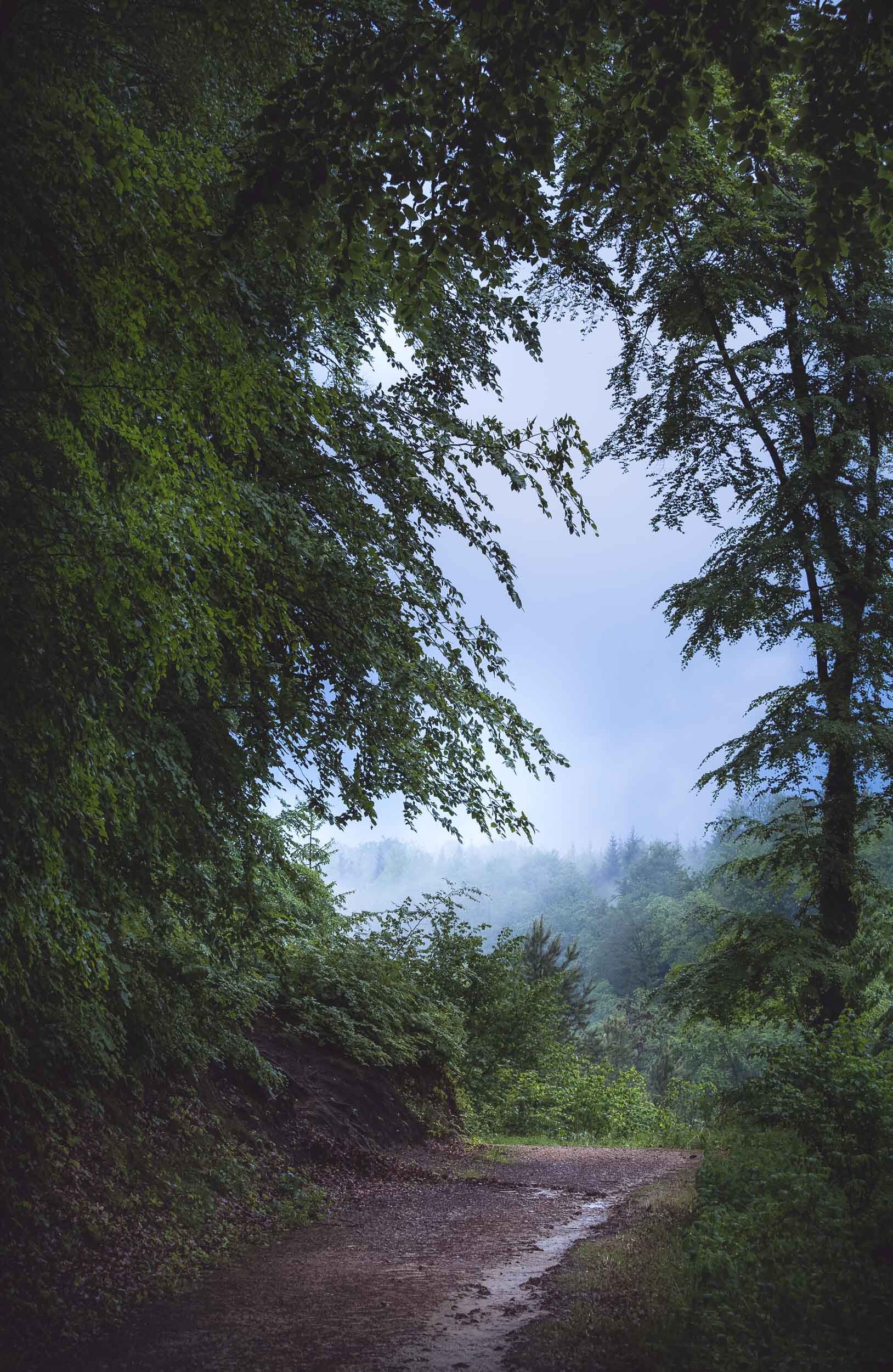
Post Rain
As the heavy rain subsided, the summer greenery of the forest felt twice as intense.

Path
We took them all - in total, we walked for over 40km during the 3 days.
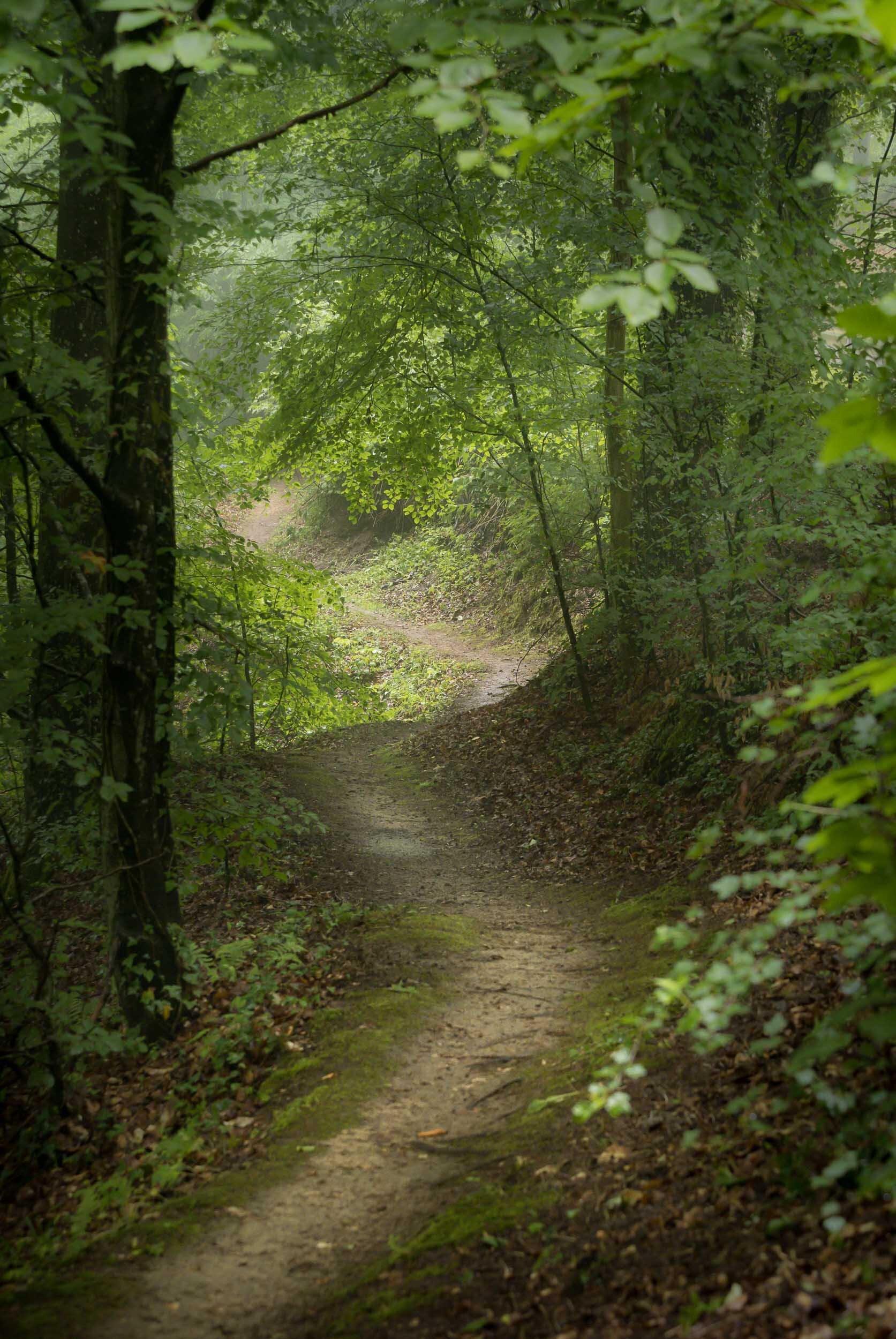
Worth it
Much easier though when the scenery looks like this.

Low Clouds
The post-rain clouds occasionally got stuck in the trees.
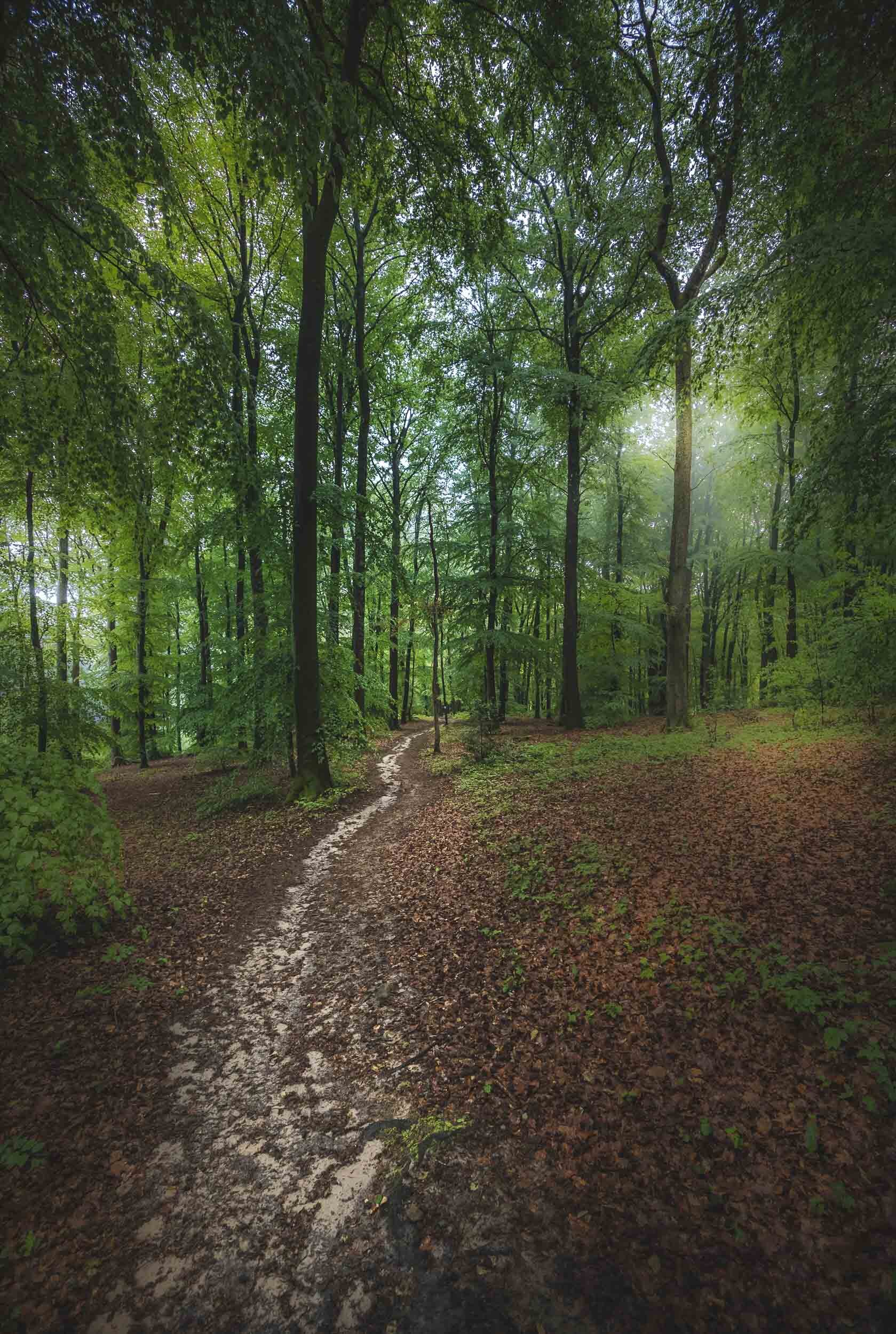
Enchanted
Another path through the forest areas surrounding Larochette.
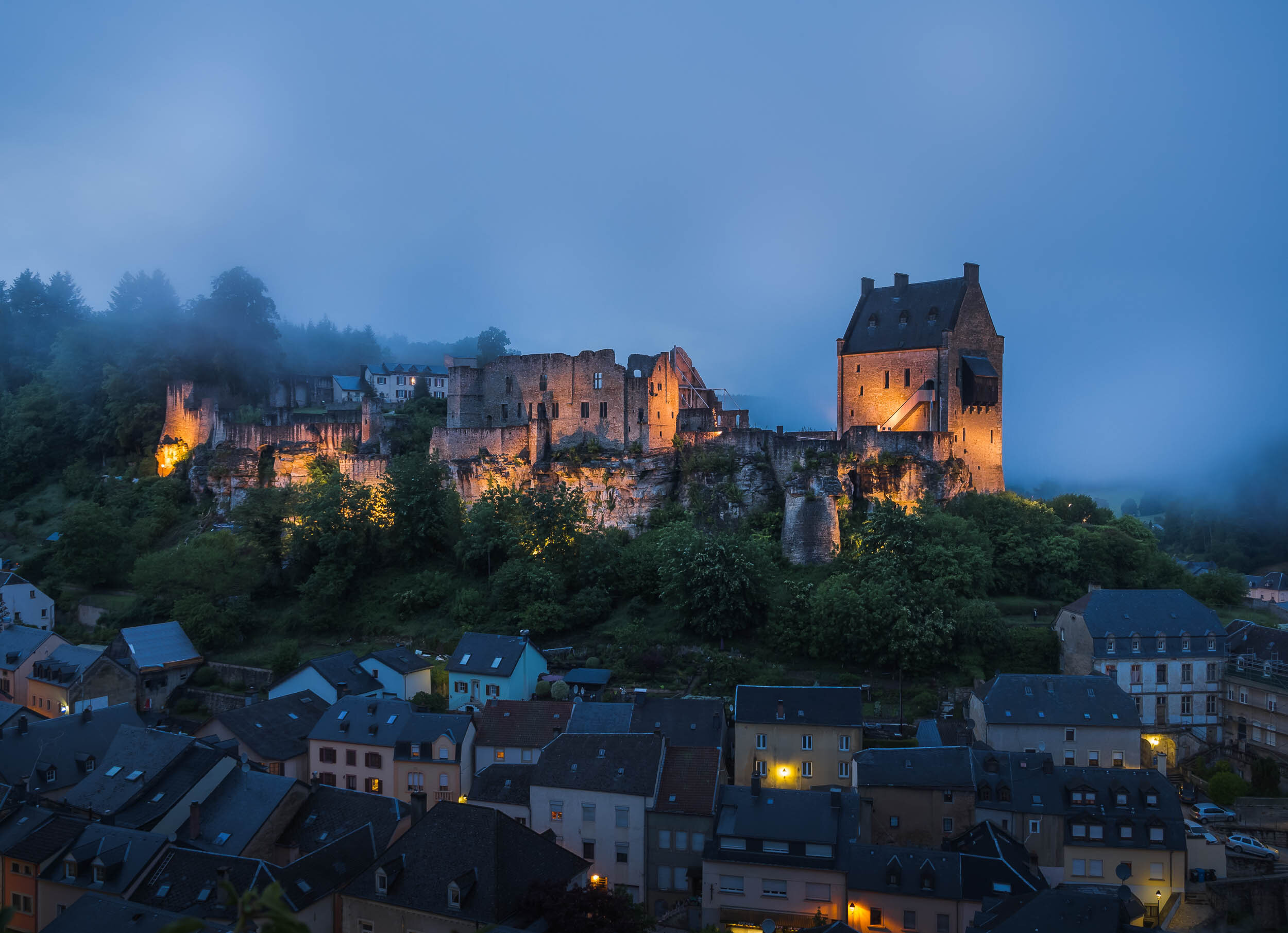
Nightfall
We made our way back to the castle viewpoint just as the lights turned on and the sky darkened.
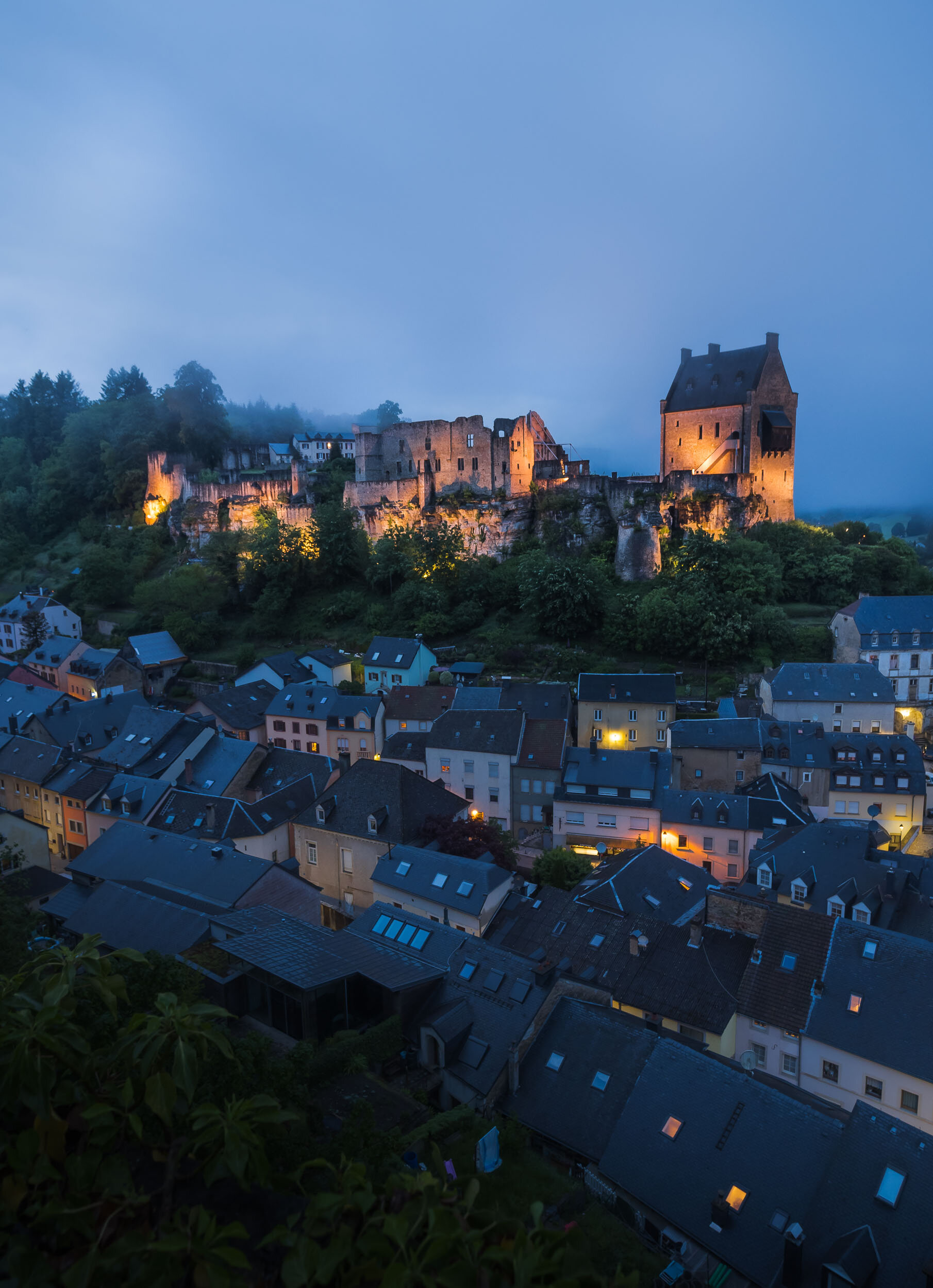
Commitment
To get these shots took some commitment - specifically a barefoot adventure through 5cm deep ice cold rain water.

Panoramic
A full view of Larochette.

Day 2
We spent our second day in Luxembourg city, the capital and home to around 125,000 people.
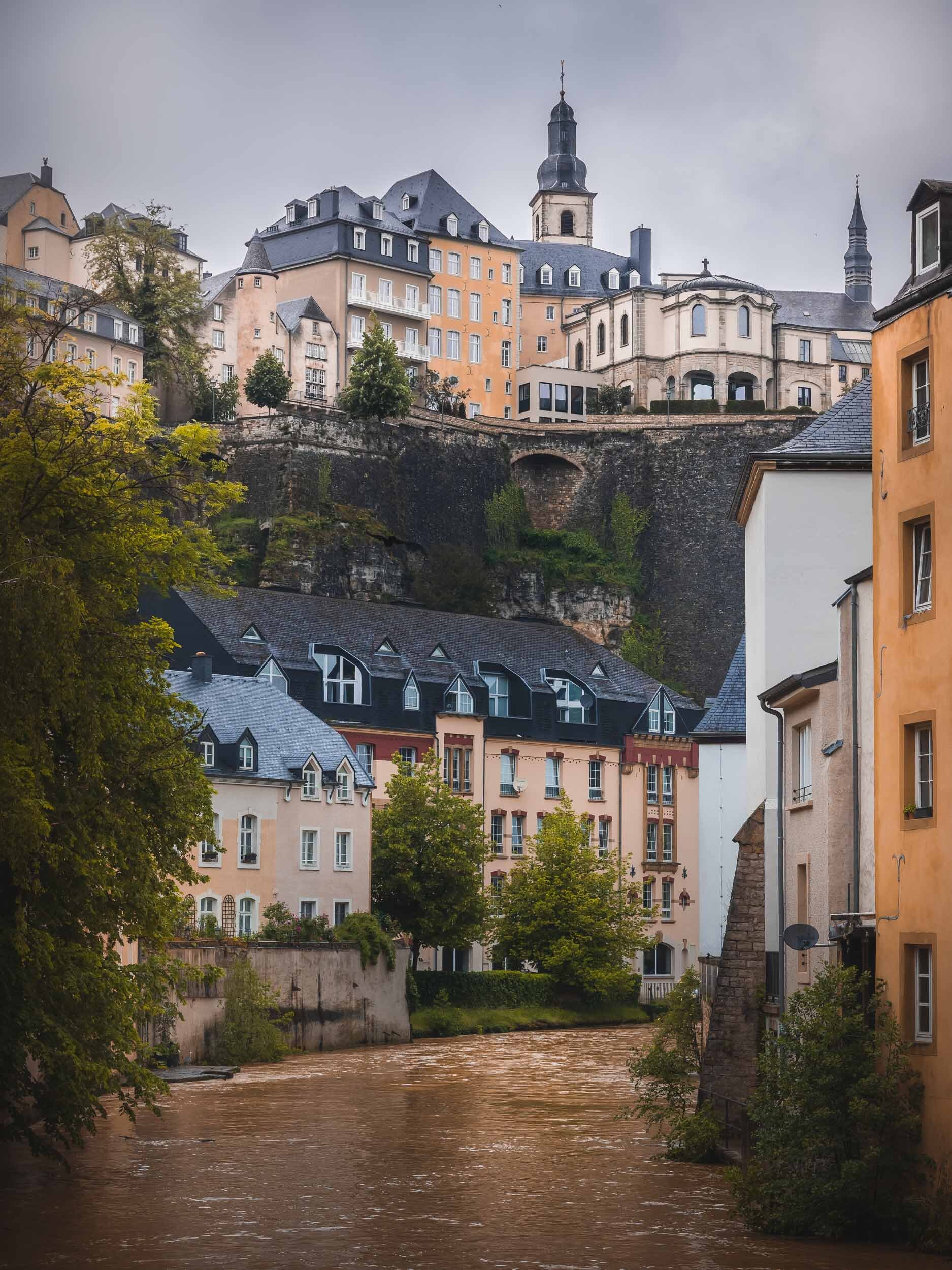
Grund
This district of Grund is quite picturesque - even more so when the Alzette river isn't brown owing to the heavy rainfall I would imagine.
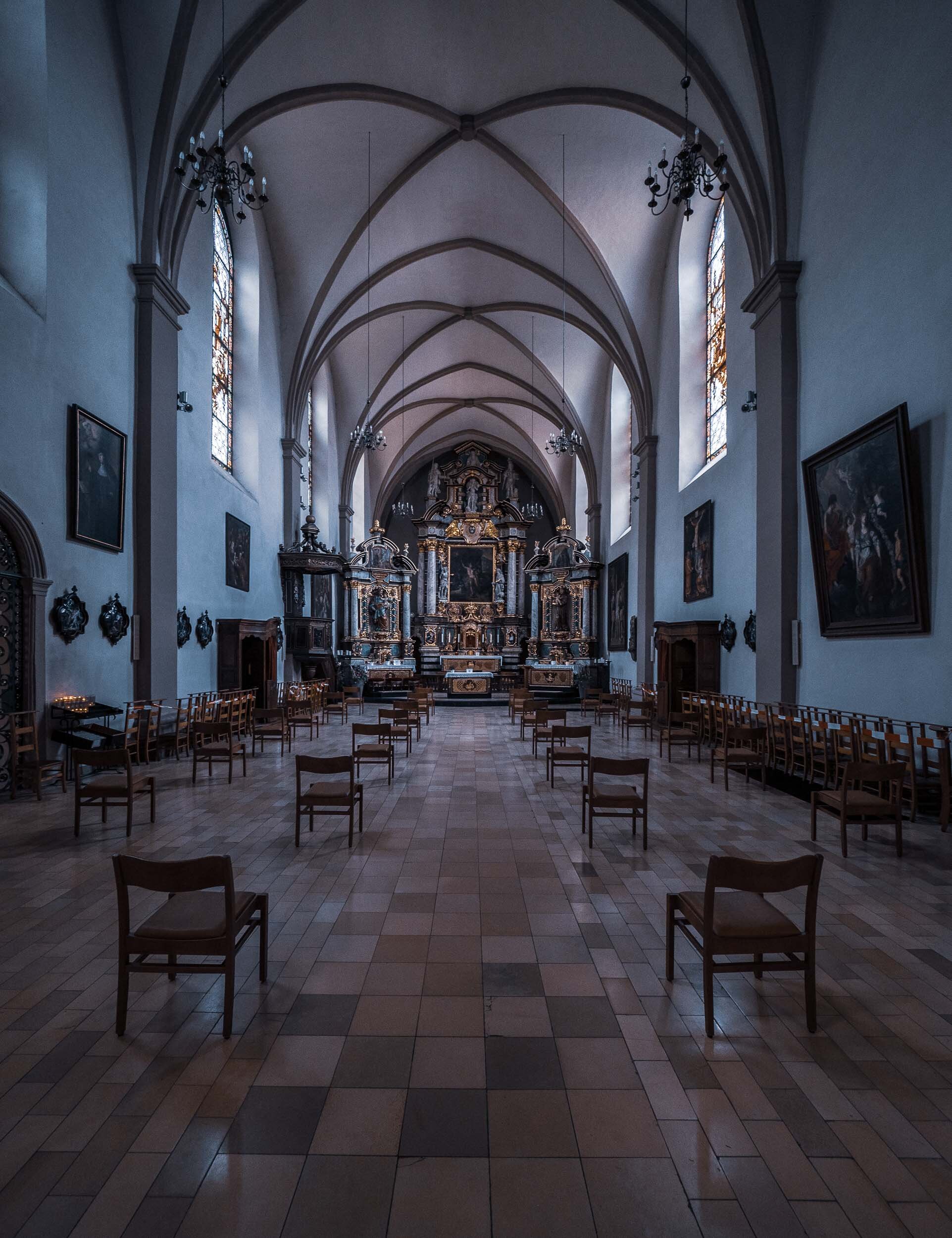
Socially Distanced
Religion during Covid.

International
Luxembourg is made up of almost 50% expatriats, and the city itself has an even higher percentage of non-native inhabitants.

The Look
I couldn't get a good cat shot this time, so this pigeon staring at me shall do the job.
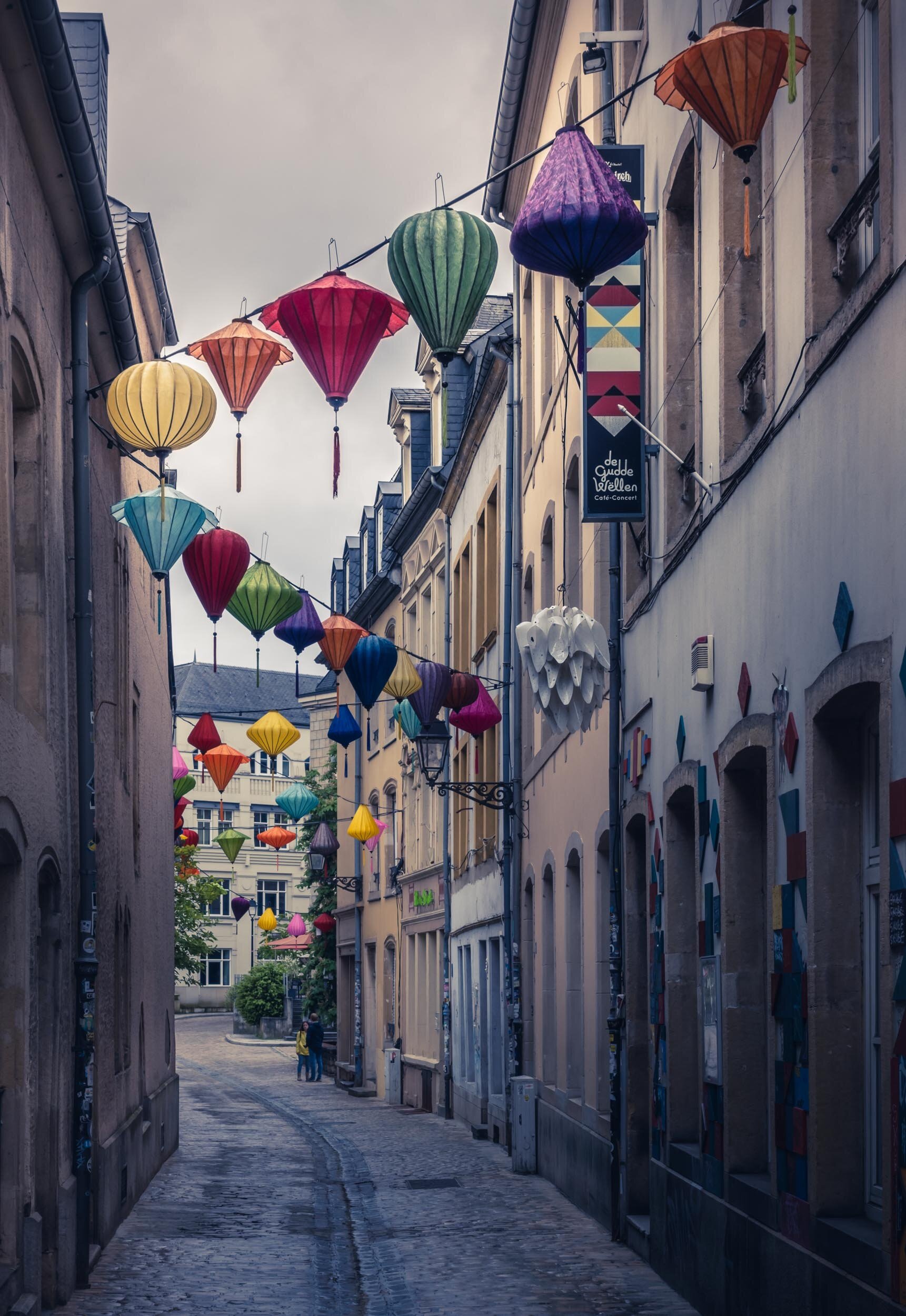
Colours
The first impression of the city was a bit quiet and sterile, but it did lighten up as the day progressed and we explored more.
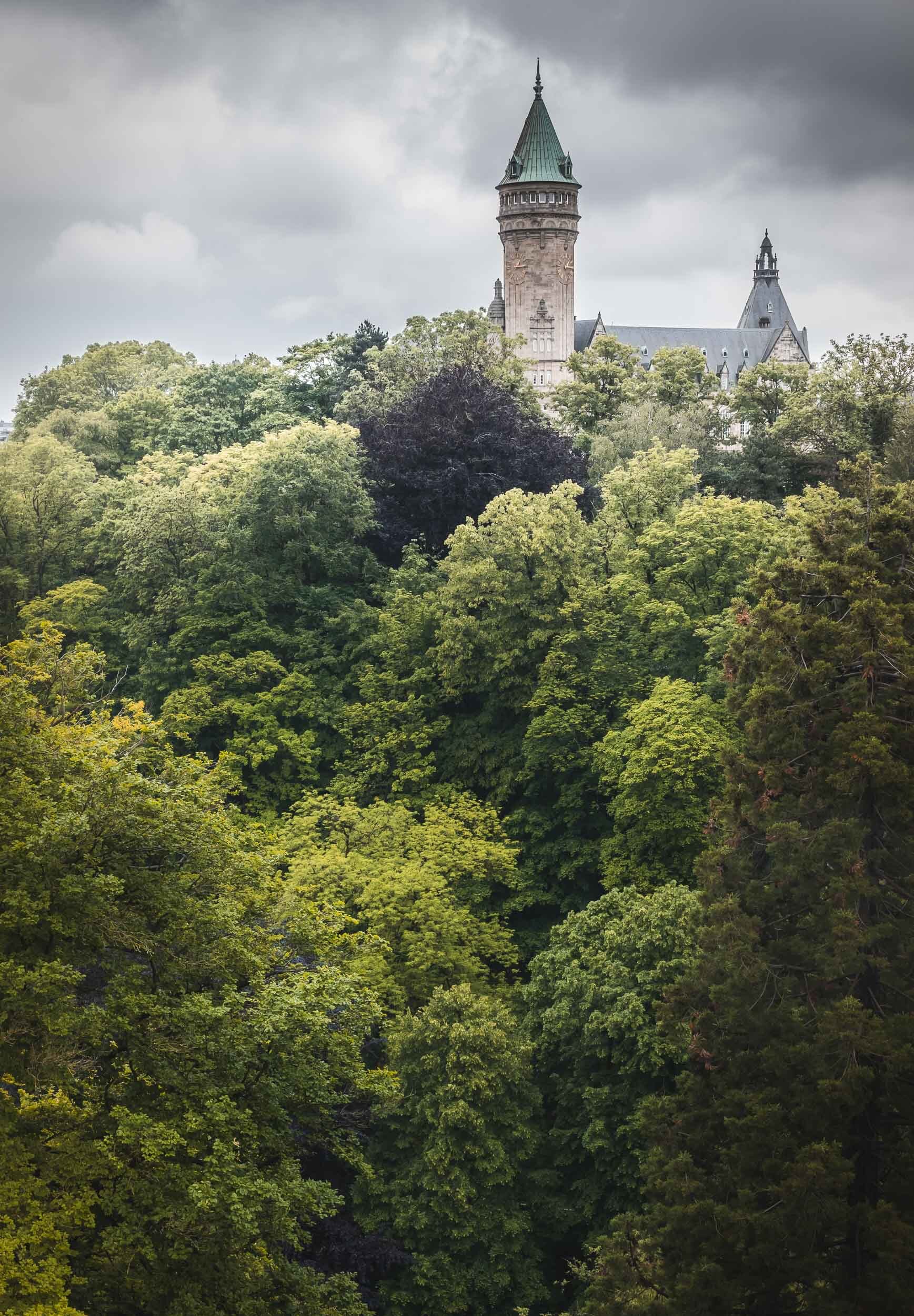
City Greens
The city centre is surrounded by canyons of the Alzette and Pétrusse rivers, filled with large trees, making for some interesting perspectives.
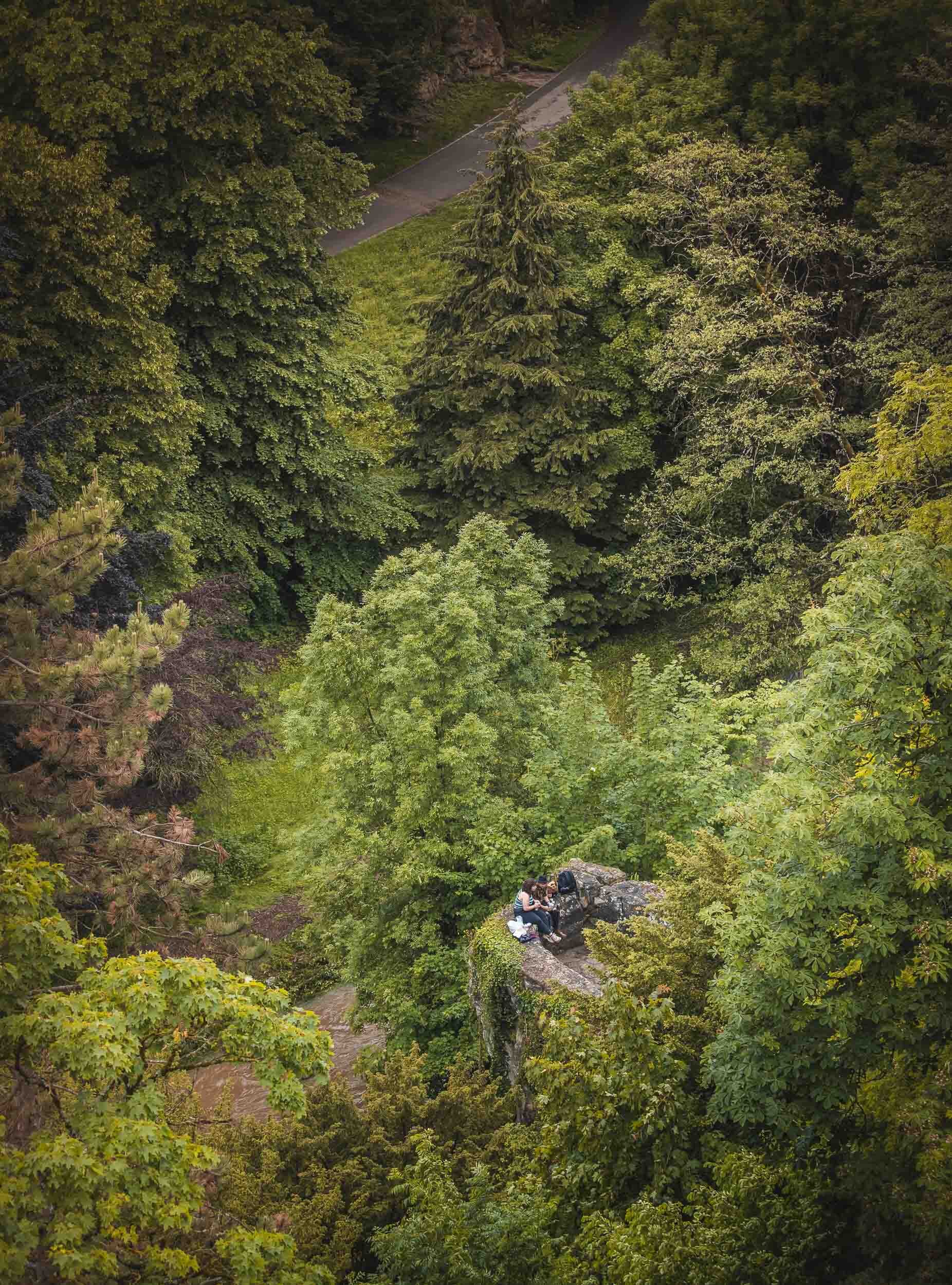
Spots
The canyons are accessible with small parks, bridges and full of small medieval remains.

Adolphe Bridge
This 1900s stone-arch bridge features a hanging walkway underneath, which opened in 2018.

In the Sky
A Cargolux plane - Luxembourg Airport's runway is in direct path of the city.
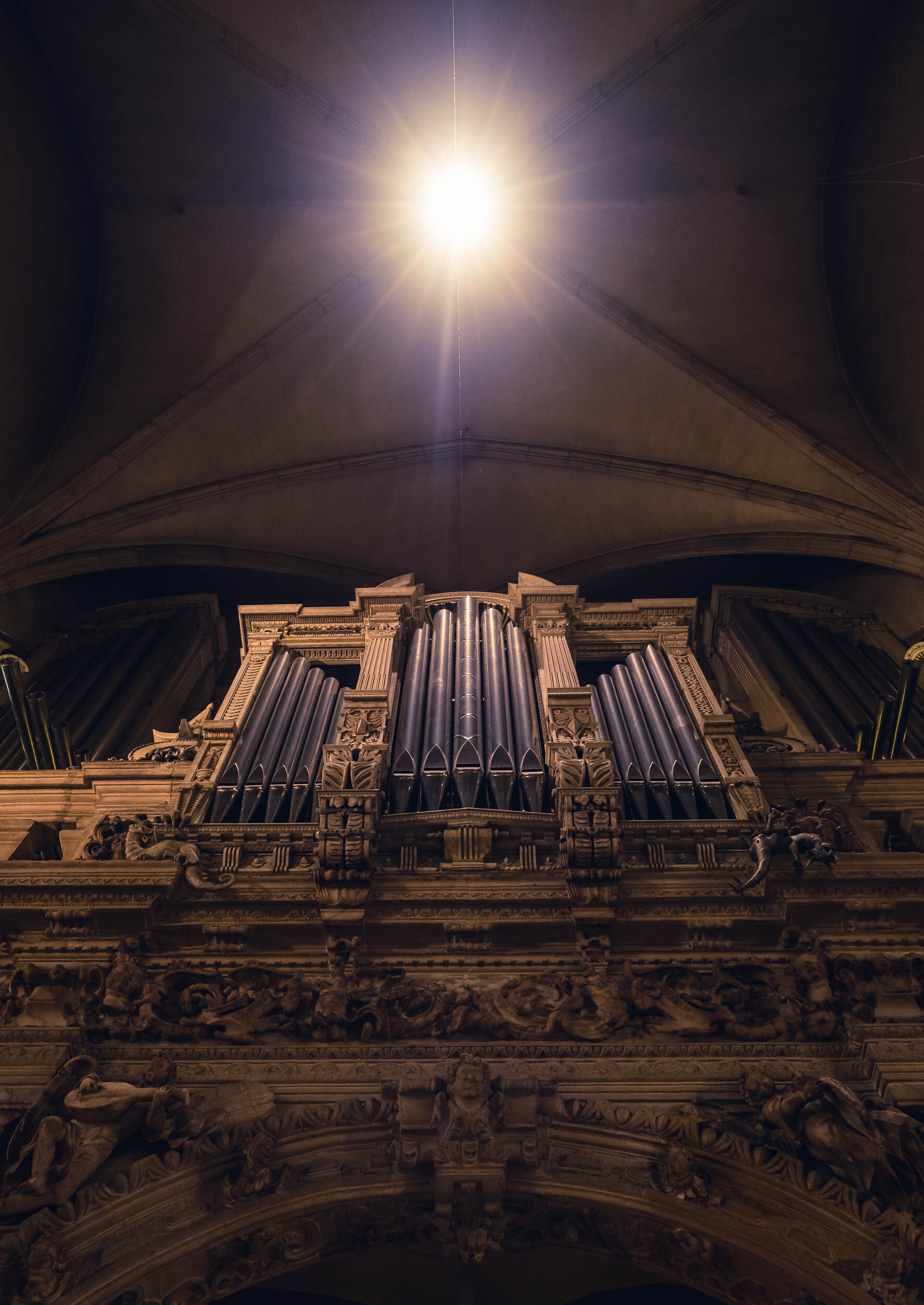
Pipes
One of my favourite instruments - this is the organ in the 17th century Notre Dame cathedral.

CBD
The Kirchberg district features the city's few skyscrapers, and several EU and other institutions.

Up
What goes up...

Down
... must come down again.

Modernity
This is one of the parts of the capital that feels distinctly modern - that is not the say the rest of the city didn't seem well maintained.

Philharmonie Luxembourg
Designed by Christian de Portzamparc, opened in 2005.

Contrasts
In many ways, one of the most fascinating aspects of the city is how elegantly it fused its medieval history with a modern cityscape, without overpowering it. Here's the Grand Duke Jean Museum of Modern Art with Musée Draï Eechelen in front.

Gold
The Court of Justice of the European Union is housed here.
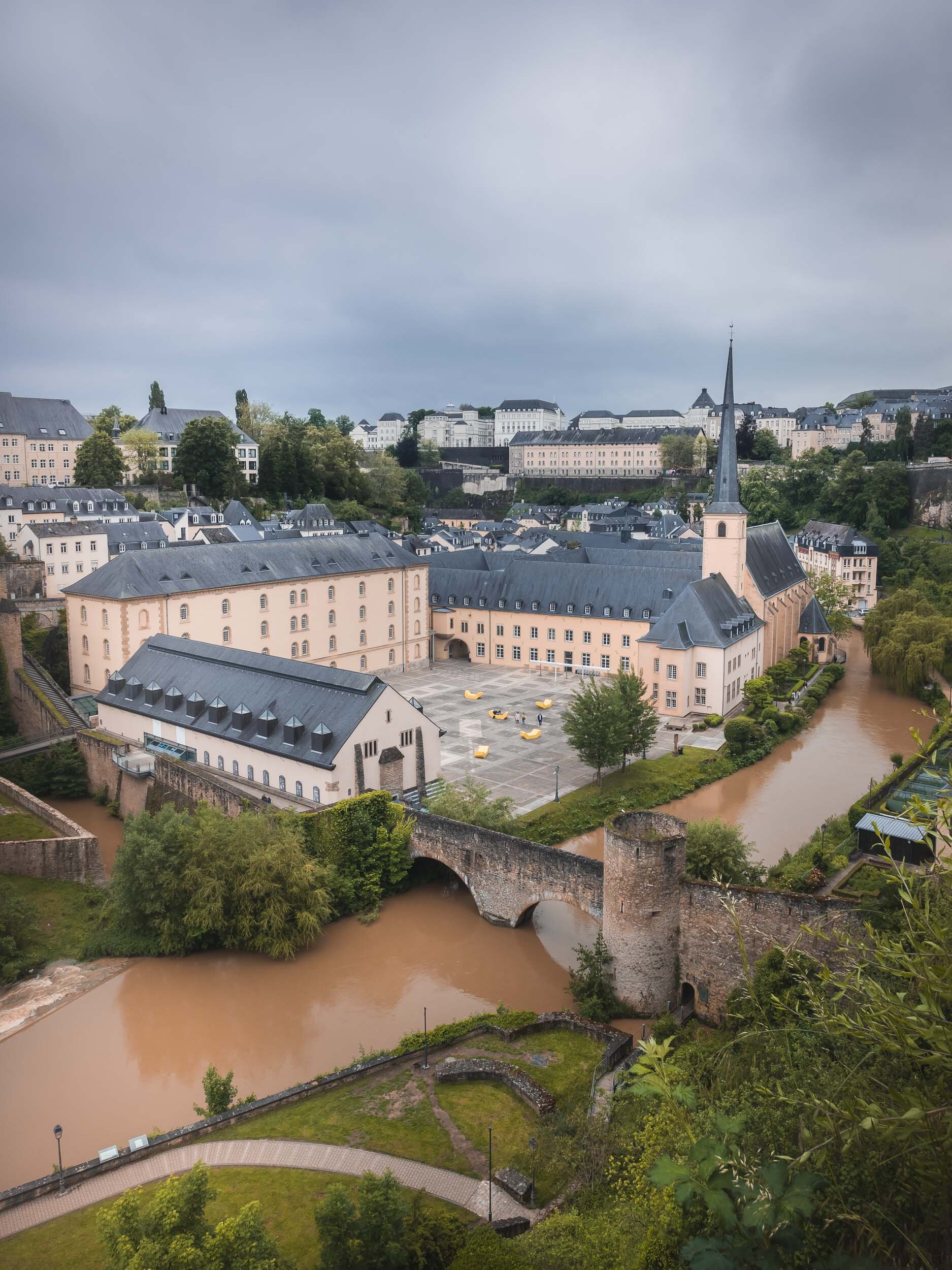
Church of Saint John
The Church of Saint John in Grund lies directly on the Alzette, and opposite the 11th cenury castle remains, around which the city settlement formed.
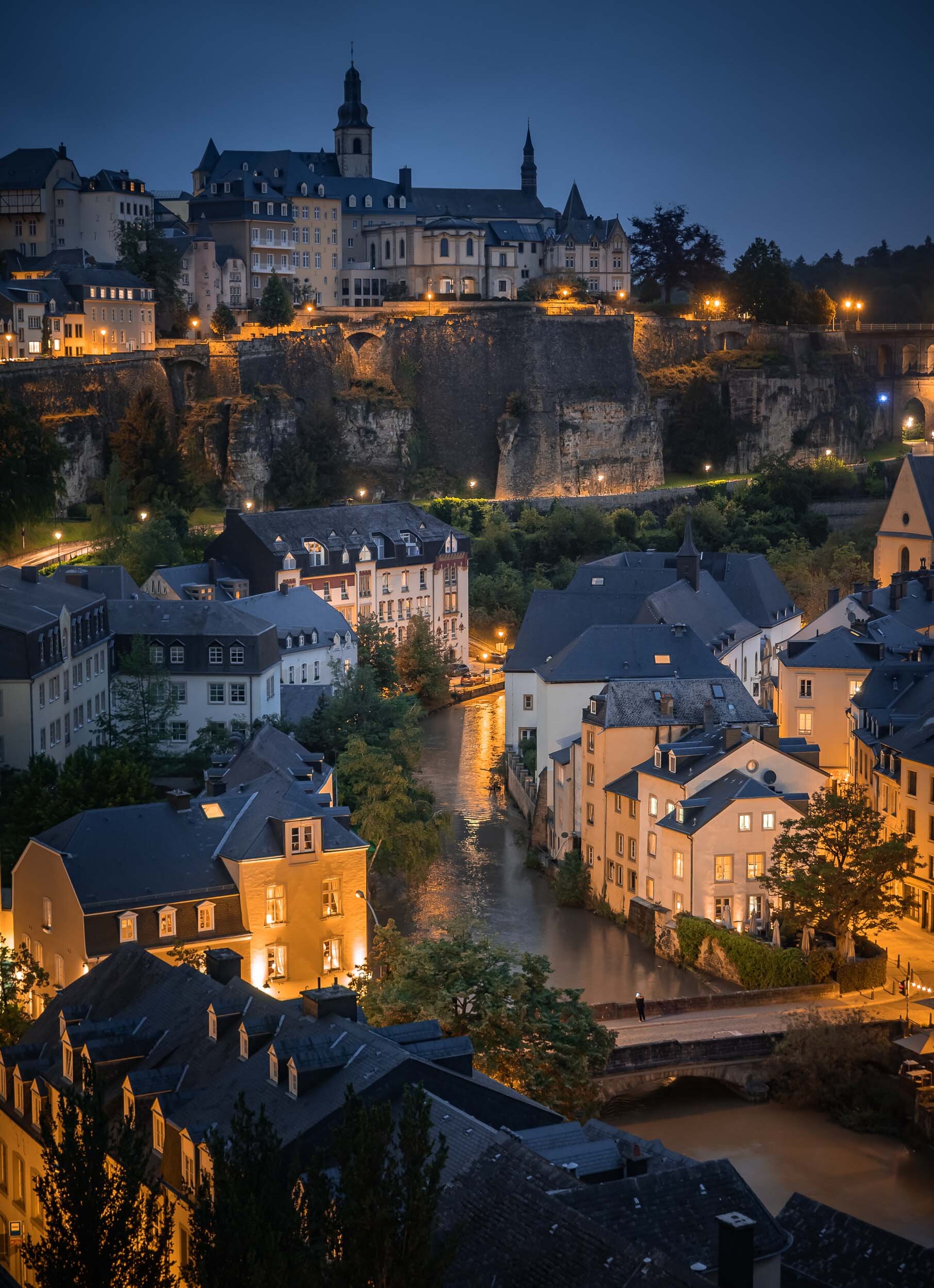
Evening Views
The late sunsets meant it took until 10pm to get these blue hour shots of the cityscape along the Alzette.
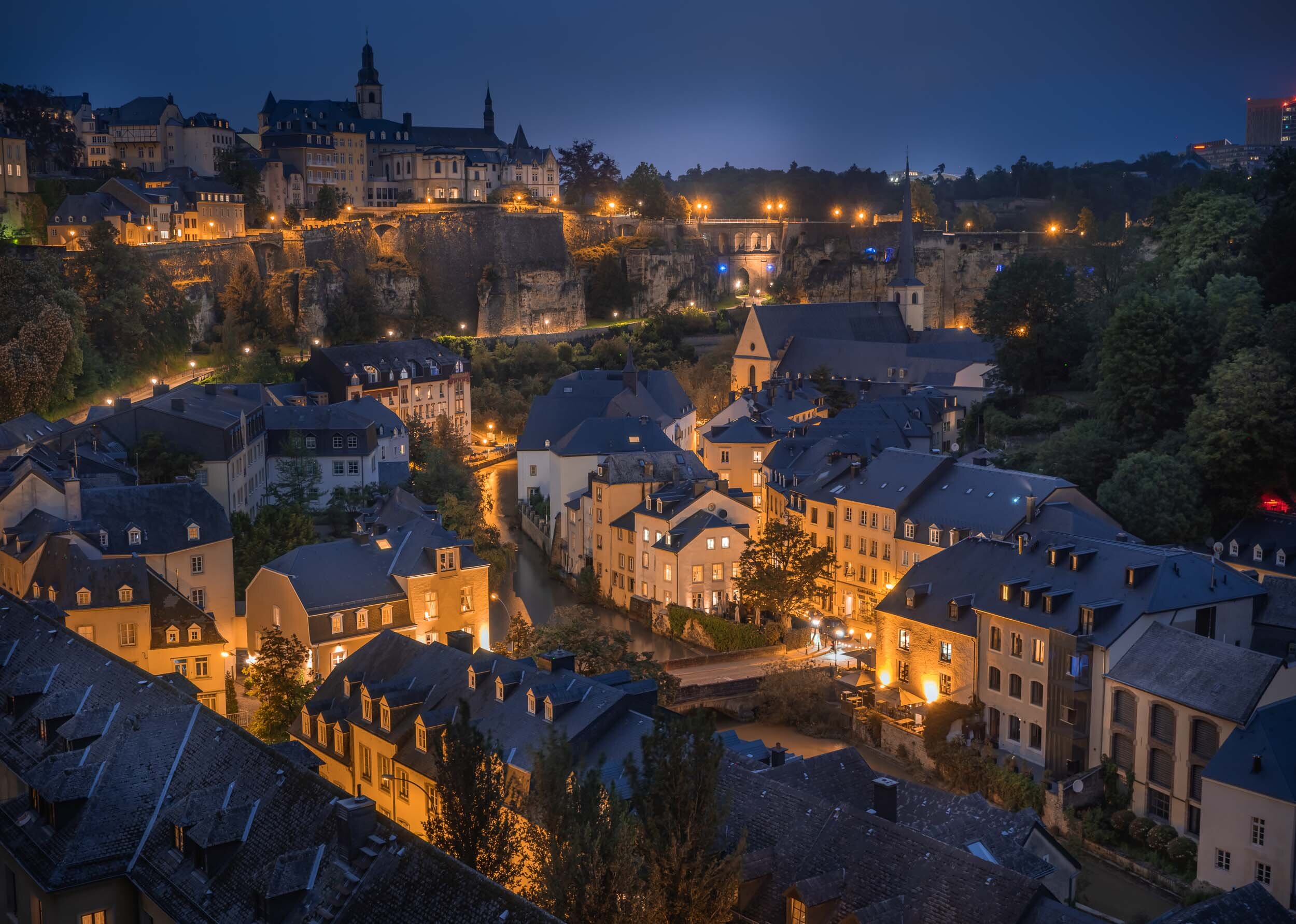
Nightfall over Luxembourg
It was worth the wait, and the extra 3km walk until we found the spot.
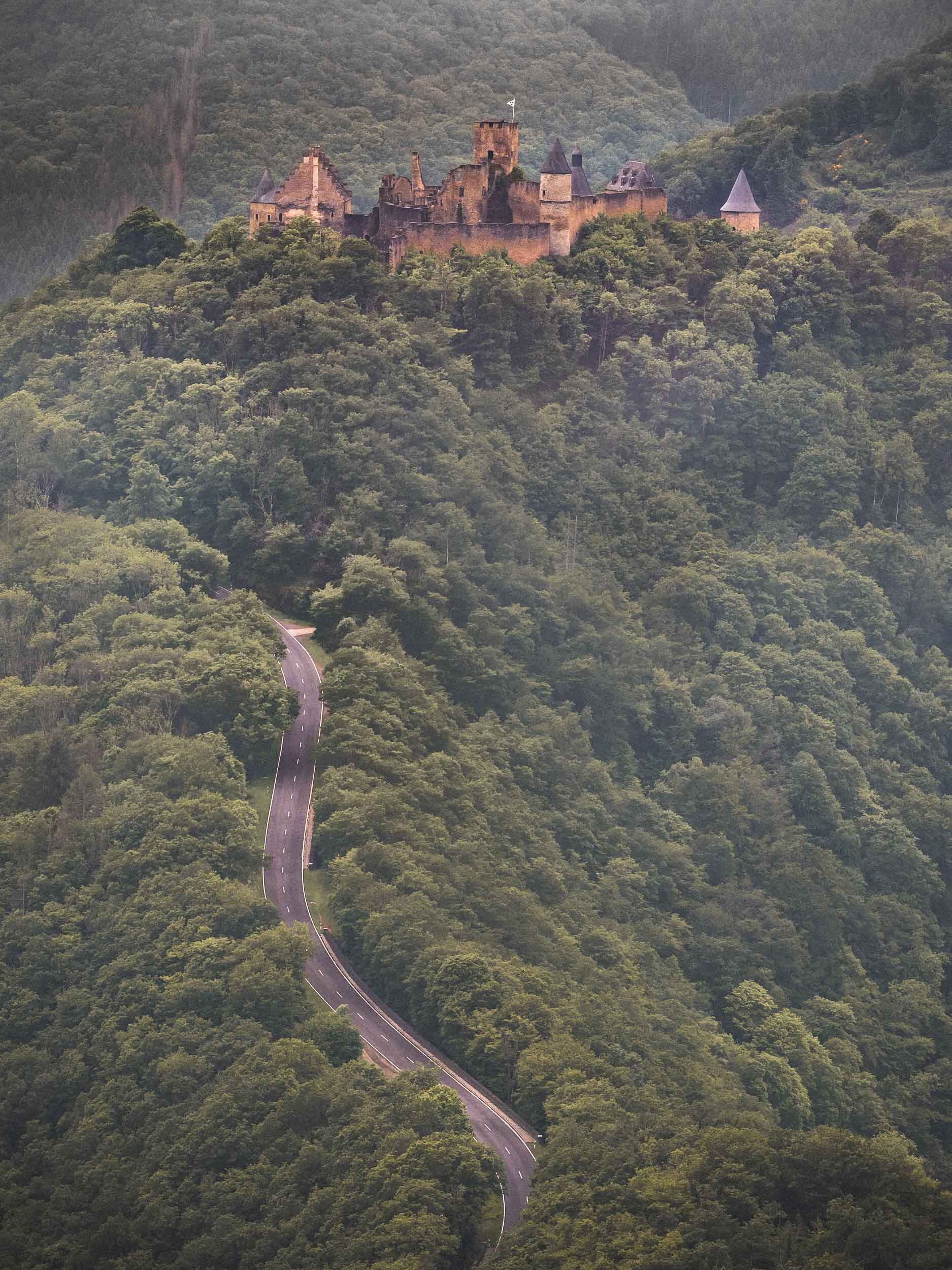
Bourscheid Castle
The last day had two more castles on the agenda. This is Bourscheid castle, some 150 metres above the River Sûre.

Angles
There are three nice view points on the surrounding hills, all giving a slightly different impression of the castle.

1000 years
From a distance it looks well preserved, but up close and inside it's more obvious that it has lost a lot of its original medieval structure.
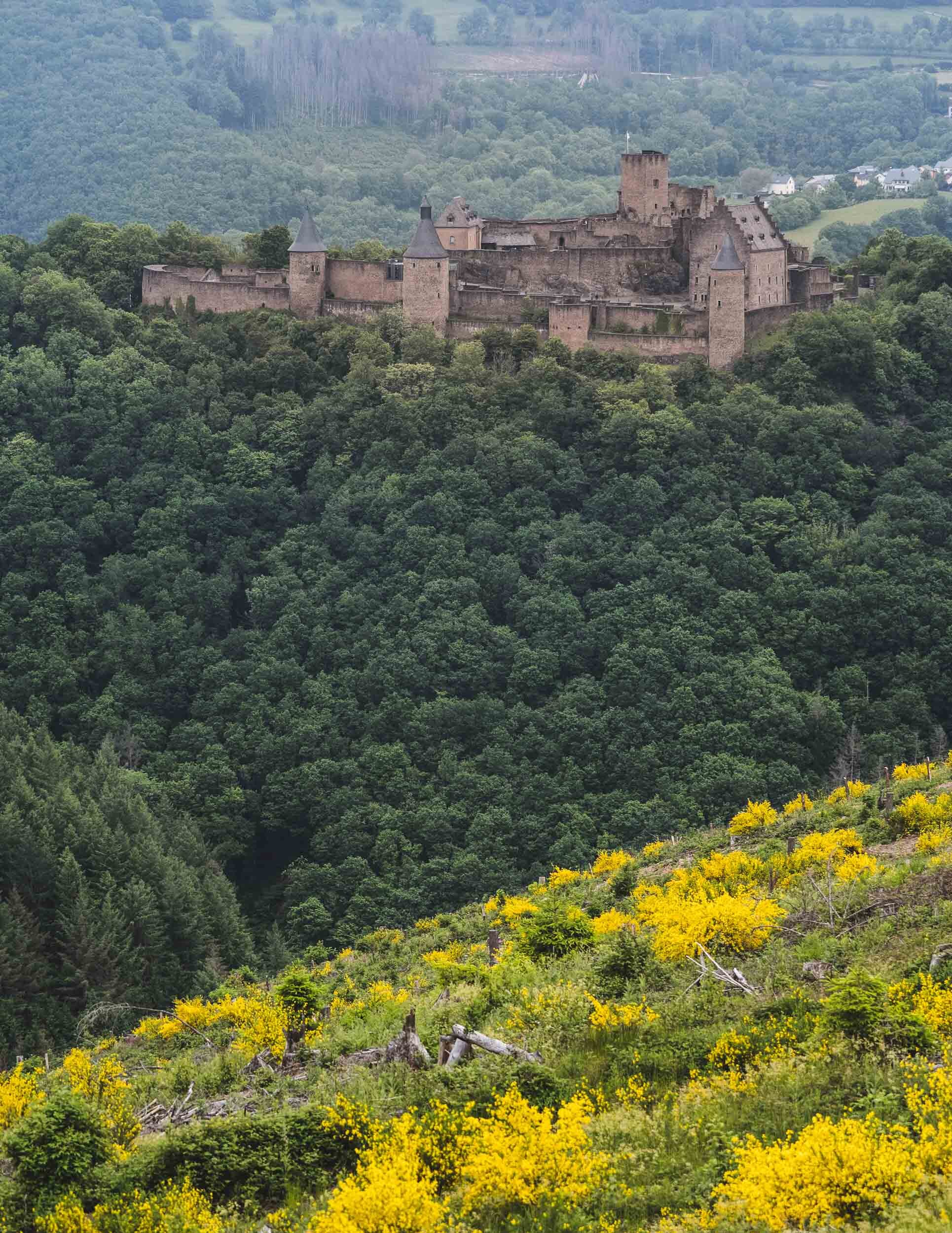
Yellow
The last viewpoint made for some beautiful contrasts with what I believe are rape seed flowers.

Lonely Trees
Can't resist those.
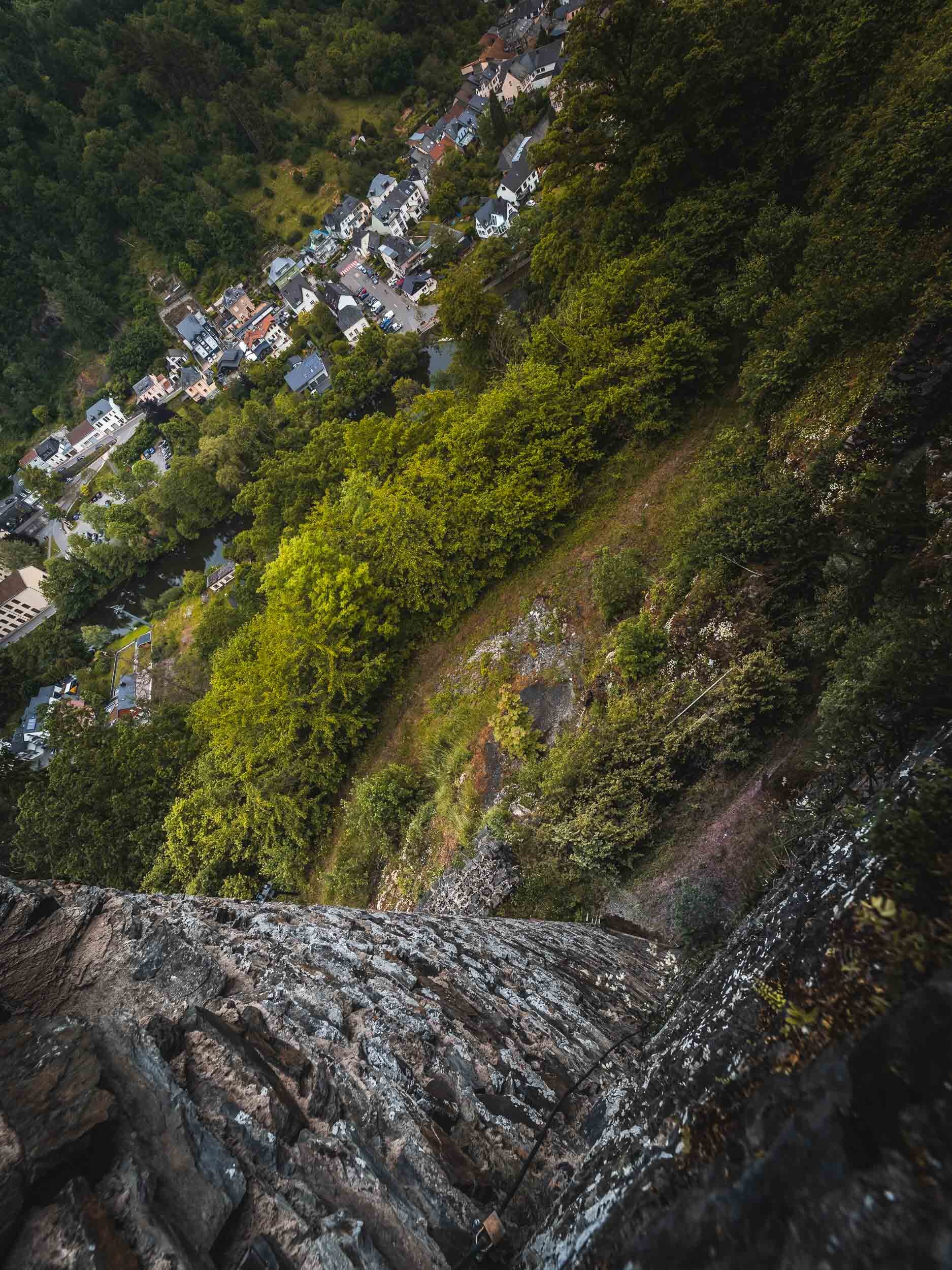
Perched High
It is situated over 300m above the city, which makes for some dramatic perspectives.

Castle No 4
And the last castle on the list was probably the most famous one - Vianden.
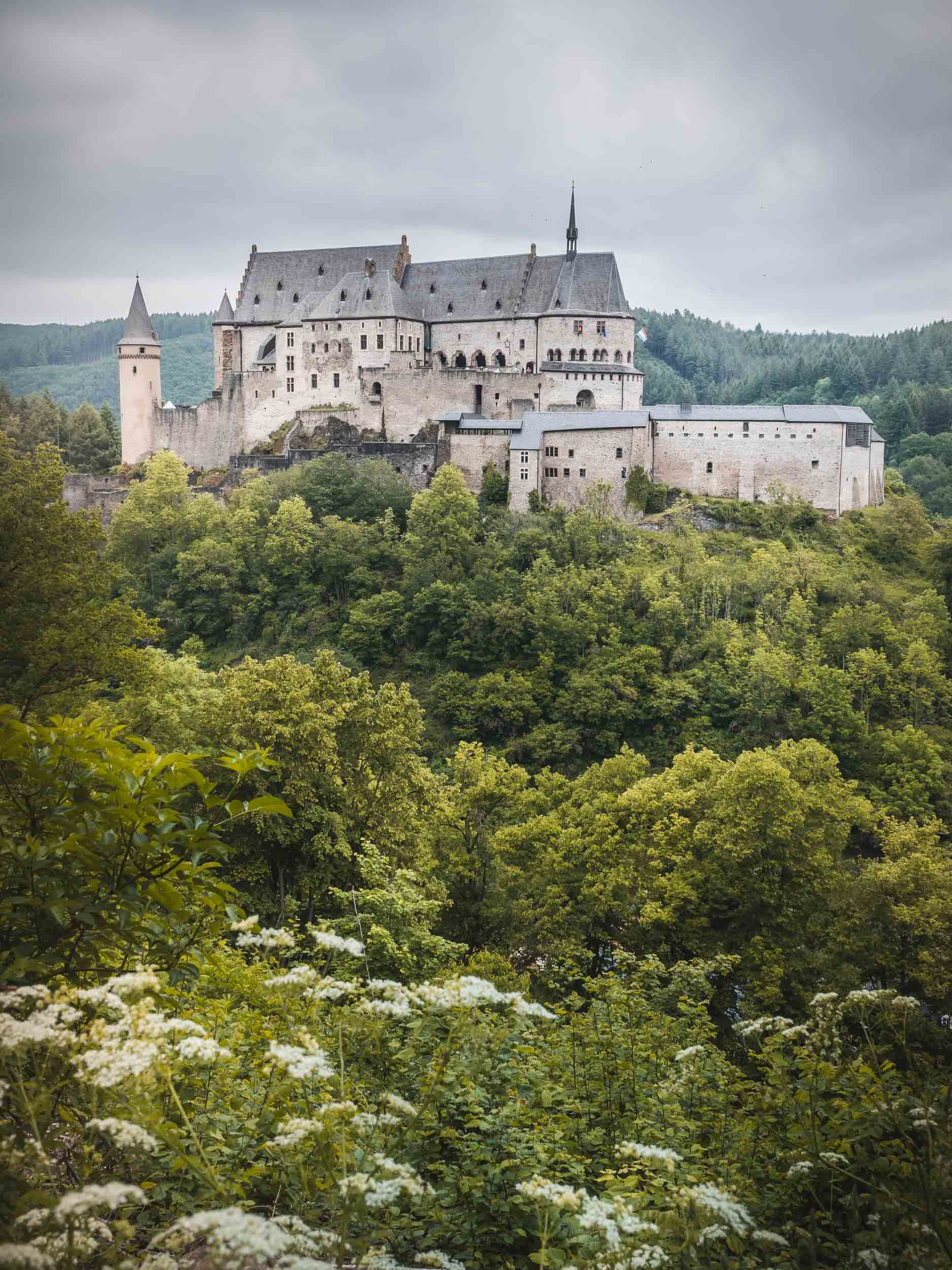
Transformations
The castle was built on the site of an ancient Roman castellum, and dates back almost a thousand years, although it has Gothic and Renaissance sections as well.
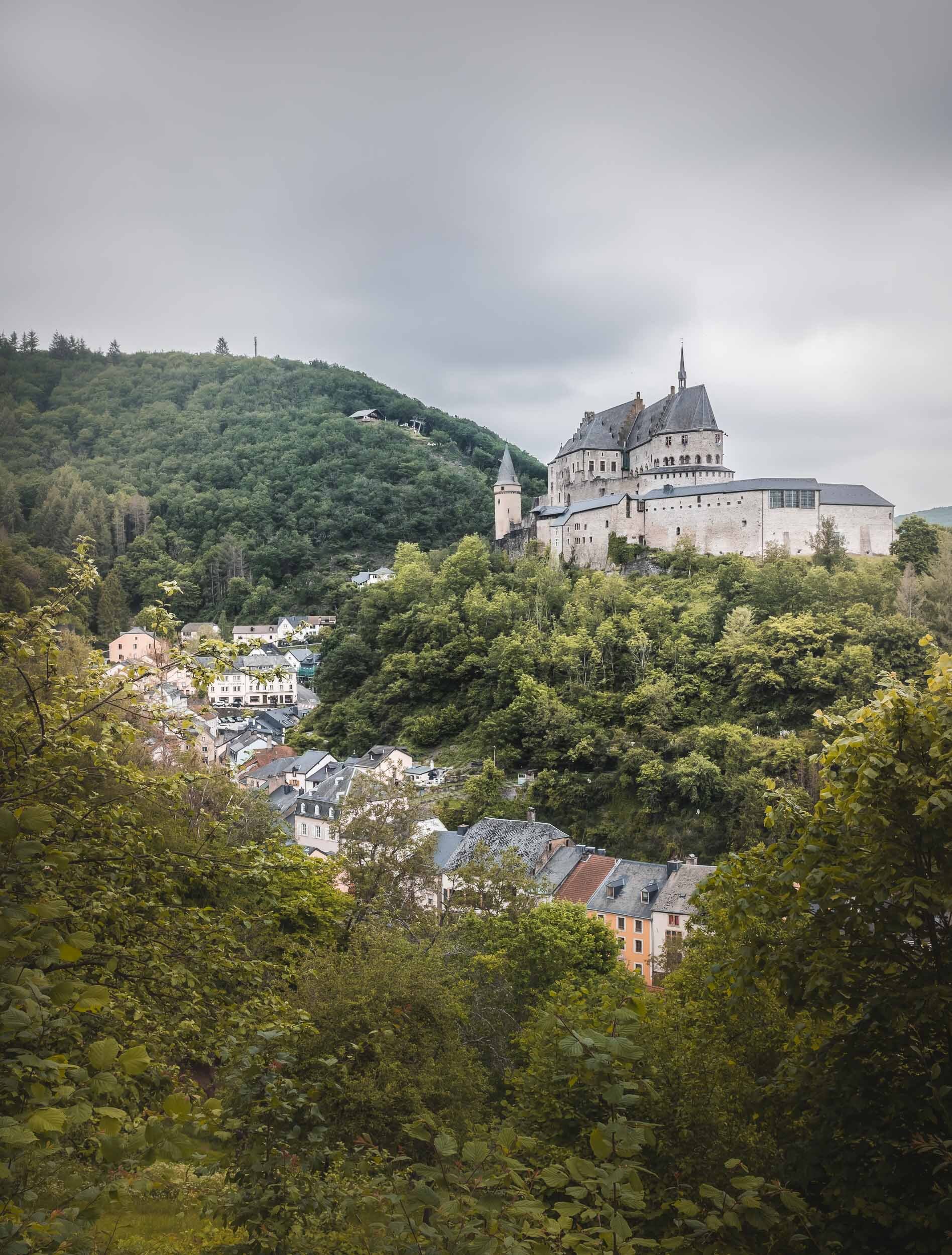
Modern Times
The castle played a military role in the second world war Battle of Vianden. It's final restoration was completed in 1990.
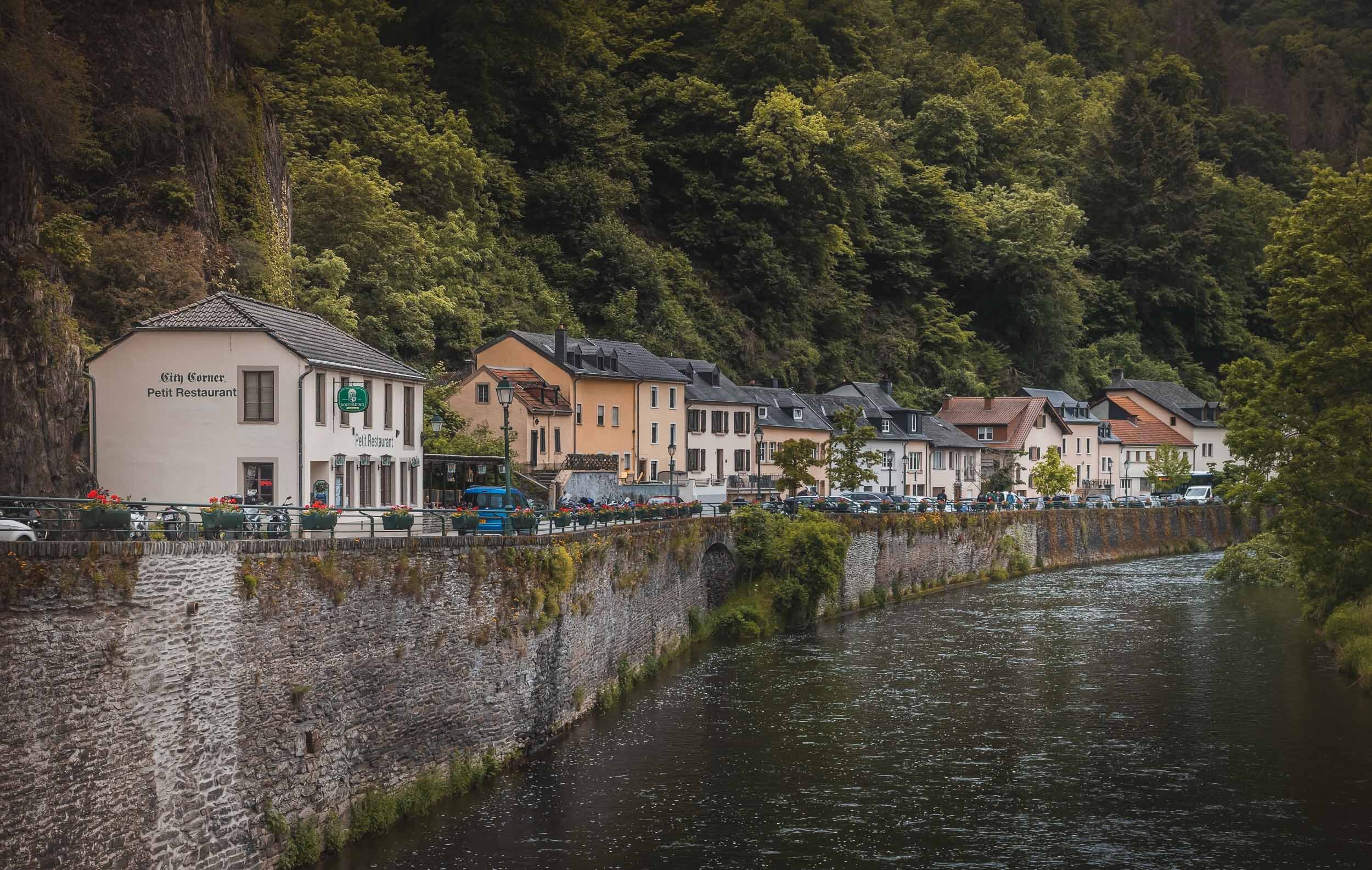
Vianden
The town of 1500 people lies on the Our river. It was our last station of the trip.
Abu Dhabi - A weekend of Sights
While I do prefer Dubai over the capital, Abu Dhabi features a lot of interesting sights. A weekend trip in March 2019 took me to a few new ones: The Presidential Palace, the Founders Memorial, Qasr Al Hosn and the Etihad Towers observation deck, with a quick stop at Emirates Palace as well.

While I do prefer Dubai over the capital, Abu Dhabi features a lot of interesting sights. A weekend trip in March 2019 took me to a few new ones: The Presidential Palace, the Founders Memorial, Qasr Al Hosn and the Etihad Towers observation deck, with a quick stop at Emirates Palace as well.
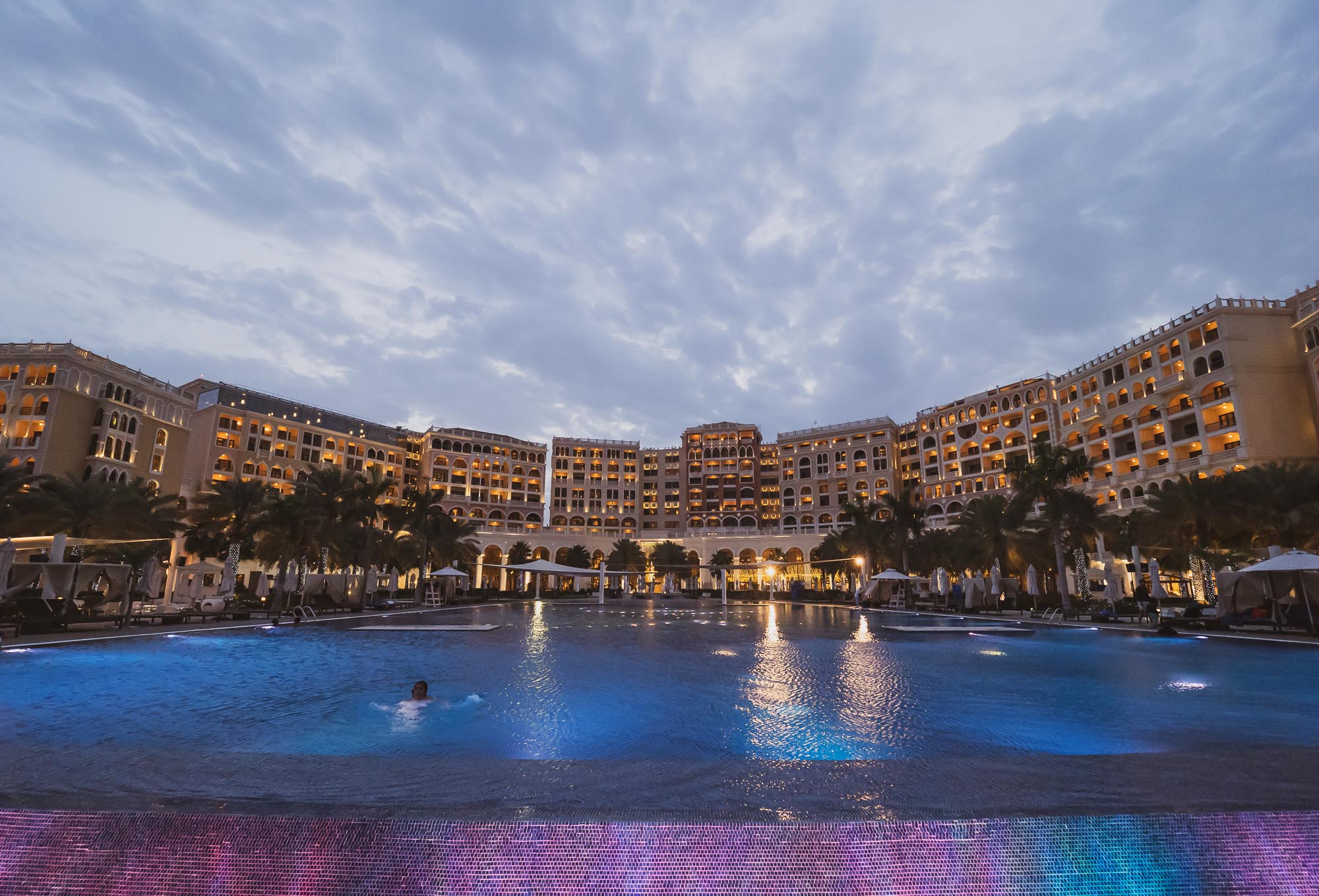
Ritz Carlton, Grand Canal Abu Dhabi
A strange hotel in a Venice style setup, that could be straight out of Las Vegas.
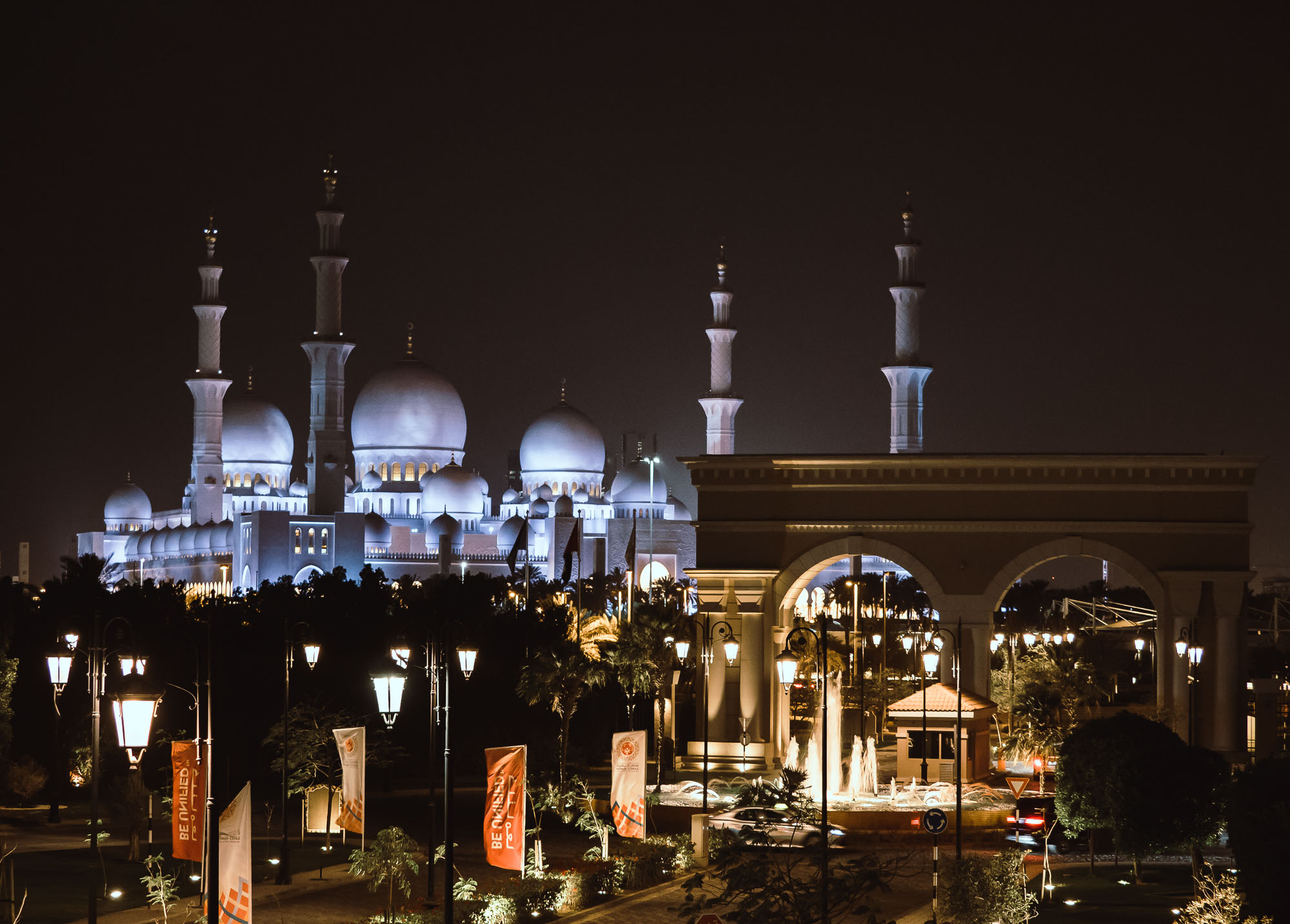
Overlap
The entrance gate to the Ritz Carlton with the mosque in the background.
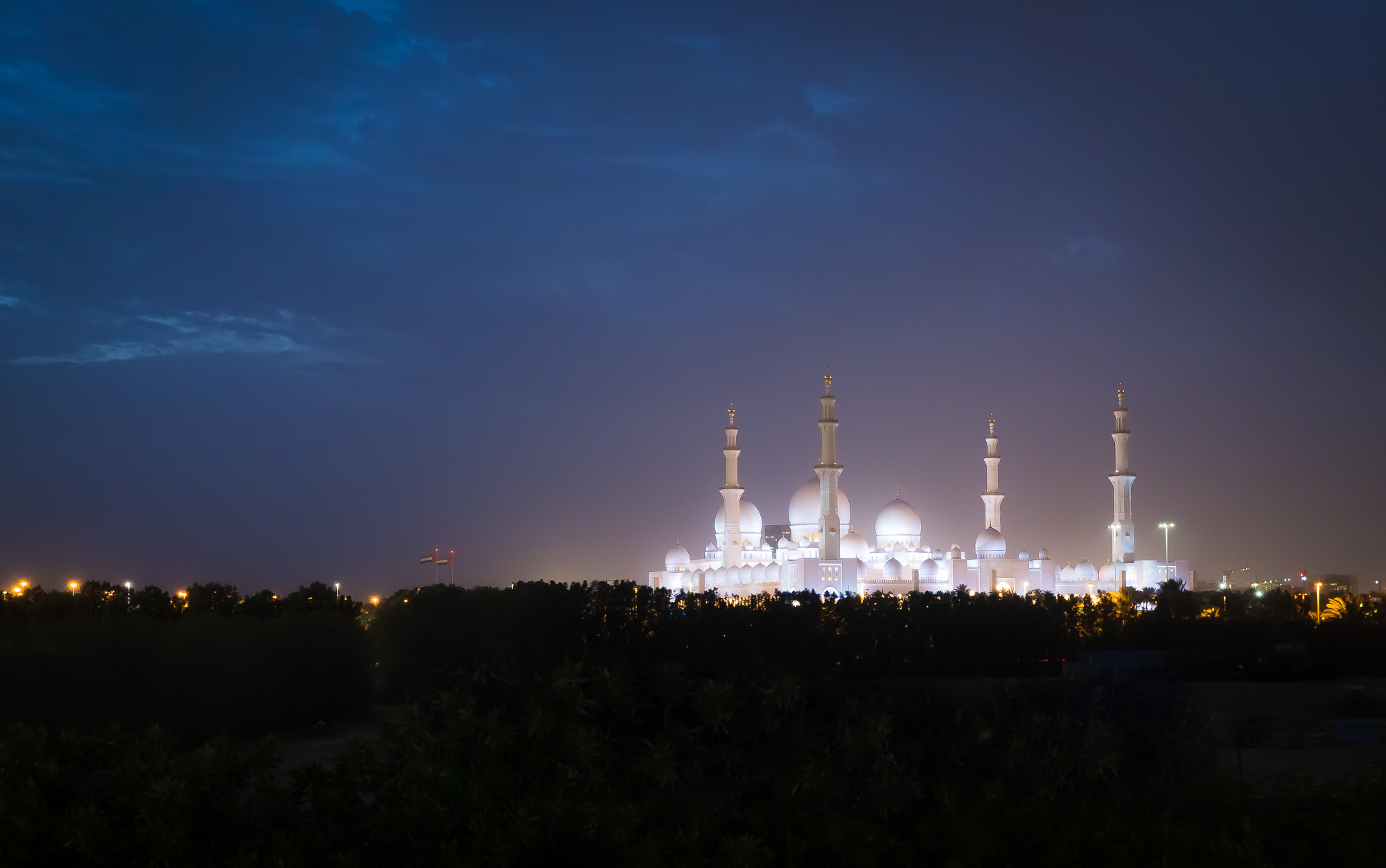
Sheikh Zayed Grand Mosque
It was designed by Syrian architect Yousef Abdelky. I've been inside in 2016 and more photos are on my blog - defintely worth a visit.
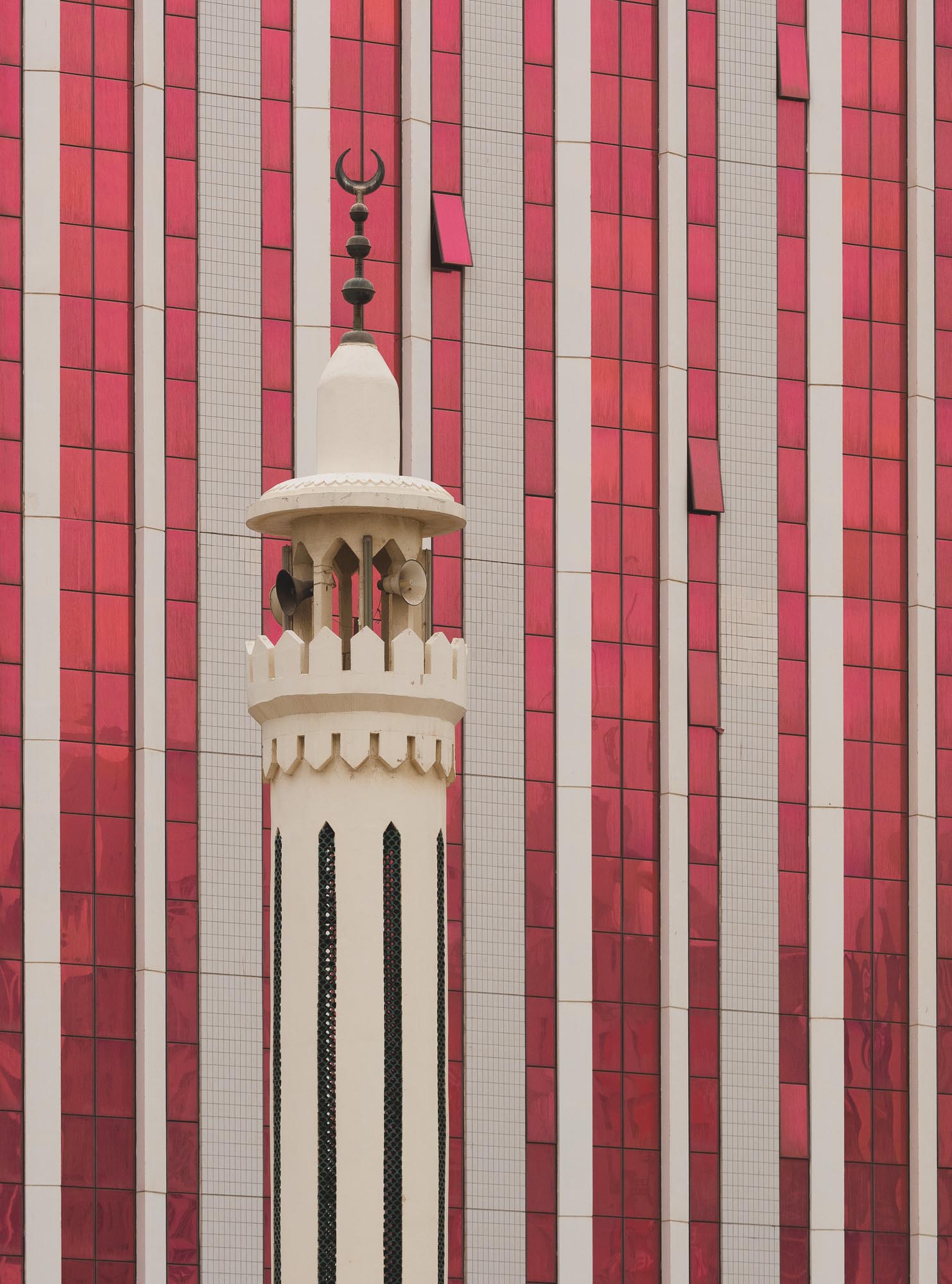
Contrasts
Pink glass facades with minarets in Abu Dhabi city.
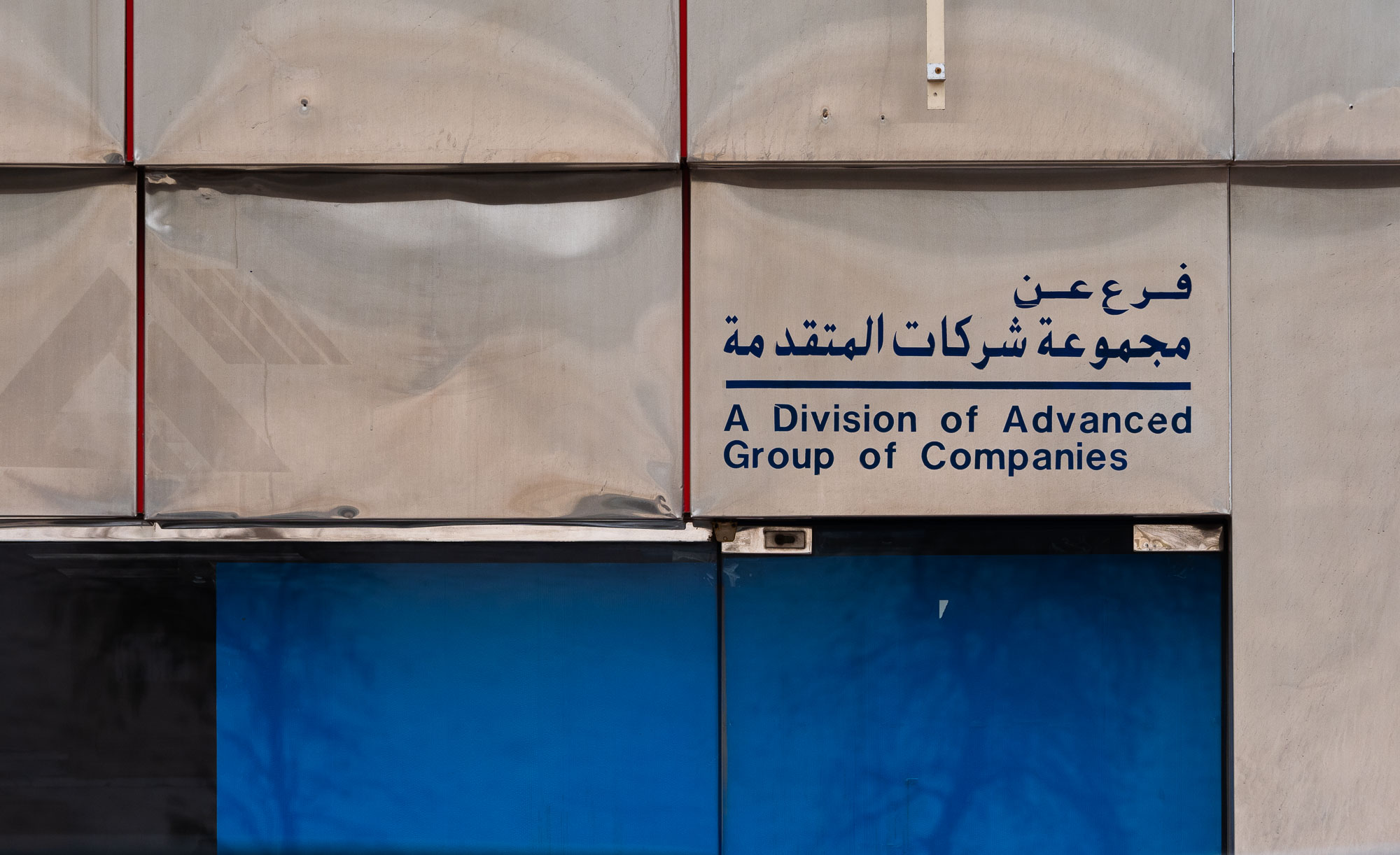
Confidence
Company name = Win!
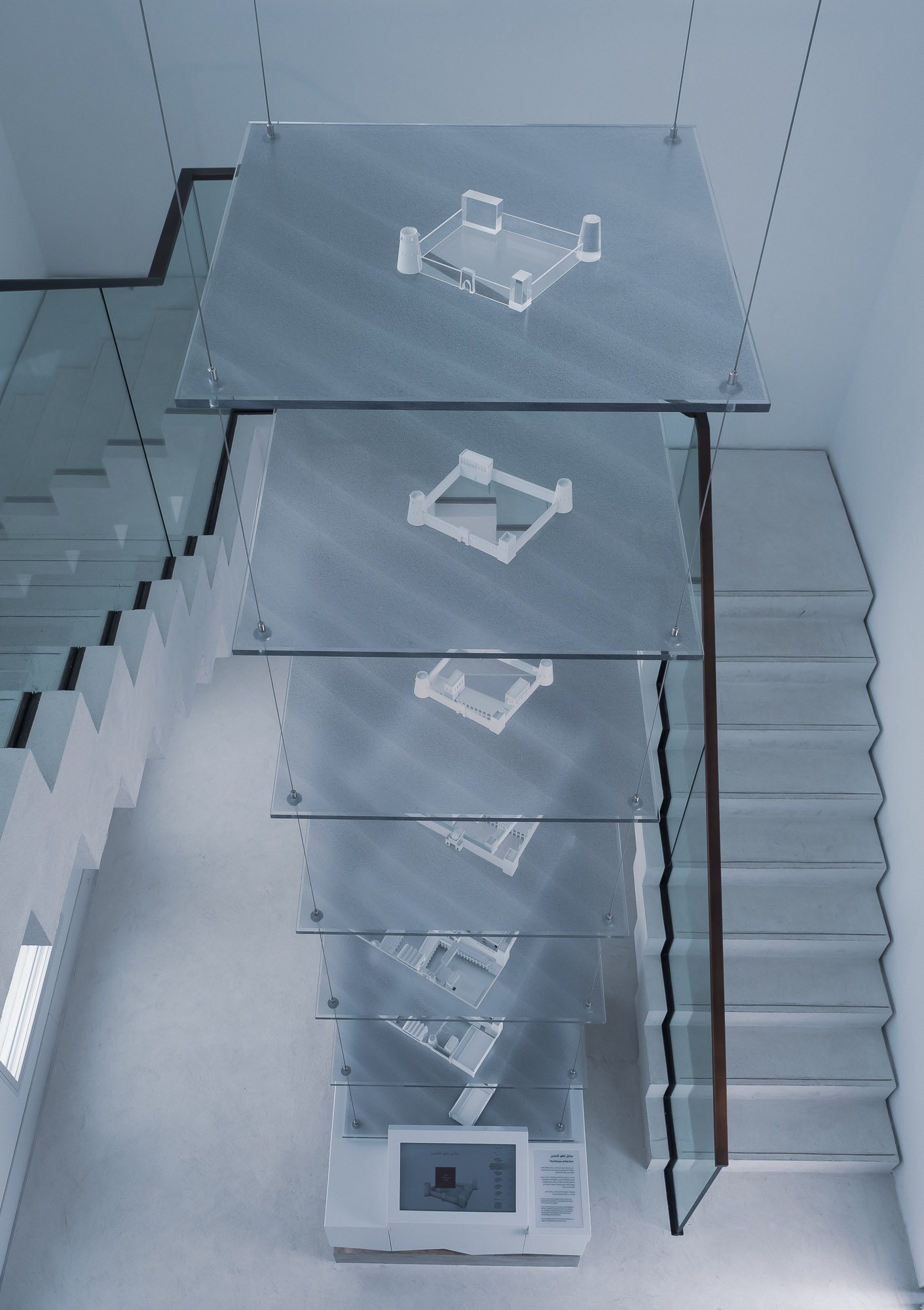
Qasr Al Hosn
The evolution of the oldest stone building in Abu Dhabi city.
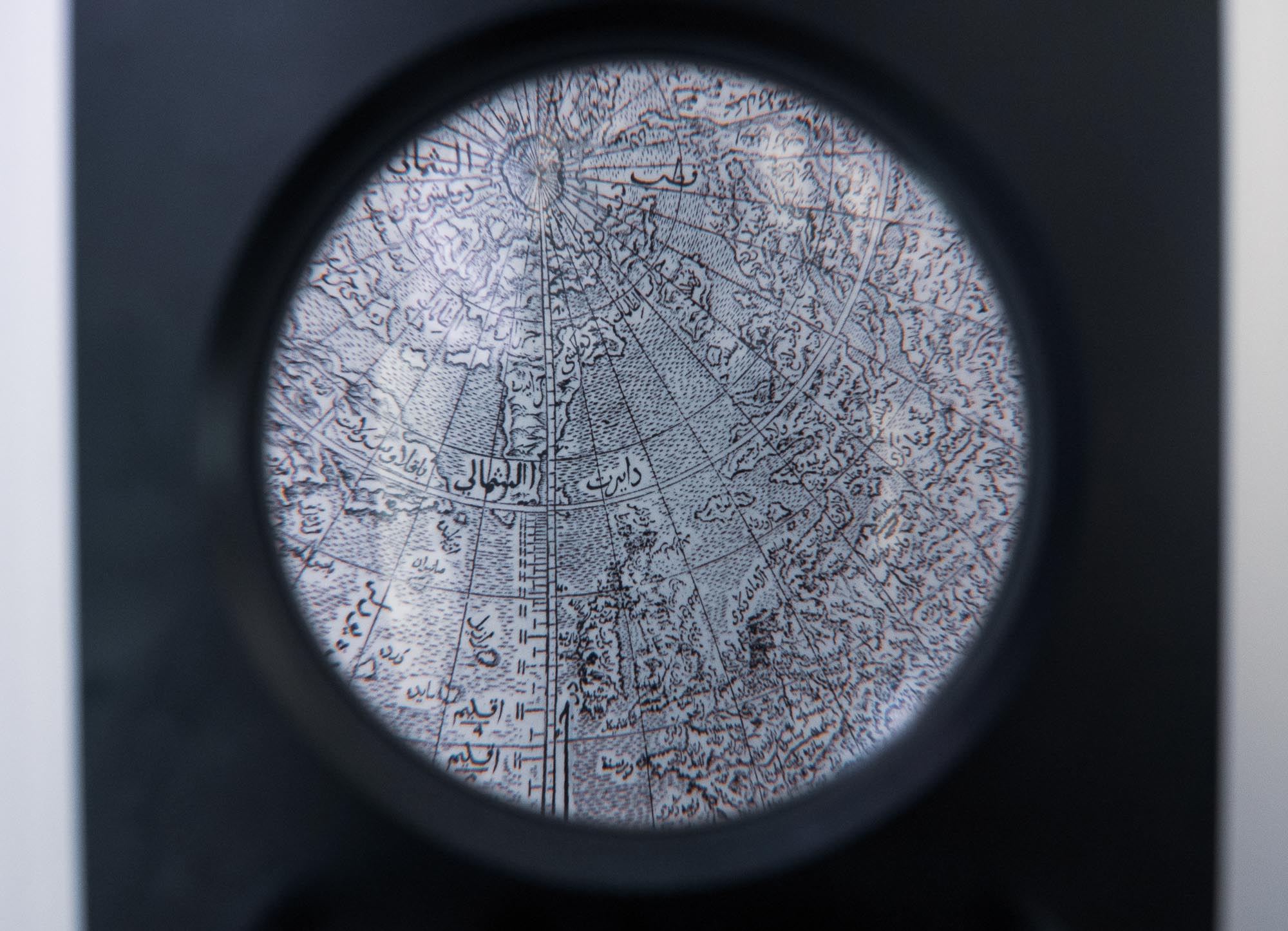
Exploration
The fort is now open for the public with exhibitions on its history.
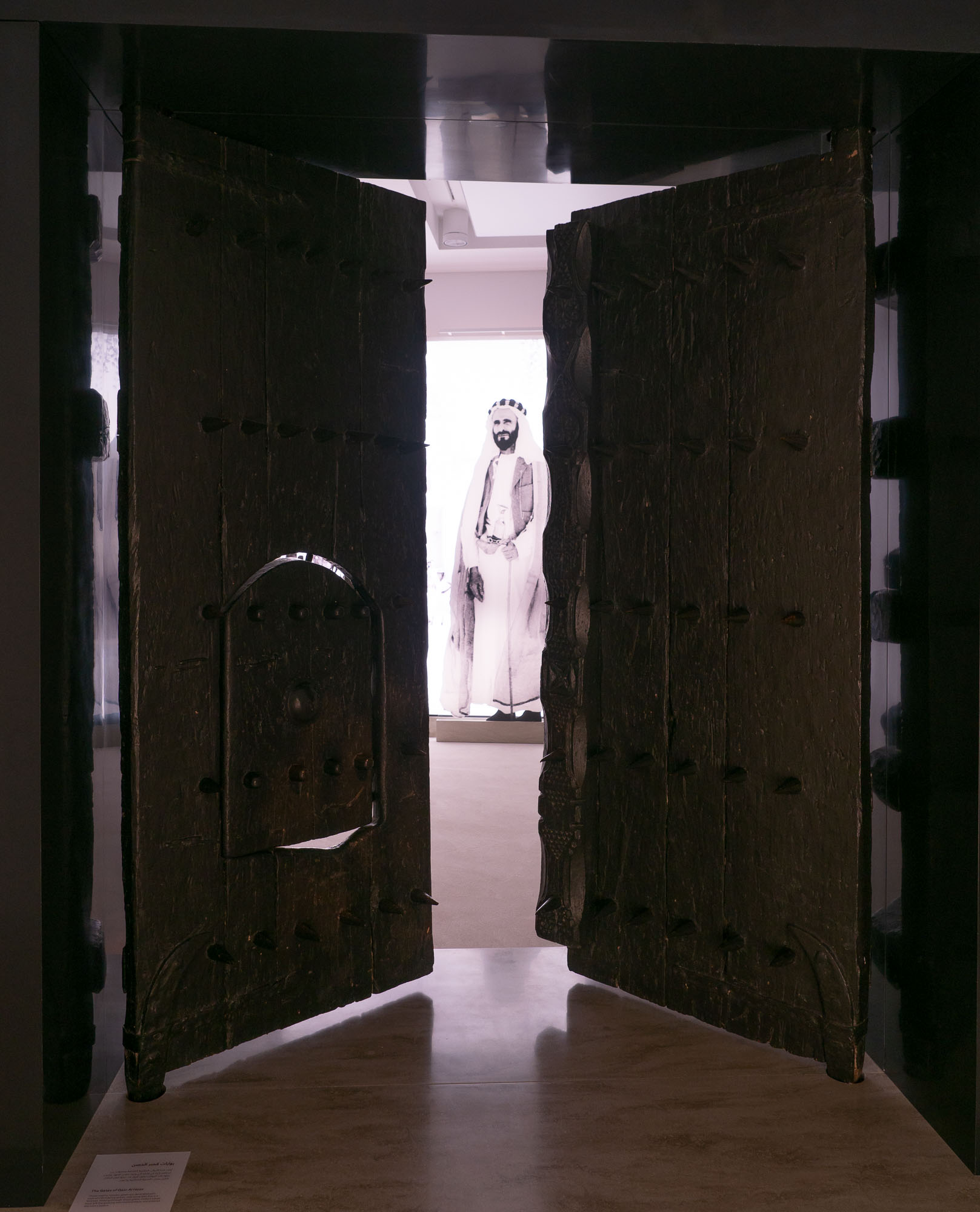
Gates
The former gates to the fort with Sheikh Zayed the first in the background.
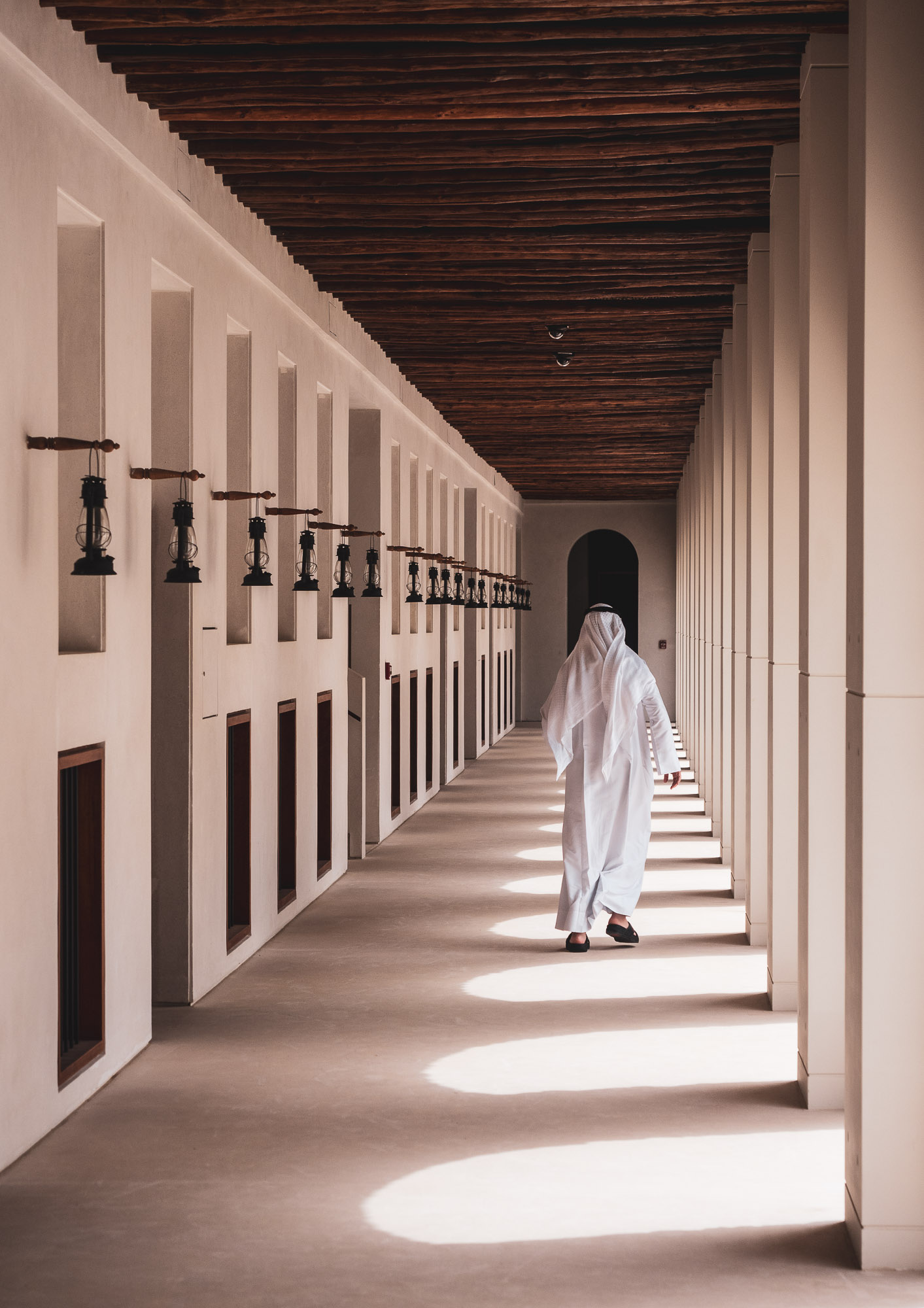
Hallways
Each door to the left features small exhibitions on the history of the country and the ways of life of the Bani Yas.

Fort
The fort with the old watch tower in the center in a darker brown shade, originally from 1761.
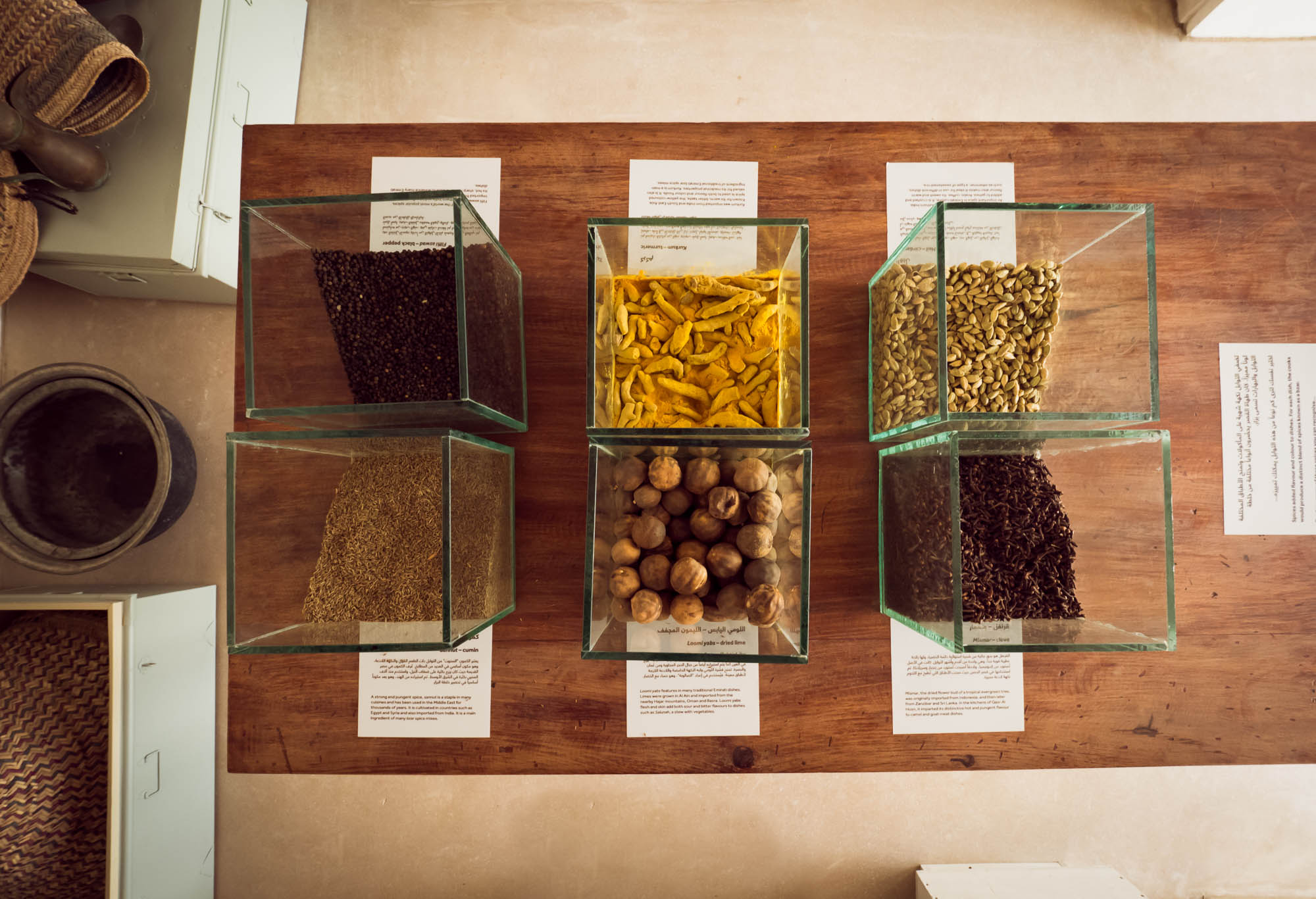
Local Spices
Guess them?
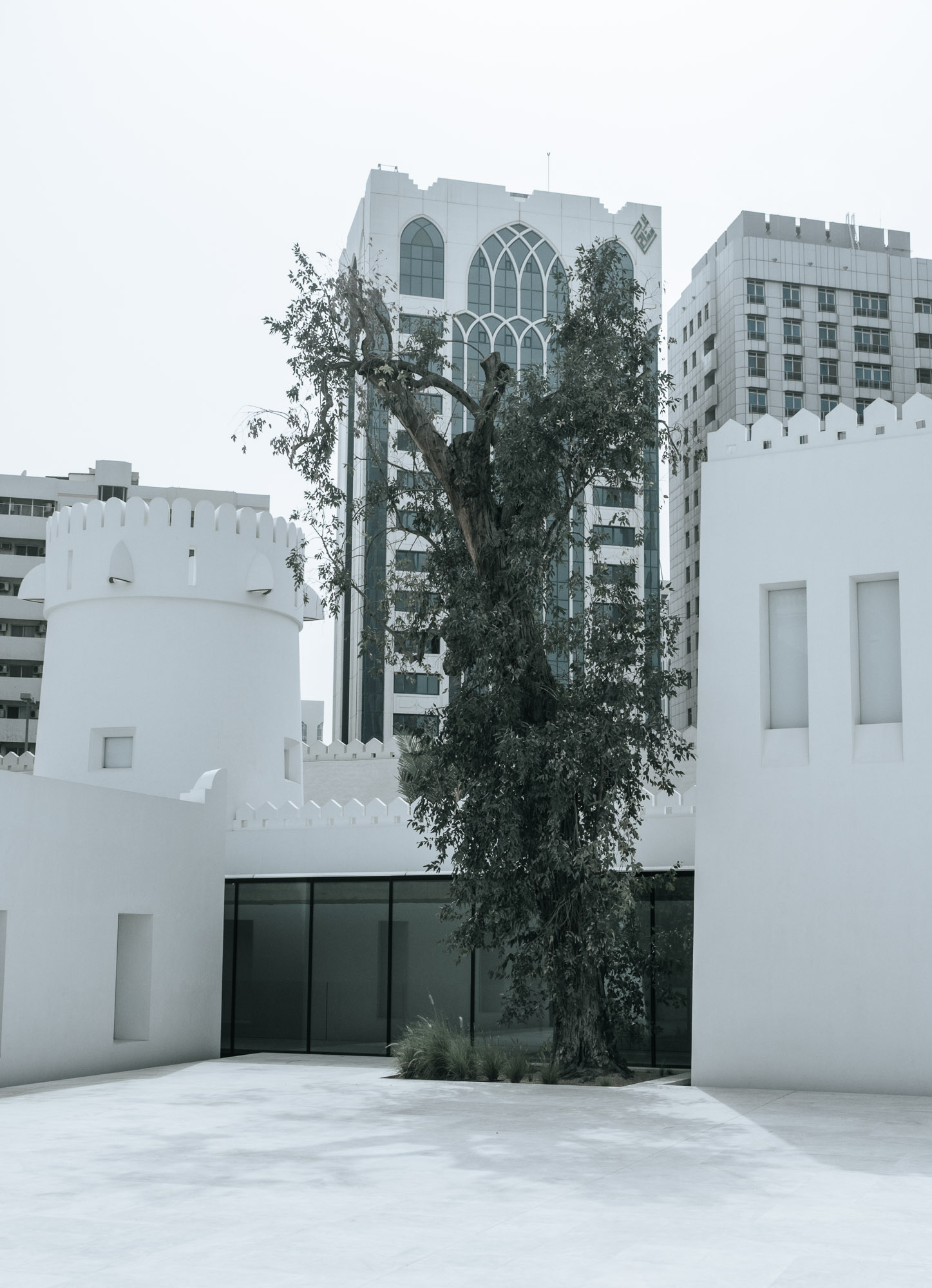
Growth
The tree in the courtyard of the fort.

Crossroads
A local woman and man cross paths in the courtyard of the building.
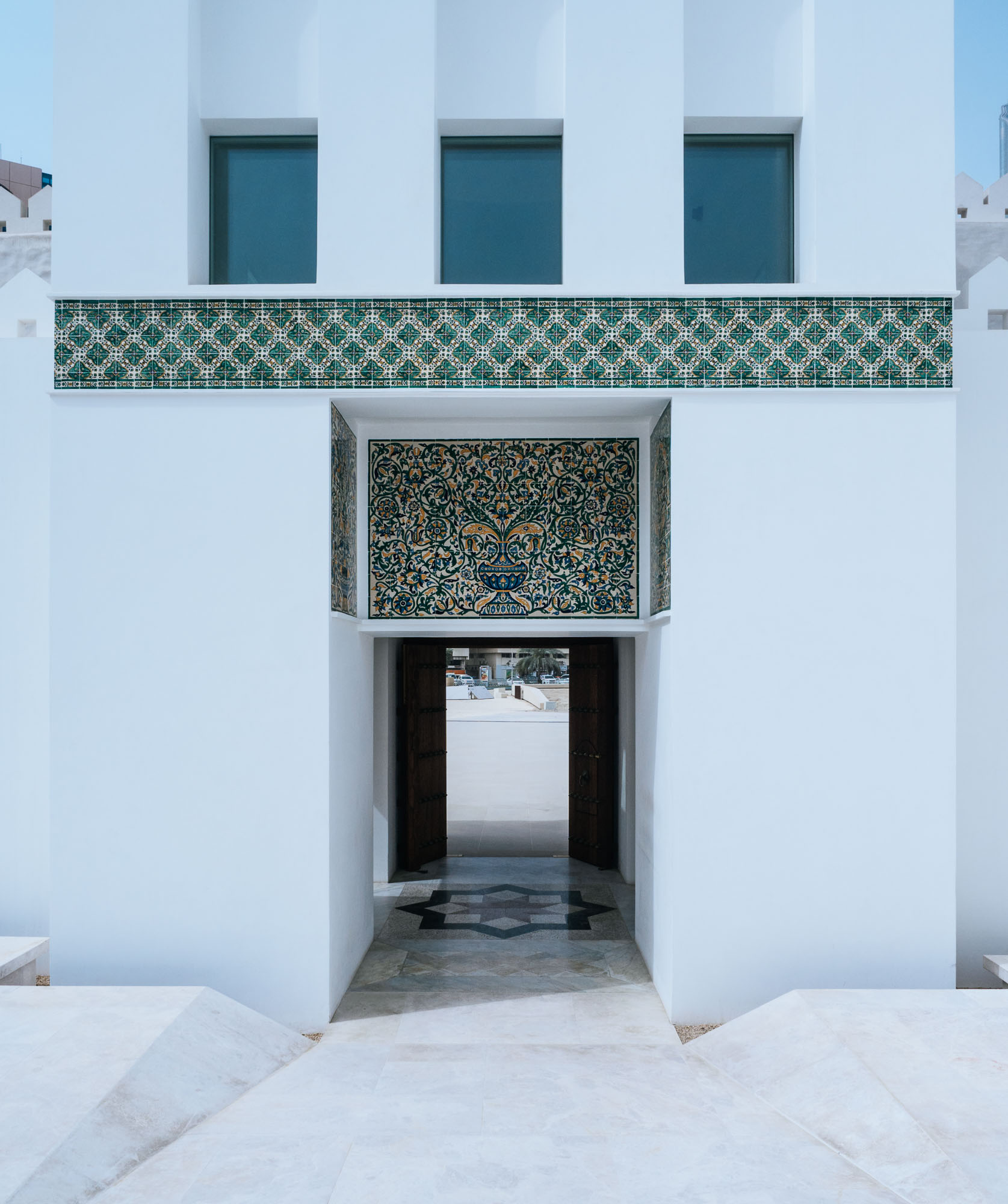
Entrance
The entrance doors to Qasr Al Hosn.
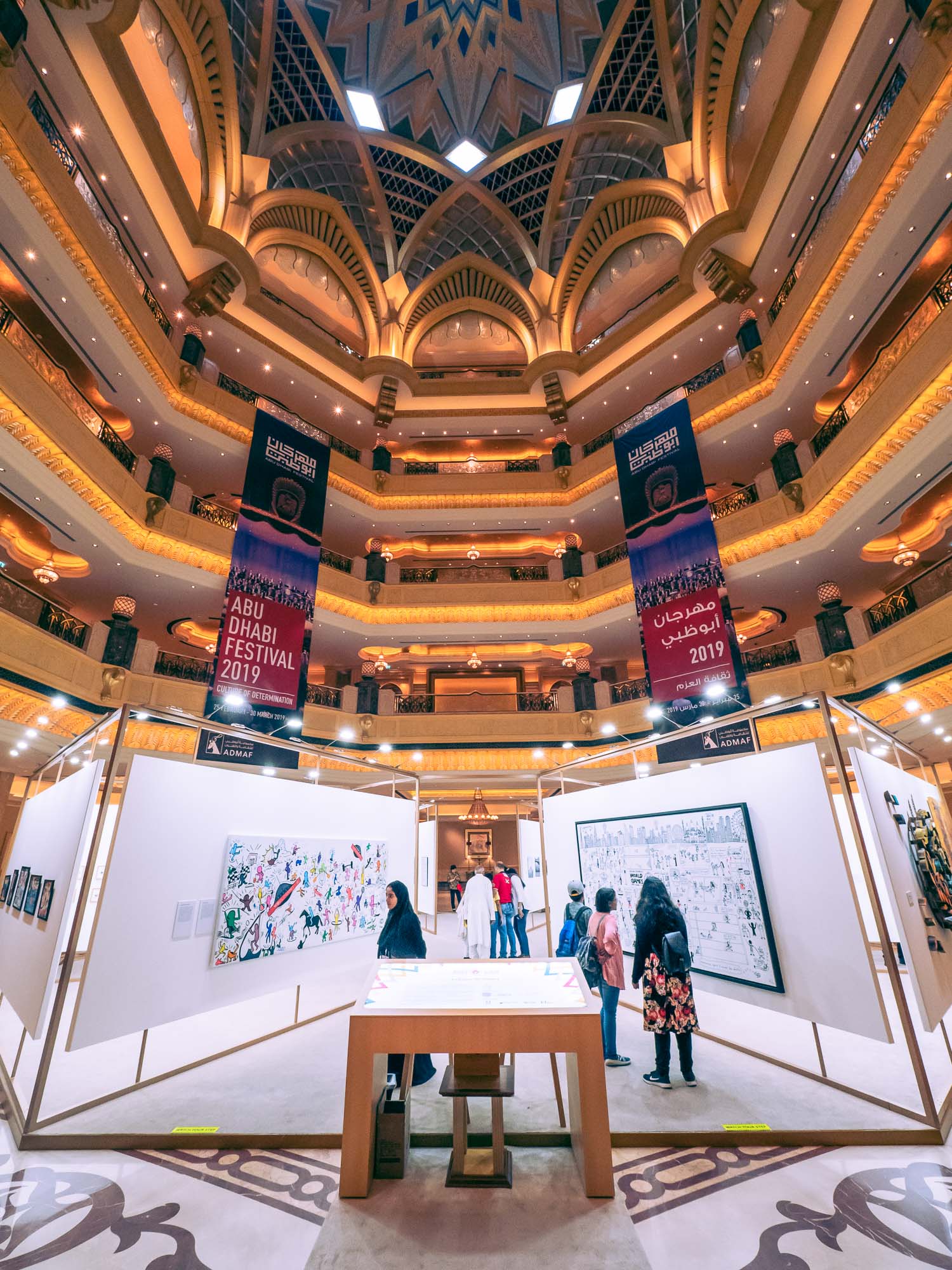
Emirates Palace
The main lobby of Emirates Palace featured an exhibiton on culture of determination, as the Special Olympics World Games are taking place in Abu Dhabi in 2019.
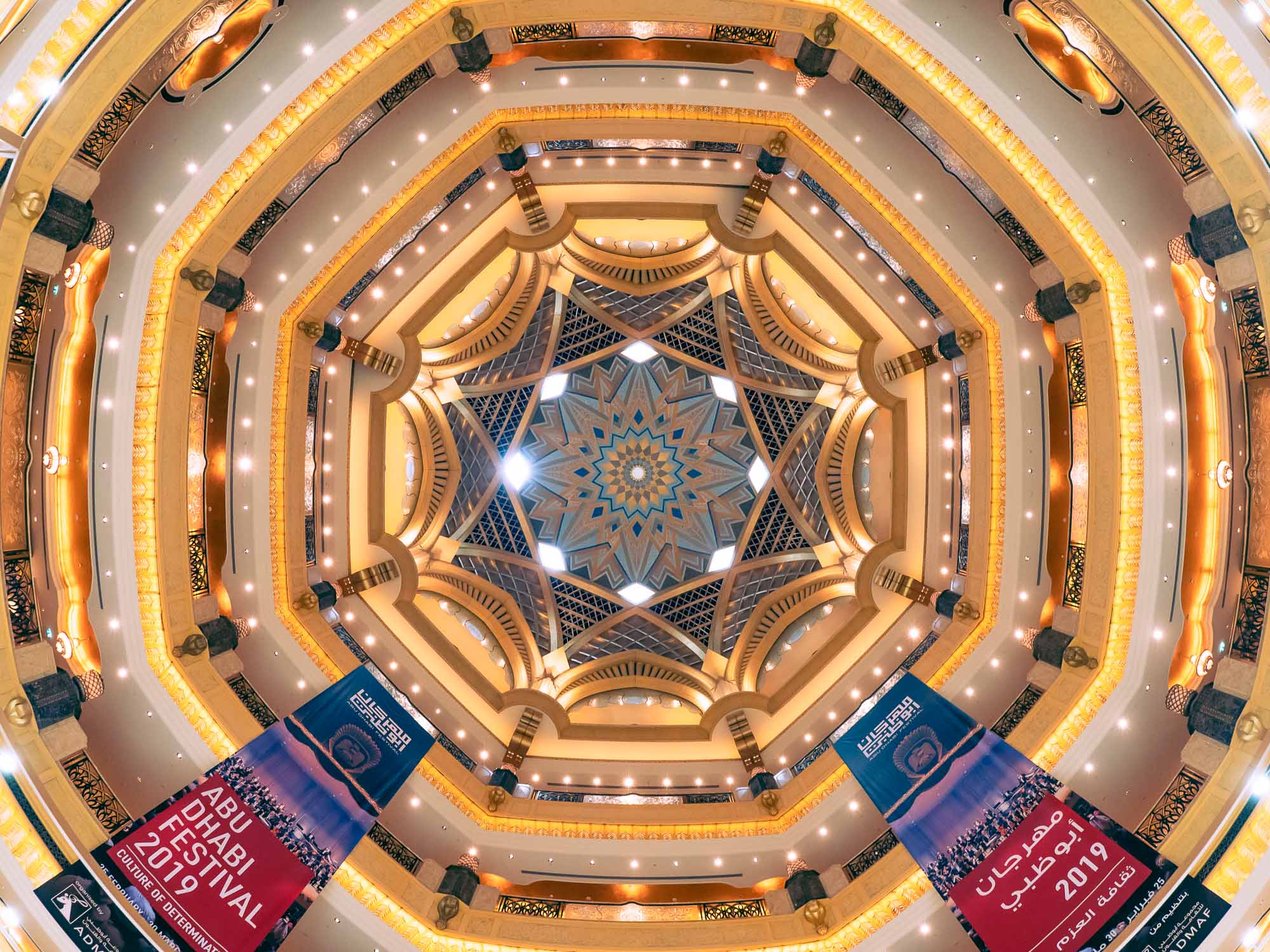
Looking Up
The roof of the main lobby and the surrounding corridors.
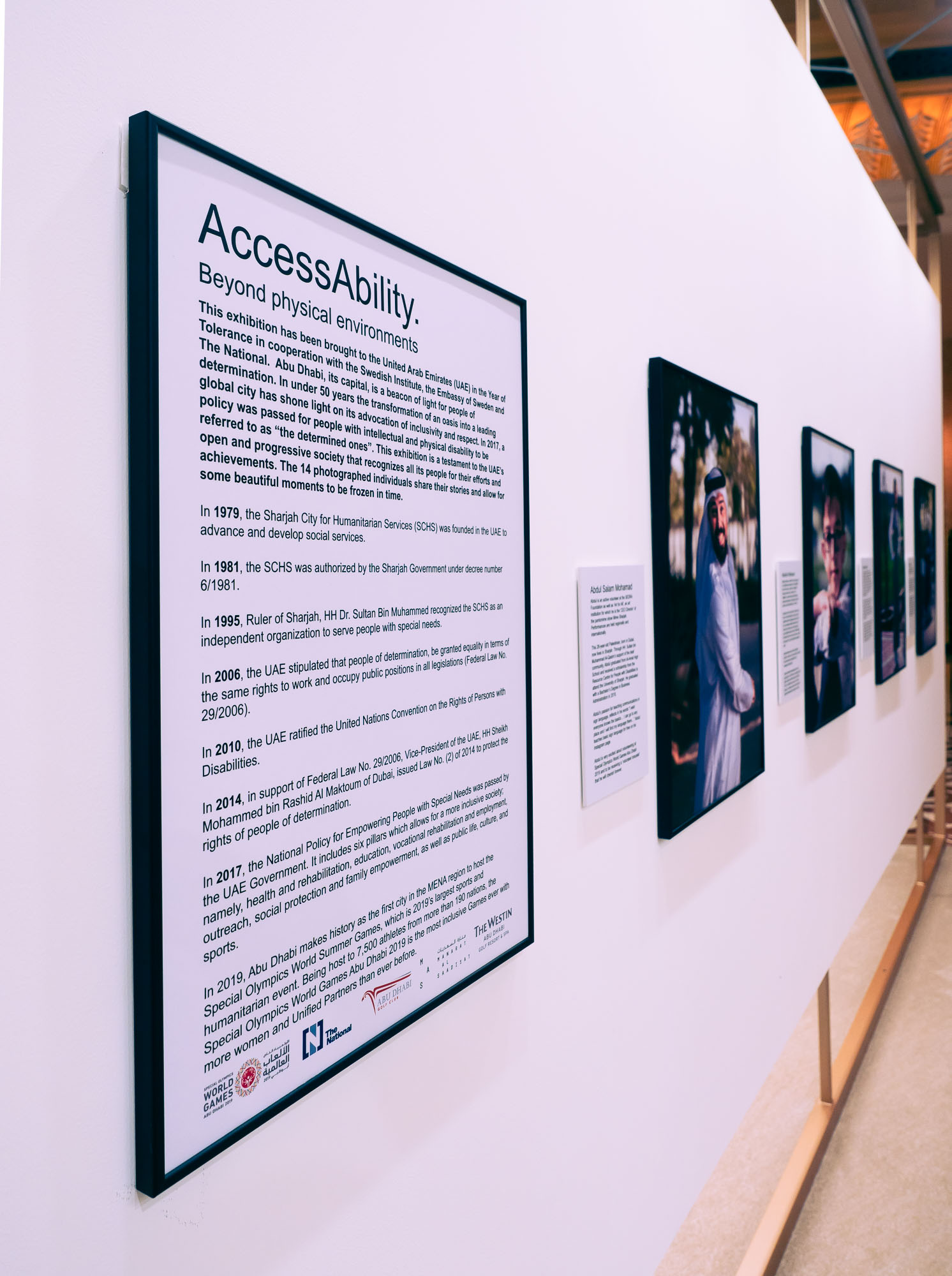
AccessAbility
In 2017 the UAE passed a law that describes all people with any disability as "people of determination".
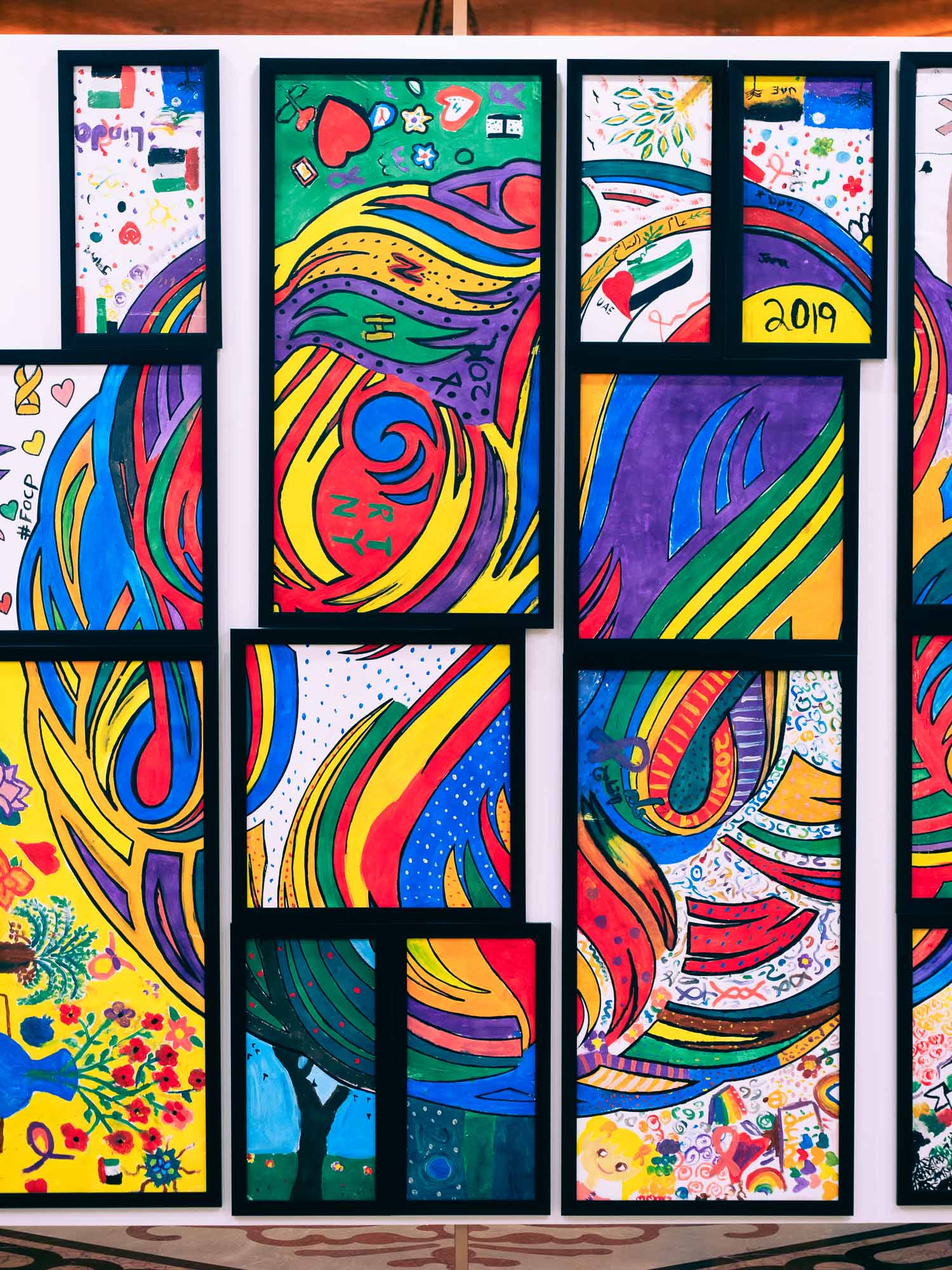
Colours
One of the art pieces on display.
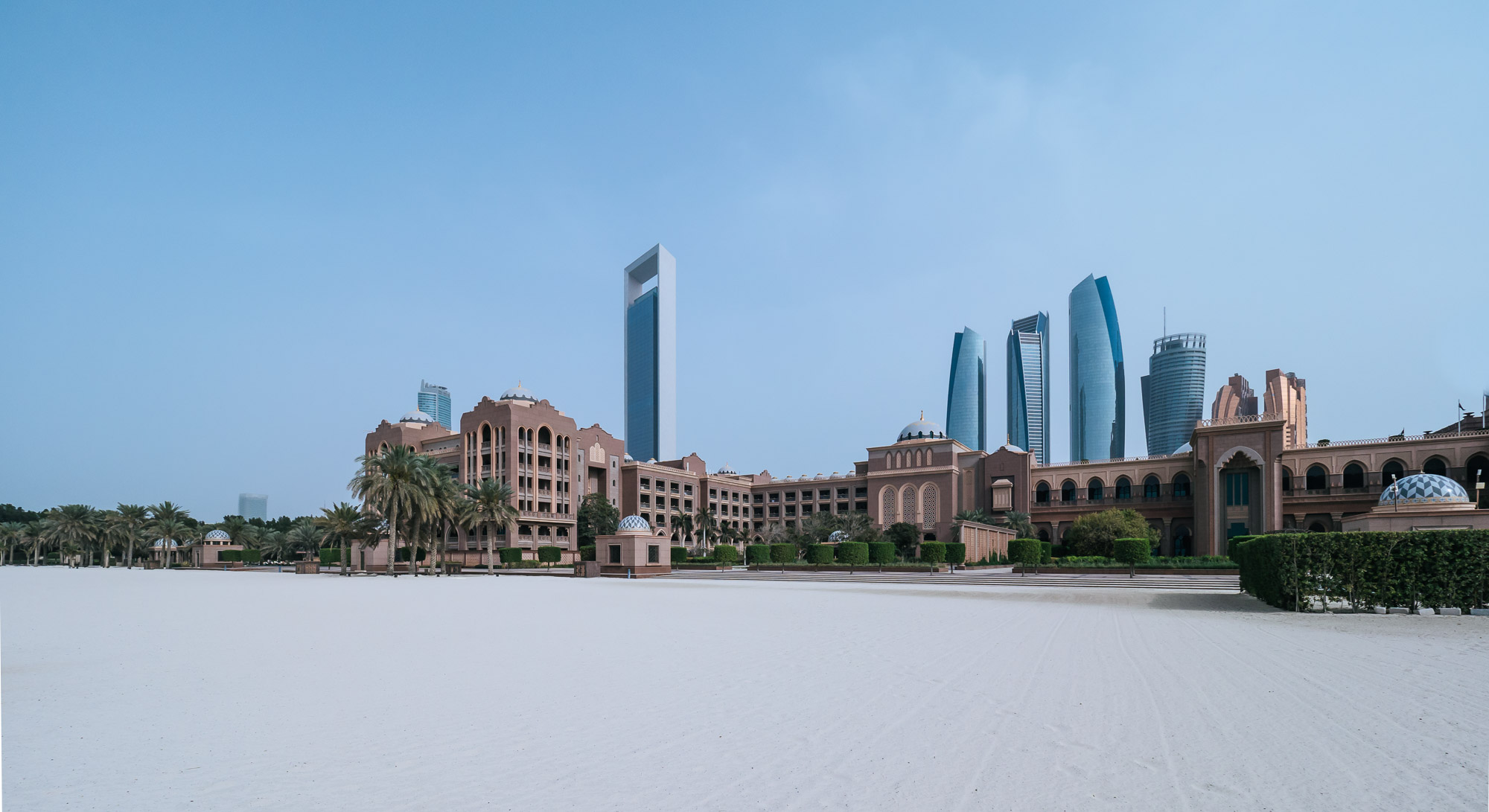
Views
One of the wings of the building, with ADNOC HQ, Etihad towers and Hyatt Pearl in the background.
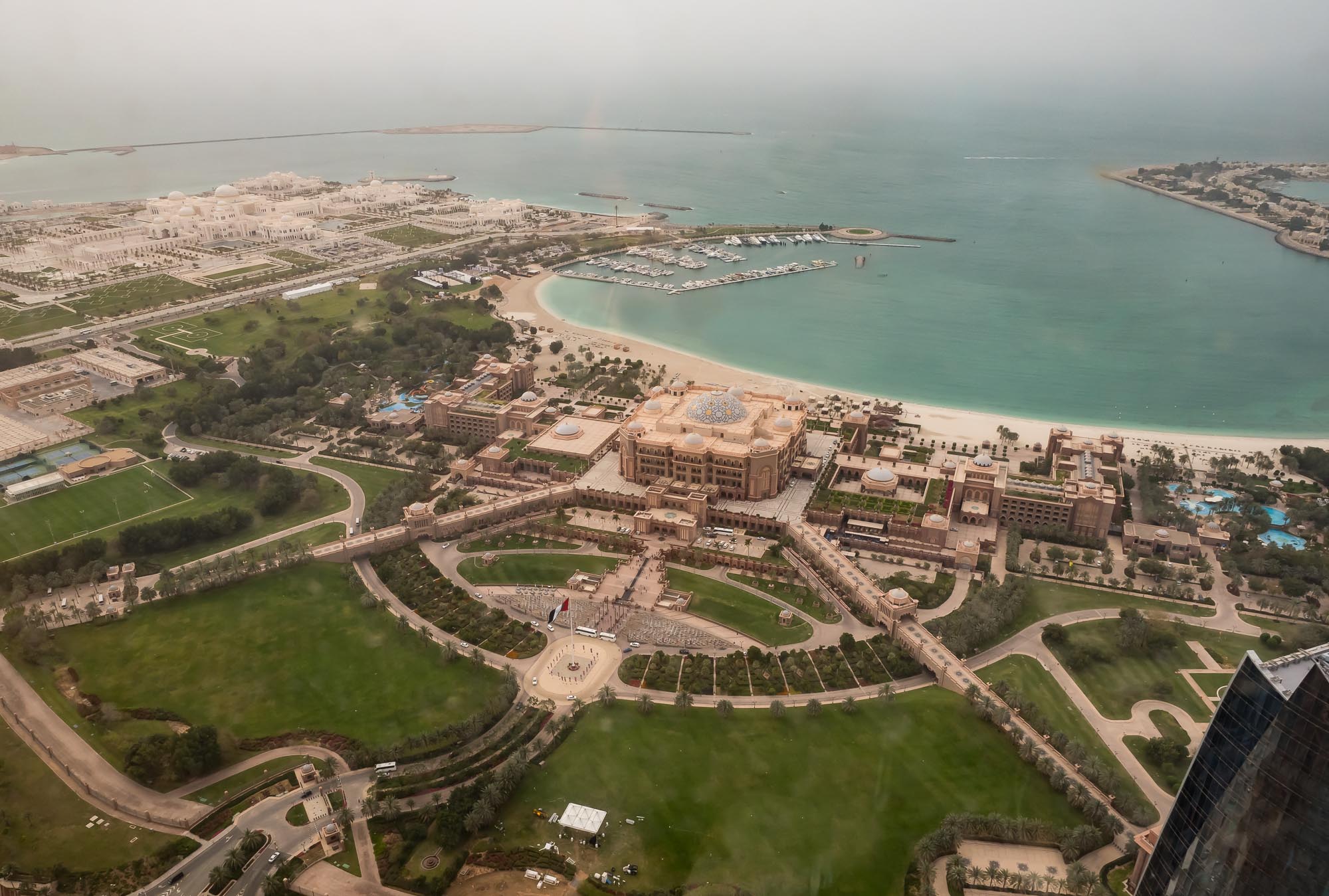
Observation Deck
Etihad towers features the highest observation deck in Abu Dhabi with a view of Emirates Palace and the Presidential Palace to the left.

Presidential Palace
It opened to the public earlier in 2019.
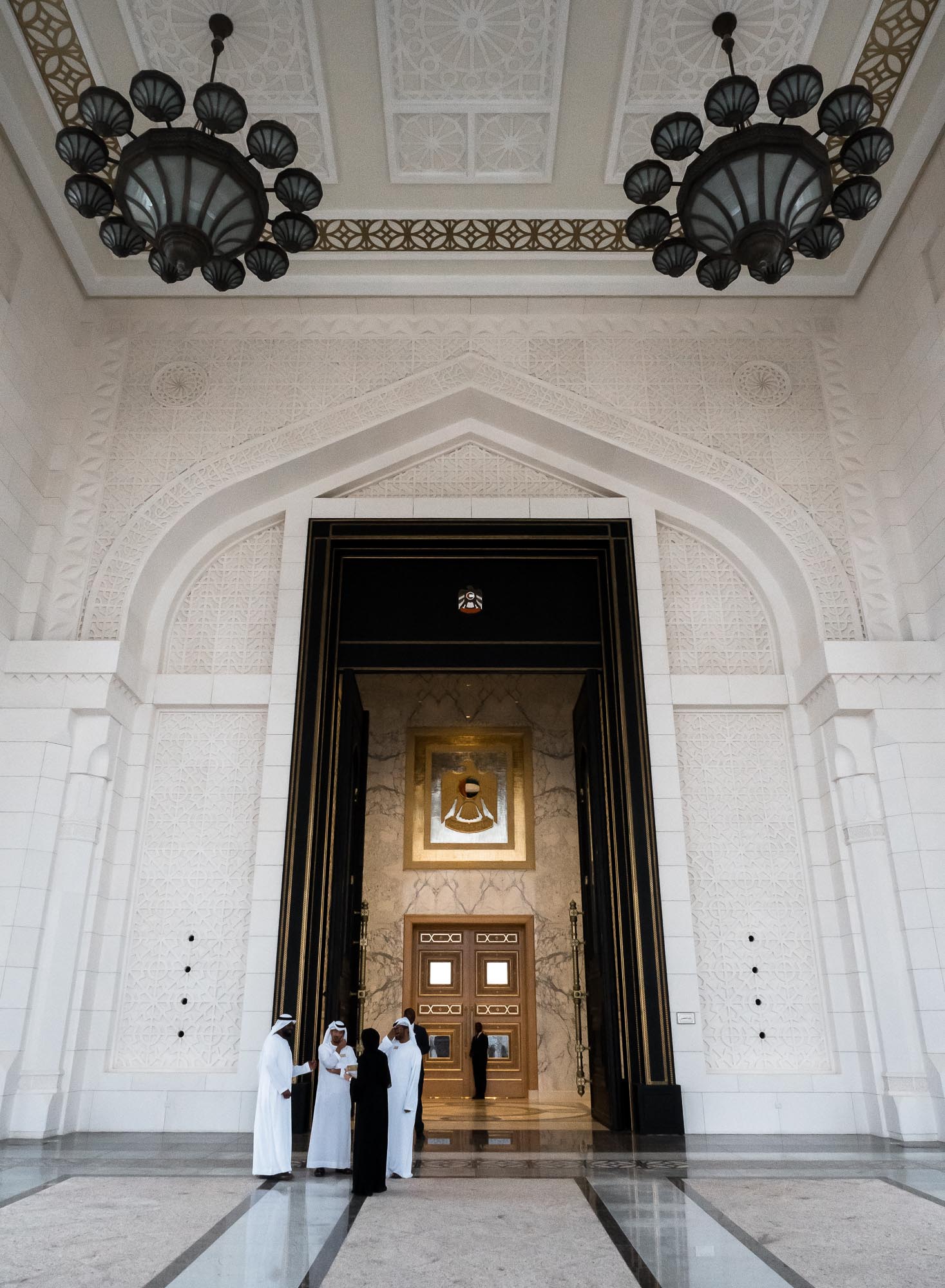
Entrance
The entrance to the Presidential Palace is relatively simple...

Wow Moment
...so that the moment you step inside is even more impressive.
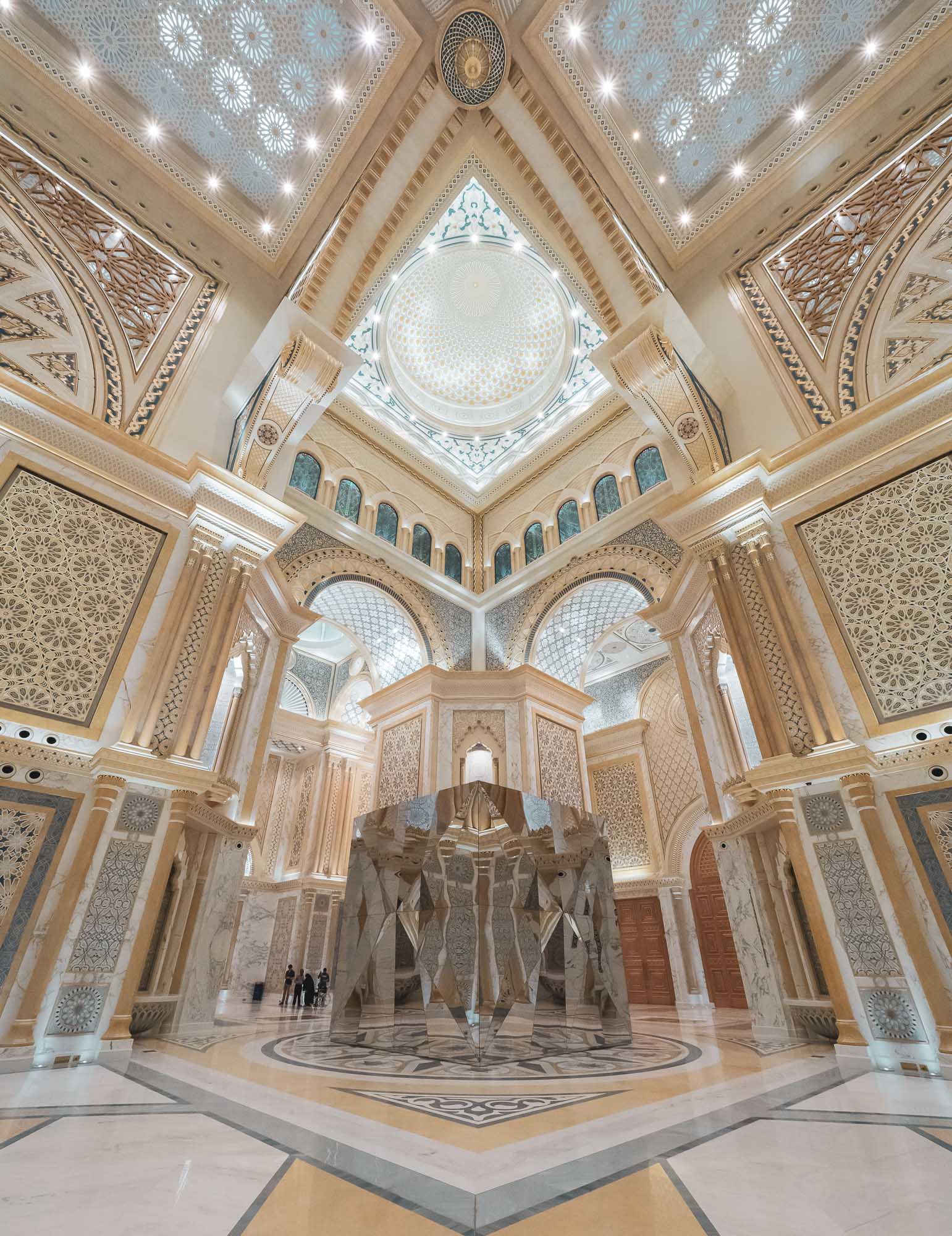
Corner
One of the 4 courners of the Great Hall.

Details
The palace features rich and rare materials from Italy, India, China and elsewhere.
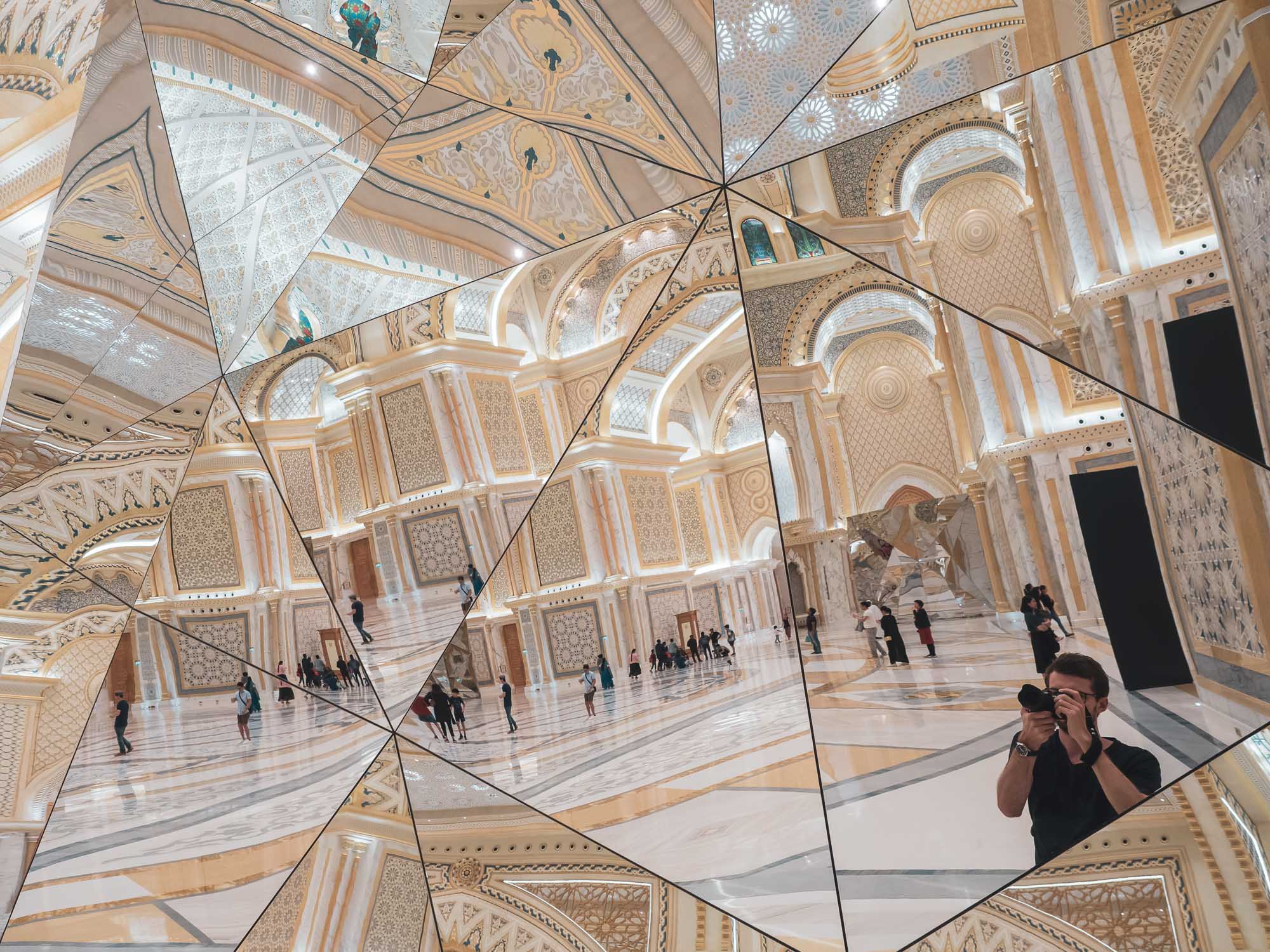
Mirrors
A photo of the mirror cubes on the 4 sides of the main hall (the meaning of which I could not figure out).
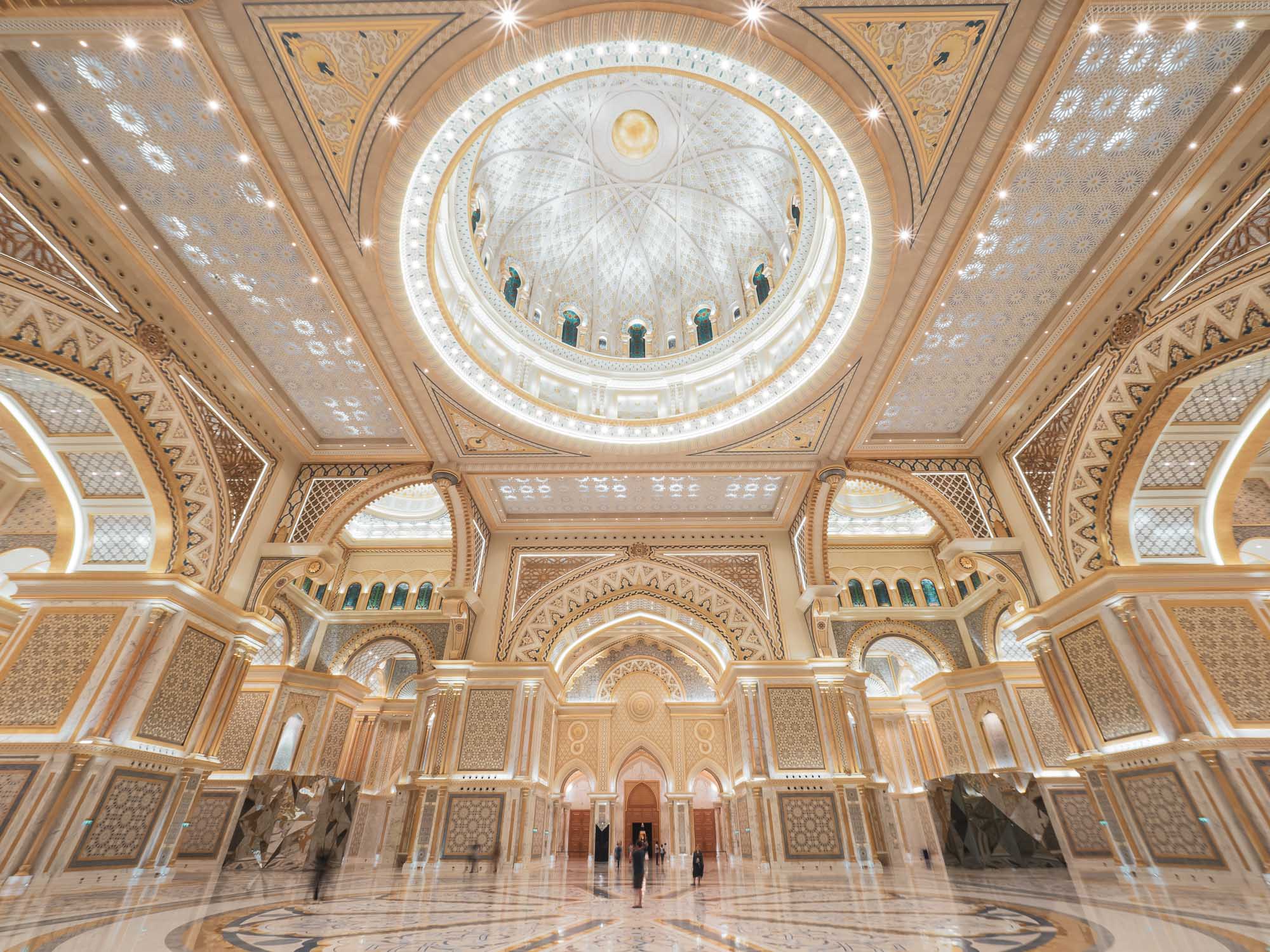
Main Hall
Its sheer grandeur is hard to understand until you visit in person.

Sheikh Zayed
The portrait of the late father of the nation in one of the rooms.
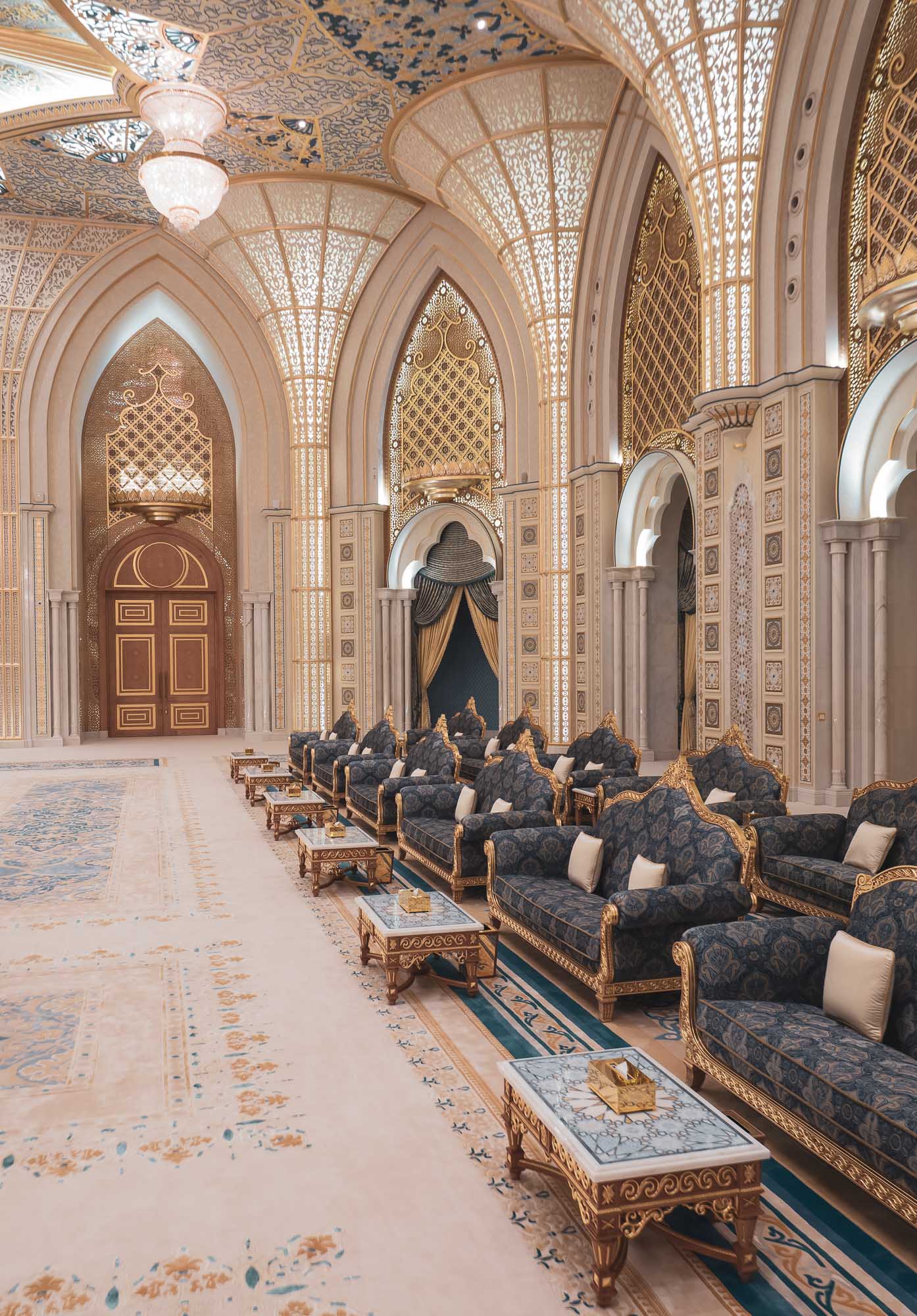
Seating Areas
Official government meetings take place here.

The Great Hall
100m by 100m in size, it's the centerpiece of the palace.
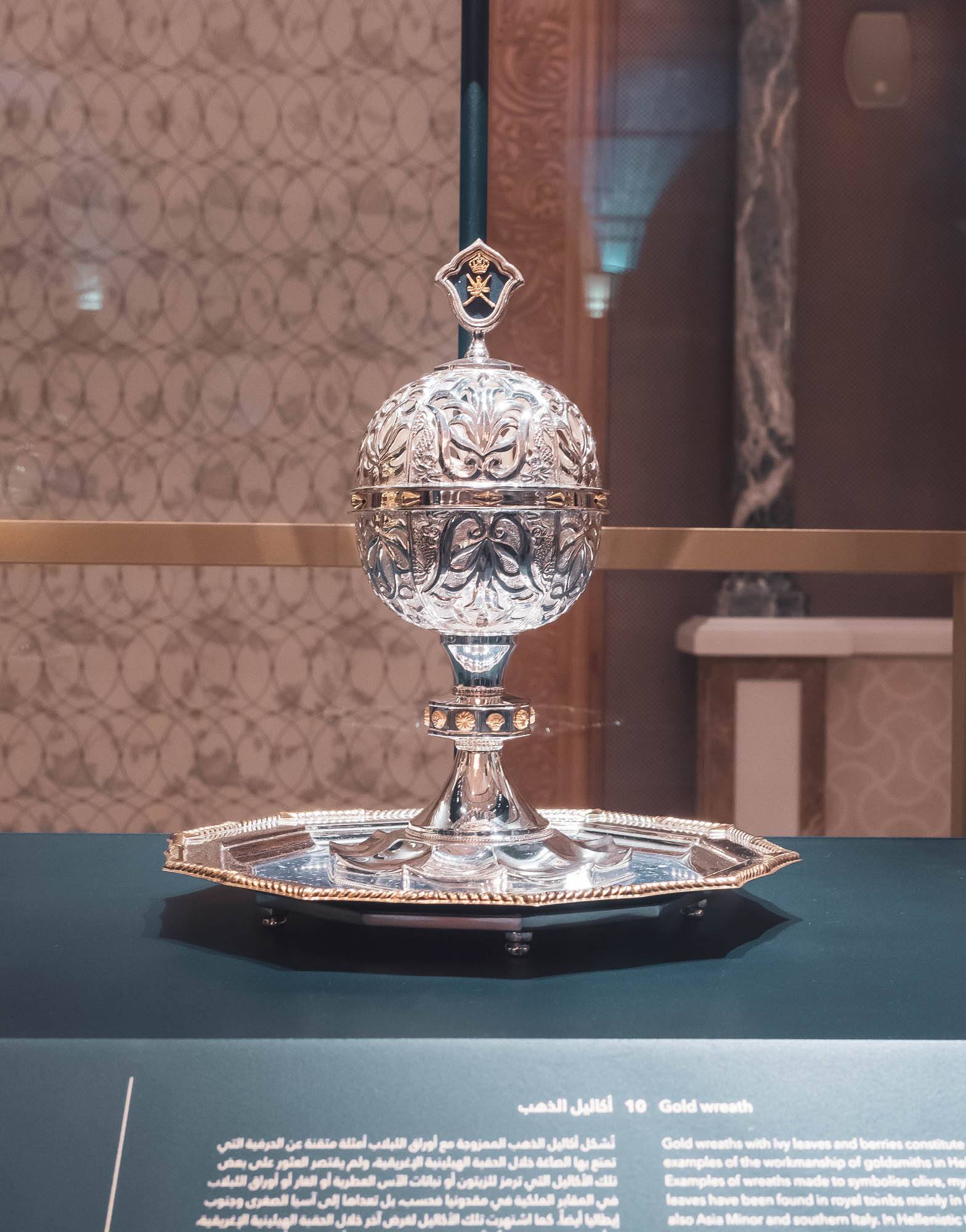
State Gifts
The palace includes a room displaying gifts brought by officials from other nations visiting the UAE.
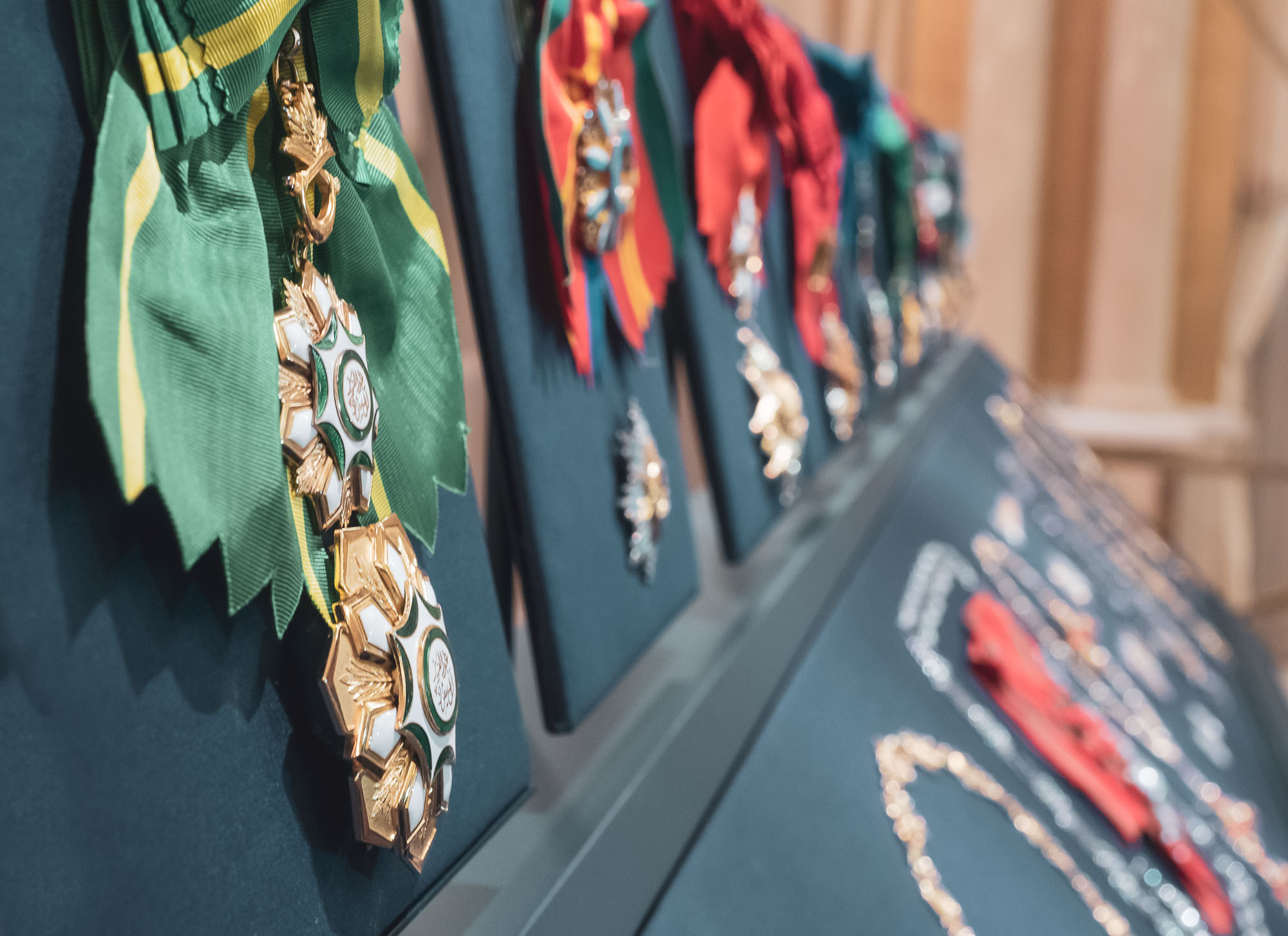
Ornaments
These include several official medals, bracelts, necklaces and more.
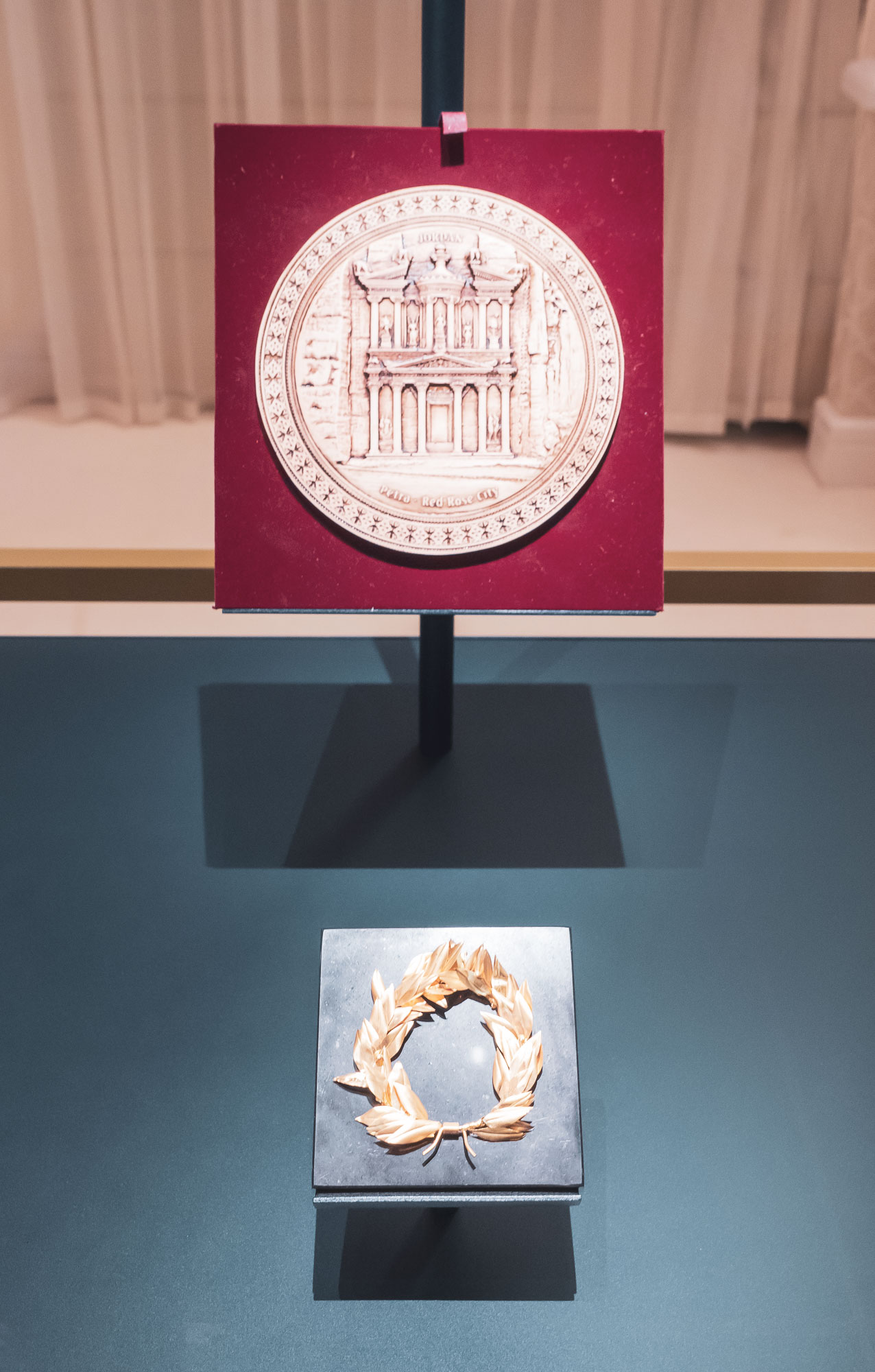
Artifacts
Jordanian and Greek gifts.
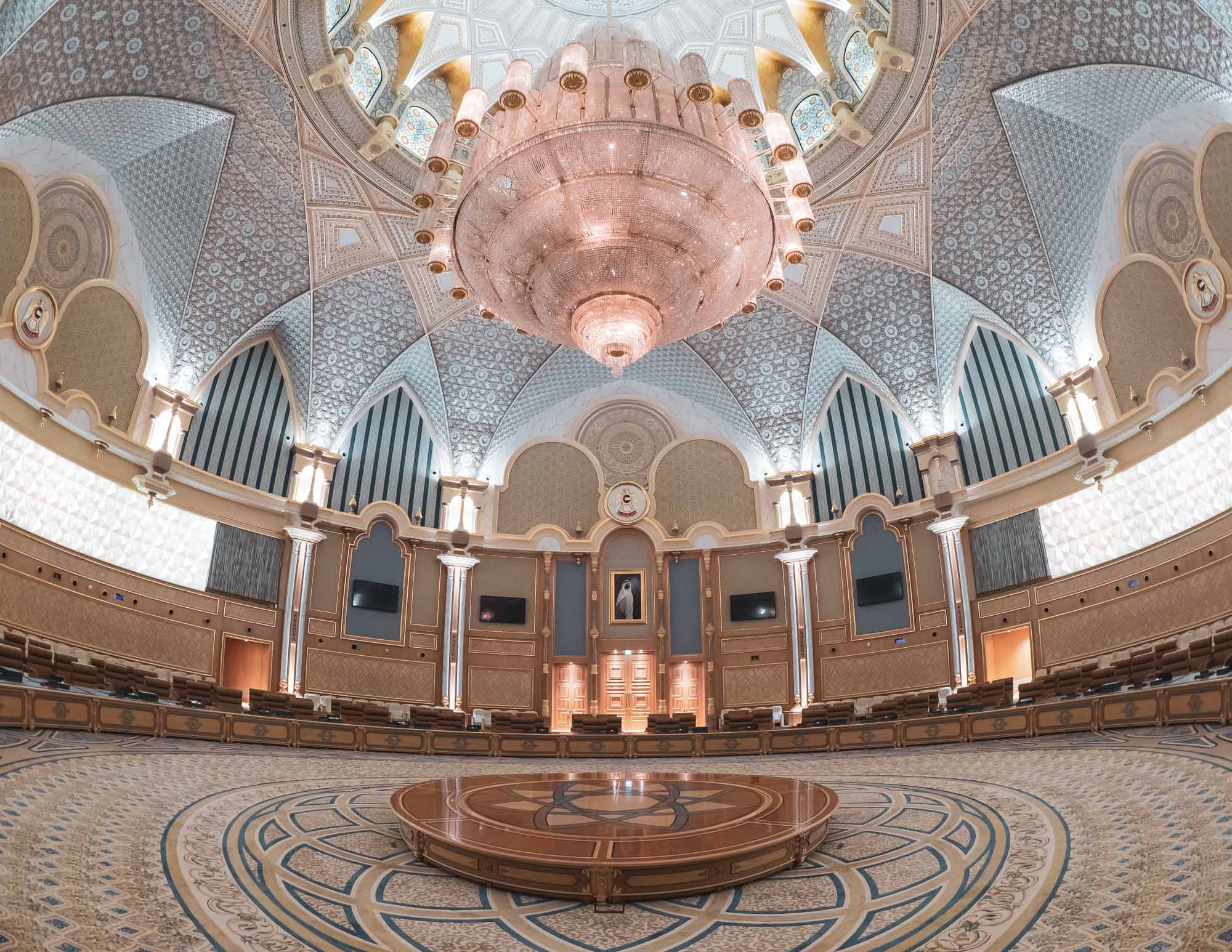
Circle
The room where GCC and Arab Nations council meetings take place.
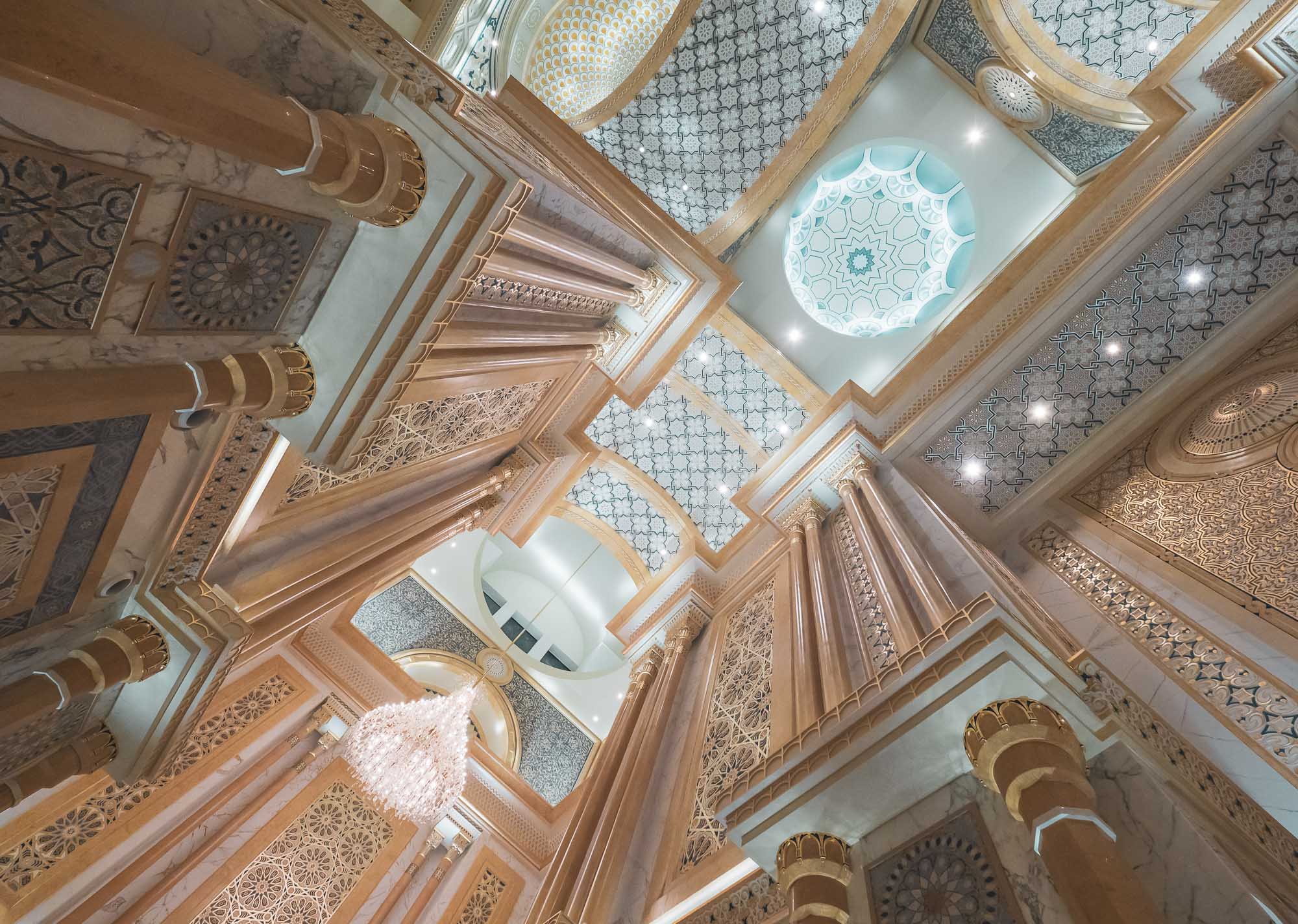
Architecture
The level of detail and ornamentation is breathtaking.
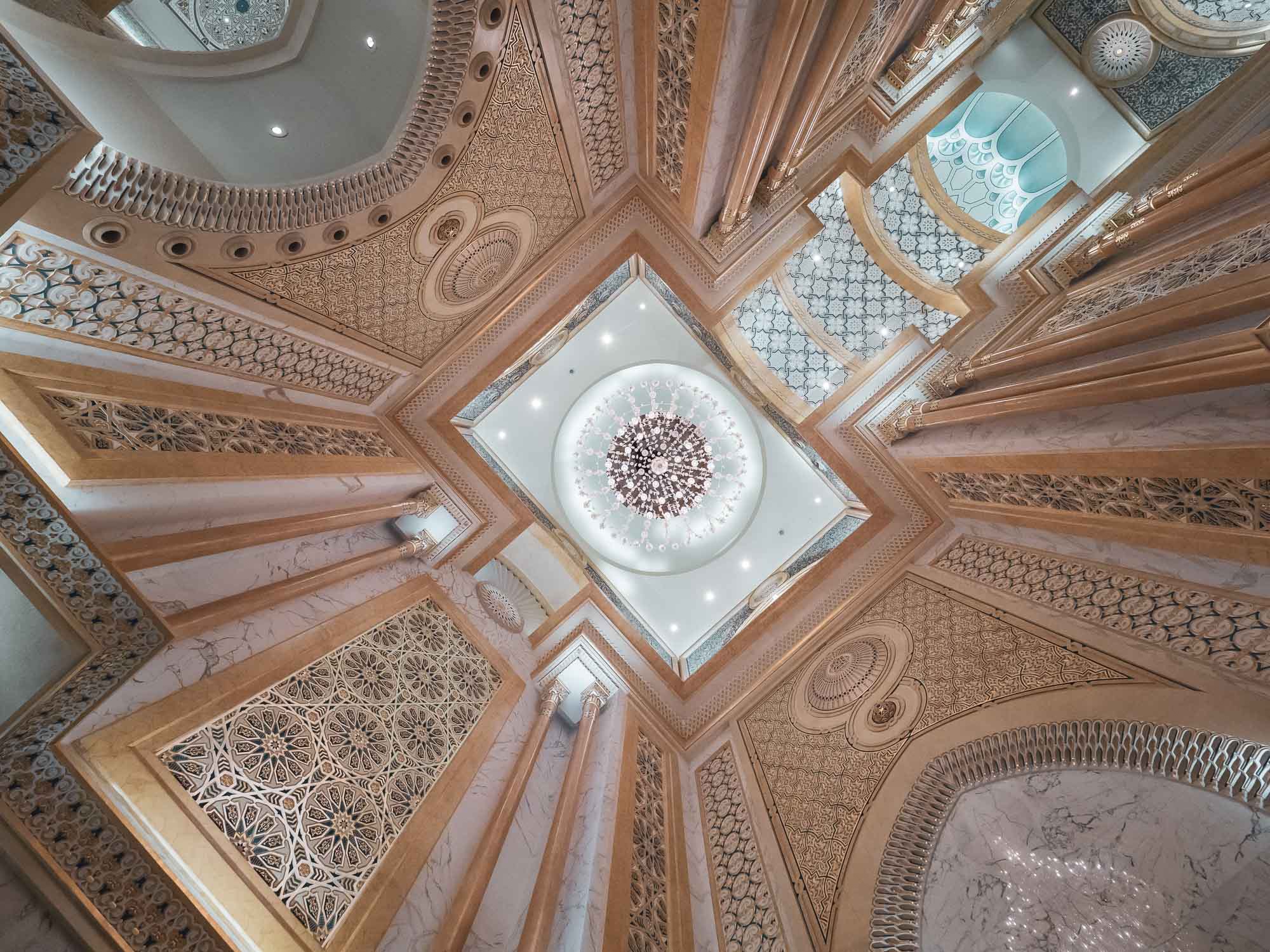
Looking Up
Upwards view of one of the wings of the building.
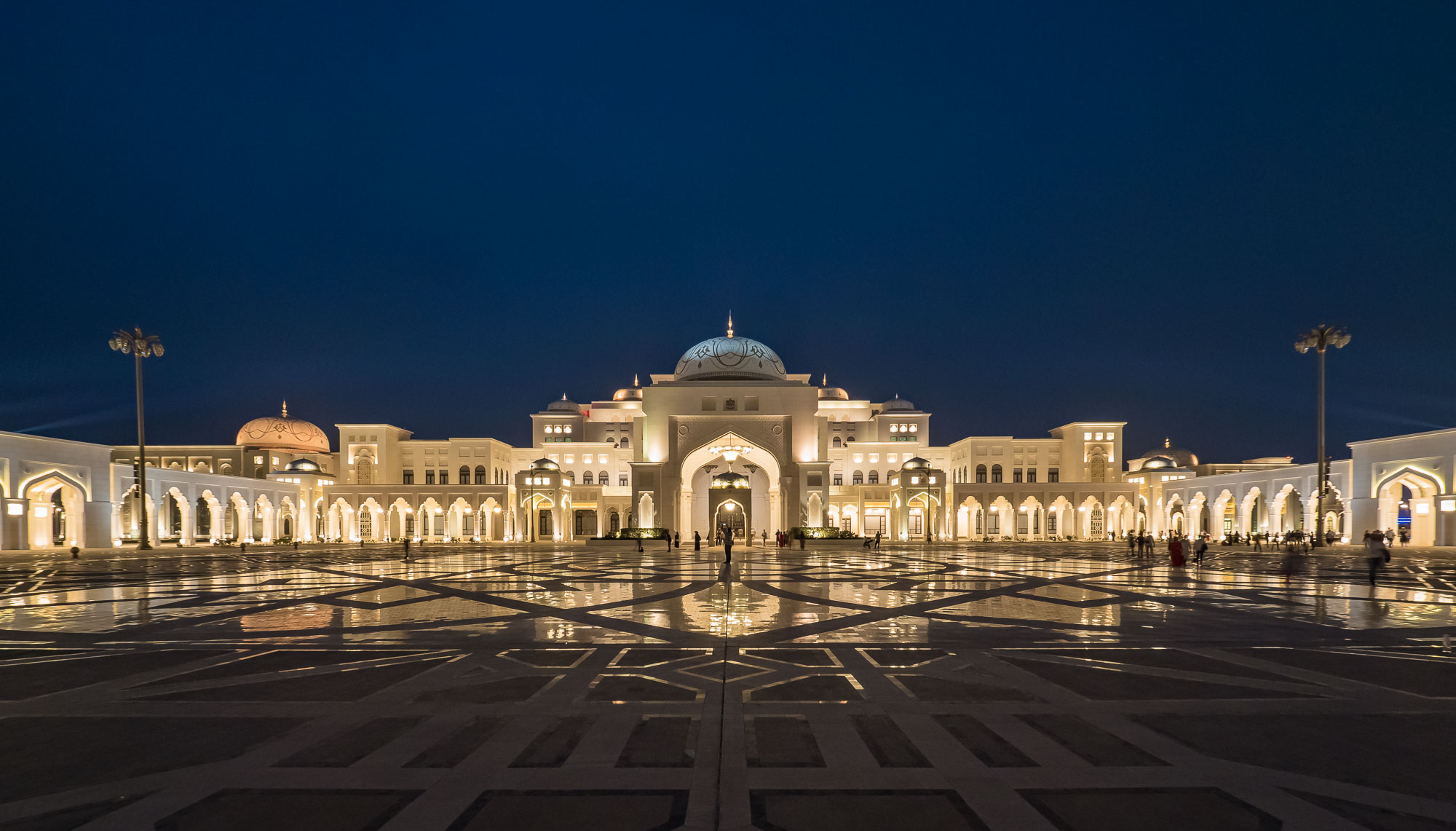
Exterior
The exterior courtyard at night.

The Library
One section of the building features a library.
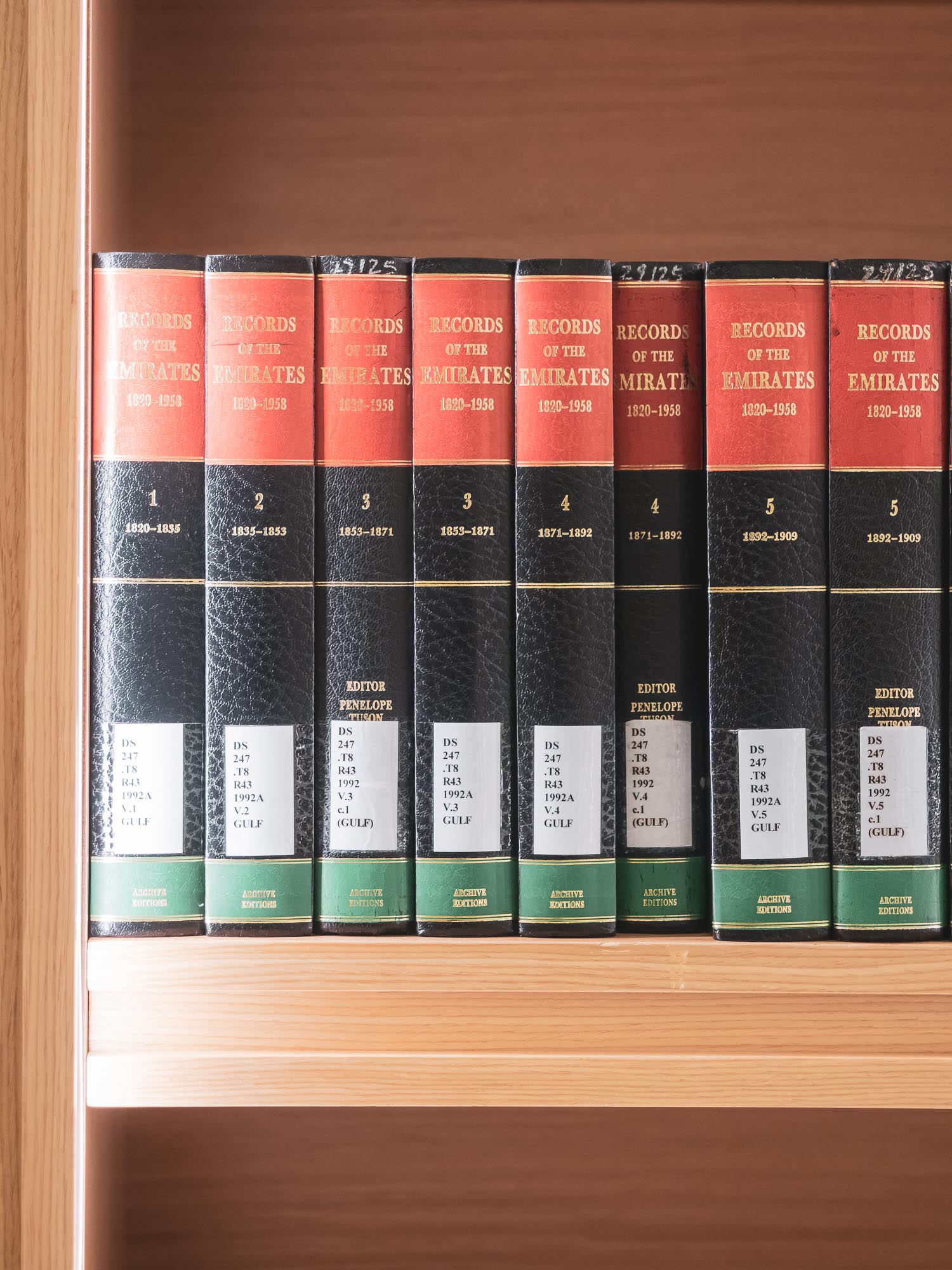
Archives
It includes many reference works on the history of the UAE.
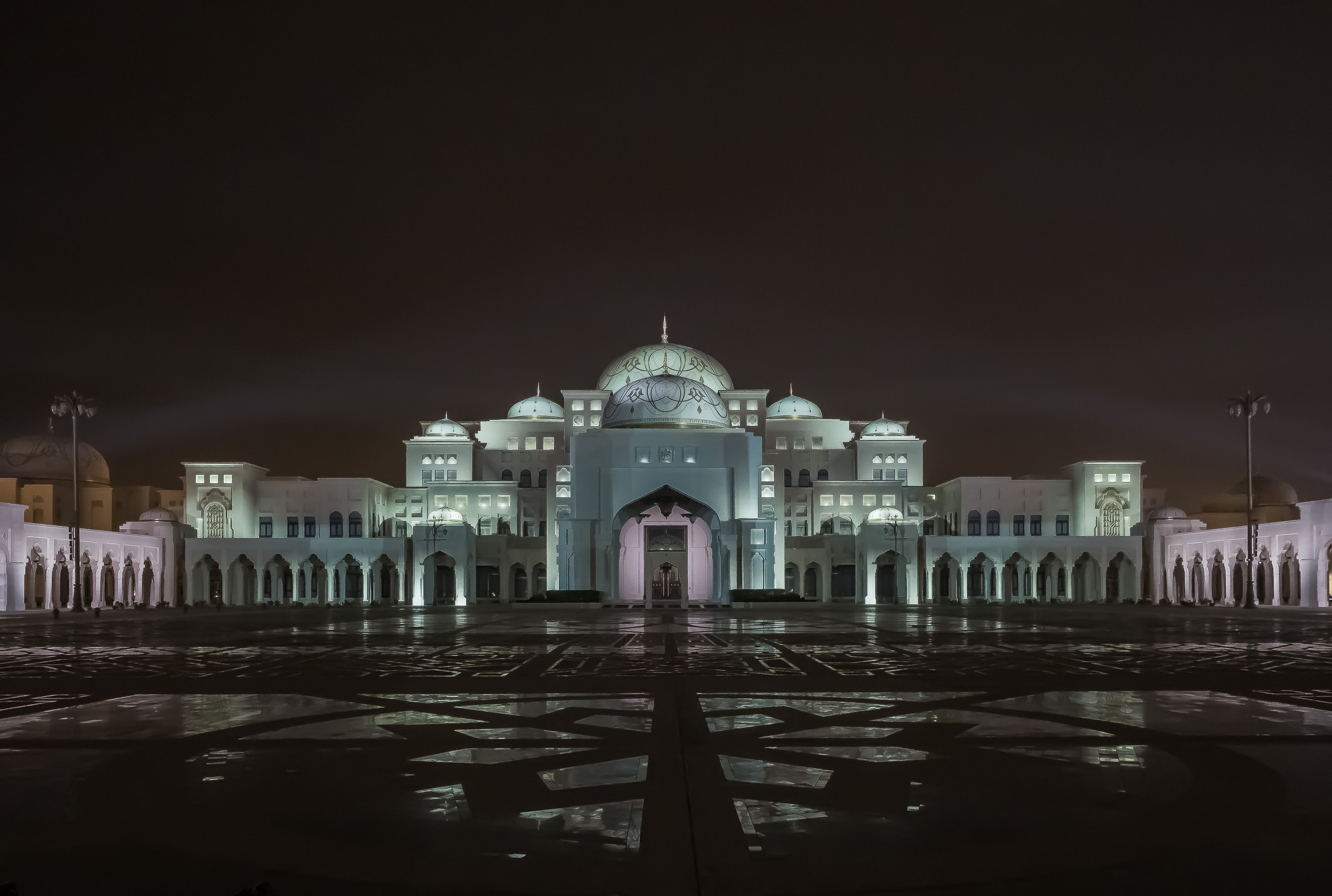
Palace in Motion
A daily light show takes place each evening.
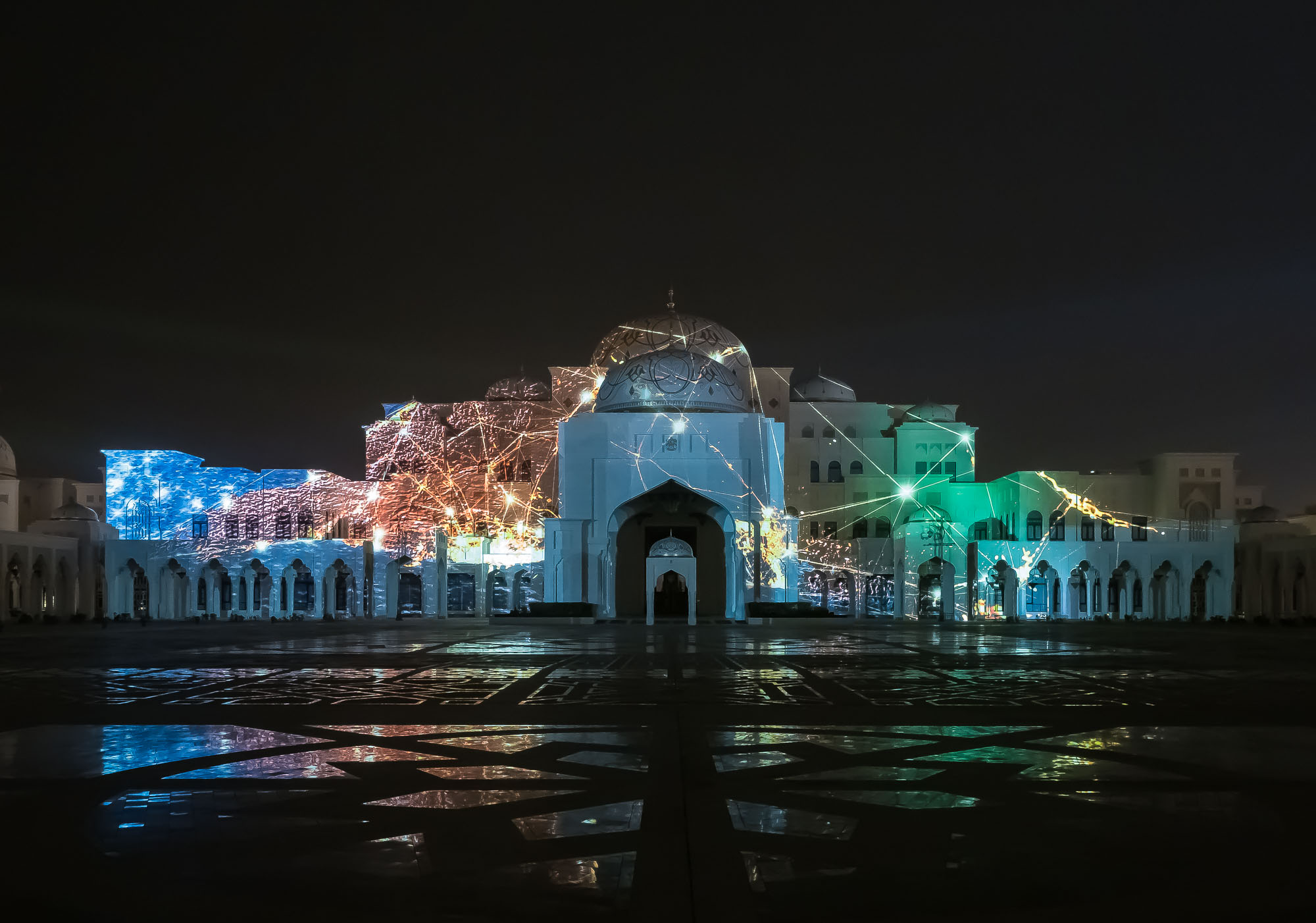
A Story
The 15min show tells the story of the UAE's beginnings.

Outlines
The show uses projection technology to create 3D imagery on the palace facade.
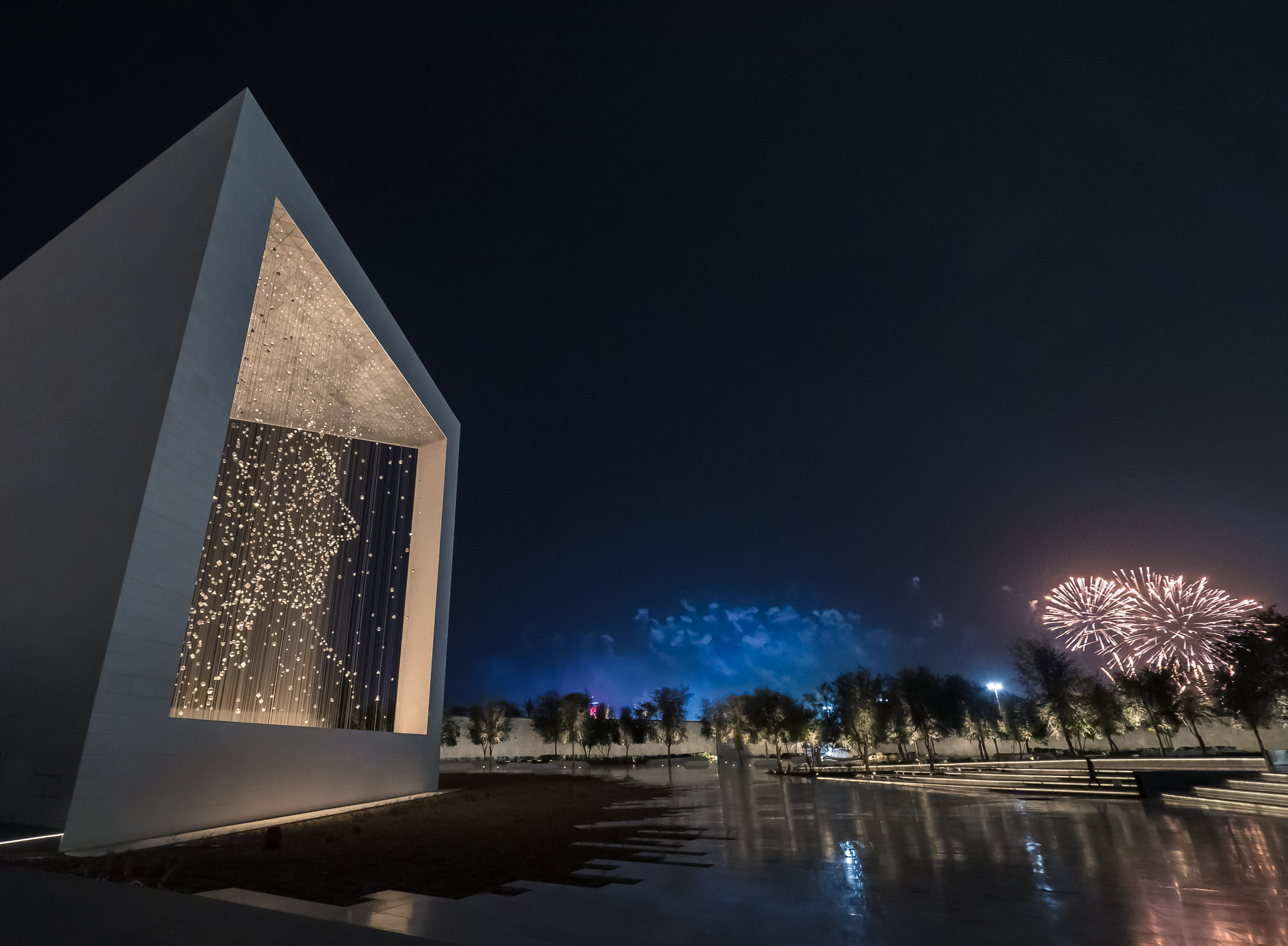
Founders Memorial
The fireworks in the background were probably for the end of the Special Olympics World Games.
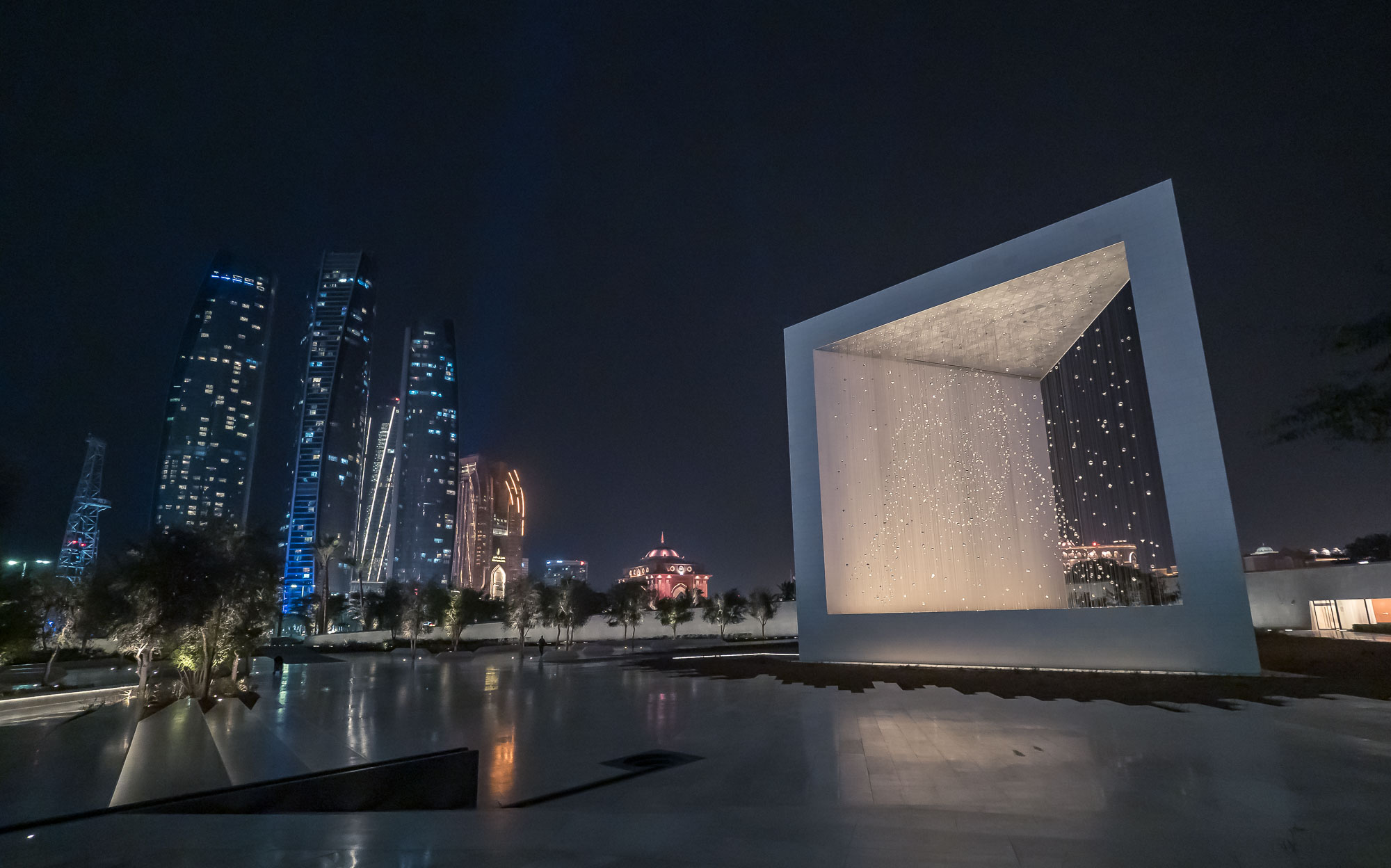
Founding Father
The tribute to Sheikh Zayed, including a three-dimensional silhouette of his face.
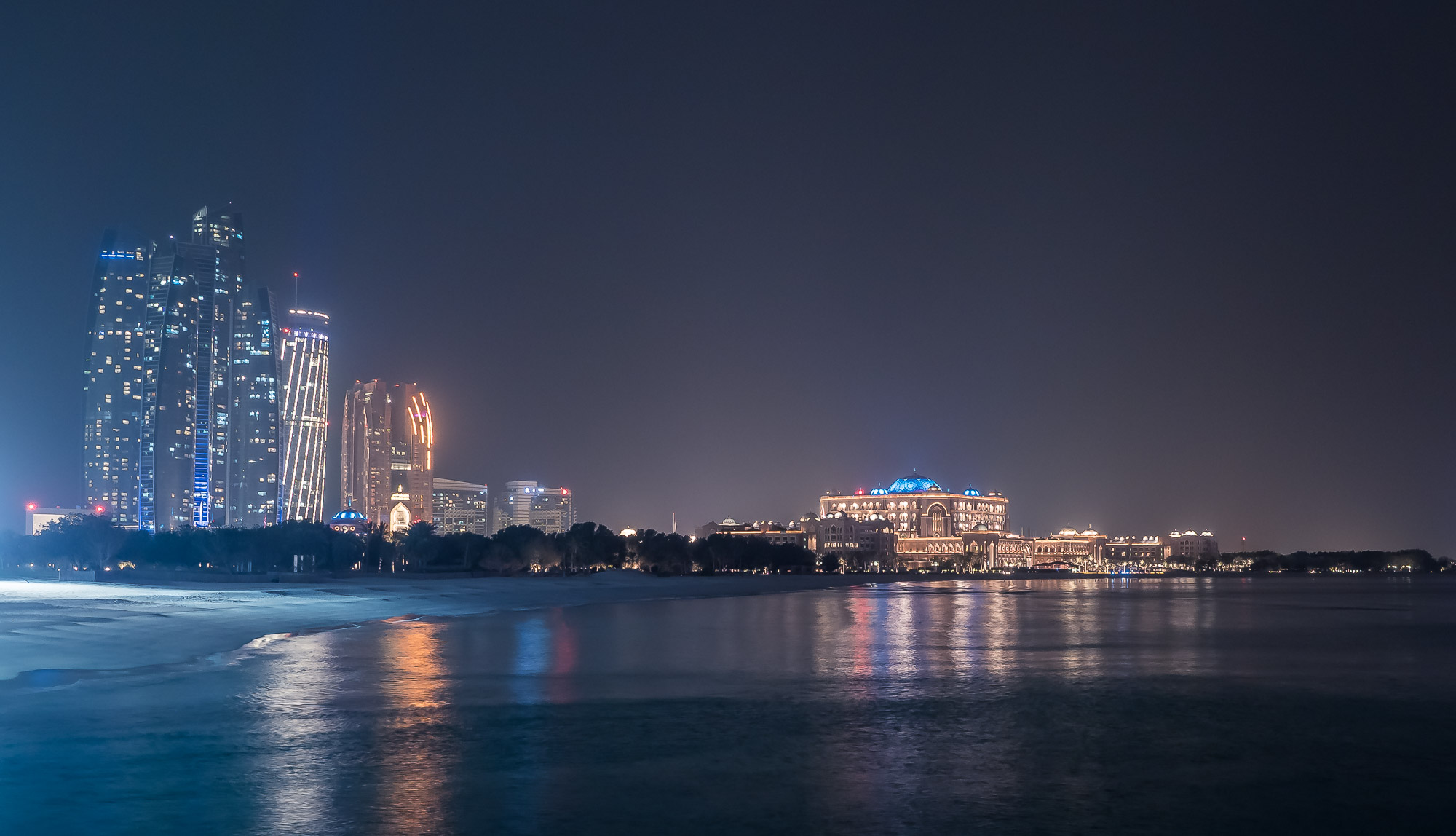
Emirates Palace
From the bridge towards Marina Mall, with Etihad Towers on the left.
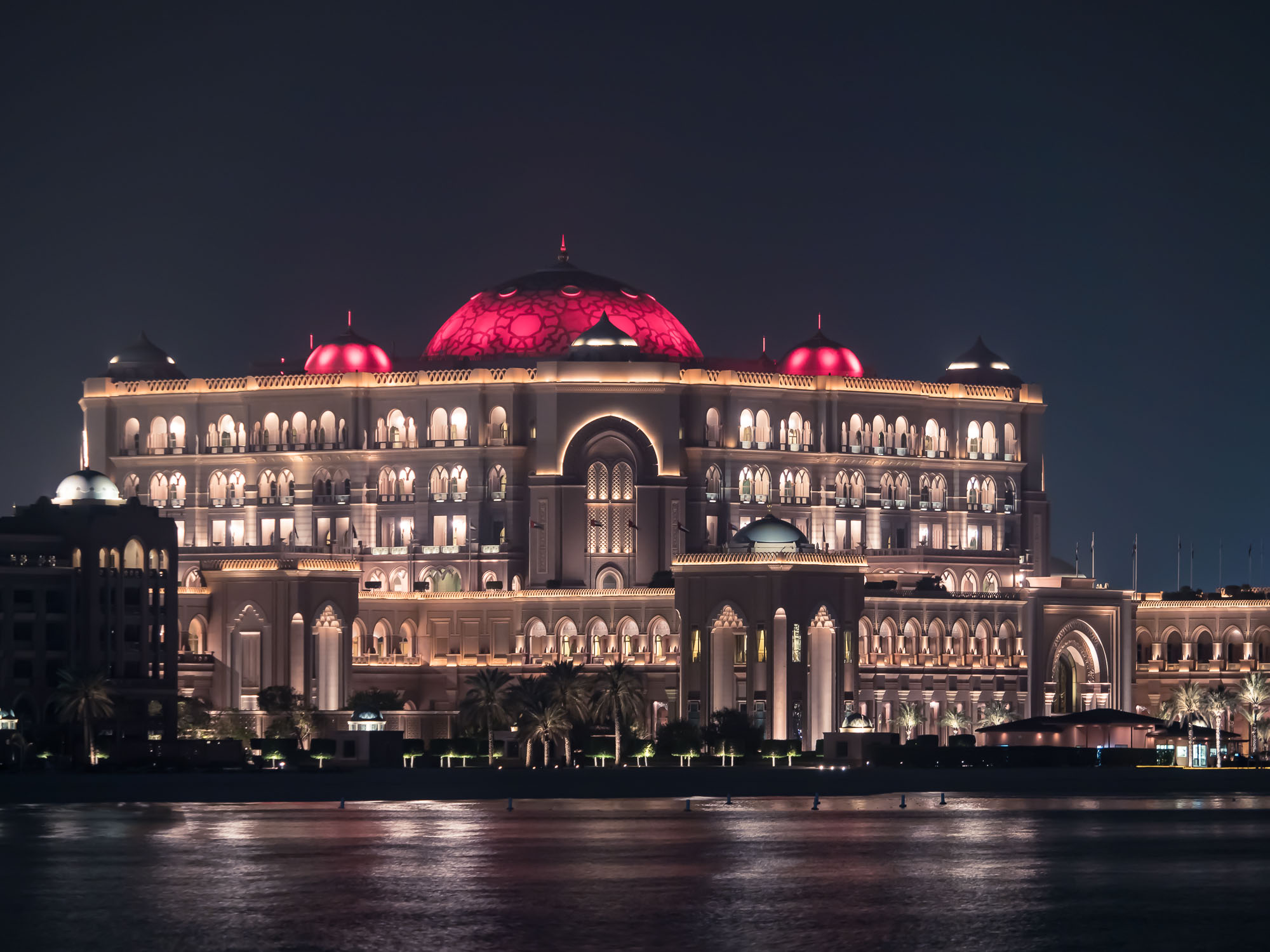
Close Up
A close up of the hotel, which opened in 2006.
Hong Kong - China, but not really
It was finally time to visit more of Asia, which I still haven't explored enough. Hong Kong seemed like a good starting point as any, with the former British territory now officially being a Special Administrative Region of the People's Republic of China. The city didn't disappoint, with its unique urban character and plenty of opportunities for photography.

It was finally time to visit more of Asia, which I still haven't explored enough. Hong Kong seemed like a good starting point as any, with the former British territory now officially being a Special Administrative Region of the People's Republic of China. The city didn't disappoint, with its unique urban character and plenty of opportunities for photography.
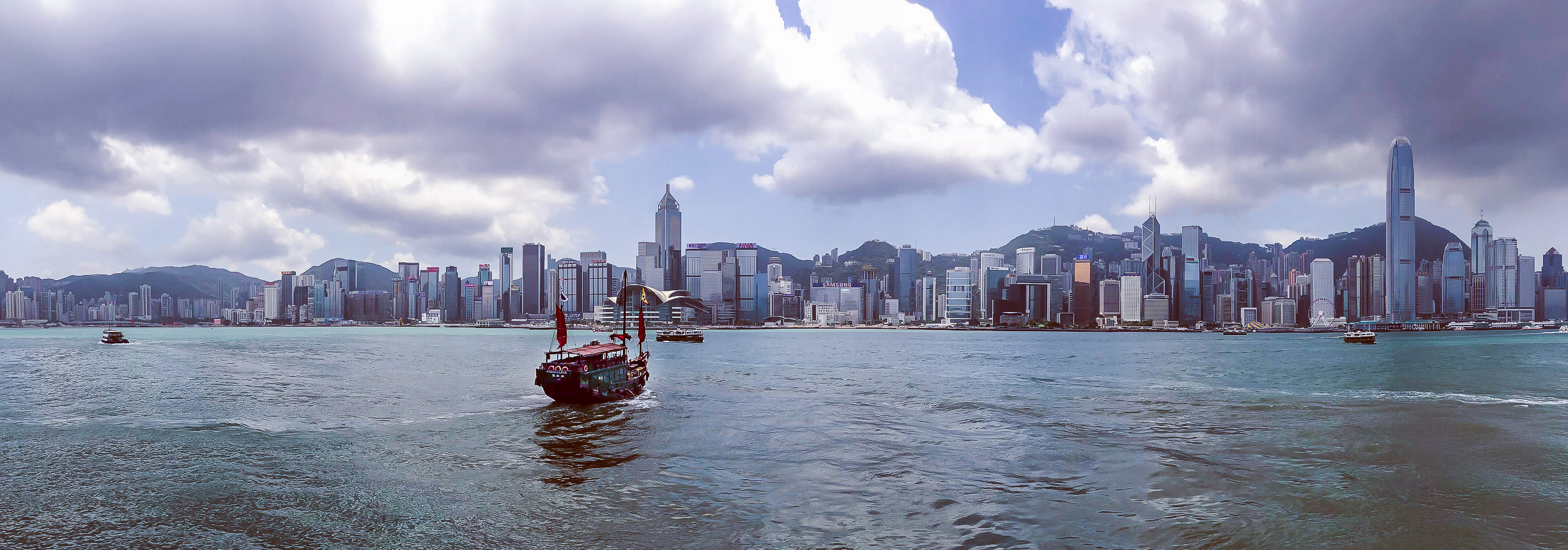
Hong Kong Island
Being a bit of skyscraper geek, the skyline was definitely my favourite part of the city, with its unique blend of sea, highrises and hillsides.
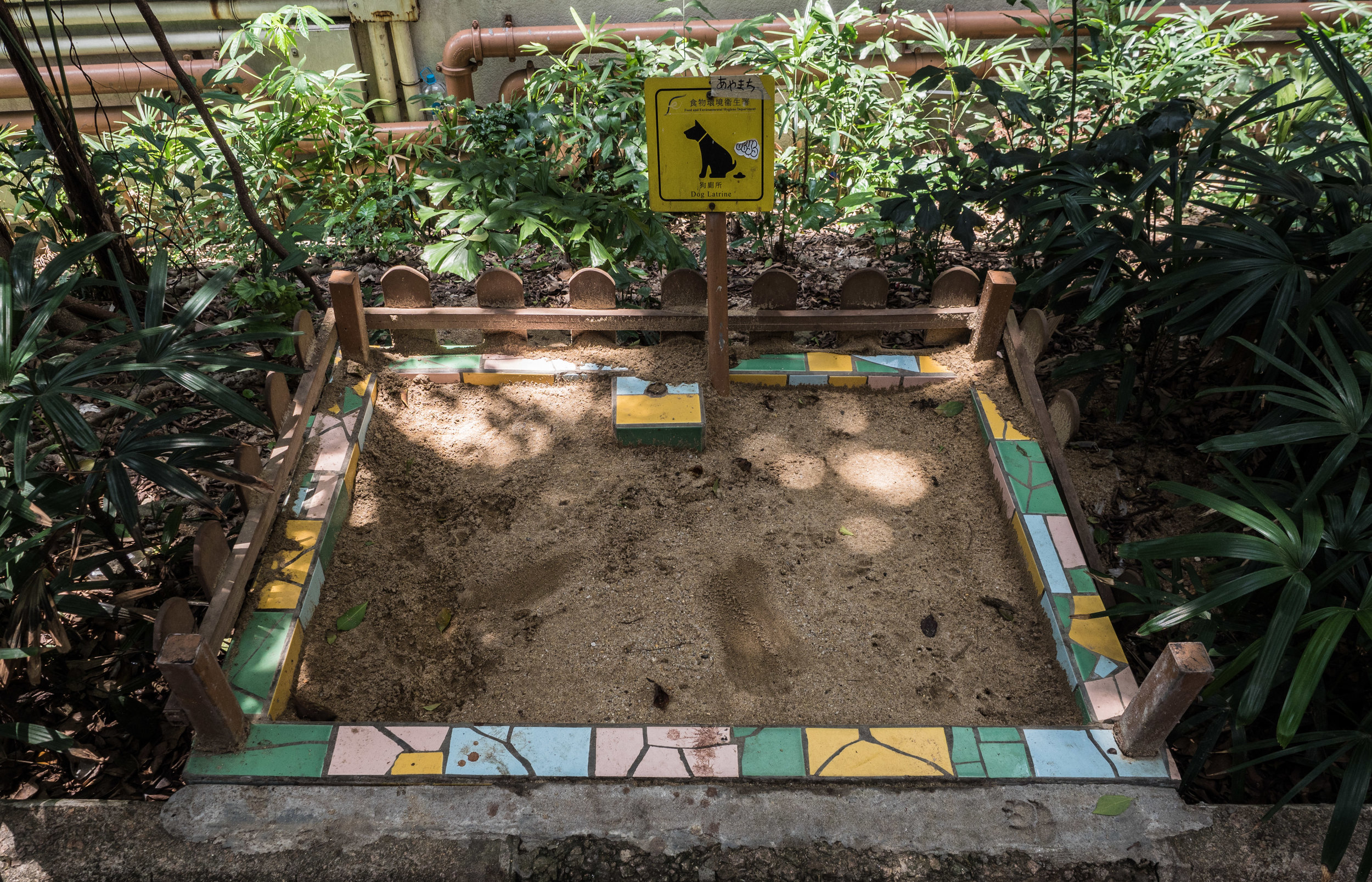
Dog Toilet
A very common sight in Hong Kong in an effort to keep the city clean.
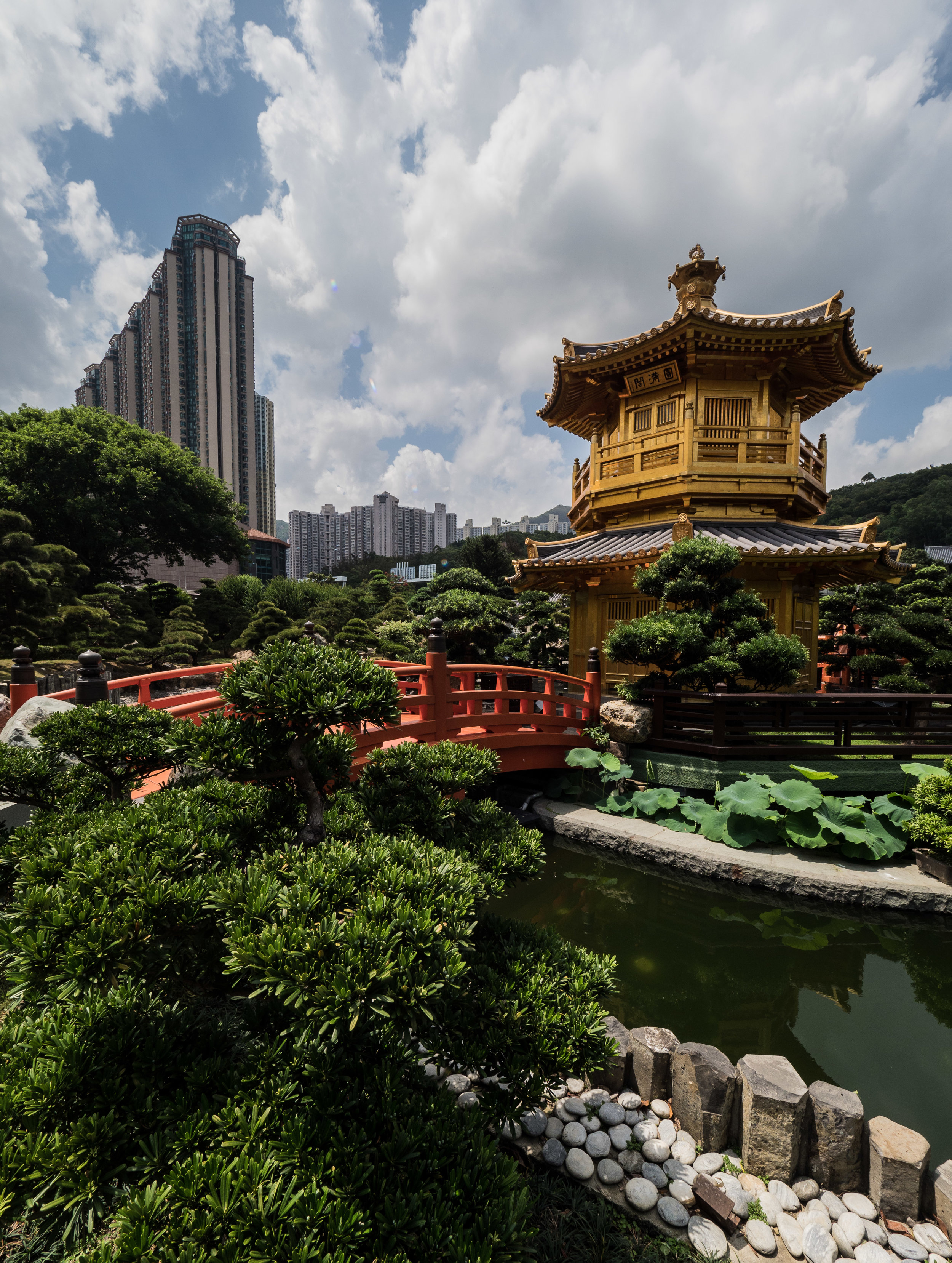
Nan Lian Garden
The city has a few nice gardens, the most beautiful one I got to see is the Nan Lian Garden, just next to the Chi Lin Nunnery.
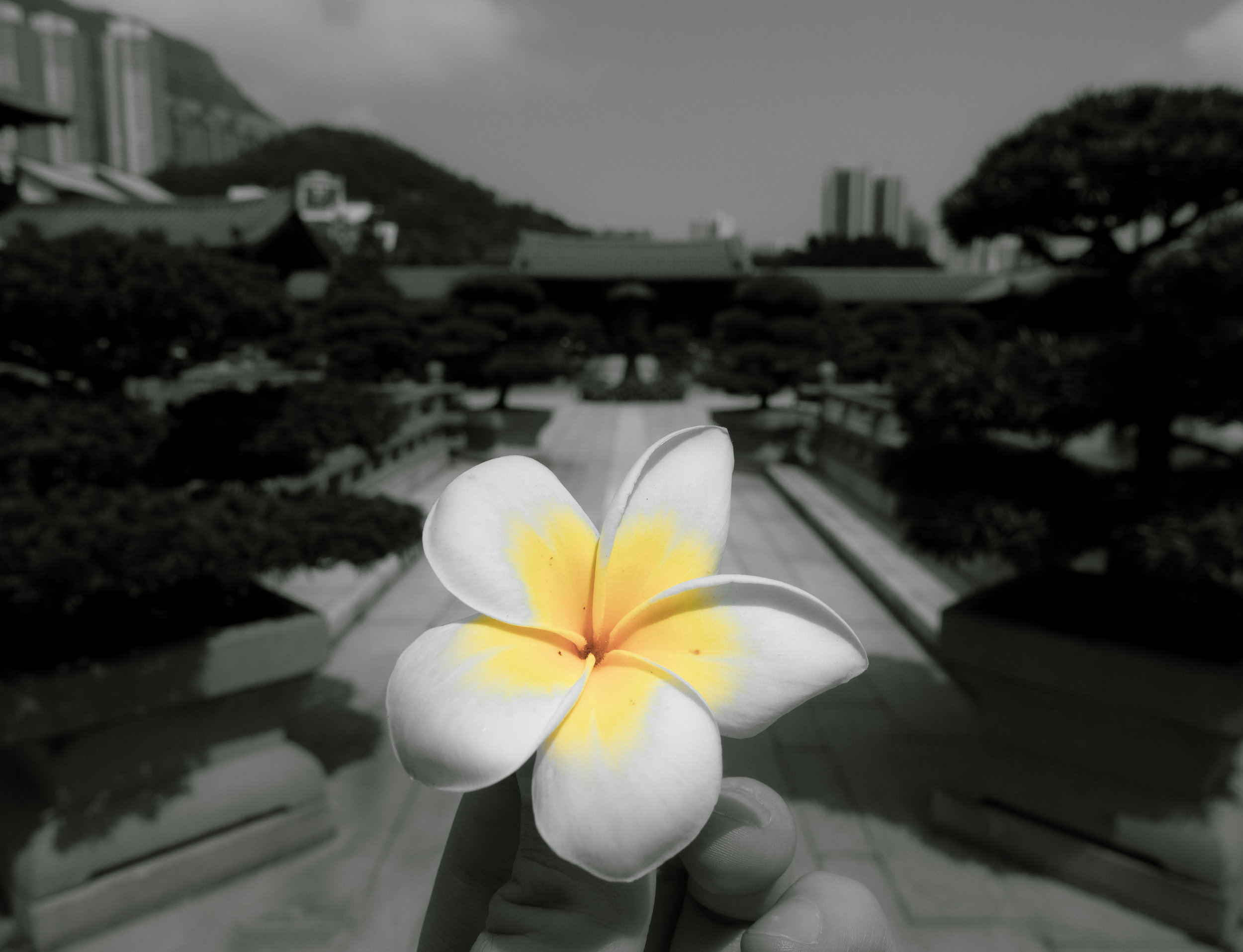
Chi Lin Nunnery
The Tang dynasty architecture style temple with its flower gardens is worth a visit.
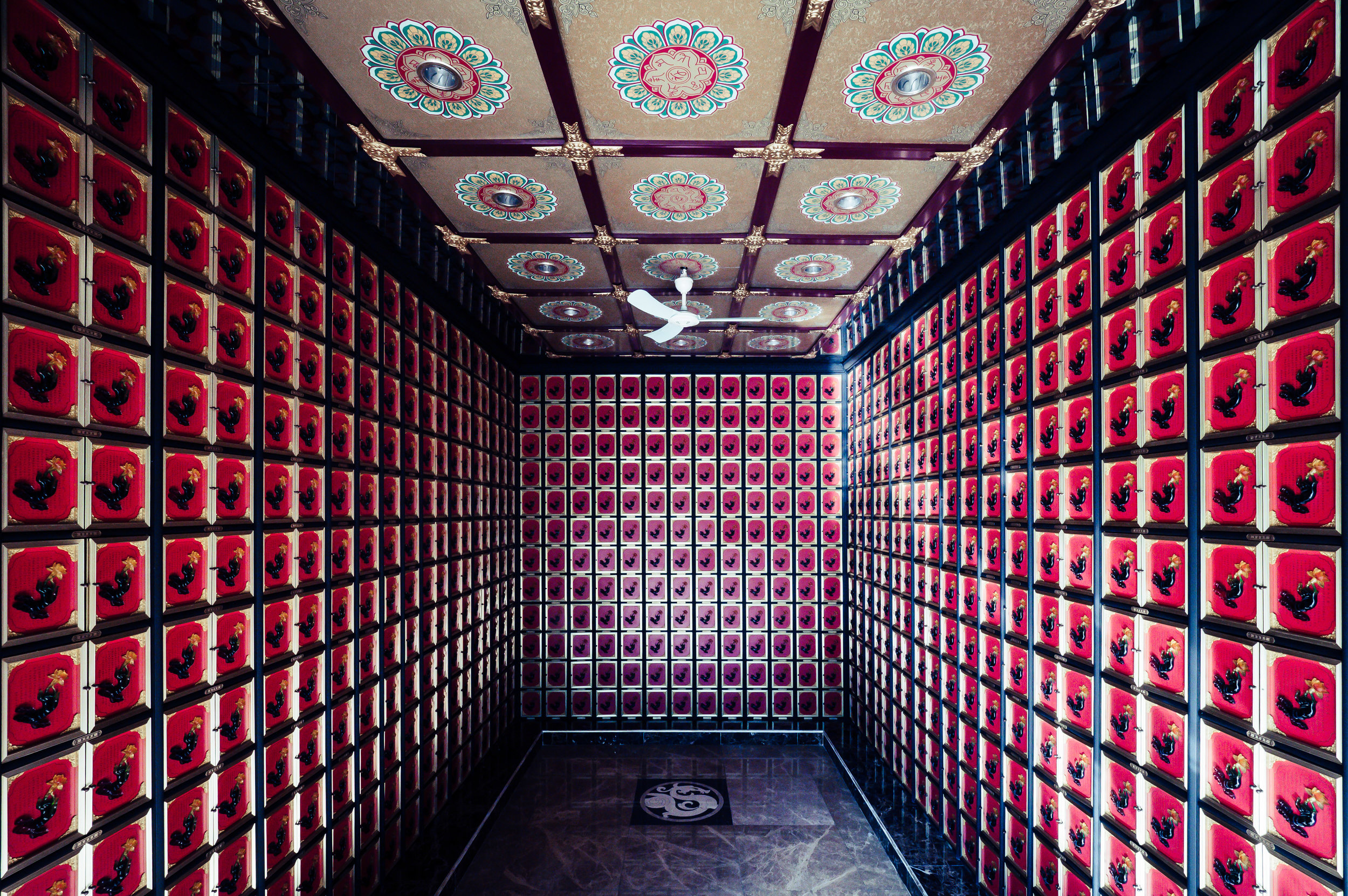
Ten Thousand Buddhas Temple
The actual number is a bit higher, or so they say.
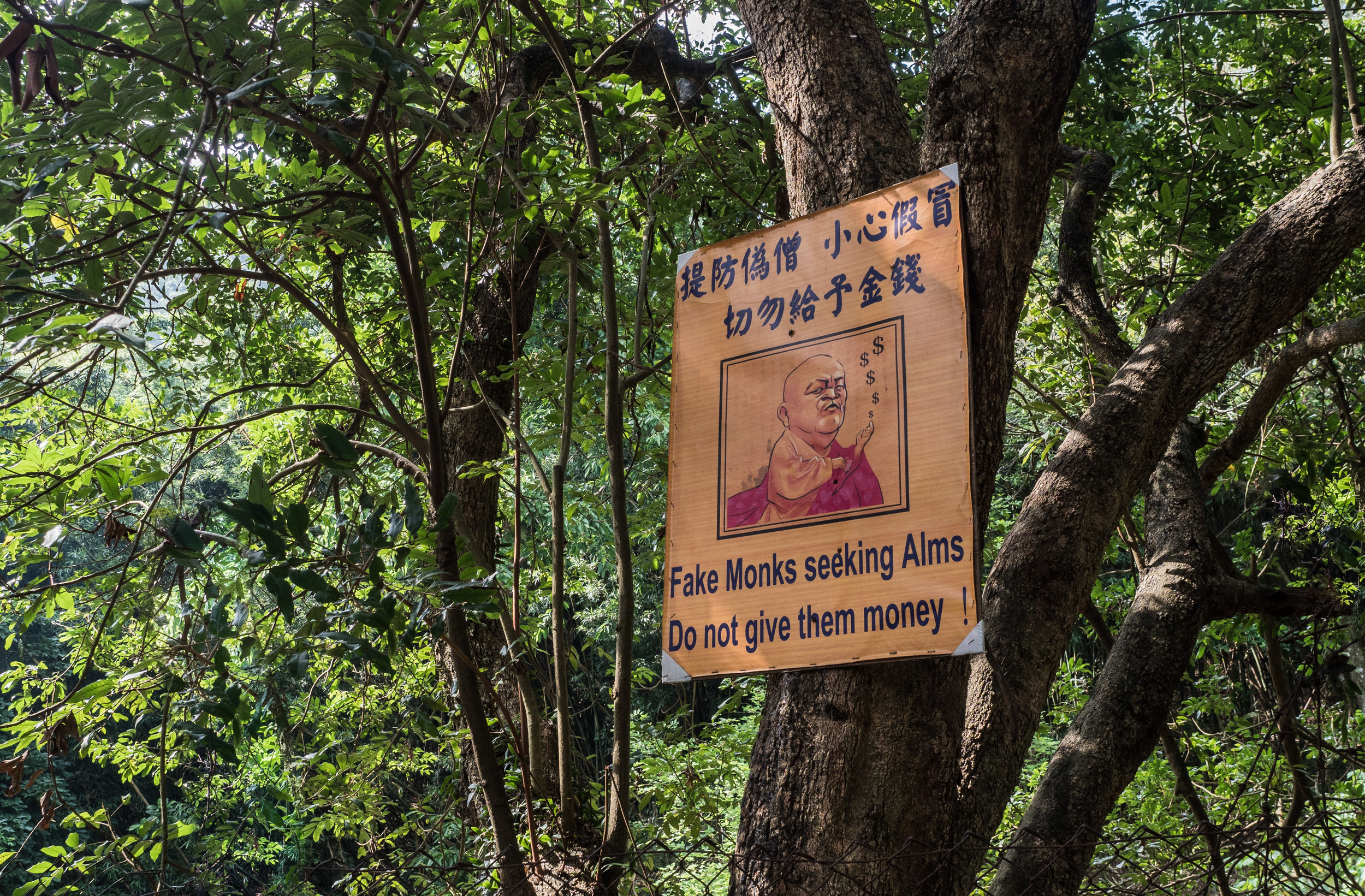
Guess...
.. who gave them money?
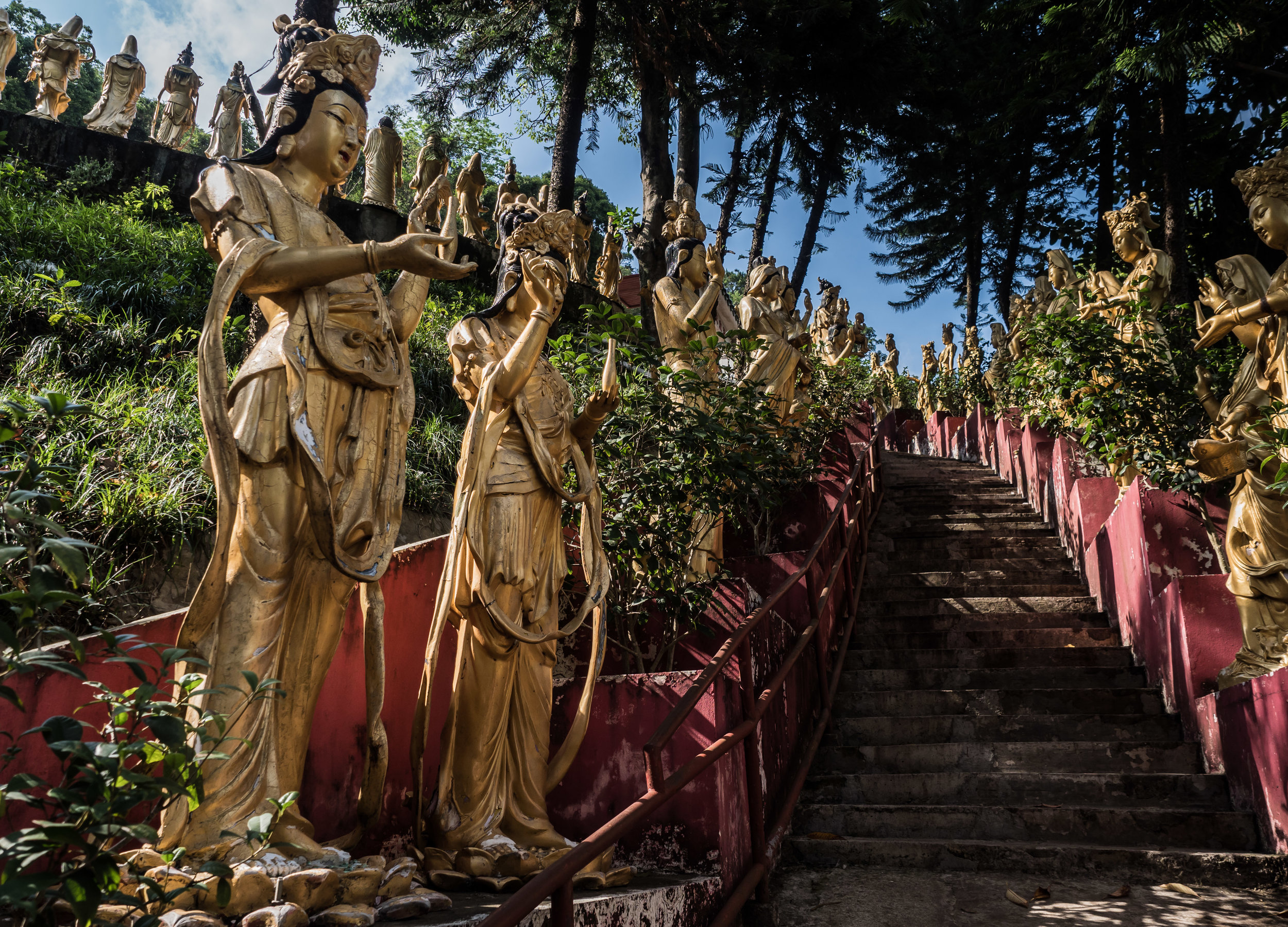
The Arhats
The status on the stairs up to the monastery.
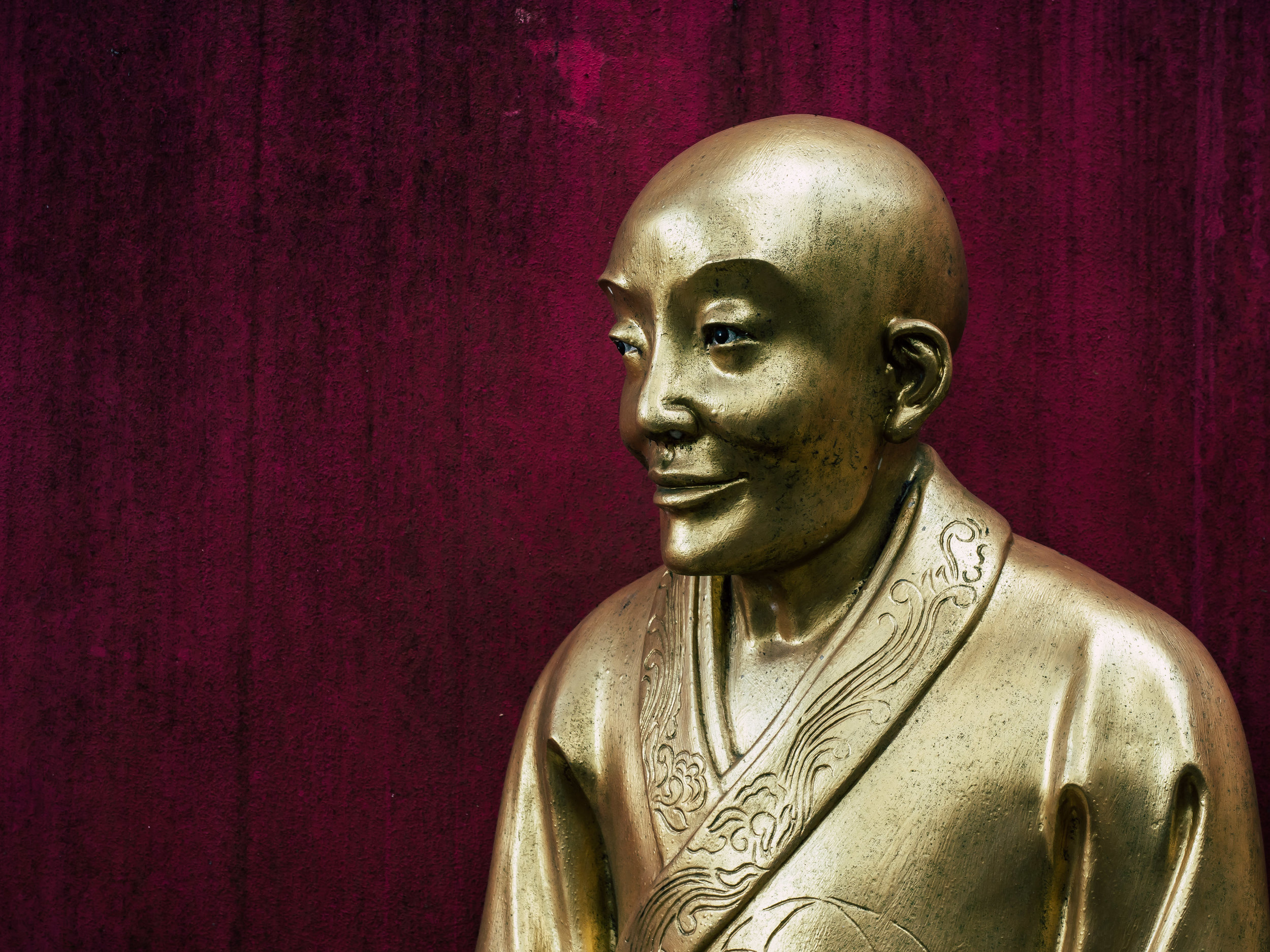
Faces
Each statue has different features with unique facial expressions.
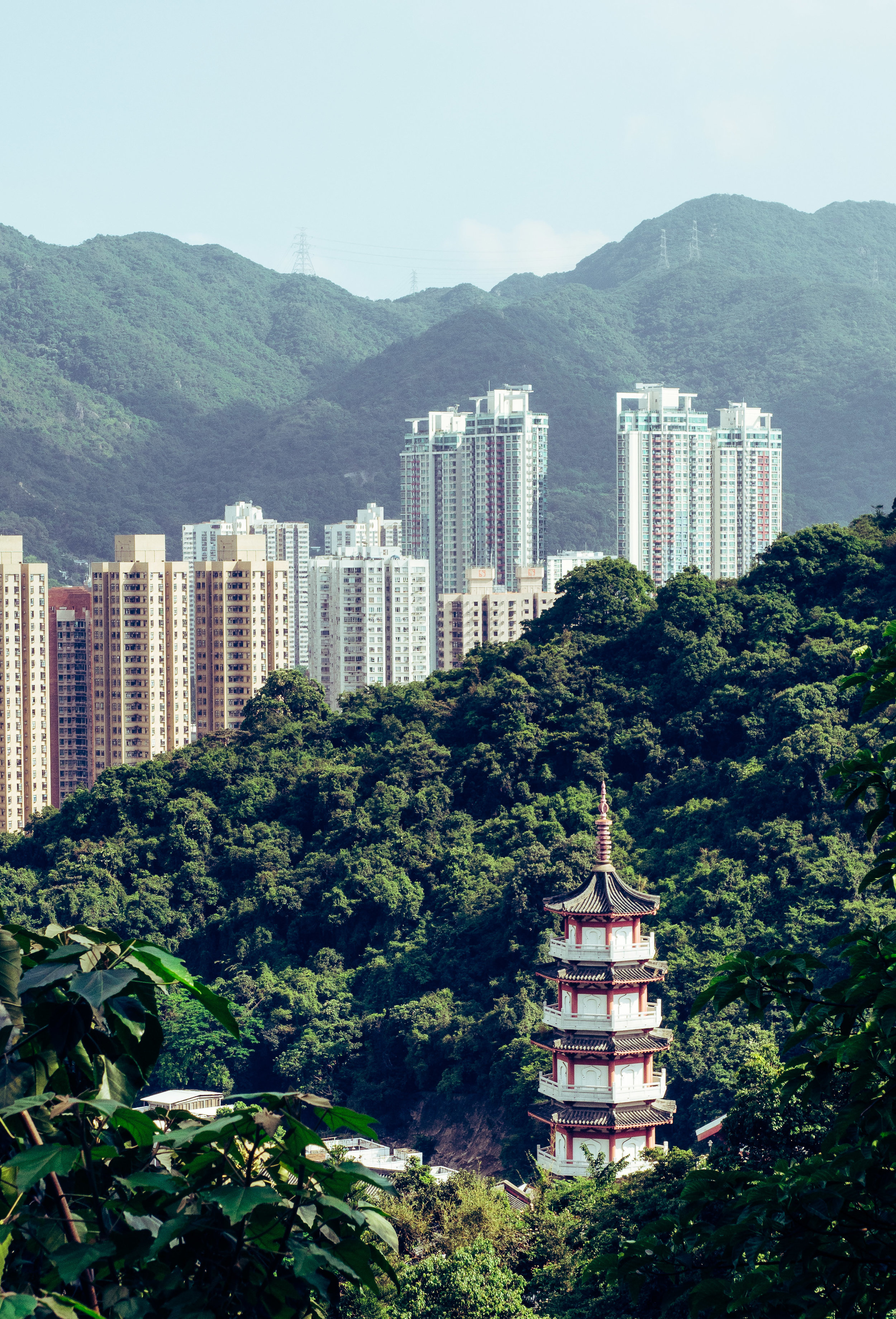
Mountain Views
The temple is located north of Lion Rock, with a view over the mountains.

Contrasts
The greenery and hilly landscape makes the skyline's density extra special.
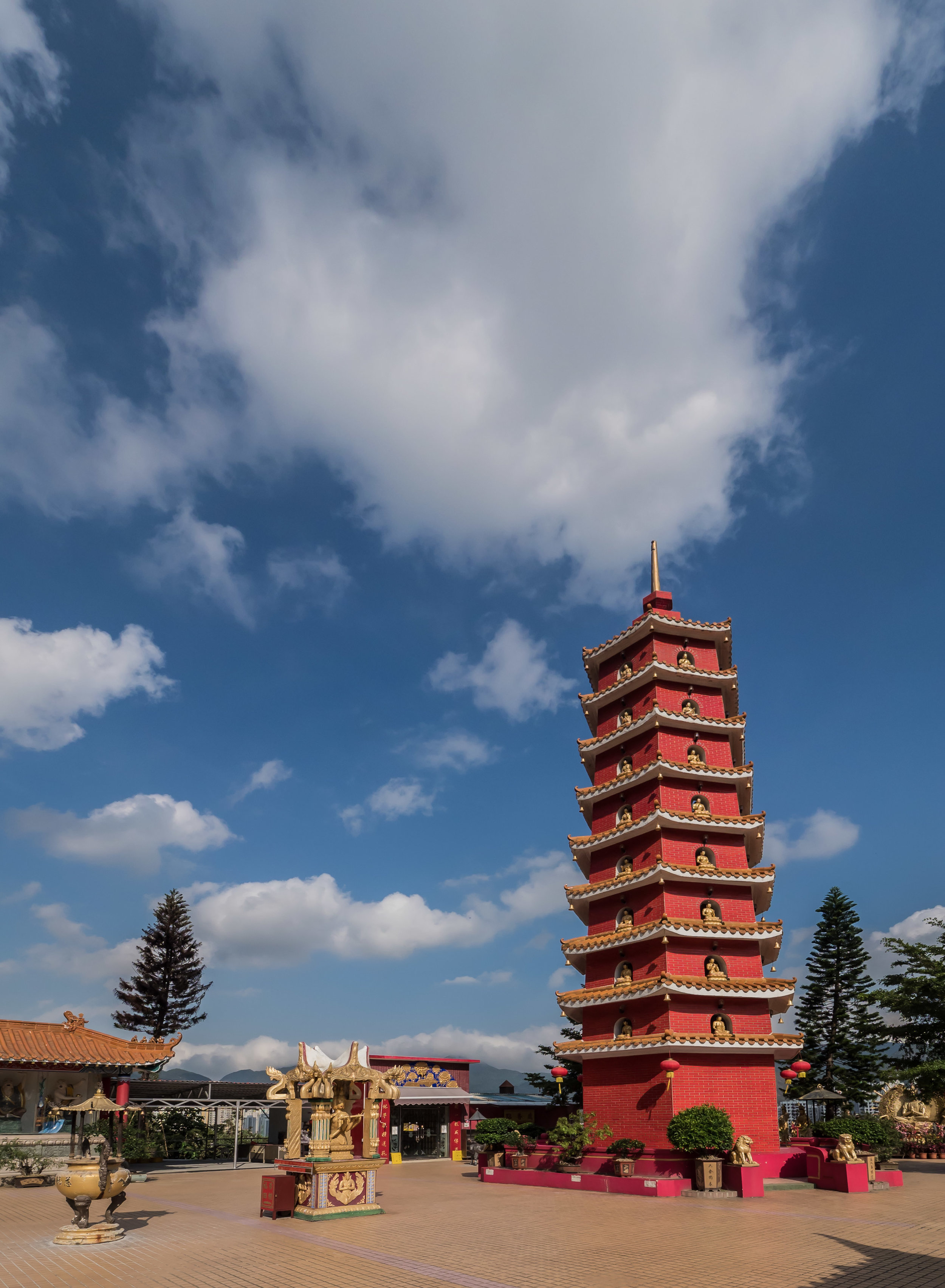
The Pagoda
The monastery - which doesn't actually house monks - opened in 1957.
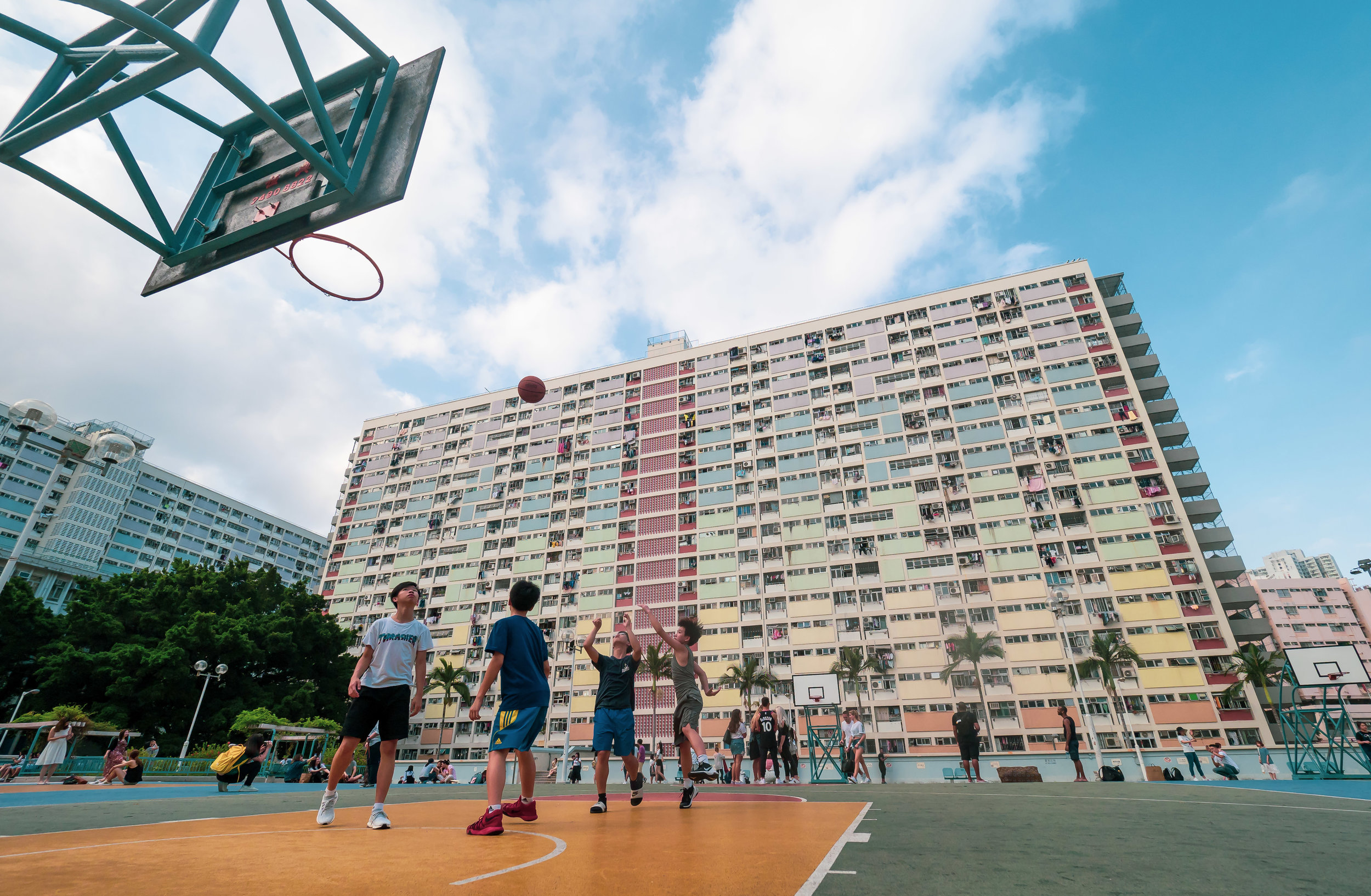
Choi Hung Estate
The basketball court in front of the coloured building facade is one of Hong Kong's most famous Instagram locations - and it shows with dozens of tourists up there on this weekend day. I chose to go with a slightly different shot, capturing the residents, but you can see the selfie action in the background.
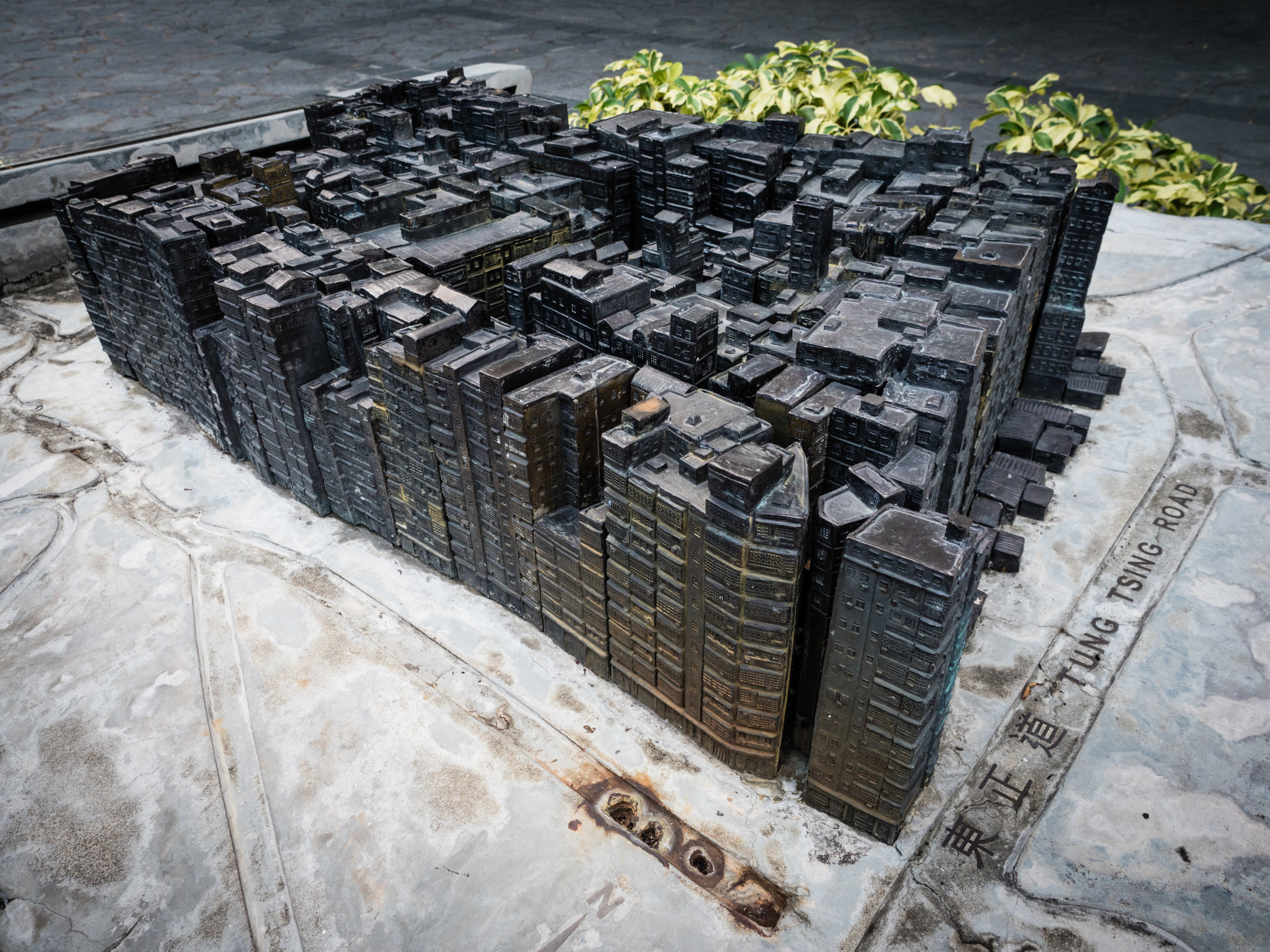
Kowloon Walled City
One of the lesser known stories of Hong Kong. This part of the city became a largey ungoverend enclave in the late 1800s, with the population (and the buildings) rising to 50000 by the 1990s. With a lack of municipal control and high crime rates, the district basically governed itself through organised syndicates.
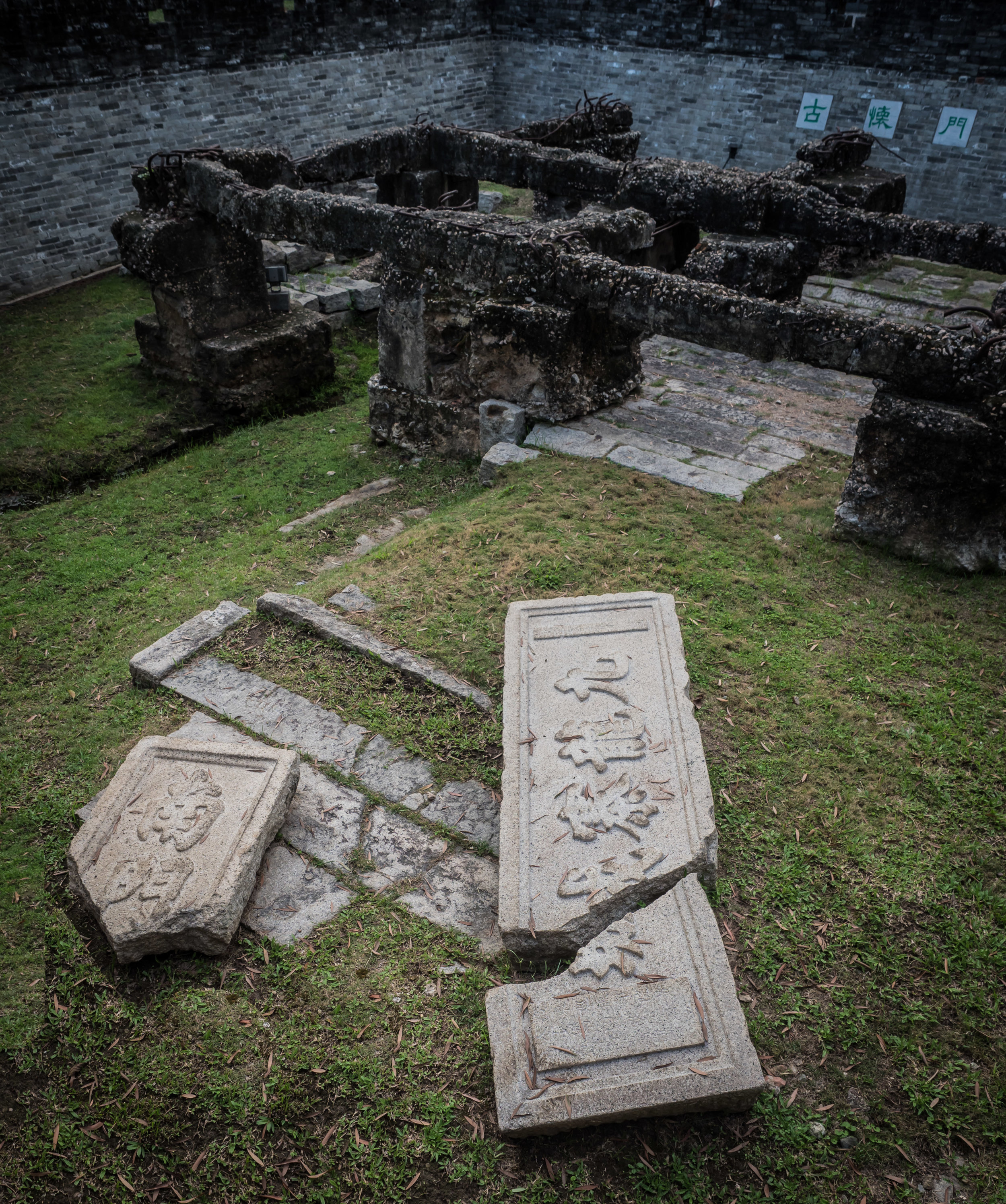
Remnants
Not much is left today - the area has been converted into a park after the city was demolished in the early 1990s, with only a few monuments reminding visitors of what once stood here.
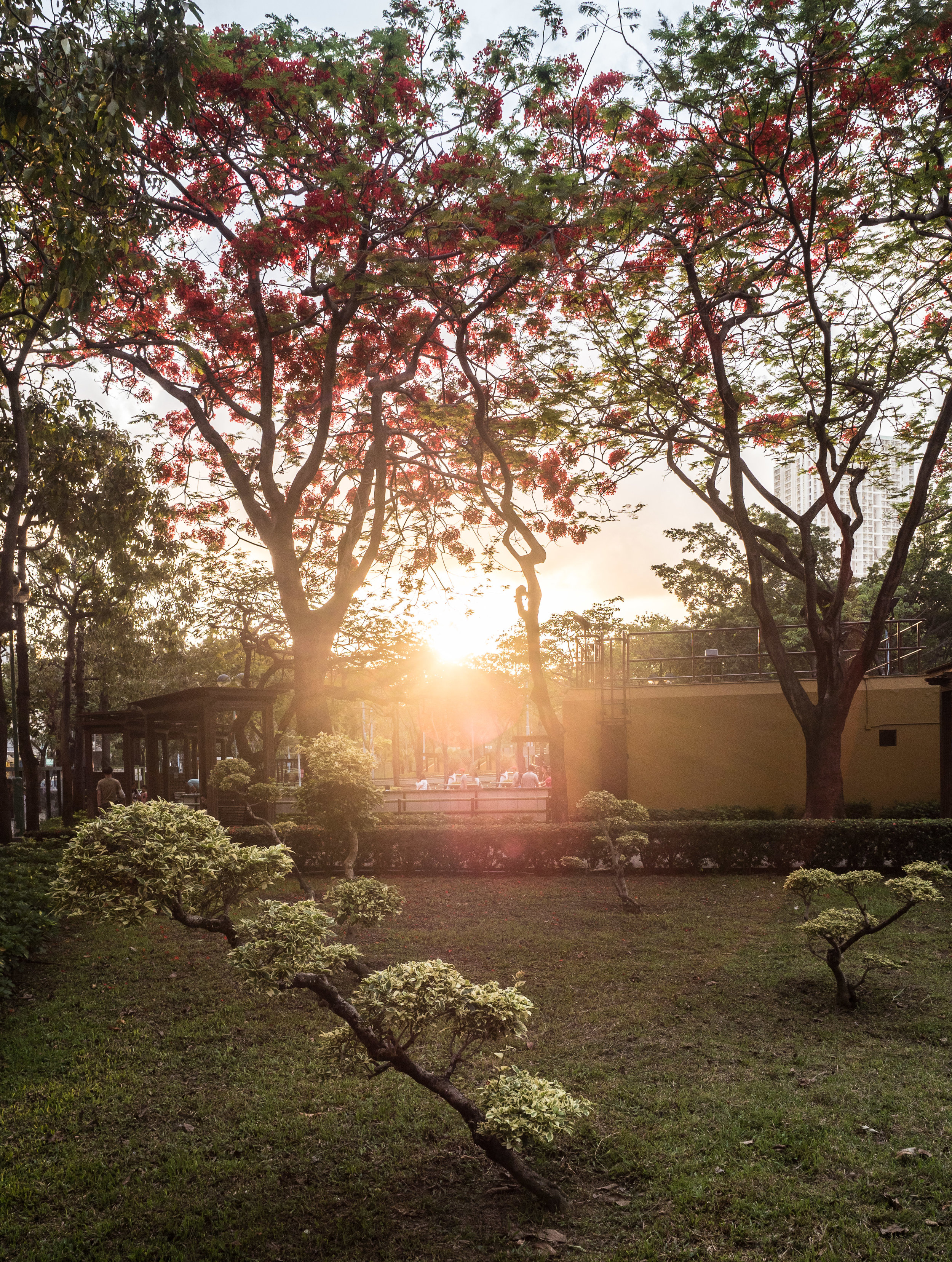
Greener Pastures
The Walled City park is now filled with greenery.
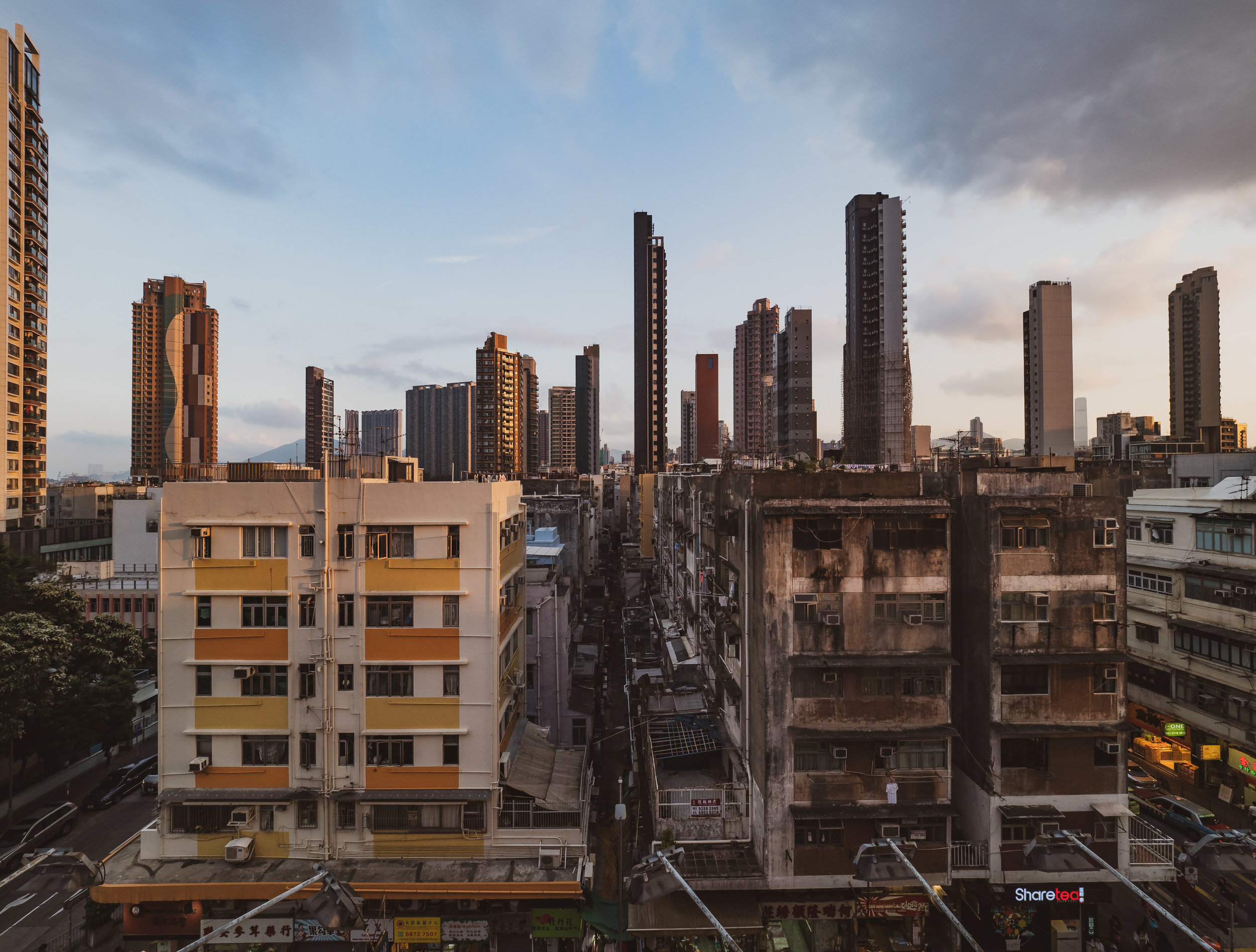
City Views
The residential high rise architecture style of Kowloon is characterised by slim buildings optimised to house as many units as possible.
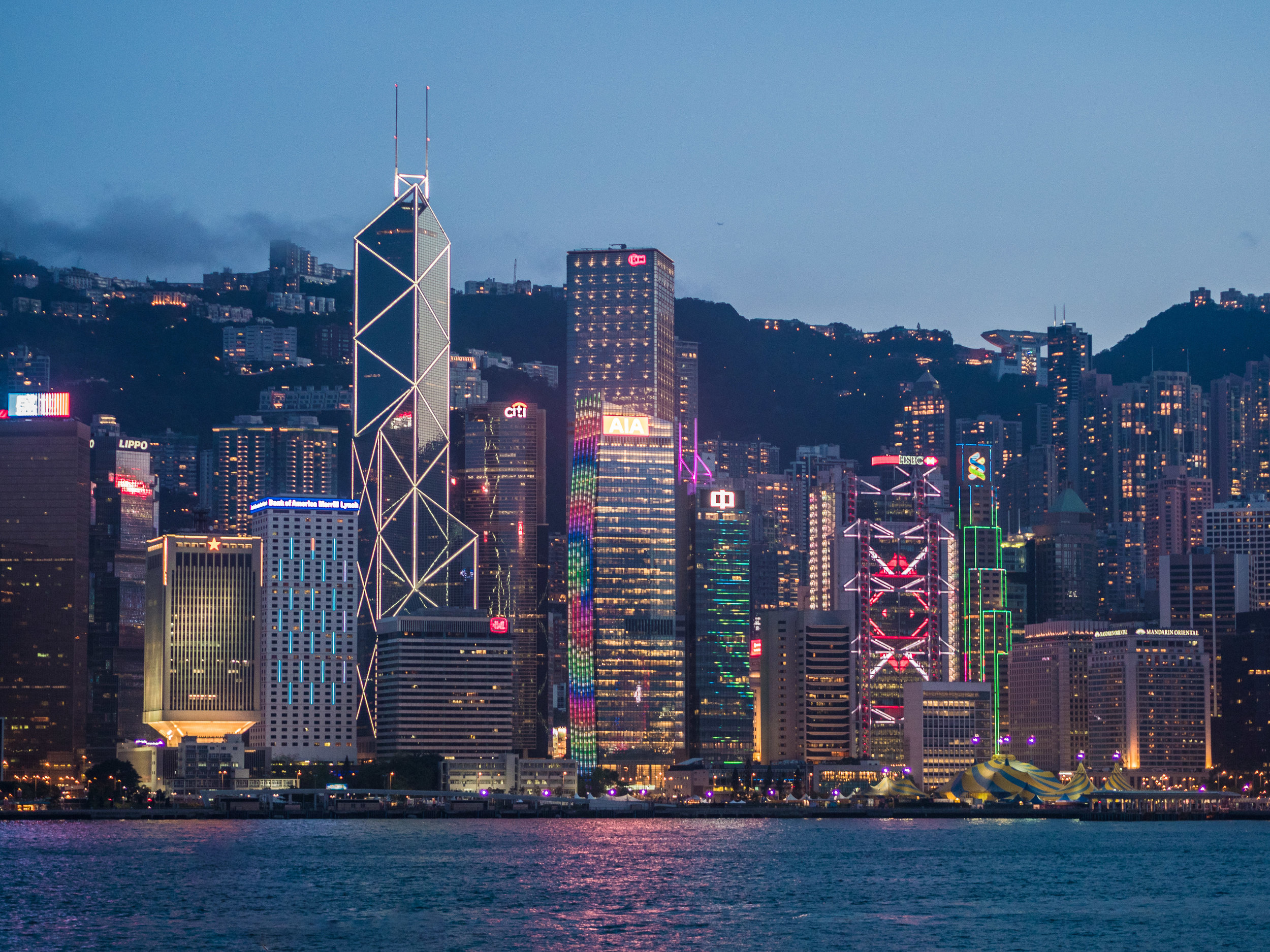
Lights
On the other side, the Central district of Hong Kong island with largely hotel and commercial towers presents a colourful architectural diversity.
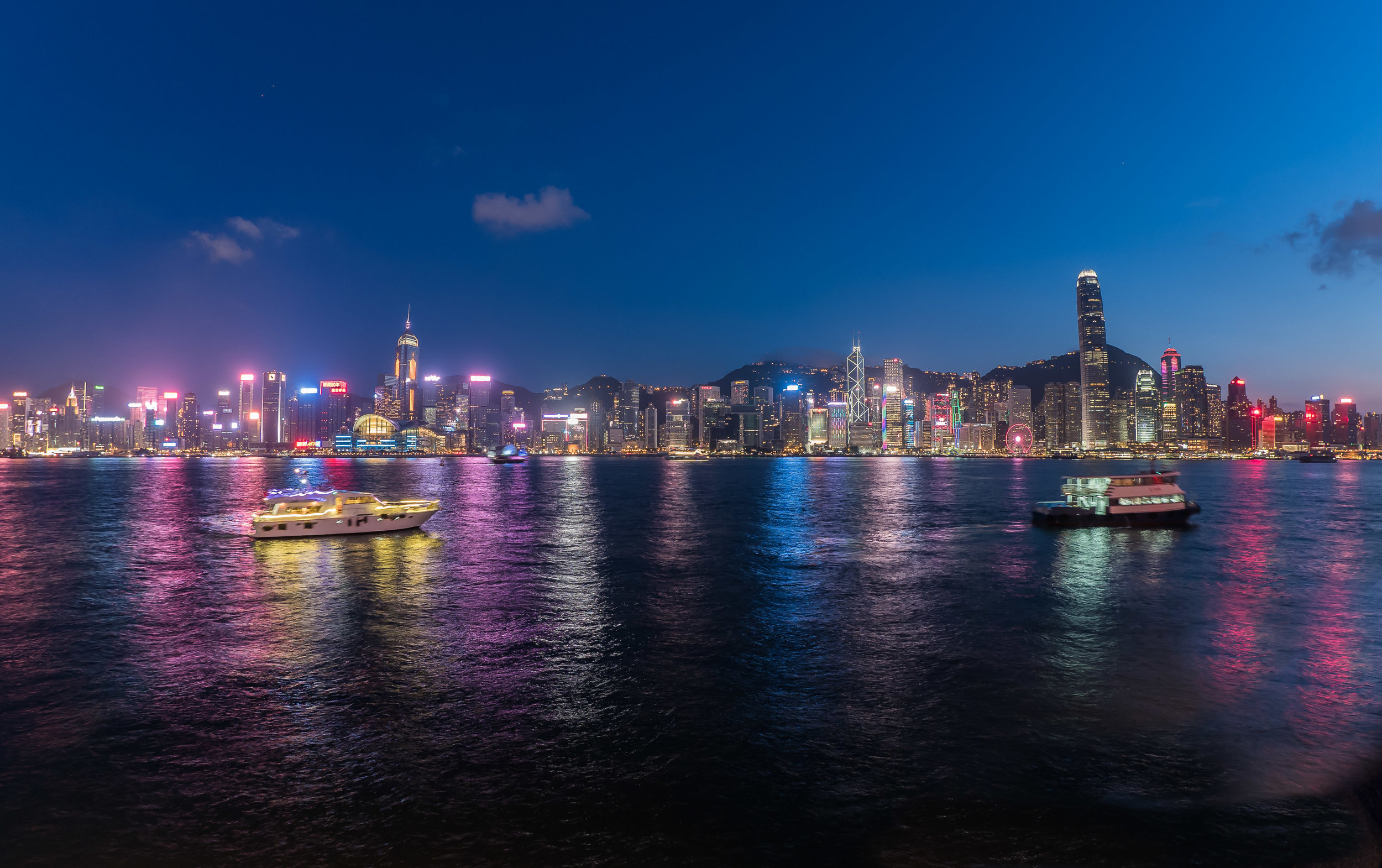
Central and Wan Chai
The skyline in its full dusk glory.
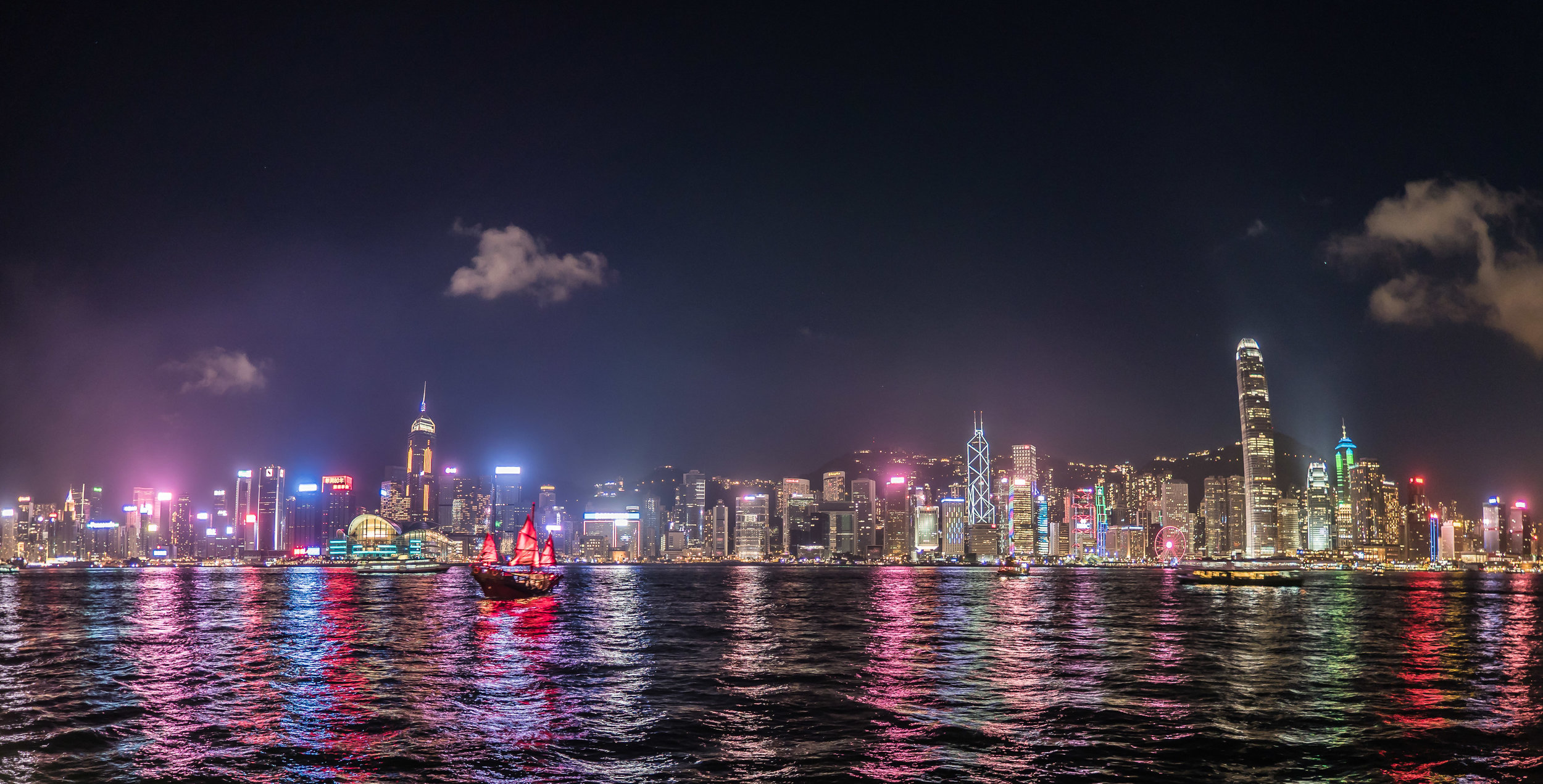
Nighttime
And an hour later, with the red sailed tourist junk (ancient Chinese sailing ship) crossing the bay.
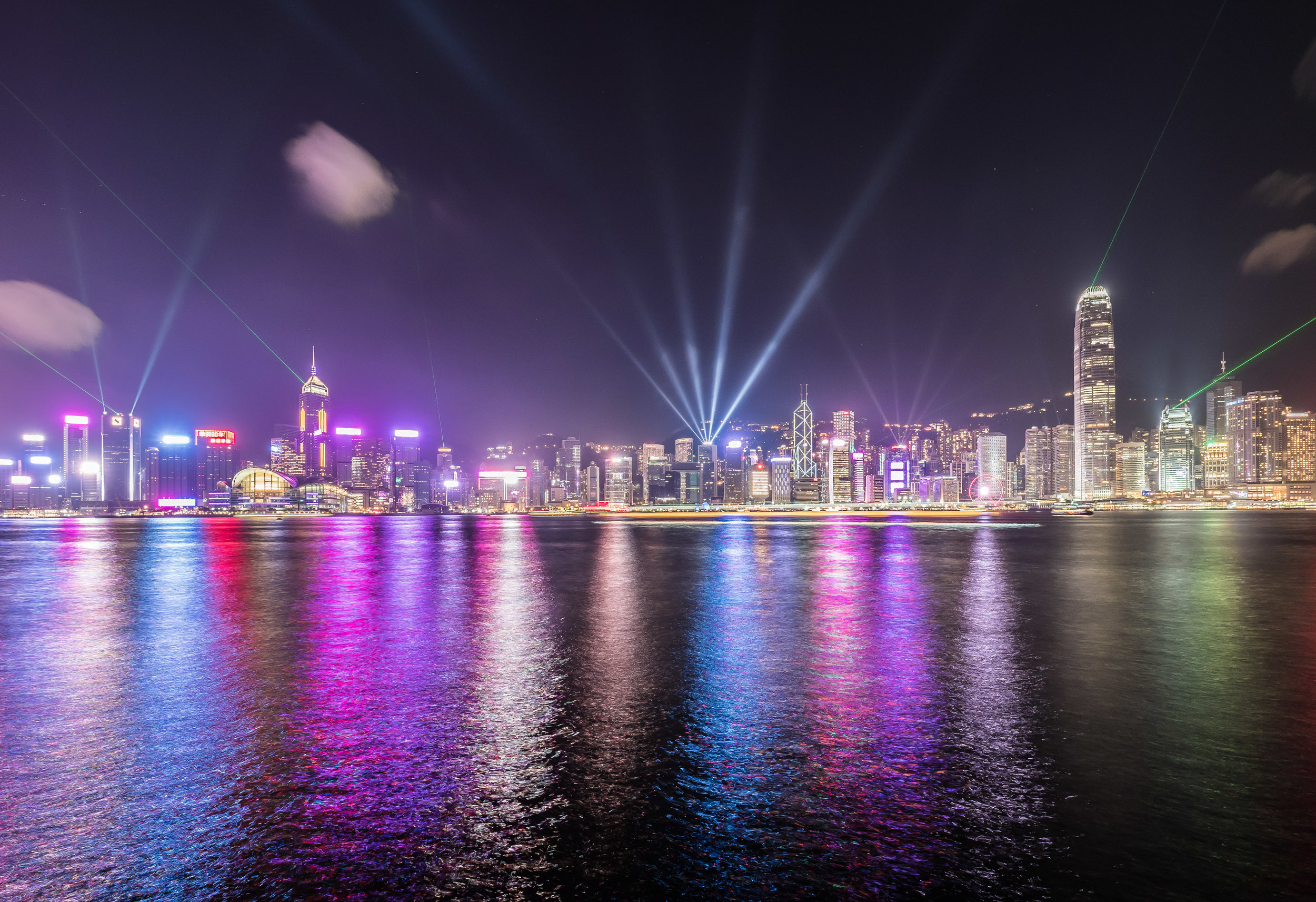
Light Show
The daily 8pm light show is best viewed from the Tsim Sha Tsui pier, although admittedly it is not particularly impressive.
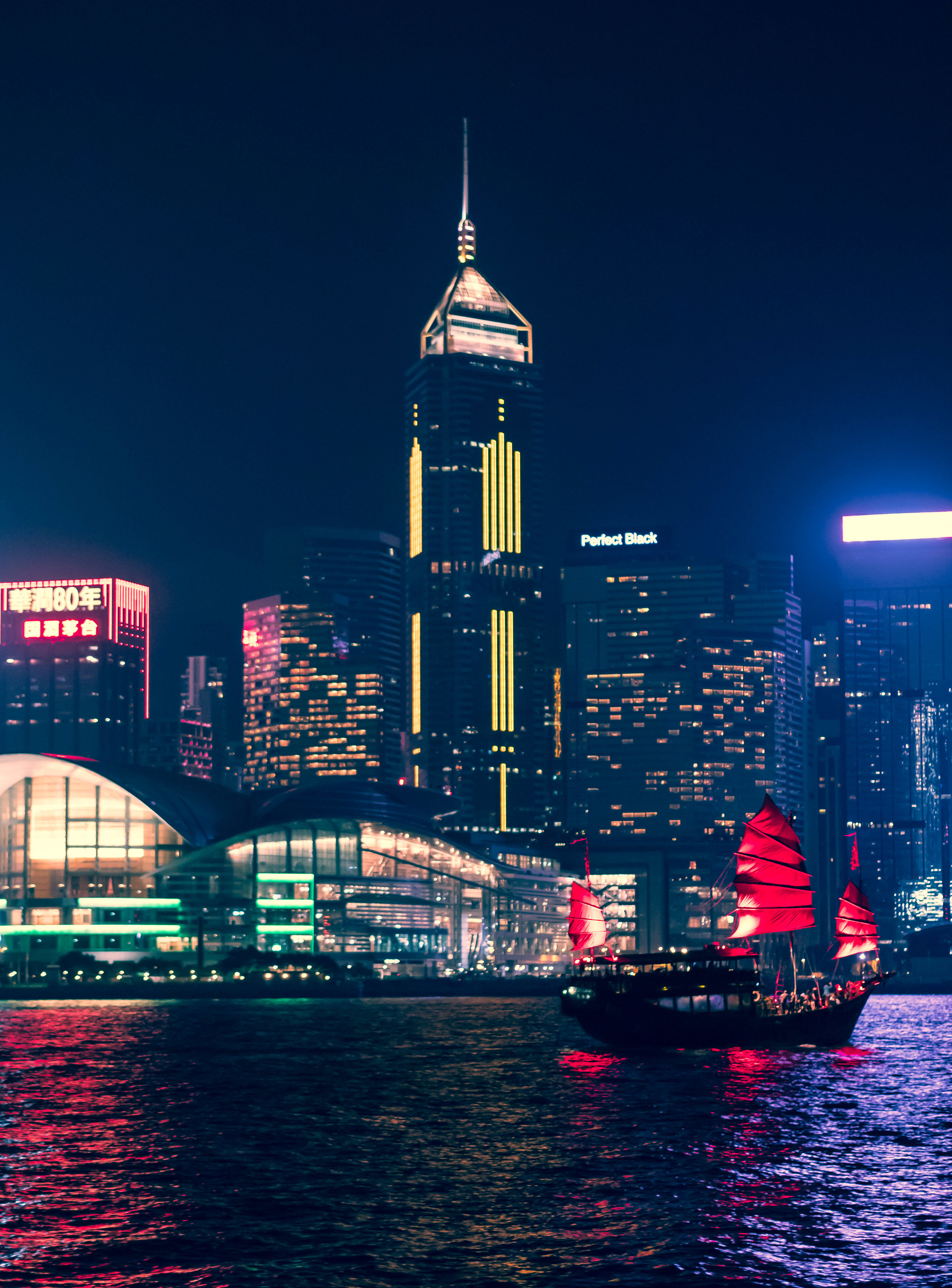
Chinese Junks
The famous boats with the red sails today act as restaurants and entertainment ships.
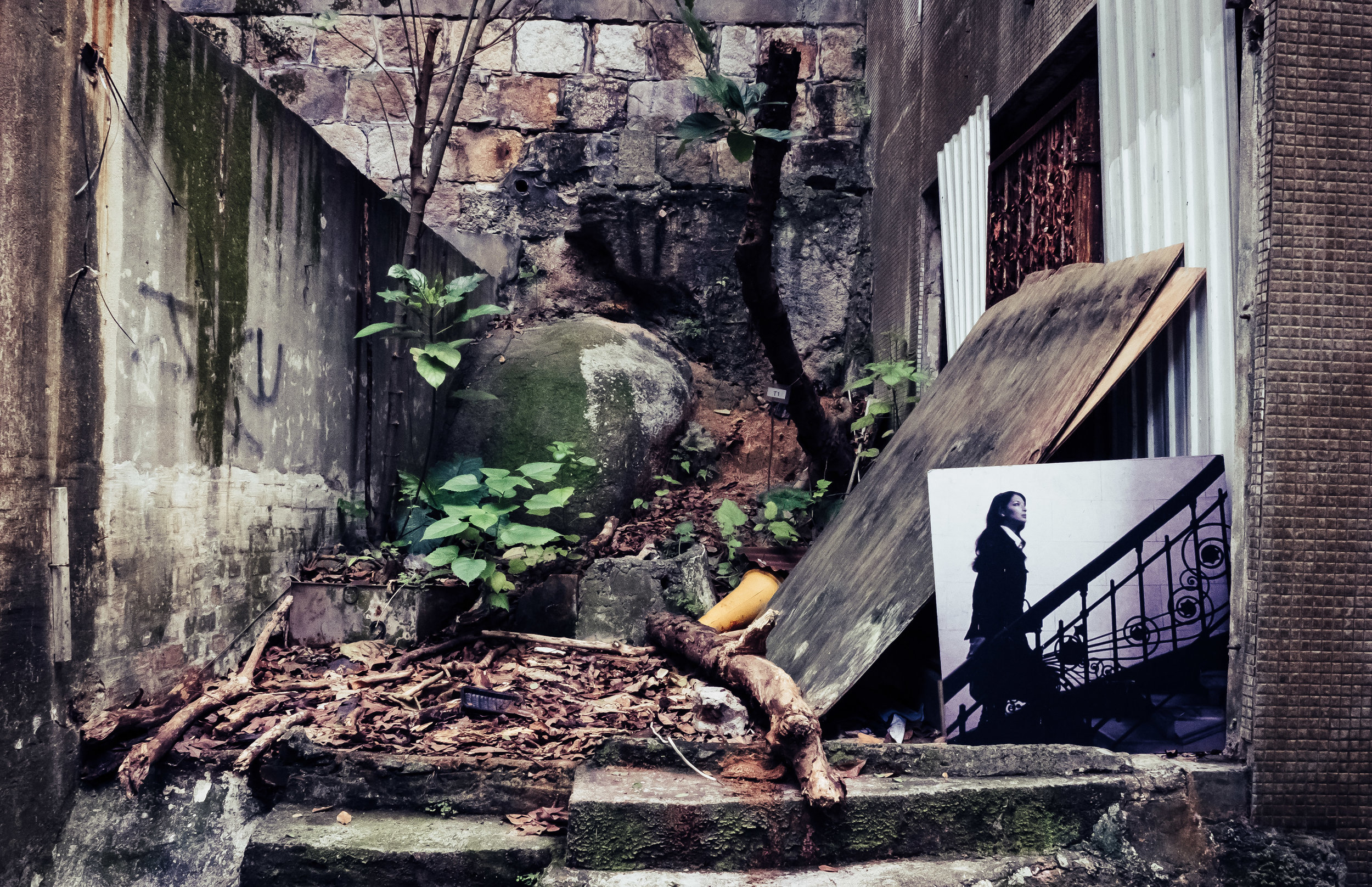
Strange Sights
There is something unusual on every corner, such as this abandoned painting in the upper parts of Central.
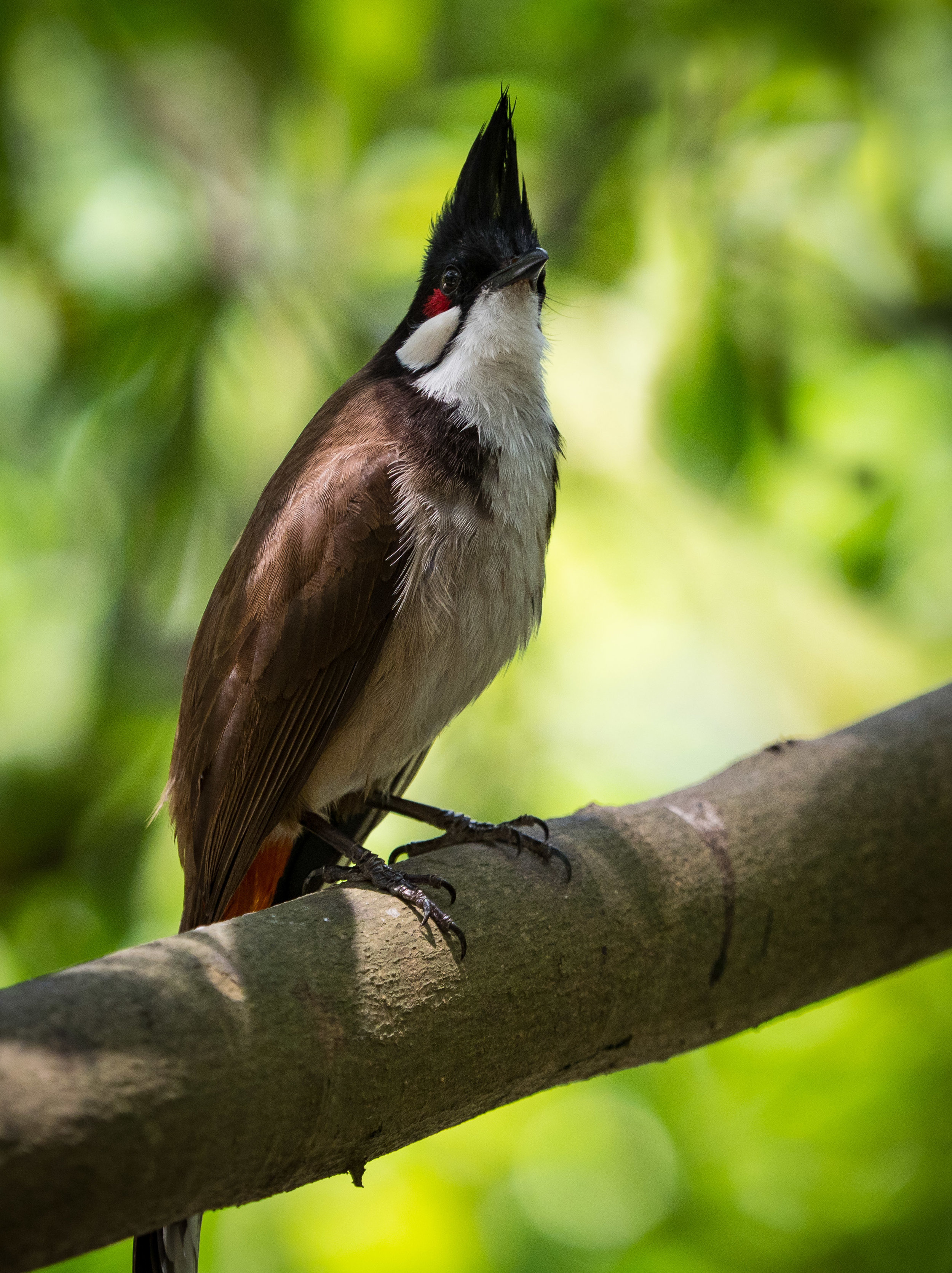
Wildlife
Who knows the name of this species?
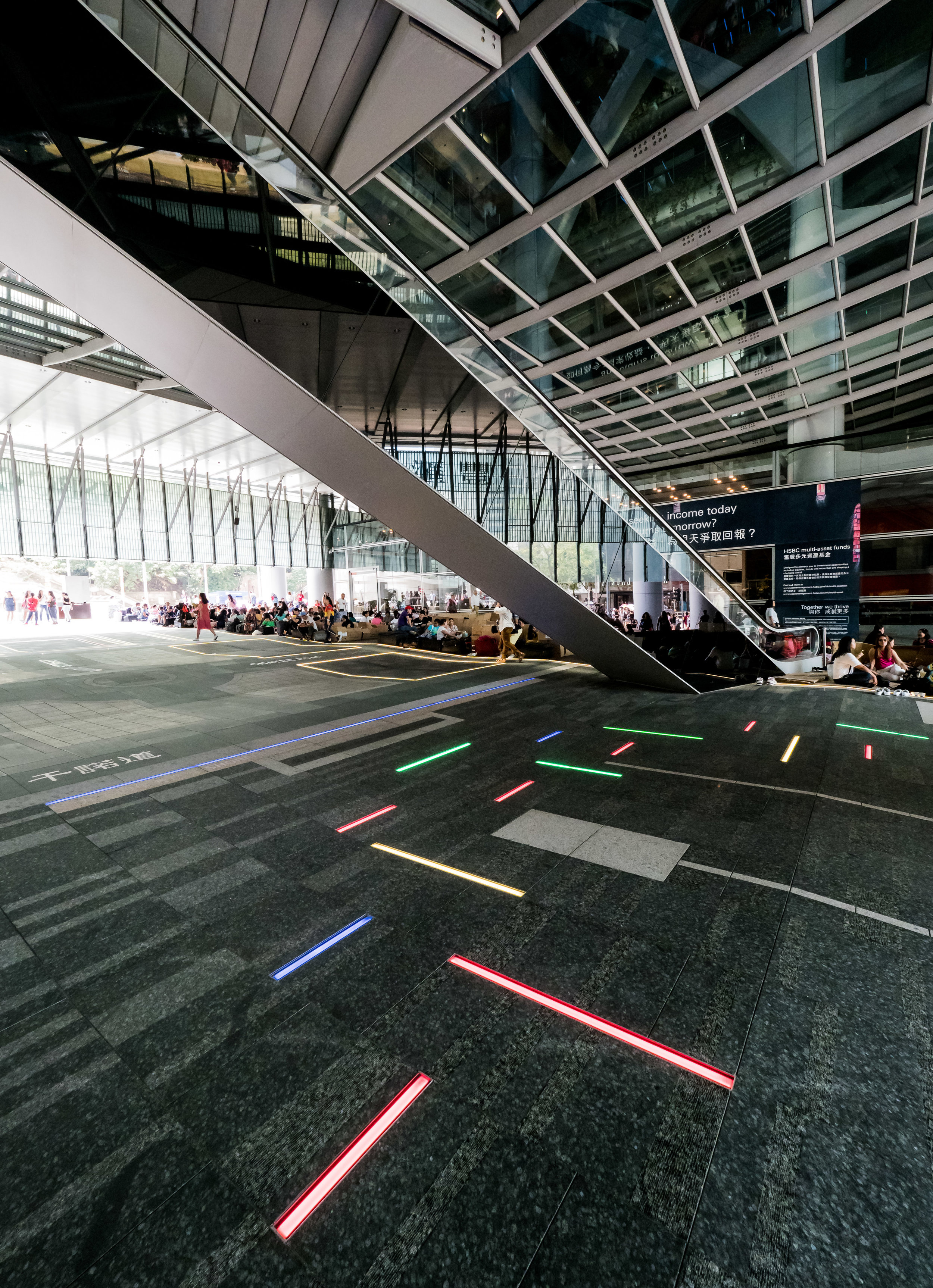
HSBC Tower
The lobby under the HSBC tower (and in general half of Hong Kong island) was filled with Filipinas setting up little personal spaces out of boxes on this particular day - we never found out why.
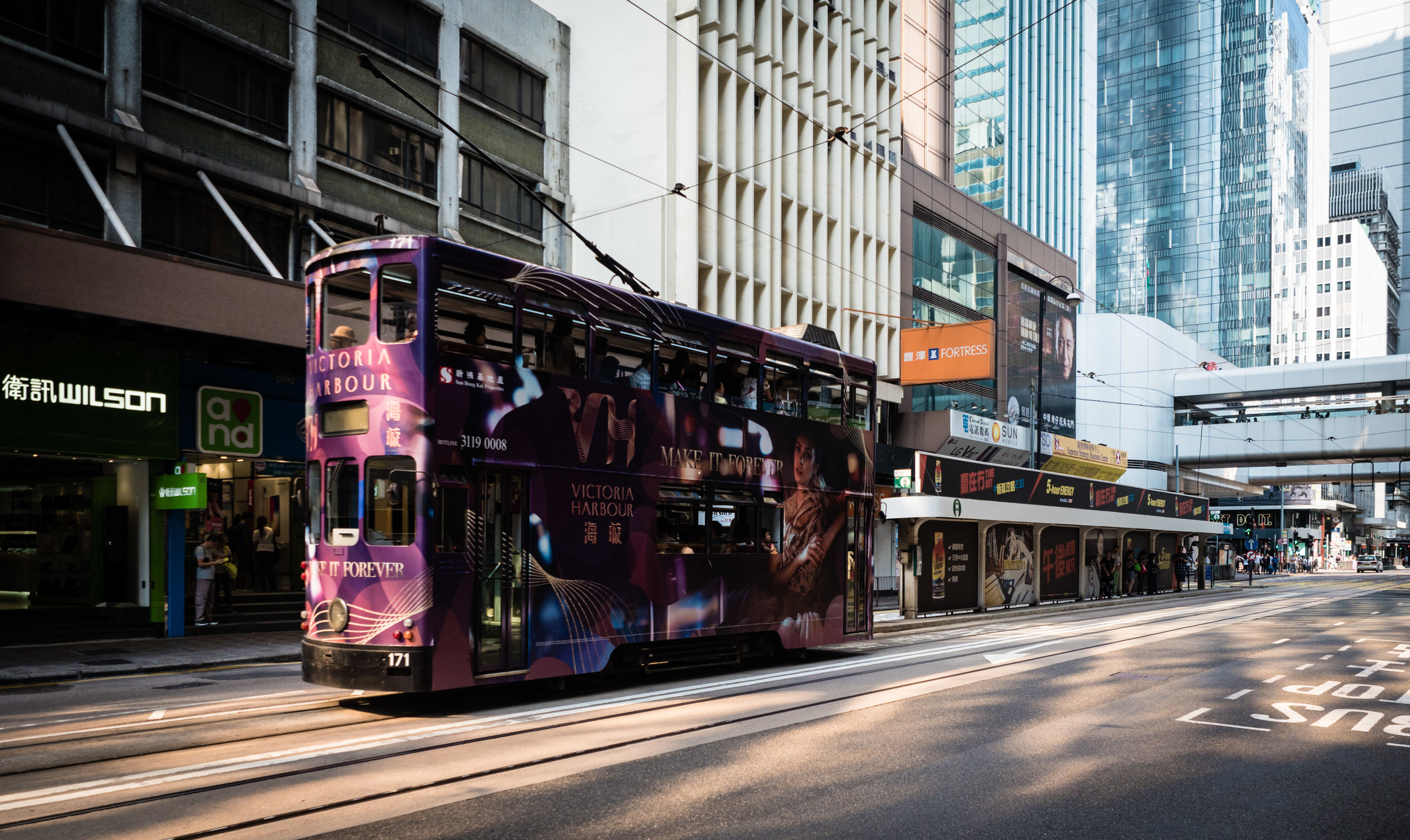
Trams
The outside view of one of the many double decker trams on Hong Kong island, which started operating in 1904.
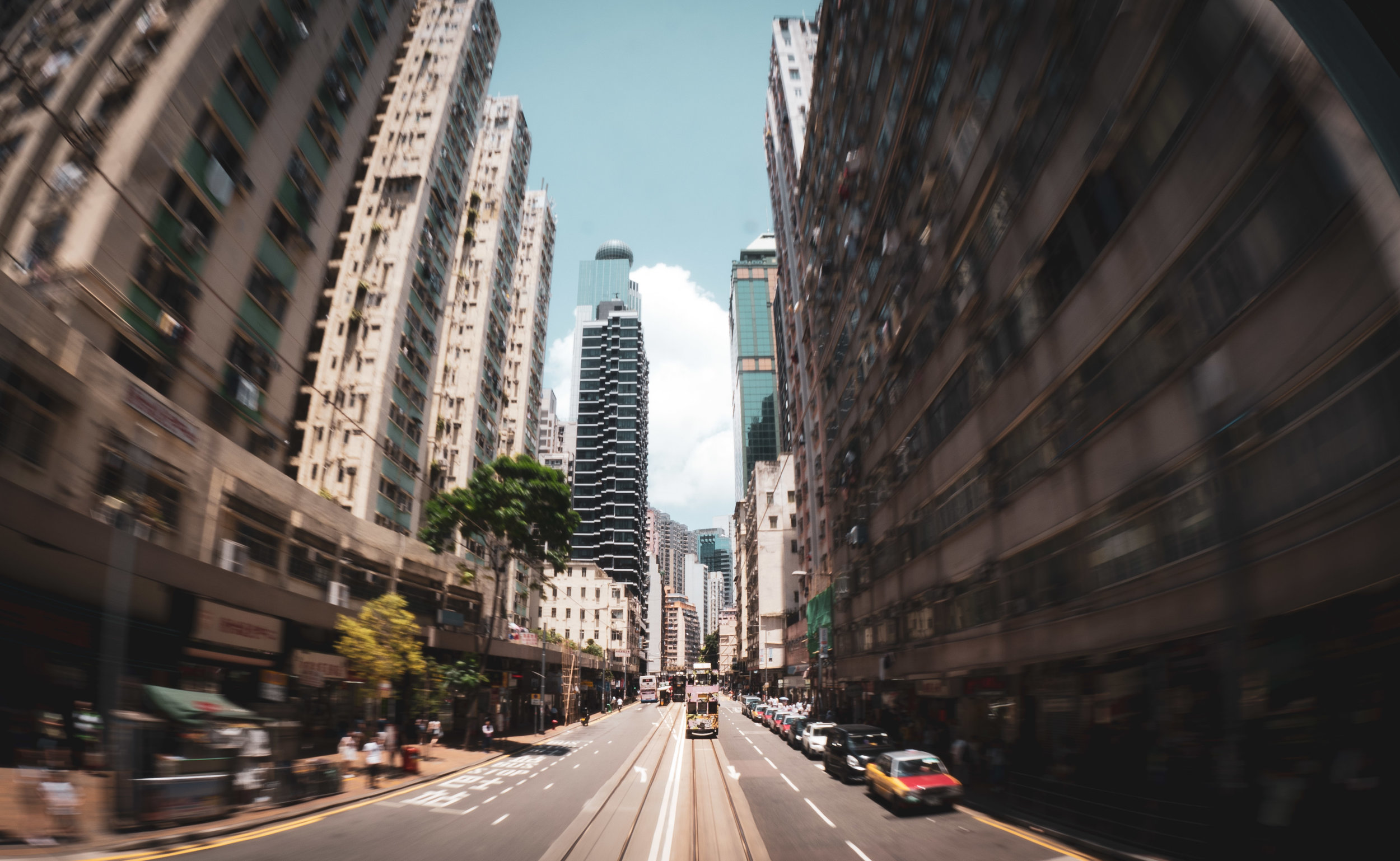
Double Decker Tram
Taken from the upper deck of the famous tram line running alongside the coast of Hong Kong island.
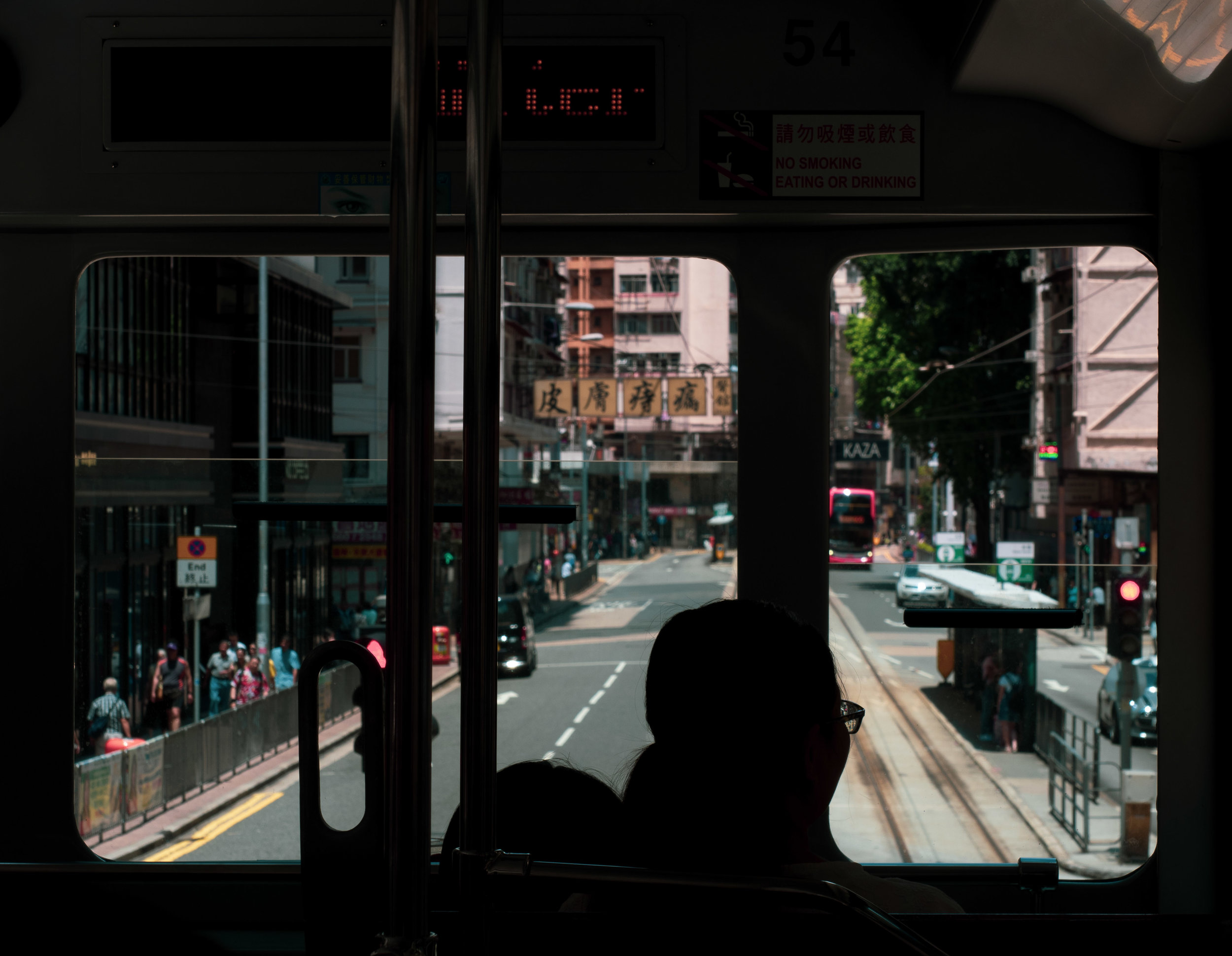
Views
A great and affordable way to explore the streets.
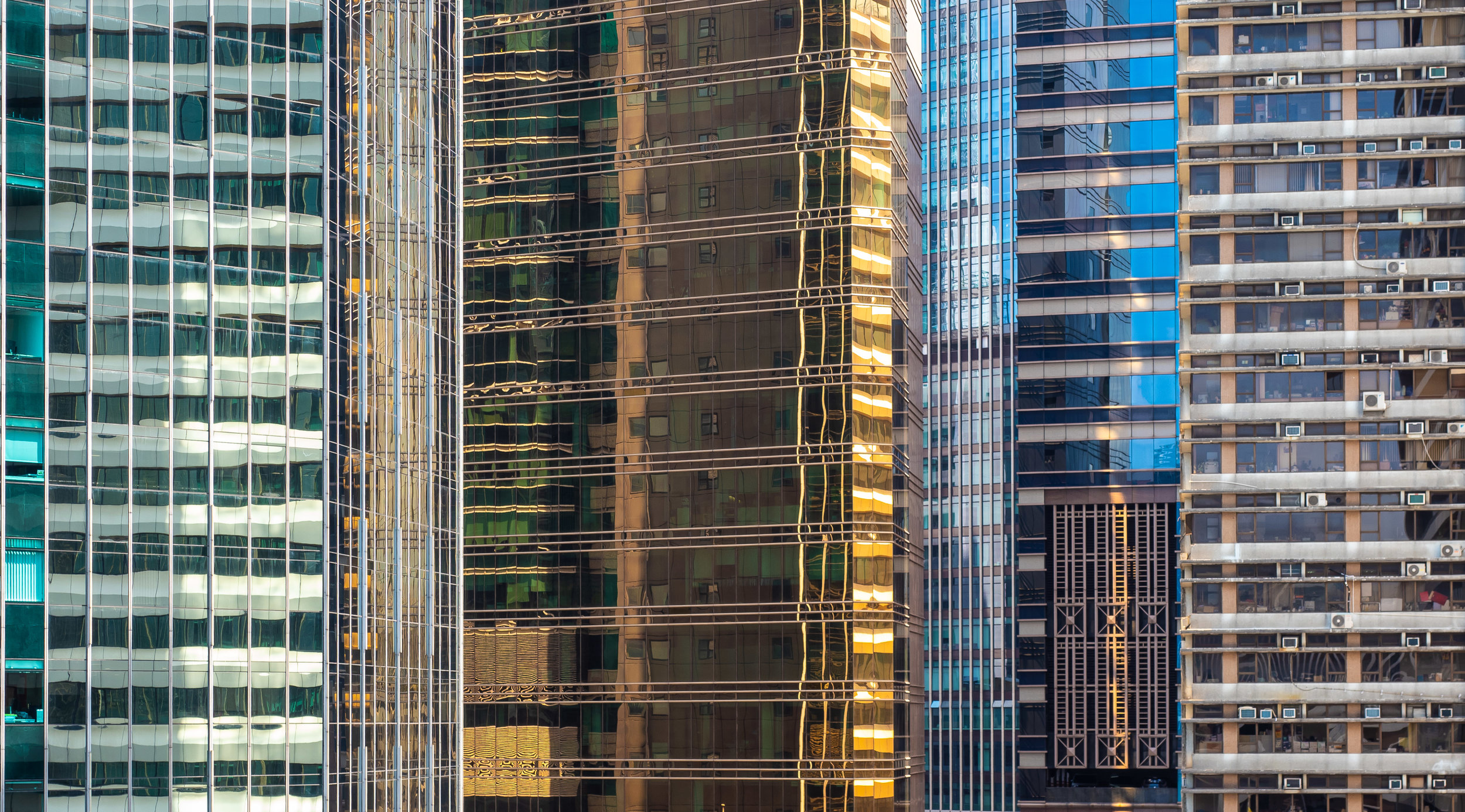
Urban Colours
Hong Kong's skyscrapers provide endless patterns.
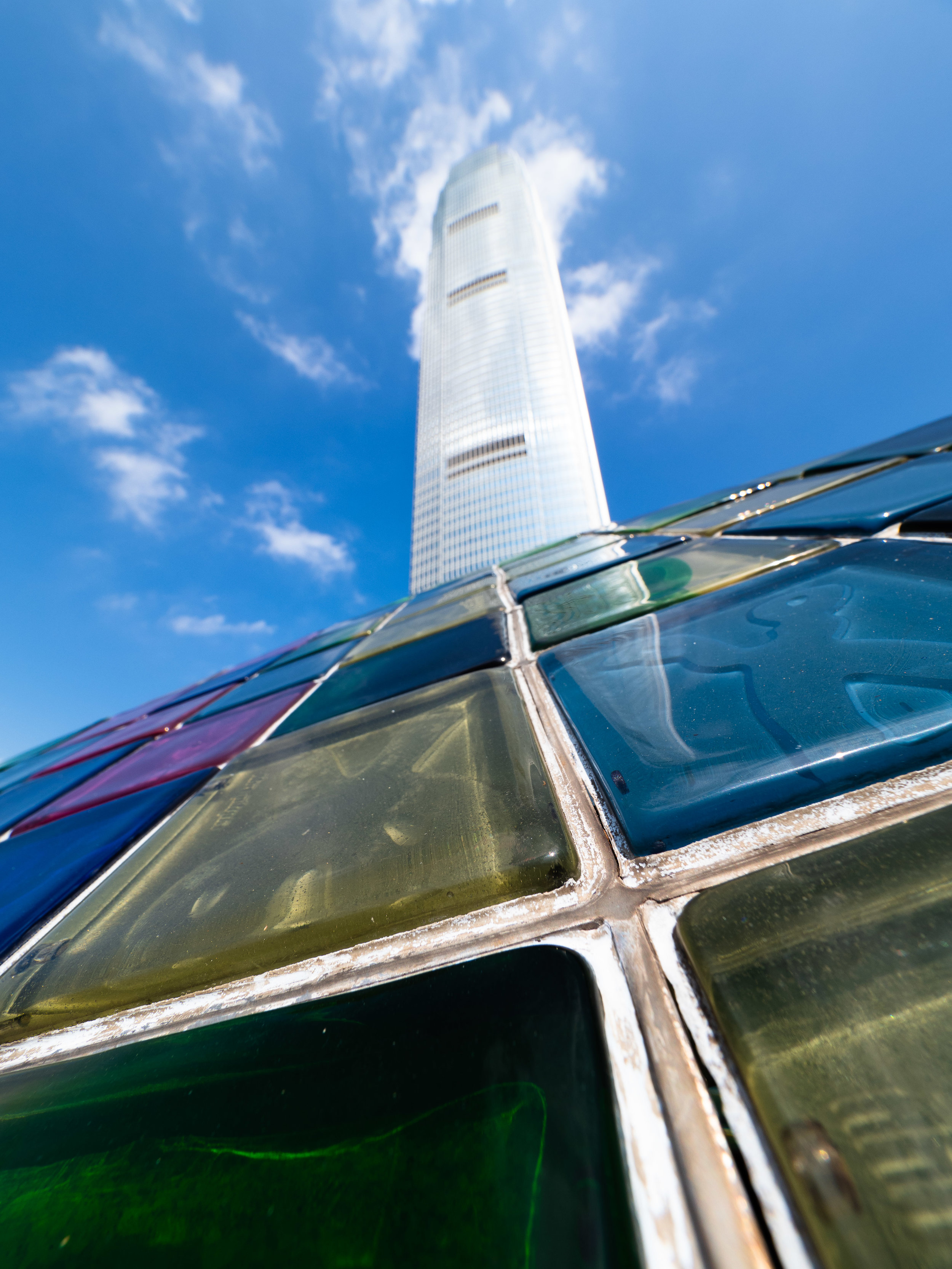
IFC ||
The IFC II Tower from the roof gardens of the IFC Mall.
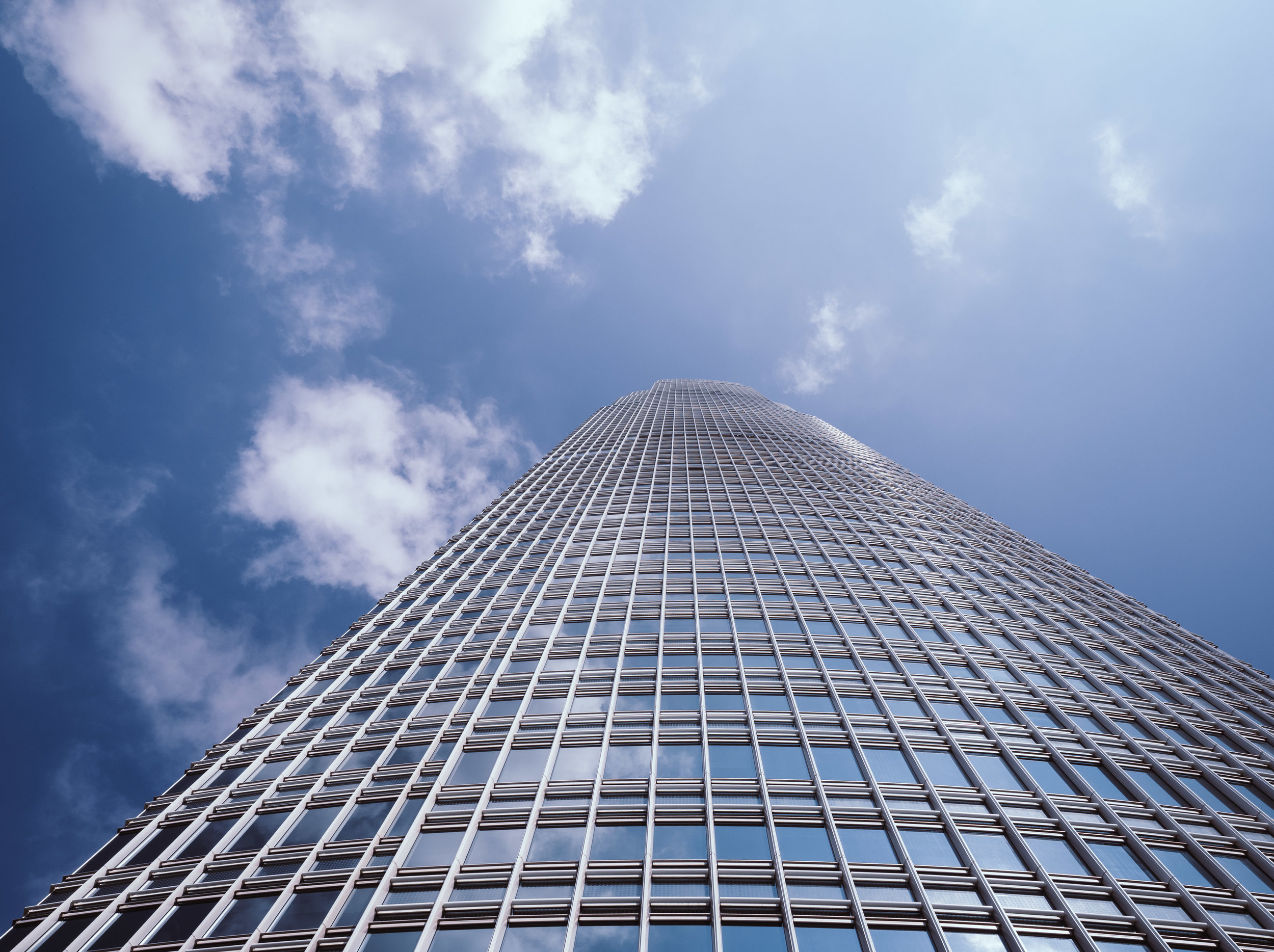
Soaring
While architecturally not as quirky as the Bank of China nor as sleek as the ICC, the IFC II tower remains the tallest building on Hong Kong island.
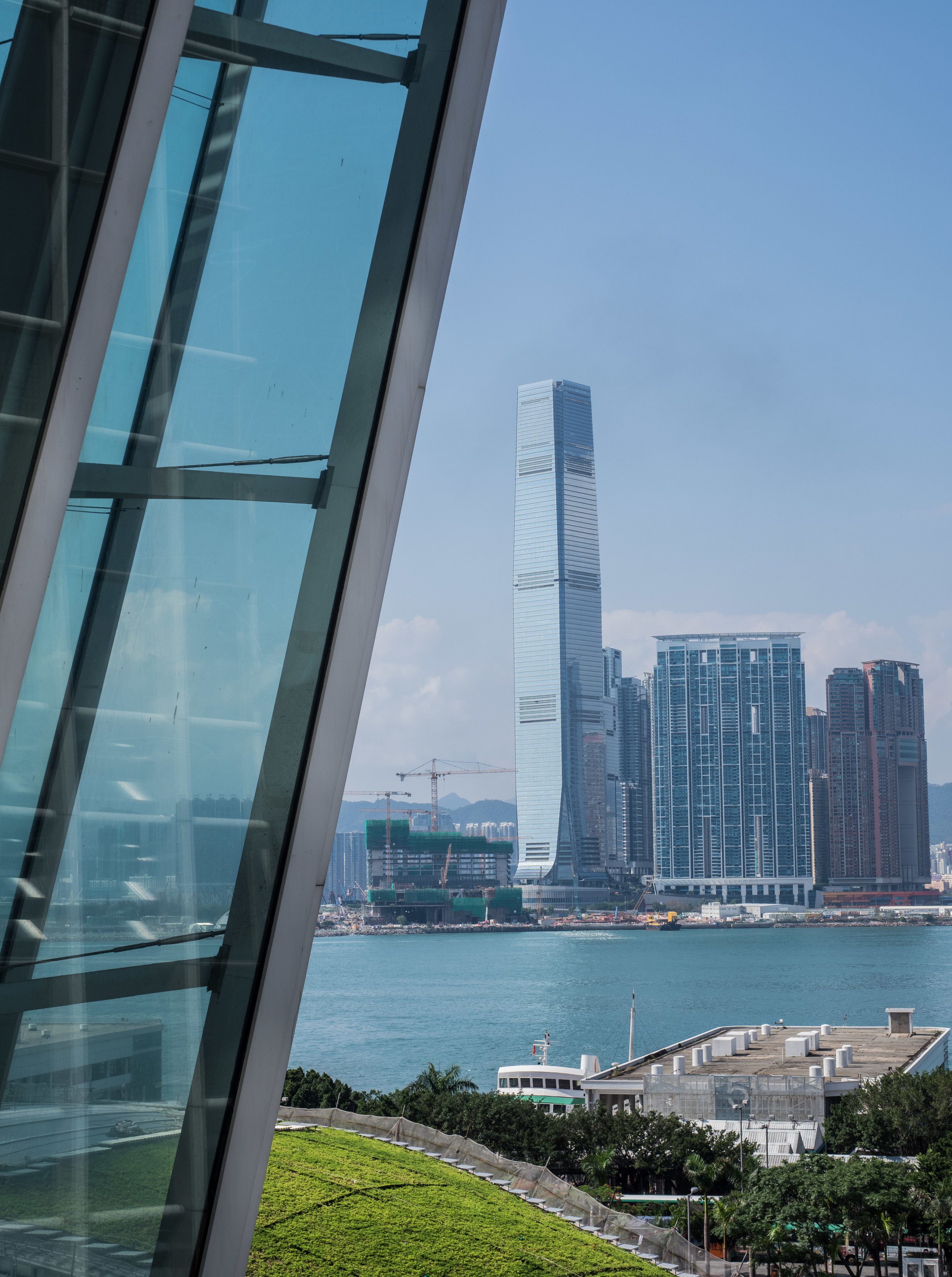
Big Brother
It's only outshone by it's neighbour across the bay, the ICC at 484m, now the 11th tallest building in the world.
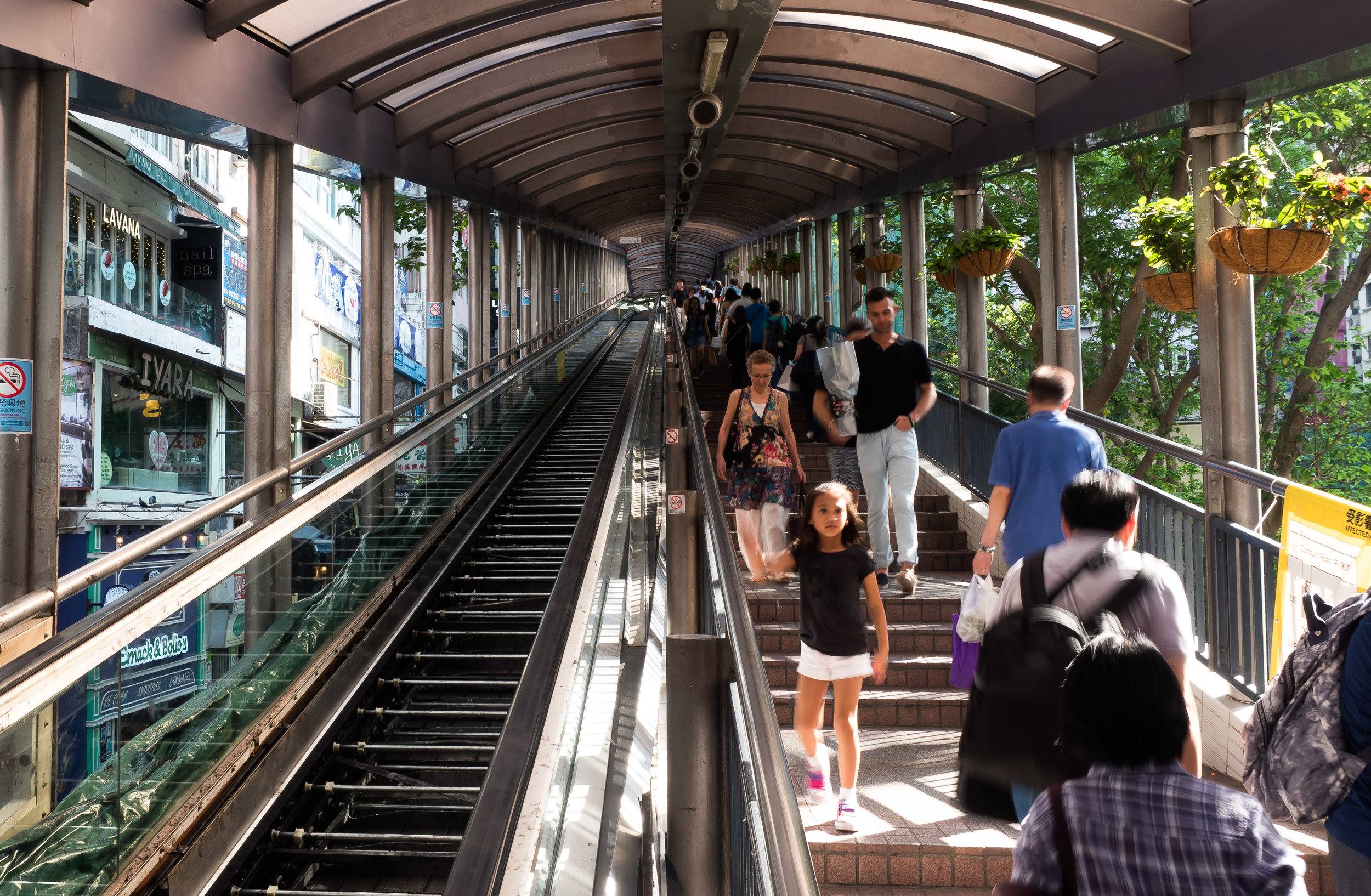
Central Escalator
The longest outdoor covered escalator system in the world takes you up slopes of Central - although a few parts are under renovation now, which will be ongoing until 2021.
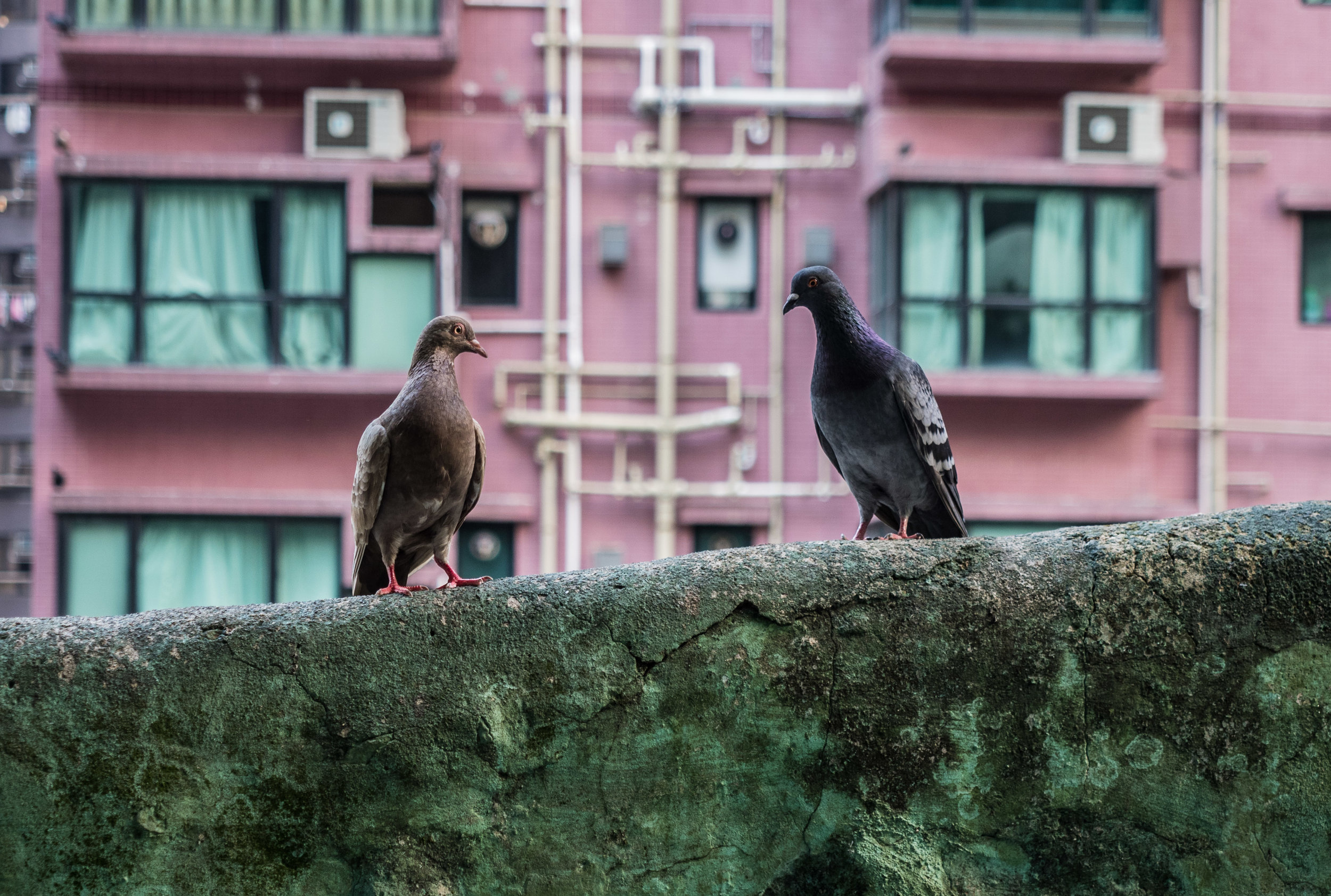
Couple
Spotted on the path up towards the Jamia Mosque.

Jamia Mosque
The mosque sits surrounded by high rises in muted tones, complemeting its soft green colours.
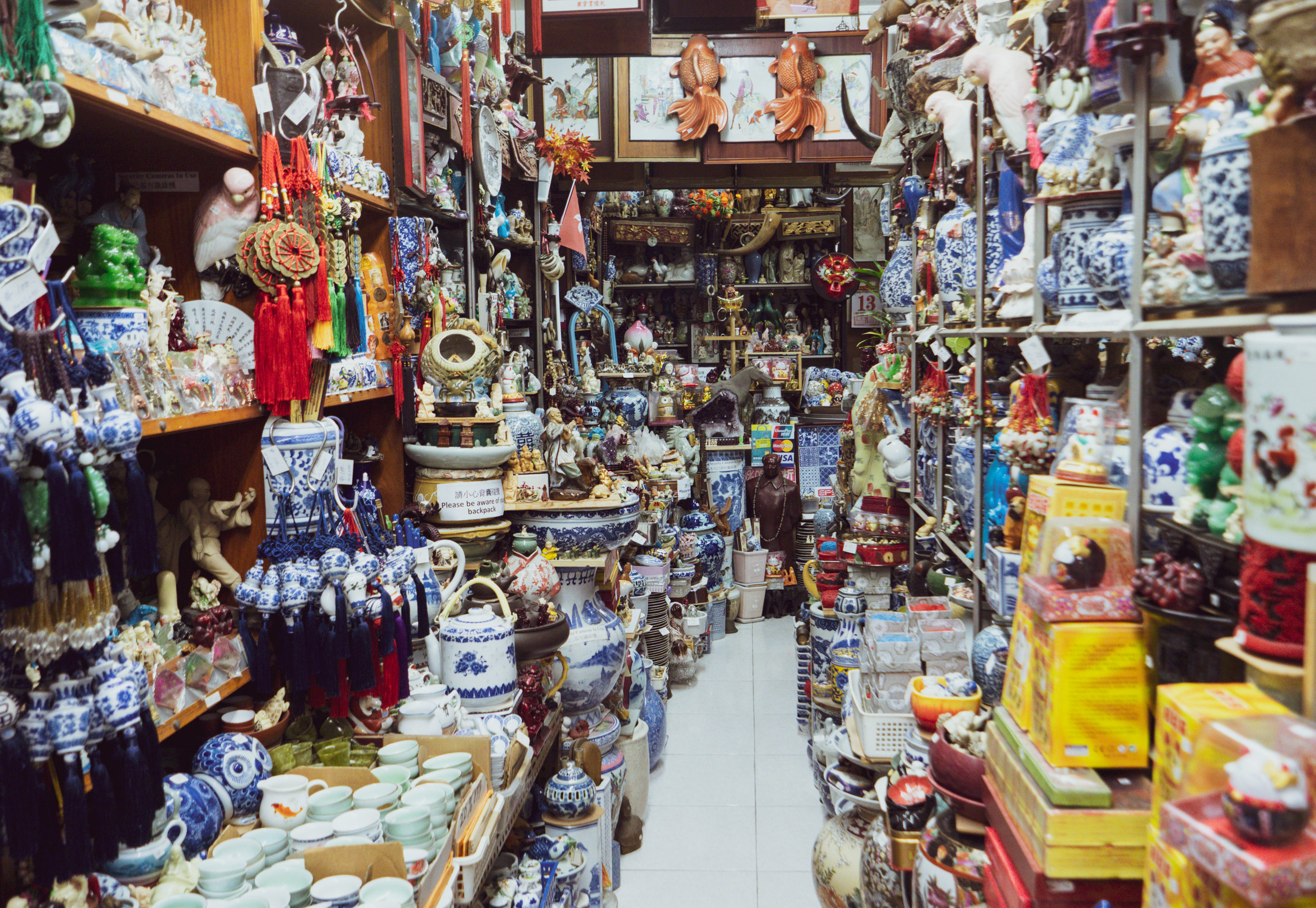
Porcellain
One of China's main historic exports.
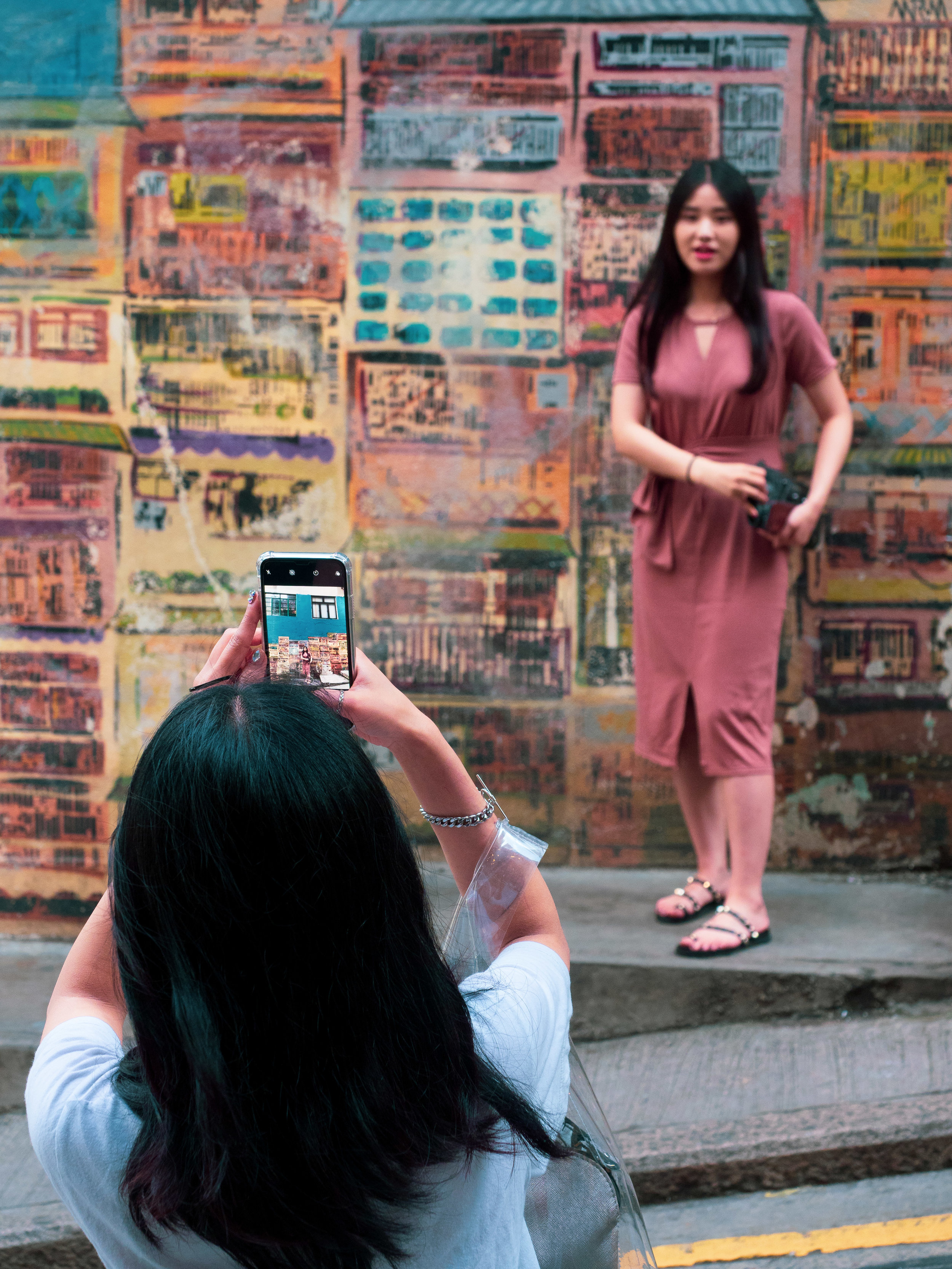
Instagram Hotspot
Another popular Instagram photo is the murals on Graham street - at any given time there'll be 5 or so people posing.
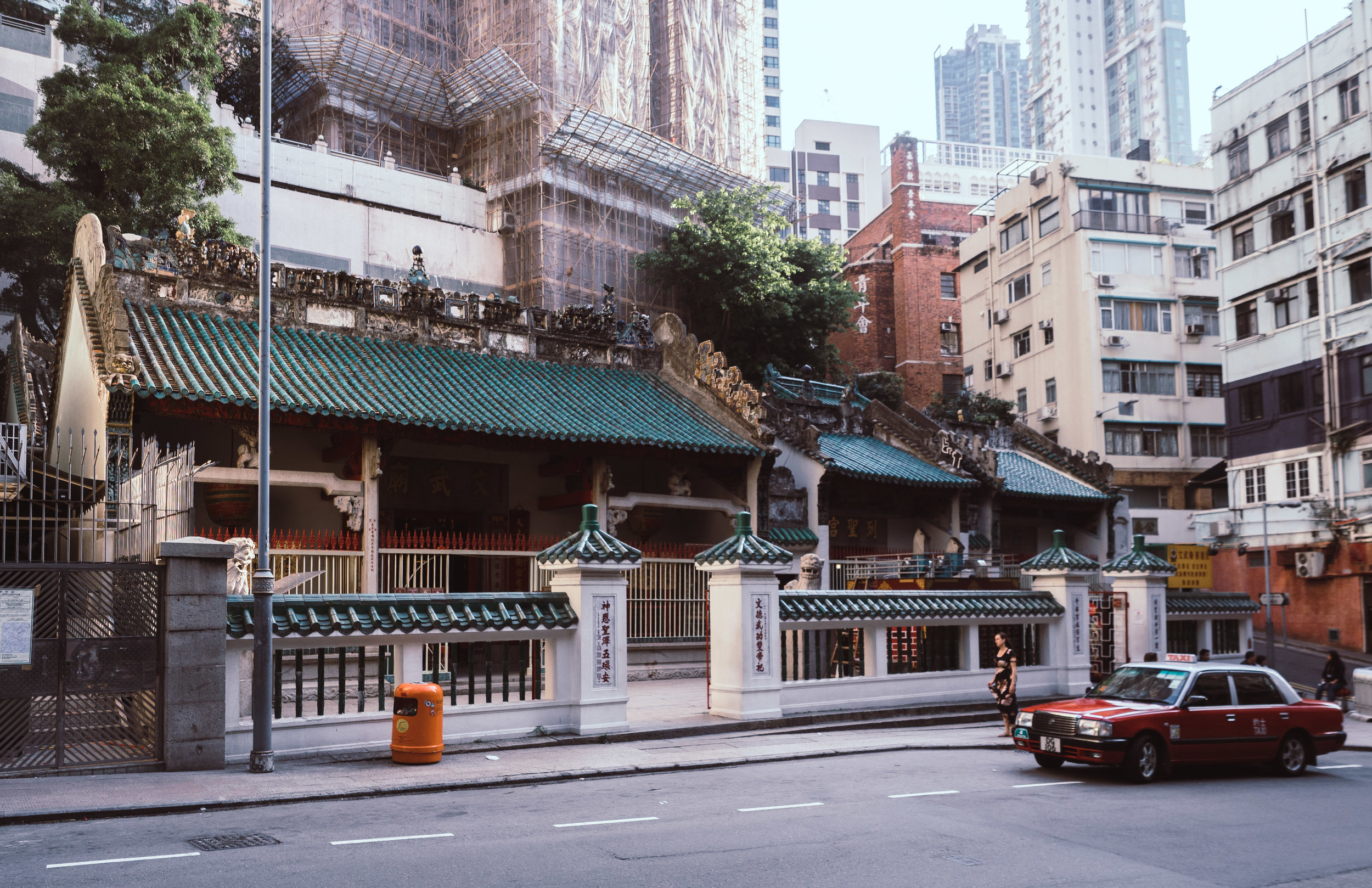
Man Mo Temple
One of the most beautiful temples in Hong Kong.
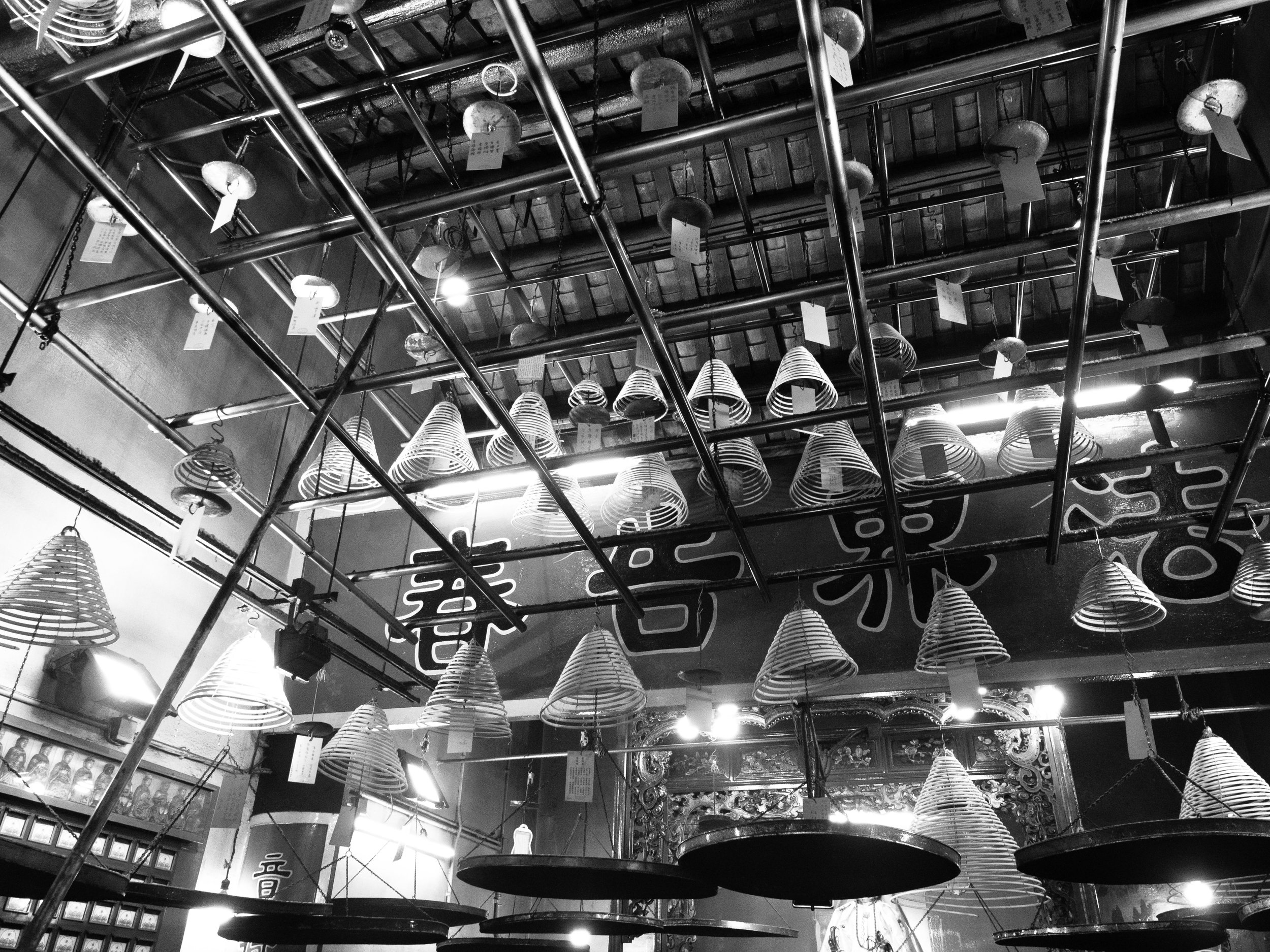
Closing Time
Unfortunately I only made it there shortly before it closed, so the members were busy cleaning up for the day and removed many of the incense spirals.
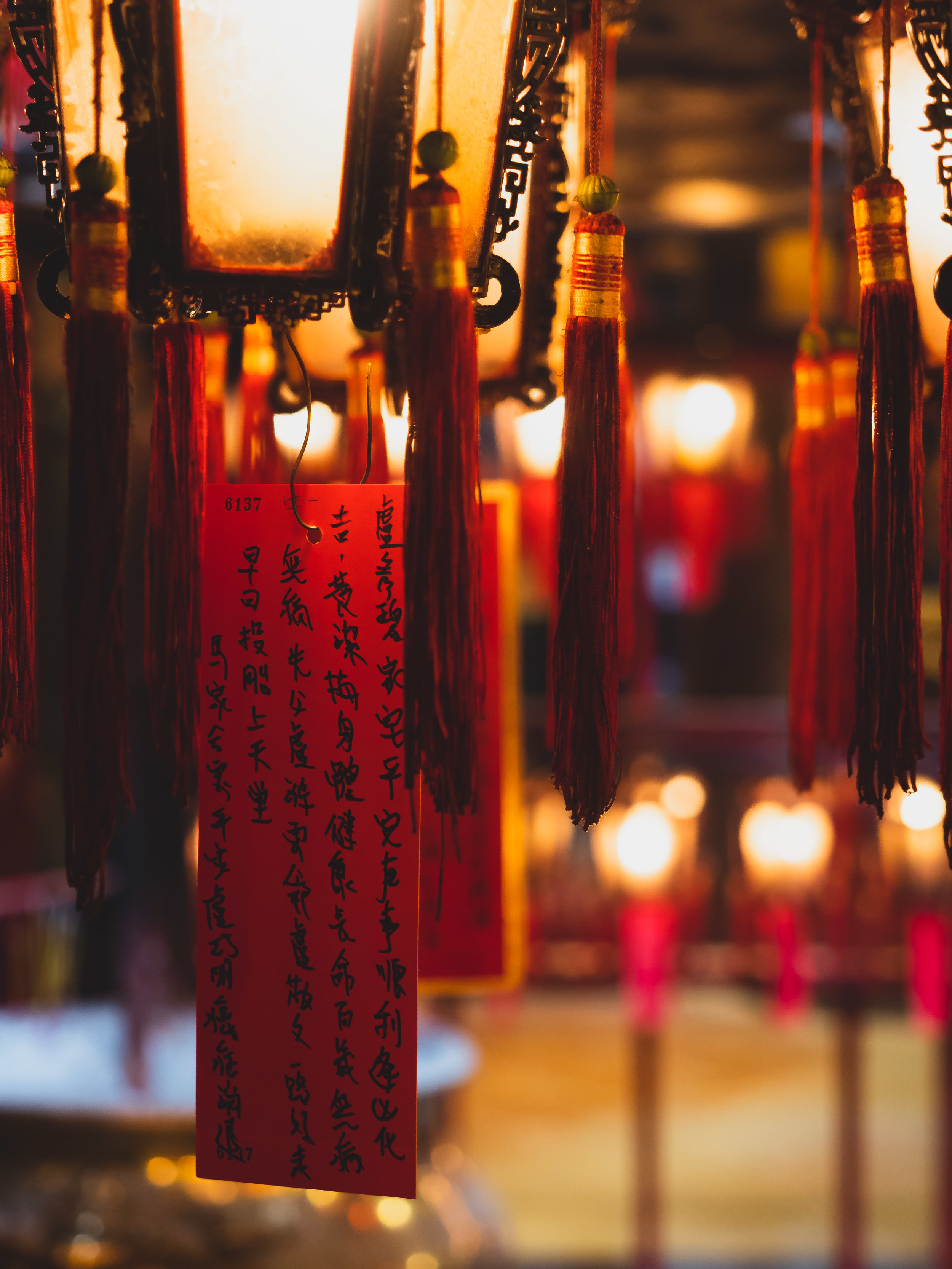
Who can translate?
And what are these for?
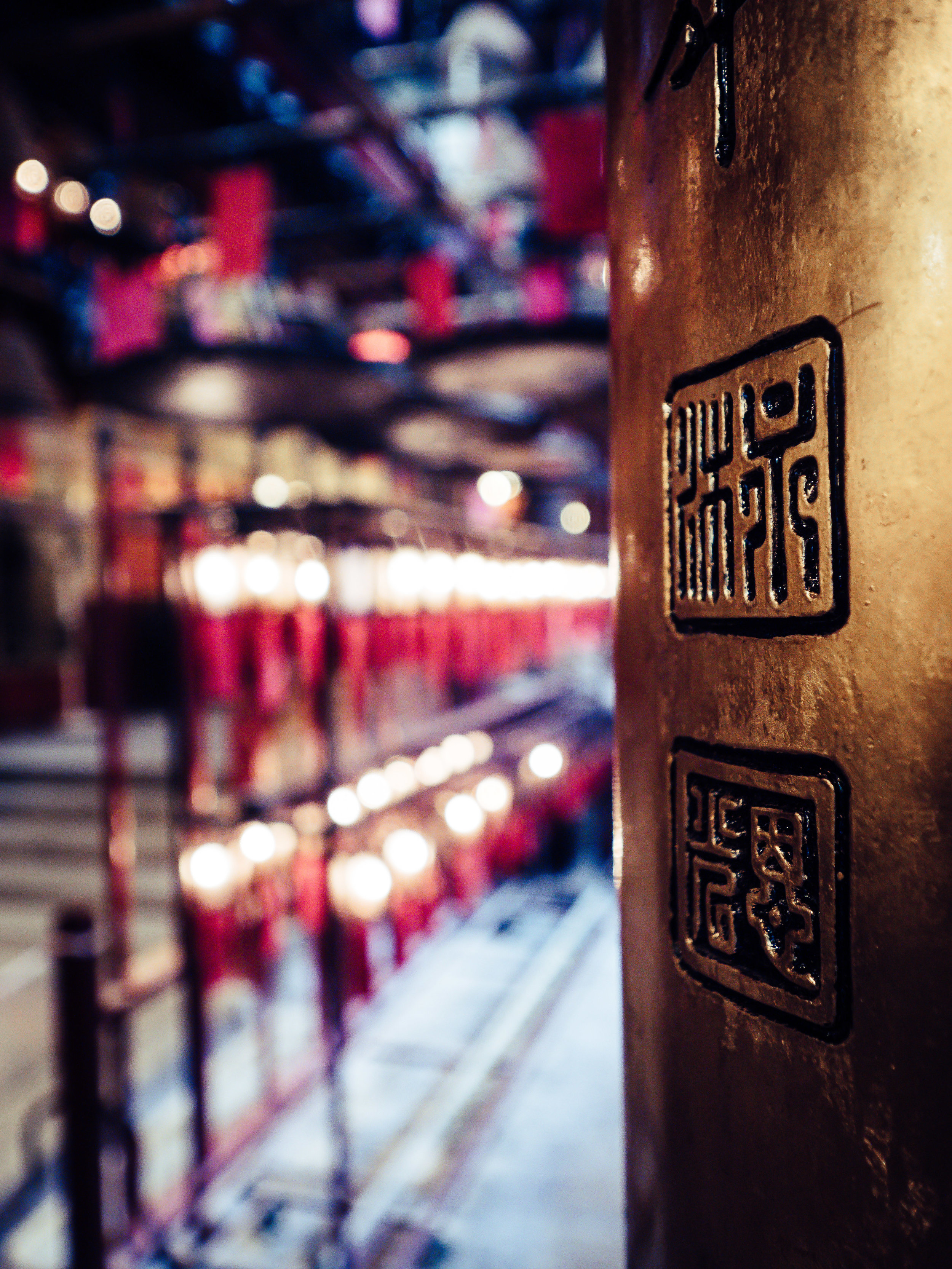
Detail
The temple origins from the 1800s.
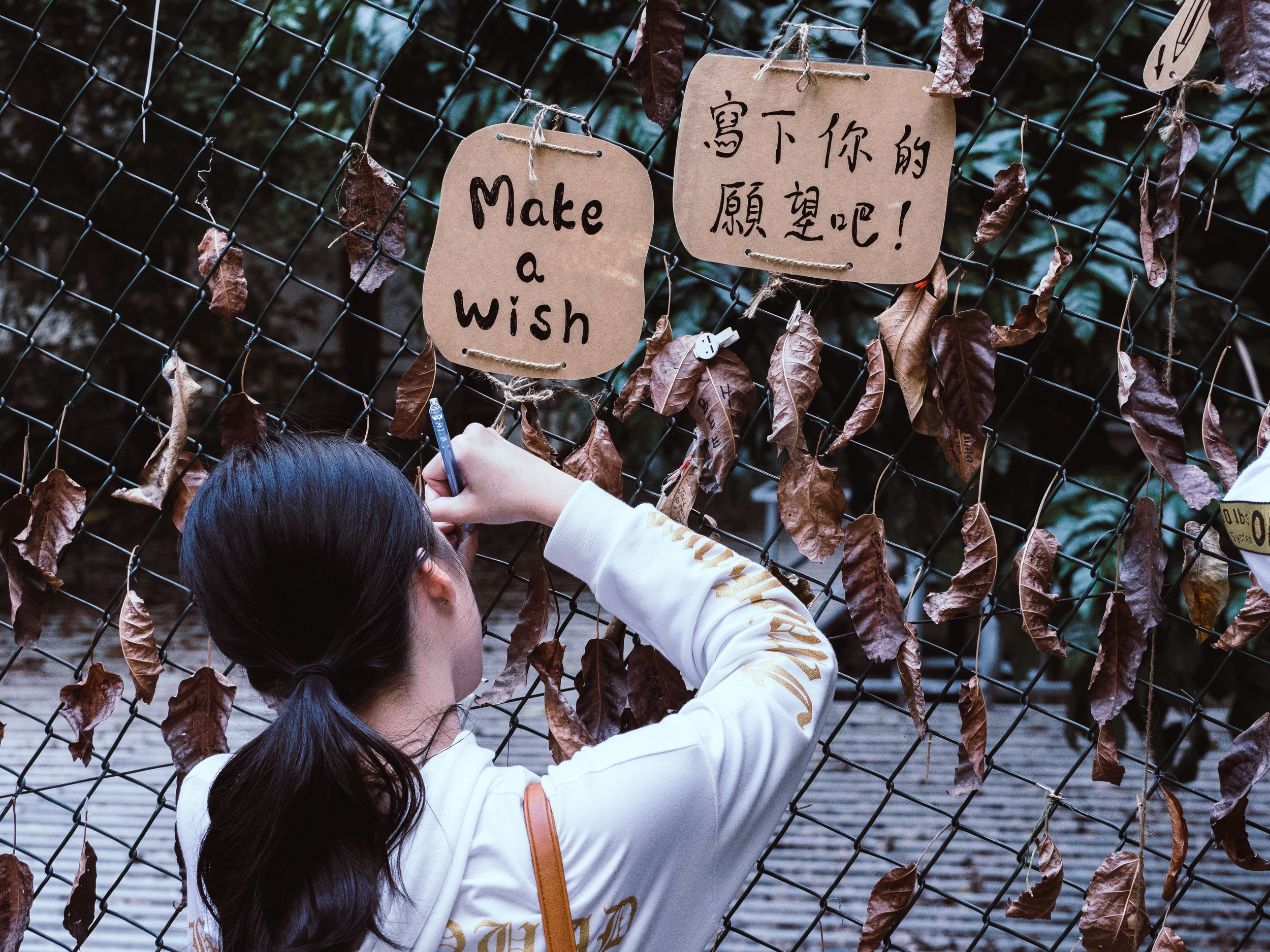
Wishful
Didn't take the chance to try this though.
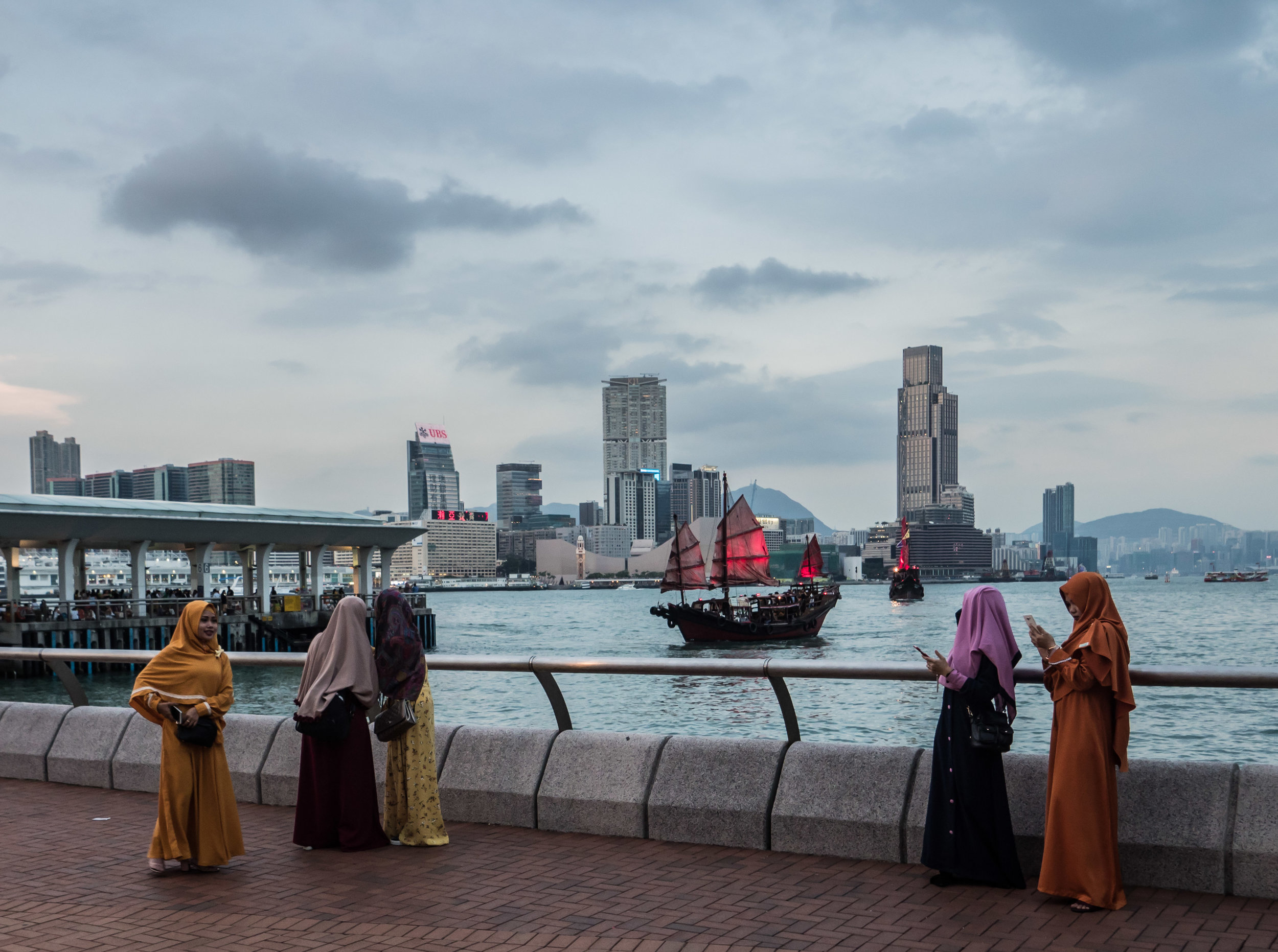
Diversity
While over 90% of the population are classified as ethnic Chinese, Hong Kong does feel diverse with global tourists and a large expat community,

The Hong Kong Wheel
At just over 60m it isn't particularly high, but does come with a good view over the bay.
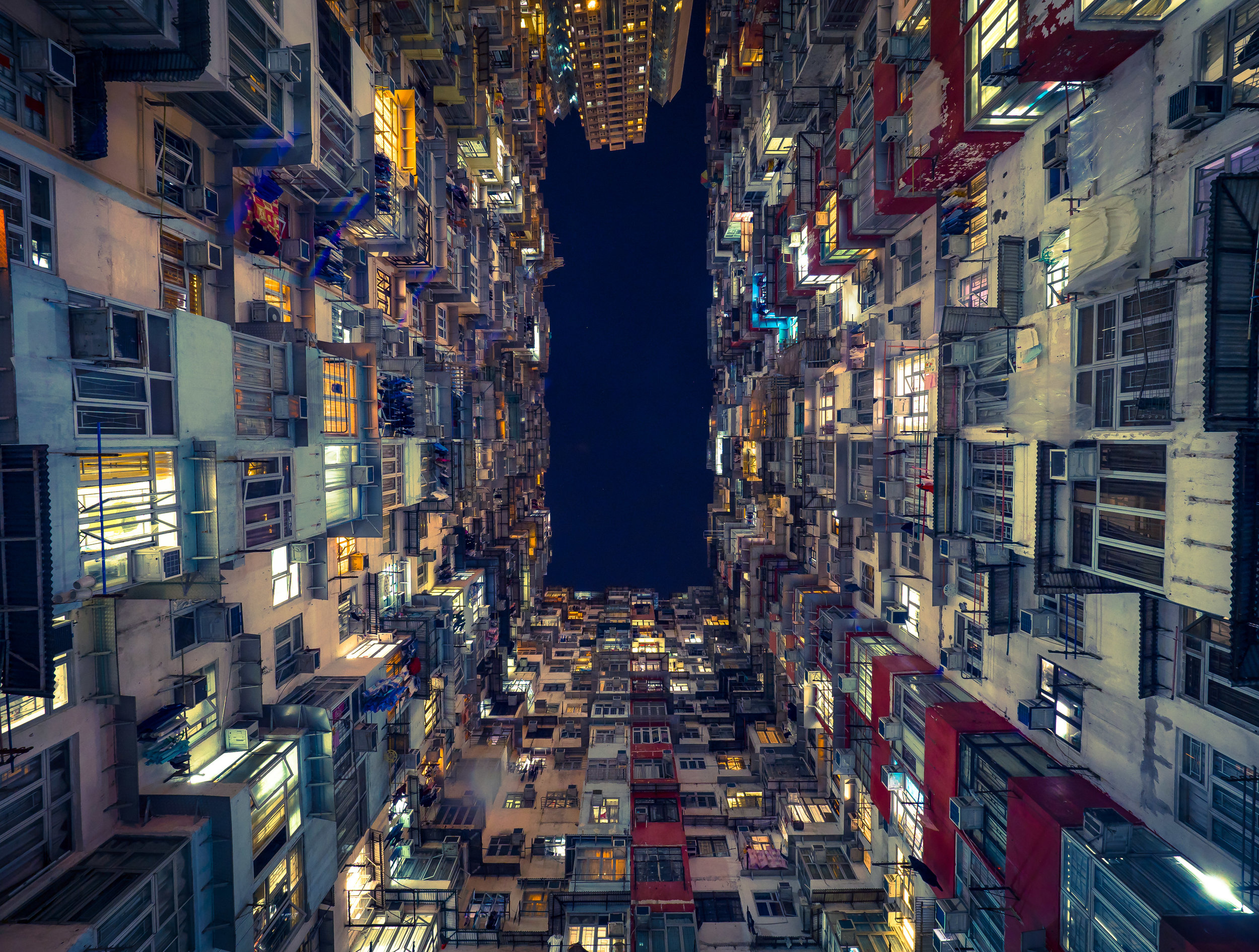
Walls
Another photography hotspot is the Fok Cheong building in Quarry Bay - it's easy to see why.
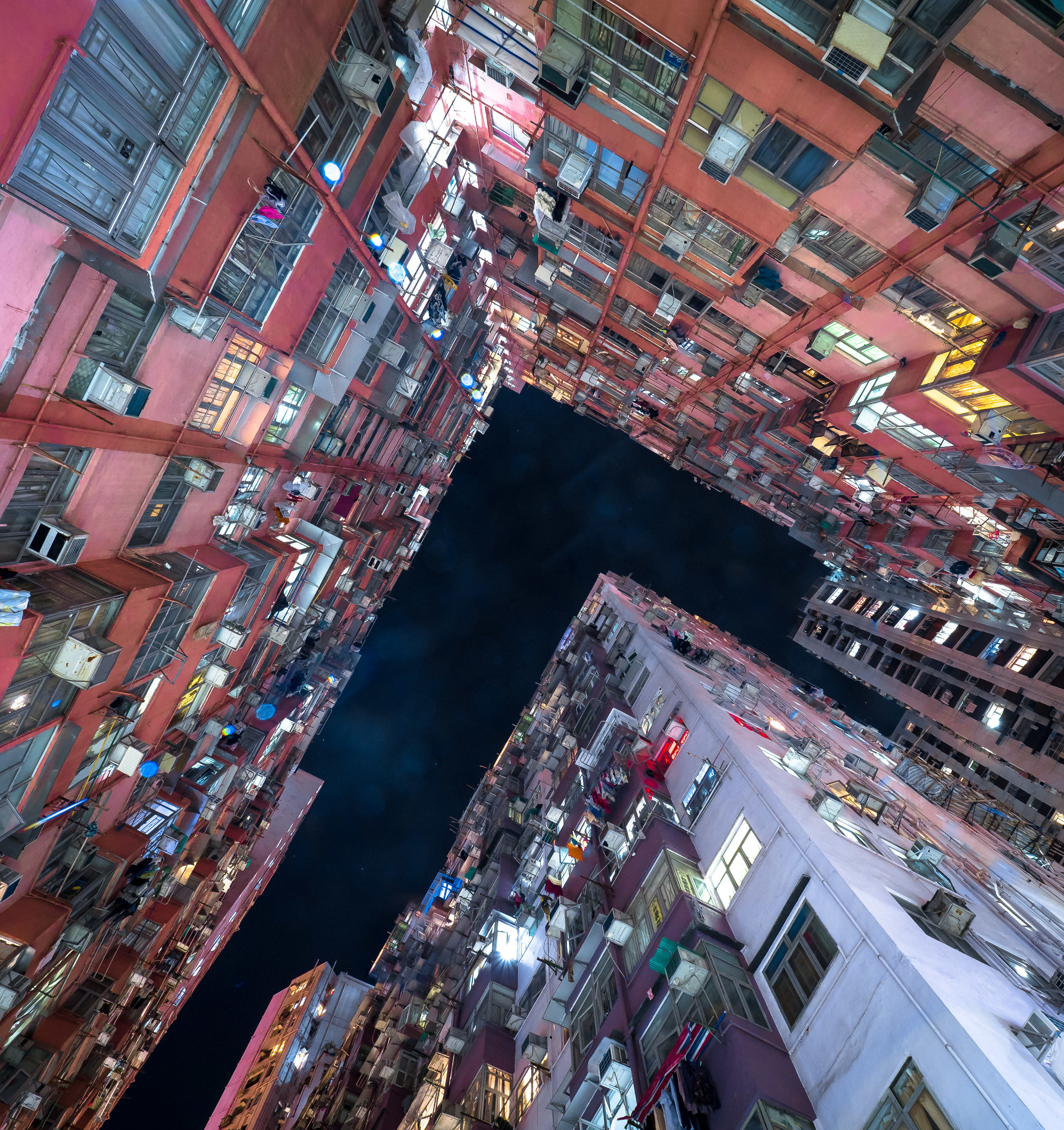
Pink Walls
Another opportunity for a shot that exemplifies Hong Kong's urbanity is the nearby Tak Lee building.
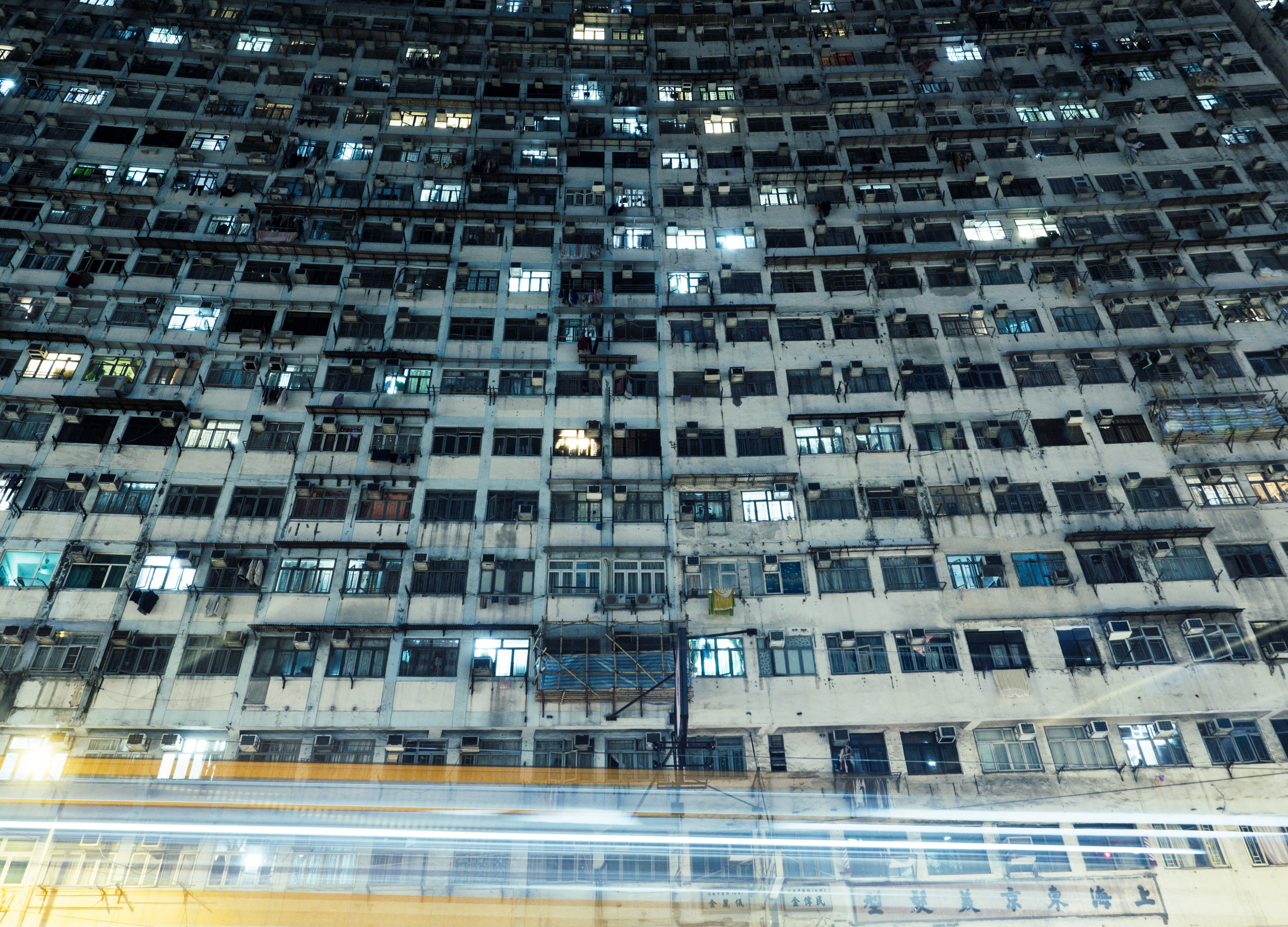
Wall of Windows
The scarcity of land and the need for residential units has resulted in densely built mass housing projects, such as this one.
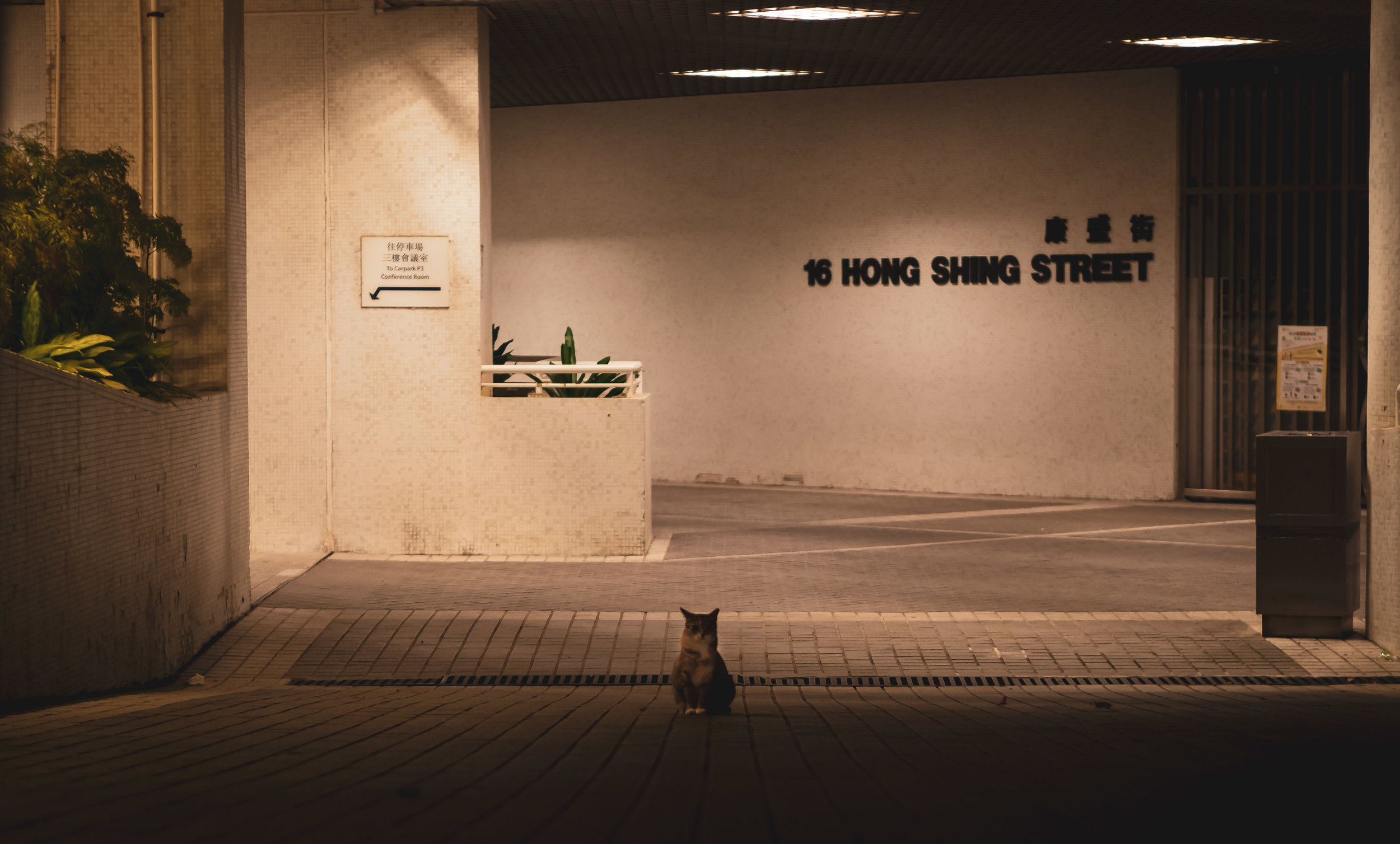
The True Ruler
Of 16 Hong Shing Street.
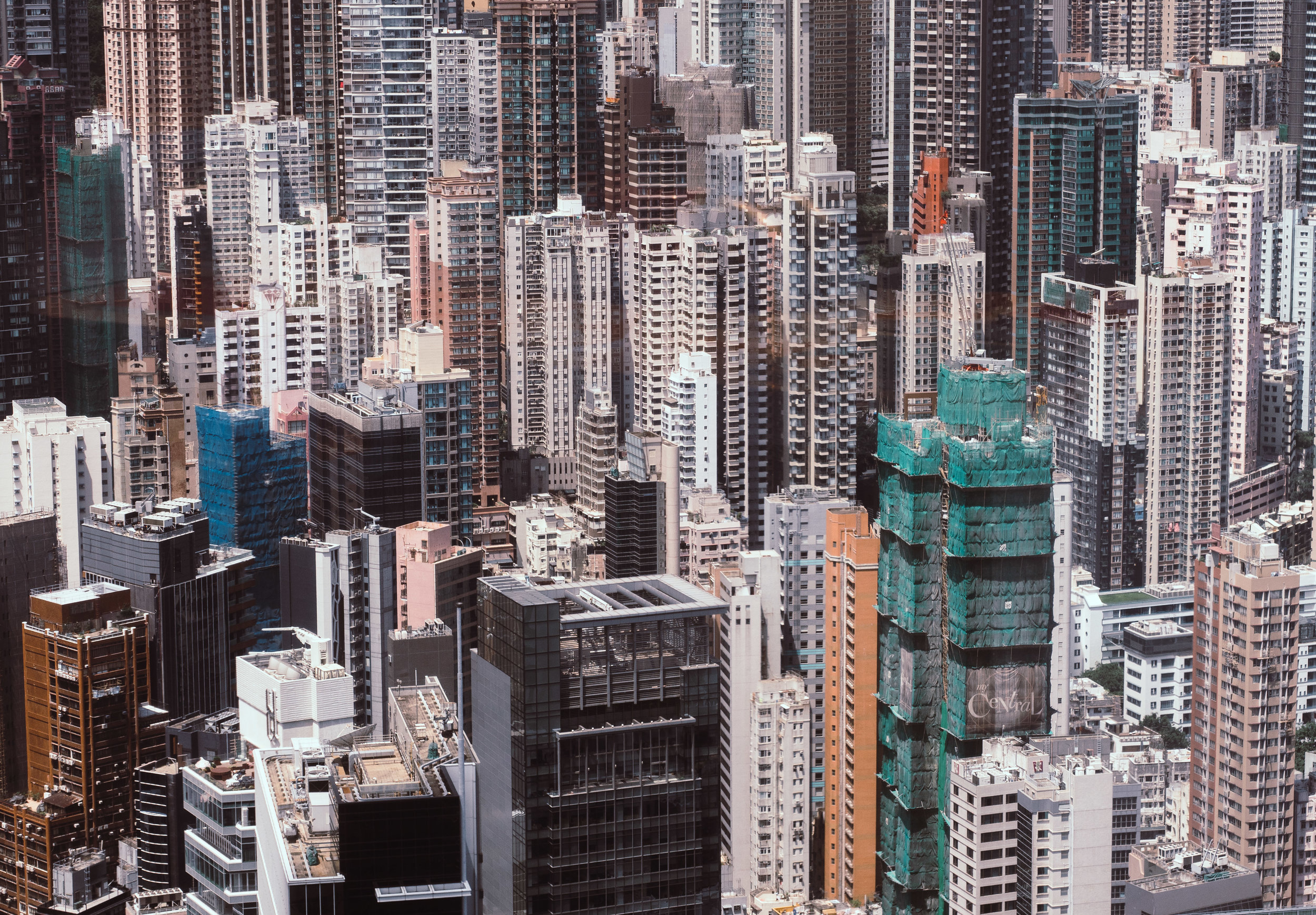
Density
Taken from the Hong Kong Monetary Authority educational floor in the IFC, which offers some good (and free) views, albeit with a lot of window reflections.
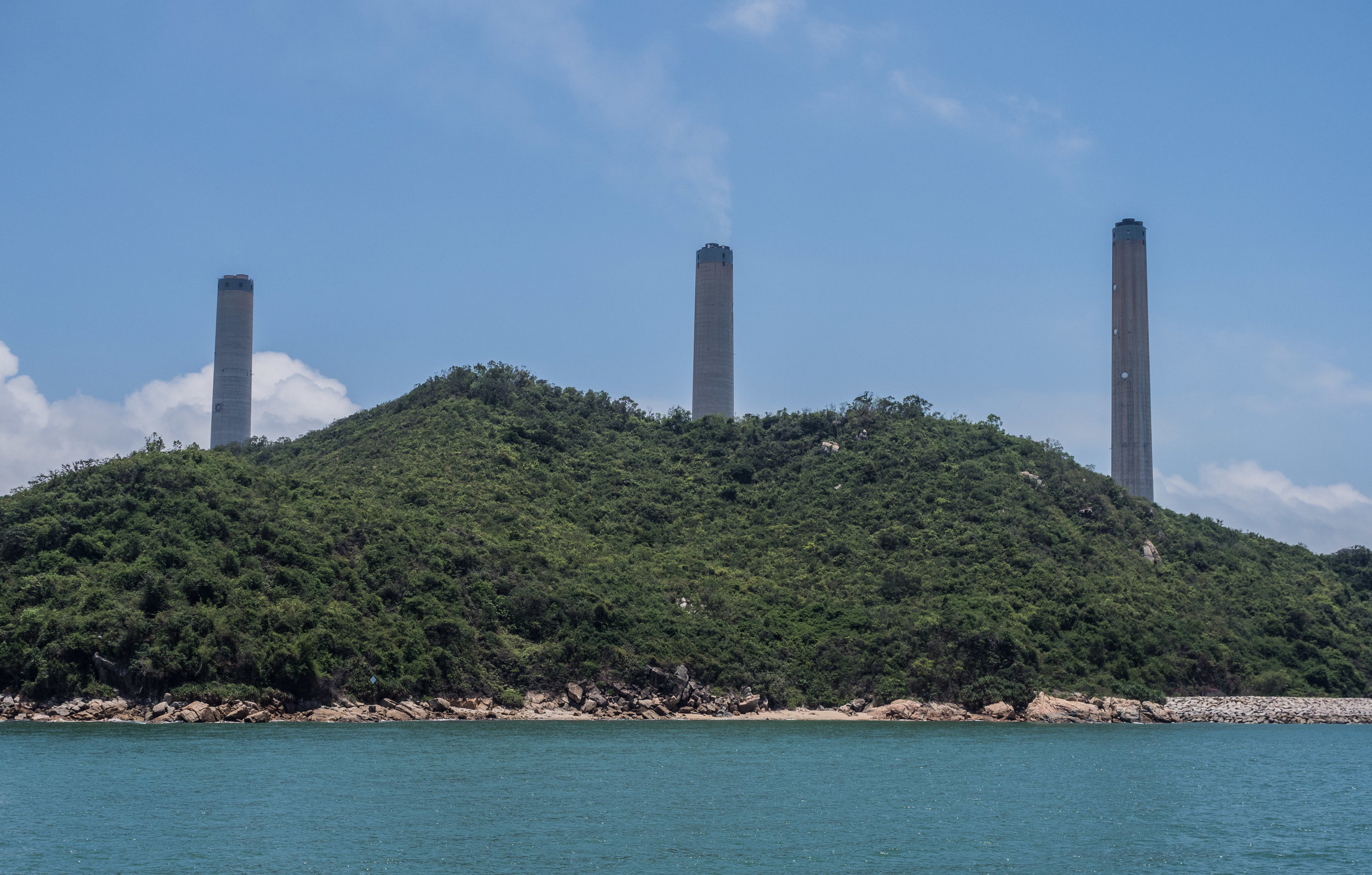
Lamma Island
... greets you with the view of the three chimneys of one of the largest power plants in Hong Kong.
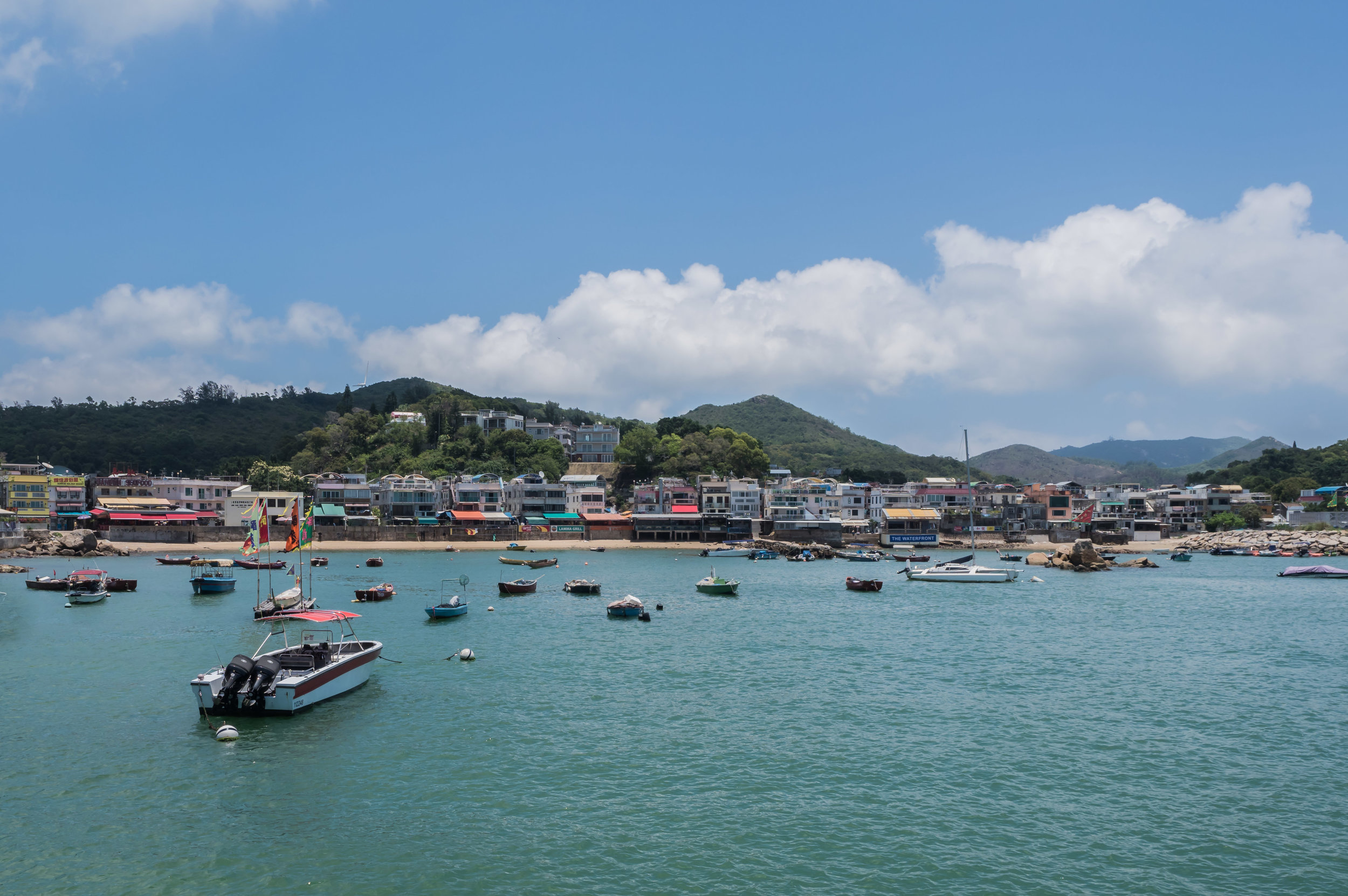
Harbour
Looking past that though, the island offers a few nice beaches and quiet villages with restaurants offering fresh sea food, just 20min from Hong Kong island.

Car Free
There are no cars on the island, resulting in a bike centered mode of transport.
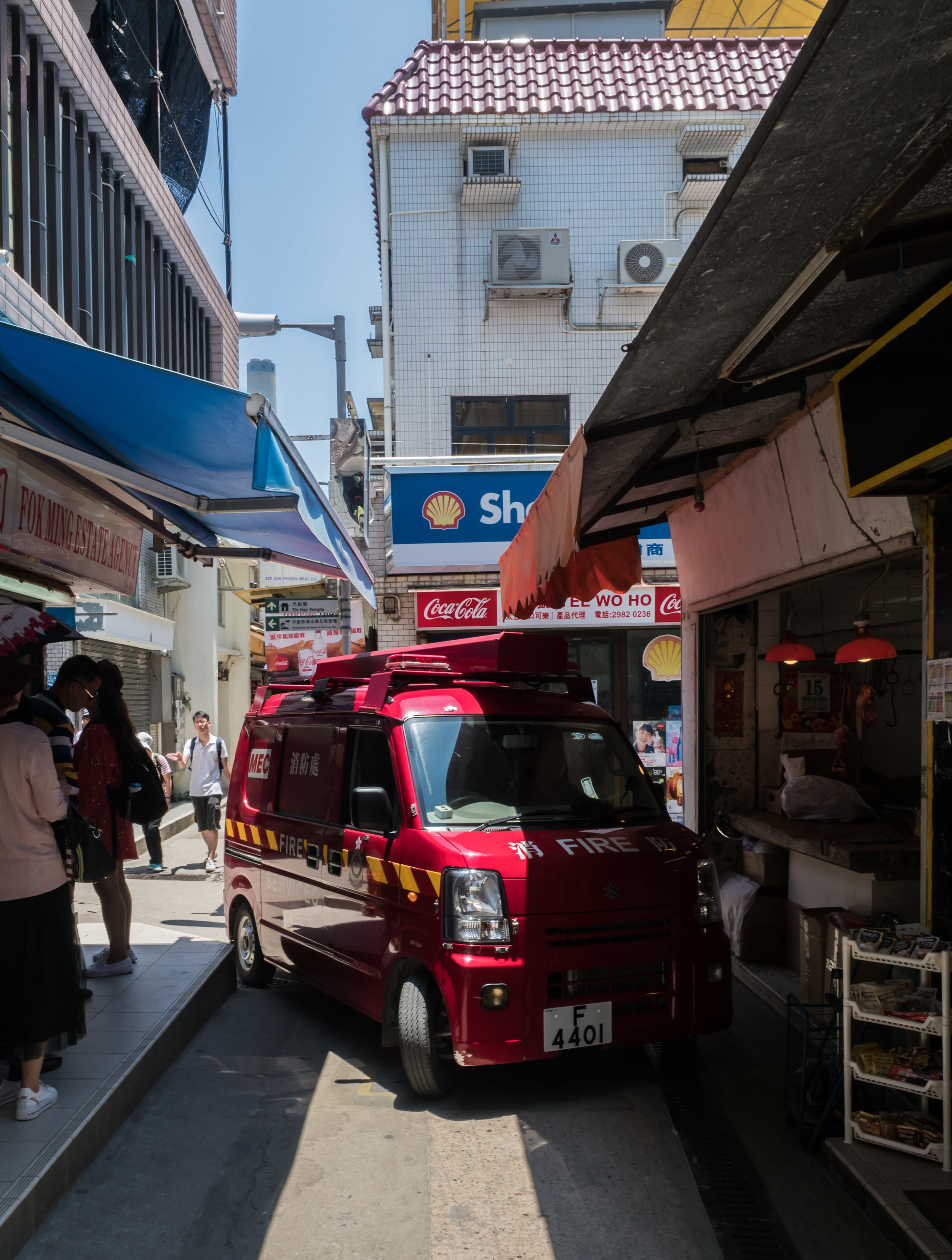
Wait!
Did I say car free? They do have some type of cars.
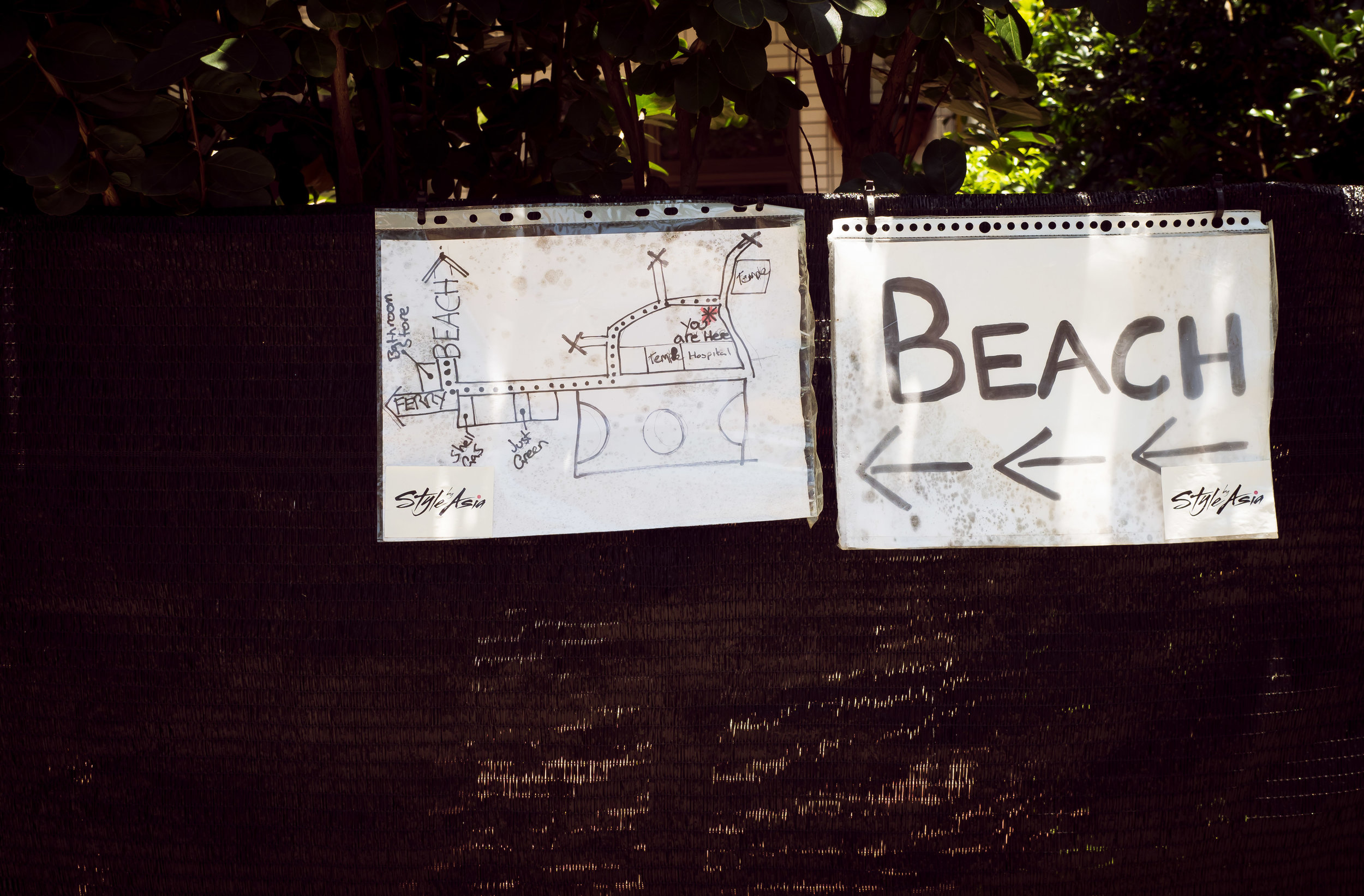
Signage
Simple and personal.
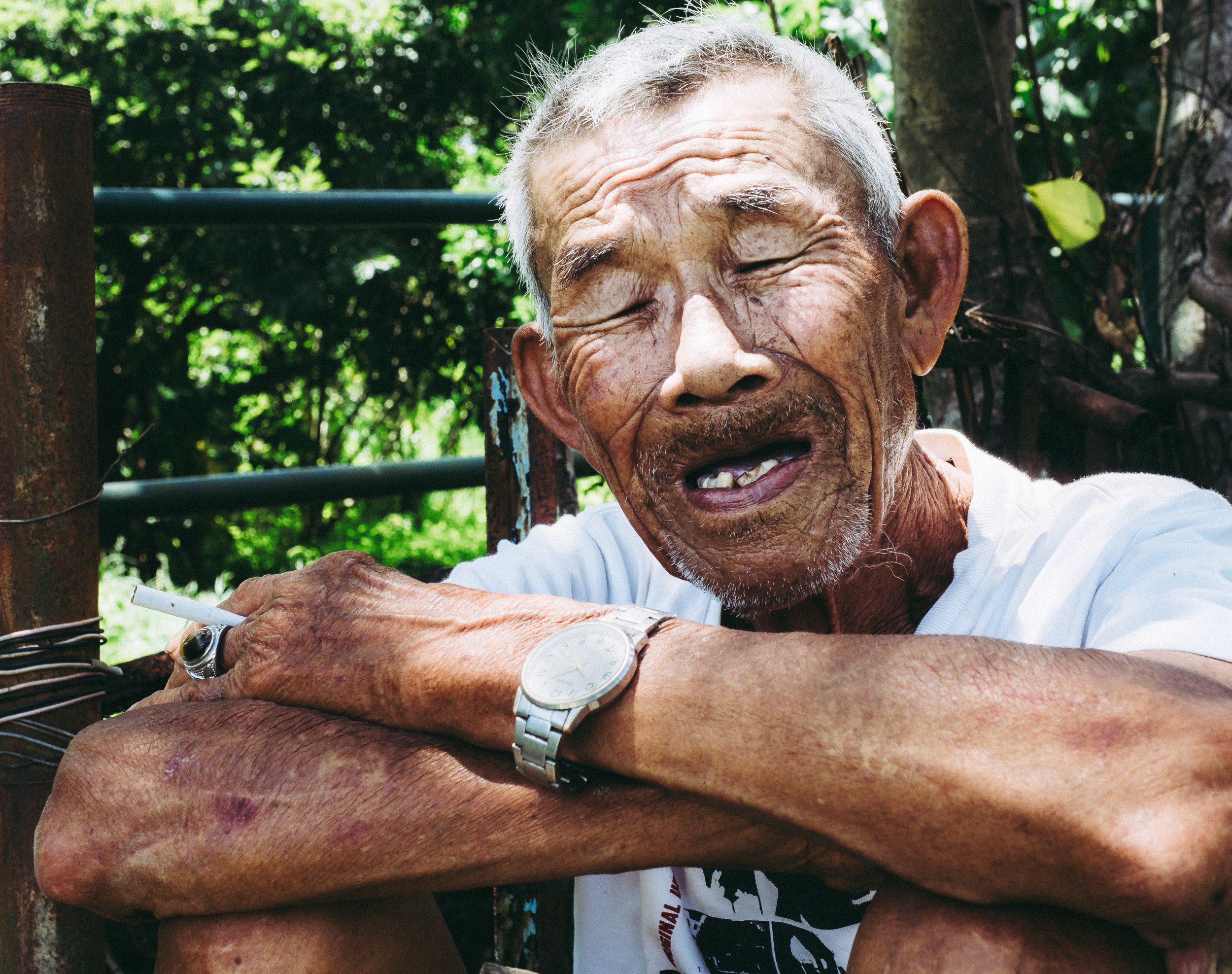
People
And so are the people - this farmer had a lot to tell, although I didn't understand a word.
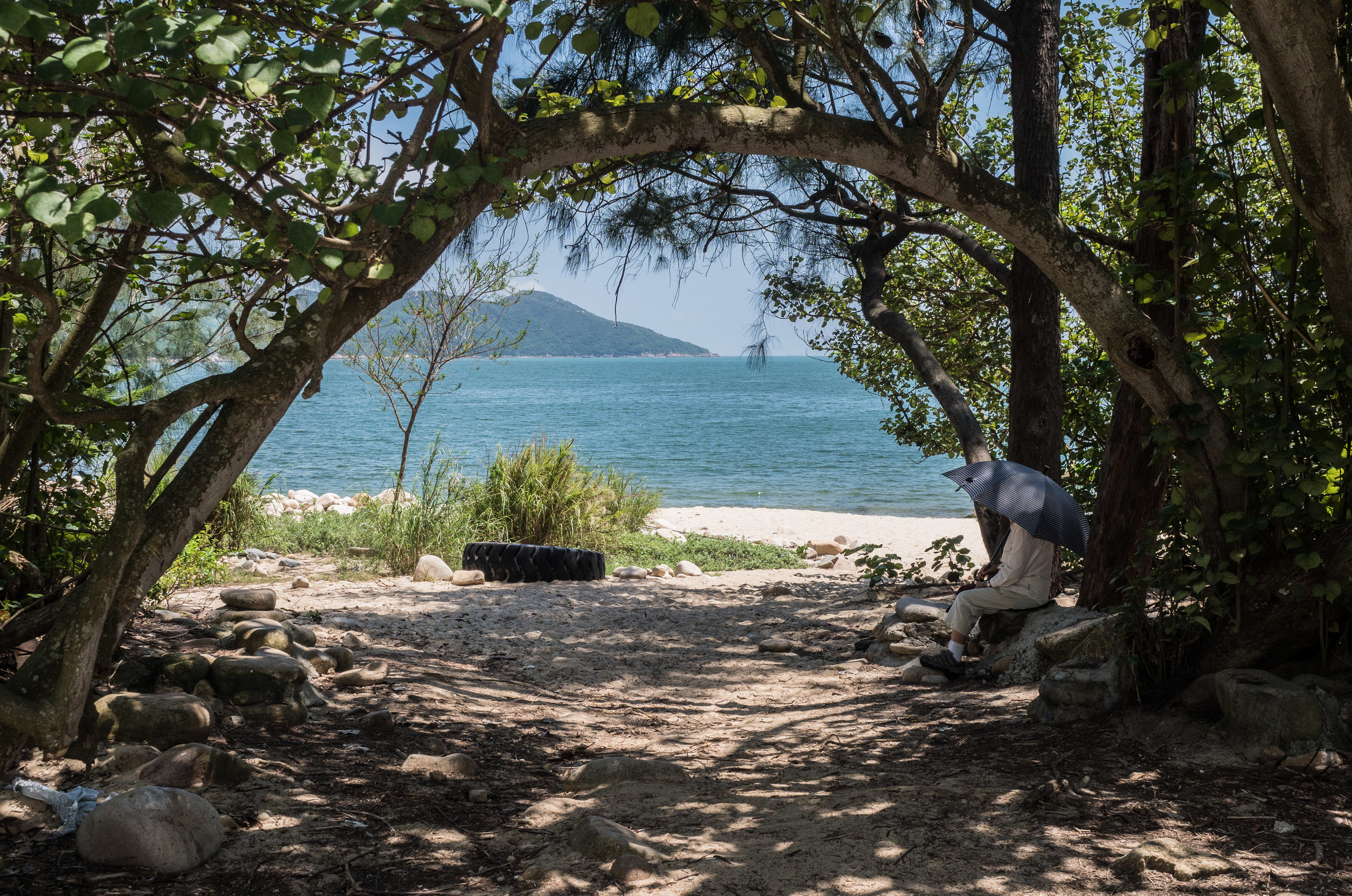
Views
A tourist enjoying the shaded views of the beaches at Lamma island.
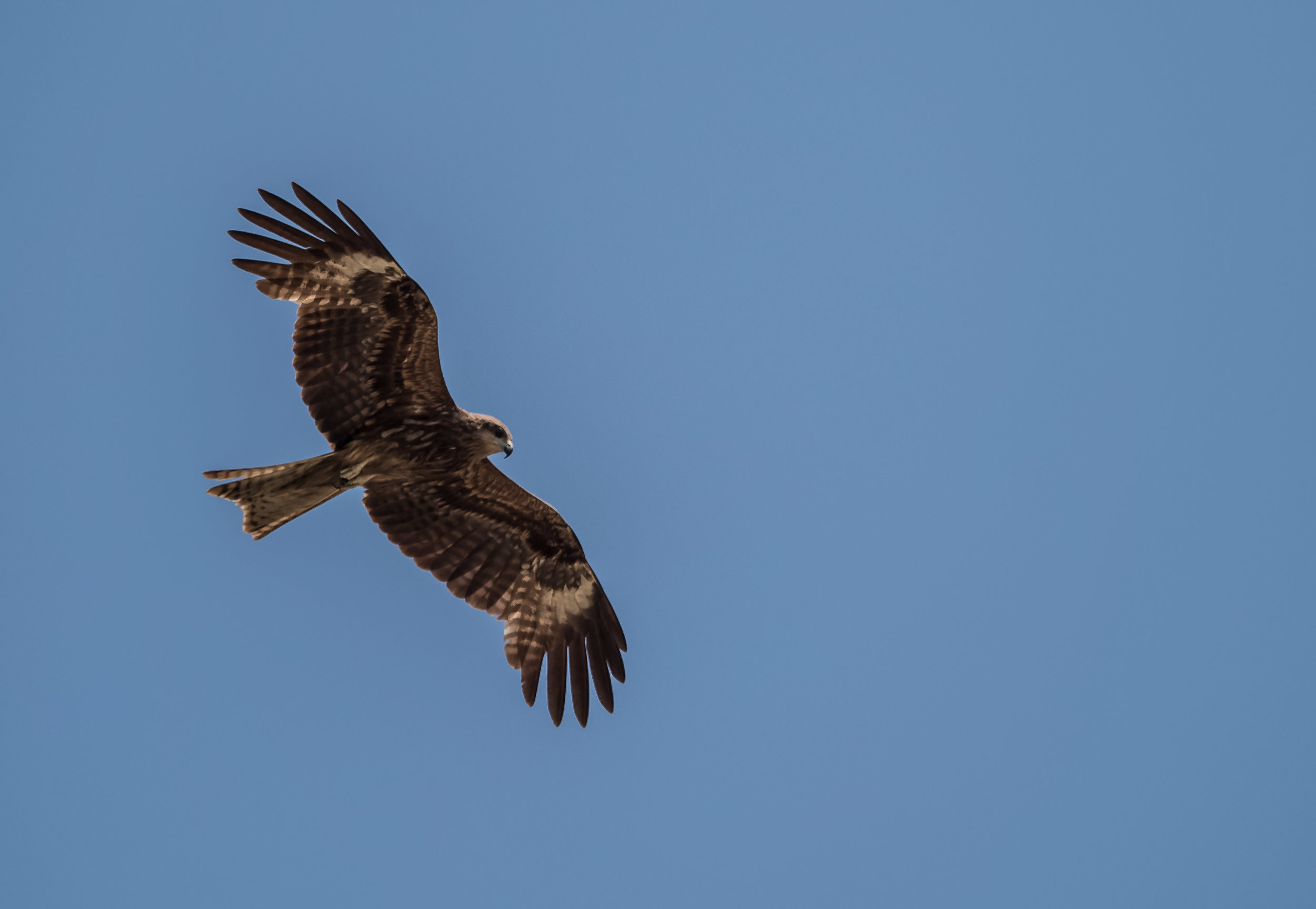
Flying
Ornithology certainly isn't one of my specialities - what kind of bird is this?

There is indeed!
Favourite animal.
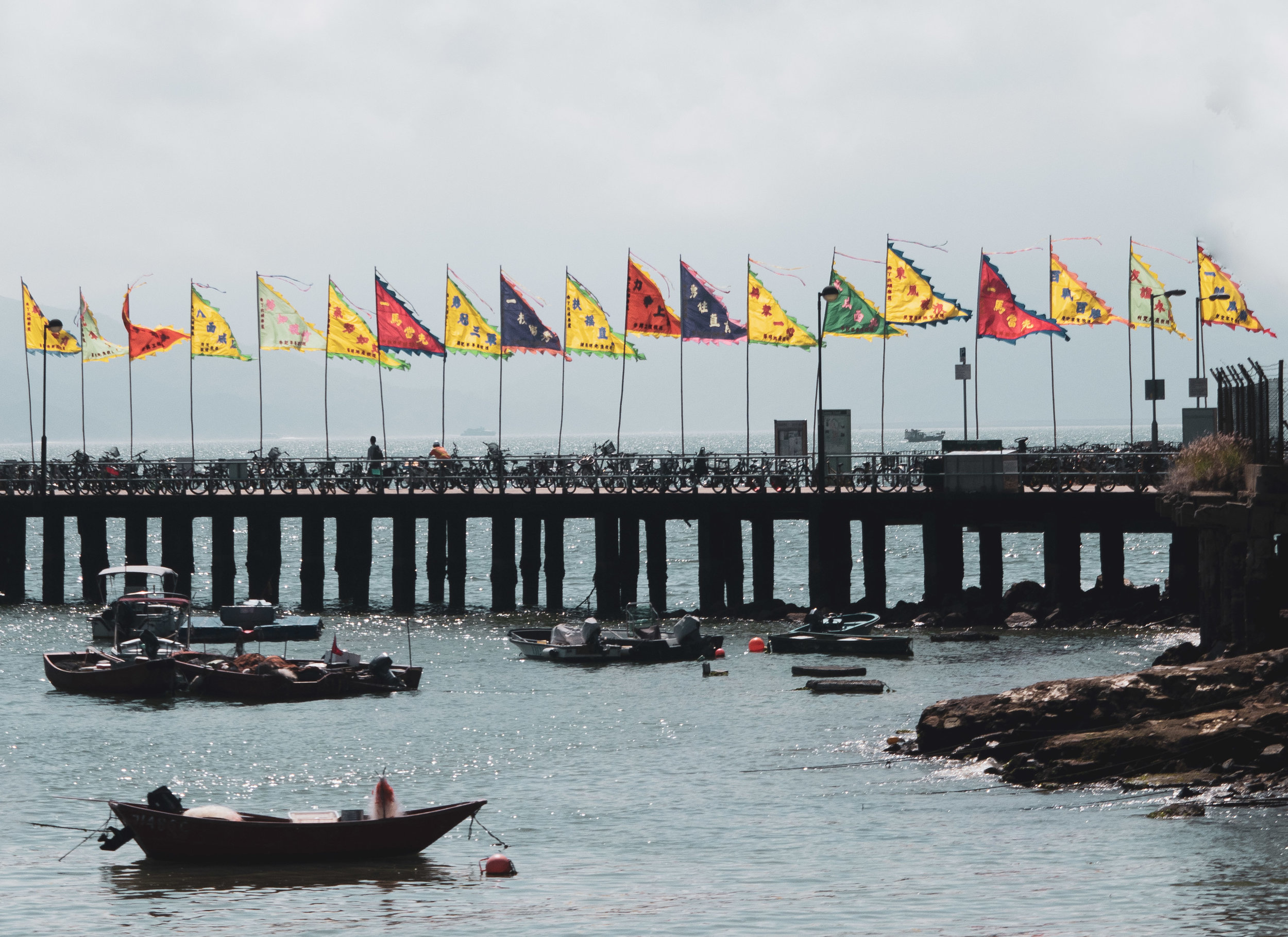
Dragon Boat Festival
The flags were put up for the Dragon Boat festival, which took place at Lamma just a day before our visit.
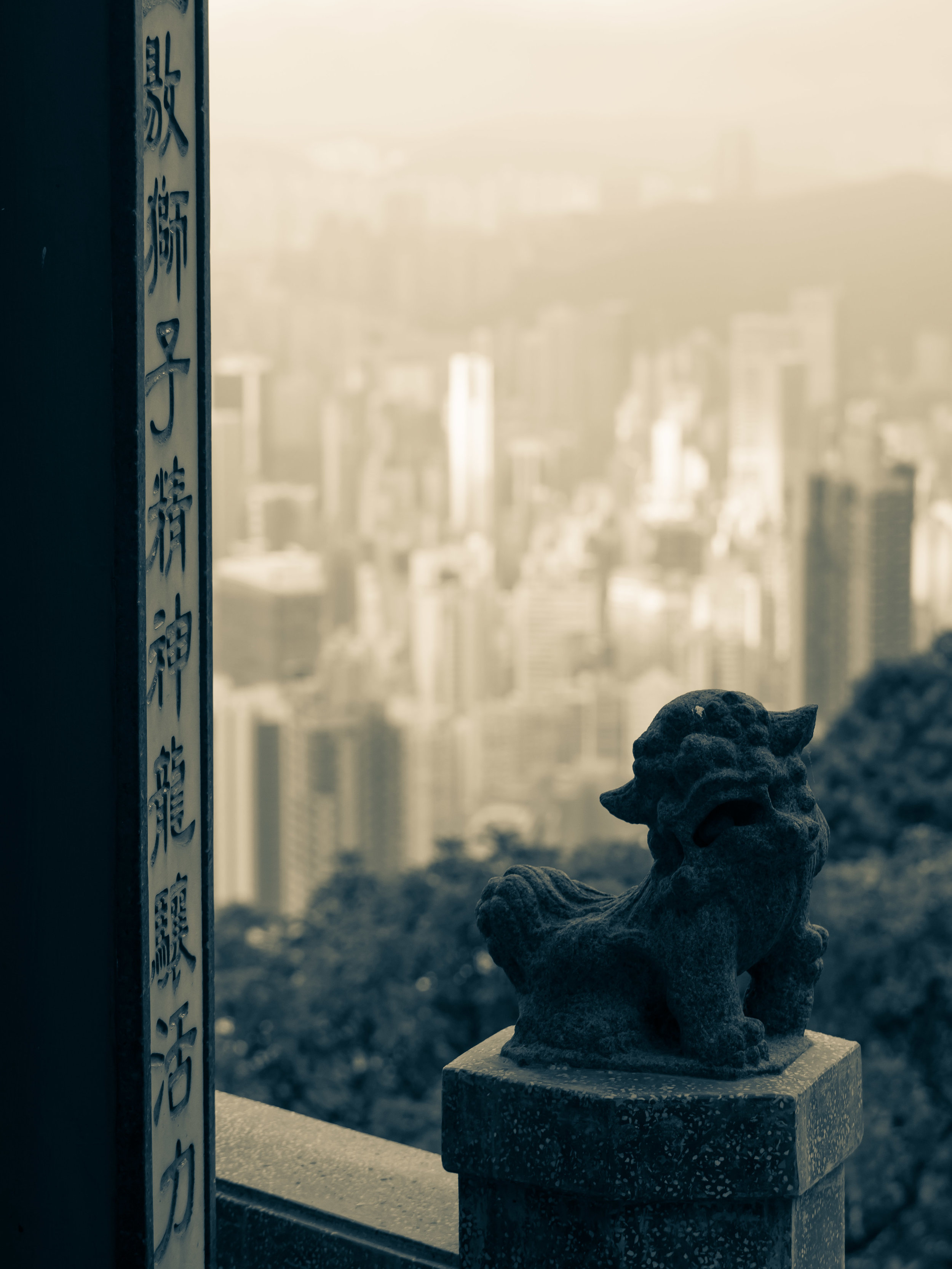
The Lion Pavillion
One of the lookouts on Victoria Peak.
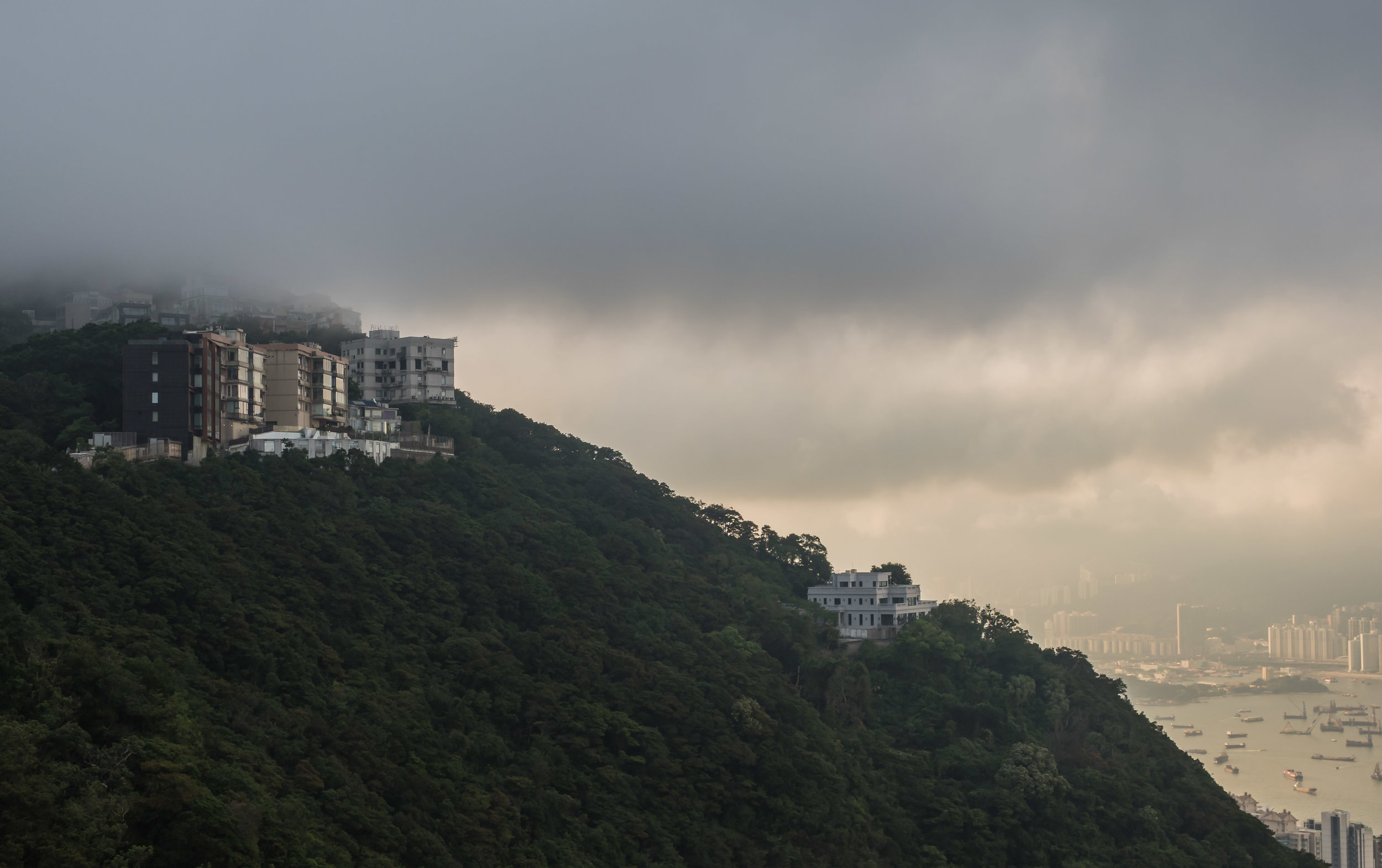
Victoria Peak
Often covered by scattered clouds rolling over the hills, this is the highest point on Hong Kong island.
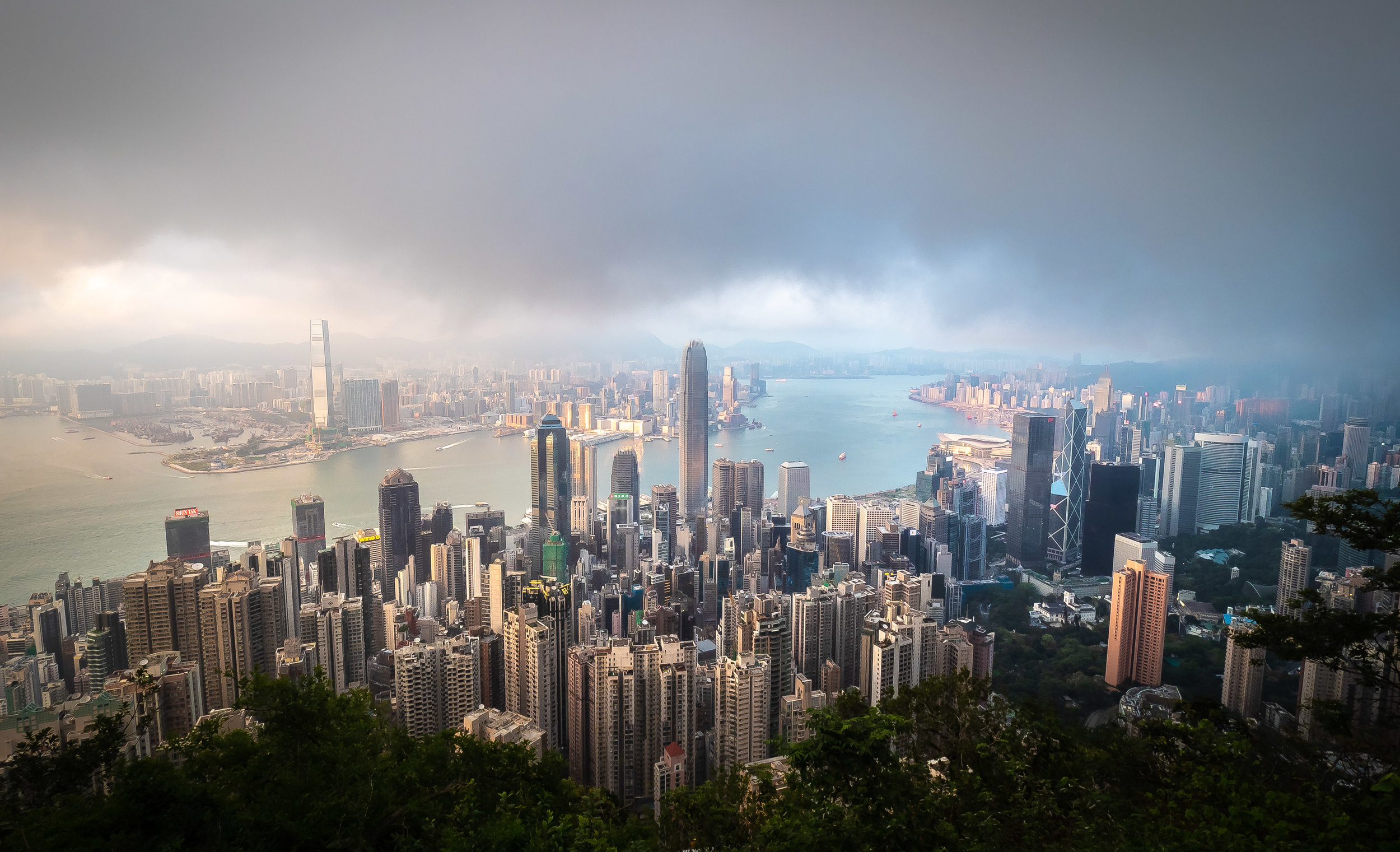
Views
And consequently offers what is arguably the best view over the city, with Central in the foreground and Kowloon on the other side of the bay.
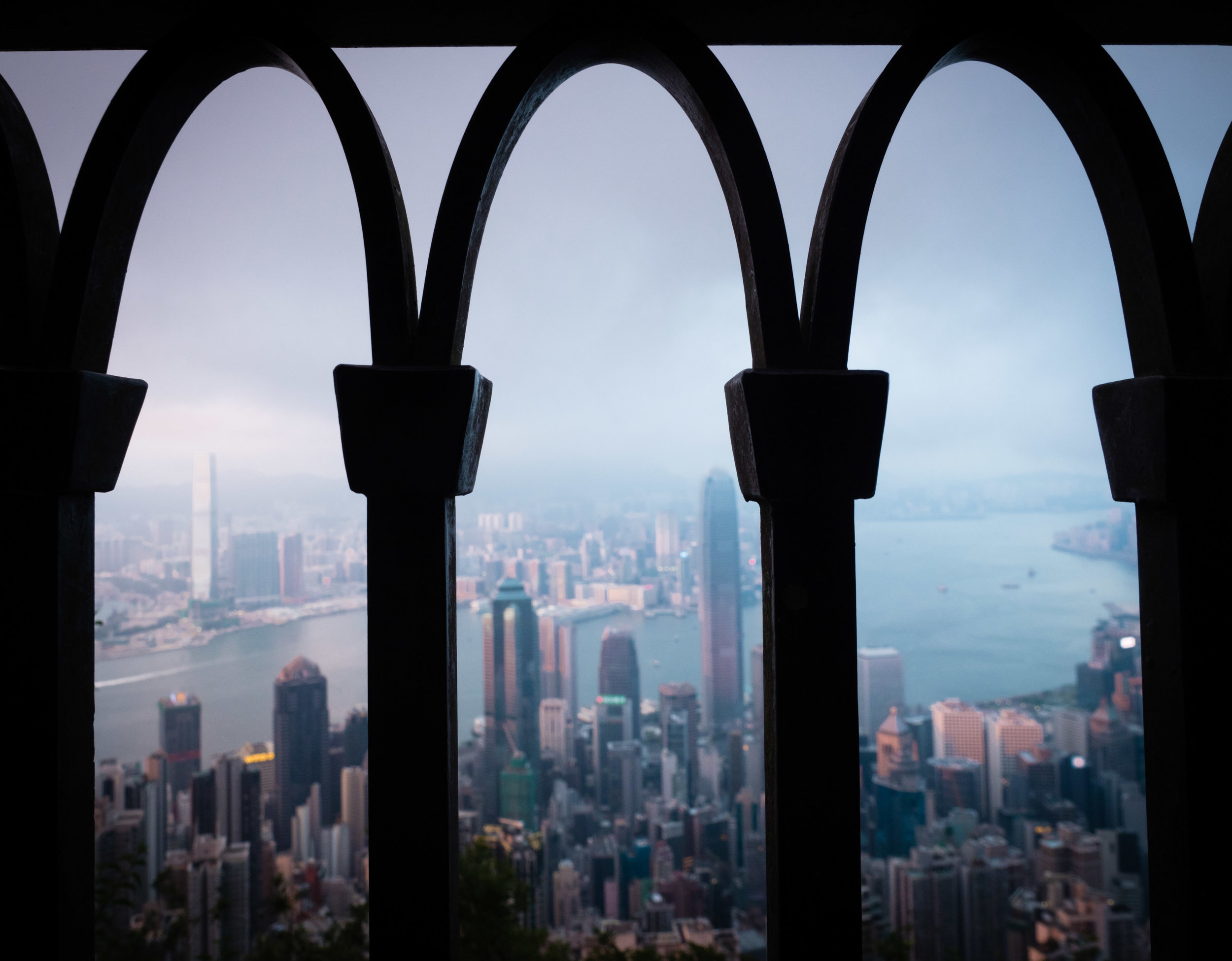
Lookout
The best position - with the fewest crowds - is at Lugard Road lookout, just 15min walk from the Peak tram station.
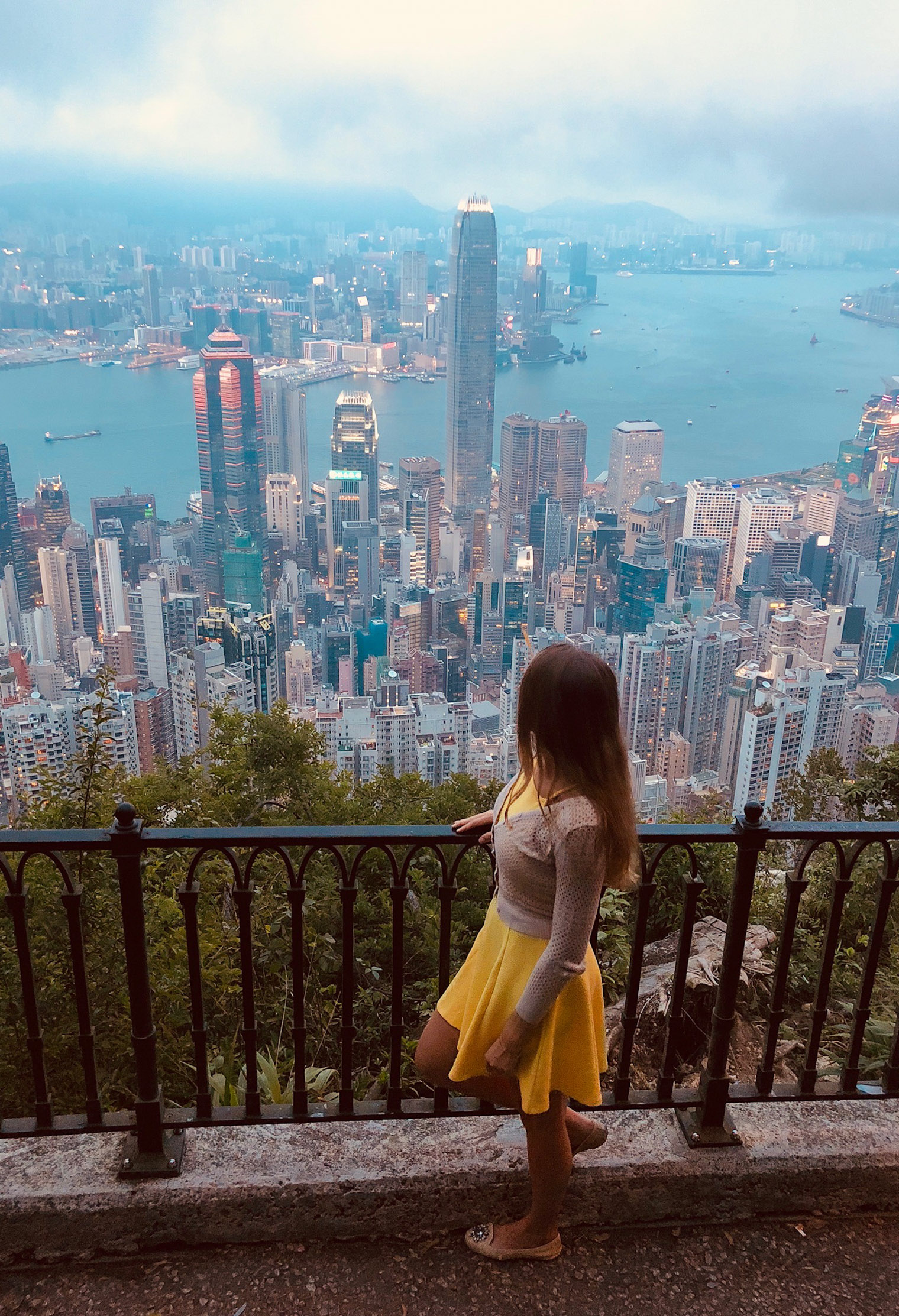
Soaking it in
The view from the Lugard street lookout.
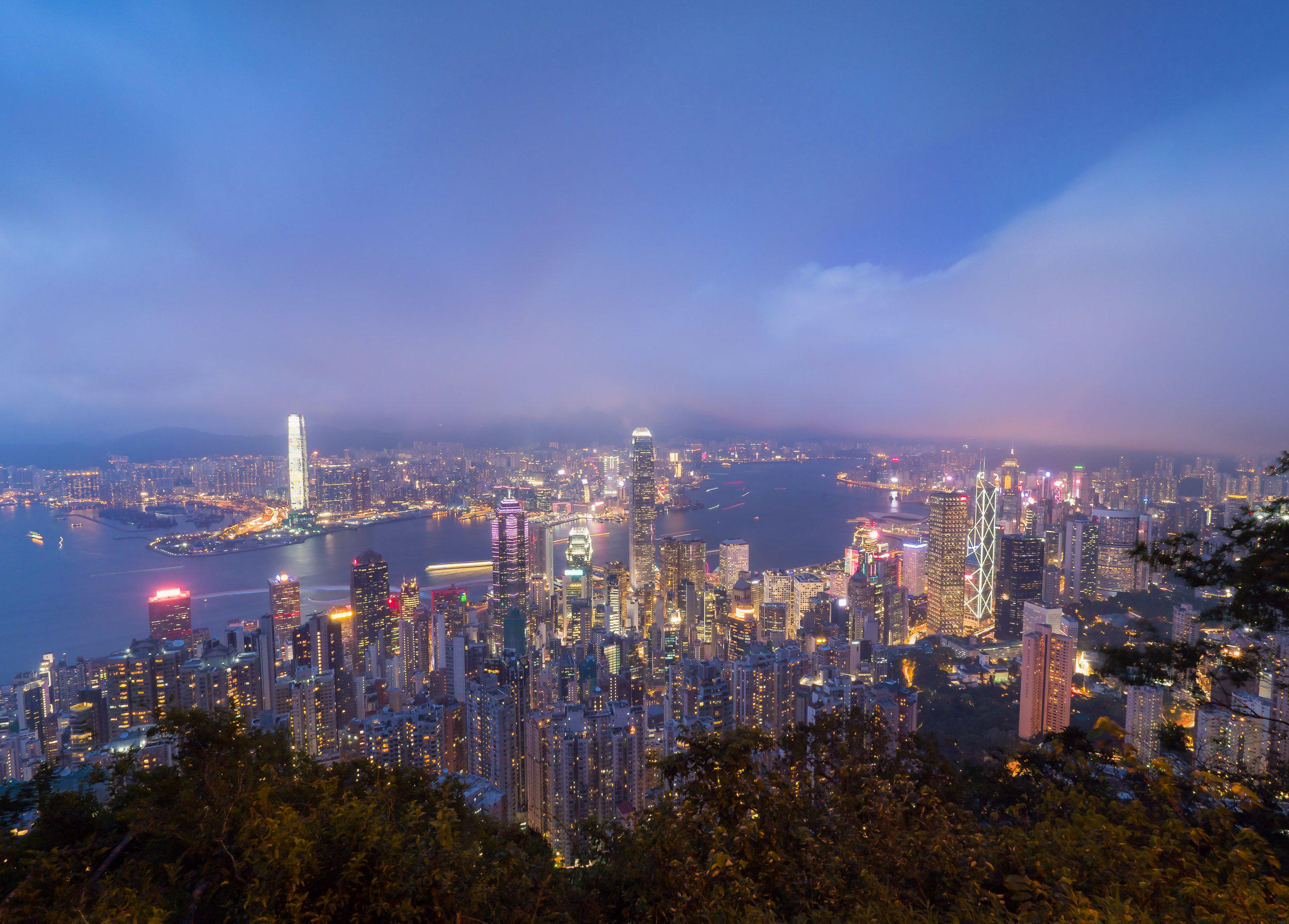
Dusk
When the sun has set, and the lights come on, Hong Kong shows its magic.
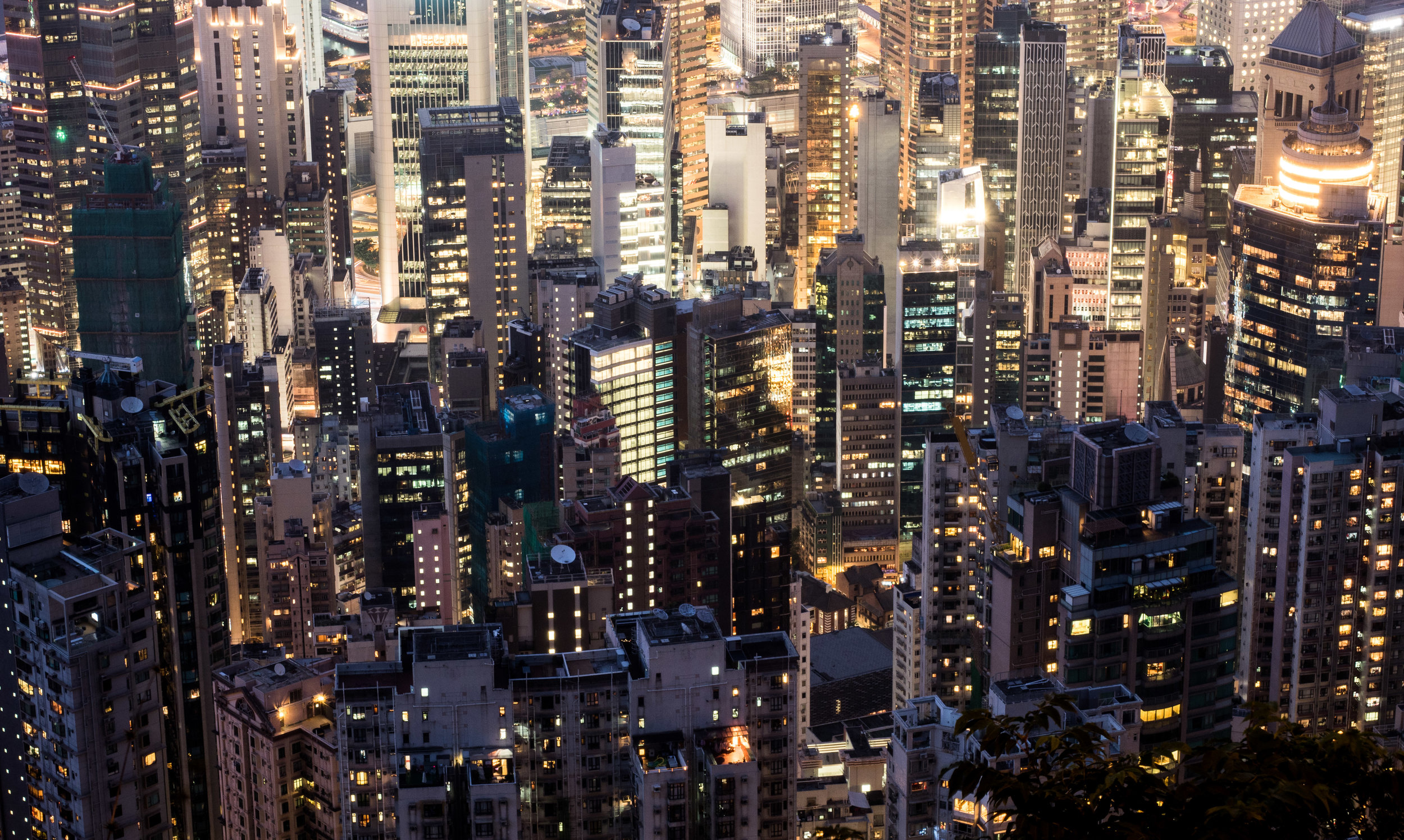
Skyscrapers
Hong Kong is home to over 2700 buildings taller than 100m - the largest number in the world.
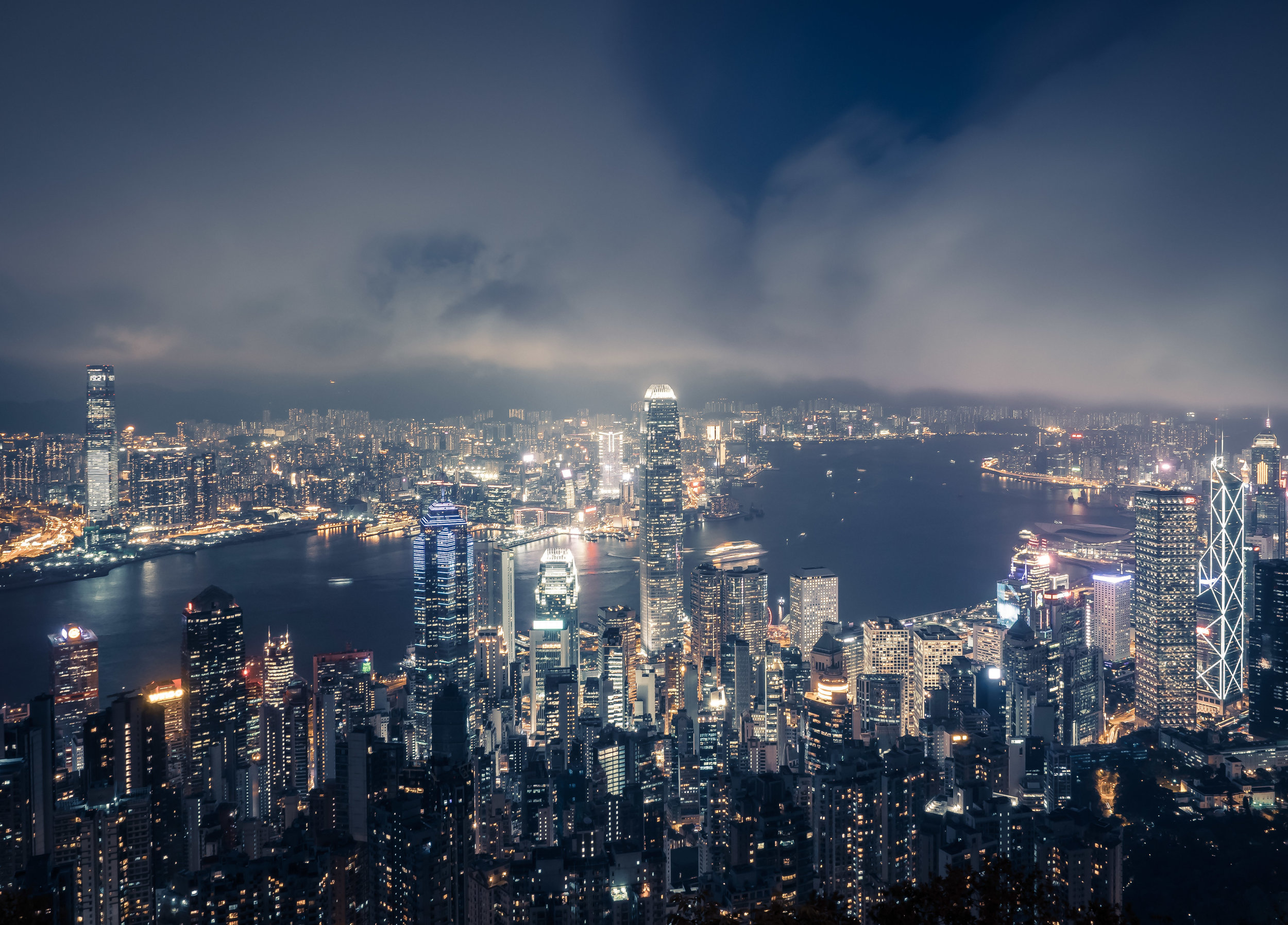
Night
The last step in the amazing transition from daylight to nighttime seen from the Peak.
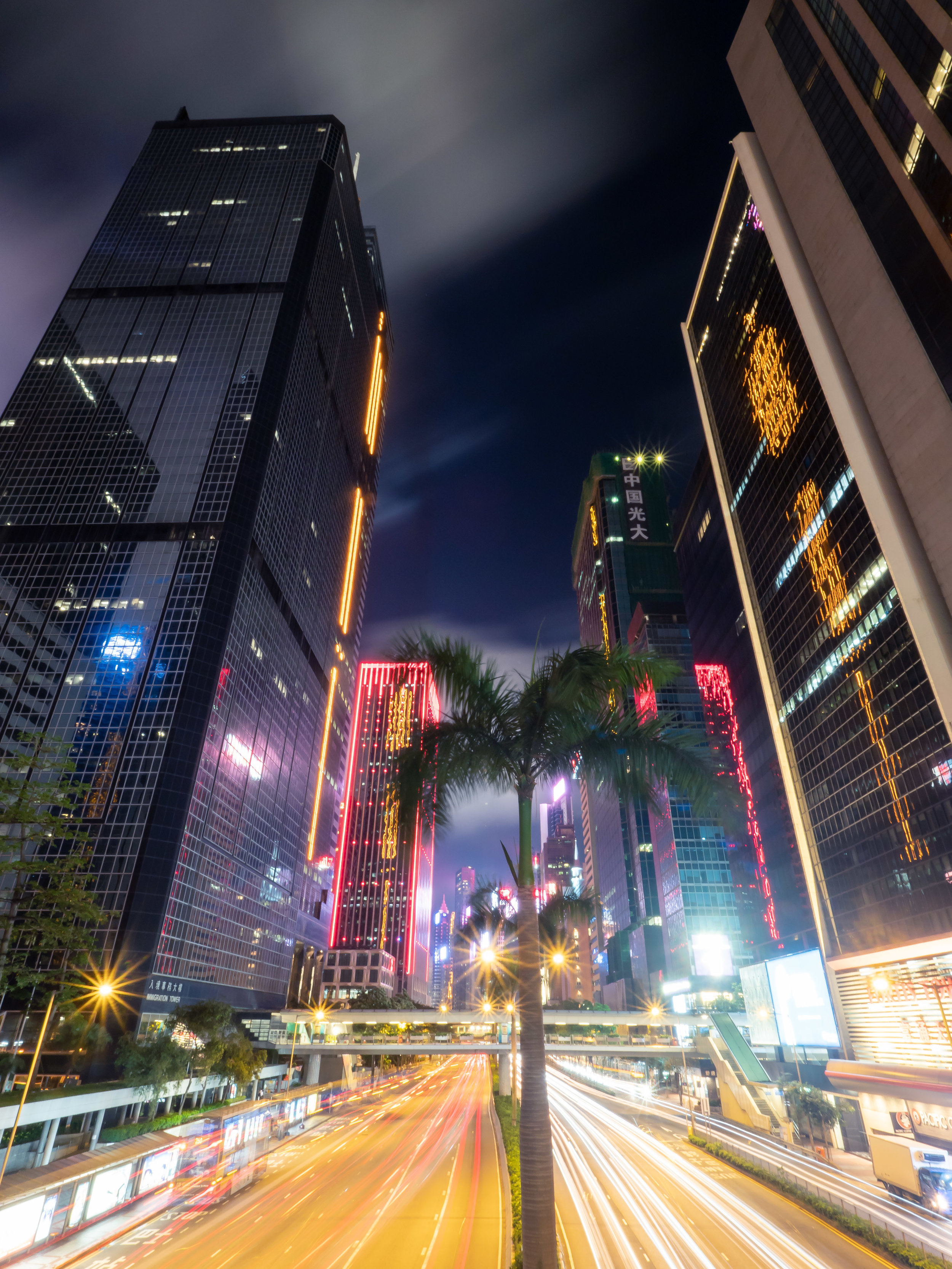
Footbridges
I really enjoyed the large number of footbridges in the city and the general effort to make it pedestrian (and photographer) friendly.
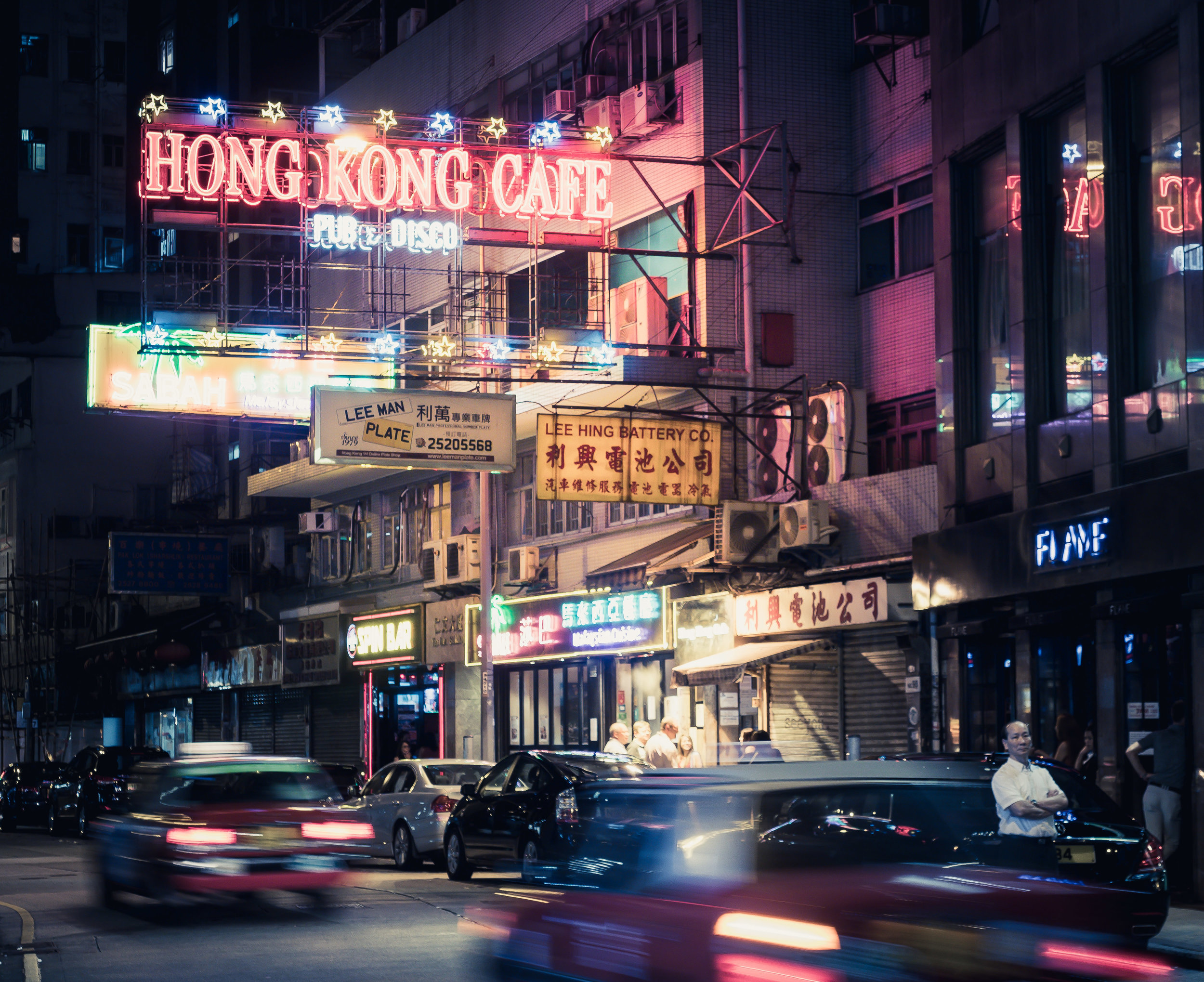
Neon Signs
There isn't a street without them.
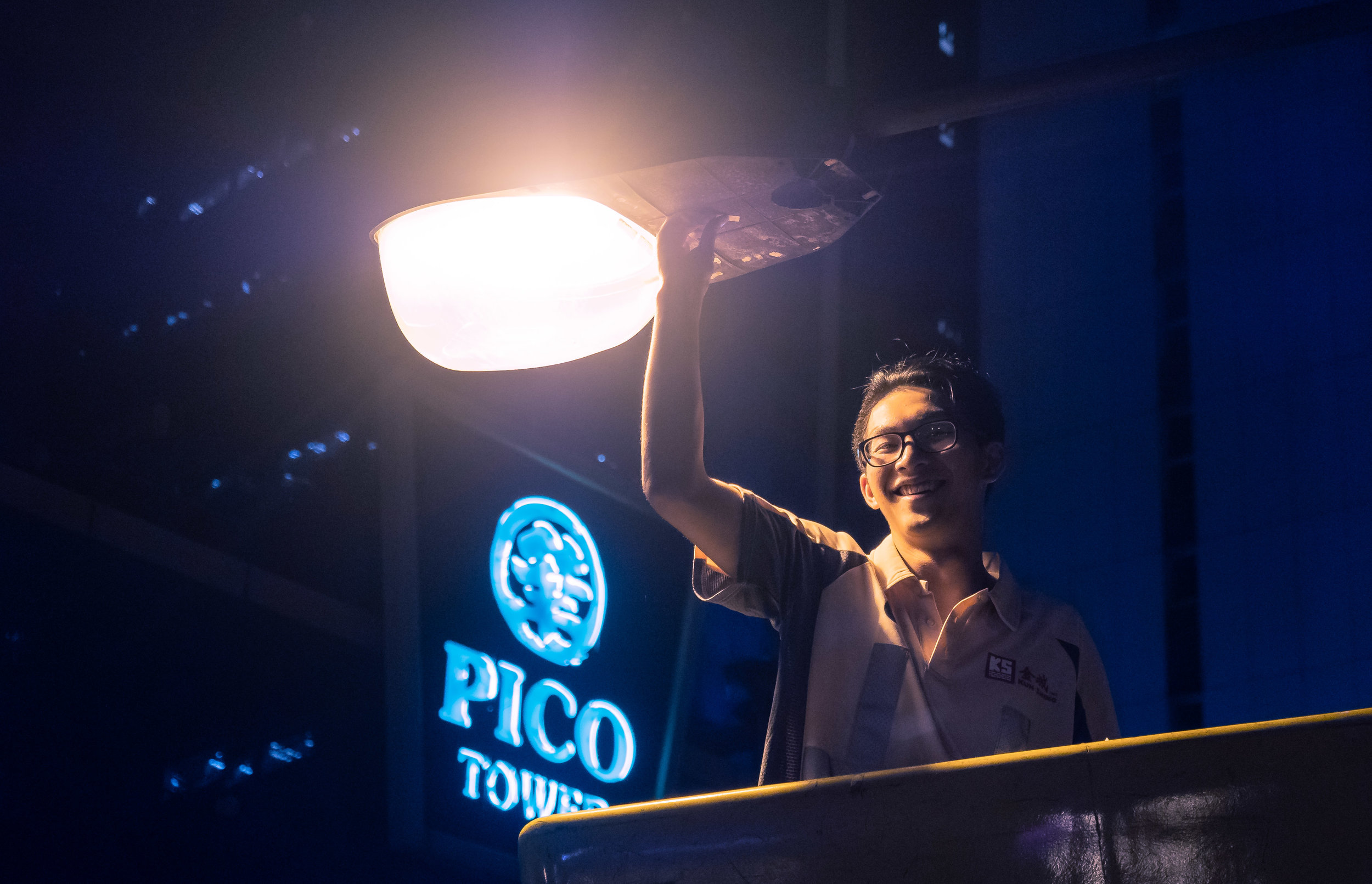
Maintenance
And many of these lights need frequent repairs, carried out by guys like him.
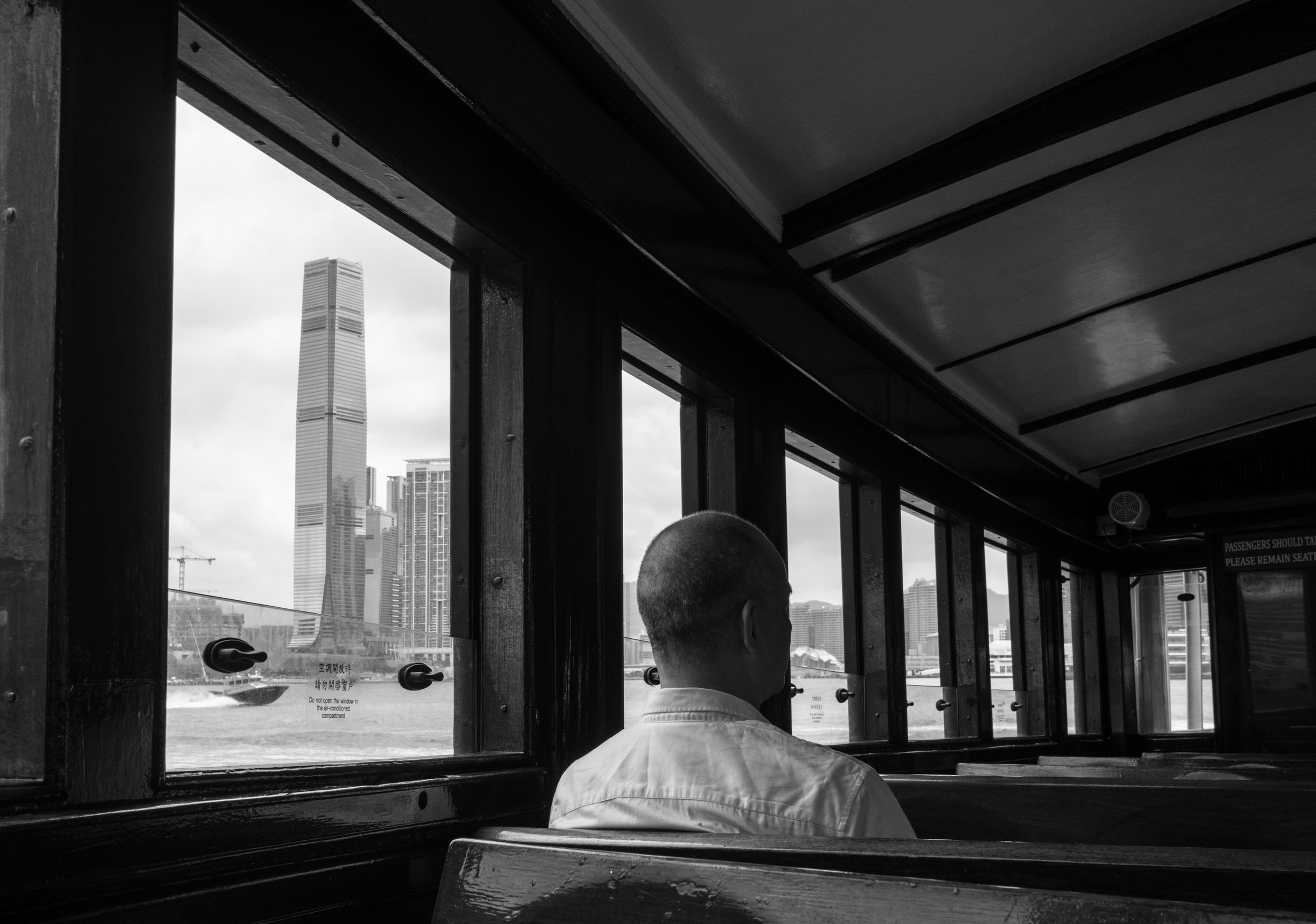
Ferry Rides
Crossing the bay with the Star Ferry always makes for nice perspectives.
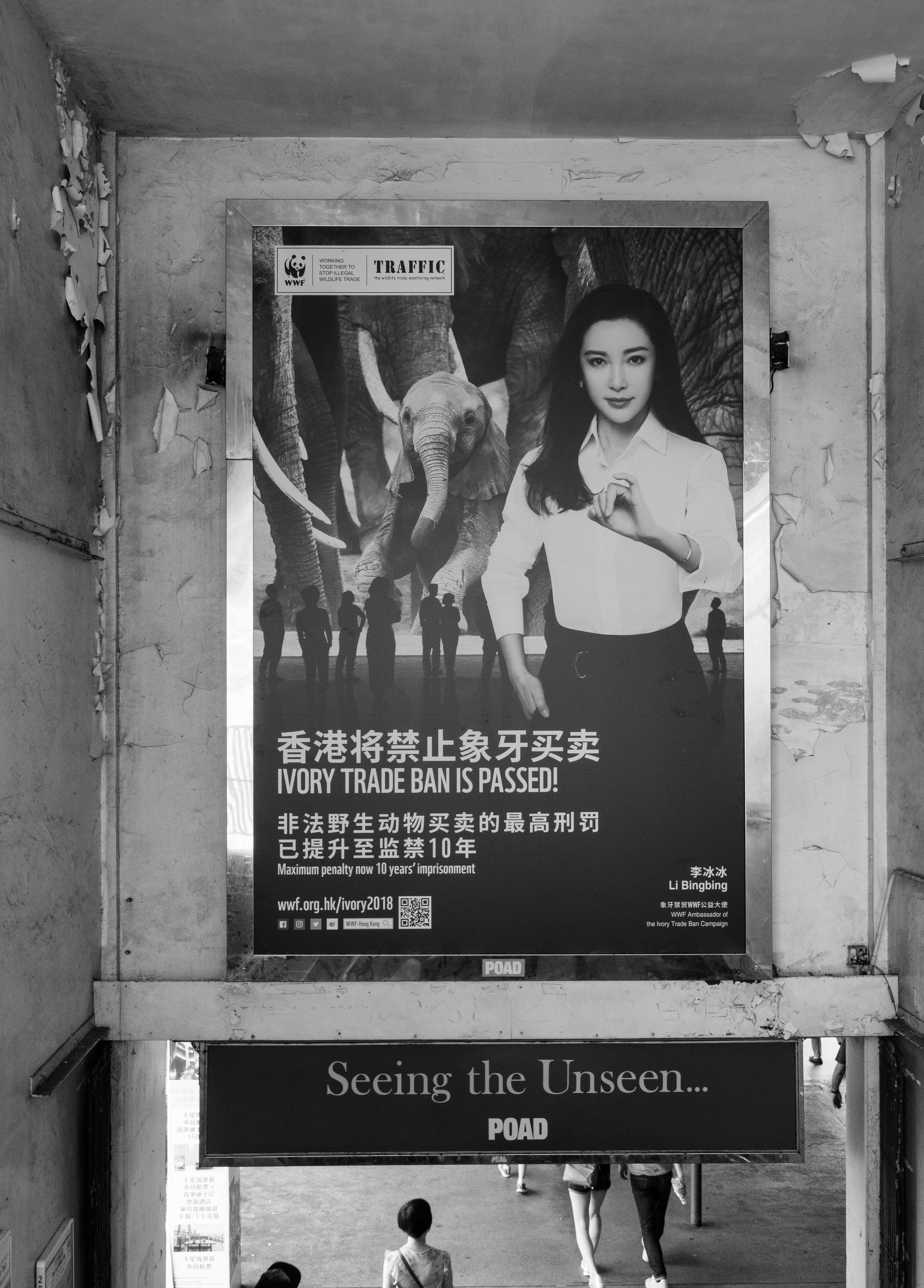
A Step Forward
With this new law for Hong Kong.
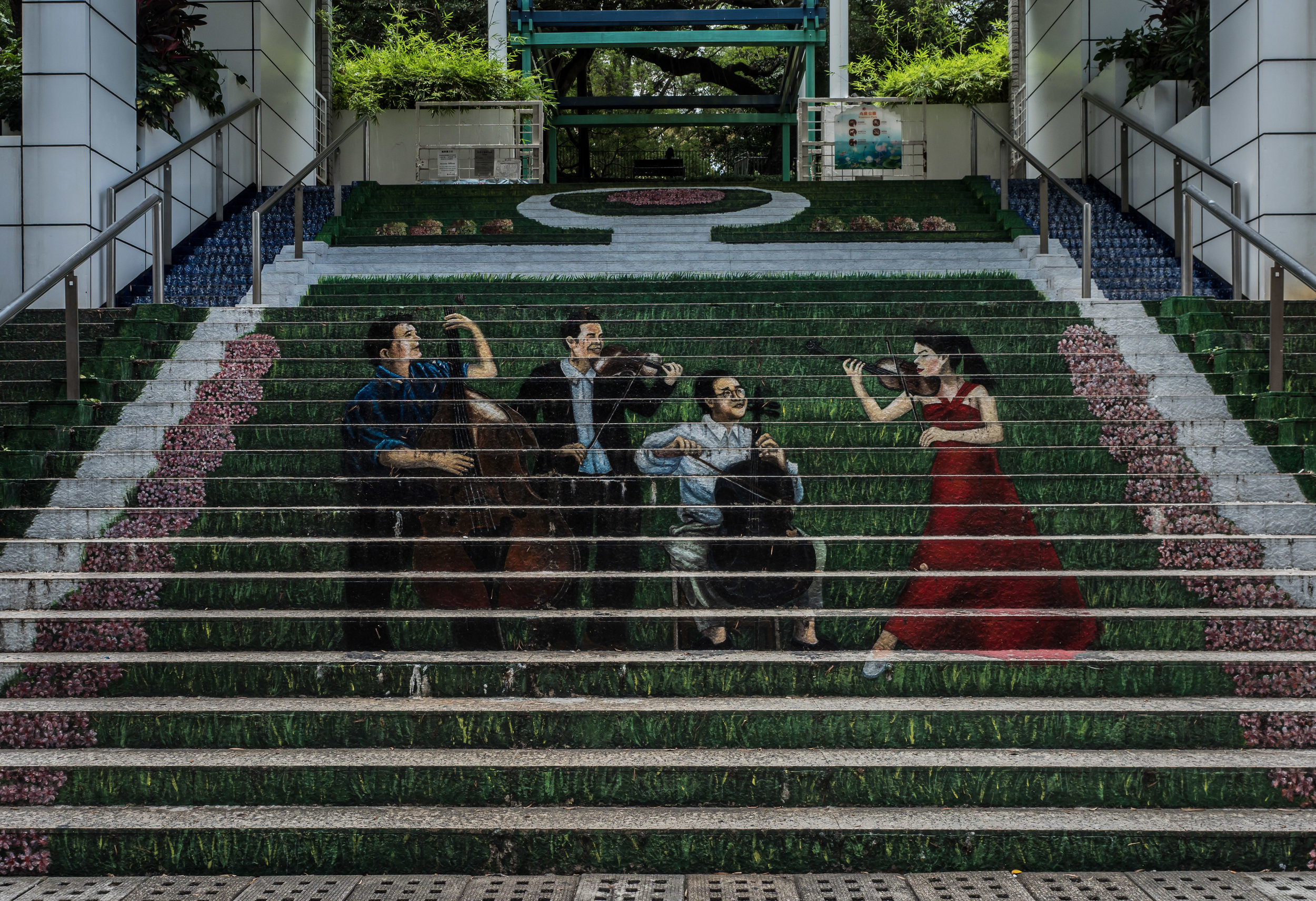
Concert
A creative city.
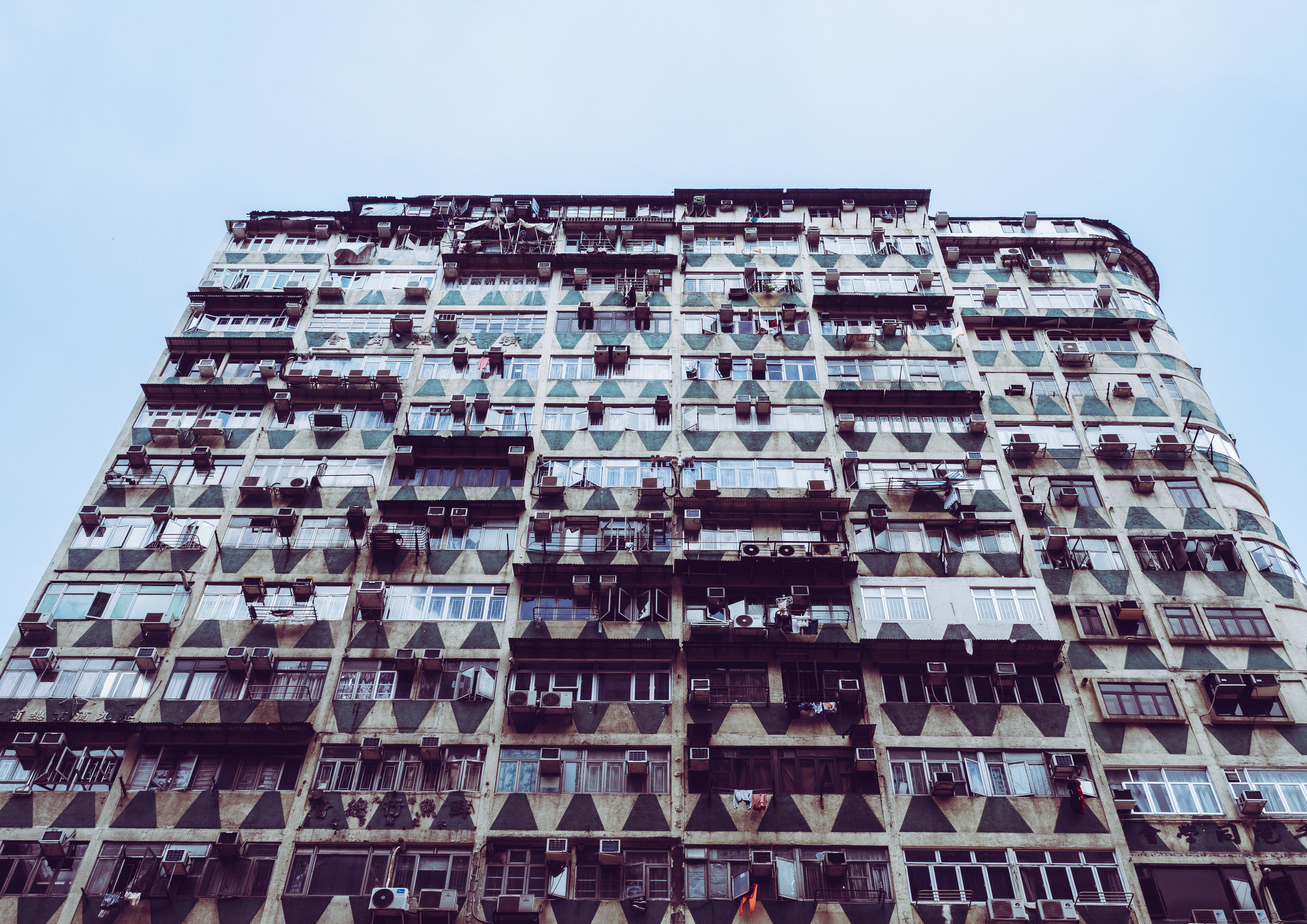
Decorations
While the omnipresent (and omnidripping) AC units don't make a for a pleasant facade, a surprising effort is placed on making exteriors look presentable, usually with muted colours and simple shapes.

Street Yoga
Caugt this woman engaging in some morning routine.

Contrasts
The high rises stand in sharp contrast with many of the simple low rise sheds still present in some parts of the city, such as the fruit and vegetable market seen here.
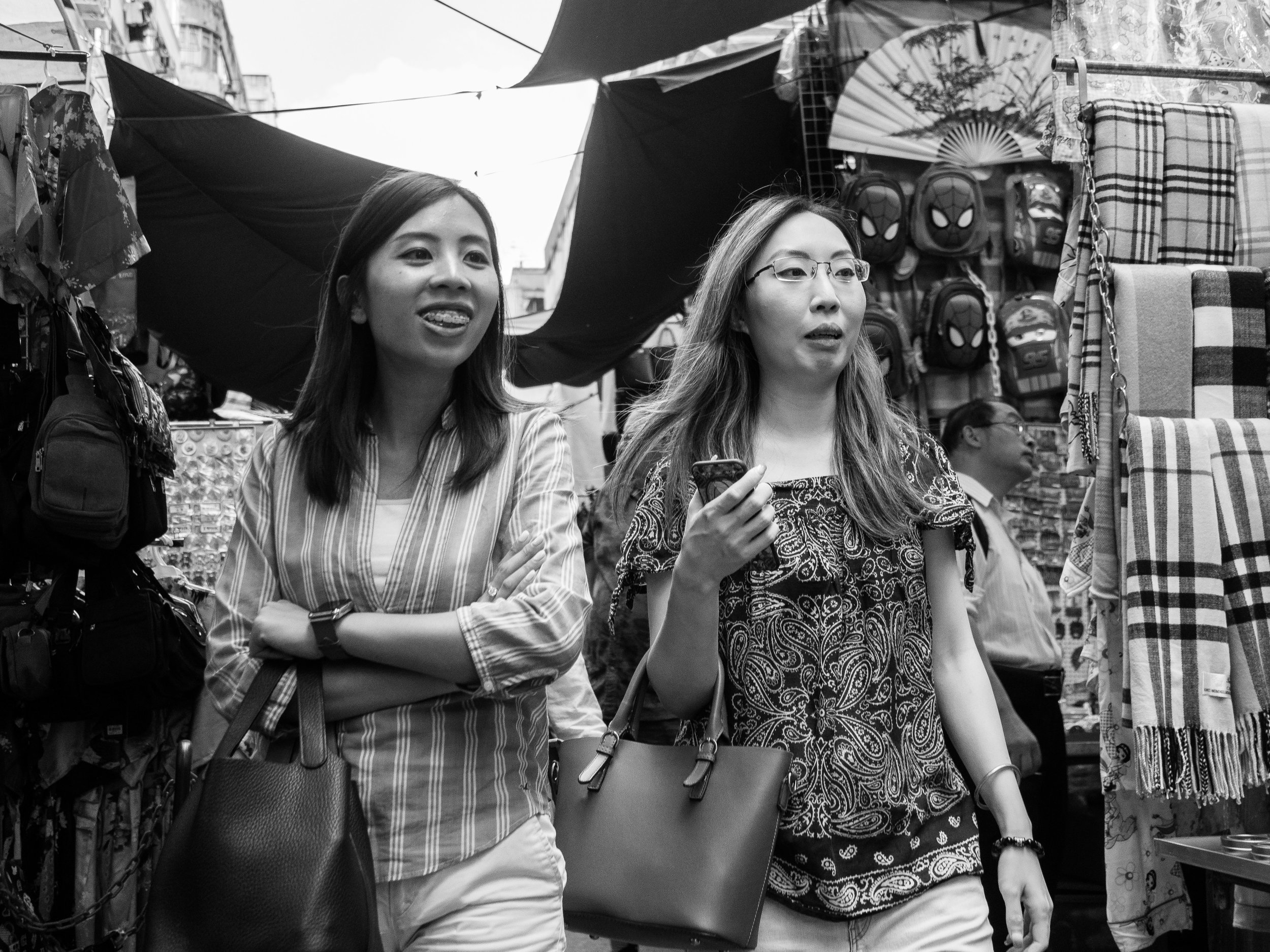
Shopping
Hong Kong is a primary shopping destination for many Chinese mainland tourists. Good or bad? Depends who you ask.
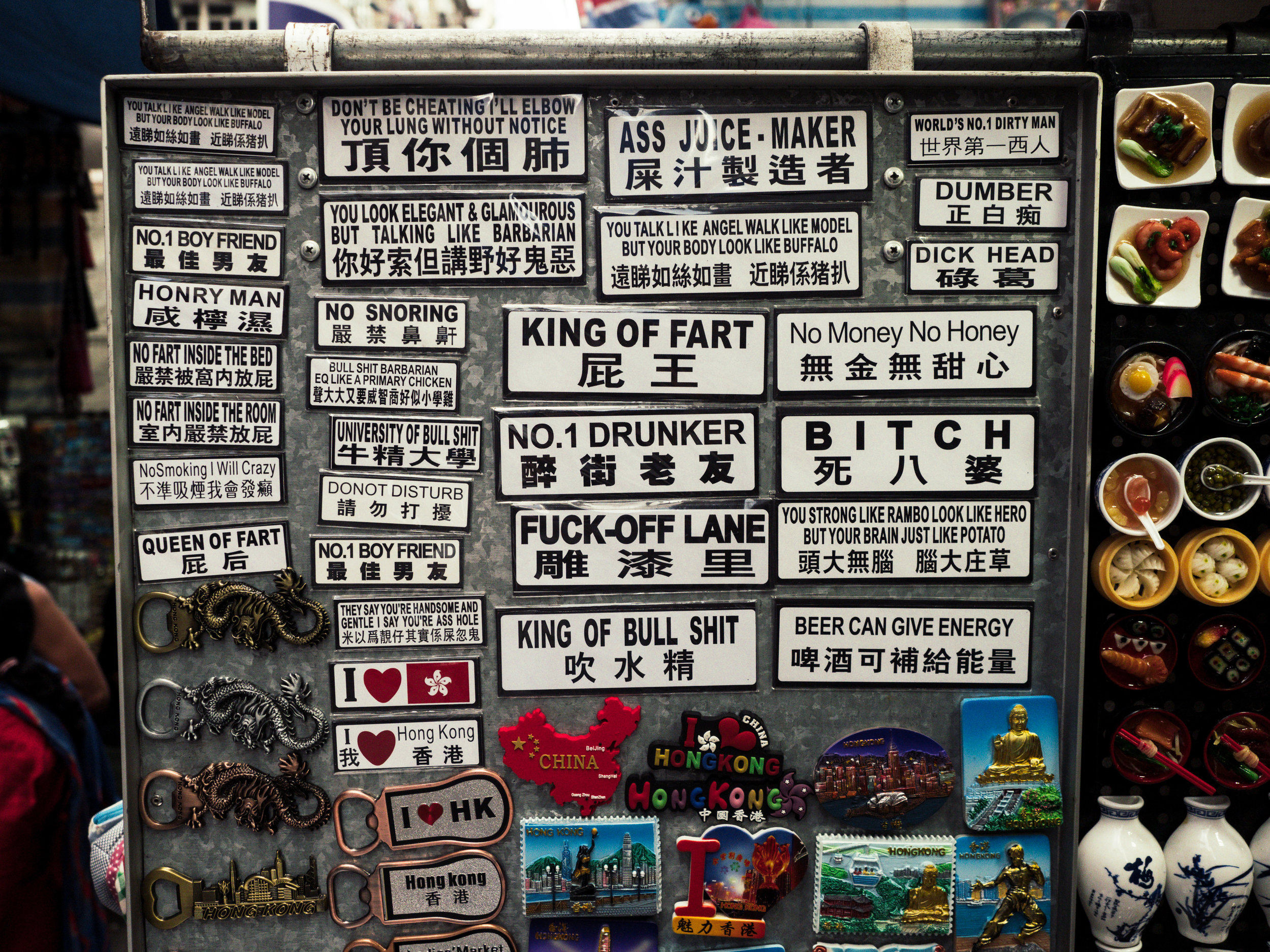
Chinese Proverbs
Or something like that.
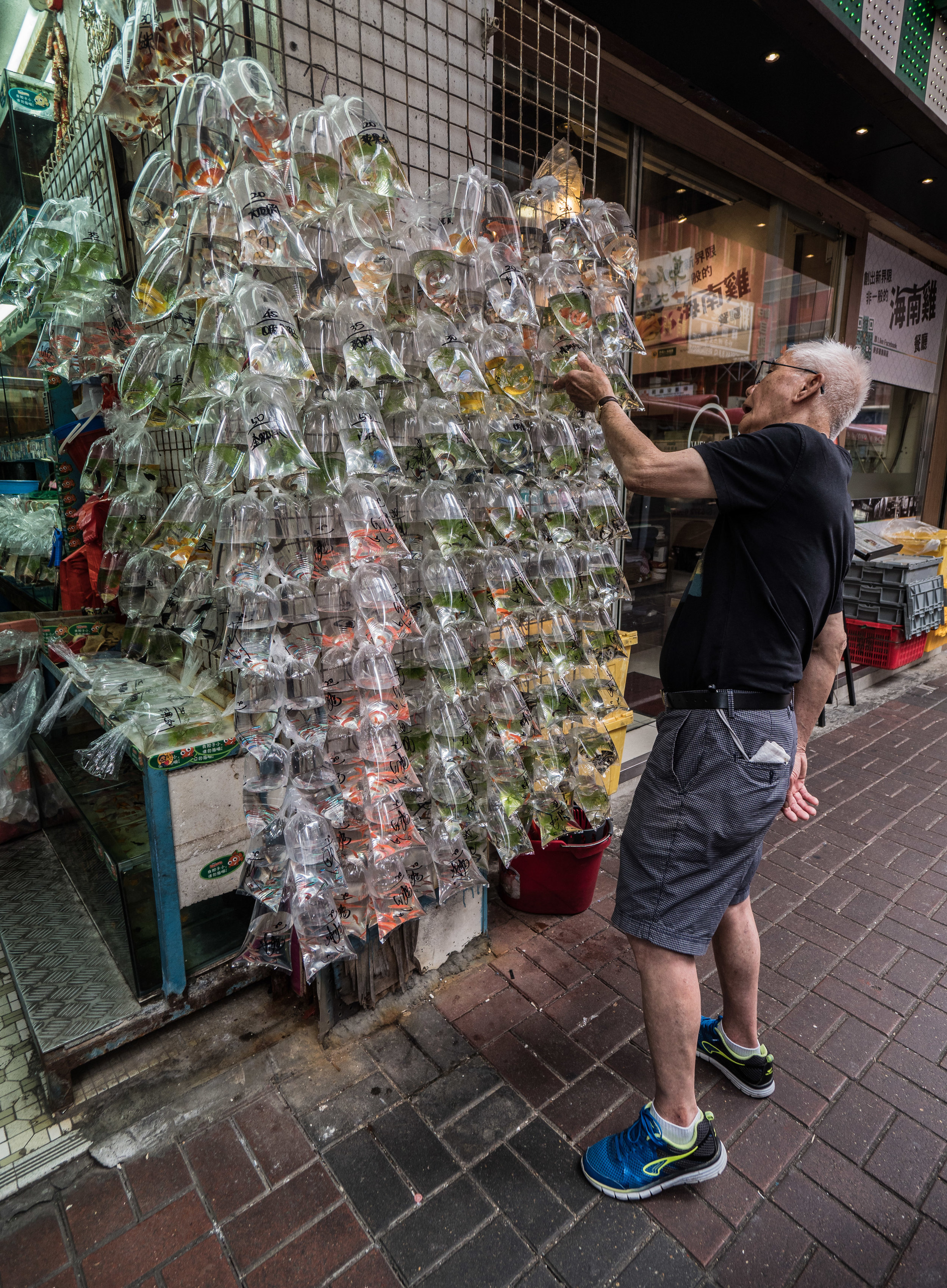
Need a Goldfish?
The goldfish market in Mong Kok offers all sorts of acquatic and other life in very questionable packaging.
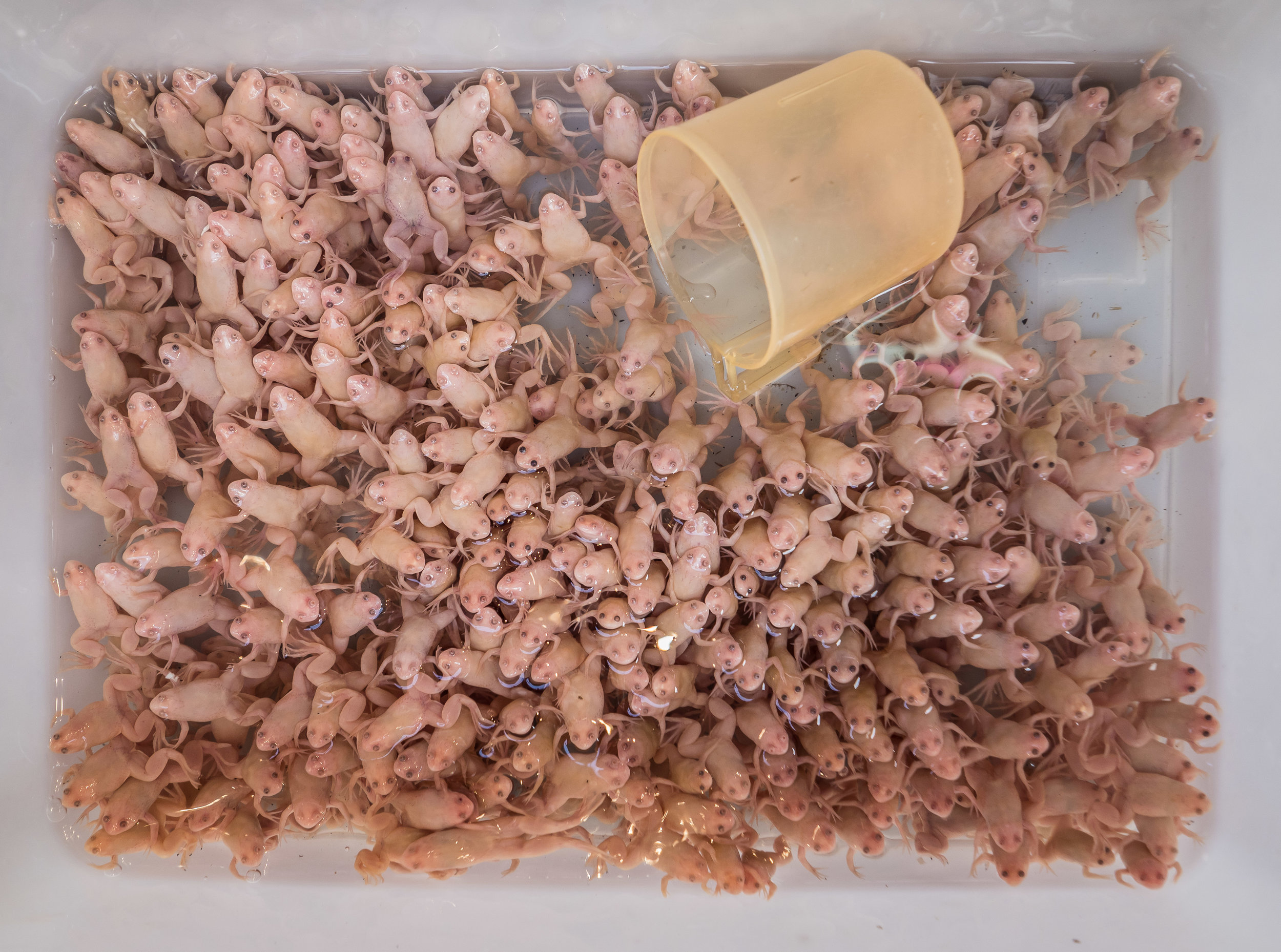
Reptile Food
Or so it seems.
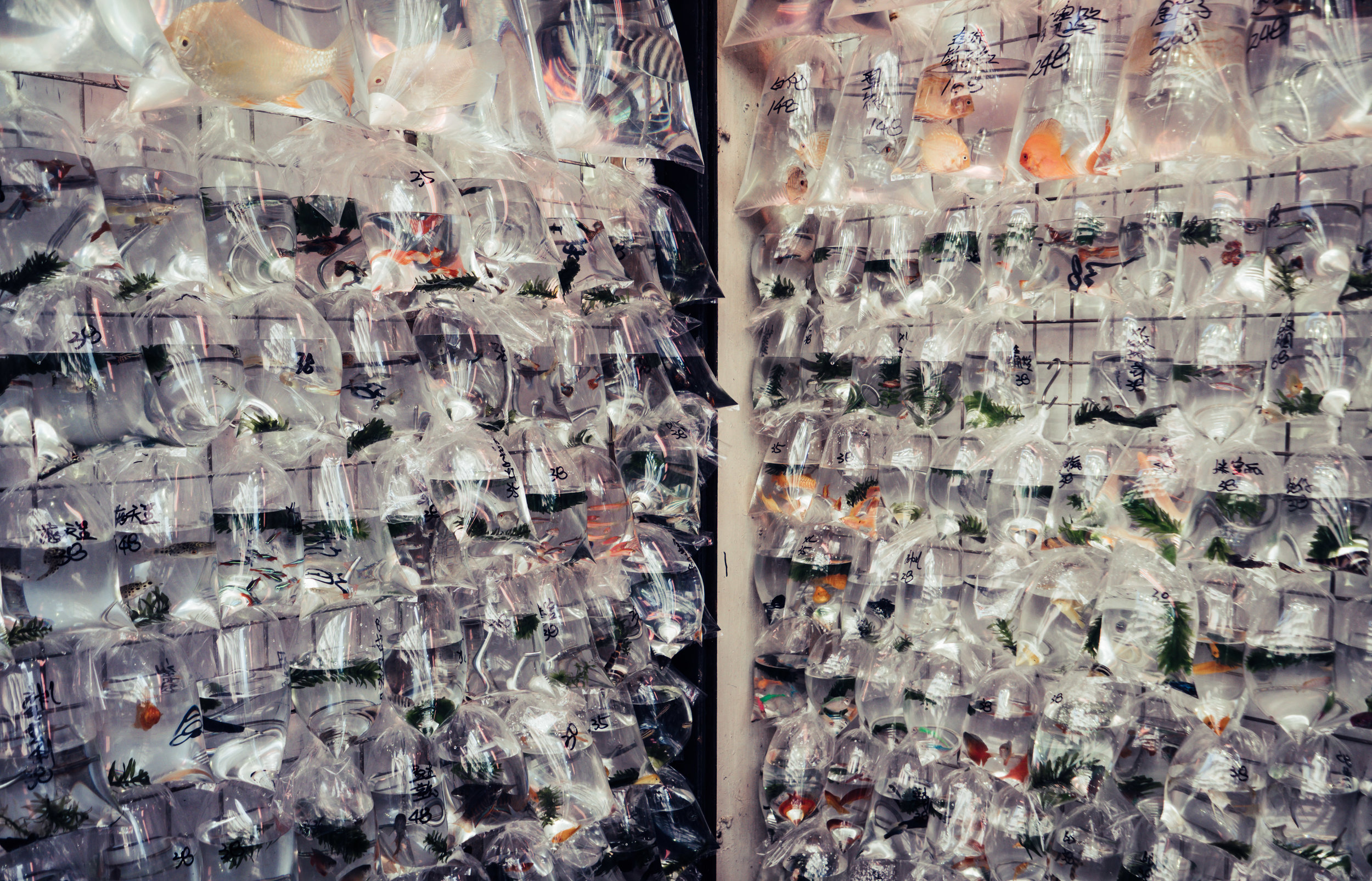
Fish in a Bag
The primary way to sell fresh water fish on the market.
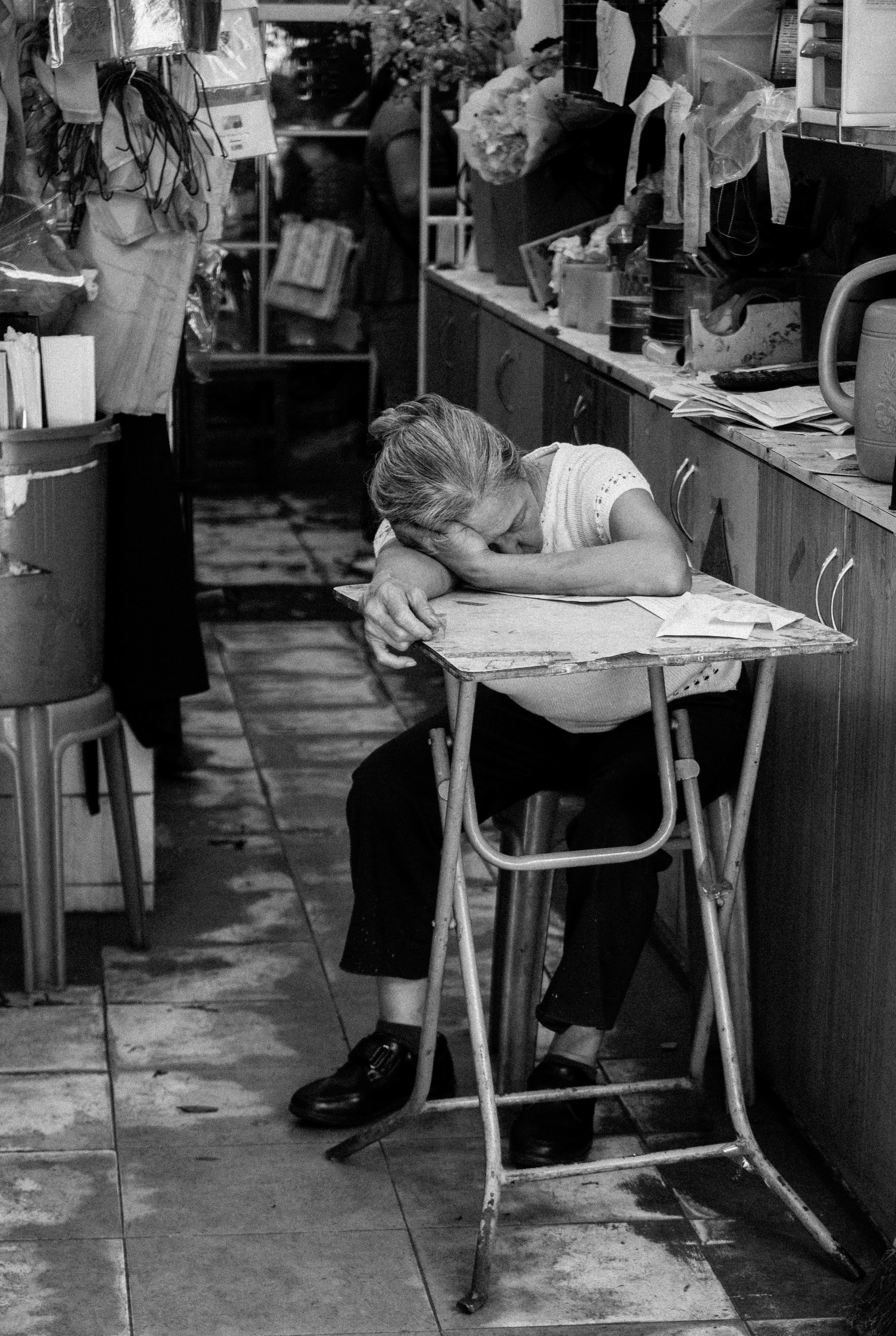
Tough Days
A long day selling on the flower market is what made this woman use her table as a napping spot.
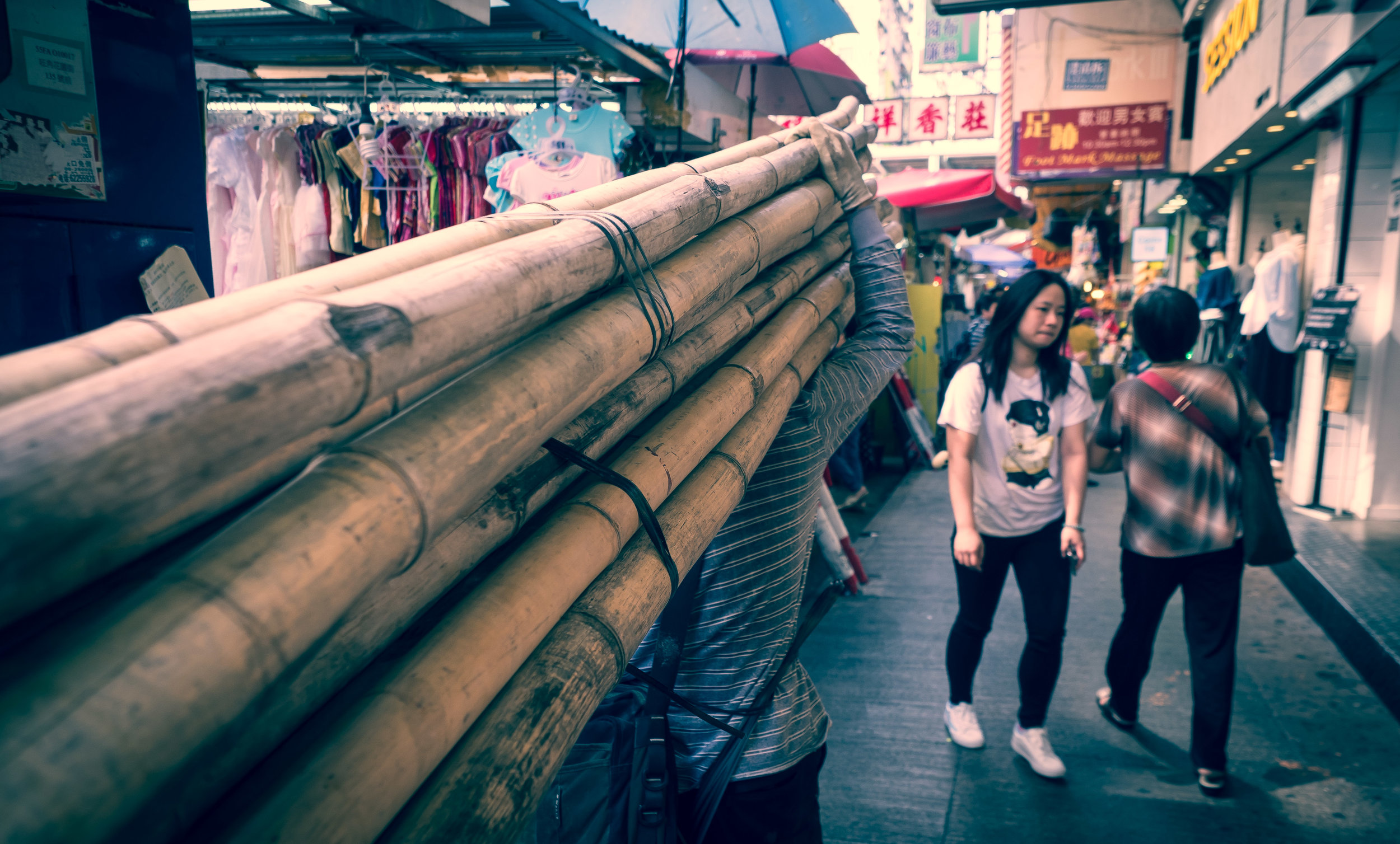
Bamboo Transport
In many places in Asia, bamboo replaces steel or aluminum when building support structures for construction - see some of the later photos for evidence.
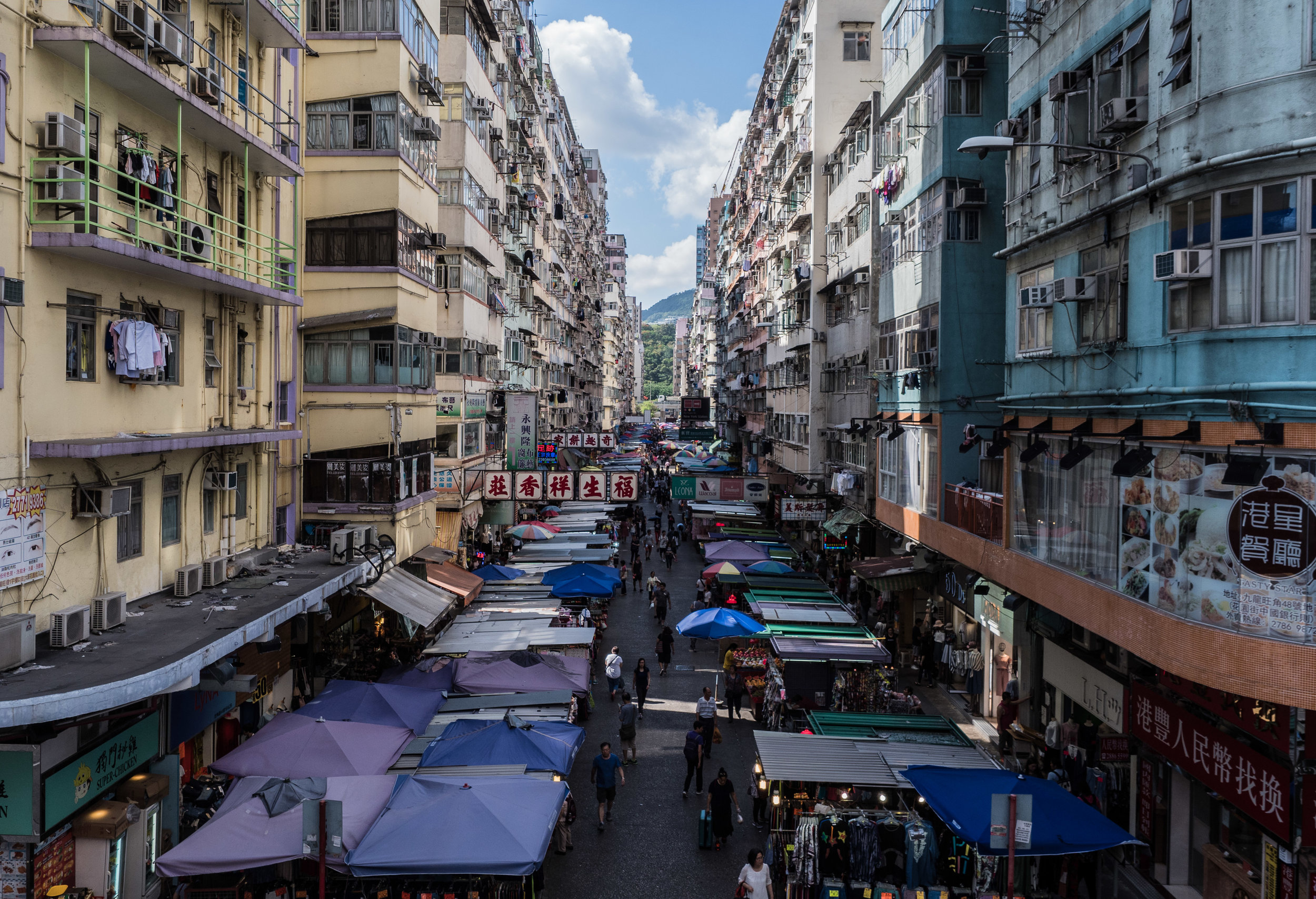
Markets
The Mong Kok area is where you'll find many of Hong Kong's busy markets.

Seafood
Including the fish market.
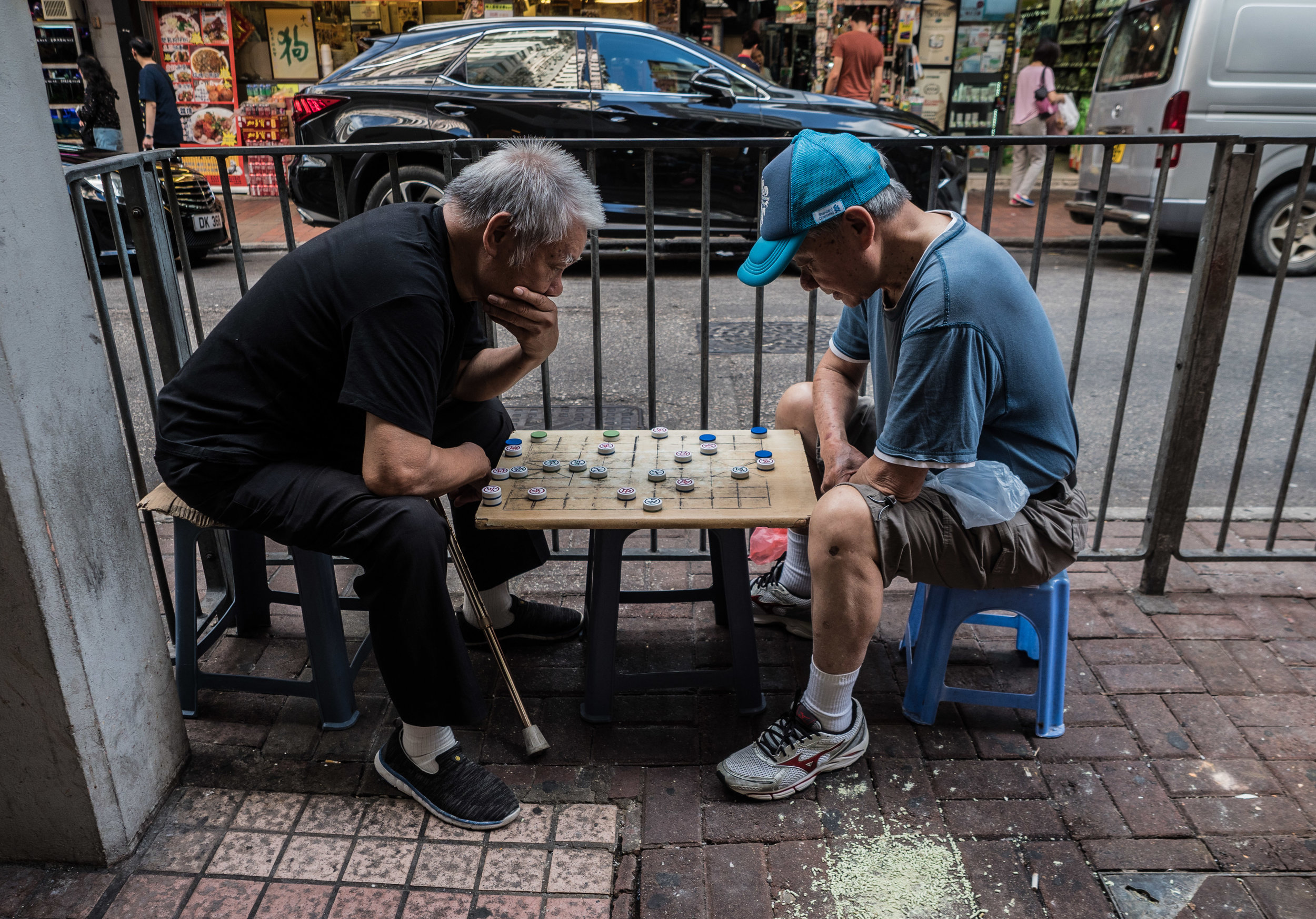
Games
Anyone know the name of this game?
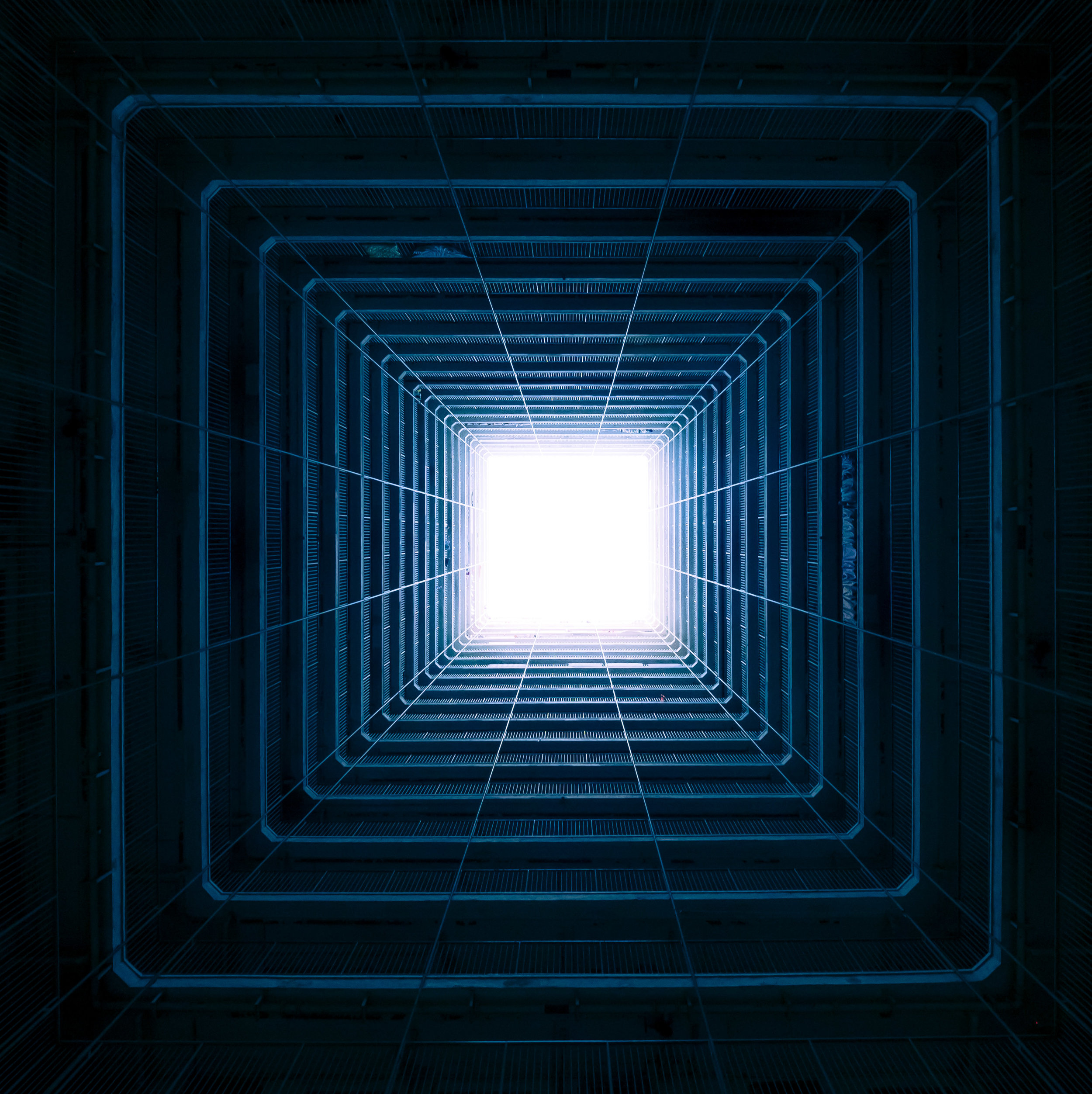
Symmetry
Another one of the photographic highlights of Hong Kong is the Oi Man Estate.
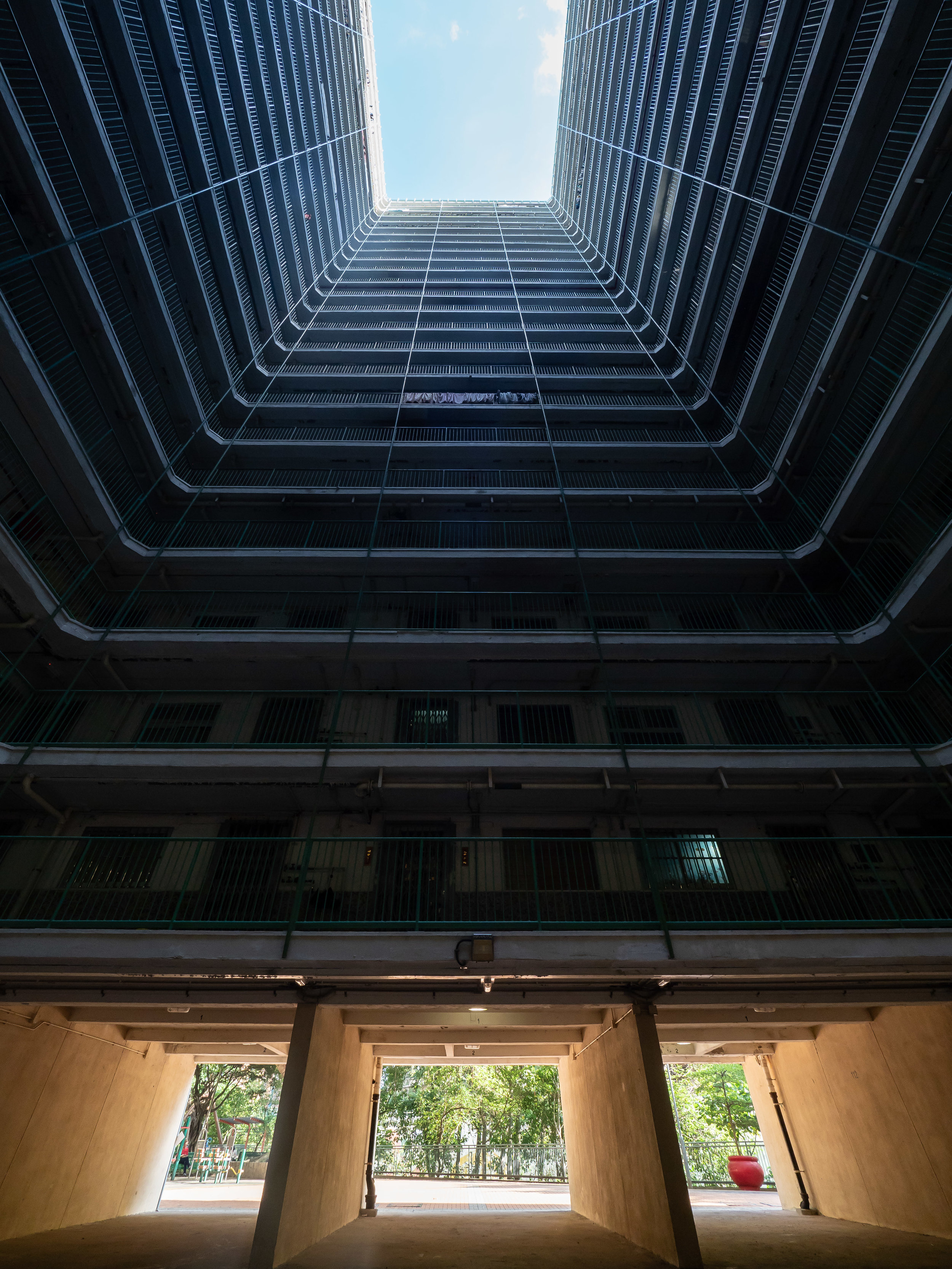
Upwards
A view of the building to provide some perspective, shot with my widest angle lens. Only the odd laundry hanging from the corridor breaks the pattern.
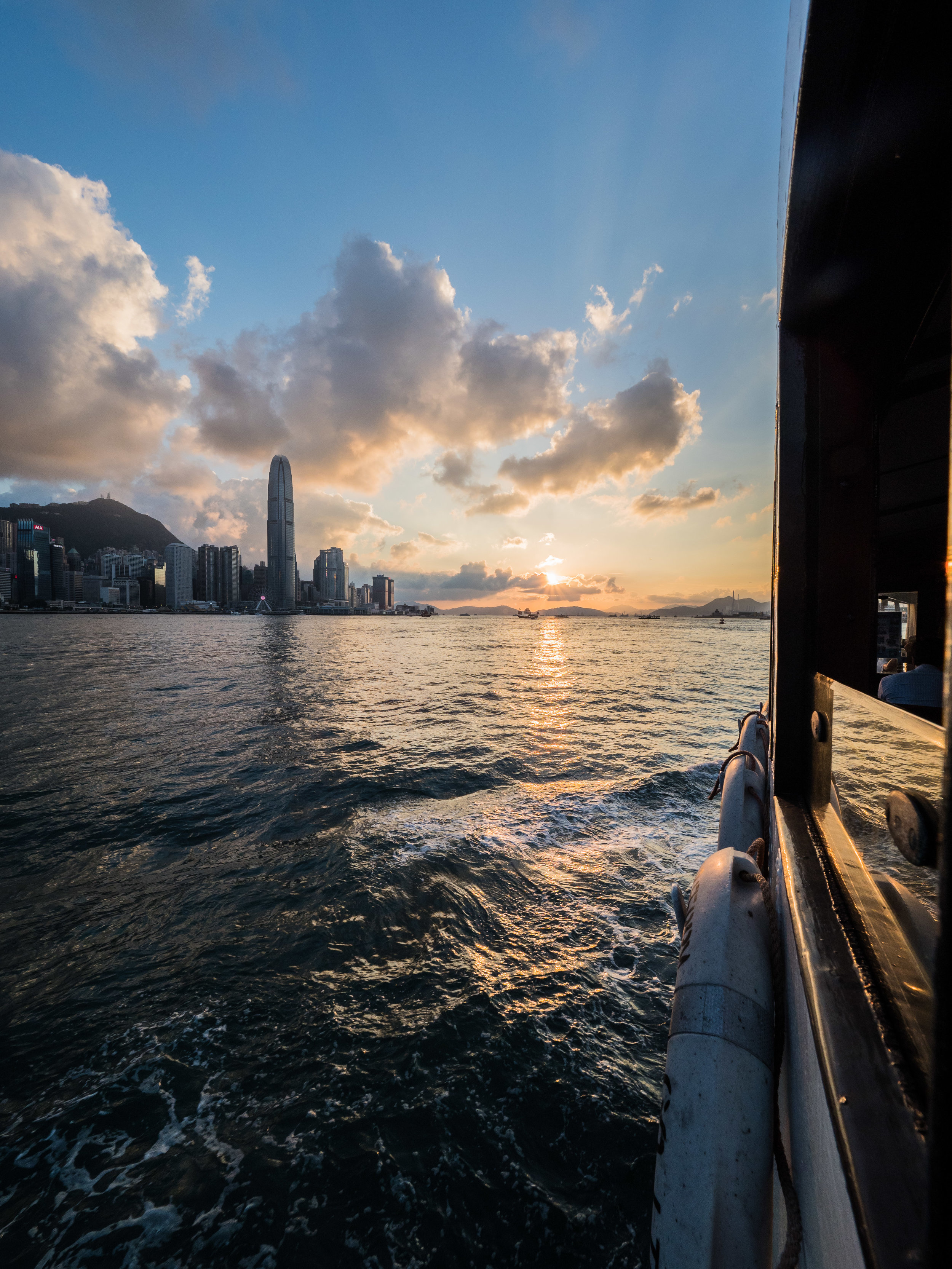
Sunset
From the Star Frerry, with the IFC II in the background.
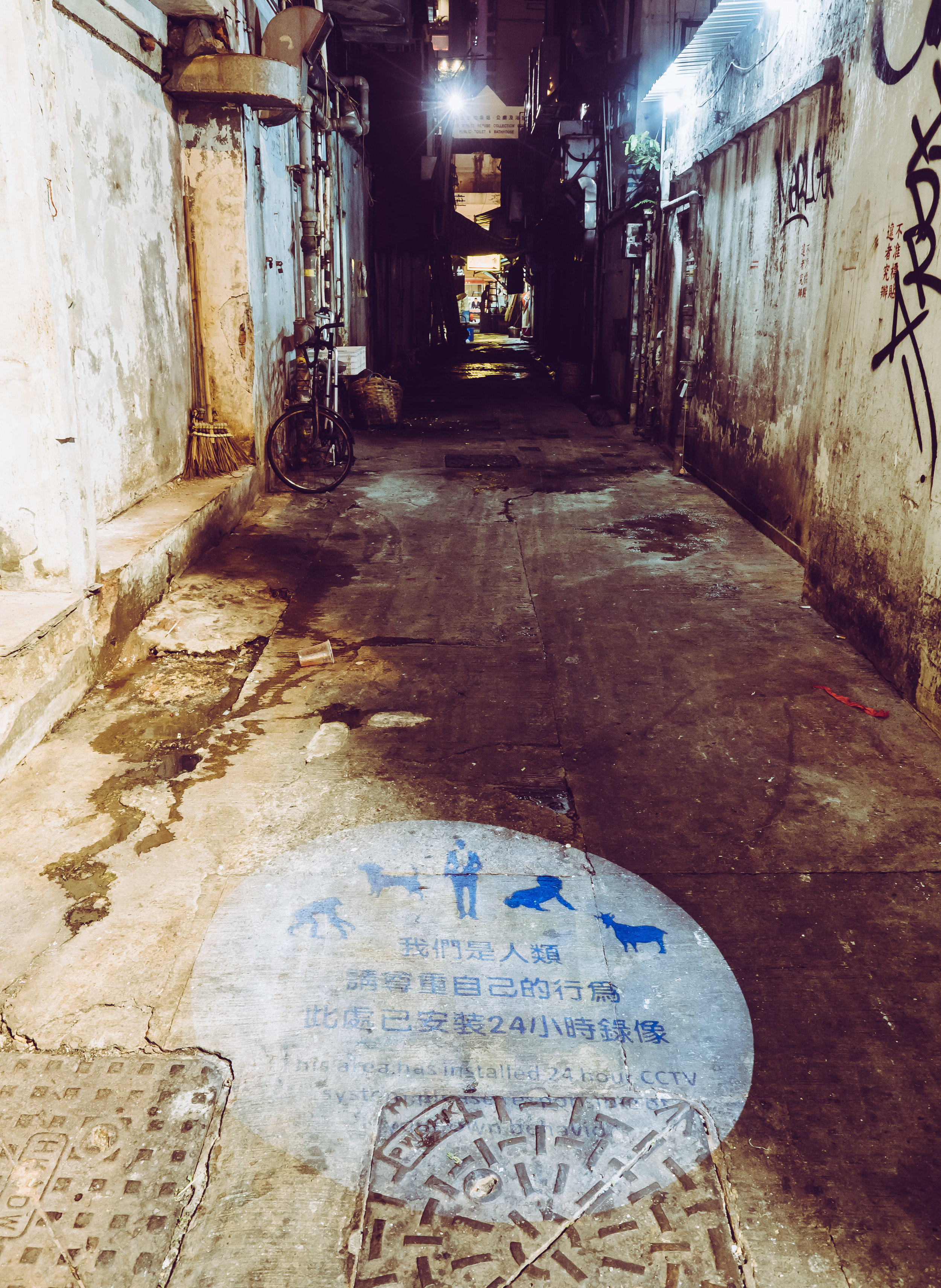
Back Alley CCTV
Many areas of Hong Kong are fully covered by CCTV, highlighted here by a projection at the entrance of this alley.

Park Gate
The entrance to a small park near the Temple Street night market.

Market Stalls
As seen from a nearby parking building (which is always a good place to get elevated views).
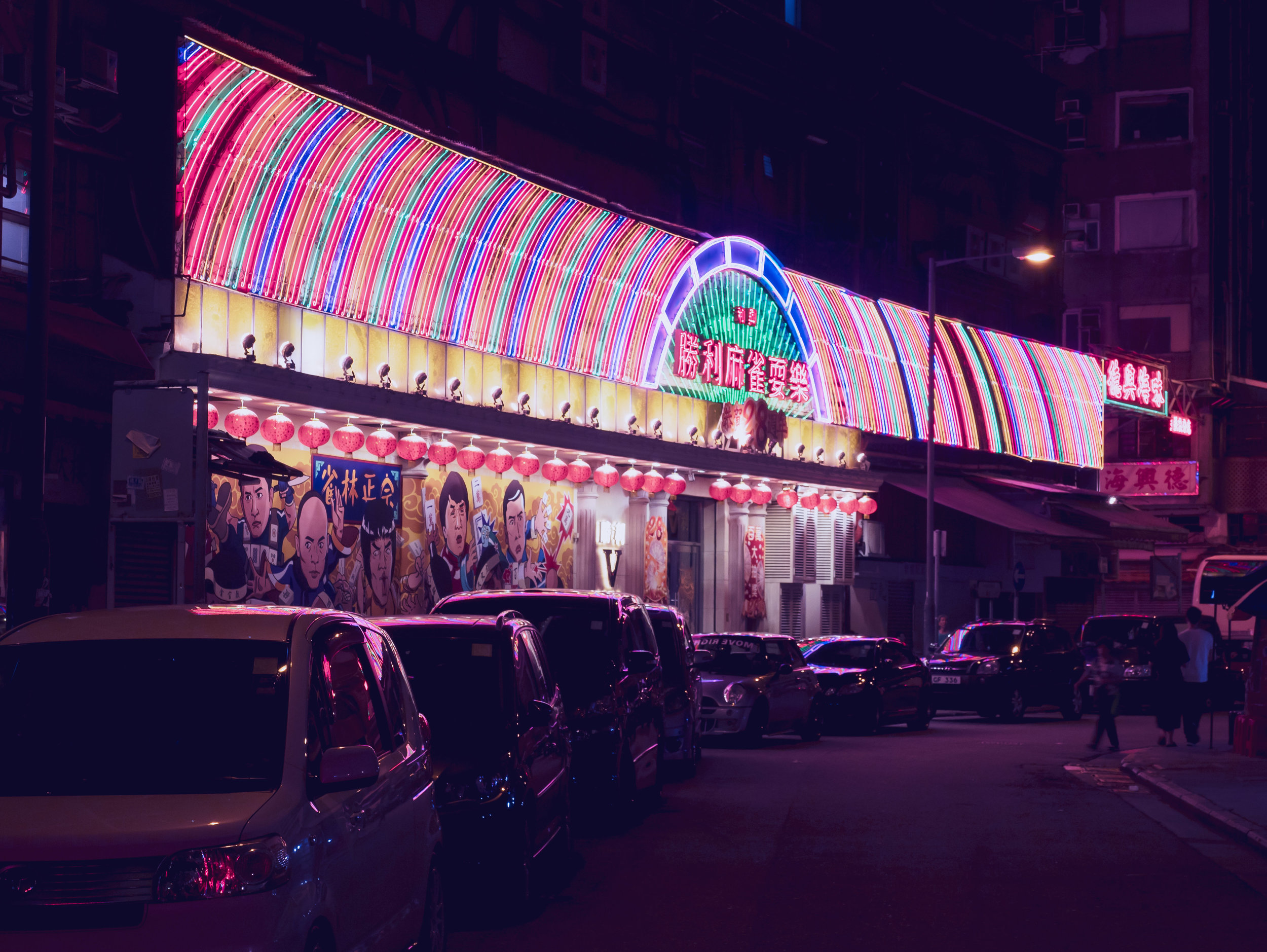
Neon World
A big neon sign just off the night market, tinting the area in pink and purple hues.
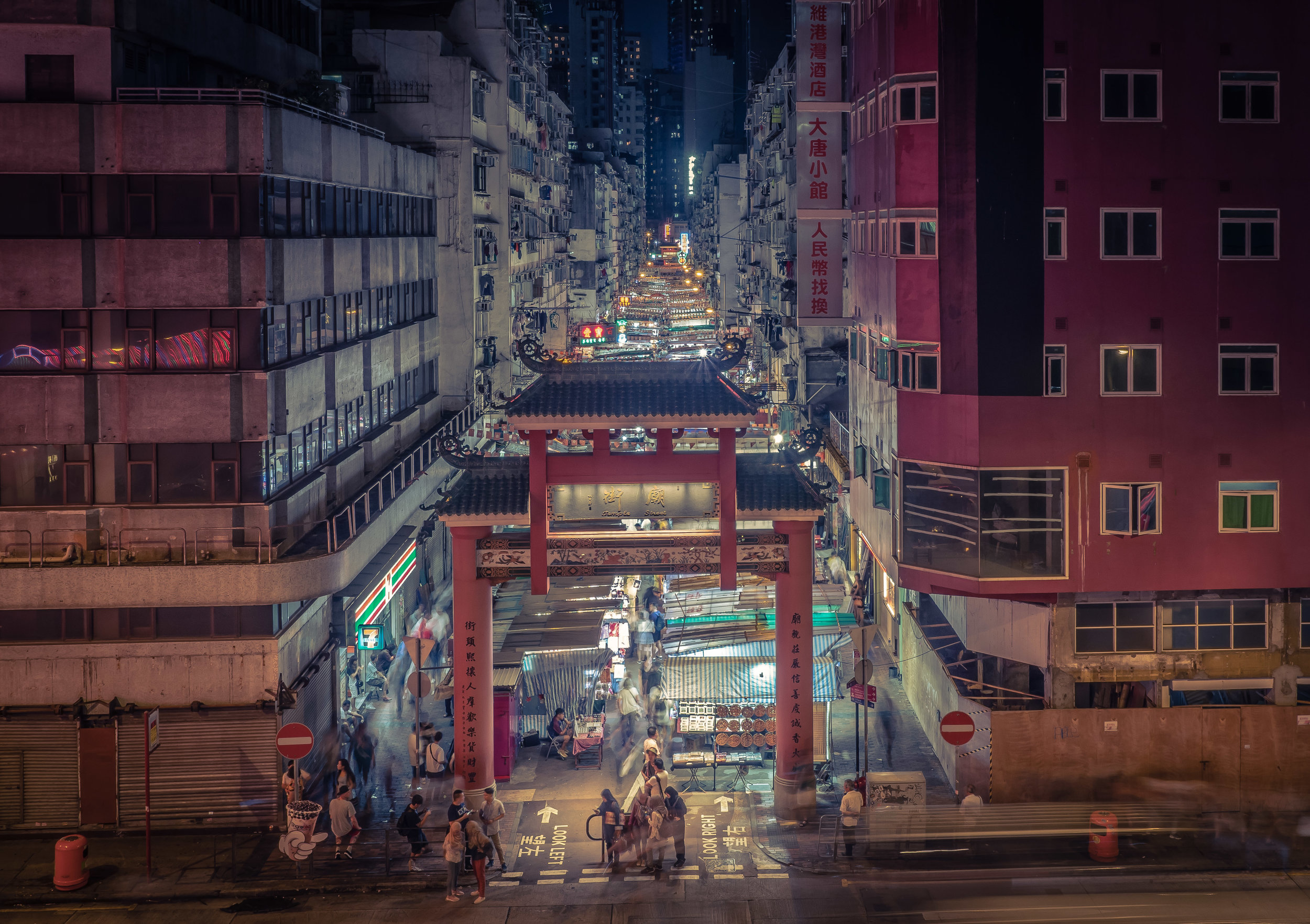
Temple Street Night Market
The entrance of the night market, stretching down several blocks.

Organized Chaos
One of the sidestreets in Mong Kok seen from the elevated walk way at Mong Kok road.
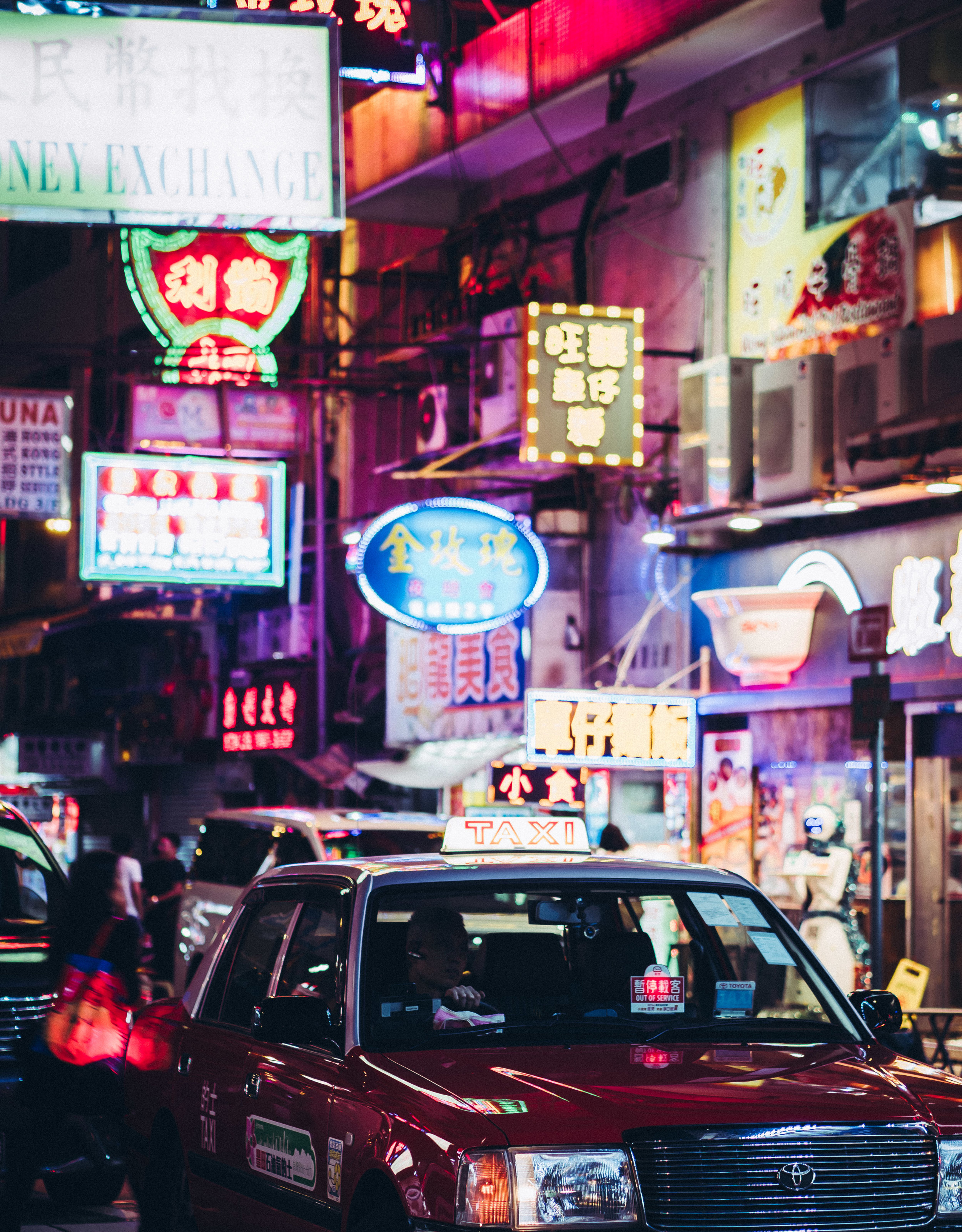
Colours
Nights are colorful in the city.
The Dubai Desert - A few impressions of Al Maha
In April 2018 I visited the Al Maha Desert Resort, a place I've had on my Dubai to do list for over 10 years. Having been owned and managed by Emirates, it is now operated by Marriott through its Luxury Collection brand. The hotel is set in the Dubai Desert Conservation Reserve, and is definitely one of the nicer ways to explore and experience the beauty of the desert.

In April 2018 I visited the Al Maha Desert Resort, a place I've had on my Dubai to do list for over 10 years. Having been owned and managed by Emirates, it is now operated by Marriott through its Luxury Collection brand. The hotel is set in the Dubai Desert Conservation Reserve, and is definitely one of the nicer ways to explore and experience the beauty of the desert. Below are a few impressions.
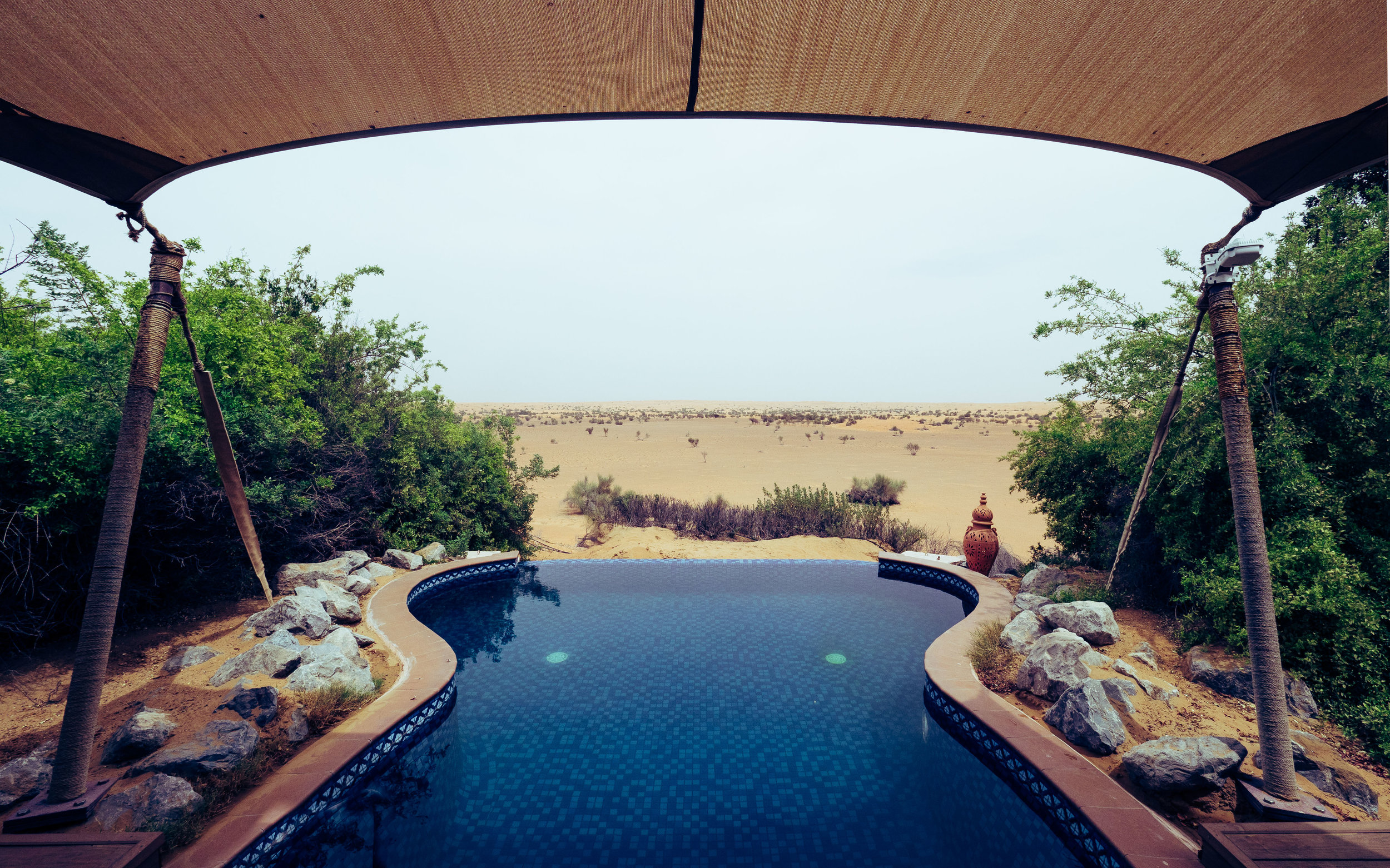
Serenity
Each of the resort's villas comes with its own infinity pool overlooking the desert.
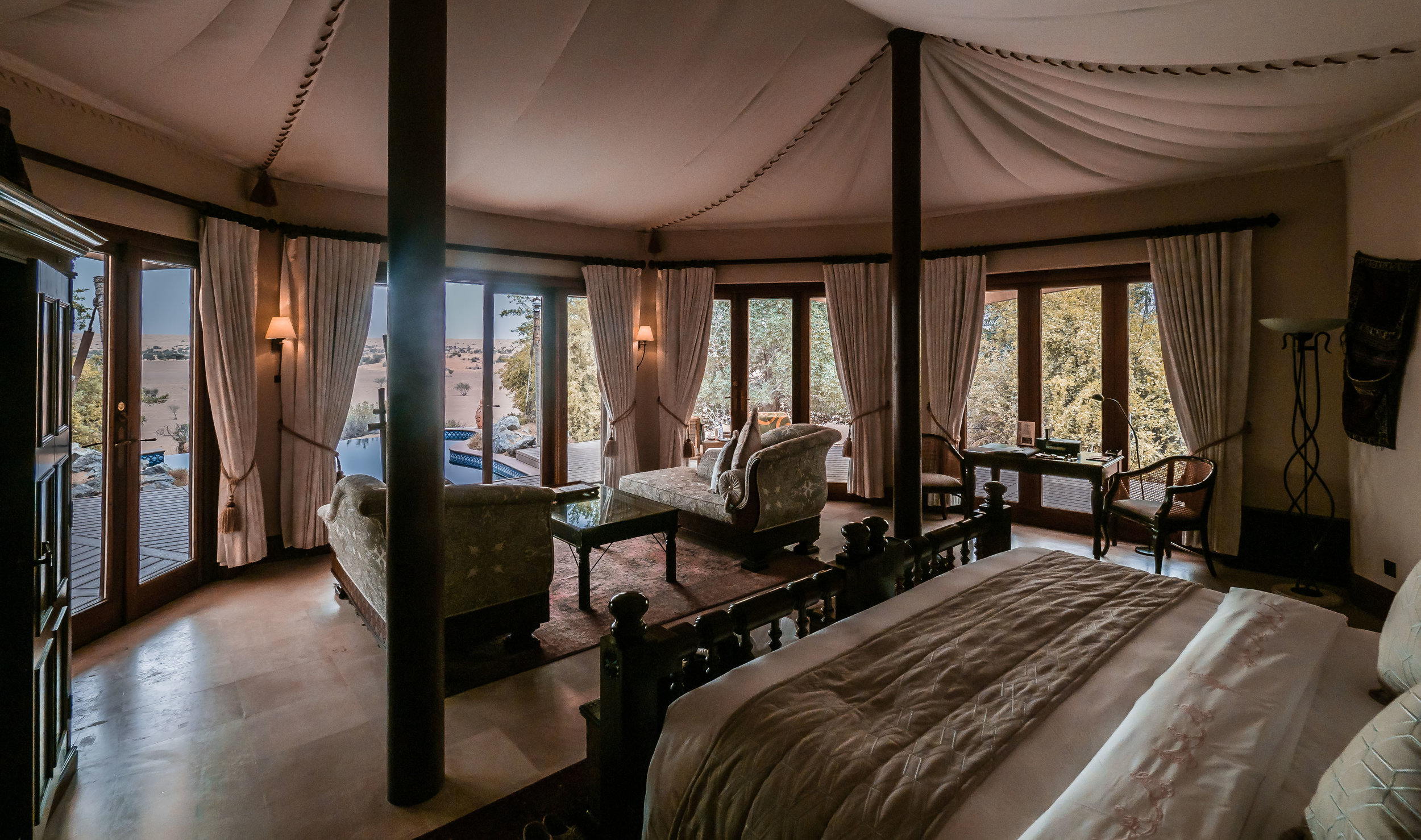
Al Maha Interiors
The villas are kept quite traditional and blend well into the surroundings.
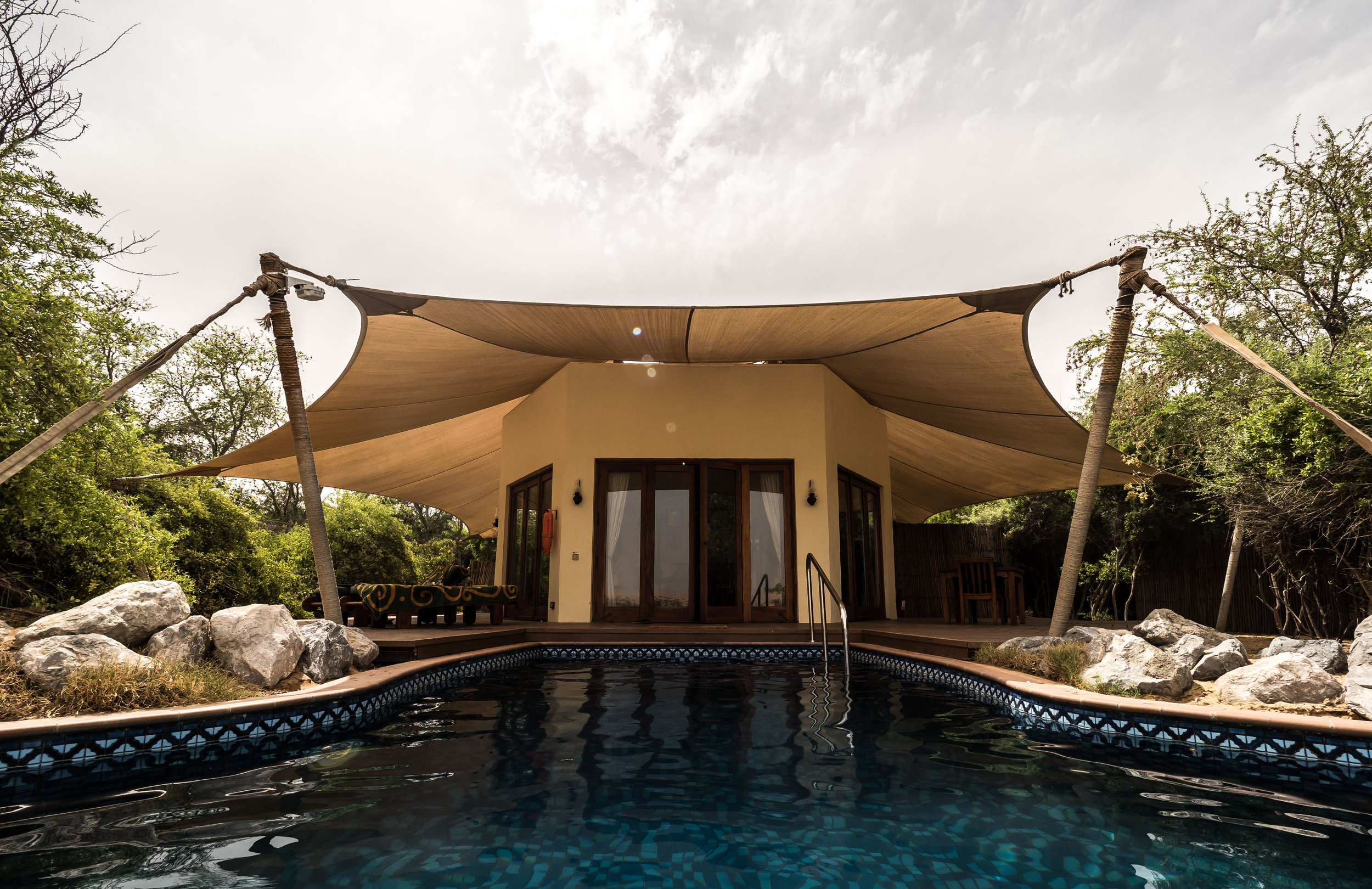
Tent Feeling
The exterior is meant to reflect Bedouin tents.
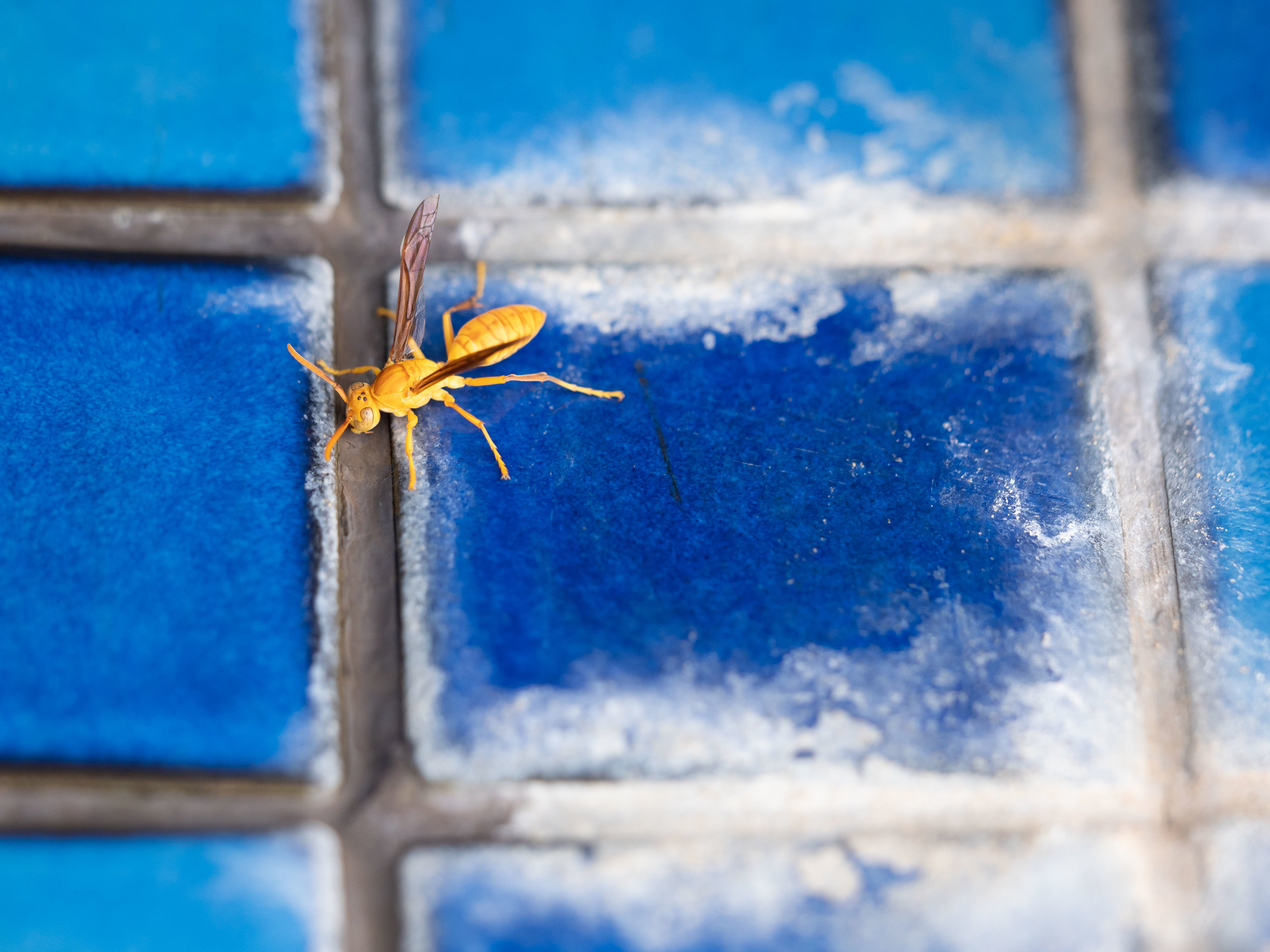
Yellow
Have not figured out the name of this guy.
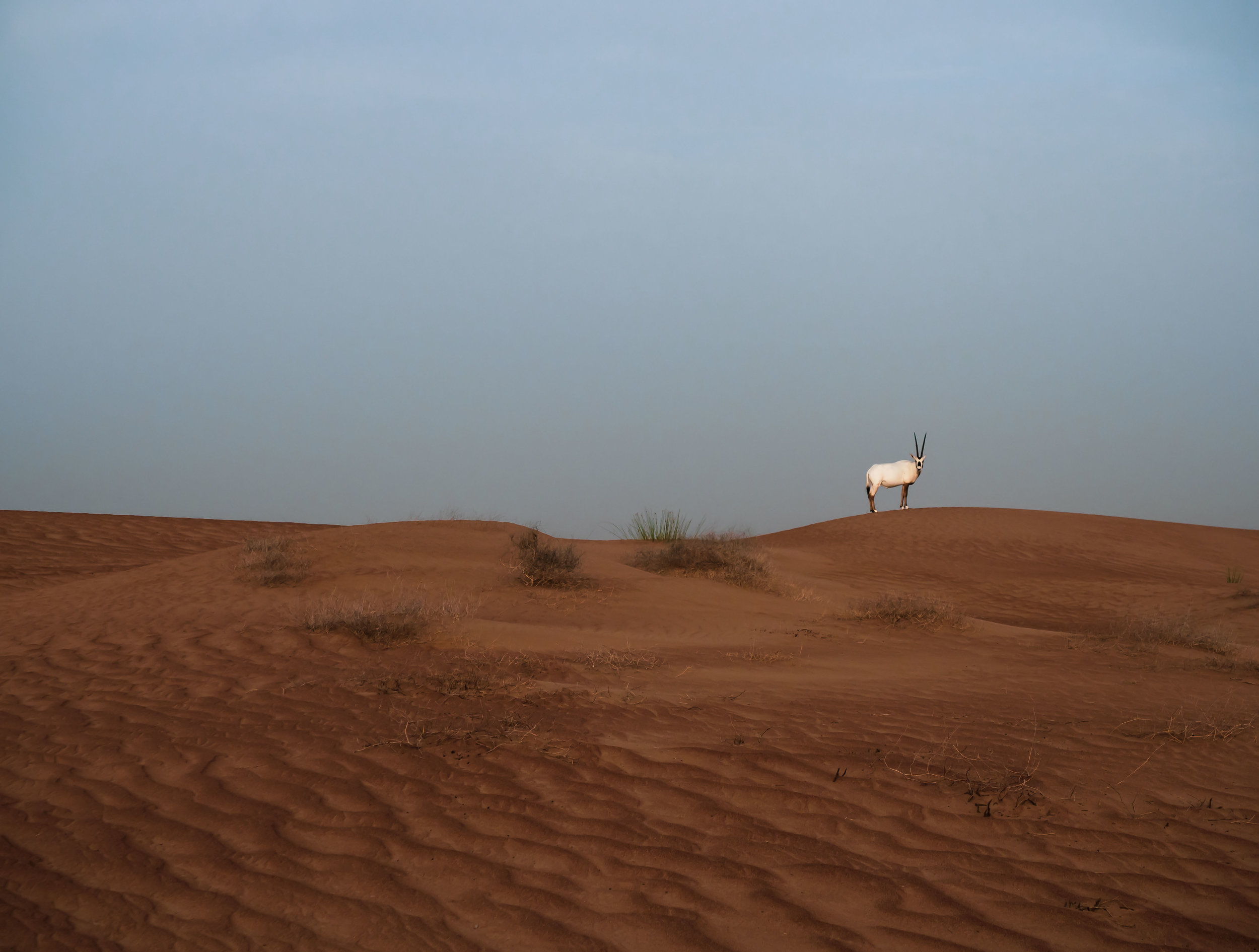
The Arabian Oryx
A majestic animal, in its typical pose on top of a dune.
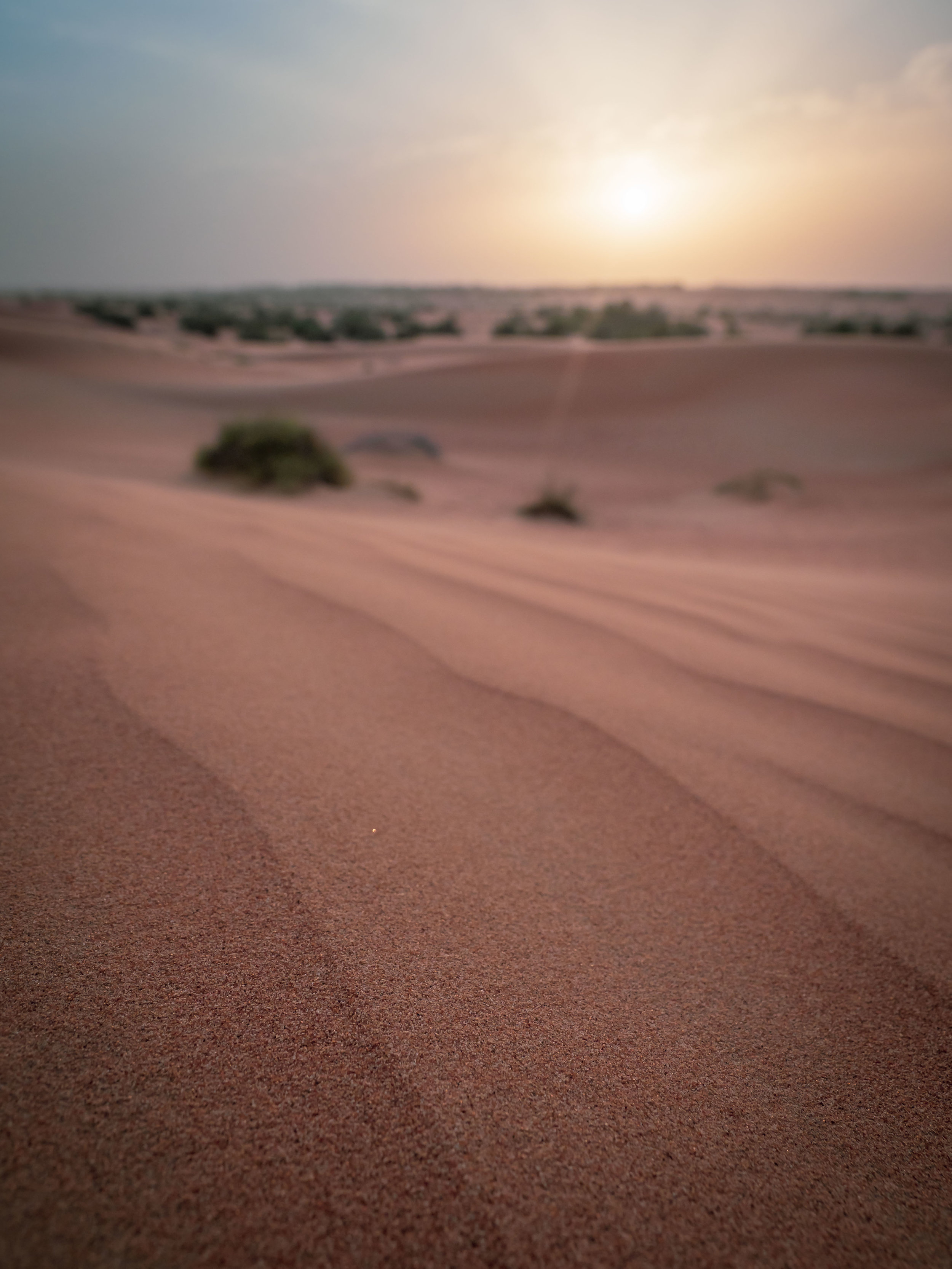
Sand Waves
The sand patterns in the dunes always make for amazing photos.
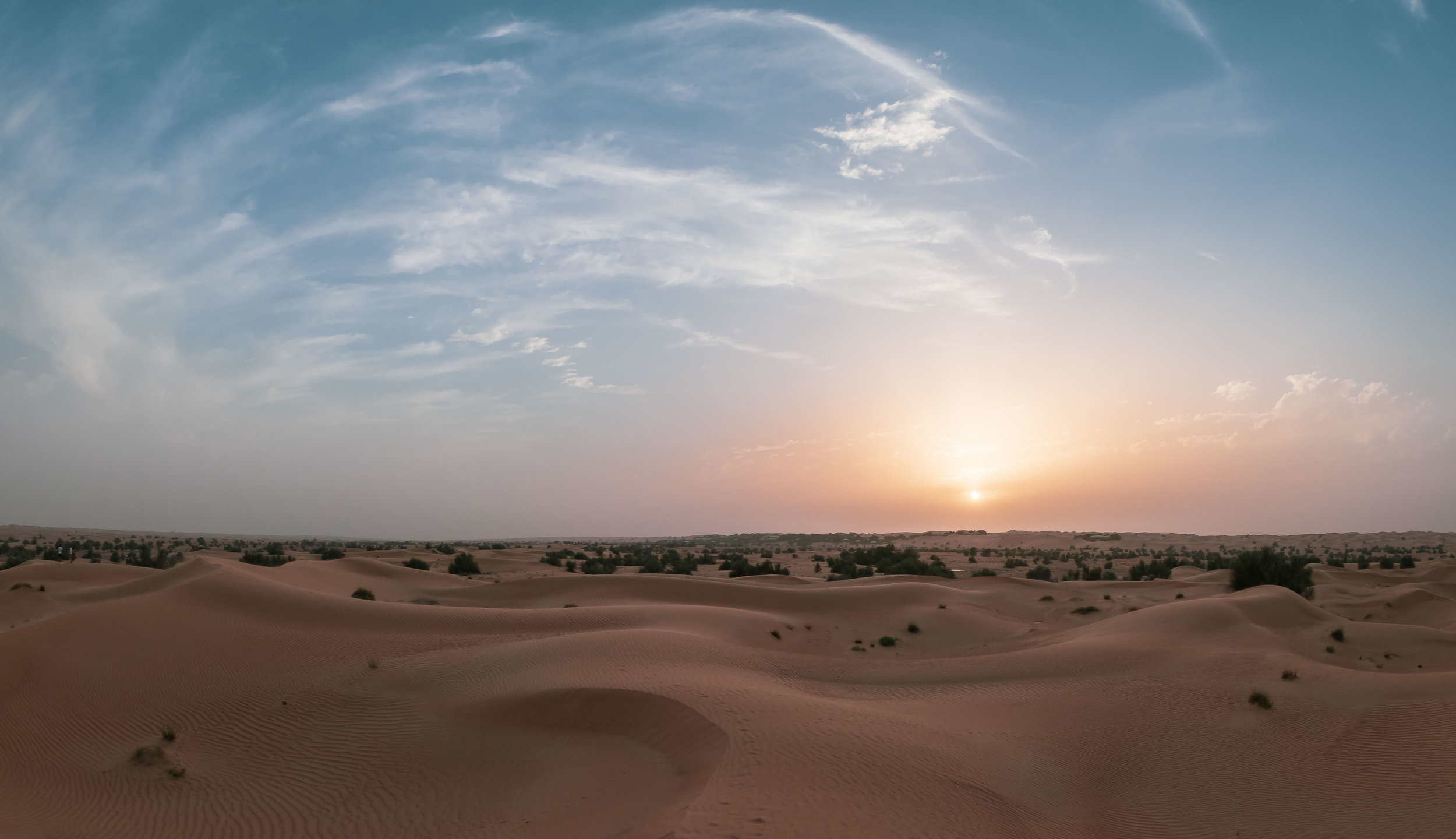
Horizon
While the Dubai Desert Conservation Reserve isn't in fact huge (at just over 200 square km), it's still big enough to not see many signs of civilisation around.
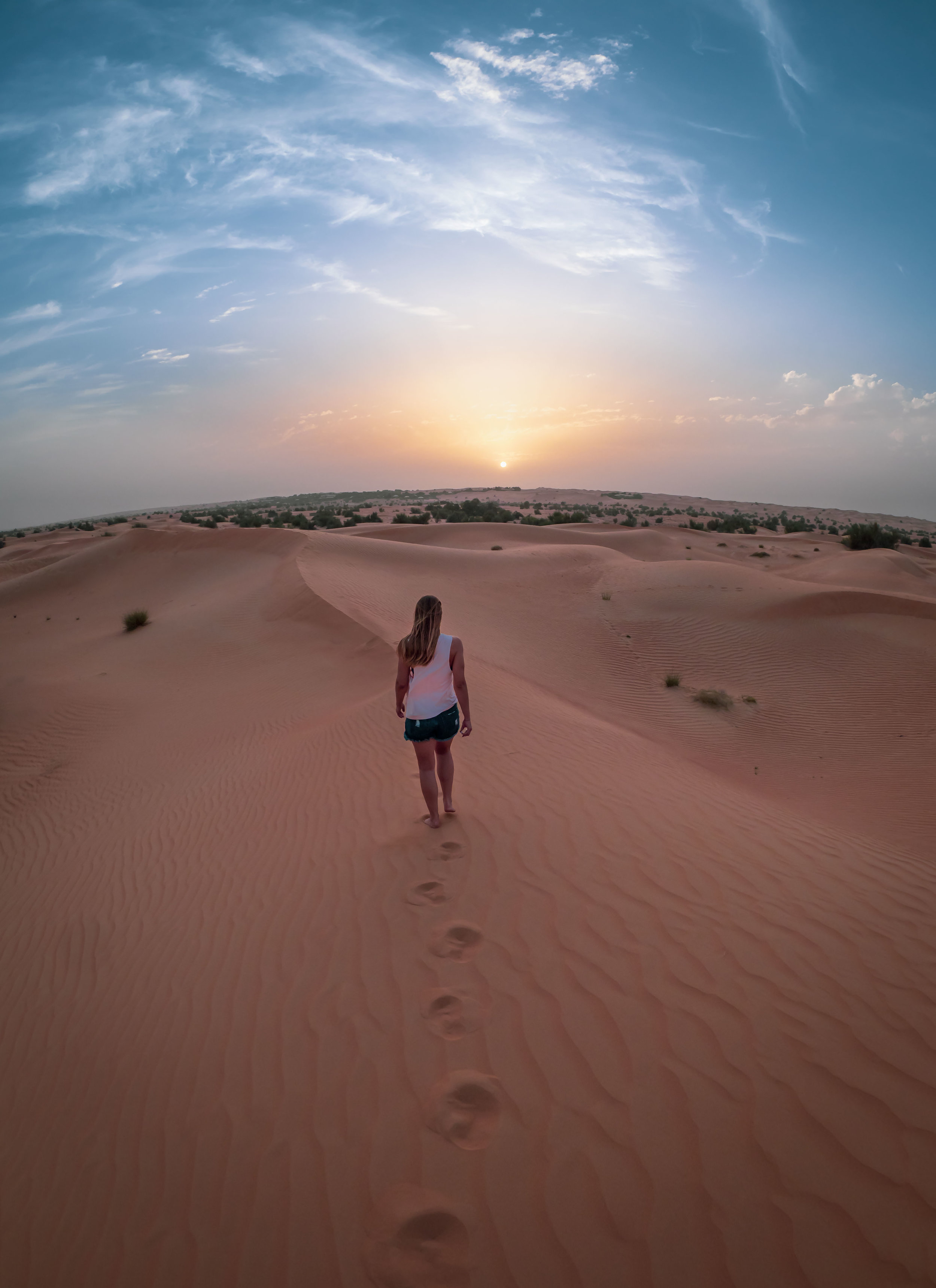
Footsteps
Should make for a few Instagram likes...

Dinner Time
The resort's main restaurant, overlooking the desert.
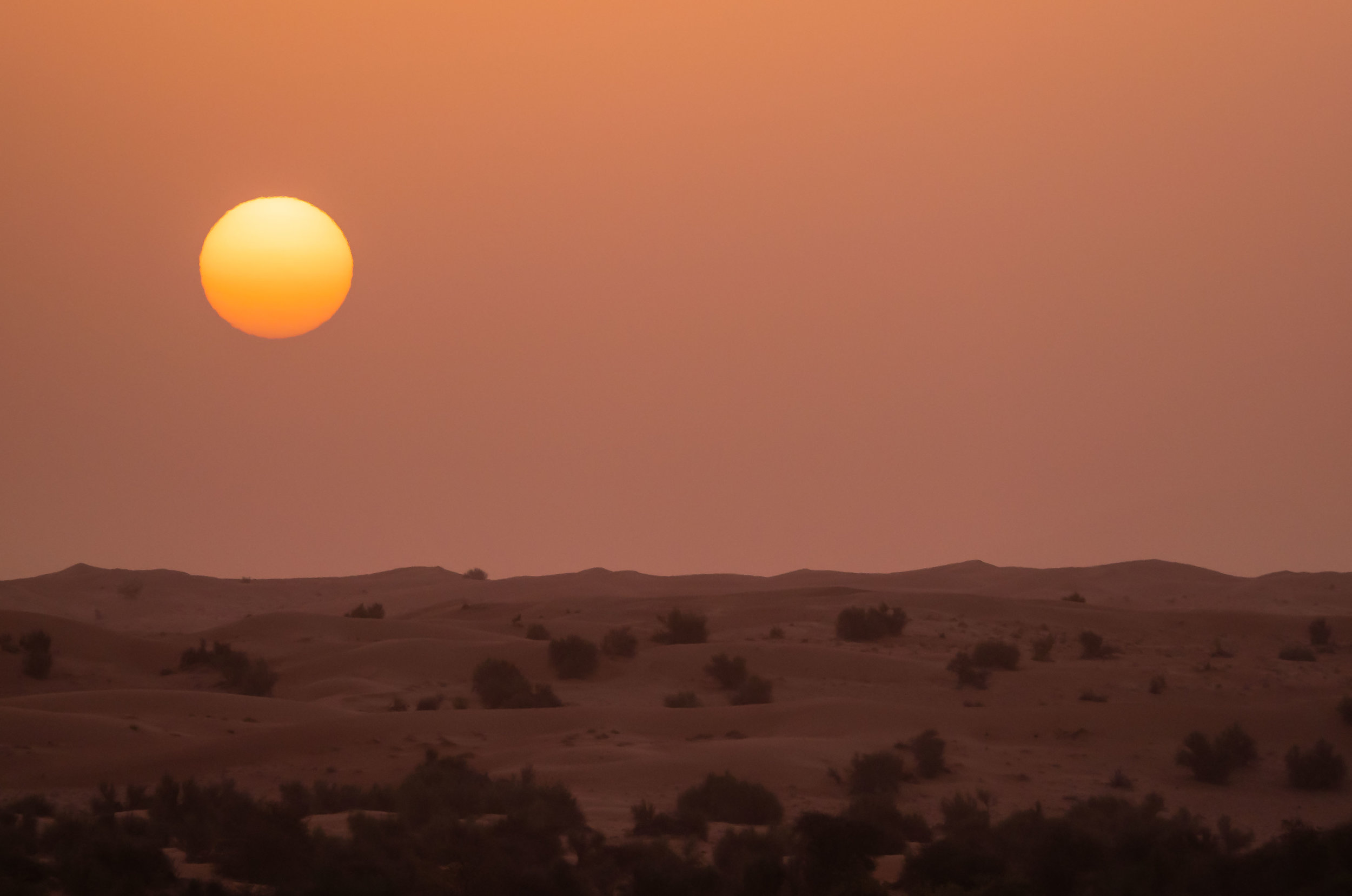
Sunrise
Had the pleasure to do a 6am morning walk, where it is still cool, and the light is beautiful. Each villa has a field guide that explains the local flora and fauna.
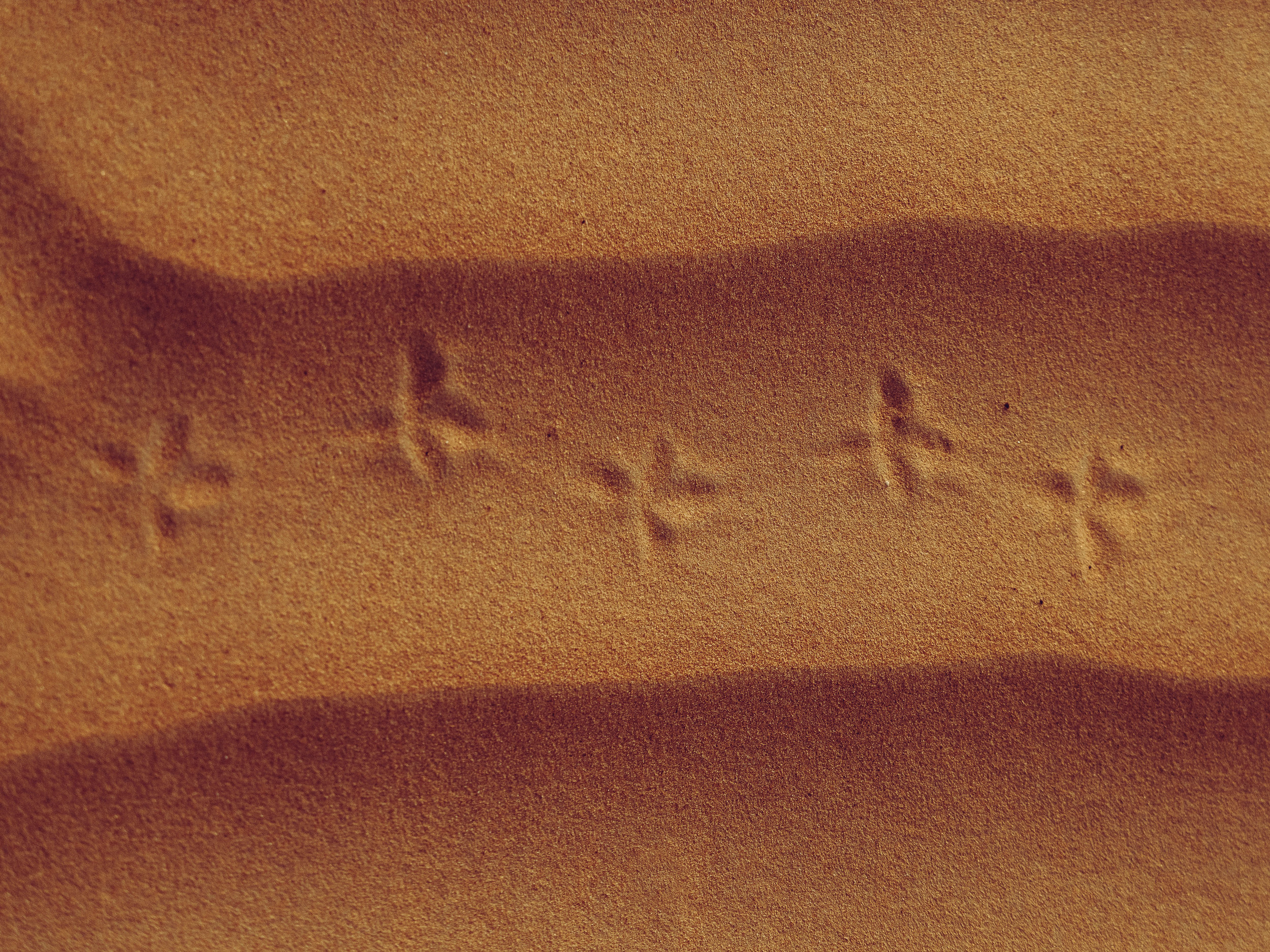
Signs of Life
These walks tell the tales of what happens in the desert at night - it isn't as empty as it would seem on first glance.
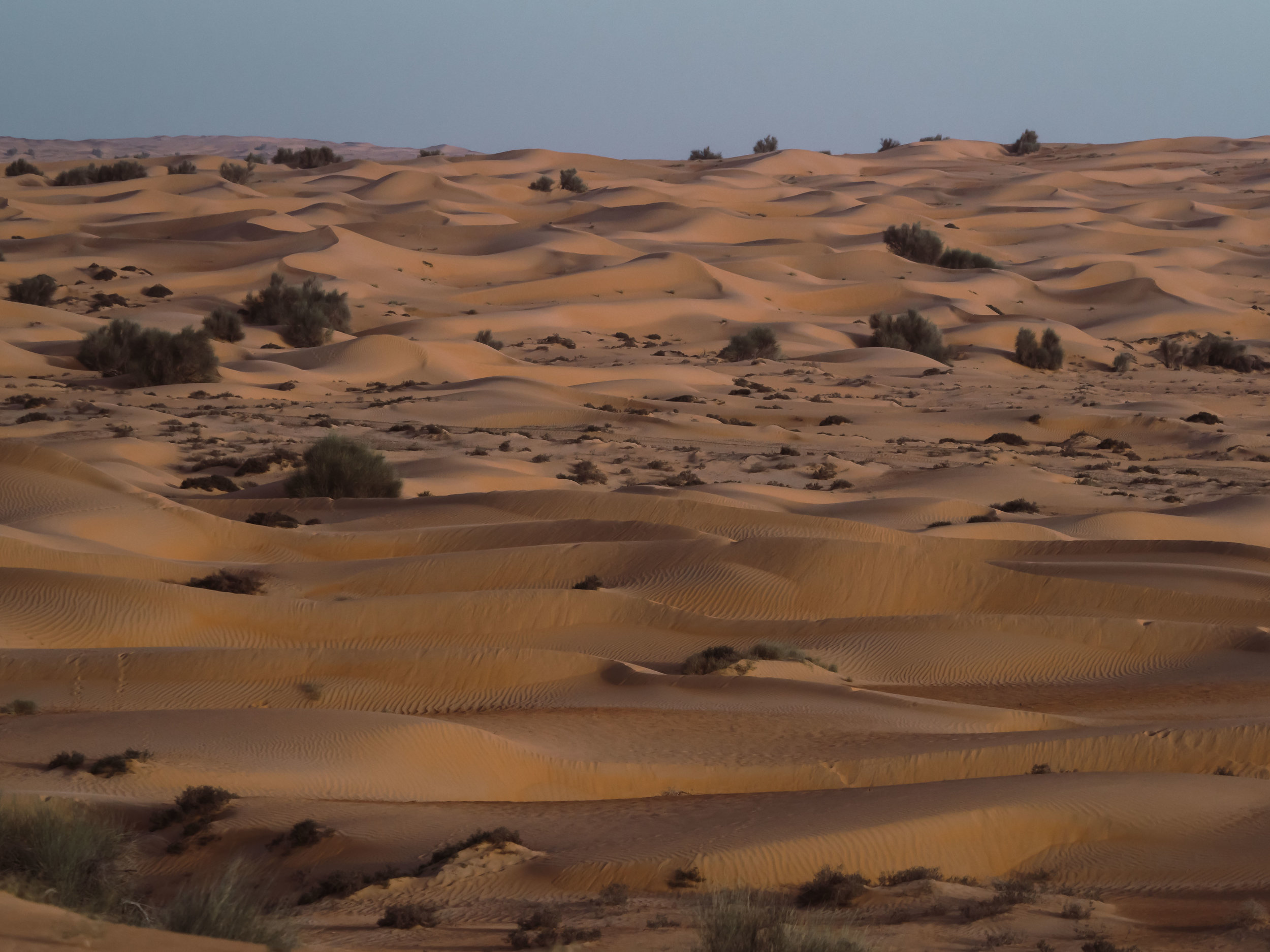
Patterns
Most of the area is covered in dunes, but there are a few planes as well.

Differences
Shifting sand dunes in the foreground and the plains in the background, which still show signs of having been under water many thousands of years ago.
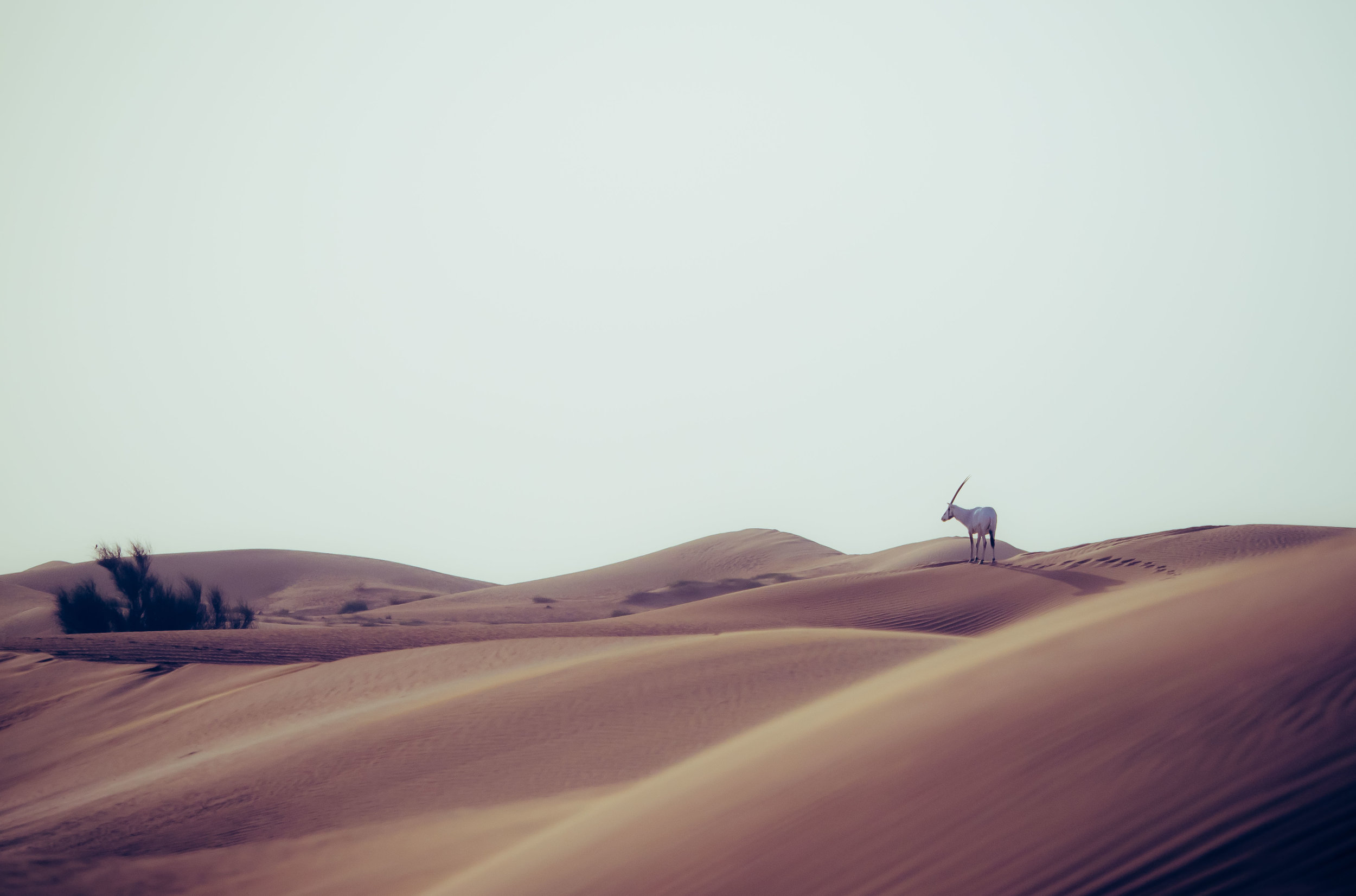
Oryx Tracks
There are about 400 Oryx in the DDCR - the breeding program started in the 90s, when this species was almost extinct. Now the species is claissifed as vulnerable, with about 8000 remaining.
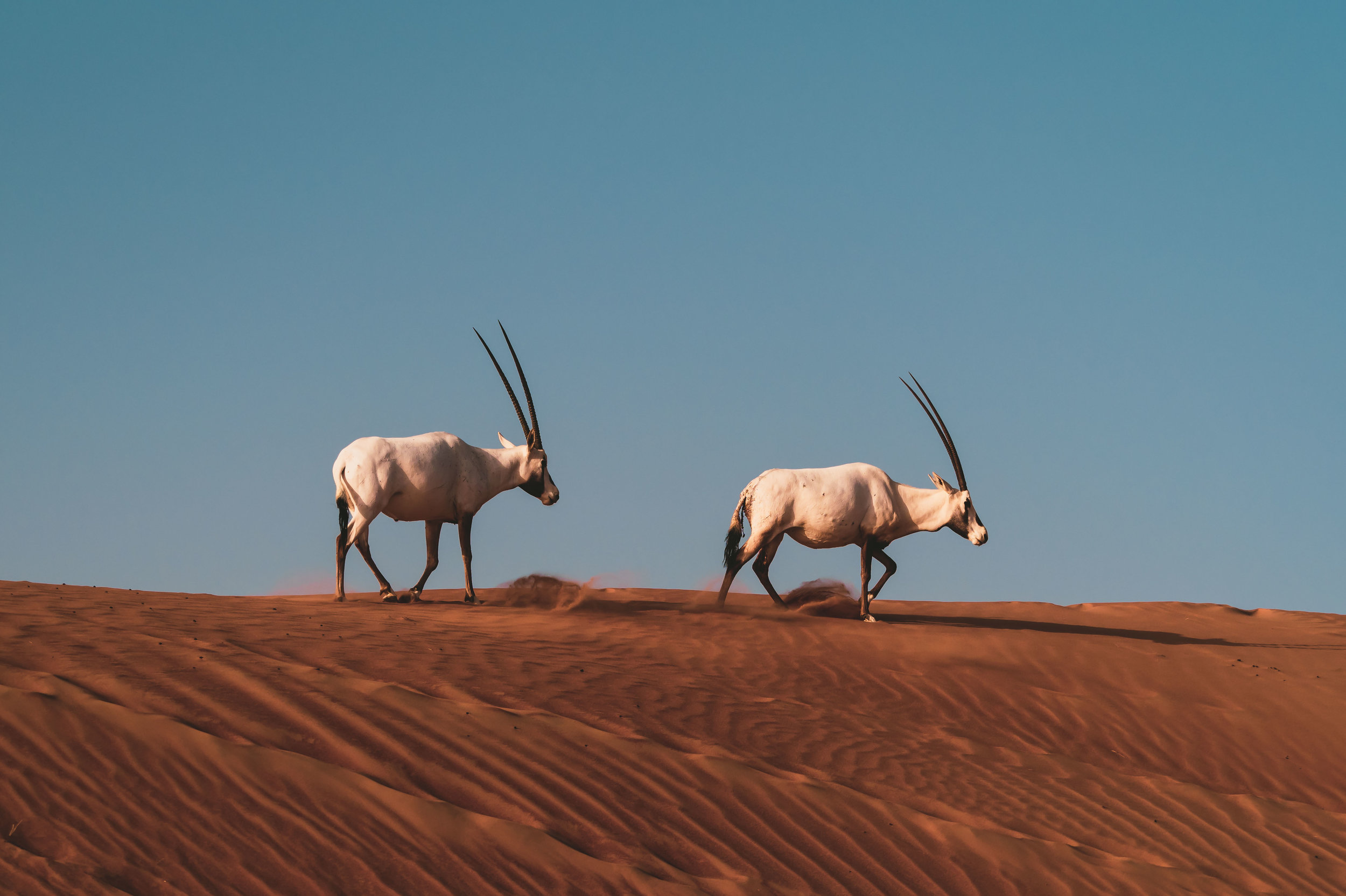
Oryx in the Sunrise
The amazing morning light makes them stand out even more in the dunes.
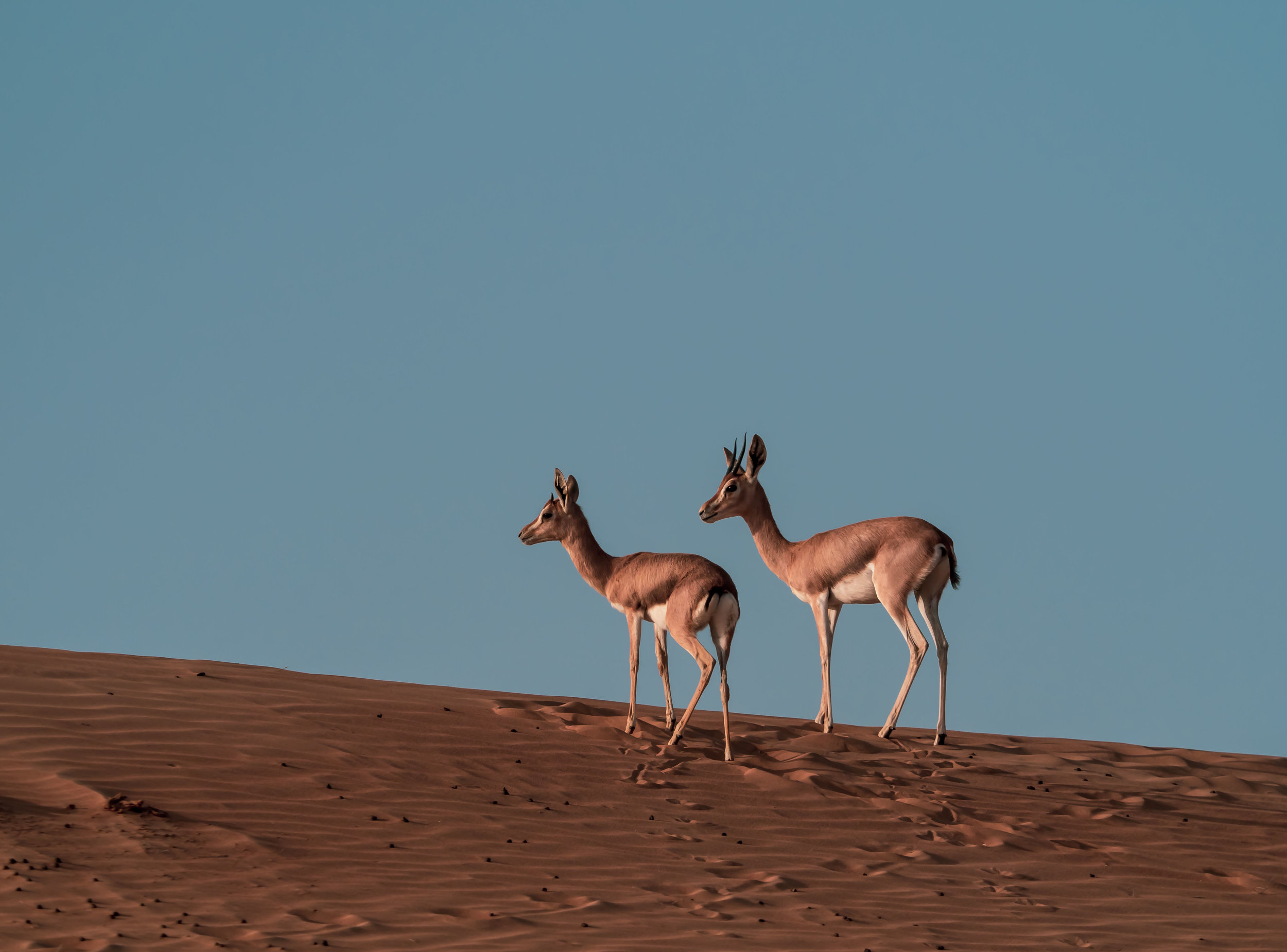
Gazelles
Not as impressive the the oryx, yet still elegant to watch.
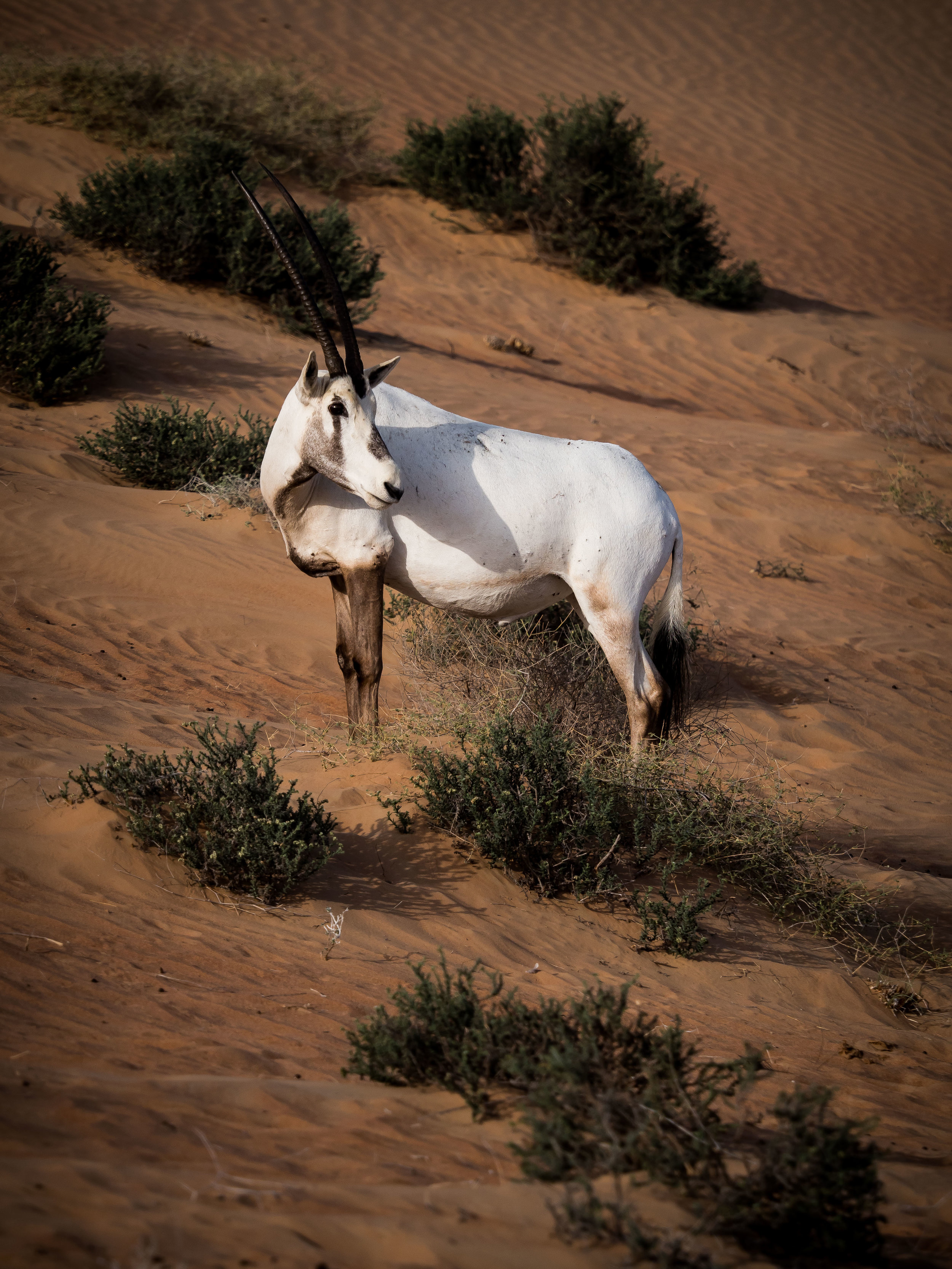
Pride
The Arabian Oryx is the national animal of the UAE. You will also find the country's national tree here, the Ghaf tree.

Desert Flowers
Not as barren as it would seem.
The Abandoned Plane - A UAE mystery
Never stop exploring, and you may just find an abandoned plane at the old Umm Al Quwain airfield. Stopped here on the way back from Jebel Jais in October 2017.

Never stop exploring, and you may just find an abandoned plane at the old Umm Al Quwain airfield. Stopped here on the way back from Jebel Jais in October 2017.

Front View
The Soviet Ilyushin IL 76, originally registered in the late 1970s.
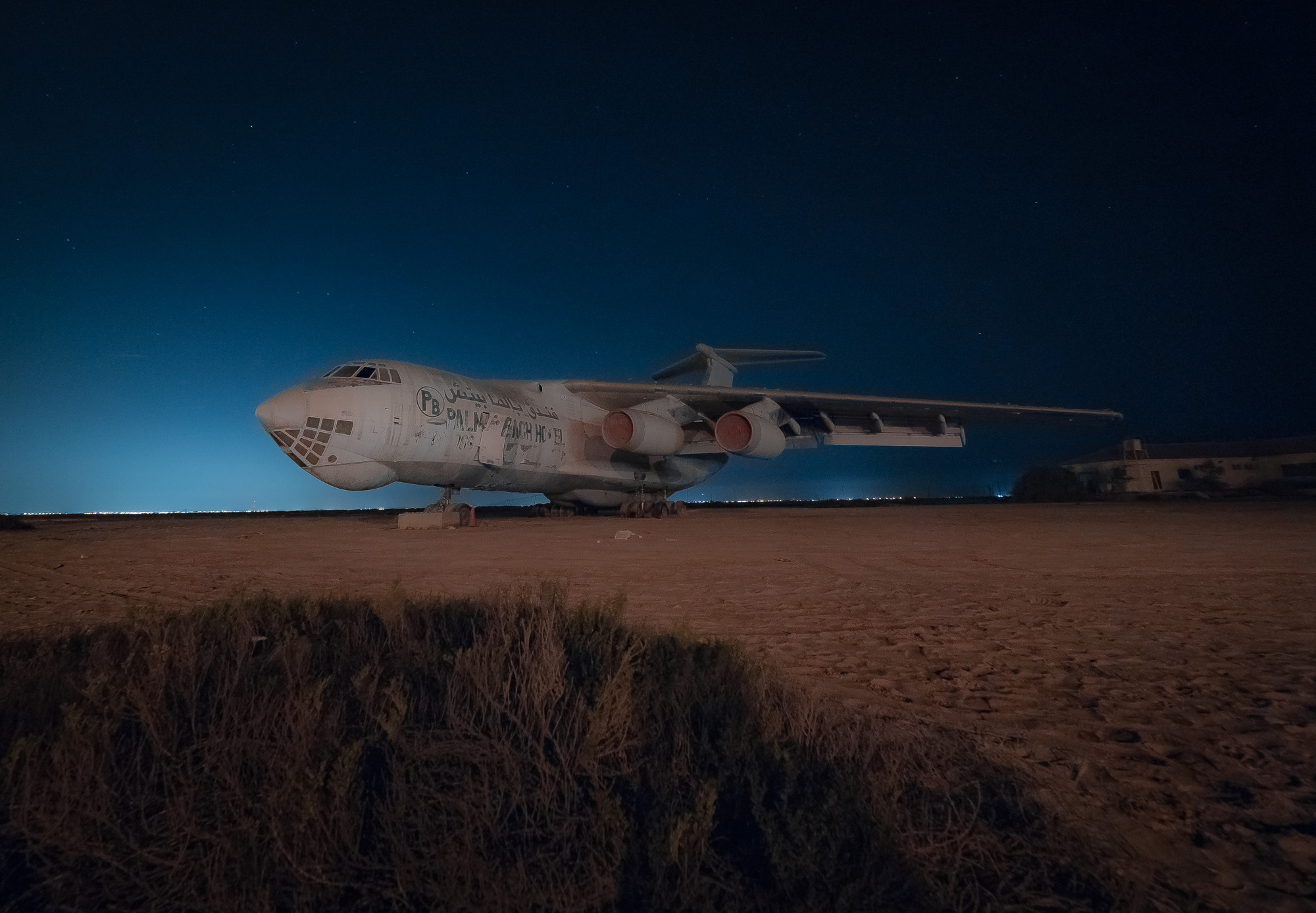
The Abandoned Plane
One of the stranger sights in the UAE - the abandoned plane near the old Umm Al Quqain airfield.
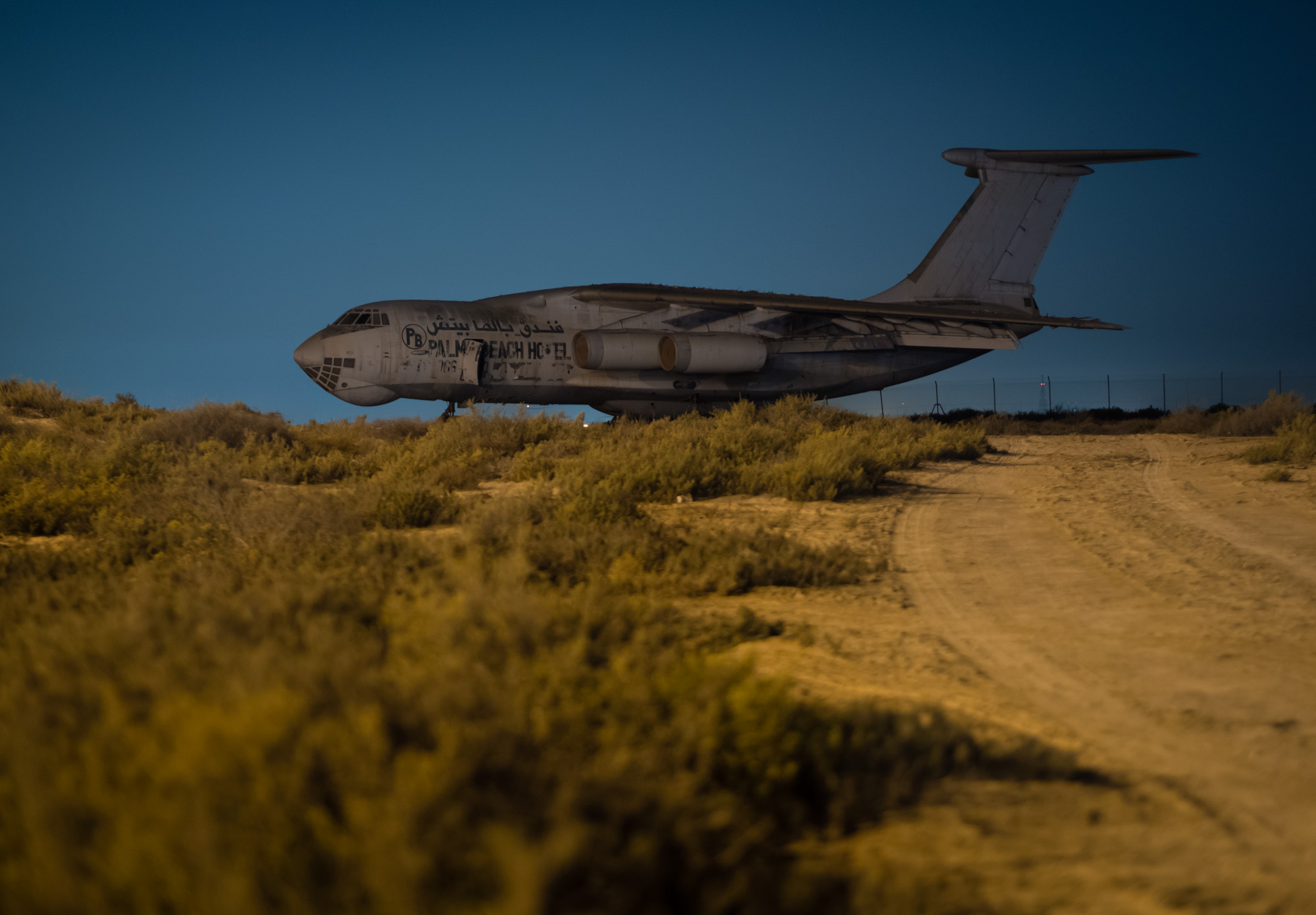
The Story
... isn't so clear. It's an Ilyushin IL 76 and landed in 1999.
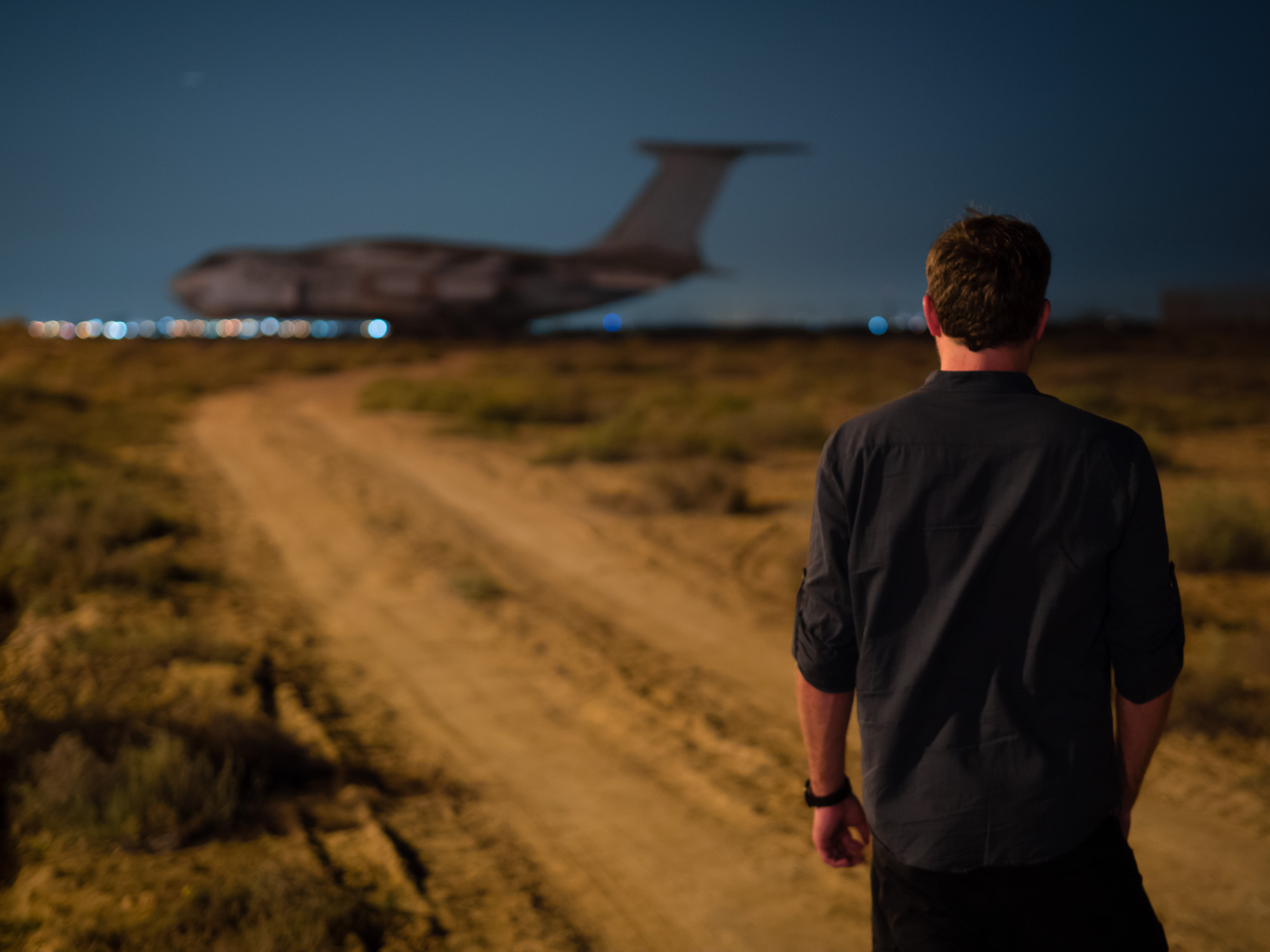
Exploring
It's a great place to explore and get some photos though.


